
And just a map so we can see where we are going...
Nearly ready to leave on this trip!
Bags packed, itineraries triple checked. \240To help you follow us - here is a map of the 5 countries to which we are travelling: \240Thailand, Myanmar (Burma), Laos, Cambodia and Vietnam.
5 days to go and then off to:
http://journohq.com/journo/julie-and-kate-go-on-an-excellent-adventure-67503 Bangkok.

And just a map so we can see where we are going...
And we are off!
3 months of travel in south-east Asia, but first, we have to get there!
Flight 1: Winnipeg-Vancouver, 3 hours, Air Canada, leave 7:00 am on the 29th, 8:00 am -10 degrees.
Flight 2: Vancouver-Hong Kong, 14 hours, Cathay Pacific, arrive on the 30th at 5:30 pm, +27 degrees.
Flight 3: Hong Kong-Bangkok, 3 1/2 hours, Cathay Pacific, arrive on the 30th at 11:30 pm, +30 degrees.
Cathay Pacific airlines provides air travel with style: All the flight attendants are stunningly beautiful, smiling and very polite. \240We were given a printed menu and immediately sampled the airline’s own Hong Kong brewed pale ale named Betsy!
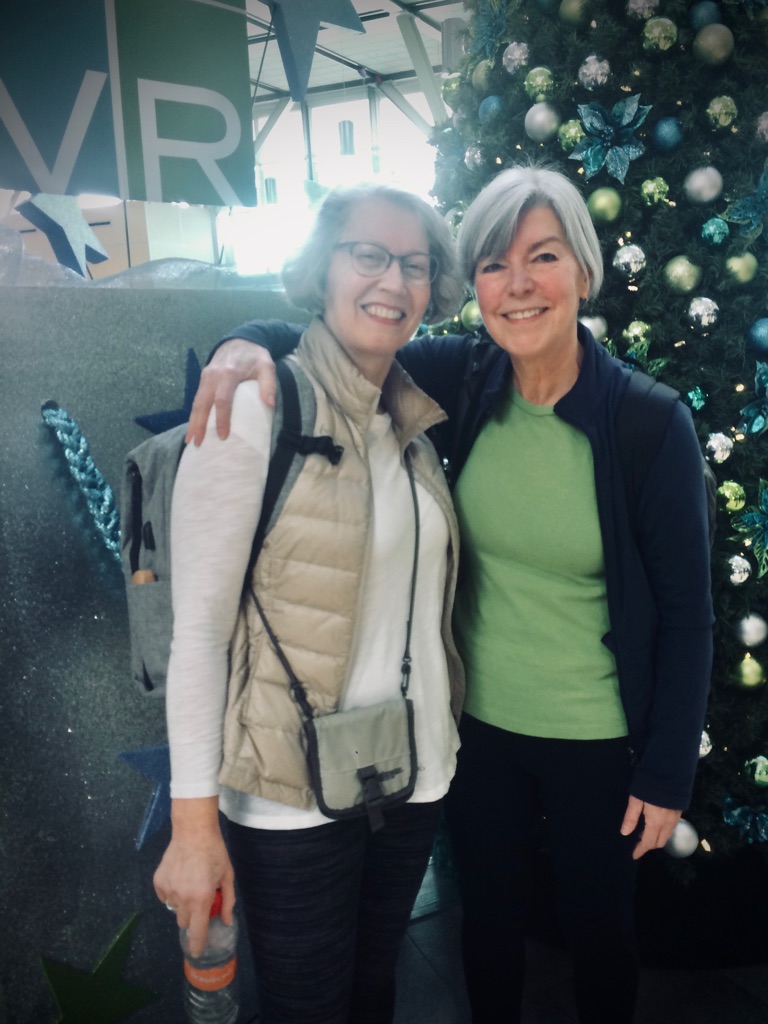
Ready to board at Vancouver airport
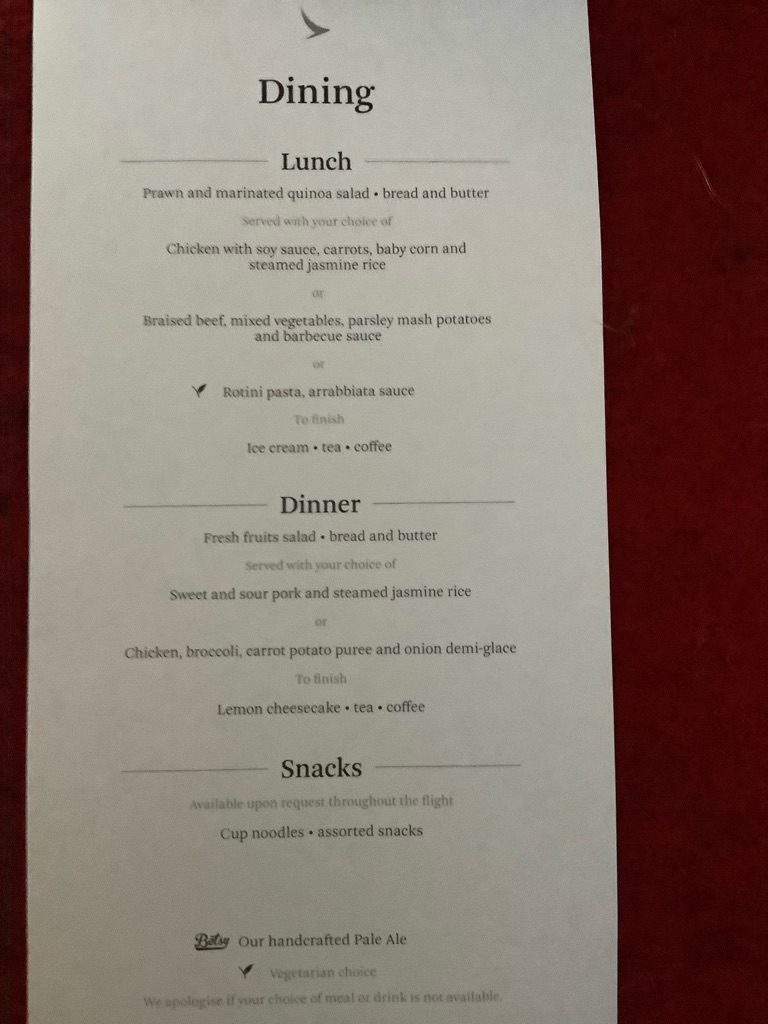
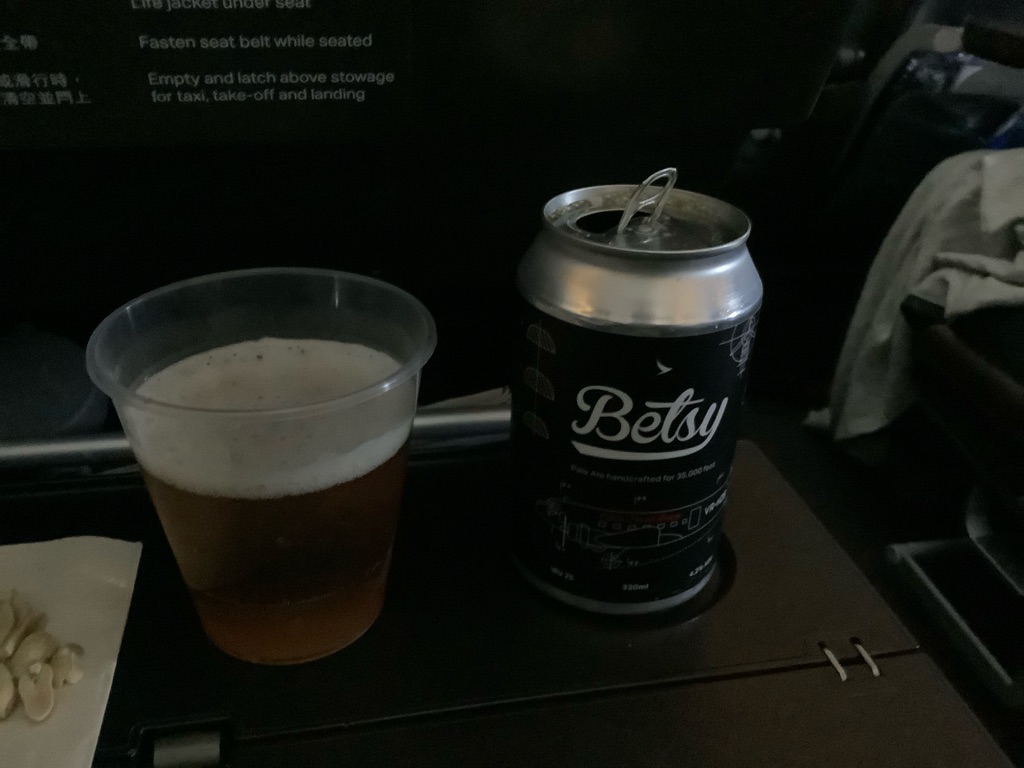
Smooth travel through security in Hong Kong and a stop in the airport lounge. We saw no riots or protests in the airport (relief for Kate: disappointment for Julie)!
And on to Bangkok! \240I slept most of the flight - landed 11:30 pm, November 30th to +30 degrees. \240Our promised hotel driver was a ‘no show’, so a ‘short distance’ taxi provides transport to the Paragon Inn, I want my bed!!!!
The day that didn’t happen...
Due to the weirdness of time travel, we arrived at midnight on the 30th of November in Bangkok (via Hong Kong) after leaving Vancouver at noon on the 29th of November.
Jet lag awaits...and then exploring begins!
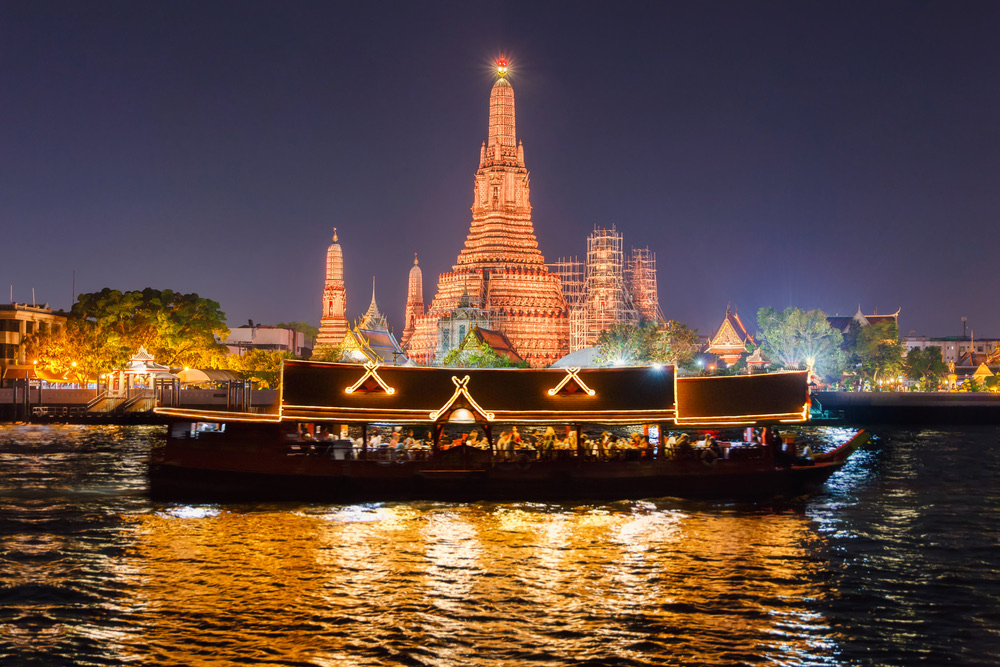
Bangkok at night from the Chao Phraya River. \240We are in the most ‘travelled to’ city in the world!
1st day in Thailand
Awake at 8:30 am and it is 30 degrees.
Just a recover from jet lag, acclimatize to temperature, and get our bearings day!
I found the swimming pool and this is me for the day.....
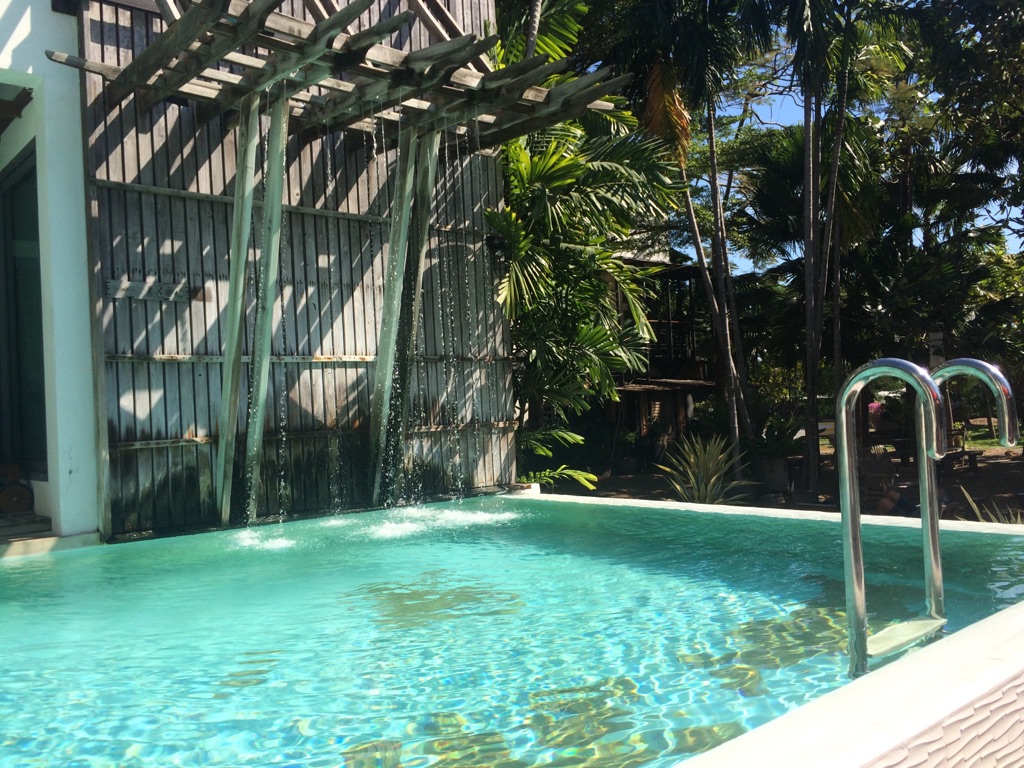
Oh, and there is a shade garden and an outdoor bar.
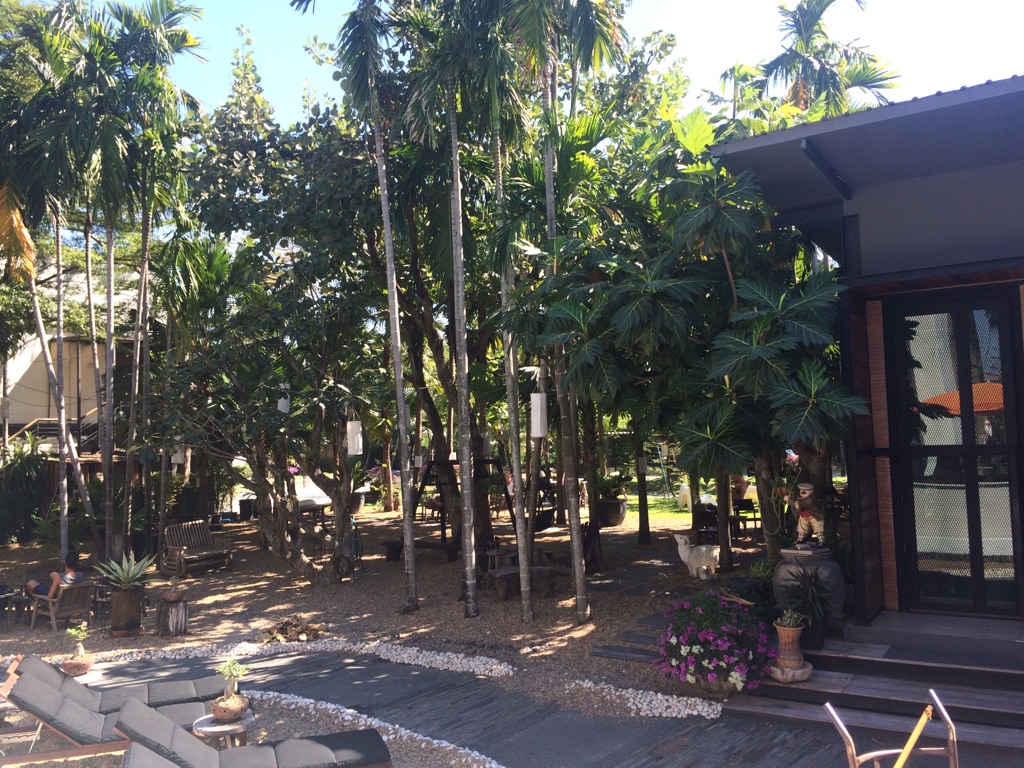
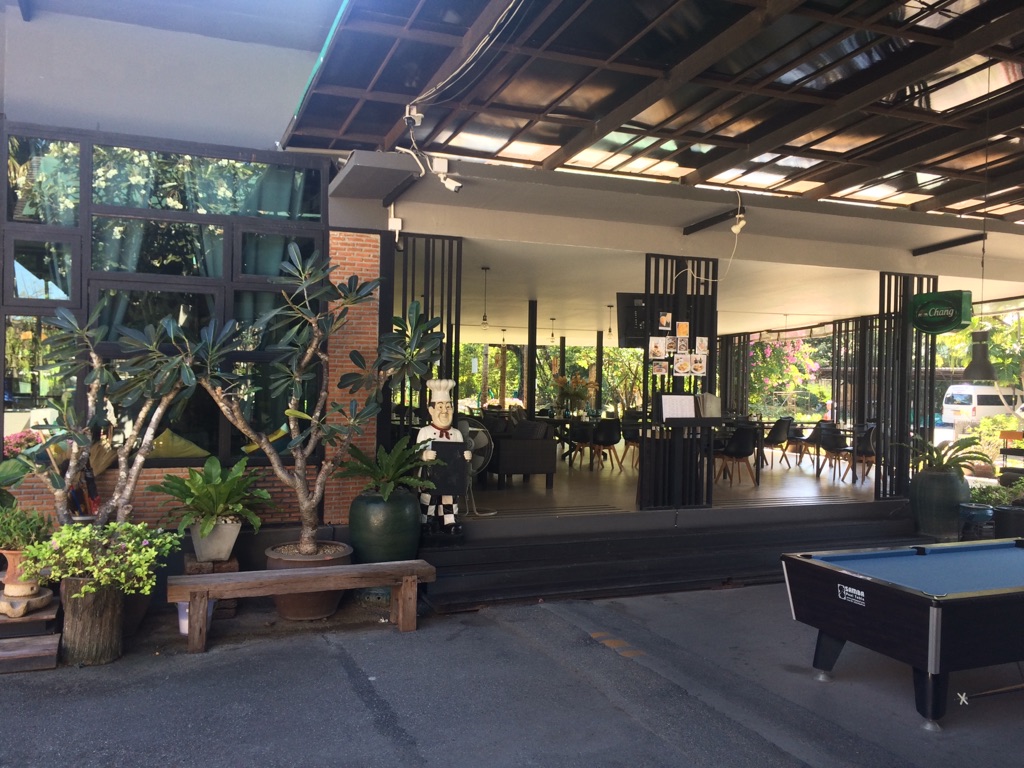
Kate here adding to the Day 1’s notes. Delighted that Julie has set this all up and checking out the hotel’s, attention to detail, scene while I sleep off another long-flight edge.
Pool side now, warm breeze and a dip in order. \240Oh yes, and time for a beer. \240So good to travel with my beer drinking friend.
Getting the hang of things in Bangkok
29 degrees - 2nd day in Thailand and today we switch from the airport hotel, ‘Paragon Inn’ to downtown Bangkok, ‘Hints of Blue’ hotel. Bangkok, by the way, is a city of 7 million people!
This was our first real challenge of getting around in Thailand. Plus, we needed to find an ATM machine to get cash in Thai Baht currency and purchase a SIM phone card.
Getting into Bangkok was a 2-hour trip starting with a shuttle bus back to Suvarnabhuni airport. \240This time the airport had some familiarity and we quickly found an ATM, an AIS phone card booth and the train station for the airport link blue line. \240We managed the link train, a transfer to the underground train and then a 10-minute walk to the hotel pick-up spot for the tuk tuk shuttle.
A few interesting conversations along our travels: one with a Danish conspiracy theorist (I barely resisted the urge to shove him off the platform); a lovely man from Taiwan who helped us work out how to buy travel tickets and a Dutch couple travelling with a small baby.
We arrived at the hotel and it is lovely! We are here for 4 more days so can settle in. The hotel is more to the fashion of a New York loft - chic, lots of glass and very modern. It also has some idiosyncrasies. Our tiny balcony’s only access is through the back of the bathroom shower - seriously! Might prove interesting.
Also, Our room is directly under the rooftop swimming pool! \240Hope it doesn’t leak and maybe explains the concrete ceiling!
However, so far, my most favourite feature is a beautiful garden in which we will be served breakfast tomorrow.
Both of us are still suffering from jet lag and it is messing with our sleep and food habits. An afternoon nap was much needed and we now feel ready to adventure out and explore for the evening.
A tuk tuk will take us to the main road (about 700 metres) where we will start to explore.
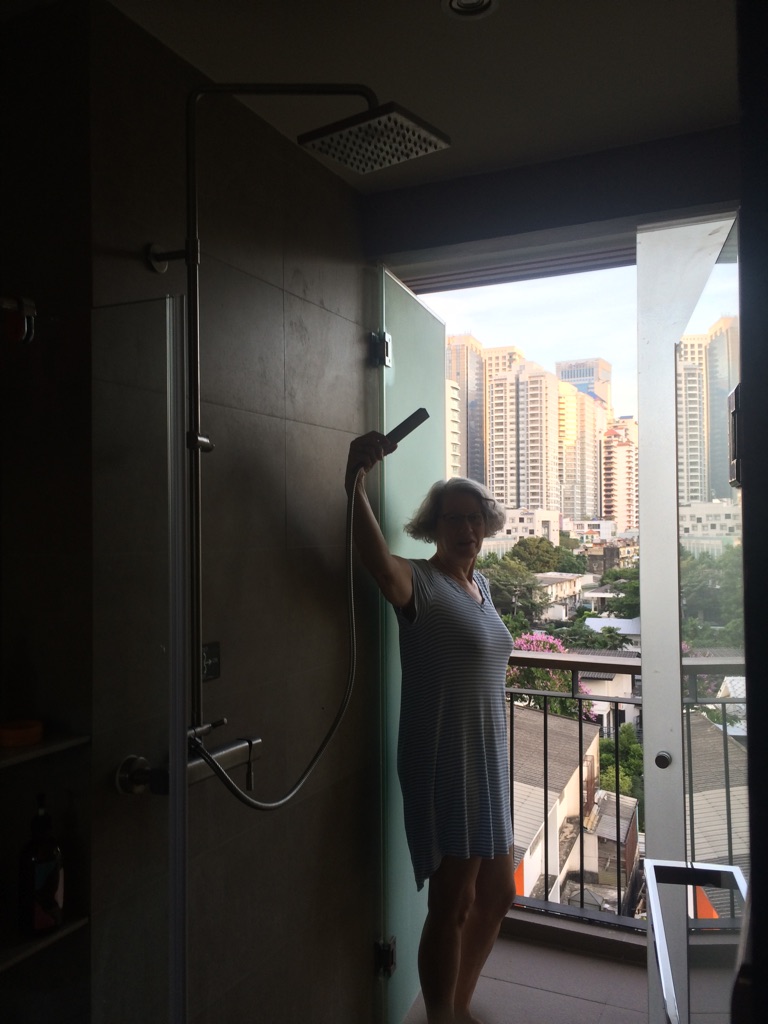
Kate showing off the shower balcony.
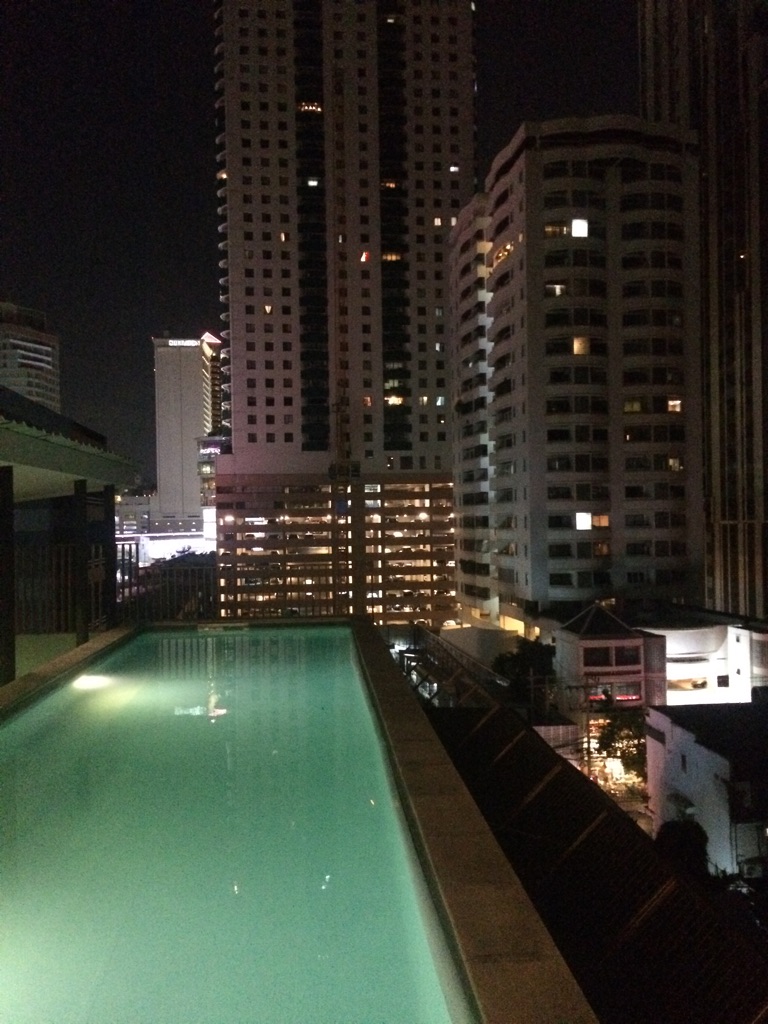
Rooftop pool
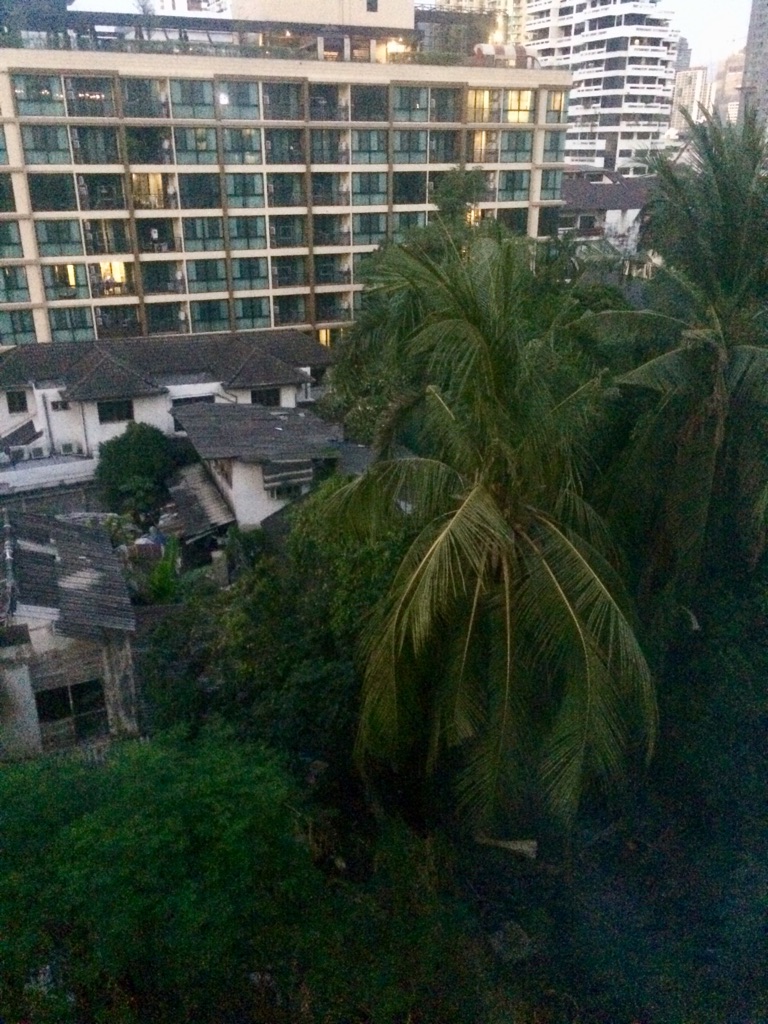
View from the room - 7 floors up.
‘Venice of the East’
23 degrees (7 am); 29 degrees (4 pm)
The Chao Phraya river runs through Bangkok and provides a thriving commercial, tourist and transportation industry. It is a wide river with 9 main piers and boats are used as ferries - thus, the reference to ‘Venice of the east’. There are even Venice-like bridged across the feeder canals.
We decided to spend the day on ‘Hop on, Hop off, 4U’, which allows unlimited access on a water taxi-type boat all day for a princely cost of 200 baht ($8.75). What a good idea...once we worked out how to get there! We hopped on and off all day based on the attractions at each pier.
Some sights we saw on the river:

Note the tower with the LEGO-like block design.
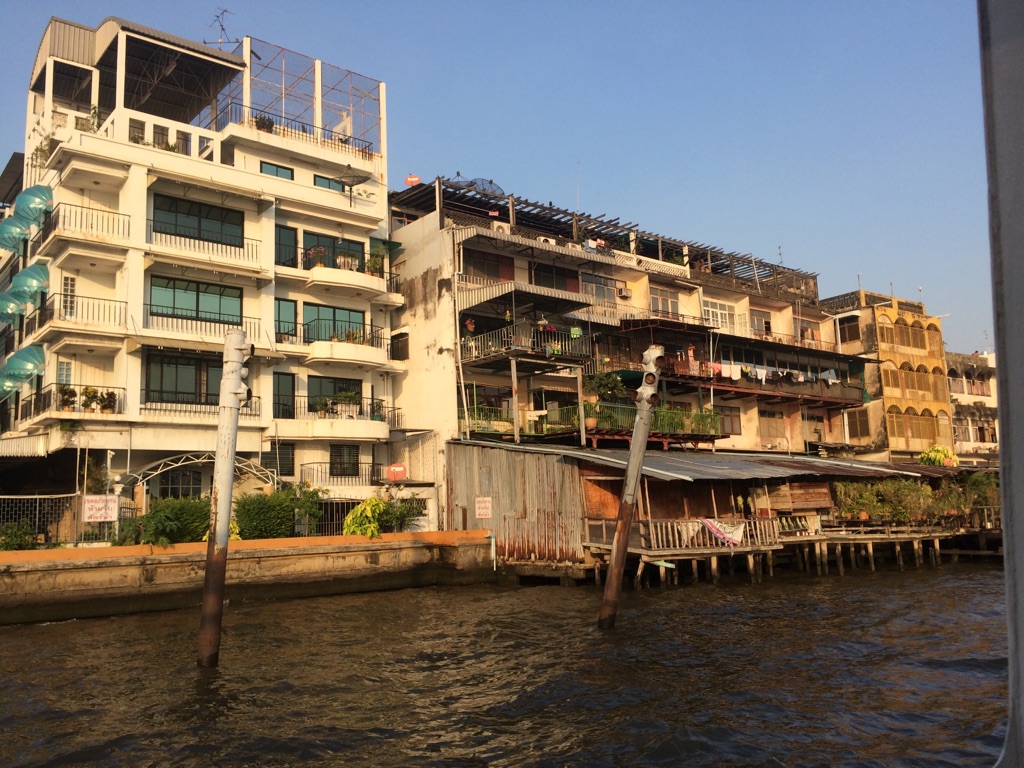
Buildings old and new
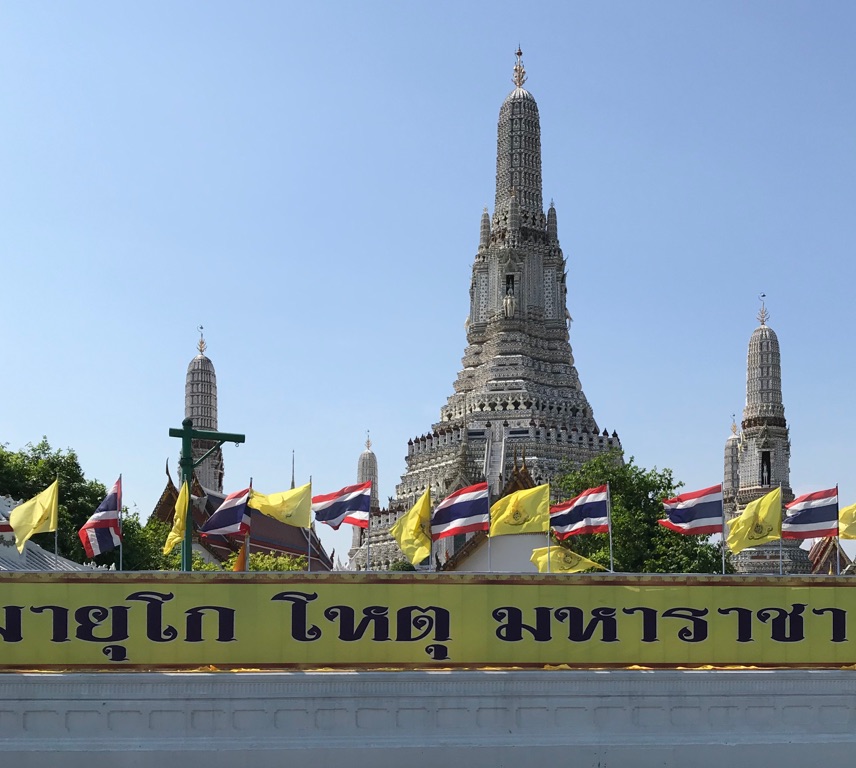
Wat Arun - a Buddhist temple. Wat means temple.

More Wats...
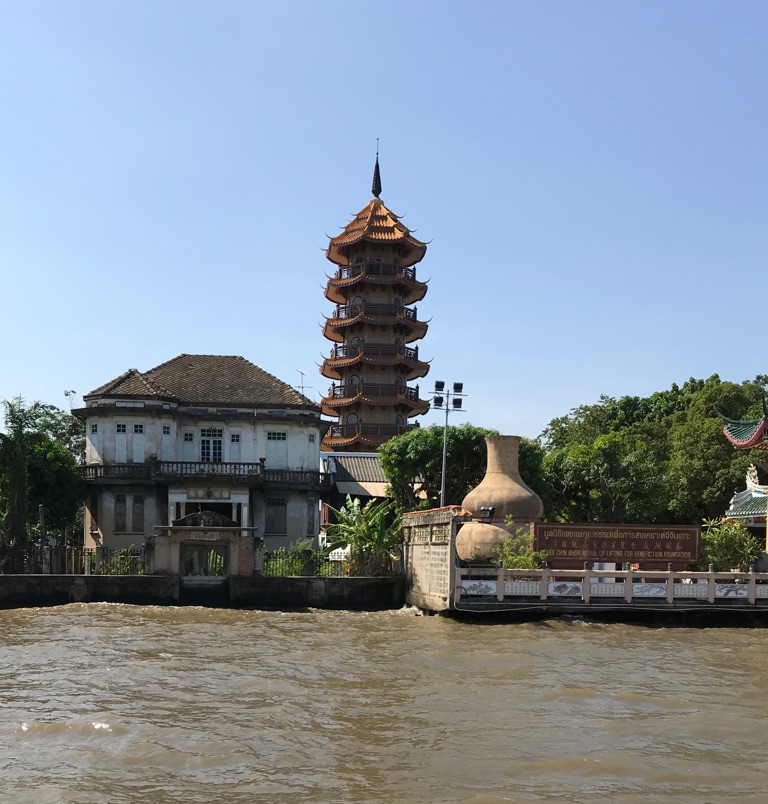
Eclectic building design
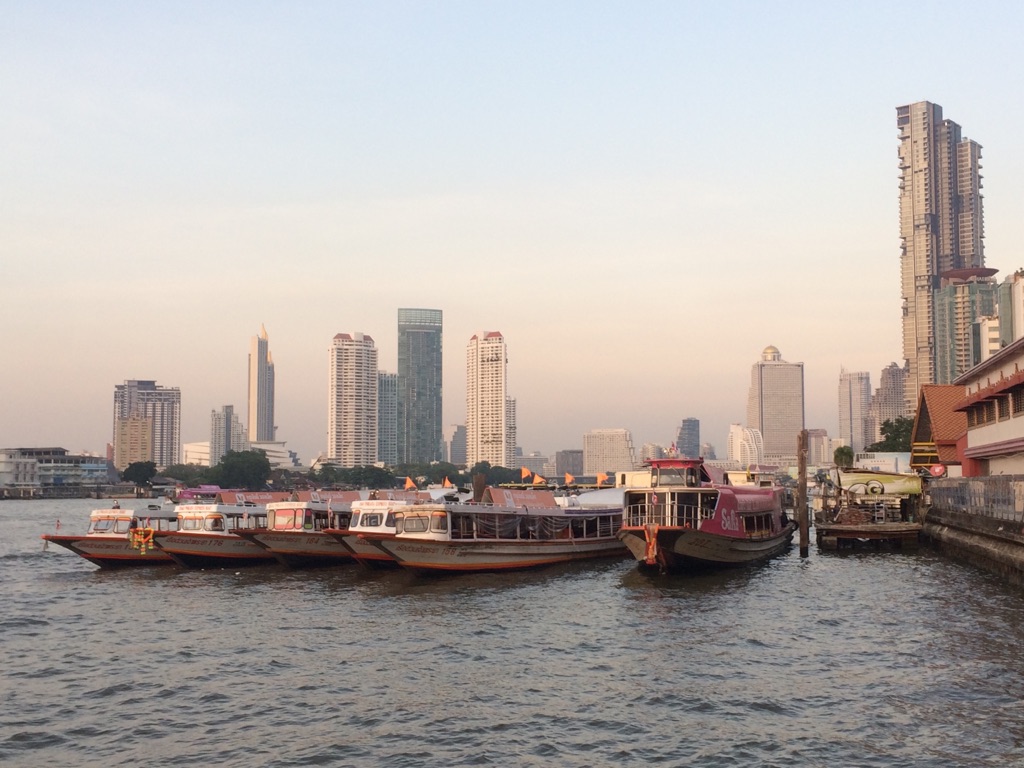
Boats moored for the evening.
We hopped off the boat at Wat Arun to visit the temple. It is a magnificent building constructed in the 1700’s. The outside surface is laden with tiny porcelain tiles and sea shells previously used as ballast from boats travelling from China-Thailand. The staircases are incredibly steep and we saw many frightened tourists gingerly walking down sideways due to vertigo - or waiting paralyzed at the top due to fear.
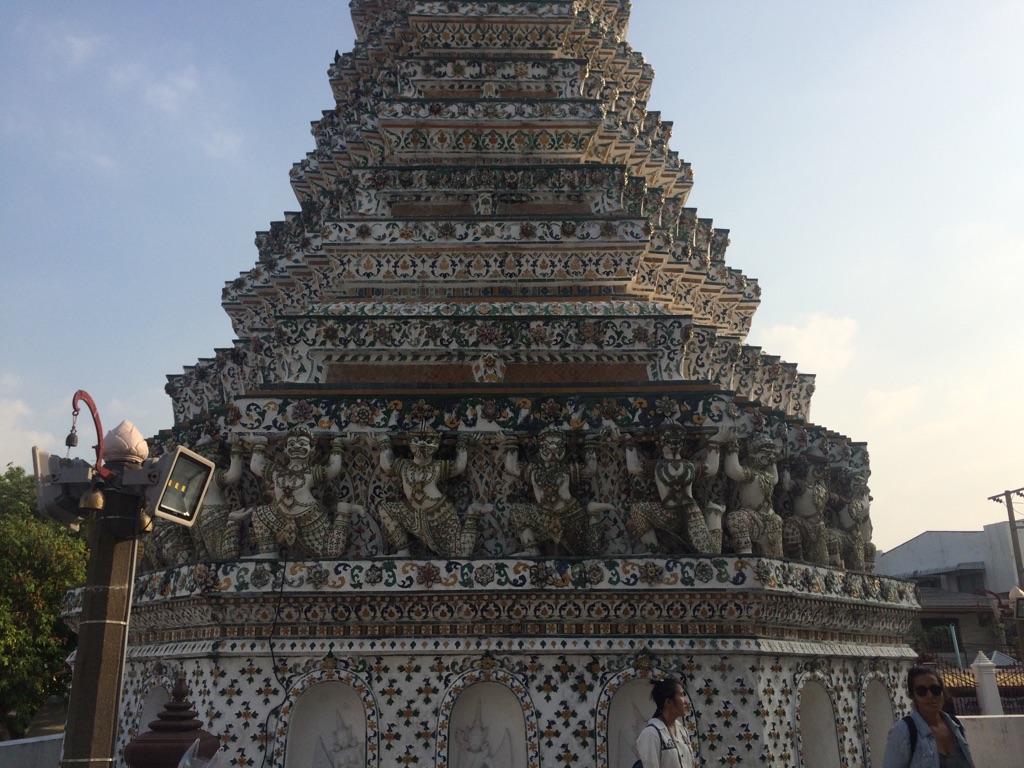

Steep stairs...
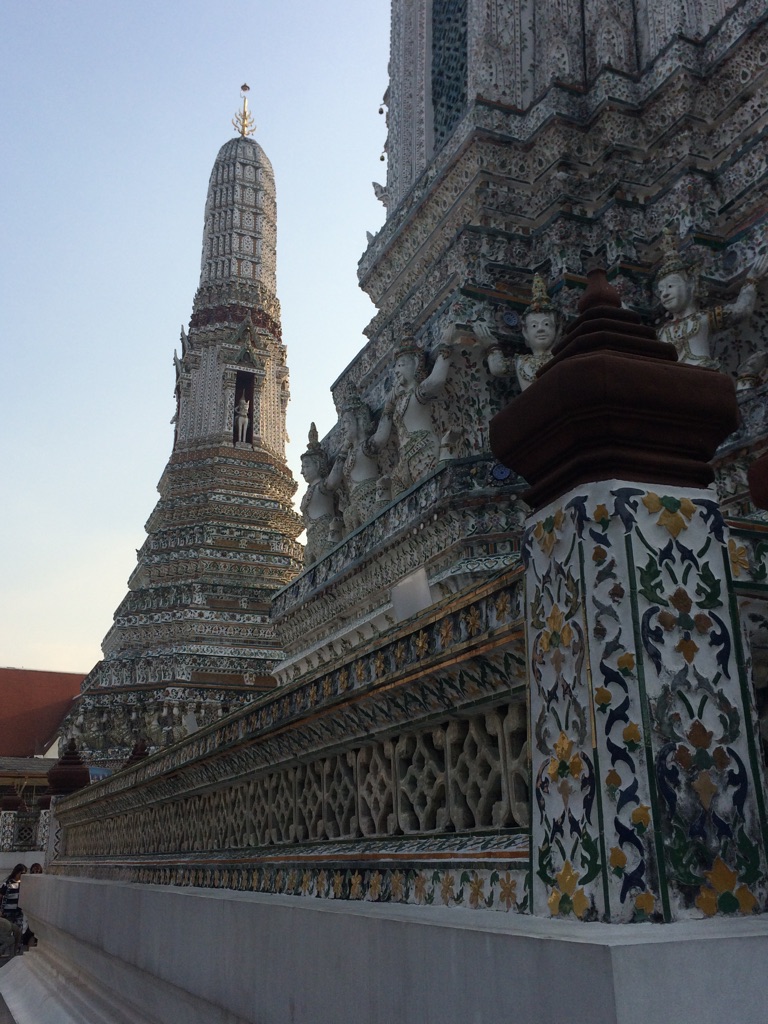
Extraordinary tile work

The hop on/hop off boat was such a fantastic, restful and stress-free way to see a lot of Bangkok in a short period of time as well as being incredibly cheap!
Hair-raising Tuk Tuk rides through back streets of Bangkok
Well...where do I start...
Our intention was to visit 2 of the most famous sites in Bangkok, the Grand Palace and The Reclining Buddha. But, all streets and river access was barricaded off for a visit from the king and queen of Thailand. The sites were closed and we were stuck.
Fortunately, we were taken pity on by a series of middle-aged men who were obviously aghast at 2 western women attempting to walk through blocked areas under military presence! \240At some point a tuk tuk was negotiated! A tuk tuk is like a motorbike with seating for 2-4 passengers and a covered roof. \240They are cheap transportation with friendly drivers. \240We zoomed in and out of traffic, through back lanes almost too narrow to walk through. Traffic is crazy but there is no yelling, no horn honking - there is a mad, respectful organization to the crazy zooming.
We were dropped at a pier to hail a boat ride - however, not possible, and fortunately our tuk tuk driver was still there. \240We negotiated a ride to the Grand Palace, which we discovered was also still closed!
What we have discovered is that if we look slightly bewildered (default state), men will arrive instantly to attempt advice and give direction. Somewhere in the conversations a tuk tuk driver is hailed and once again we were off - zooming through streets, somewhat precariously, and breathing a lot of smoke, dust and generally polluted air.
Still, it was all very exciting and we saw a slice of real everyday life in the backstreets of Bangkok which we would never have seen otherwise.
We never did see the Grand Palace or the Reclining Buddha - but we did see the Standing Buddha and had interesting conversation with many men (where are the women?). \240The downside was that we inhaled a lot of diesel fuel smoke and likely shortened our lifespan by 5 years.
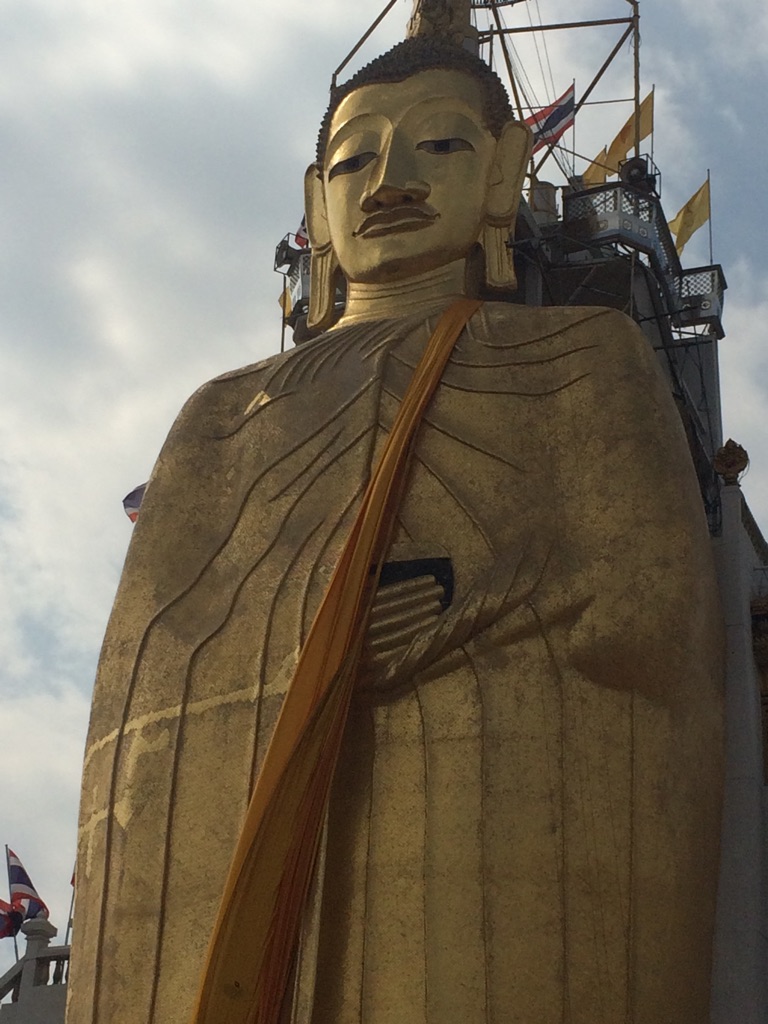
Standing Buddha...
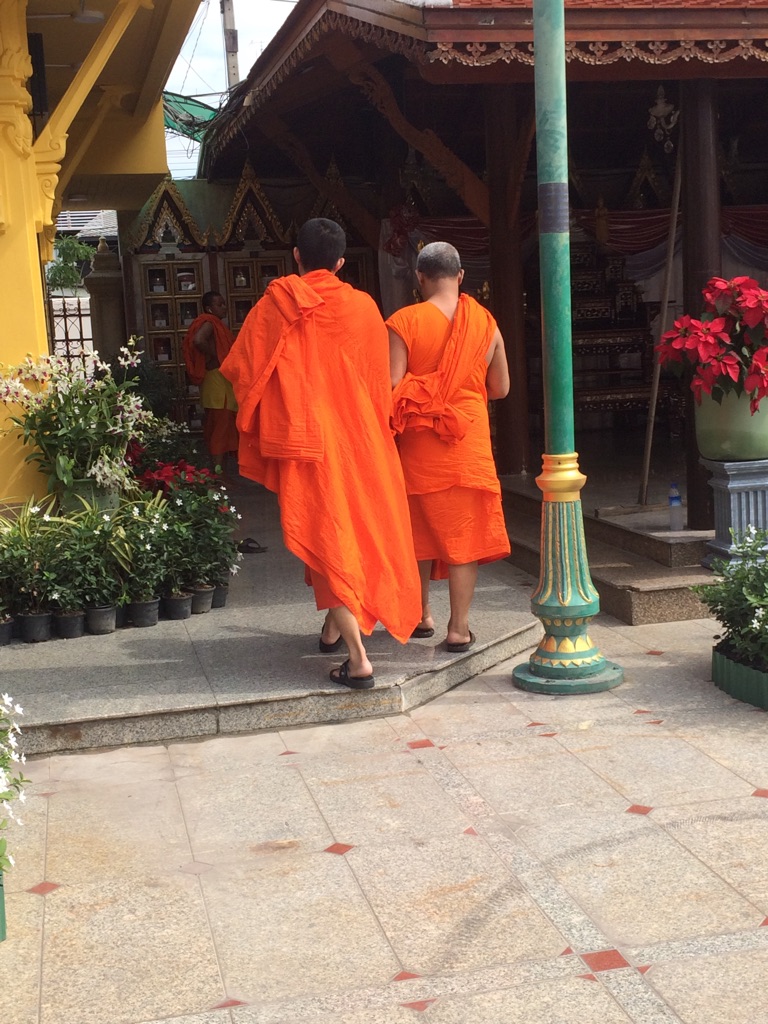
Buddhist monks...

Inner courtyard behind the temple of the Standing Buddha...
Cycling and night markets in Bangkok
I will no longer cite the temperature as it is always around 30 degrees!
Breakfast in our lovely garden to begin the day.
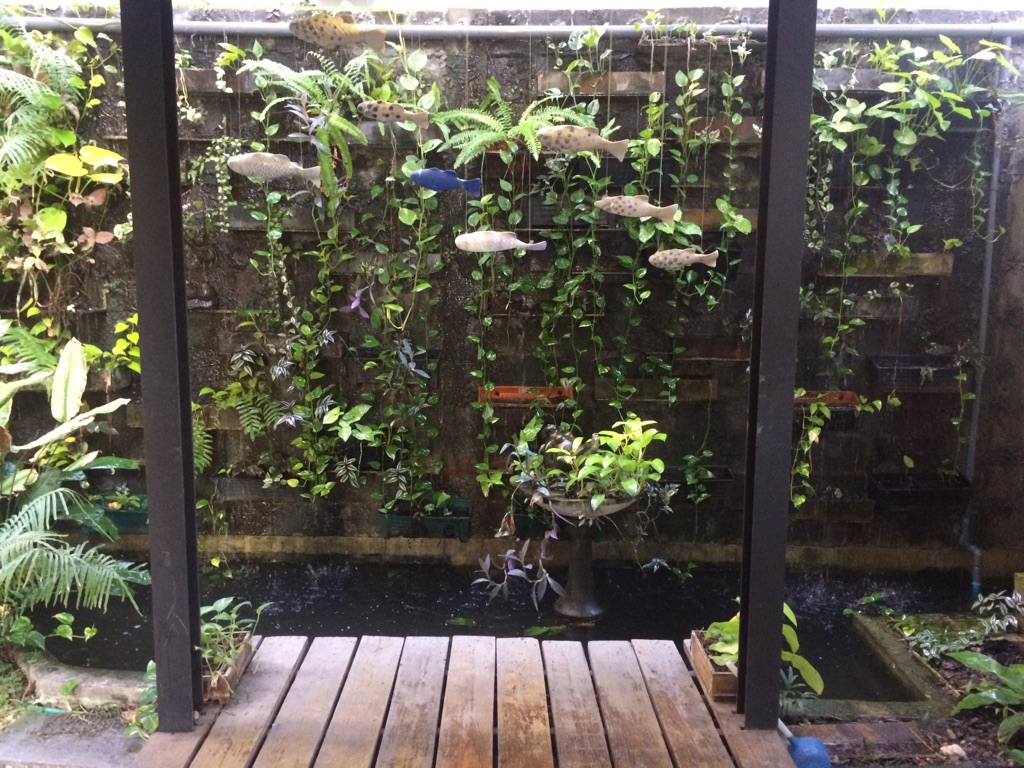

Today, we met up with Kate’s young friend, Holly, who is teaching in Bangkok and knows her way around.
We decided to visit a green preserve with cycling paths for the afternoon. First we had to get there; this involved a taxi, a rusted out boat trip across the river and then negotiating bike rentals. We were issued standard 1930’s-era bikes and, with a few wobbles, we set off.
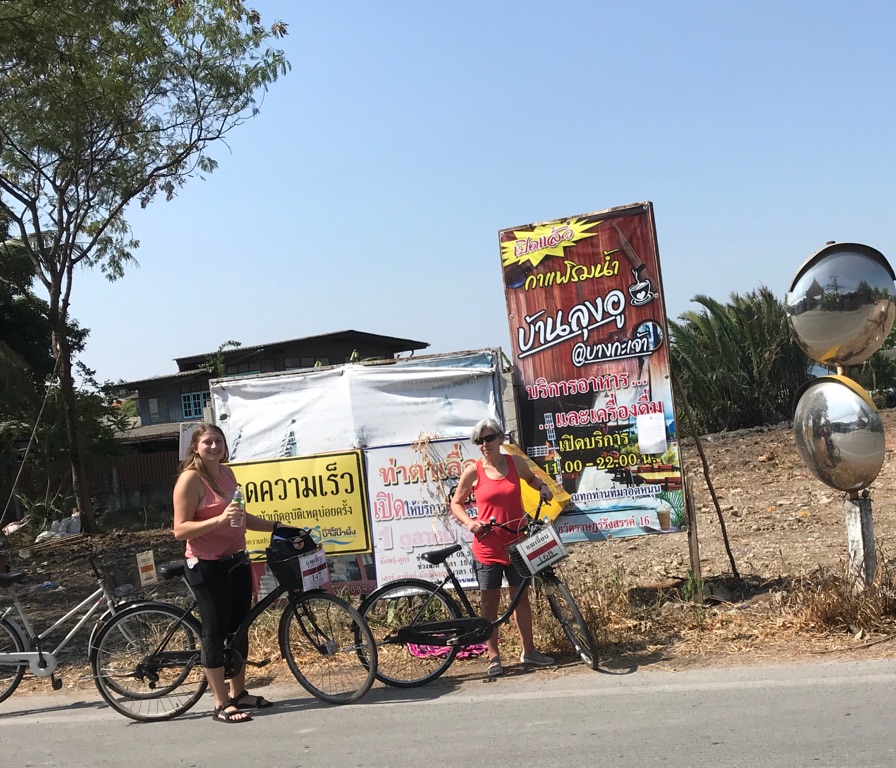
Apparently bike lanes are more of a suggestion than a reality and we shared right of way with scooters, motorbikes and cars. \240As we rode along, things became progressively busier - \240fortunately, no mishaps. \240We stopped along the way for coffee and a temple visit.
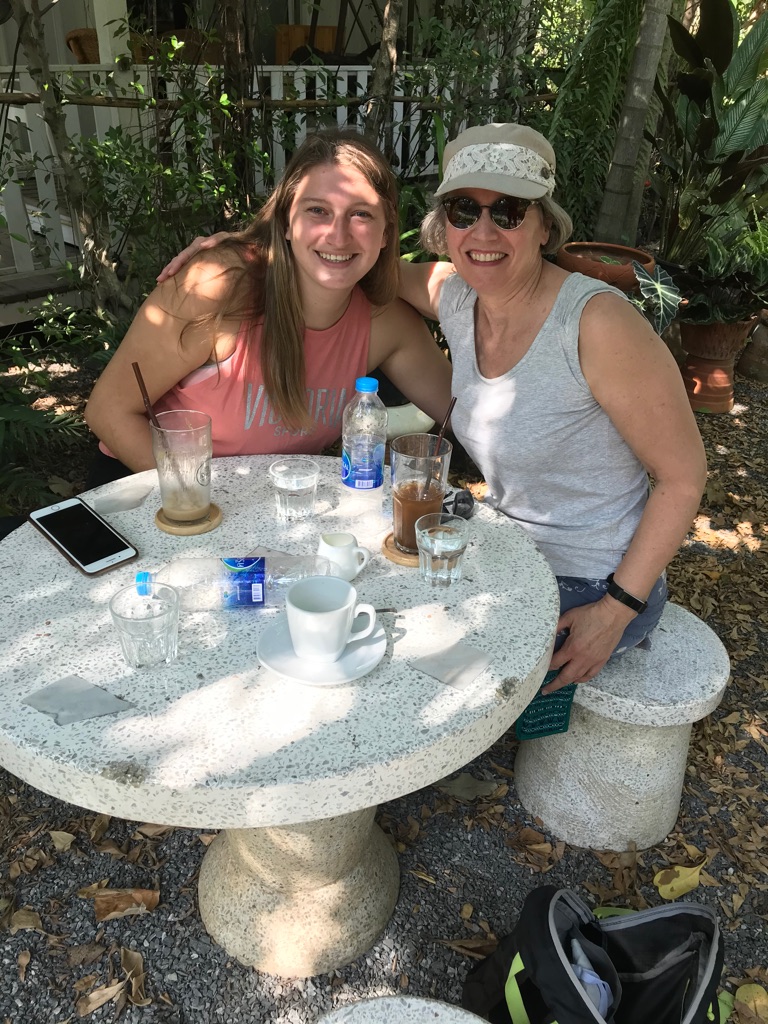
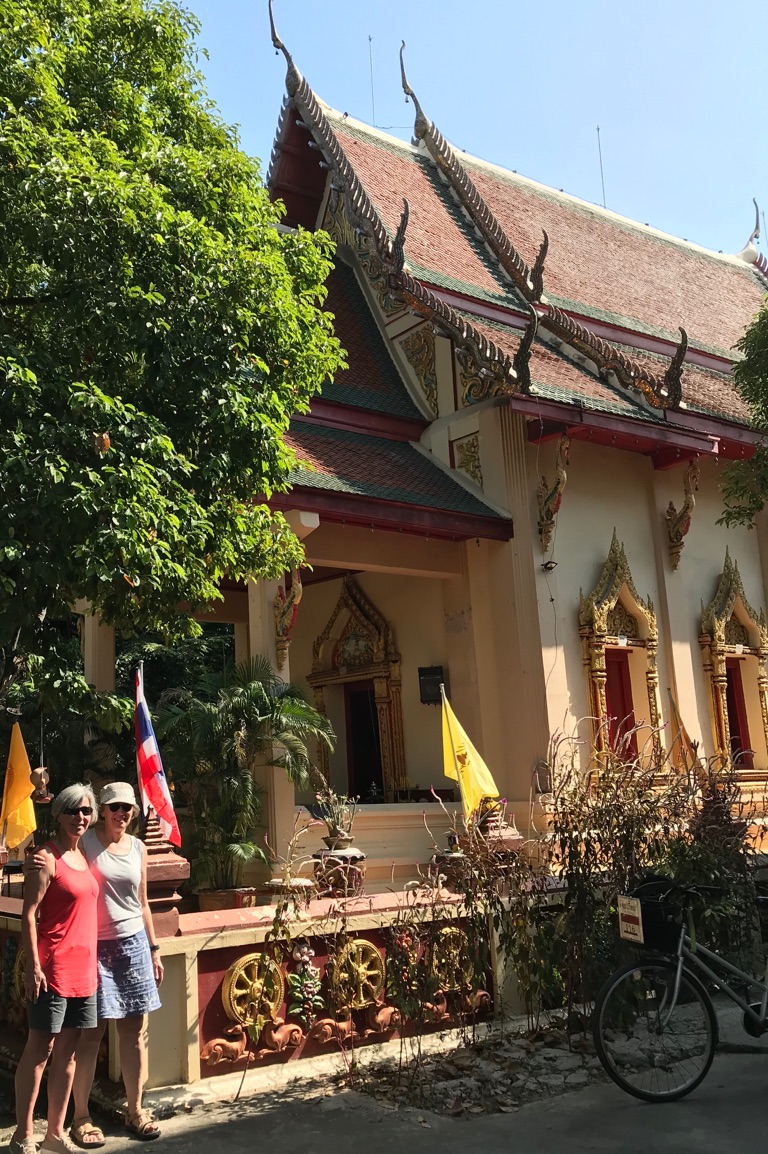
All in all, a lovely afternoon.
For our evening we visited a “night market” with vendors, food, lighting displays and a live band - all under a giant canopy.
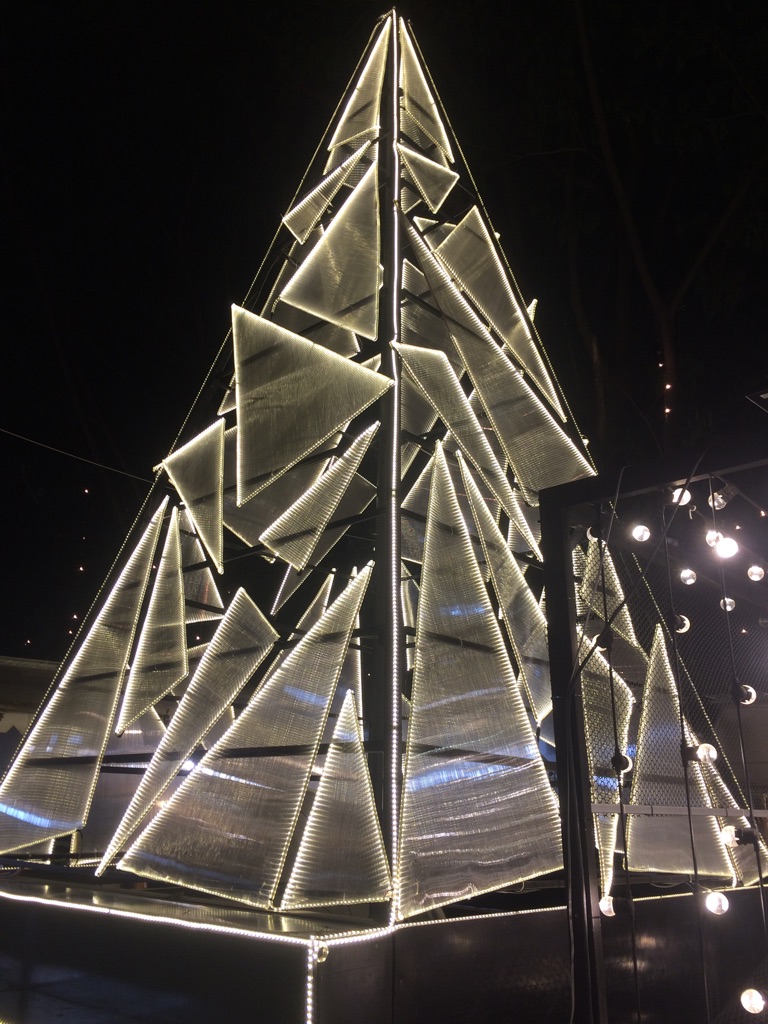
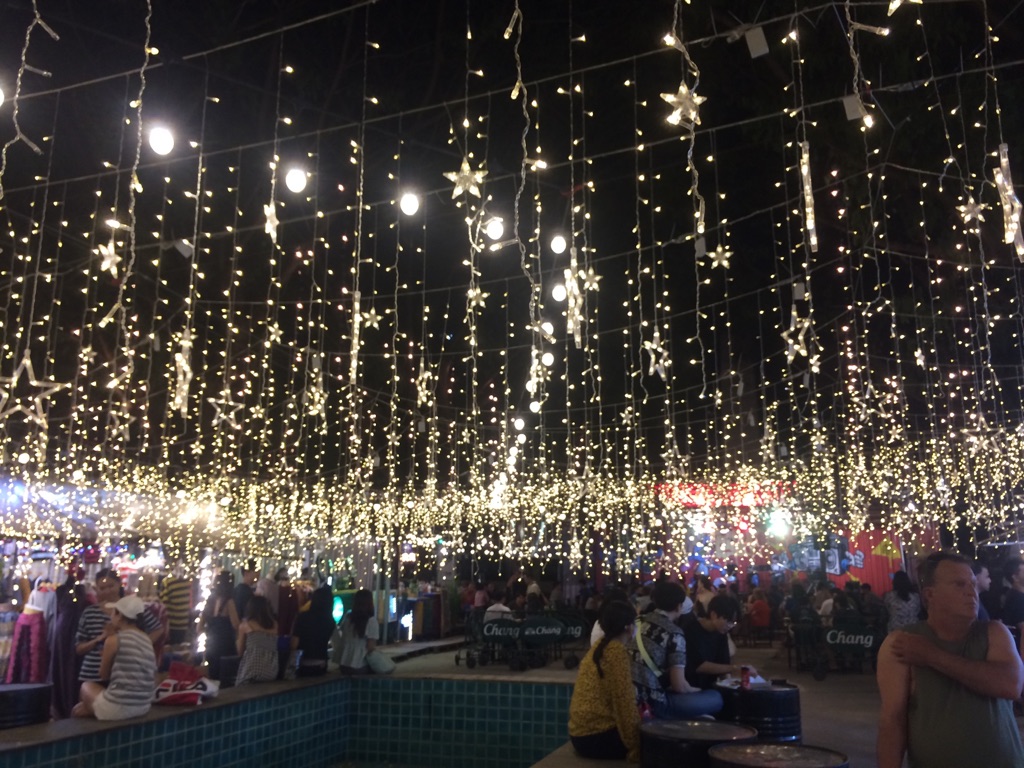
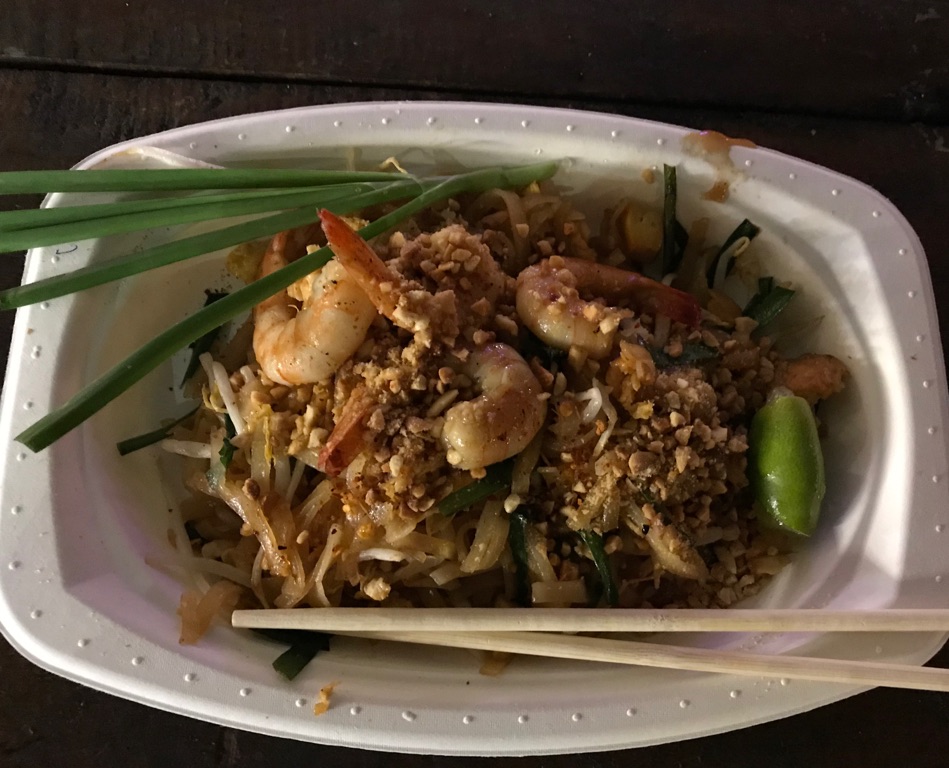
Yummy pad Thai at the night market- 79 baht, about $3.50.
Our last night in Bangkok! Kub-coon-ka (thank you in Thai), Bangkok. Tomorrow we leave you.
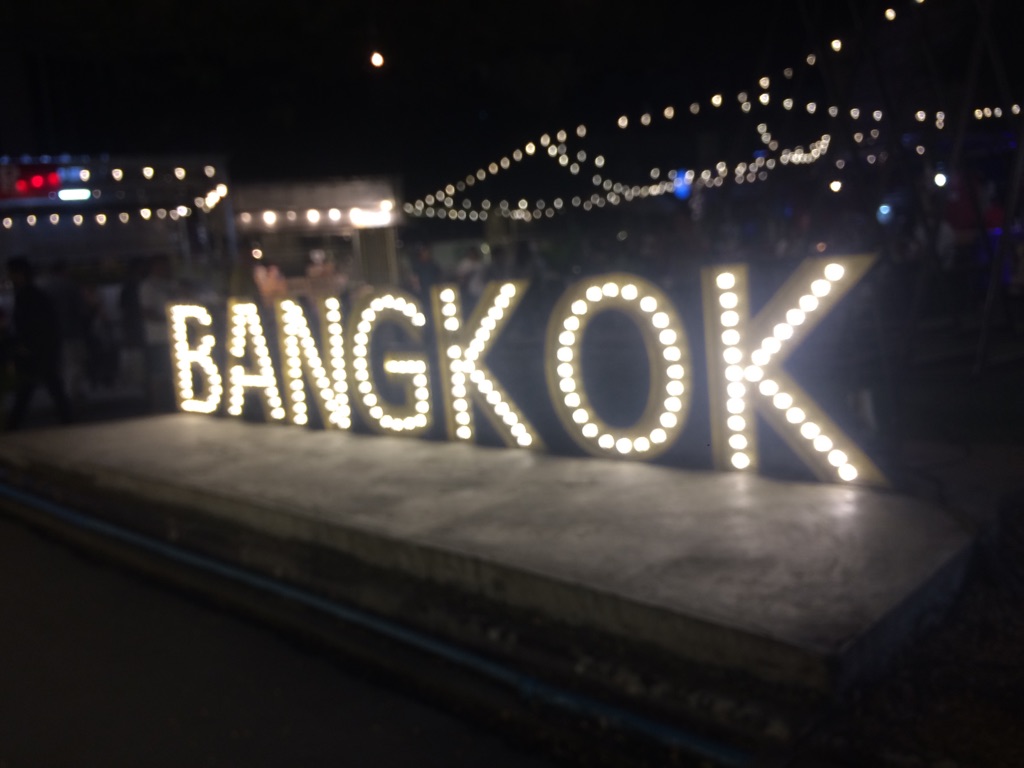
Leave for Krabi
Today we leave our lovely hotel in Bangkok and travel to Krabi, a smaller town with a seaside and a 90-minute flight away. We are now at the end of week 1 of our trip and the learning curve has been steep, but now things are beginning to feel both easy and sort of, even, familiar.
Back we went to the airport - this time, Don Mueang airport. We had booked a hotel shuttle to pick us up on arrival in Krabi and, this time, the driver was there to meet us, holding up a sign from the hotel with our names. It felt magical!
The hotel is ‘Just Fine Krabi’. This time the hotel is basic - but we are paying 1/2 the price of our Bangkok hotel. It proved to be interesting:
Room 1: older decor but clean - however, the balcony door does not lock and the safe does not work. Back we went to the front desk. \240Given another room.
Room 2: balcony door and safe work - however, the fridge is leaking.
Being resilient and independent women we took it into our own hands.
Solution: we still had both keys so we raided room 1 and stole the fridge which was working (or, as Kate puts it “creatively exchanged”). \240A near mishap caused by uncontrollable giggling while carrying the fridge, was happily avoided!
Once settled, we walked out for dinner. There are 3 night markets here and, after the craziness of Bangkok, it is a small and manageable little town. We ate on the 2nd floor of a small restaurant, Tantawan Bar and Cafe, \240best meal so far! Dinner for 2 with beer for 480 baht (~$20).
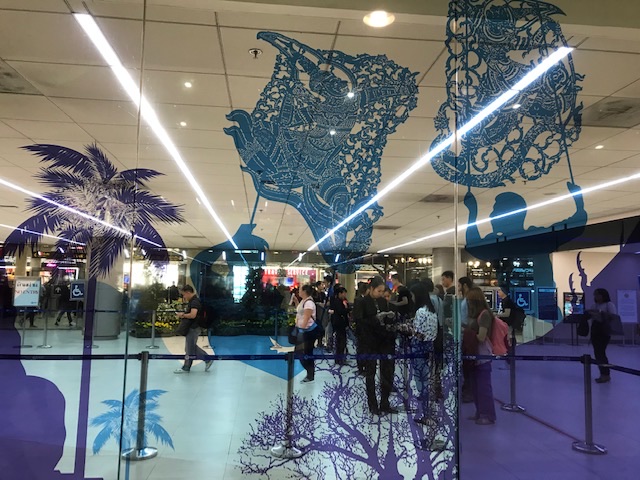
Art work in Don Mueang airport...wandering around while waiting for the flight to Krabi...

Best meal so far - think it warrants a return visit.
Exploring Krabi
We have 2 full days in Krabi before heading to the island of Koh Lanta where we have a bungalow on the beach of the Andaman Sea.
Krabi is known as a backpackers town, lots of hostels, certainly western tourists. It is hotter than Bangkok, more like 33 degrees and humid, but there is a gorgeous cool breeze. We are very close to a river which feeds into the Andaman Sea.
Today we arranged a boat trip of some islands - a whole day excursion, and arranged our transportation to our Koh Lanta hotel. With business finished, fruit and beer purchased (true necessities, of course!), we repaired to our hotel for afternoon siesta!

Huh, I didn’t even leave my neighbourhood!
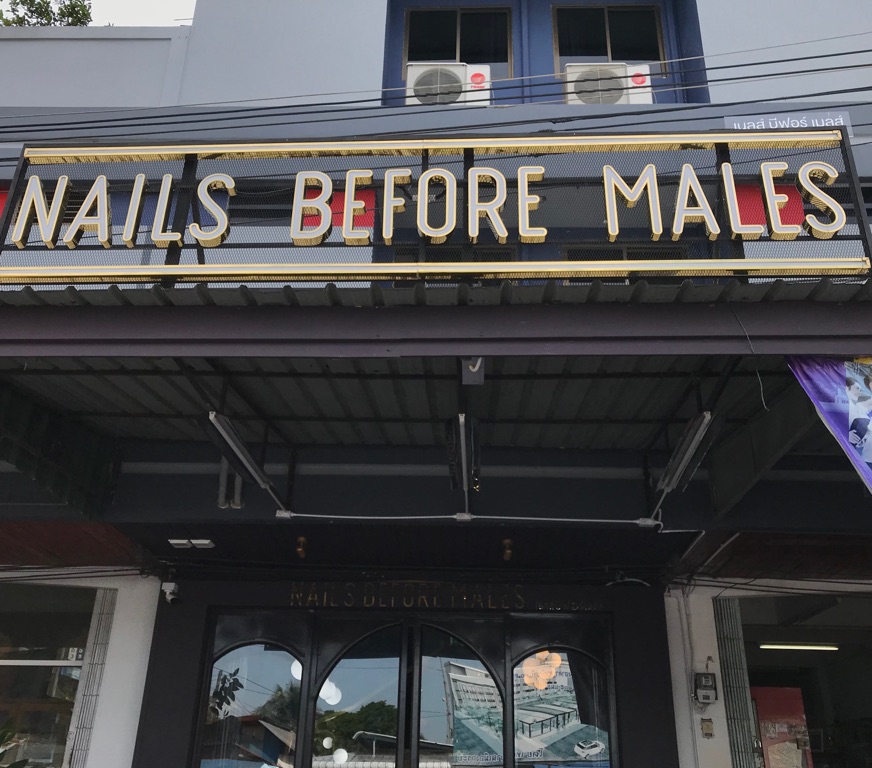
Progressive name for a nail salon

Lunch from the fruit market
In the evening, we went to the night market to experience the culture, food and people.
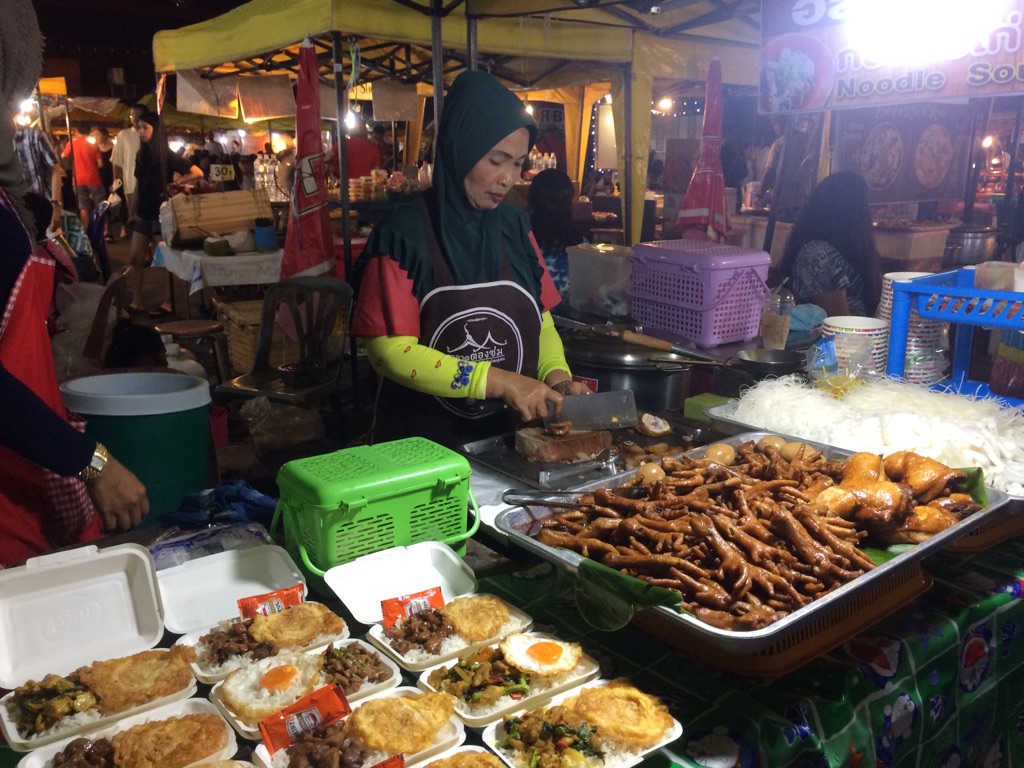

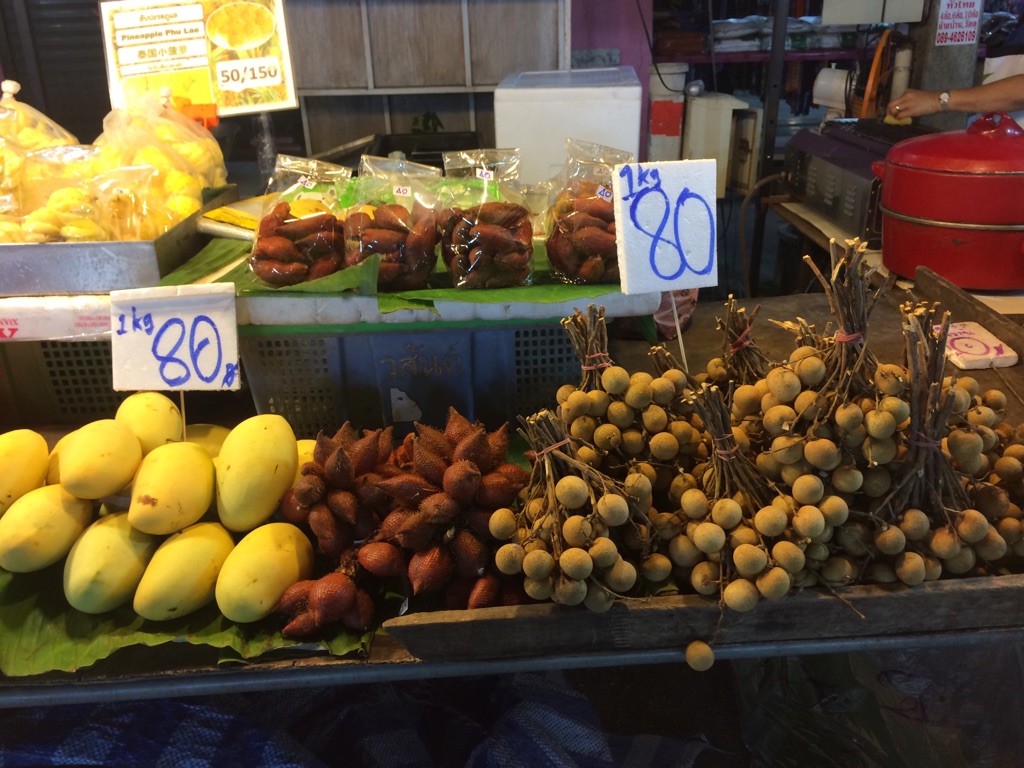
On the water
Today we went on a Longtail boat tour of the Hong Islands in the Andaman Sea. We were picked up from the hotel by a shuttle bus at 8 a.m. and joined a group of 11 people - from Vietnam, Germany, Thailand, and Russia.
The islands were affected by the tsunami on December 24, 2004 where 4800 Thais and foreign nationals were killed. There are signs everywhere for tsunami evacuation.
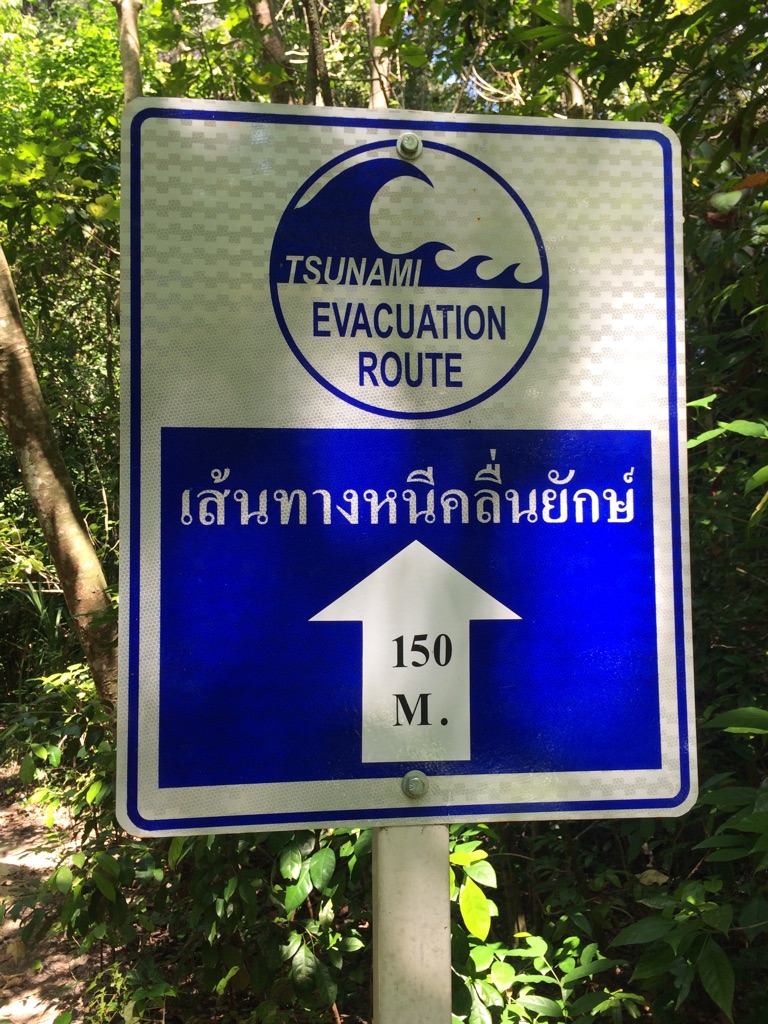
A bit worrying!
The Andaman Sea is beautifully clear and the beaches are glorious. We stopped off at several beaches to snorkel, swim and explore - and were treated to a great Thai food lunch on the beach.

Longtail boats
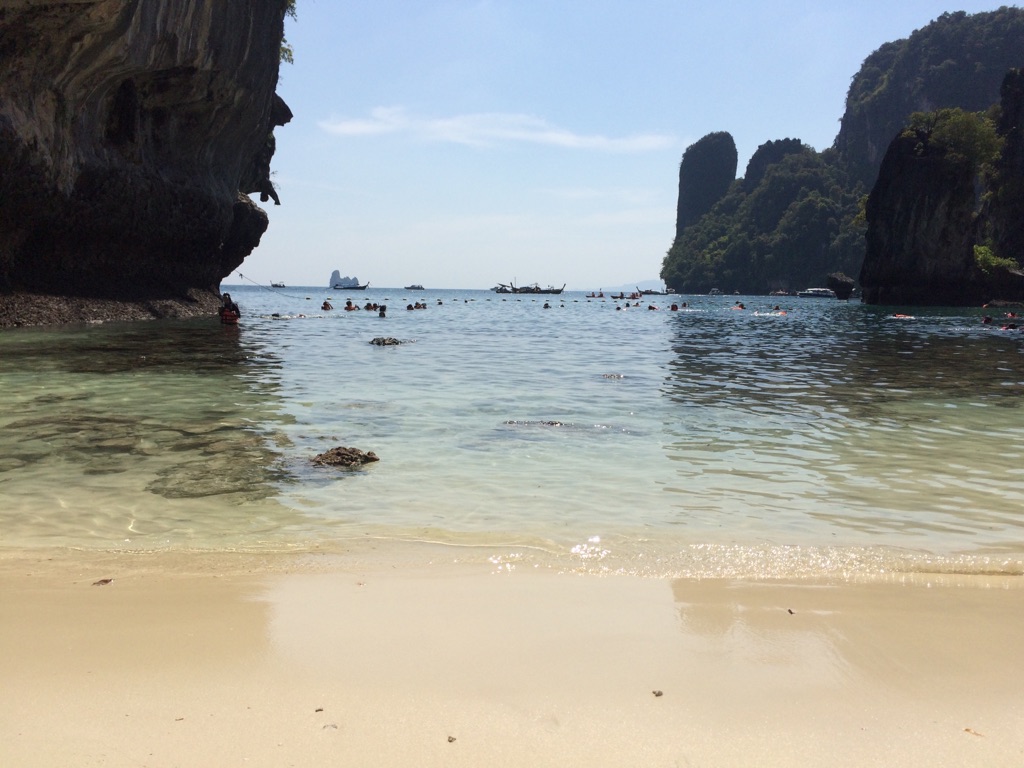
Hong Island
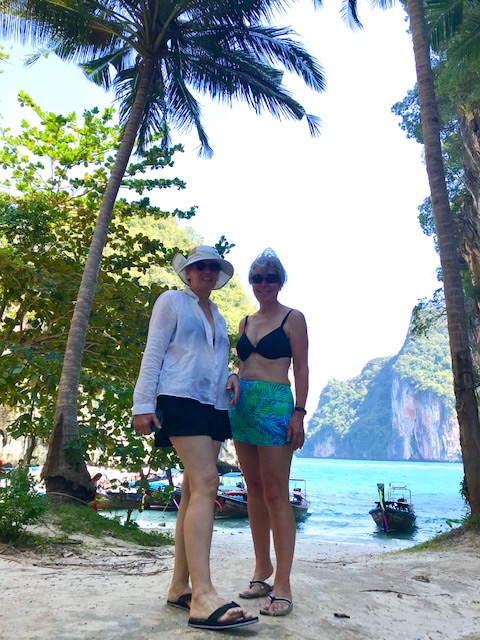
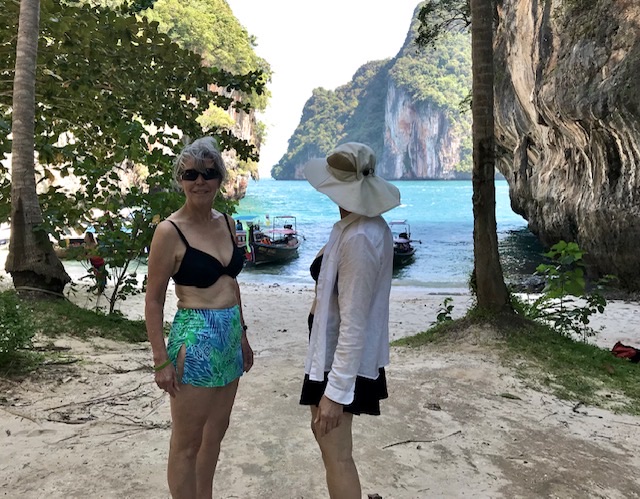
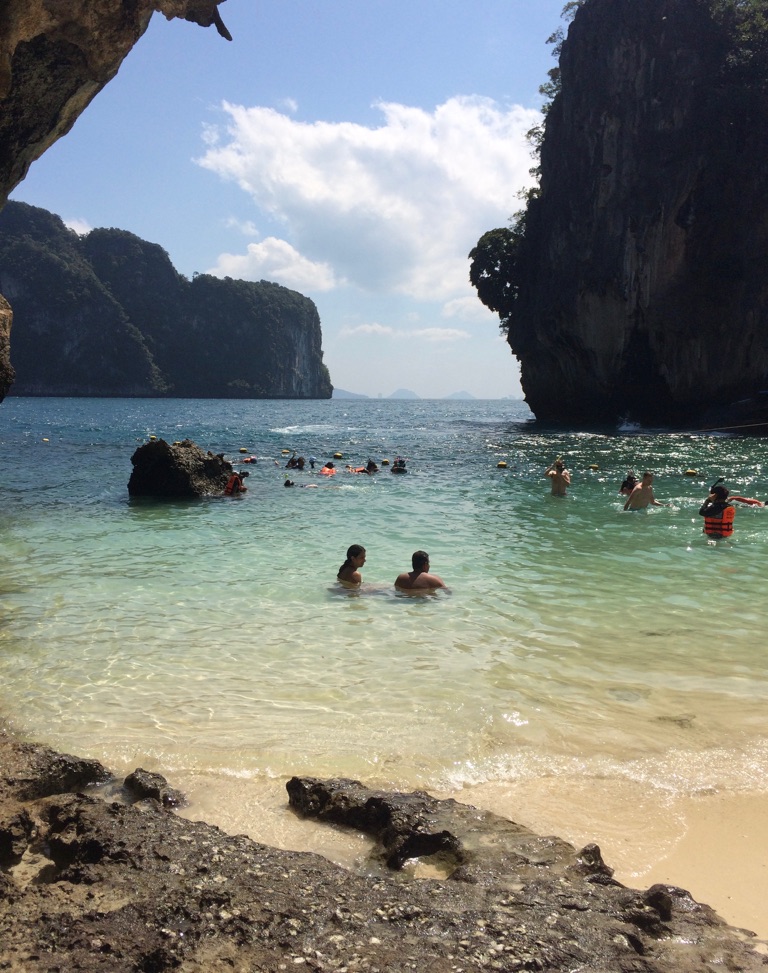
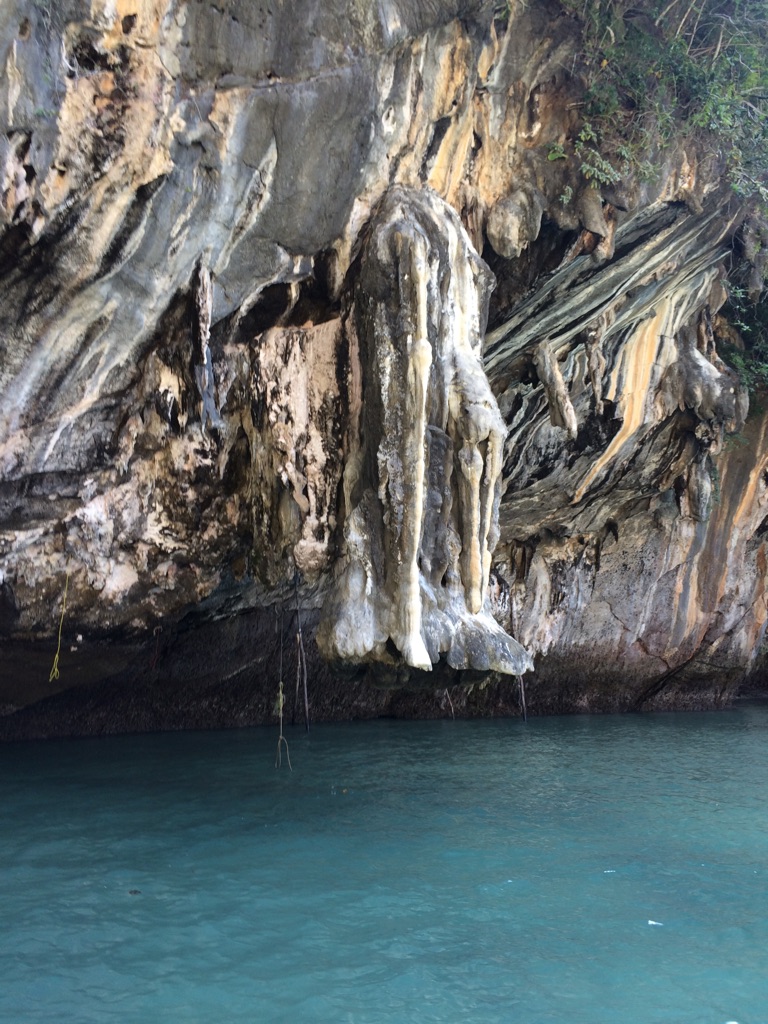
Striated limestone rock
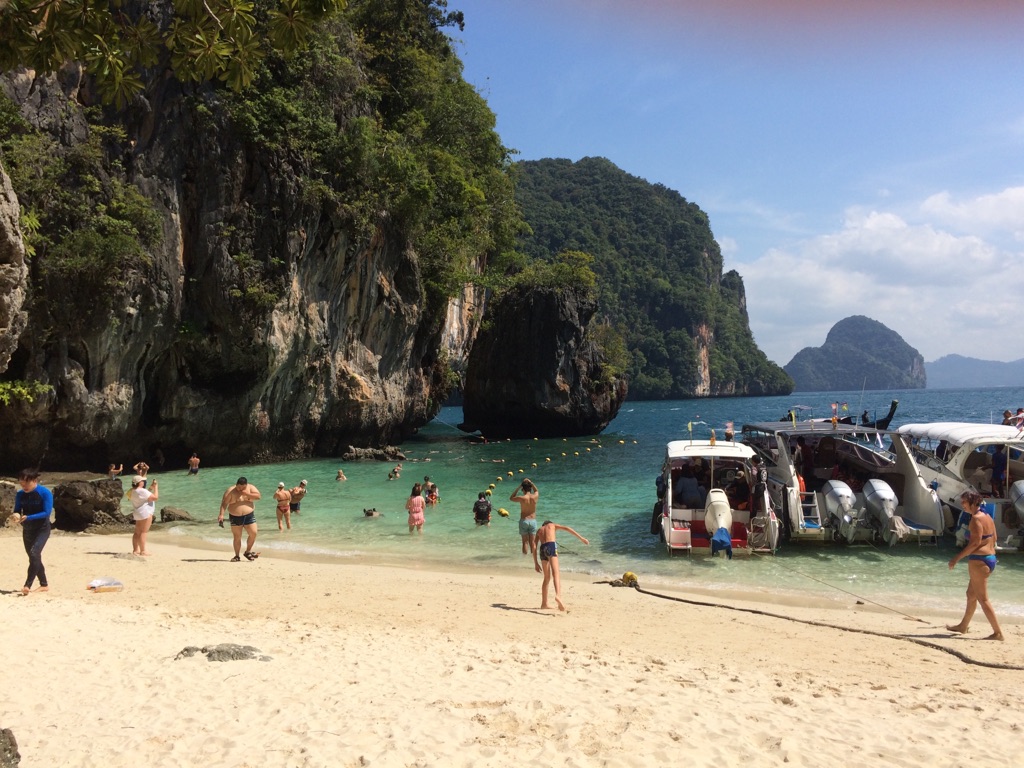
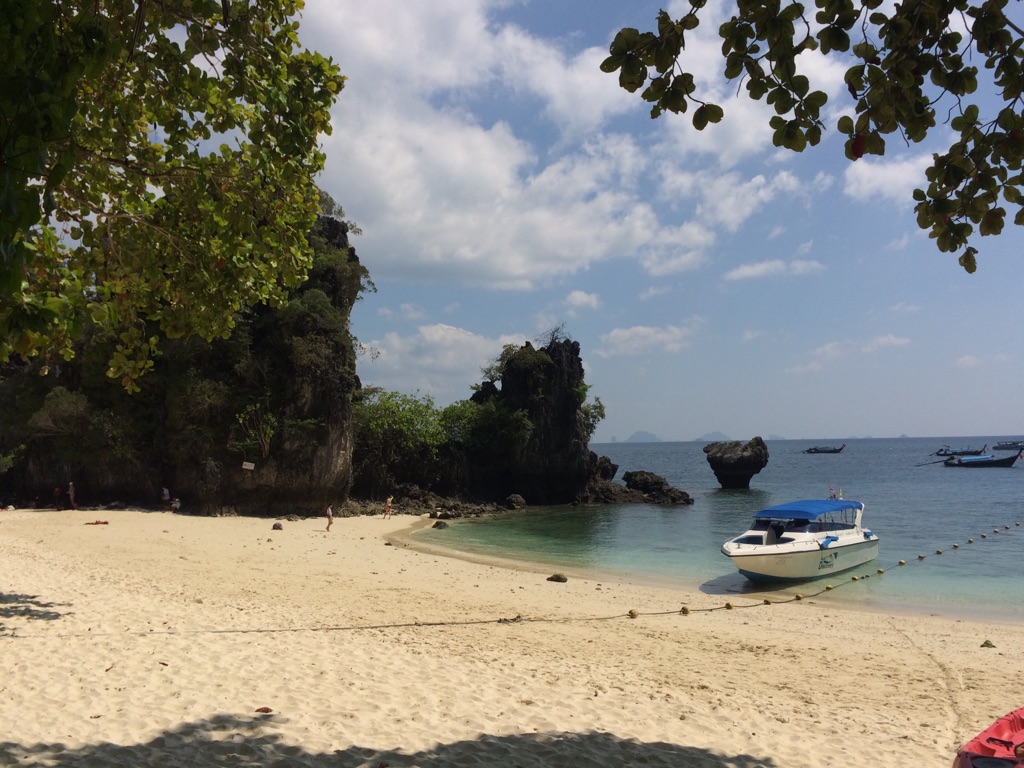
Nopparat Thara National Park.
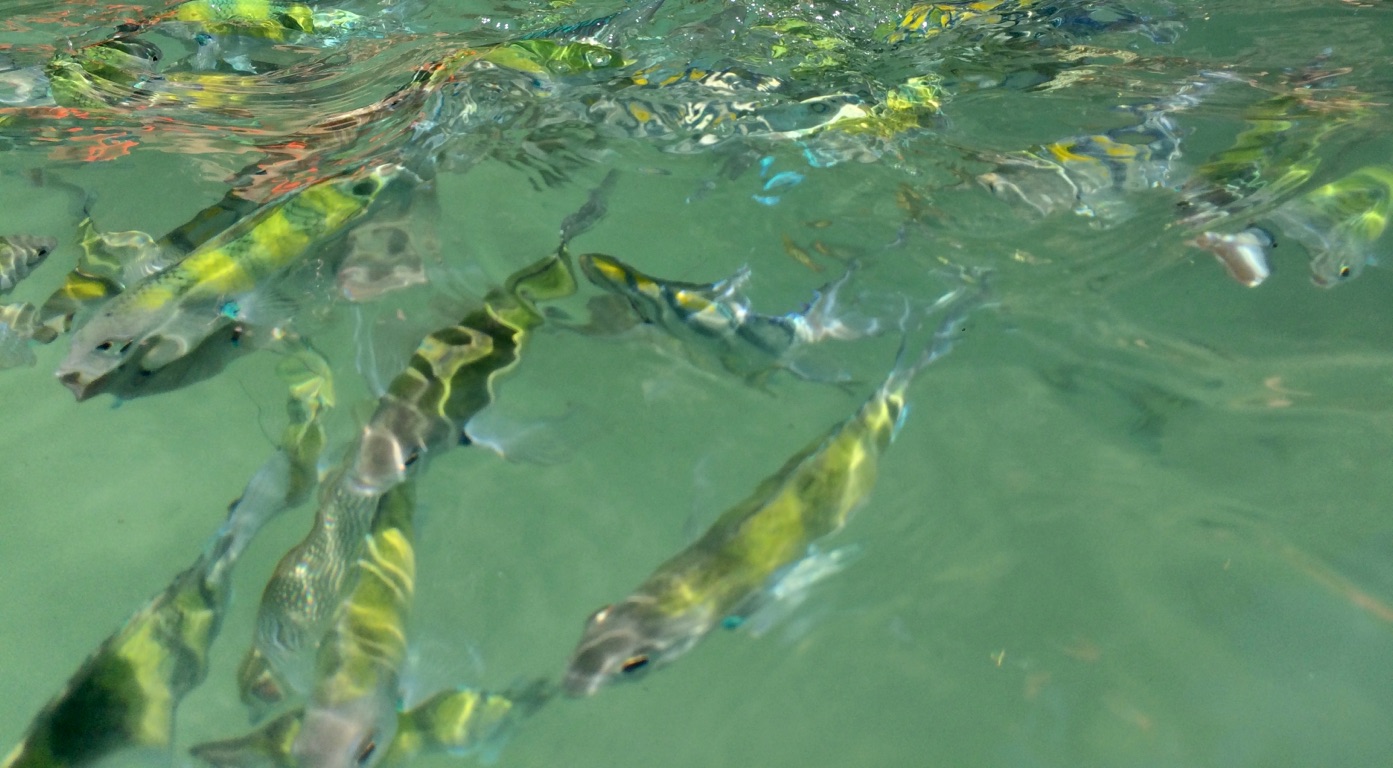
Lime green/blue striped fish - and wishing I knew how to scuba dive.
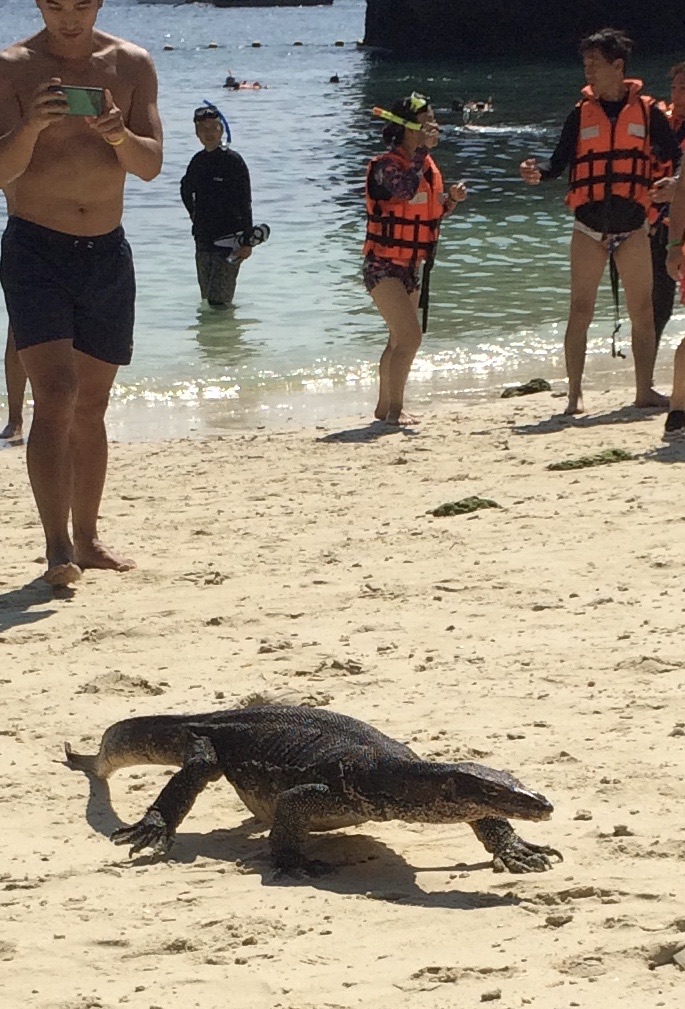
An unexpected visit from a Komodo dragon - about 1 metre long - our guide said he is a teenager! \240They are not poisonous (except for their saliva) and will not attack unless provoked. We did not provoke - but he caused quite a stir!

Clear, clear sea water...

More interest in the Komodo dragon...
To the island of Koh Lanta
We took a shuttle bus from Krabi for the journey to Koh Lanta - about 2 1/2 hours of highways, a ferry and a couple of small towns.
Driving in Thailand is on an anything goes basis - the only rules seem to be to drive really fast, weave in and out of traffic, and don’t actually hit anyone or anything.
The resort where we are is named Lanta White Rock - the owner, who is Thai is married to a Canadian who lives in Surrey/White Rock, BC. We have a bungalow with a gorgeous veranda under shady trees. And we are paying approximately $30 CAD each, per night!
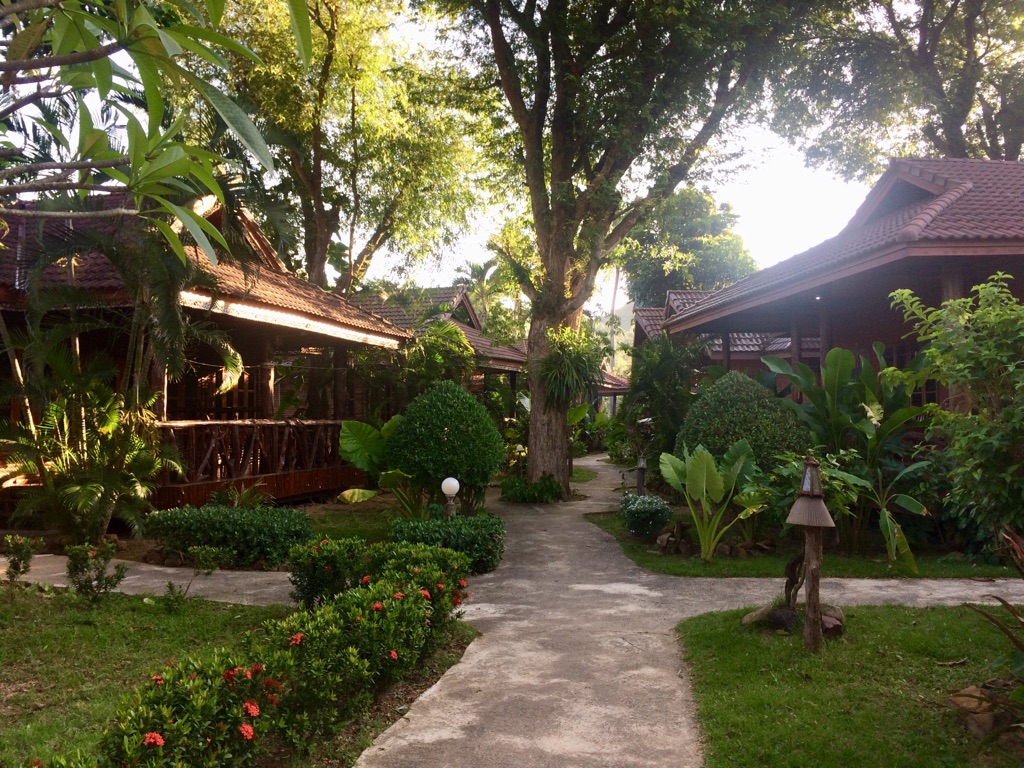
Our bungalow on the left
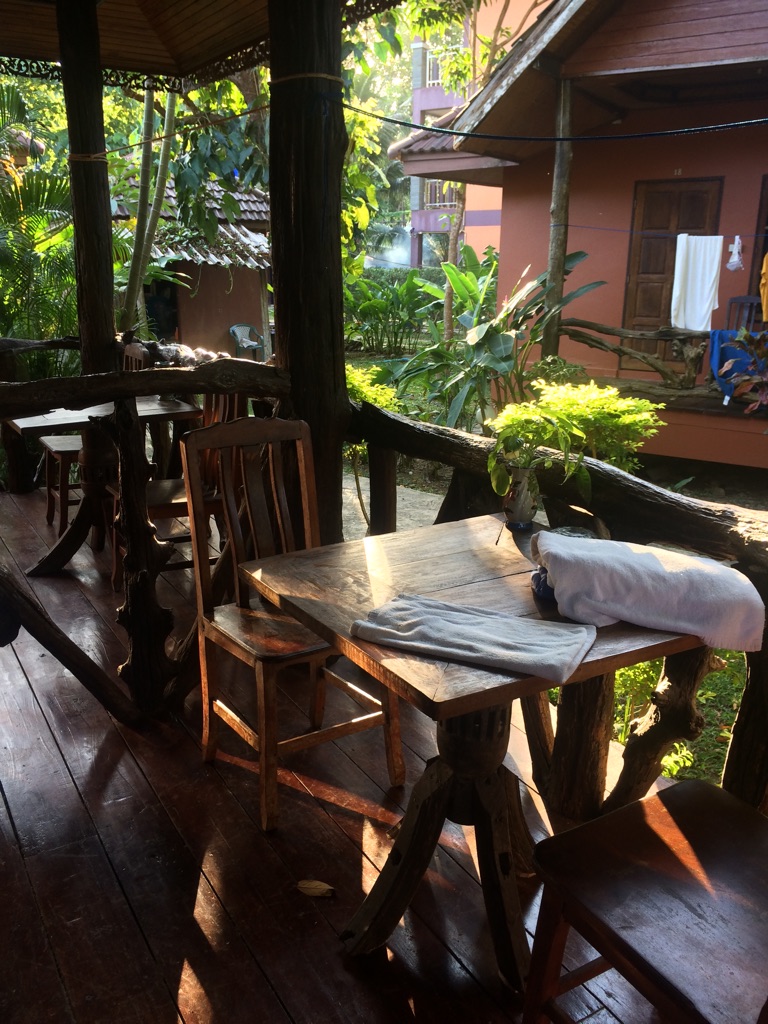
We have a swimming pool...
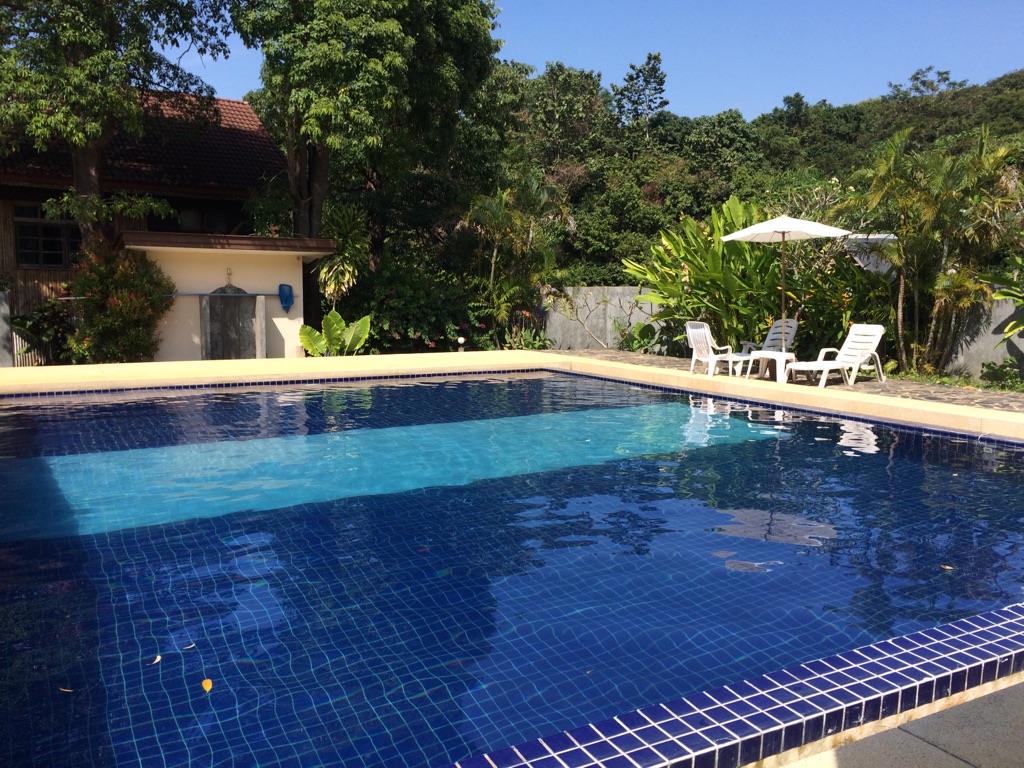
And beach access just across the street...
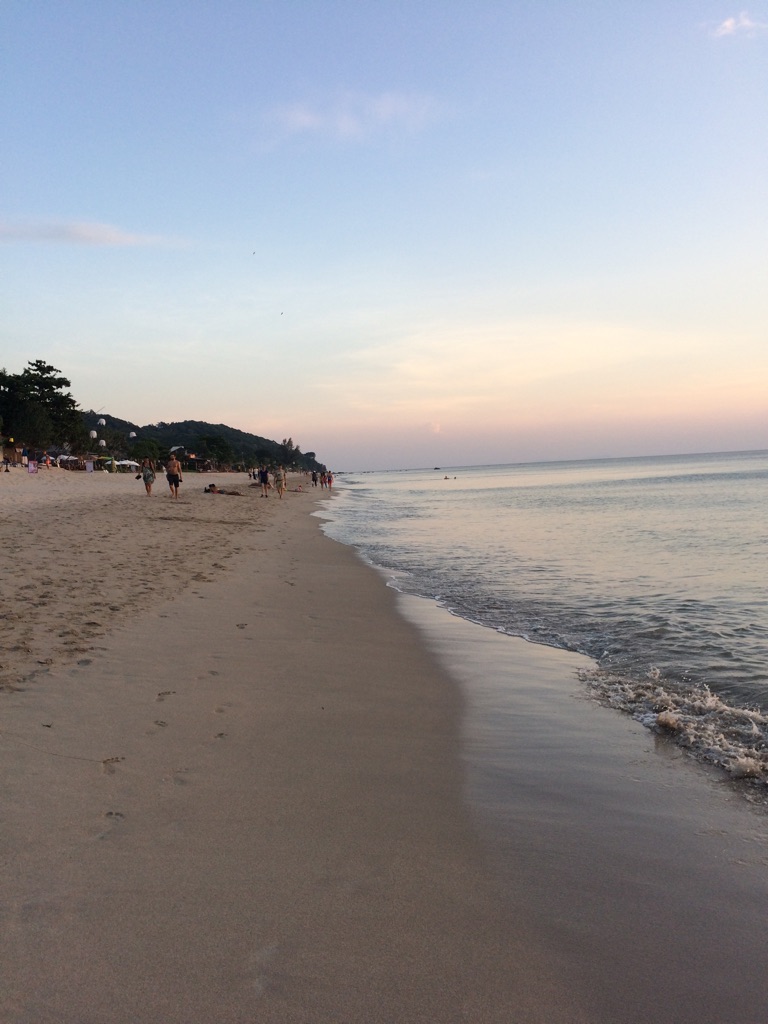
And many delightful and interesting eating choices...
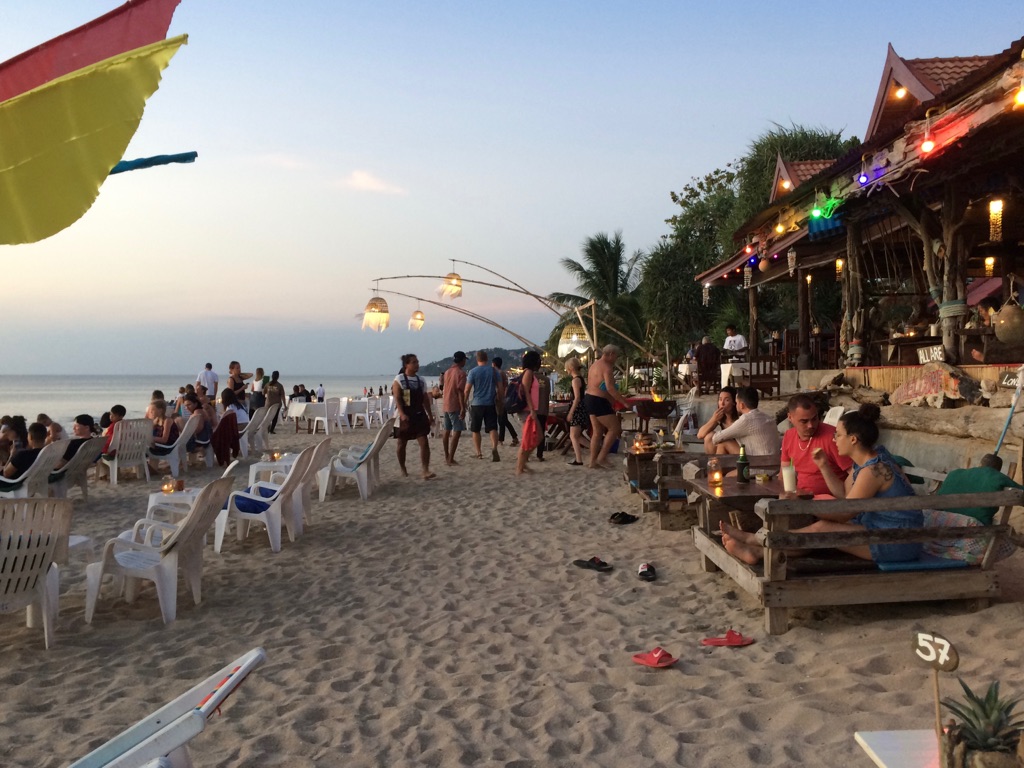
Outdoor restaurants line up along the beach - deck chairs are filled from 5:30 pm on, for cocktails and sunset watching. \240The sun drops very fast but is glorious - sets at 6:10 just now. So strange to be on a warm beach and have such an early sunset.
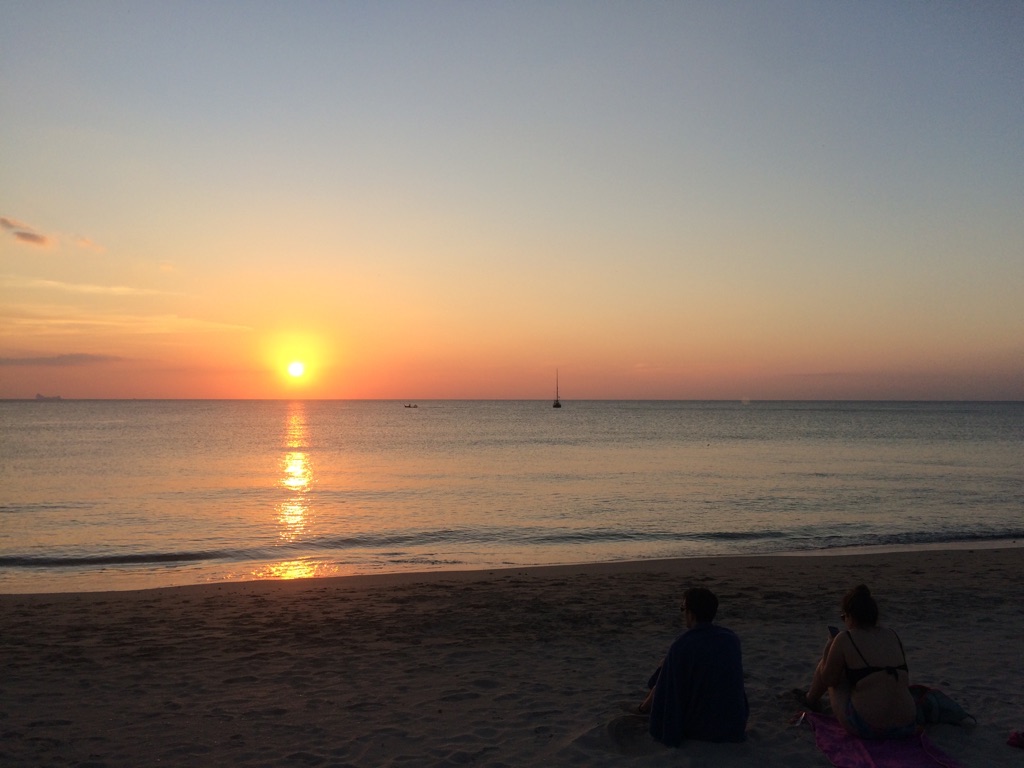
Not a bad view!!!
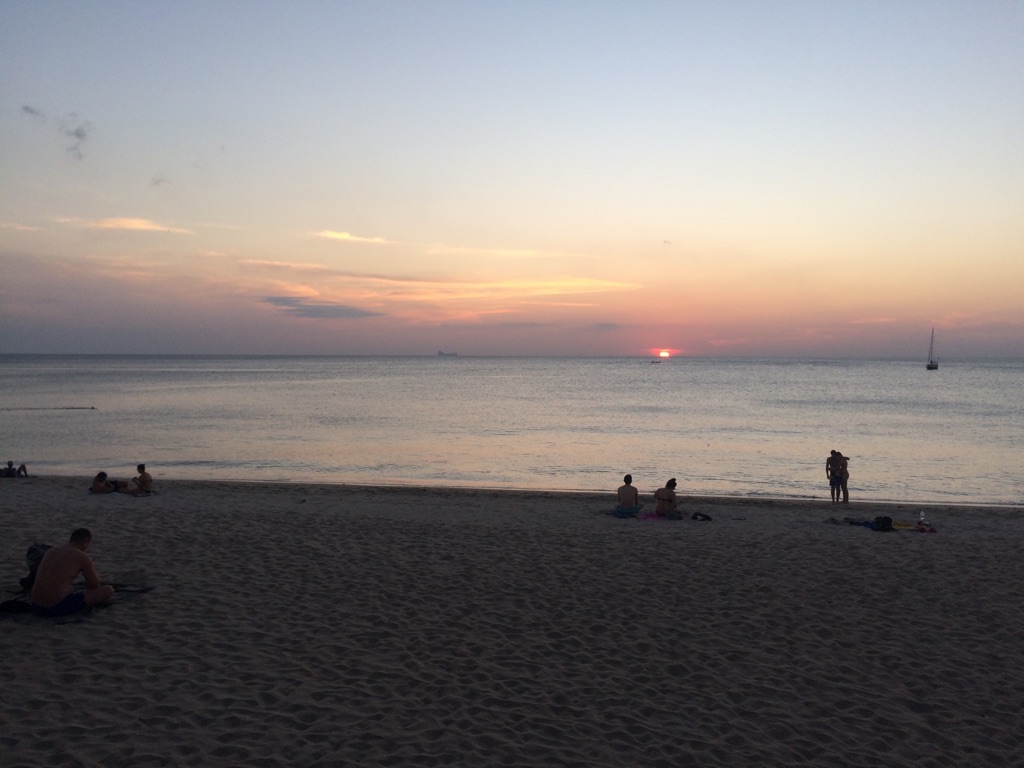
The sea water is warm, clean, relaxing. I think we are in paradise!
To the beach or to the swimming pool?
That, is the question! \240I could easily spend a month here - truly relaxing.
First, a 6:45 am walk and explore on the beach.
The off to breakfast. Many breakfasts are buffet-style, offering traditional American breakfast, but also fruit and yoghurt, pad thai, often soup, chicken, ham and sausage. Thailand loves sausages which looks more like weiners - although I’m assured they do not taste like weiners. True to form, I am not eating them. There is enough fish and seafood, vegetables and fruit to satisfy. \240I am sure, though, by the end of the trip, I will be begging for a hamburger!
Beer. Almost all beer is lager and not my favourite ales, however, I am having no difficulty sampling all available, several times a day - after all, we need the fluid intake!
Walked into town for some shopping, booked a Thai massage for tomorrow and back to the swimming pool. We cleaned up for our ritual sunset walk on the beach, and then ponder the daily question, where do we want to have dinner?
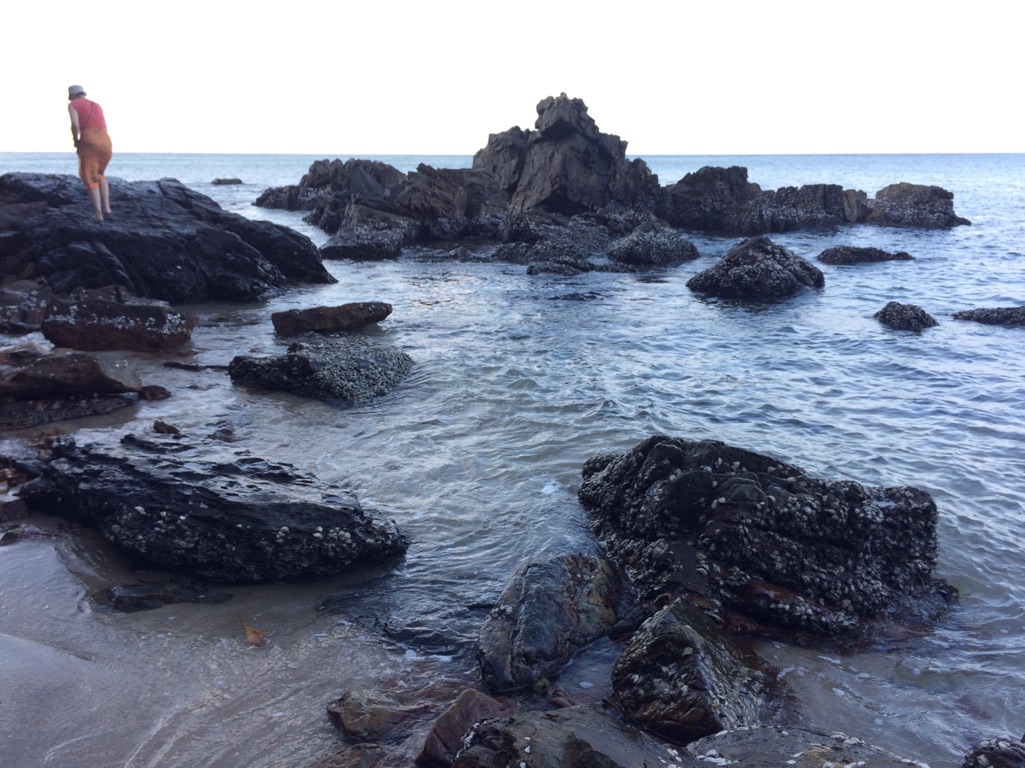
Morning walk on the beach, yes, before 7 am, really!!! 10,000 steps in by 10 am.
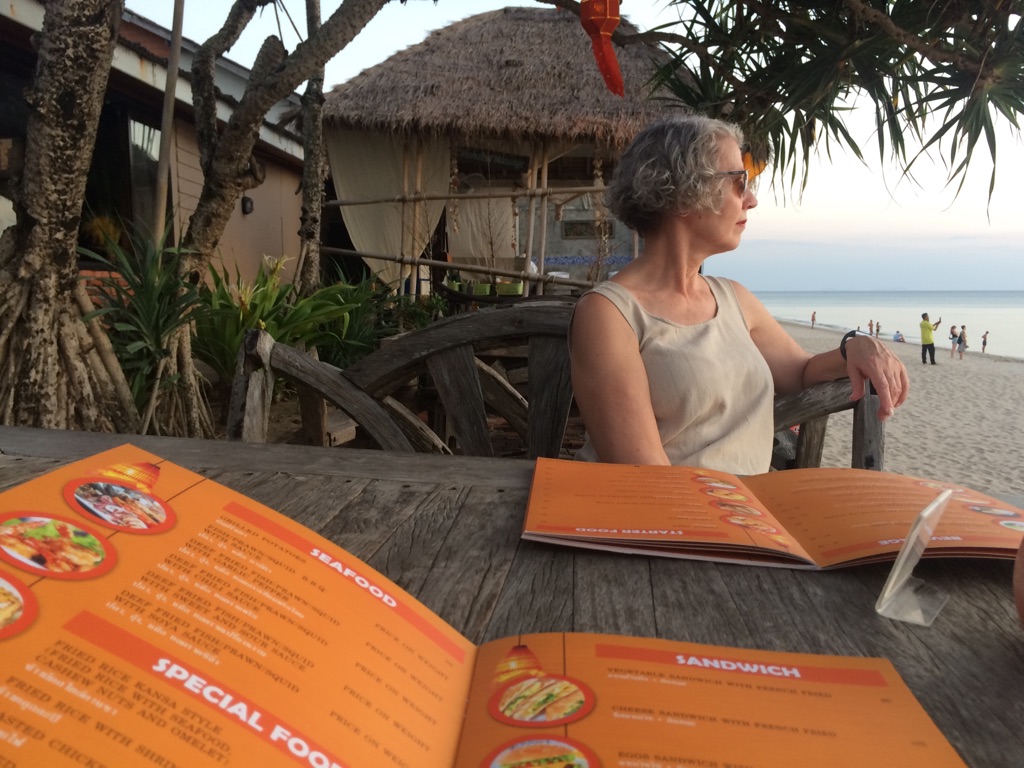
Kate pondering sunset and the state of the universe - then, what’s for dinner. No alcohol here, as we are in a halal restaurant.

Paradise? Except for the lack of beer!

Dinner tonight - fish, jacket potato and greens - wonderful and spicy.

Now for the beer and the sunset. Kate in the 2nd deck chair from left, enjoying both.

Our favoured spot for the evening
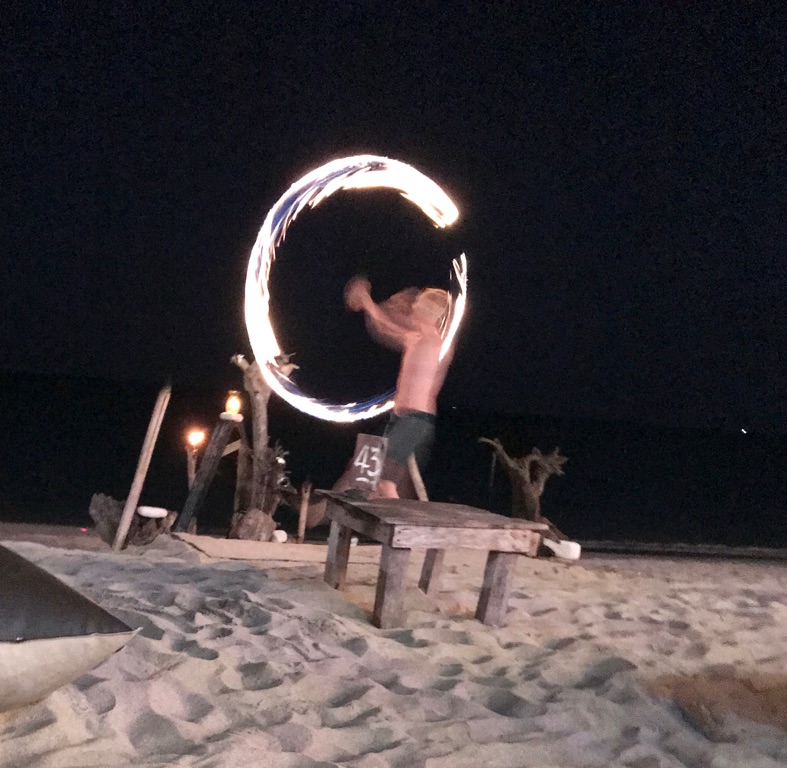
A poi performance for our entertainment.
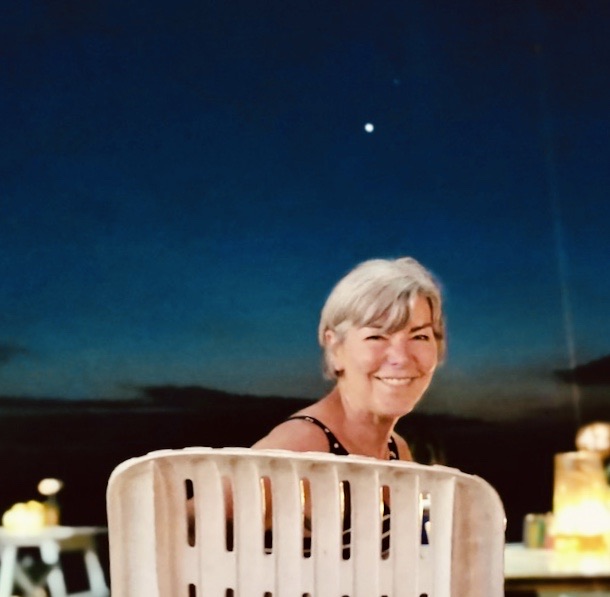
What a glorious day!
More beach, more pool, more veranda - and a massage
Today is our last full day here, more’s the pity! Wonder if they would employ us to clean rooms or something?
It is easy to while away the time on the veranda, or the pool, or the beach. There is a wonderful breeze off the Andaman Sea to provide relief from the heat; trees and shrubs are glorious, my house plants would be happy here.
Started out with an early walk on the beach and a lovely conversation with a Dutch couple, Petra and Roberto. Petra recounted her diving accident which landed her in an ICU for a week. She was released yesterday and here she is walking the beach today and looking ‘absolutely fabulous’. Stopped for breakfast on the beach.
Koh Lanta has, what seems, a substantial Muslim population - many halal restaurants and small shops. Every day, there are 5 Islamic ‘calls to prayer’, beginning at 5:45 am. They are called ‘adhan’, sung by a man, broadcast over a loud speaker. The ‘call’ is beautiful in the most haunting, moving way. I would like to investigate the mosque.
Everyone seems to co-exist in complete harmony here. Fortunately, Ko Lanta is not the party island that Phuket and Phi-Phi are - but it is obvious that tourism is the main occupation. \240Apparently, tourism has slowed dramatically this year, particularly from Sweden where many direct cheap flights were available. \240We were told that many Swedes are choosing not to fly and, instead, visit train-accessible countries, such as Spain, due to climate change concerns.
Thai Massage
To say this was fabulous is to understate. It is performed quite differently than the Swedish massage that we are used to. The Thai technique uses acupressure, body and joint manipulation and energy flow. Kate and I felt totally refreshed and energized - the practitioners were so gentle in manner, so precise in their movement and fierce in the amount of pressure applied. \240The experience, overall, was delightful along with some moments of near agony. We took ourselves across the street to refresh with a fruit smoothie.
Then back to our bungalow for swimming, shower and to the beach to stroll, watch the sunset and tonight’s question, “where shall we eat?”.
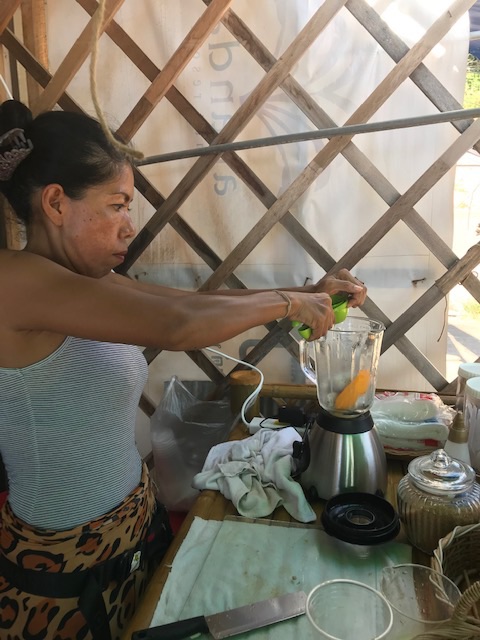
Our lovely smoothie maker...
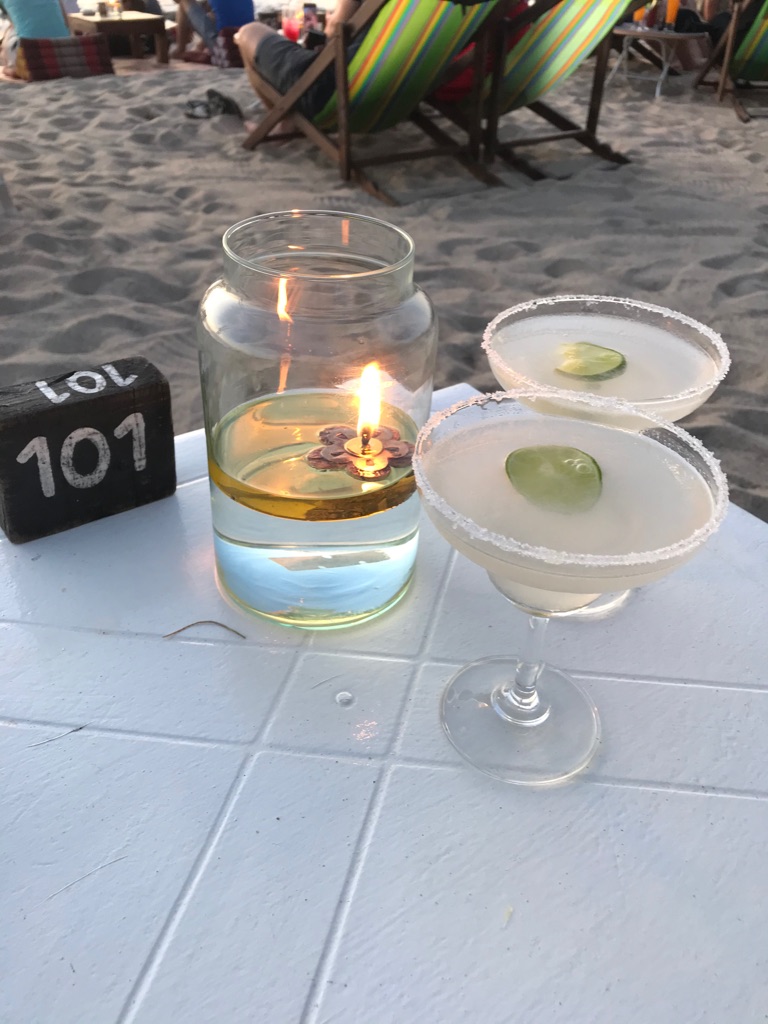
Margaritas on the beach...
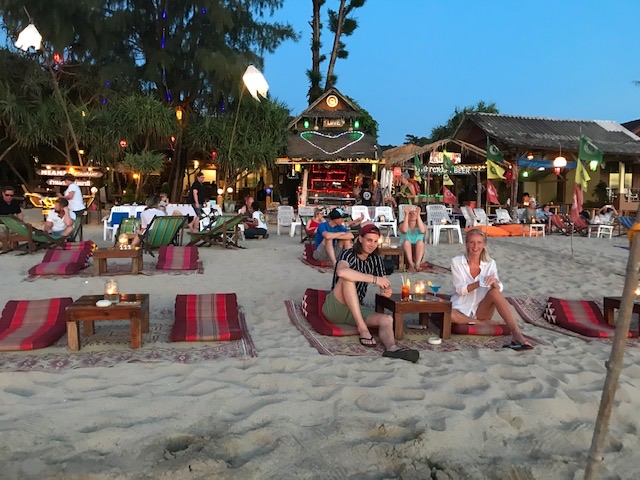
All set up to view the sunset...

Julie trying for a good shot...
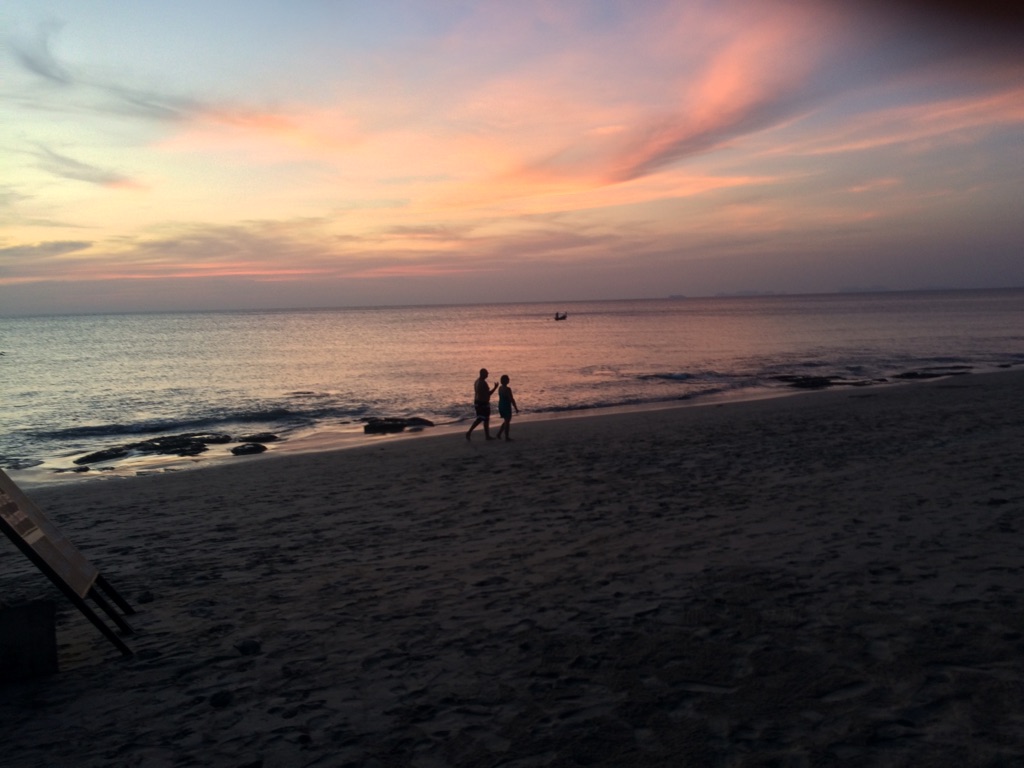
Sunset at full moon...
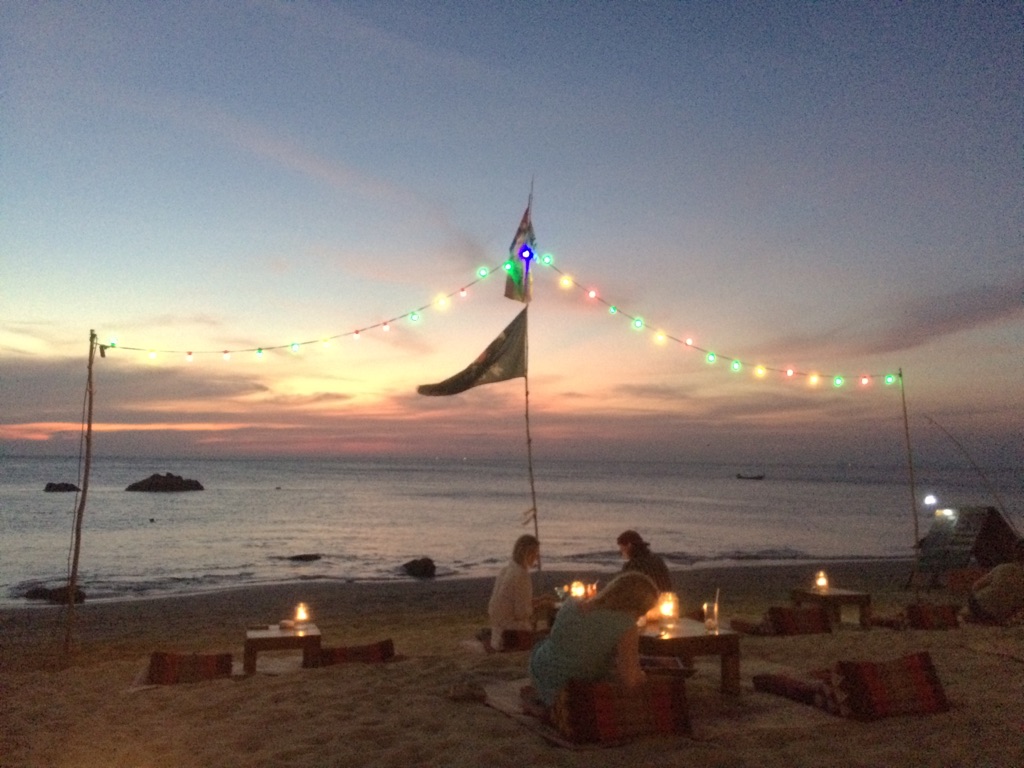
The view from a deck chair while enjoying a lime margarita...

How beautiful is this...snow and ice and sub-zero temperatures seem a very long way away!
Last morning in Koh Lanta
Back to the beach at 7 am, walked the full length, dipped in the sea and went for breakfast - once more a buffet which could easily double as dinner - who knew breakfast has salad, desserts and soup? I am missing cheese, though! Not readily available in Thailand.
Back to the bungalow for a nice relax on our shady and breezy verandah, then packing, another dip in the pool - and, alas, we check out and take the shuttle minibus, once more, back to Krabi.
We are going back to our previous hotel even though it was interestingly challenged. It is such a great location and hopefully our air conditioner works!
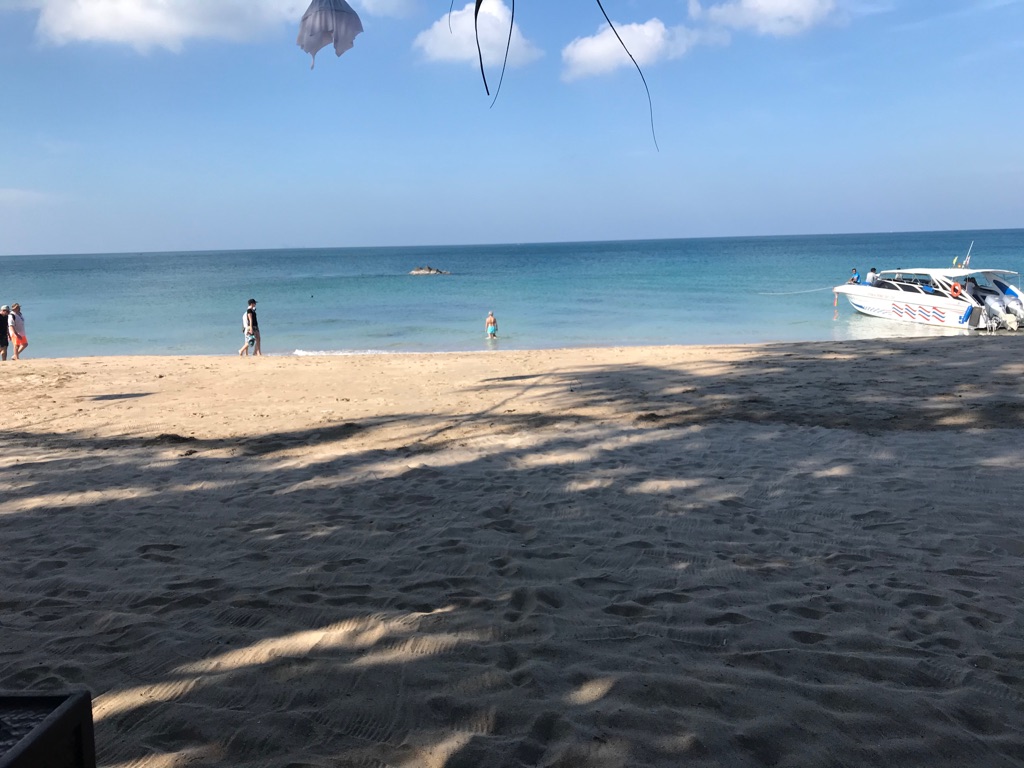
Last morning walk - and breakfast on the beach.
And then back to Krabi to our fabulous restaurant for one more fantastic dinner. \240This time our room was on the newly renovated 3rd floor - where everything works and everything is new and beautiful! \240Why didn’t we know this the first time we stayed here...
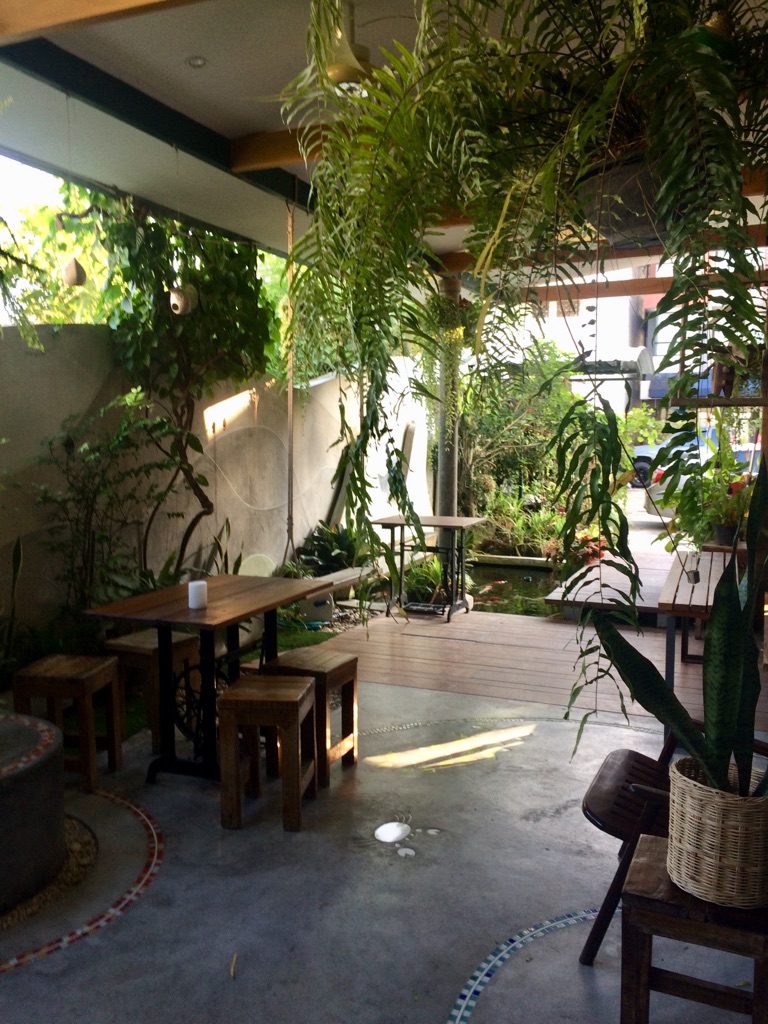
Last look at our lovely breakfast patio in Krabi - leaving Thailand part one. \240We will be back - after Myanmar!
Krabi-Bangkok-Yangon
Travel day. Taxi to Krabi airport, check-in, reorganize checked baggage as we are overweight from doing a bit too much shopping, board the plane and off we go to Bangkok. \240
Negotiating airports is no small feat \240- we had to change to the international terminal in Bangkok as we are flying to Yangon, Myanmar by a different airline, Thai Air Asia. Myanmar requires a visa so we had to go through passport and border control and, again, through security.
Now, we are sitting in the airport priority lounge enjoying wine and fabulous food - and Kate is having a neck massage.
This is all a bit nice! \240I have set an alarm as we are worried we will miss our flight!
Going to Myanmar is a highlight of this trip for me. I have been reading about Aung San Suu Kyi (state counsellor of Myanmar) as she testifies at the International Court of Justice in The Hague. I wonder what we will see while there and how to ask questions in a careful and respectful way. I have promised Kate that I will not get us arrested.
All smooth on the flight to Myanmar, managed passport control and immigration and, as promised, our guide, Dickie, and driver, Sunny, were at arrivals to pick us up. We stopped at the ATM machine to take out Burmese currency, $1 CAD=1145 Kyat. Myanmar does not allow the use of debit cards so all transactions are via credit cards, including cash withdrawals.
Dickie is with us for 2 days to escort us everywhere. He is absolutely charming and delightful and speaks excellent English. His grandfather was English, came to Burma during WW2, stayed, married and had a Burmese family, thus Dickie inherited his name!
Yangon surprised me. It is very modern, has a definite colonial feel (after all, it was a British colony from 1824-1948) and looks more affluent than Thailand.
Our hotel, named ‘Cloud 10’ is a lovely old hotel with beautiful gardens both in a courtyard and on a rooftop. We ate dinner in a restaurant just a few minutes away. It looked quite posh, was filled with young Burmese and we had no idea at all what dinner might cost. Strangely, for our first meal in Myanmar, we chose to split a hamburger and potato wedges (perhaps too much Thai food after all!). \240Delicious, especially with a Myanmar beer. The total bill was 14,300 kyat ( that is $6 each in Canadian money).

Myanmar beer and roasted, salted beans - delicious.
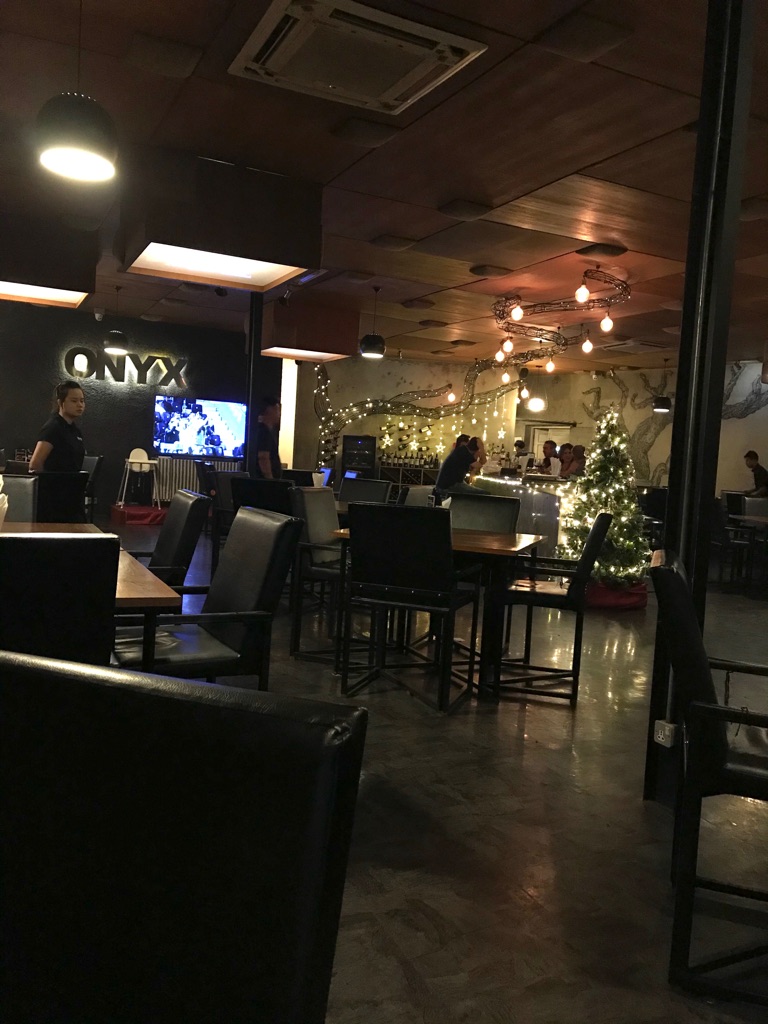
The Onyx restaurant - just down the road from Cloud 10 hotel.
Kate here: There is a nod to the Christmas season, after all, in this predominantly Buddhist country. We’ve seen tree-shaped lights.
A Doha is a spontaneous poem. Here is my Doha #1
Travel Days
to know that which you didn’t know, \240 \240 \240 \240 \240 \240 \240 \240 \240 to walk in comfort and discomfort, \240 \240 \240 \240 \240 \240 \240 \240 \240 \240 to feel the space around the moments, \240 \240 \240 \240 \240 \240 to laugh at the mind that grabs.
Seeing the sights in Yangon
We start the day with breakfast in the beautiful garden before pick up by our guide, Dickie, and driver, Sunny.

Breakfast terrace at Cloud 10 hotel, Yangon
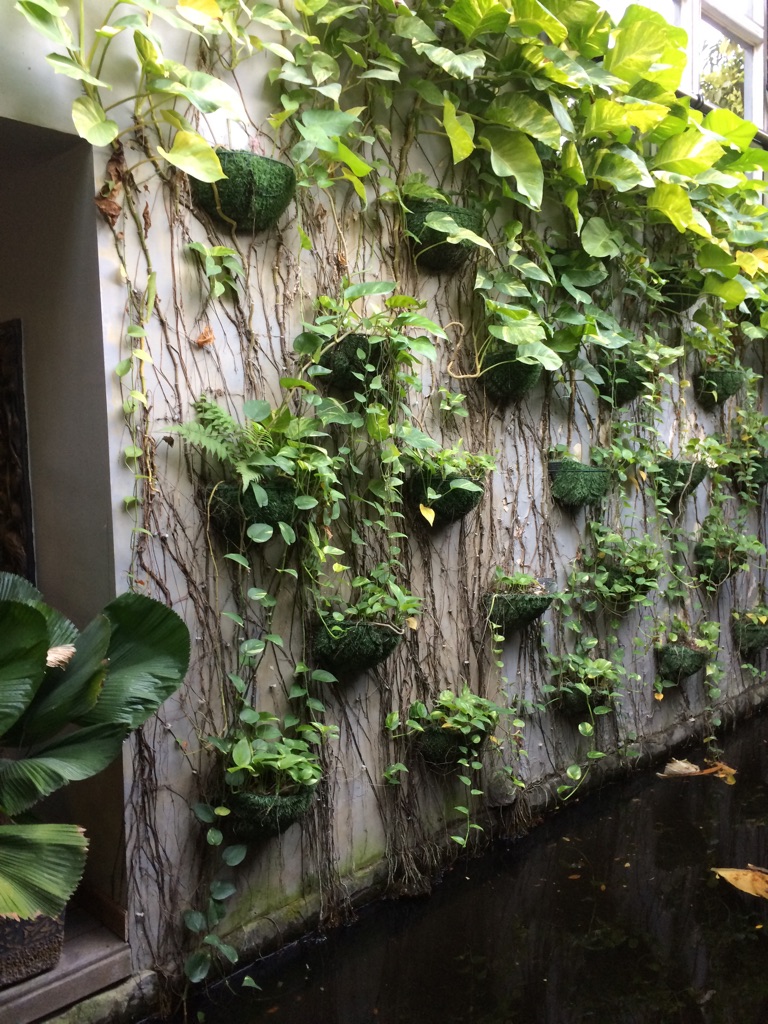
The garden living wall. \240Gardens everywhere - I approve!
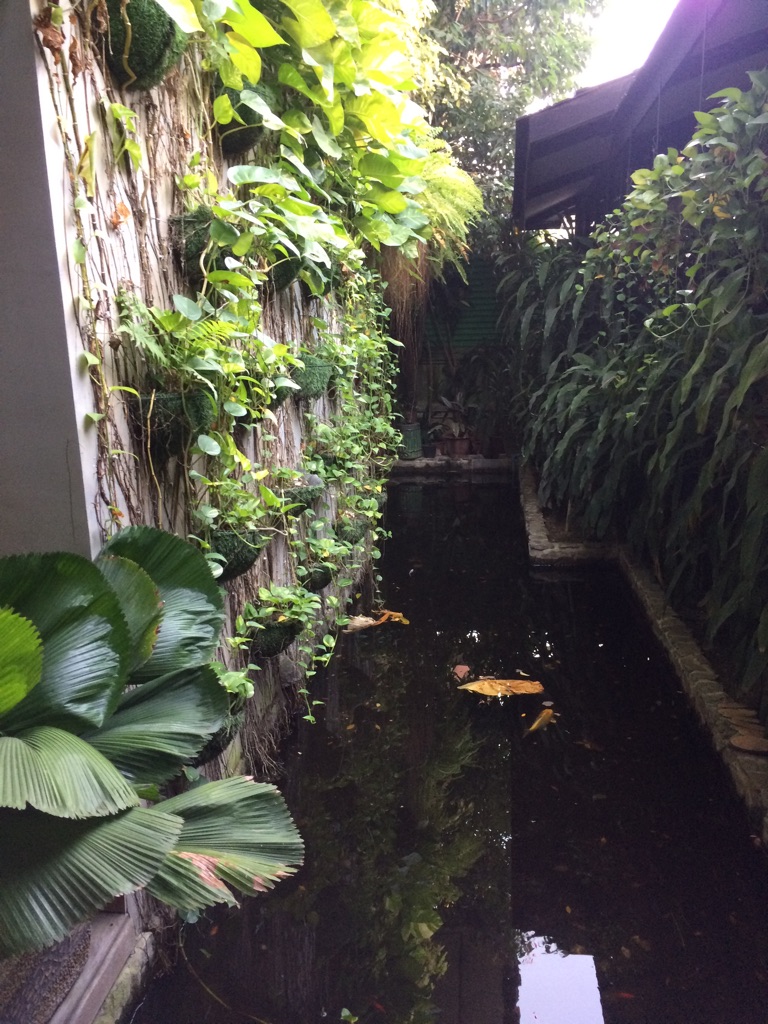
In planning this trip, we had a bit more concern about travelling in Myanmar due to ongoing political and military conflict, and because few western travellers visit. So, we decided to book a 2-week private guided tour with Khiri Travel company which includes hotels, all transportation, a guide and a driver. \240The cost was about $2500 CAD.
What a good idea this was - we will see and do far more than we could possibly do on our own. \240However, we could not have anticipated how busy we would be, how much we would see and do and how exhausted we would feel (mostly due to the heat and sun). \240 But, in return, we are seeing the real people of Yangon and how they live and work as well as the sights.
Here are the highlights from only our first day::
1. \240Walking the streets and visiting the market.
This was like entering a doorway to 50 years ago and we truly had to pinch ourselves. \240All felt magical.
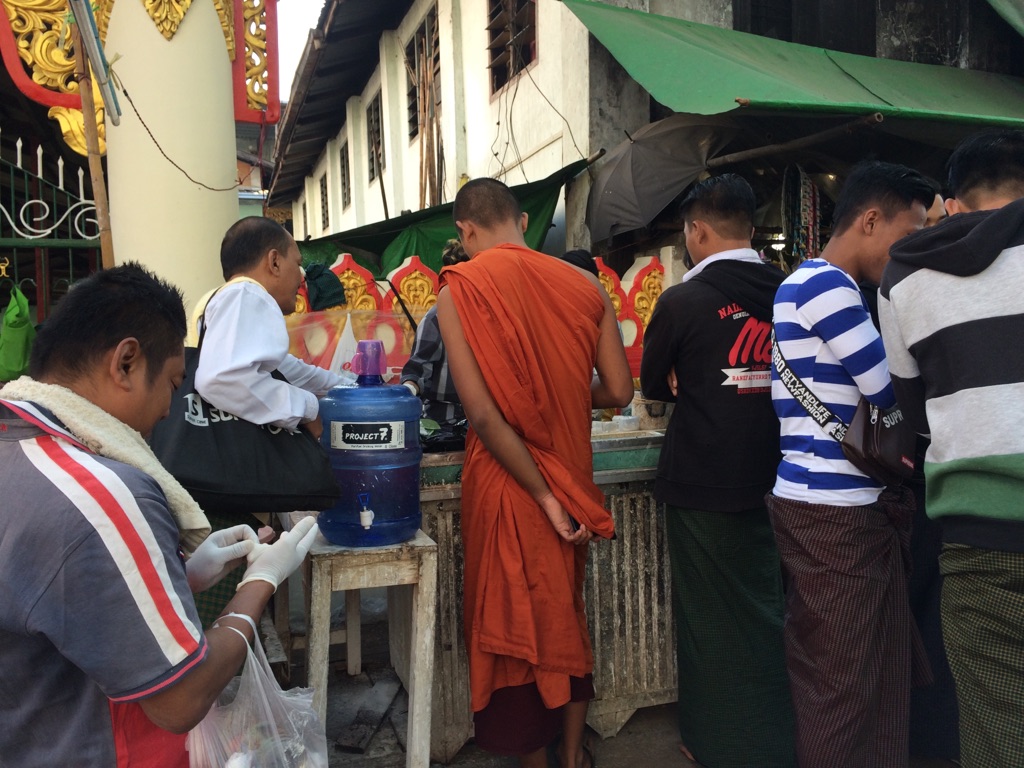
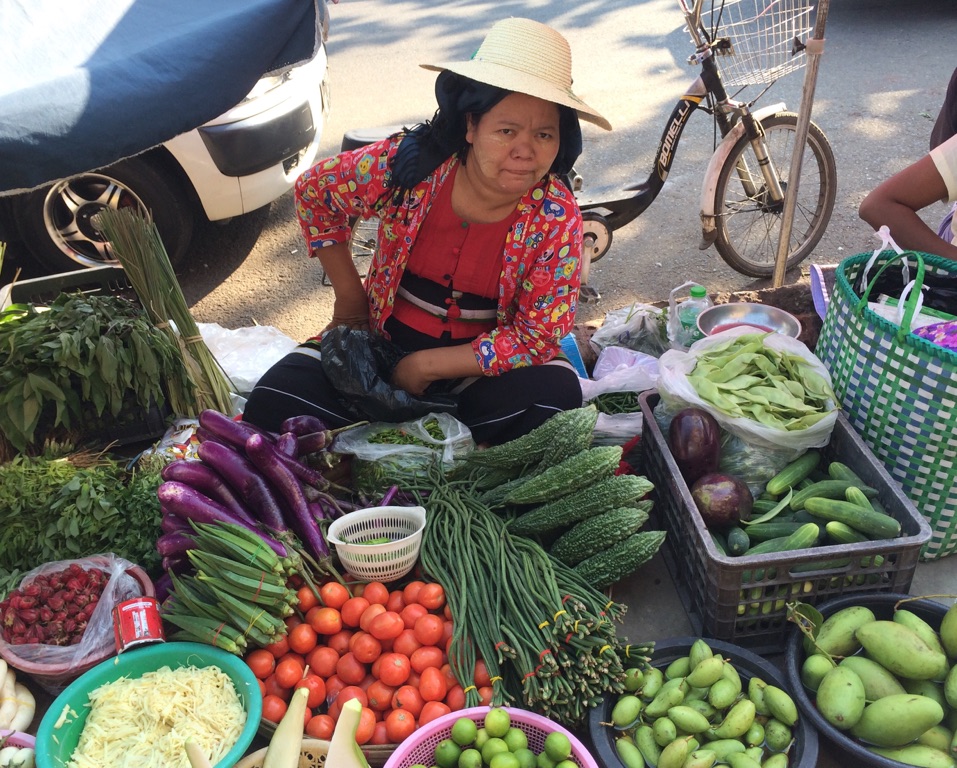

Young monks with ‘Buddha’ bowls - restaurants happily donate food to the young boys. Many are orphans wh are cared for and educated by the monasteries.
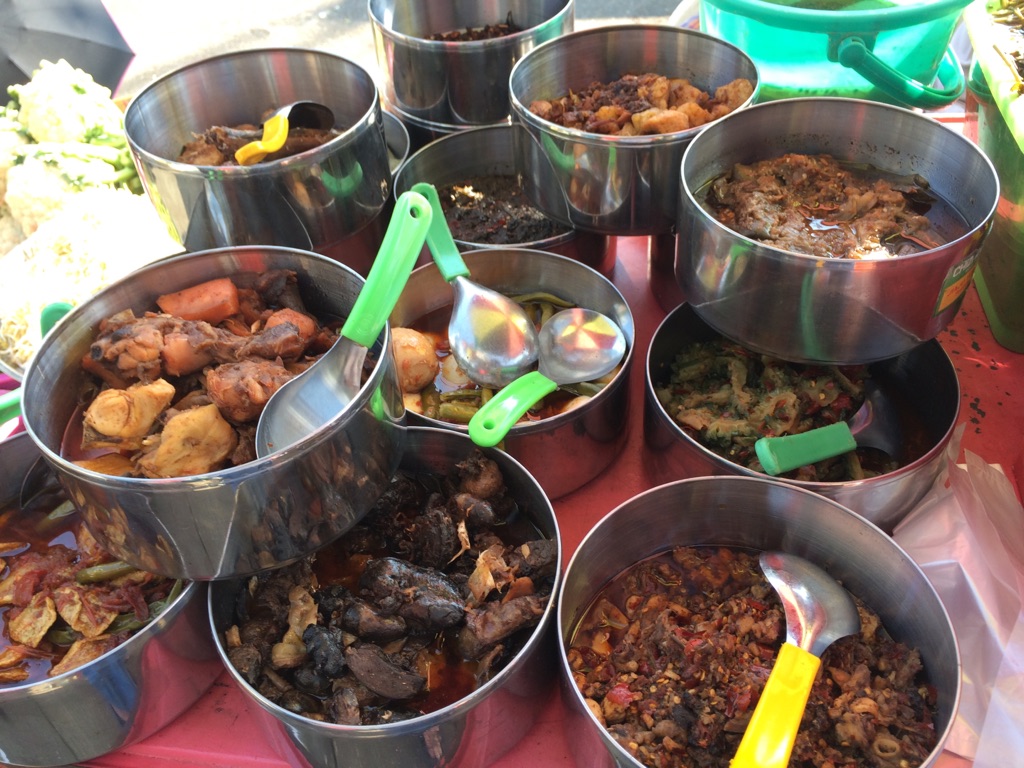
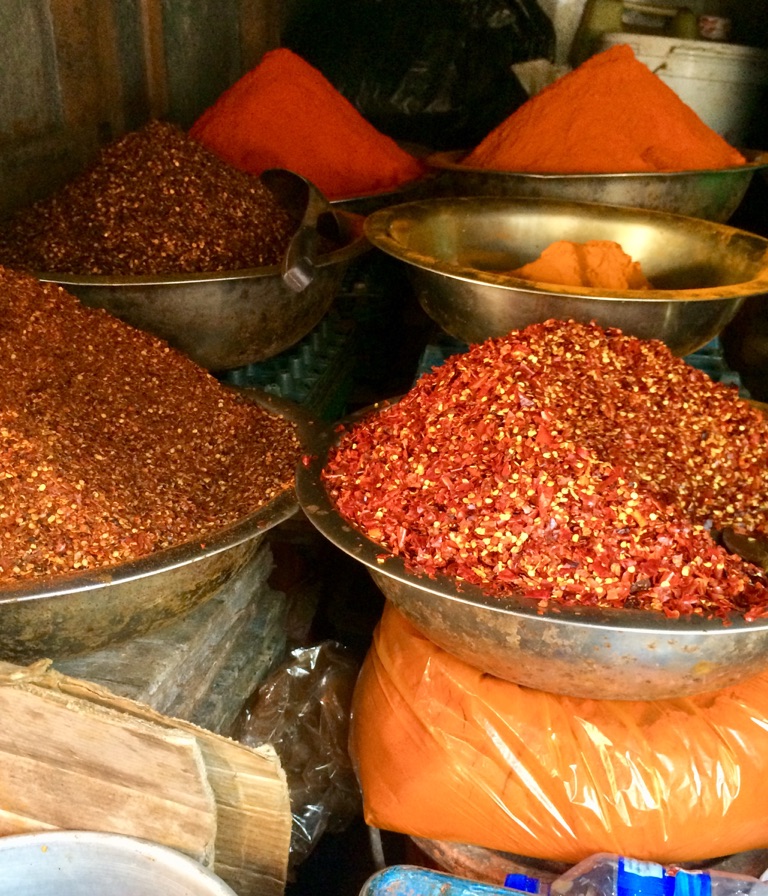
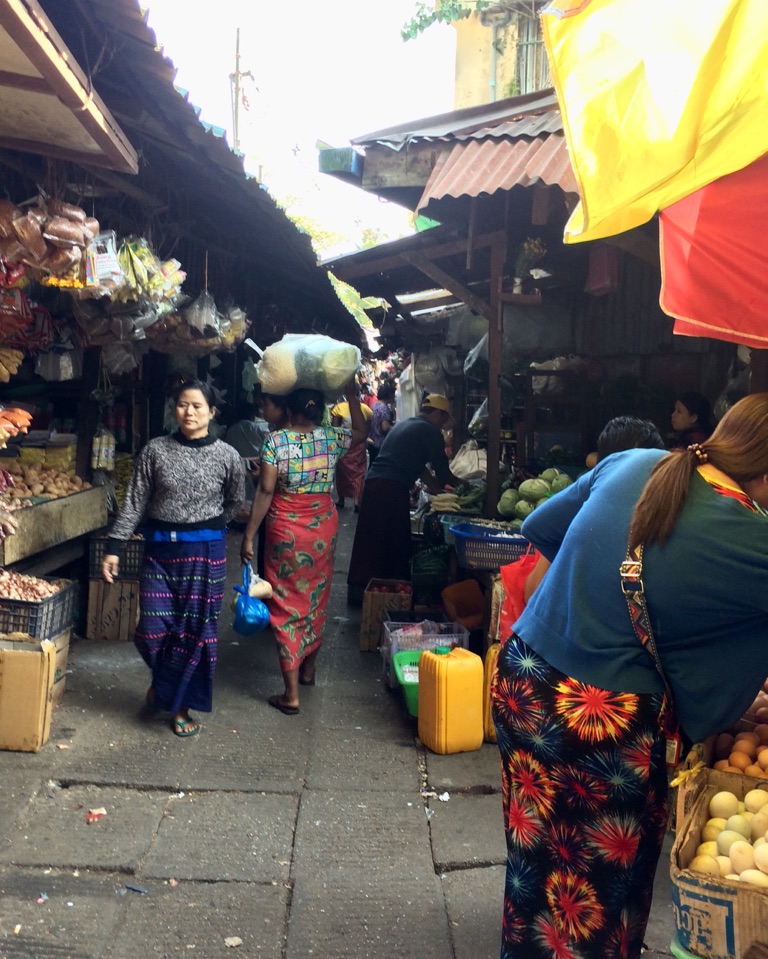
Men and women wear traditional dress - the longyi - a wraparound skirt - instead of trousers. \240Modesty is de rigeur in Myanmar and foreign visitors are expected to respect this cultural norm. It was actually lovely to see both women and men in traditional dress - they wore the longyi so well and with such grace and elegance. \240It certainly helps that almost everyone is slender.
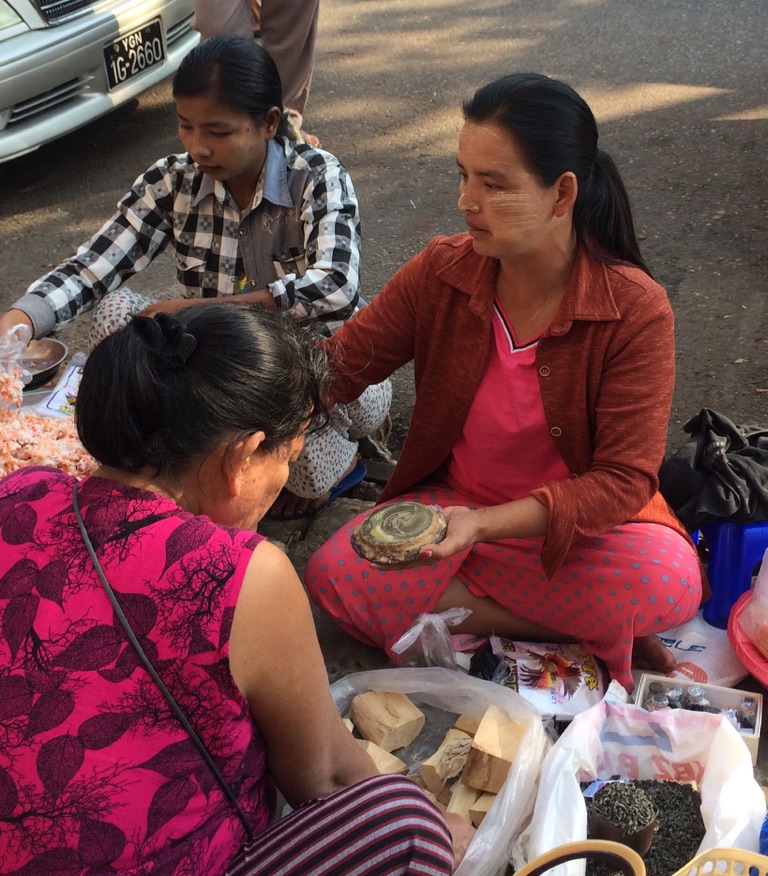
Many of the women wear a face paint paint, called thanaka, on their cheeks - it is considered very popular and stylish - we see it everywhere. Thanaka is a creamy yellow and used as a skin whitener, sunscreen and decoration. Some of the younger girls draw creative designs. We only saw thanaka in Myanmar, nowhere else in SE Asia.
2. The Shwedagon Pagoda
The pagoda dominates the skyline of Yangon and has existed for 2500 years; it has been much restored, refurbished and rebuilt along the way. \240Foreigners are charged admission but those who are Burmese can visit with no charge. Somehow, this just feels right! The pagoda is beyond amazing - I cannot do any description justice, so can only provide photos.
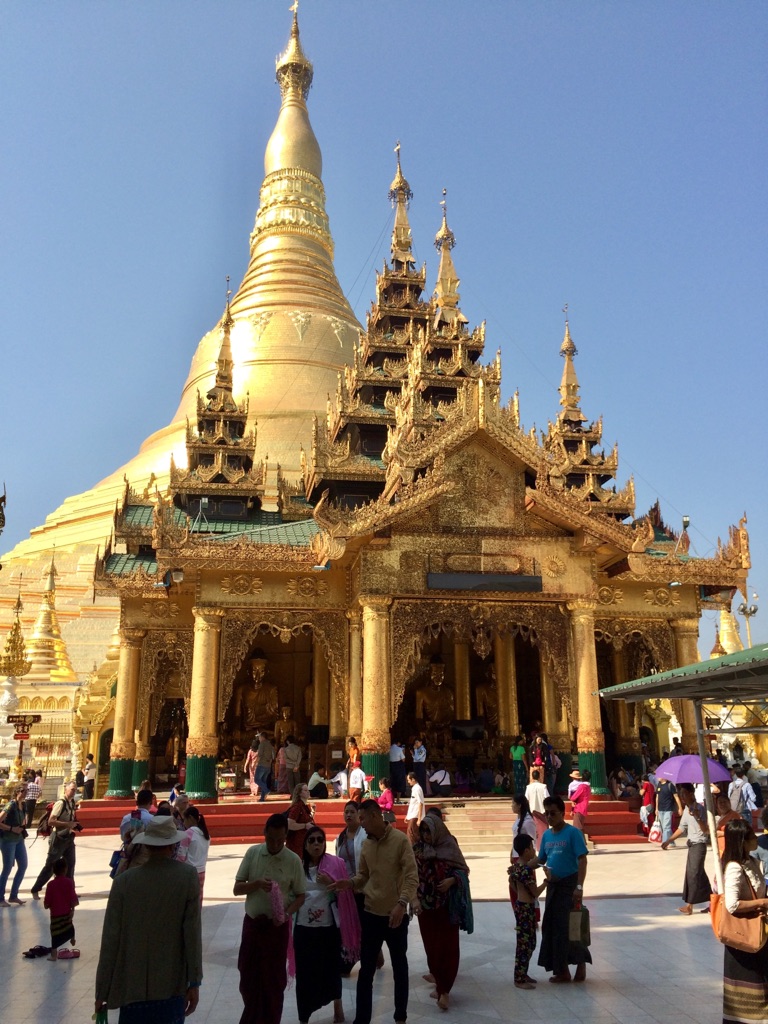
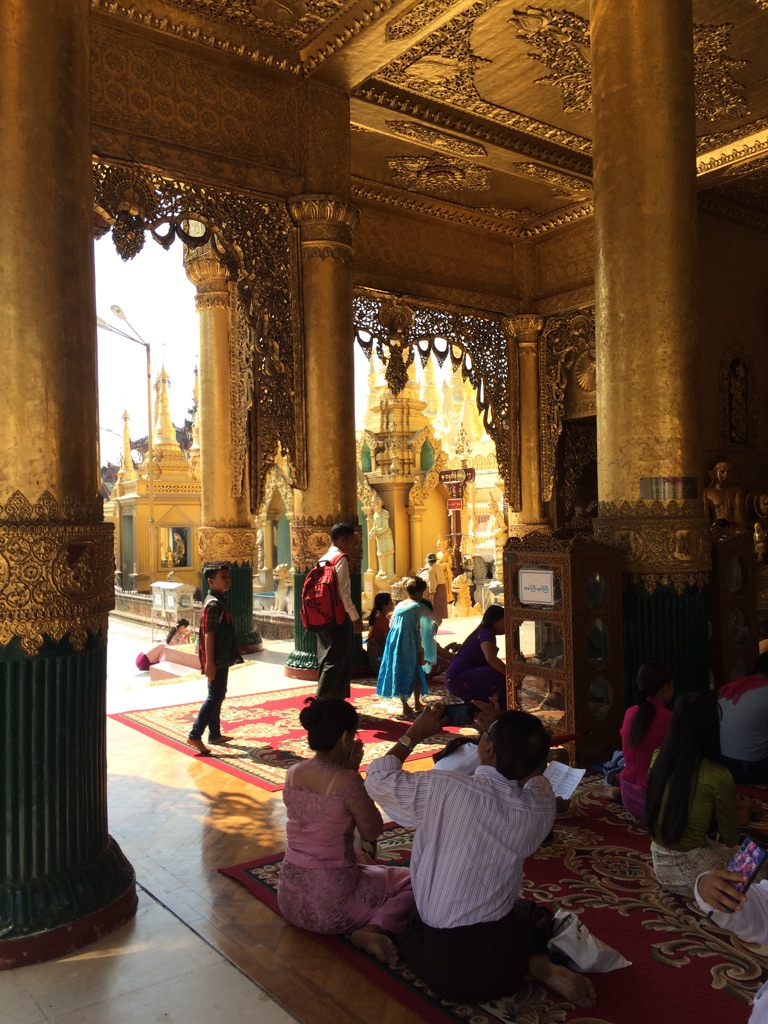
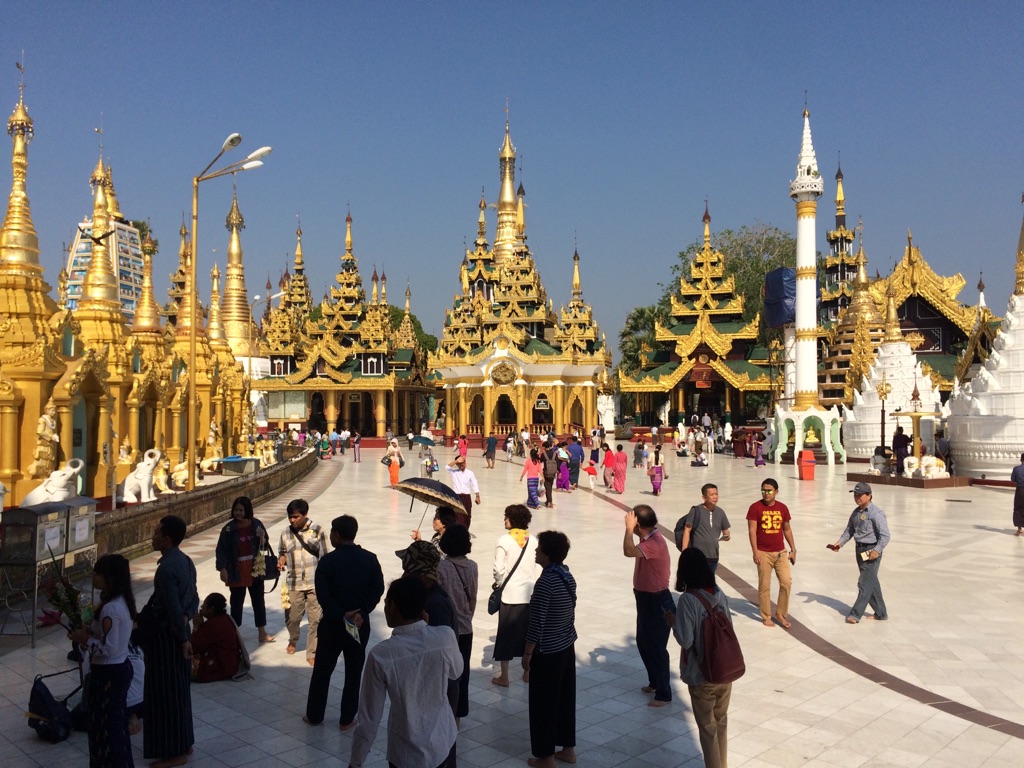
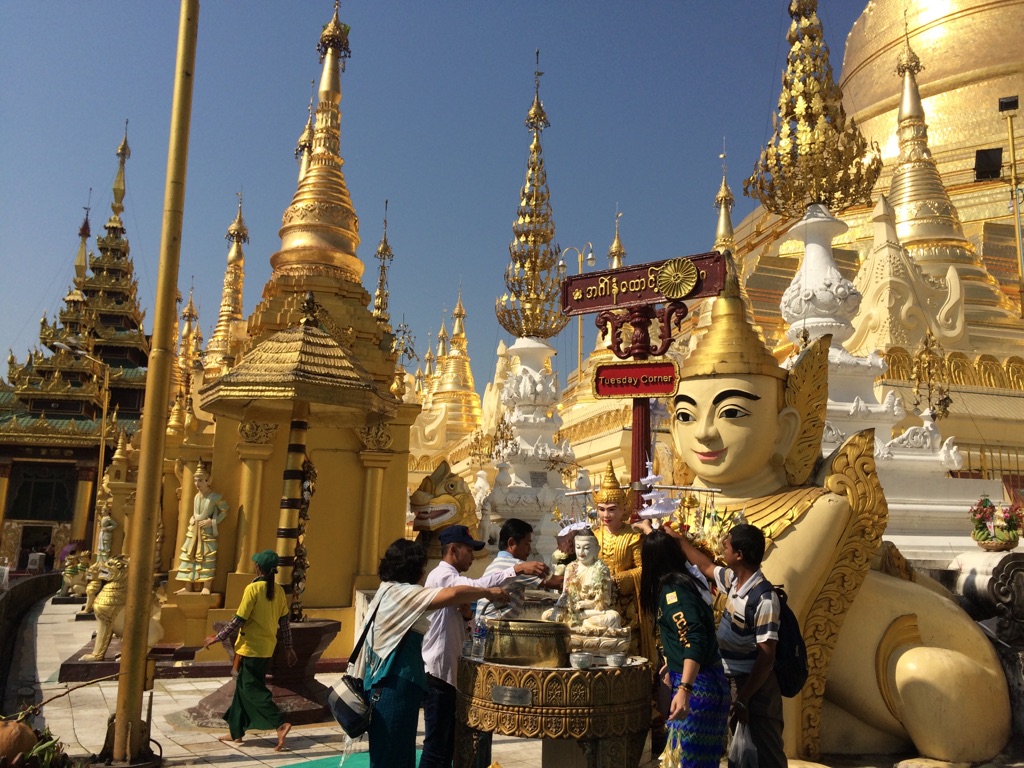
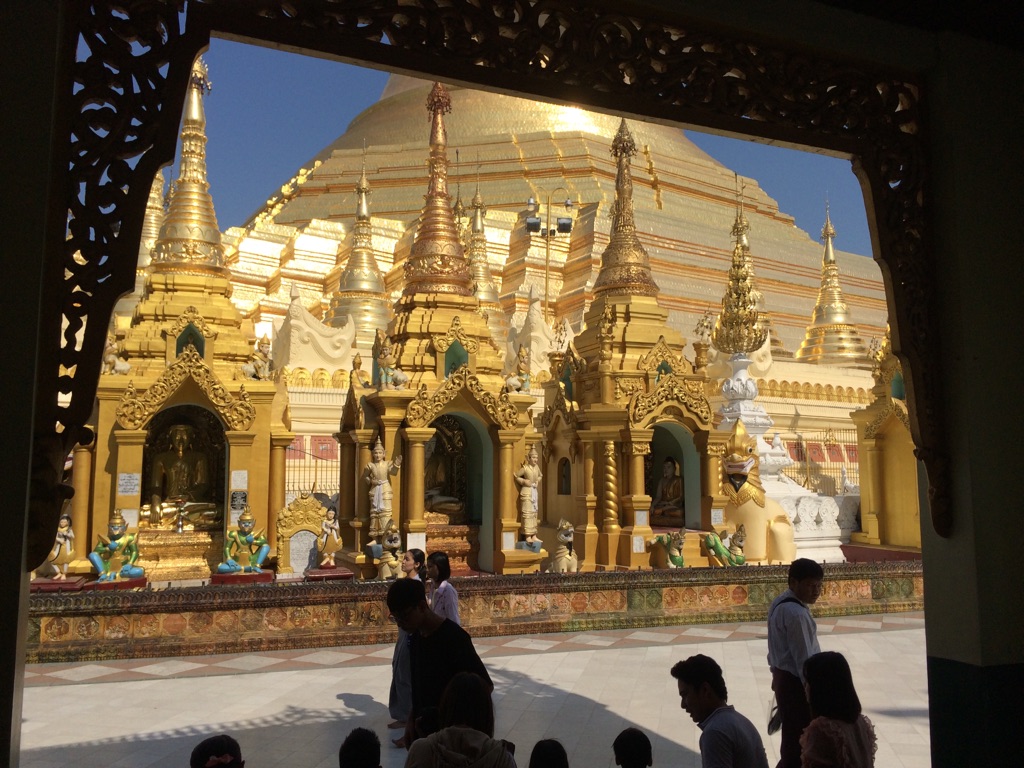

Inside the pagoda are many small shops and fortune tellers. Fortune tellers are very popular, birthdates and the day of the week on which a person is born are significant for personality, health and fortune. \240We actually visited one as part of our tour with Dickie.


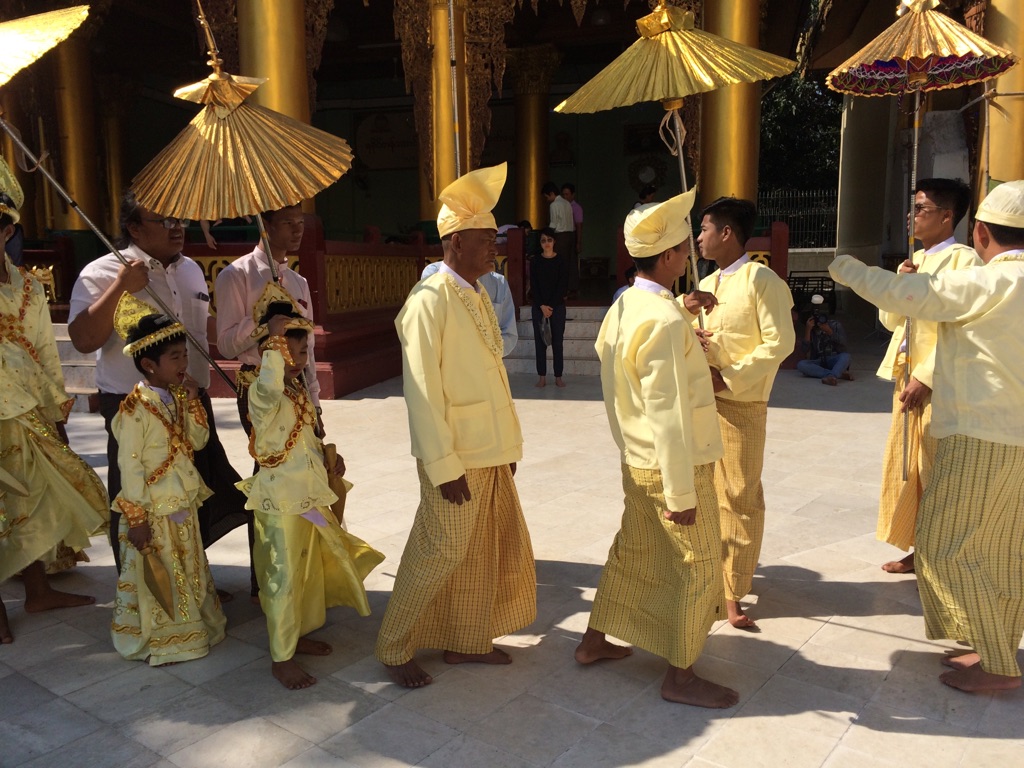
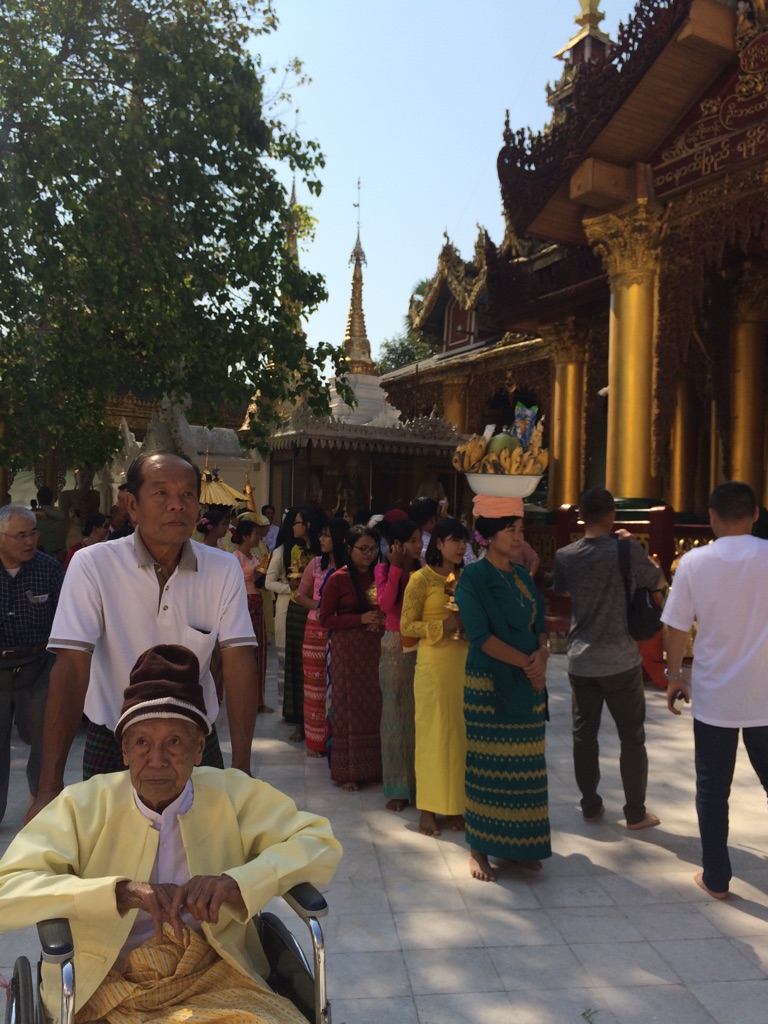
On the Road to Mandalay (with apologies to Rudyard Kipling)
Apparently, the road to Mandalay in Kipling’s poem refers to the Ayarwaddy River and not an actual road (this according to our Burmese guide).
We arrived early morning by plane from Yangon and were picked up by our guide for the next 3 days, Zani, equally as charming as Dickie. I am now convinced that a guide and a driver is the way to go
Straight away we went walking on the U-Bein bridge, built in 1850, and at 1.2 kilometres long is thought to be the longest bridge in the world built out of teak. To say that this bridge would not pass code in Canada is an under statement! Magnificent views though.

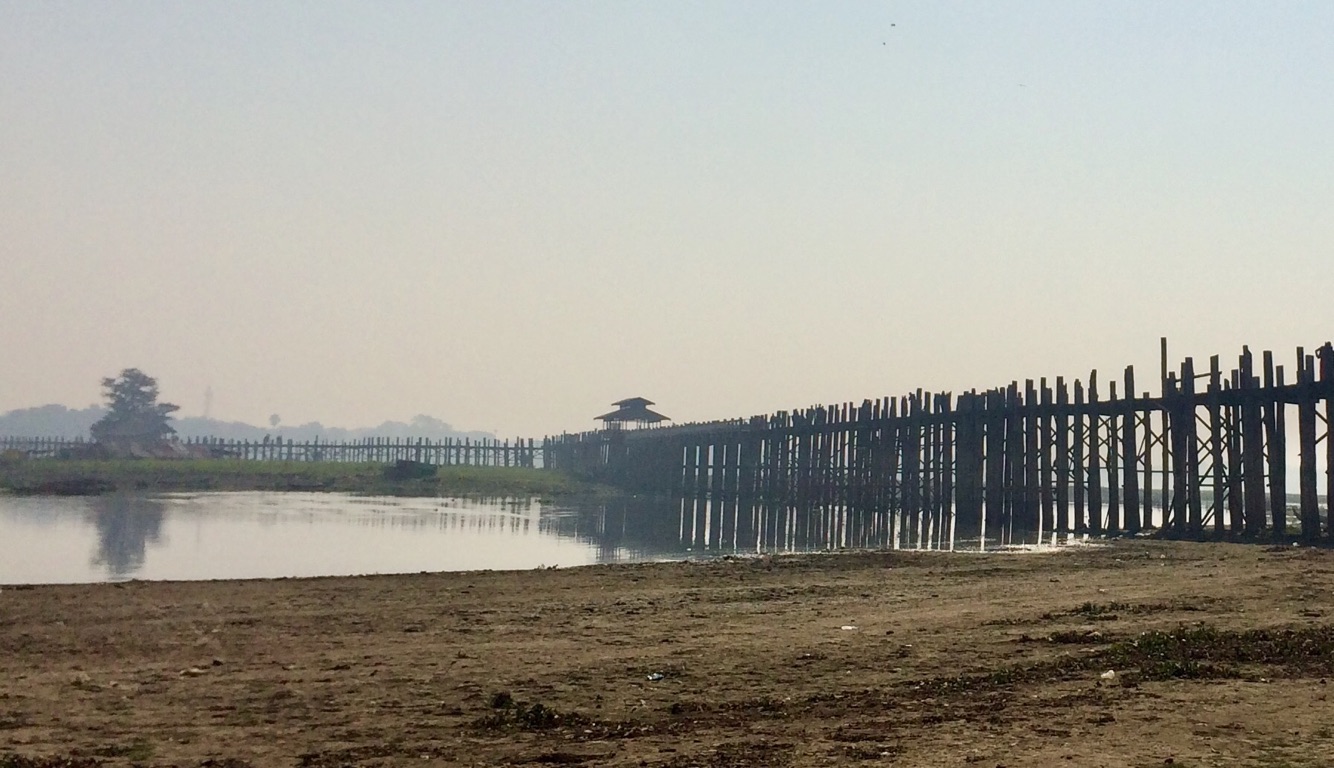
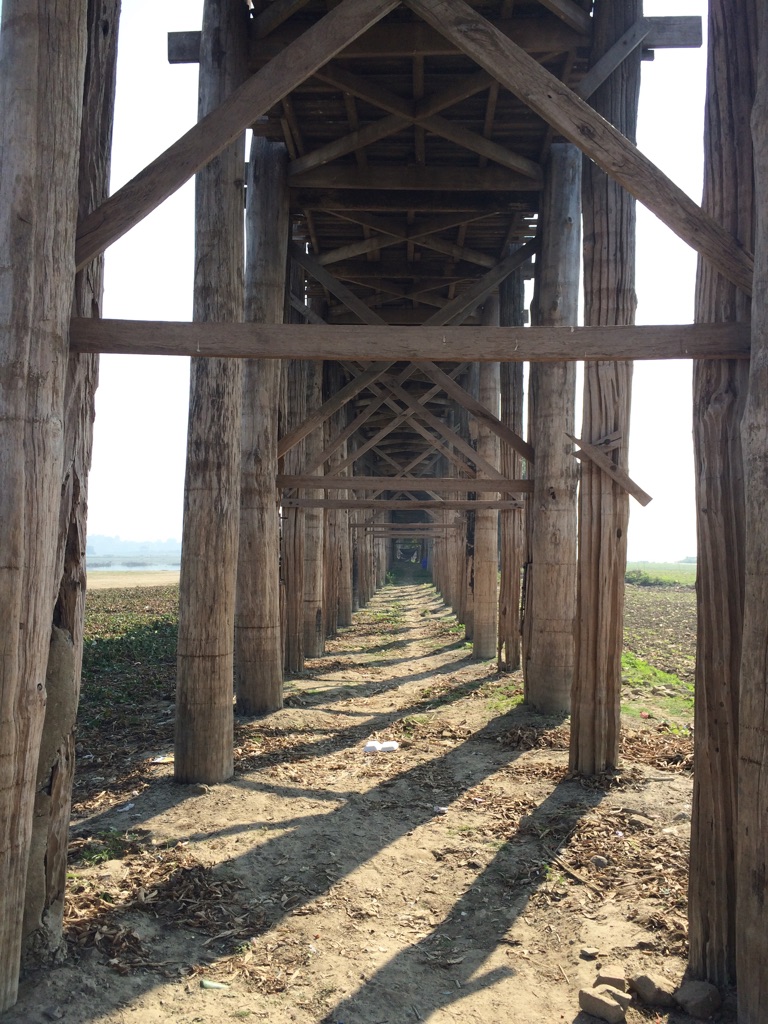
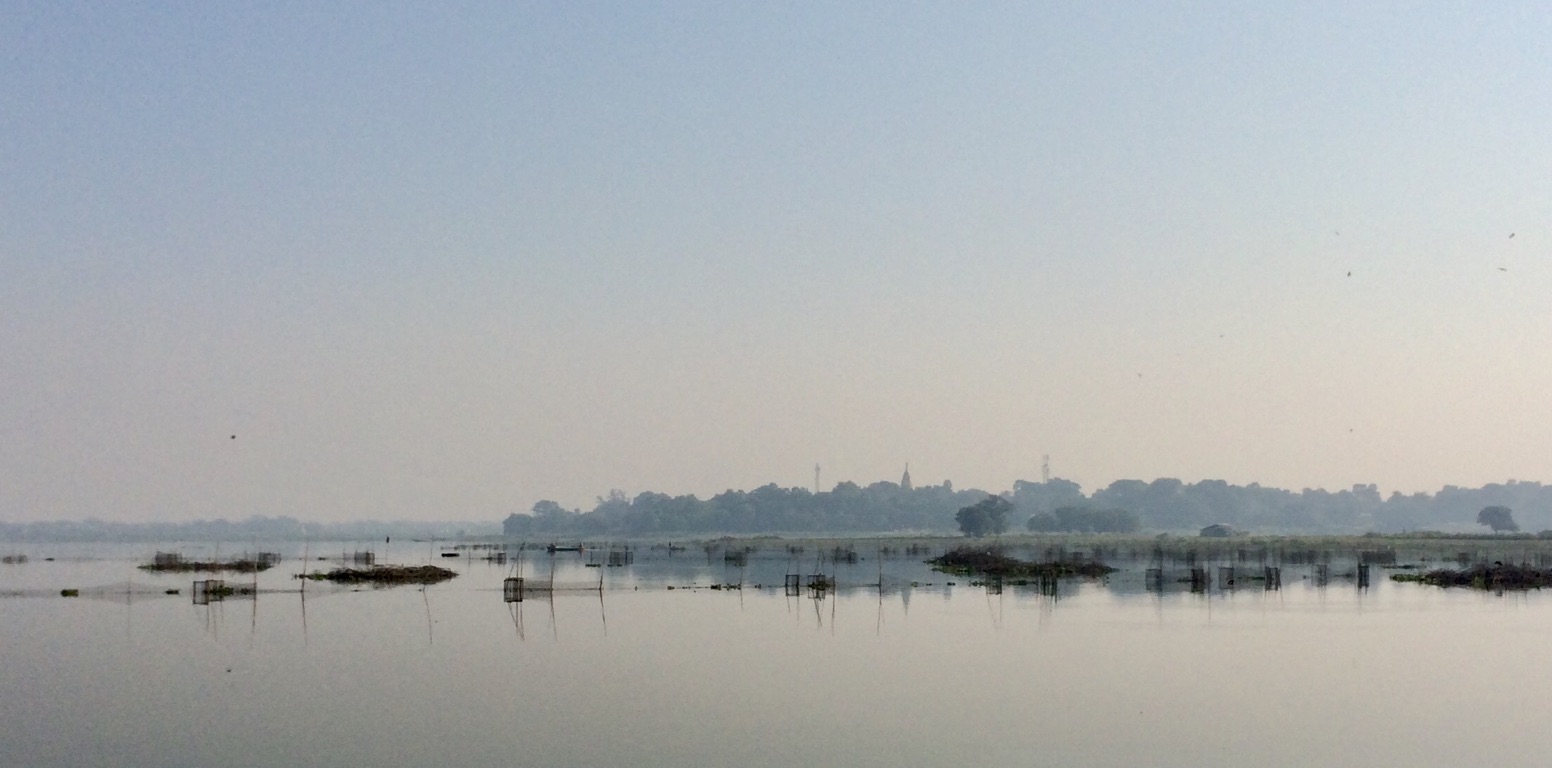
View from the bridge
Then we were shown the industry of the area. Probably the best thing about taking a tour is being able to see how people live and work. Outside of Yangon, there are very few westerners and we were greeted with both curiosity and generosity.

Silk shop

Fantastic puppet display

Buddha sculptures - building casts, building with bronze - some take 12-18 months to complete. I bought a bronze wind chime to hang in my garden.
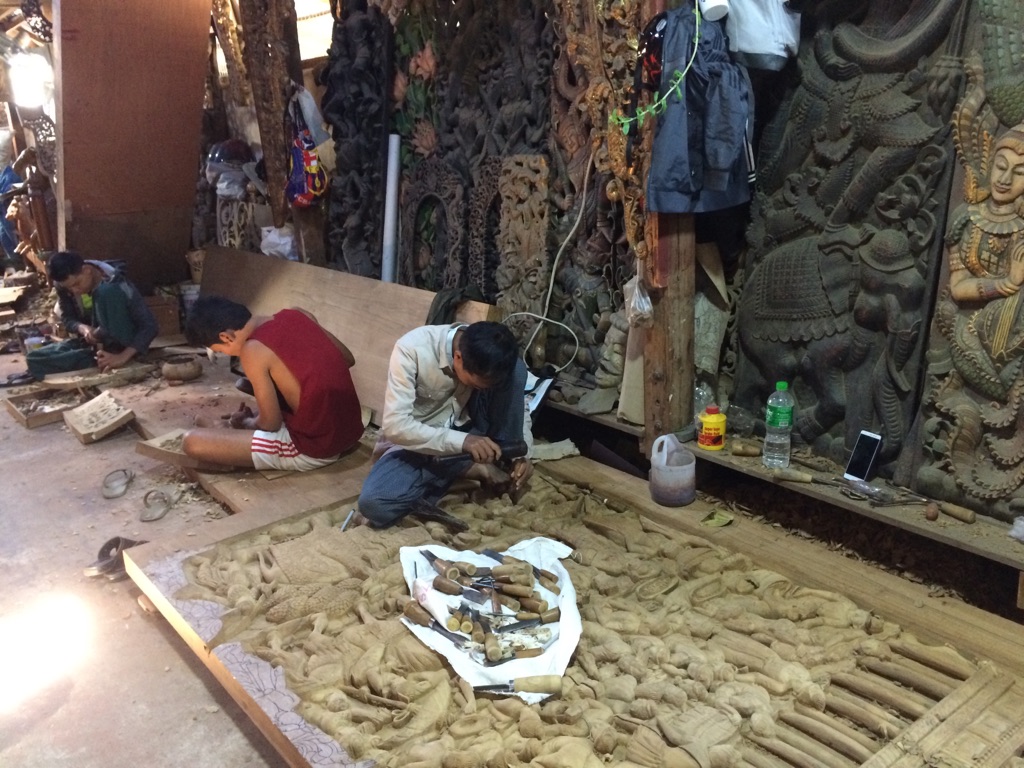
Intricate wood carving
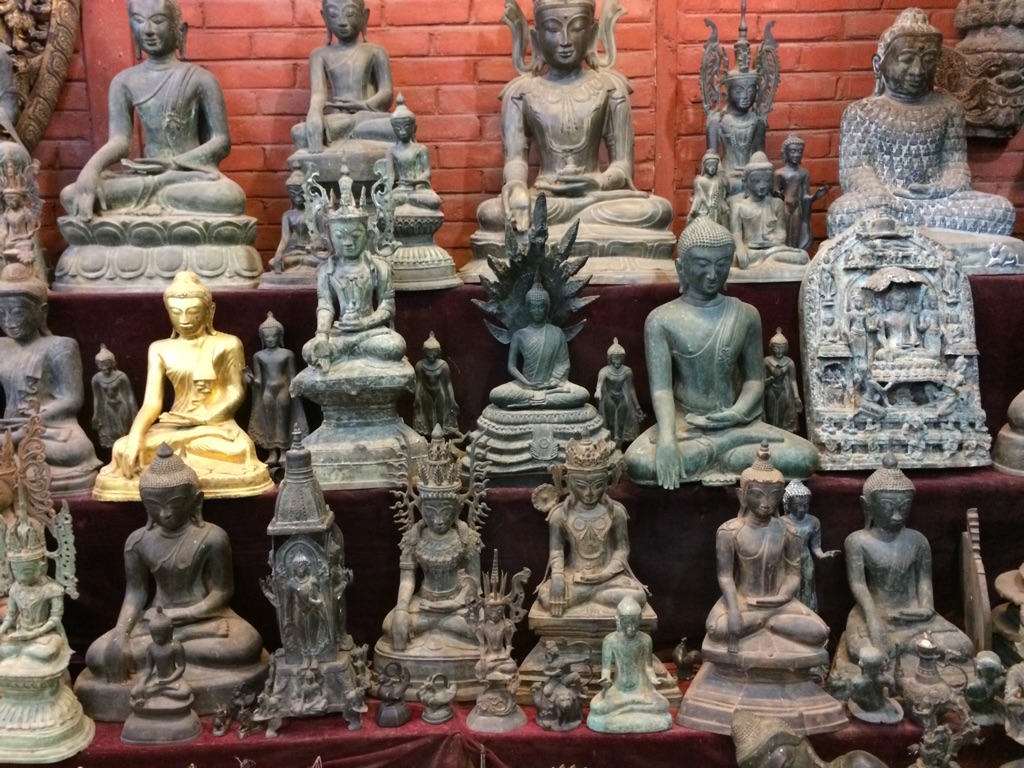
Bronze castings
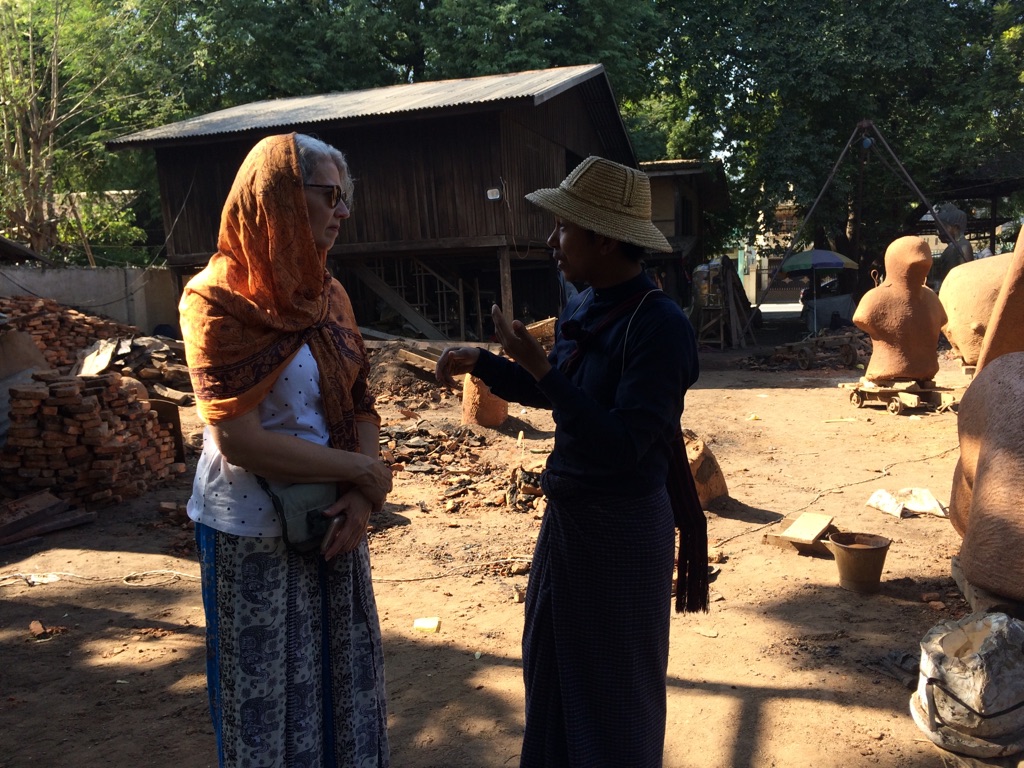
Zani telling Kate one of his wonderful stories about life in Myanmar.
Then a trip to another pagoda:

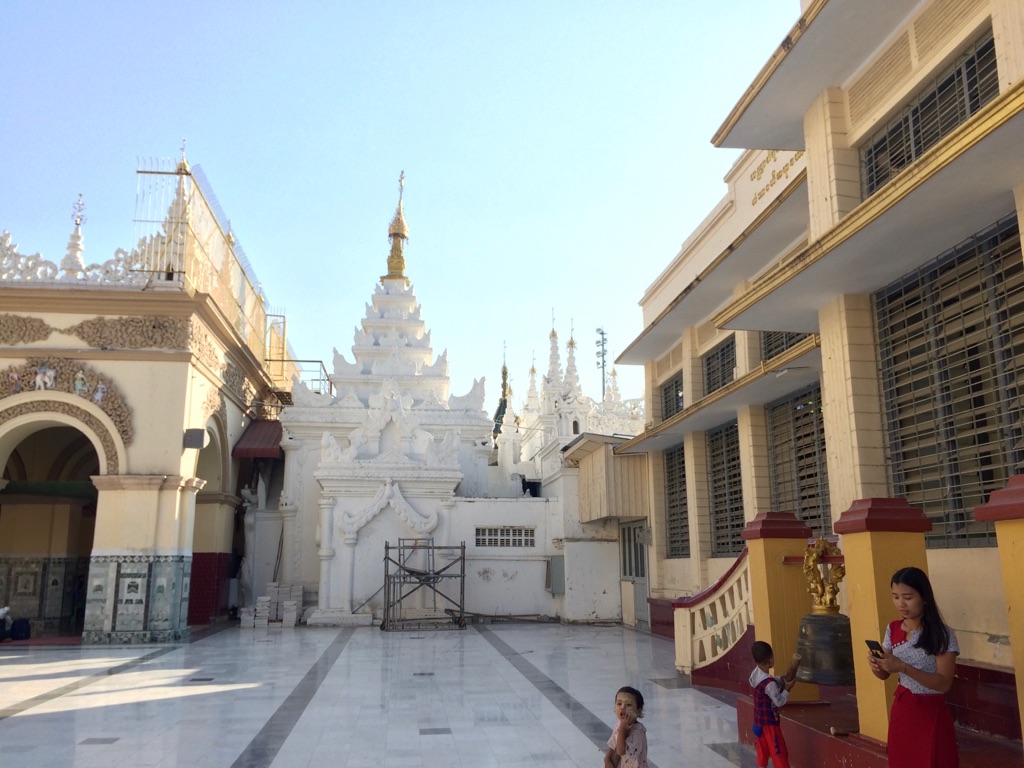
And then, at the end of today’s tour, we drove \240 along a road where many people lived in bamboo shacks with no plumbing and cooked communally at open fires. \240We were so aware of the wide divide as we, as tourists of the first world, were driven in an air conditioned car to a lovely hotel with a swimming pool, a luxurious room and a roof top bar with a fabulous view of the sunset.
We feel fortunate and privileged to have these experiences. We are acutely aware of the very thin line that separates our lives.
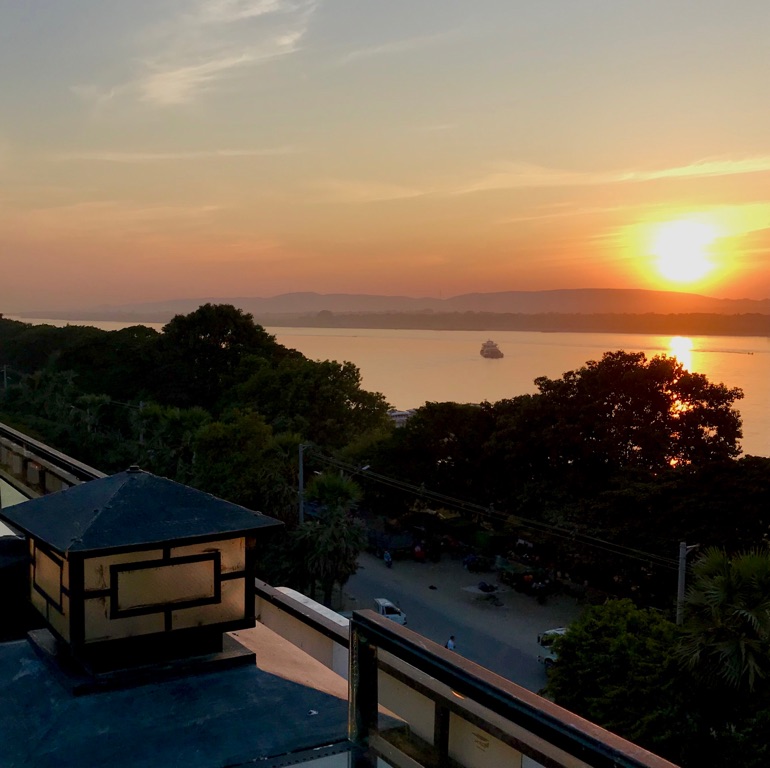

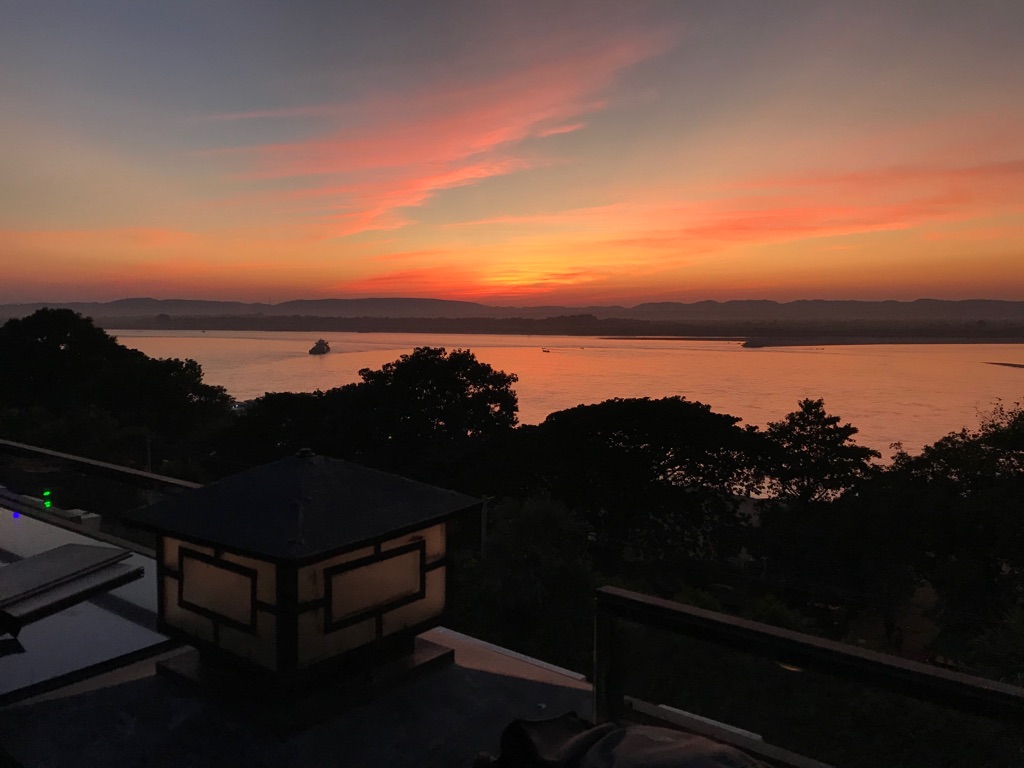
Meditation, Nuns, Monasteries and a horse and cart
We started the day with a trip to a monastic centre, high up in the hills outside of Mandalay, to learn the art of meditation. Under the direction of 2 nuns, one aged 67 and one aged 26, we sat on the floor for an hour and meditated - an interesting experience.
Feeling now quite calm, we visited a local nunnery and met some young students in the midst of studying for exams. The girls were so delightful, some very shy and others curious, gregarious and eager to try their English skills with us.
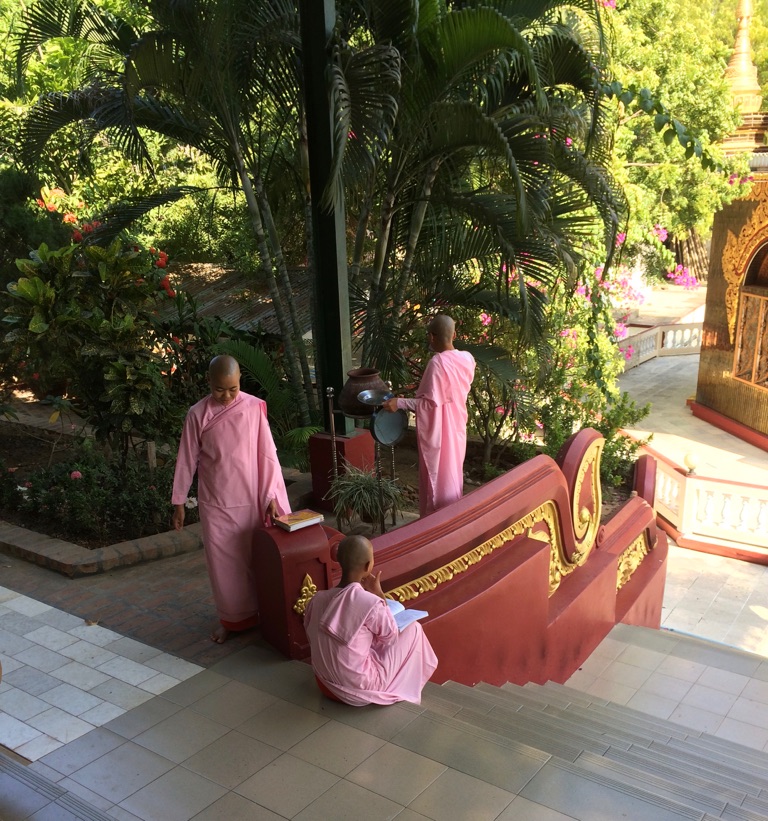

This young student was particularly delighted to chat with us.
Walking in the town of Sagaing brought interesting sights, such as rice noodles drying on racks.
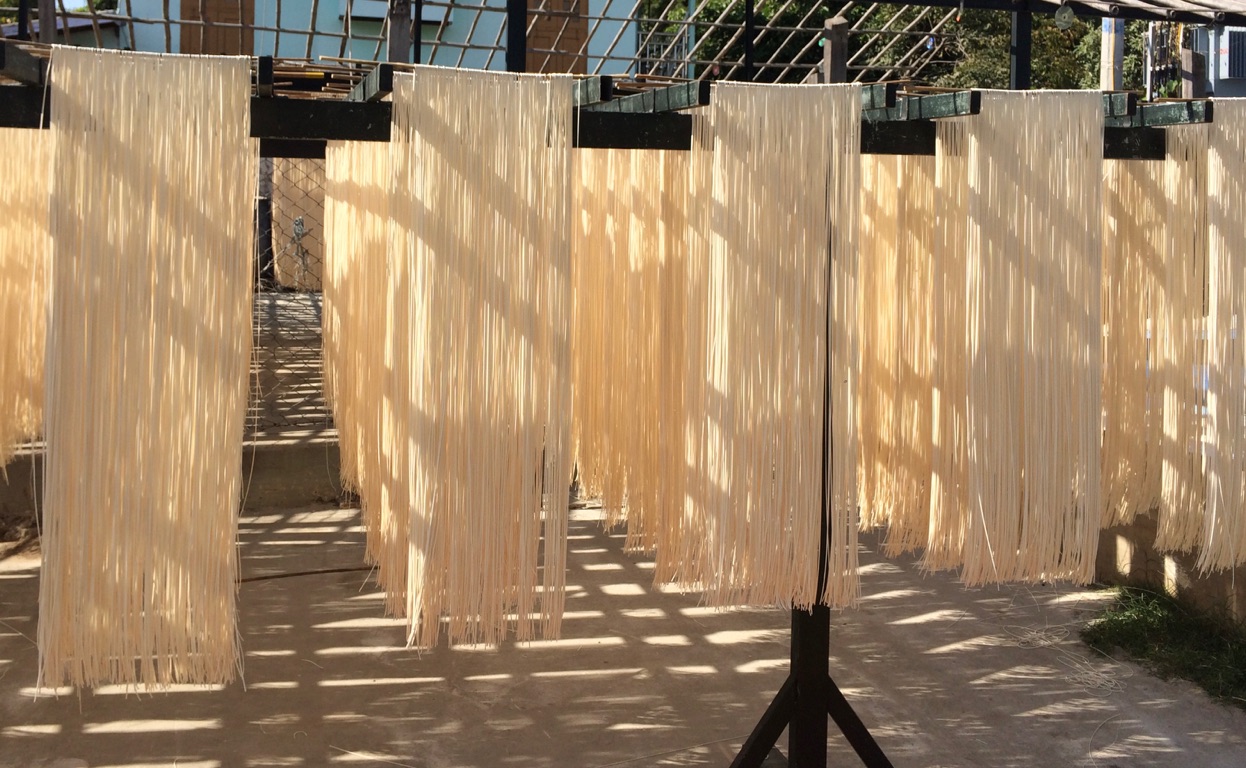
Then a trip across the river to the island of Inwa in a very if-fy boat...
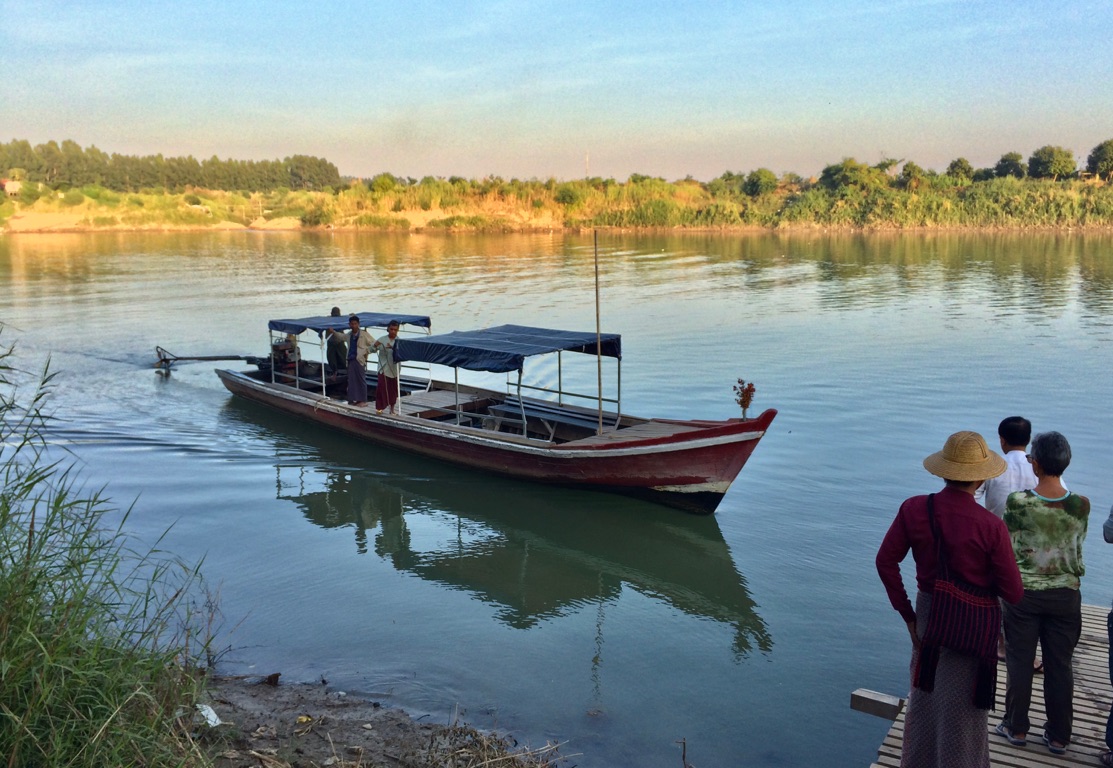

A very delicious lunch...
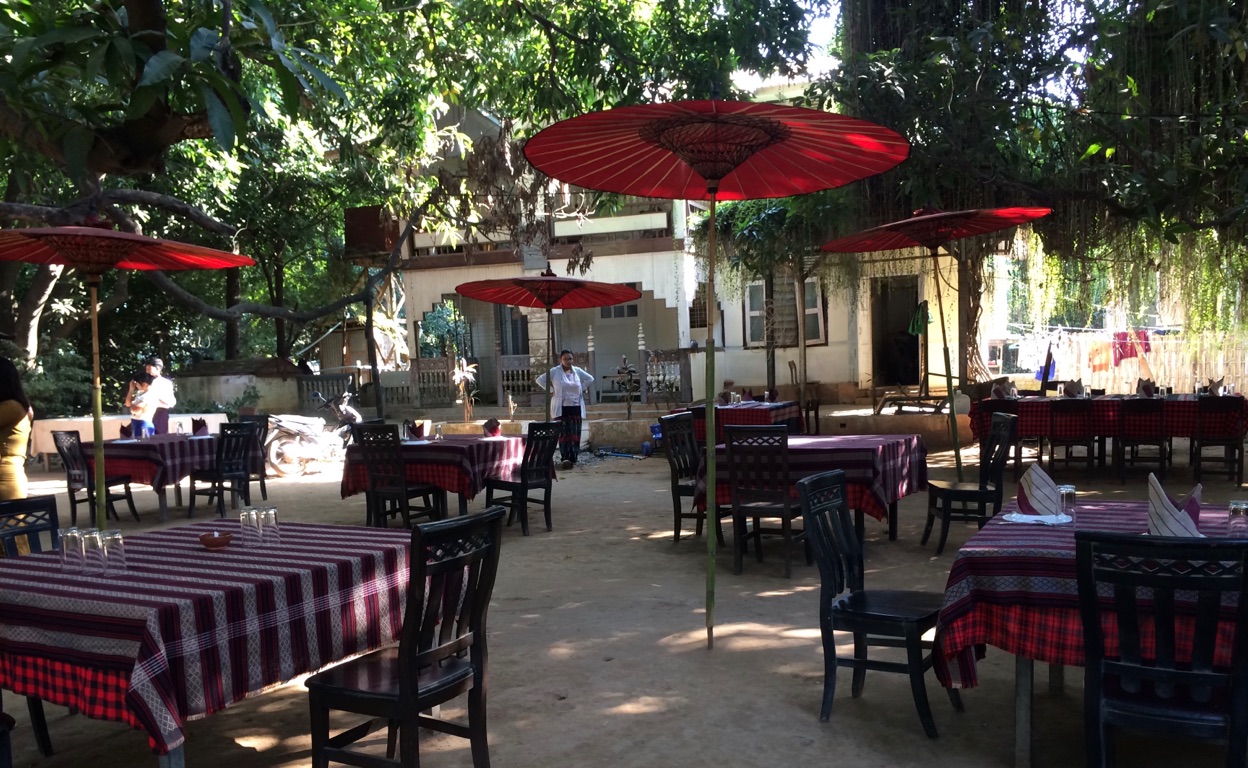
A ride in a rickety horse and carriage...

A stop for a parade...
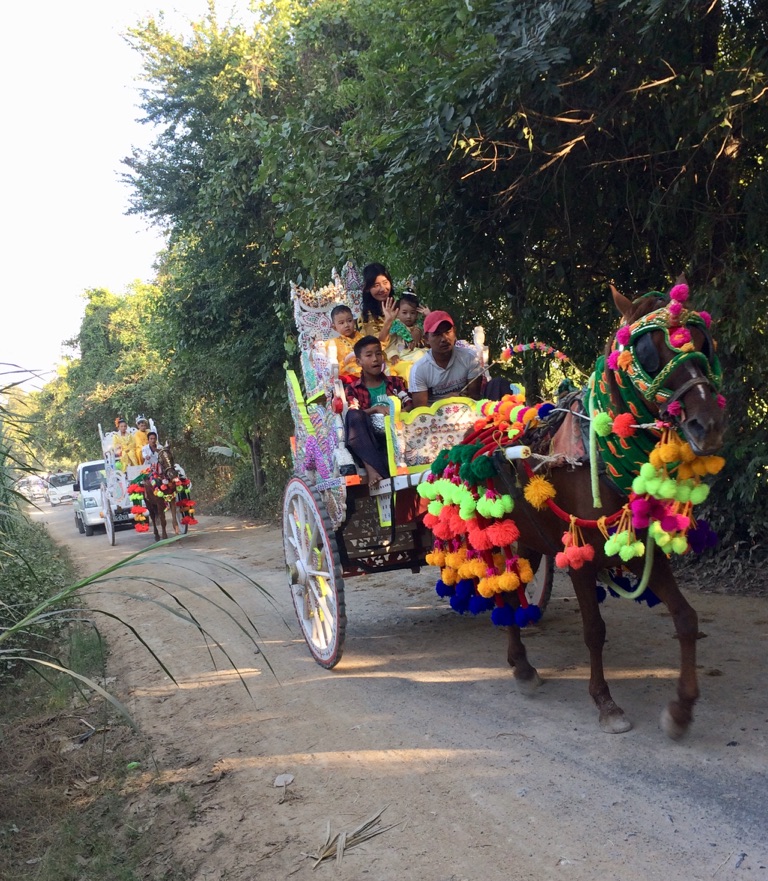
A visit to some ancient Buddhist temple ruins...
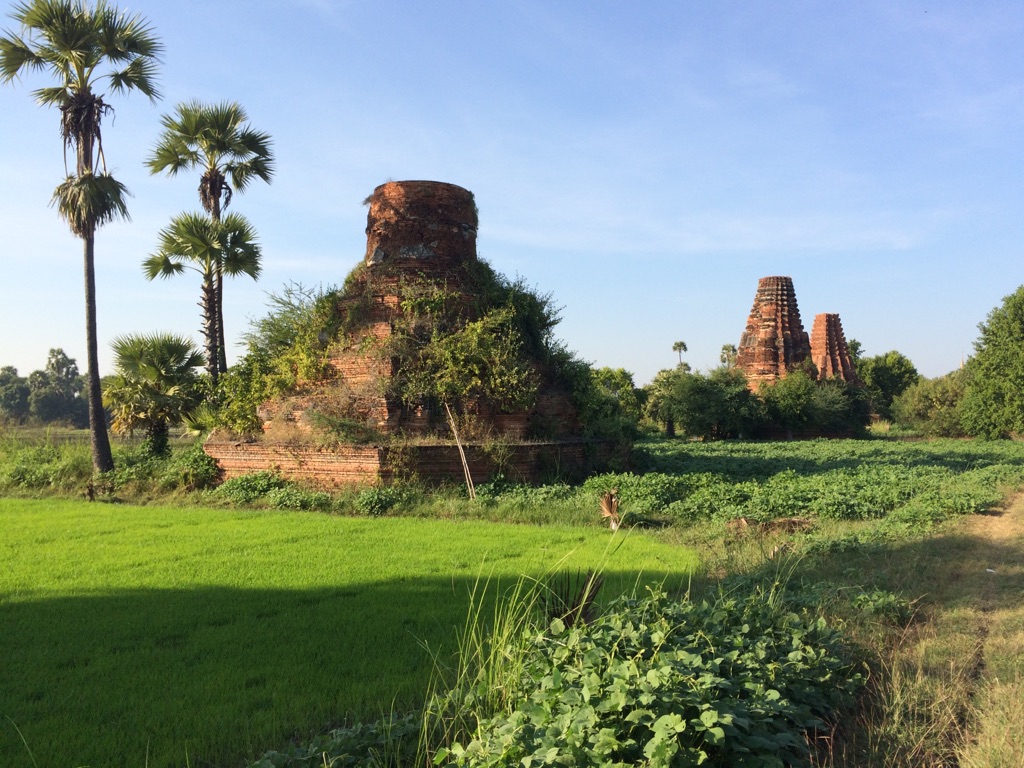
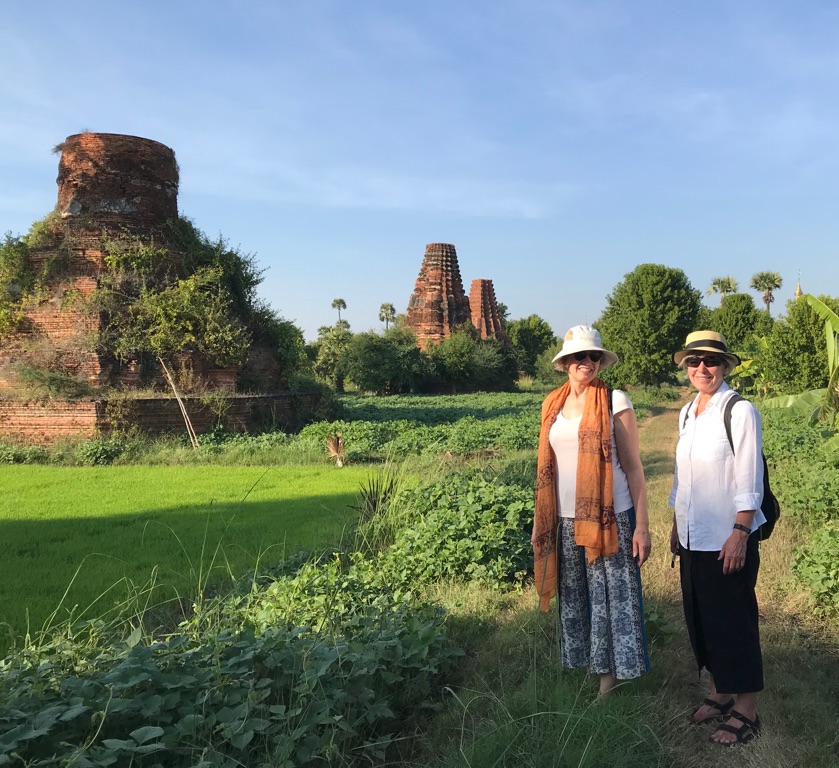
And the usual pontificating men on the if-fy boat ride back across the river...
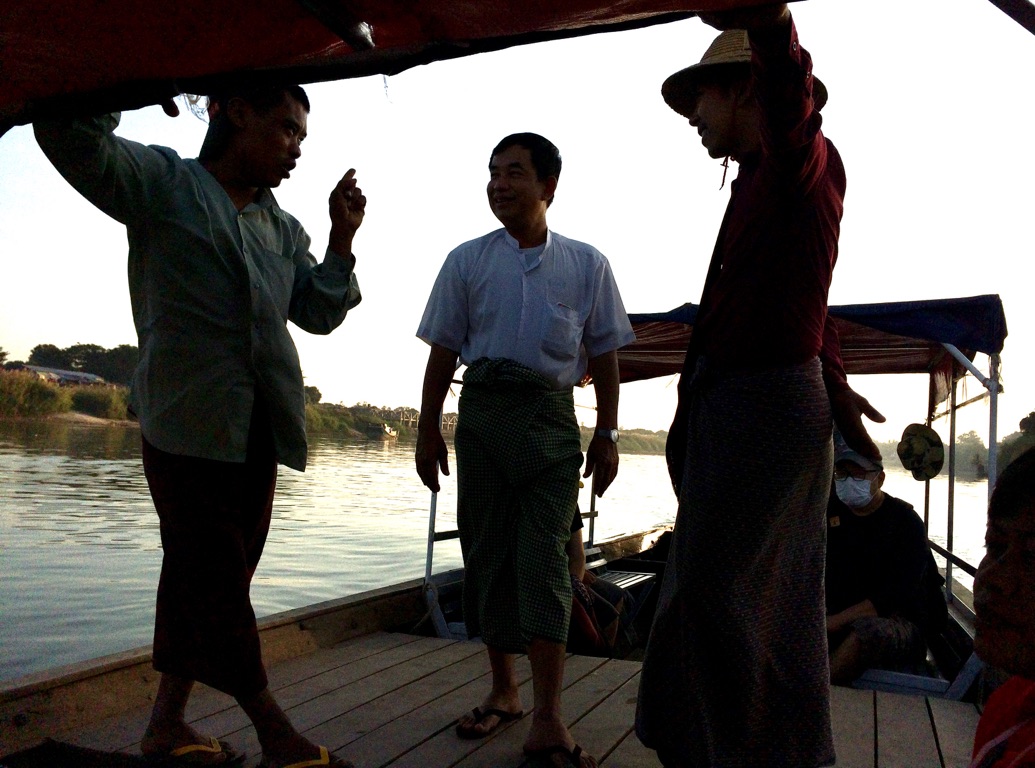
The road from Mandalay to Salay
Leaving Mandalay we ventured on a journey into rural Myanmar and here we see a very different way of life. Many people farm and sell their produce in small village markets; very little is exported to other countries.
On the 3-hour drive from Mandalay, we travelled along highways with frequent toll booths whenever we crossed over to another region.
We stopped along the way to visit an archeological site - beautifully excavated and restored. The site was discovered when a cow disappeared into a hillside. The cowherd discovered a cave and some artifacts, contacted the authorities and this prompted an exploratory dig and, ultimately, the restoration of the site. Many significant sites are not well-maintained, but this site, in Kyaukse, is pristine.
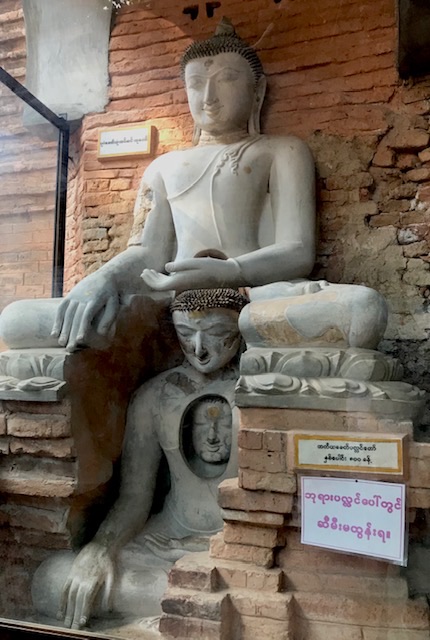
Three layers of Buddha statues were discovered, from the 11th, 12th and 14th centuries. The latest Buddha is on the outside, the earliest on the inside - similar to a ‘Russian doll’.
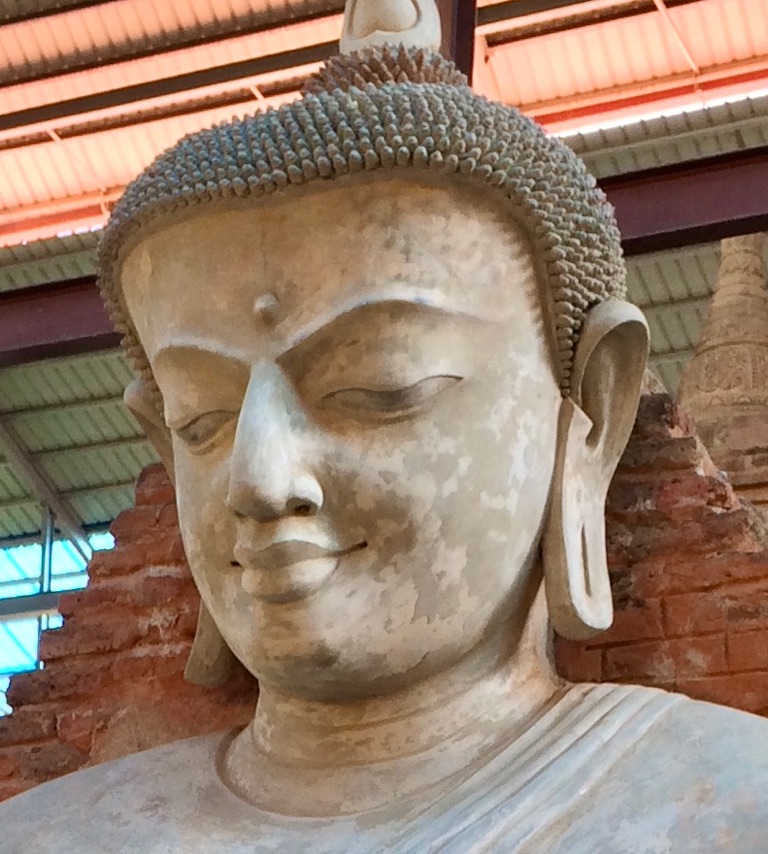

Another stop was a visit with a friendly monk who delighted in showing us Buddhist texts 400 years old.
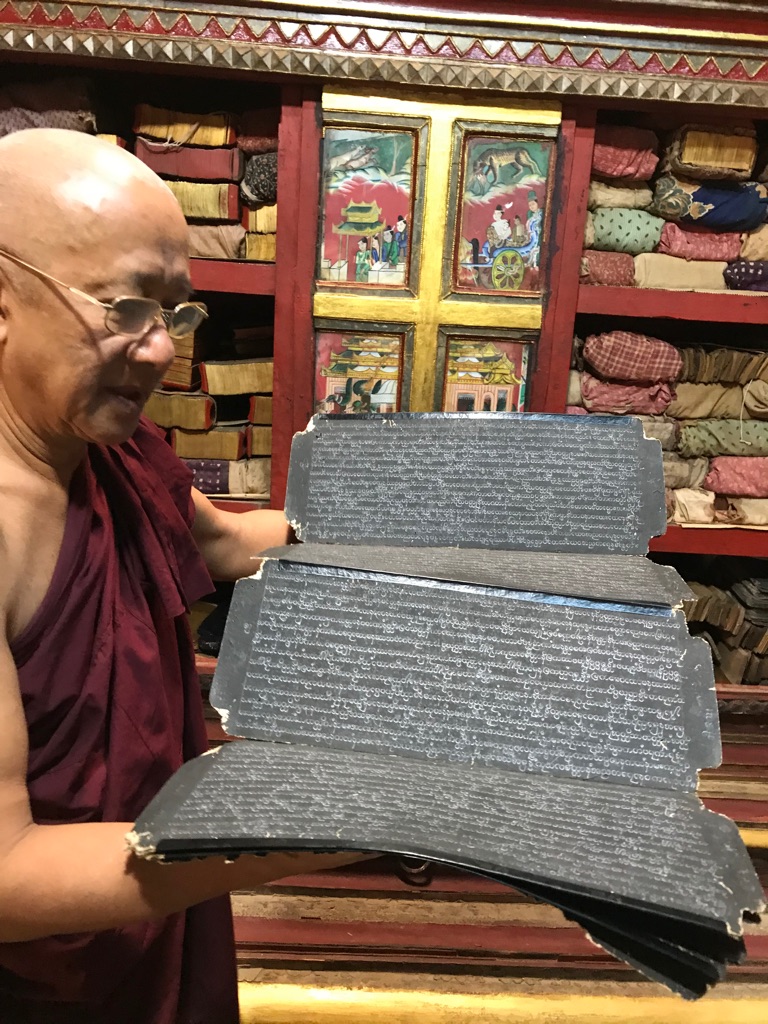
And a visit to the Yote Sone monastery which has beautiful 19th century wood carvings.
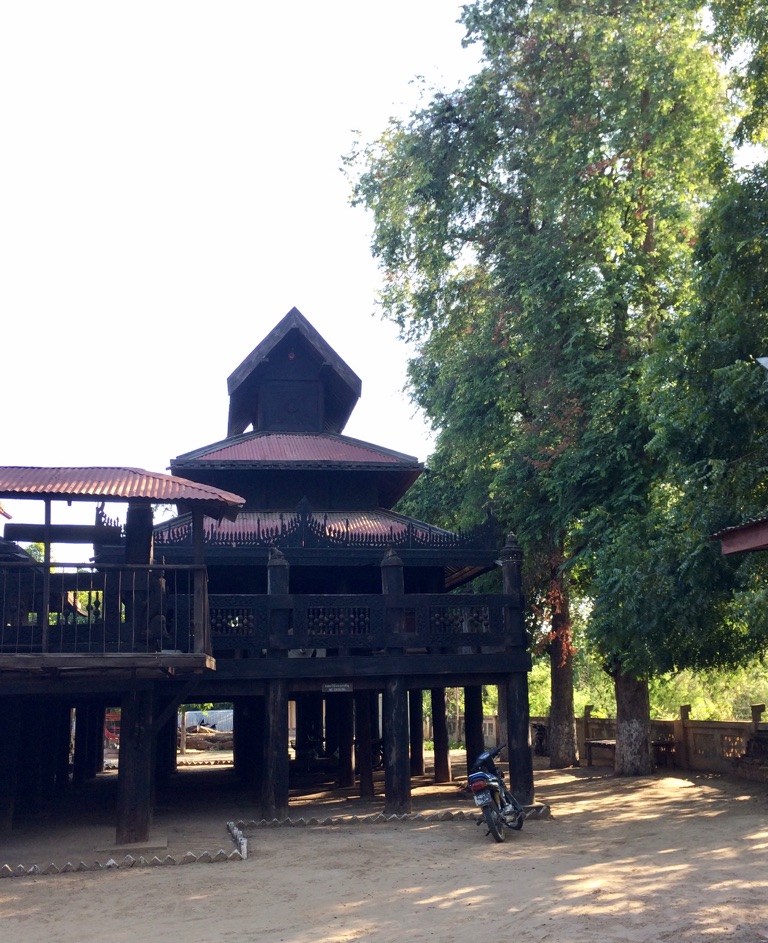
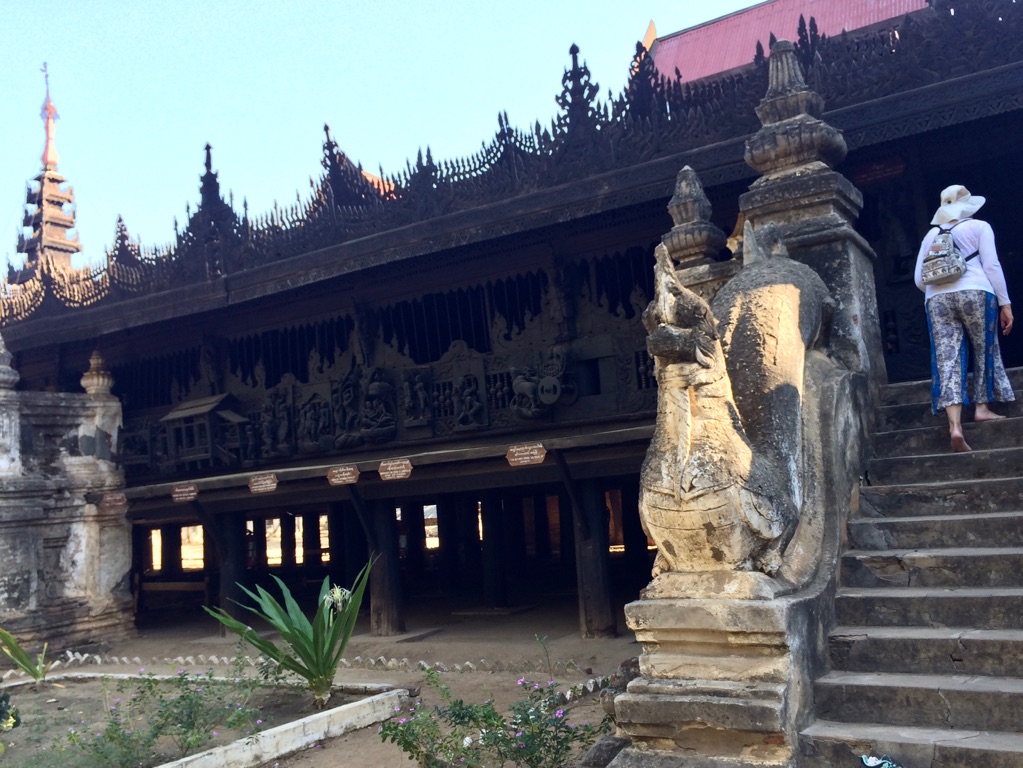
And then on to Salay (a town of about 125,000 people) to our abode for the next 2 days - and a goodbye to our guide, Zarni and driver, Niyni.

The Salay River View Inn is owned by a doctor (who is also the gardener) and managed by his wife.
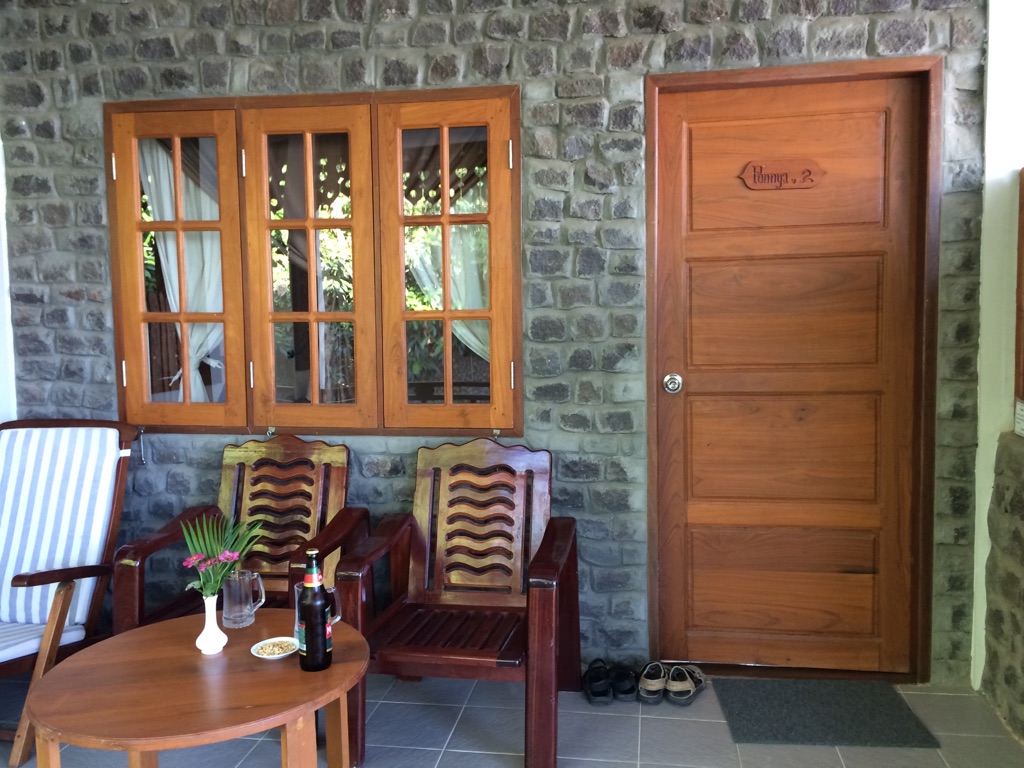
Our terrace on the 2nd floor
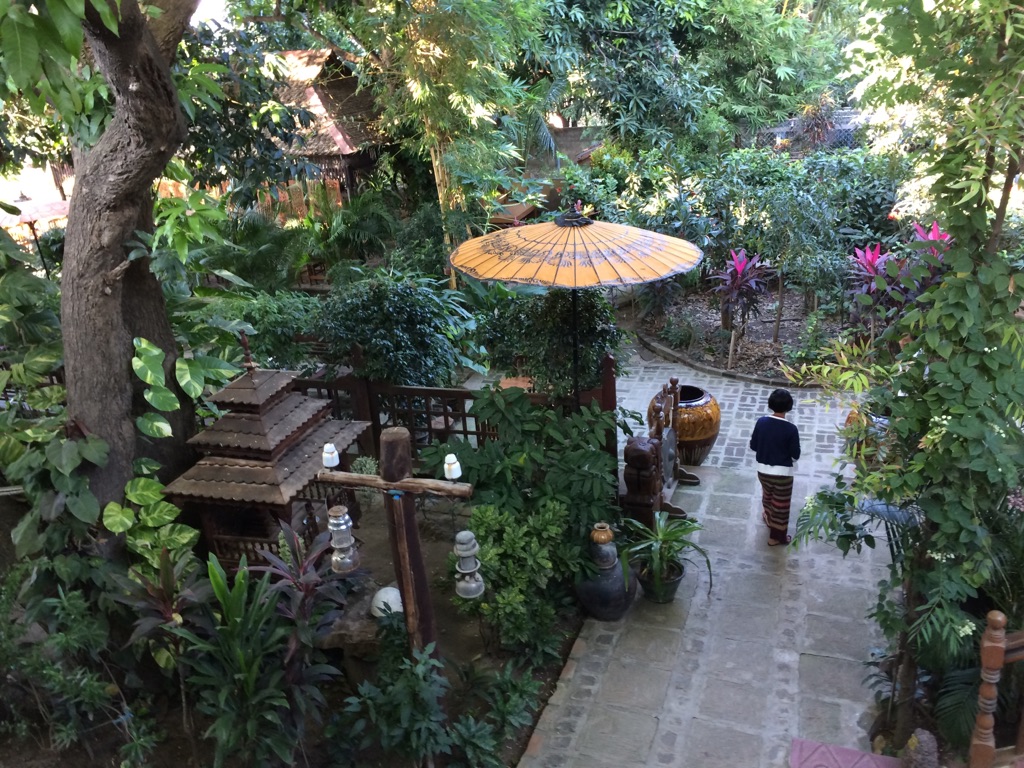
The most beautiful gardens...
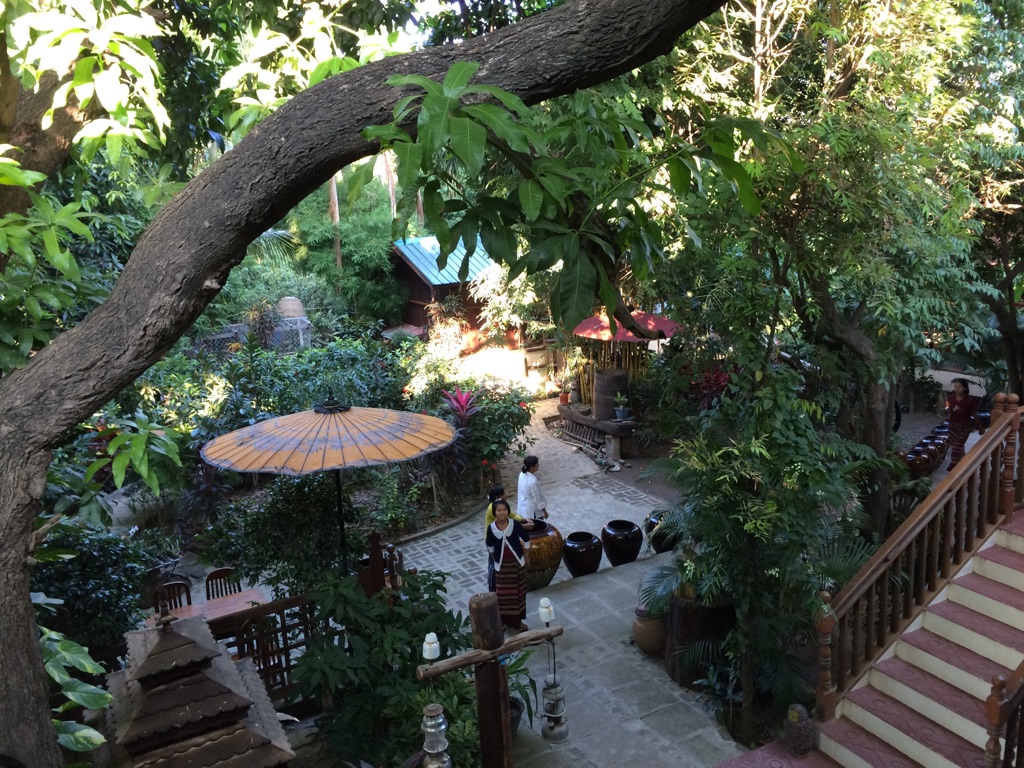
And, of course, the requisite sunset...
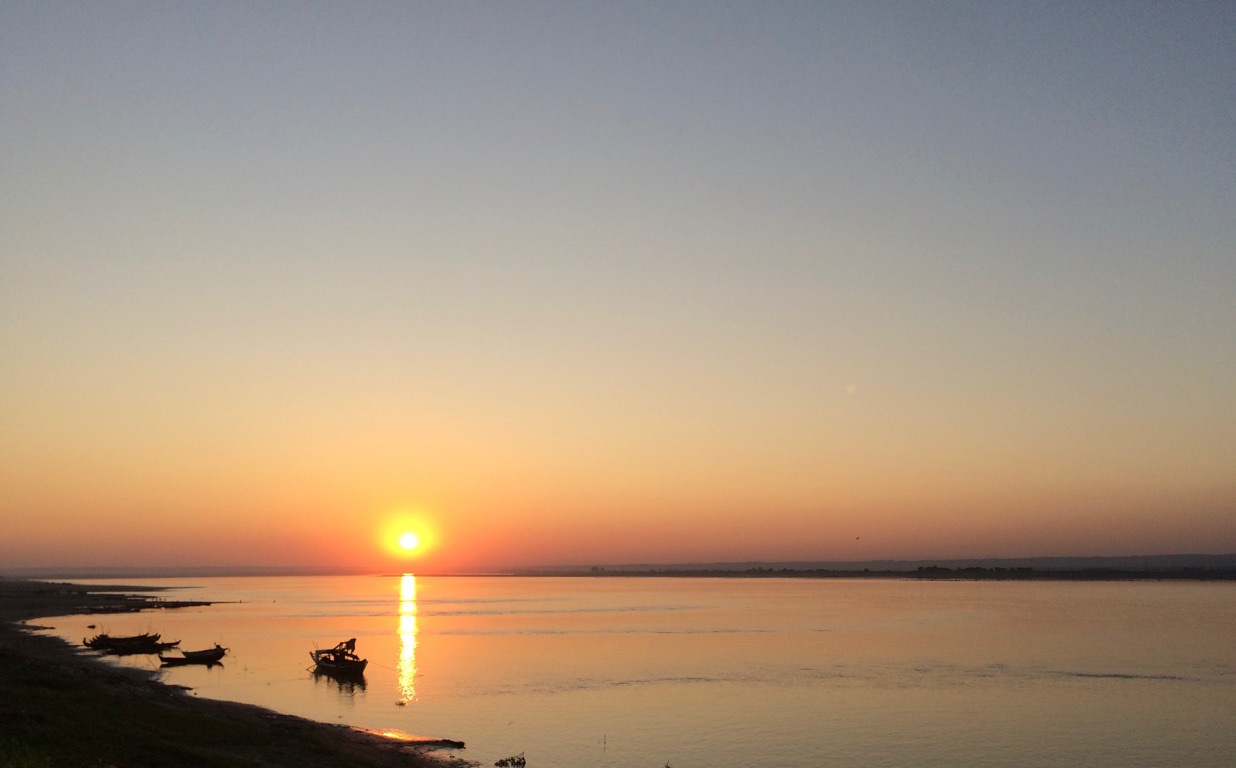

Off the beaten path...literally...
We started the day with a boat trip across the river to Padaytharkyan village and a walkabout. We saw workers harvesting vegetables and crops which they sell in the Salay street markets. \240Myanmar exports very little but is well able to sustain its own population.


Scenes from the village...



We visited a school - these are kindergarten children. \240


We then went mountain biking with our guides, Saw and Ayndria, who kept us safe while dodging motorcycles and negotiating sand roads. \240Visiting temples by mountain bike has a curious charm.

Our lovely gracious guides


Workers sifting sesame seeds from the plants stalks in the temple grounds.
We met a lovely English woman, Lucy, at the hotel who lives in Florence, Italy. We shared travel stories over dinner - Kate and I are salivating about a return trip to Florence!
This is our last night at the Salay River View Inn and we will be so sad to leave - we could easily have stayed a few more days.

E-biking through villages
... except...we didn’t.
I thought e-bikes were bicycles with small ancillary motors. \240They are not, e-bikes are small scooter motorcycles. Tun, our guide, made an executive decision that Kate and I were not good candidates for scooters - in fact he did use the word ‘unsafe’. Mountain bikes were issued instead.
Off we went, on the mountain bikes, to look closer at the temples and some we were able to enter. \240Temple etiquette is to remove shoes and socks and cover up bare shoulders and knees. \240This requires appropriate clothing be brought along on any visit.






Evening was a private boat ride to watch the sunset on the river - with Mandalay Rum and fruit juice cocktails - very nice!!! \240And I don’t even like rum!!




4000 Temples
The Bagan area was granted UNESCO World Heritage Status in the summer of 2019 - largely due to the preservation of a large number of \240ancient temples from the 11th - 14th centuries. \240Some were damaged by earthquakes in 1975 and a 6.8 magnitude quake in 2016 which affected 400 of the area’s 4000 temples. Because of the historical significance of the Bagan temples, money has flowed in from the Myanmar government and UNESCO to make \240major repairs.
We were able to see these beautiful sites by old-fashioned horse and cart as the sun was setting over the temples. \240The craftsmanship is magnificent and the shadows and colours by sunset, glorious.




Beautiful Ananda temple
Hot air balloons at sunrise
The morning began very early as we rode a tuk tuk out to a viewing site to watch the sunrise over the temples and the launching of 20 colourful hot air balloons. The air balloon business has been popular in Bagan for the last 20 years or so, and is a big moneymaker. \240The trip lasts 1 hour and costs $300 U.S. The launch happens every day, unless bad weather, \240and each ballon can carry 12 people - so someone is making $72,000 per day!
Needless to say, we chose not to ride in the balloons and took photographs instead.
First, the sunrise over the pagoda...



Then, the balloons launch into the sky...


Kate captured this amazing shot of one of the balloons and a pagoda in perfect silhouette. \240Sunrise and sunset are almost spiritual experiences in this country and both tourists and locals turn out to watch in wonder daily. \240



We were blown away, quite literally, and it was still only 7:30 in the morning!
29,000 steps of trekking
And, I think they were all a steep uphill ... certainly felt like it was. We were picked up from Heho airport by our guide A.P. for a trek in the mountains - along with a mountain guide and a cook. \240The trek was tough going, to put it mildly.

A.P., our guide and translator; our mountain guide and our chef extraordinaire! Lovely, gentle gentlemen.
The end goal of this 6 1/2 hour, mostly uphill hike was a monastery where we were staying the night (hmmm!!!!). I made sure to check with the guides that the next day was mostly downhill!!
We saw some lovely sights on the way. Many of the villagers had seen few, if any, westerners - and women with grey hair hiking were quite a novelty.


Our intrepid guides likely discussing what to do with us!
Along the way, we saw these beautiful children...





Tea plantation - growing on mountain slopes.

Women sorting tea leaves. Green tea leaf salad is a Myanmar favourite. It is marinated and served with tomatoes and peanuts. Really delicious!!!
Overnight at the monastery was an ‘experience’! \240Only 2 monks were actually living there, 1 very friendly, the other highly suspicious of us. \240I stupidly asked if they had internet. \240Apparently not! They also did not have indoor toilets, showers or sinks. \240This was a definite challenge for me - Kate loved it!
Inside the monastery we had a small room divided by a curtain from the shrine room. There was a large Buddha lit up with bright flashing lights. \240The friendly monk was watching football on the sports network with about a dozen village boys.
After a delicious dinner cooked by our chef, and a last (I hoped) visit to the outside loo, we went to bed on mattress pads with multiple blankets on the floor.
The boys continued watching football on the other side of the curtain. Kate wondered when they might go home; I wondered if the Buddha would get turned off.
We slept like logs - but I was glad to be leaving the next morning!
How many men does it take...
to help Kate on the steep downhill trek? \240Answer is 3!

Kate’s knee was giving her grief on the steep and rocky trek down, so our 3 minders jumped into help! \240All was well when they arranged the pick-up by our \240driver a little earlier than planned.
Once more, we had to say goodbye to this team of \240wonderful ambassadors of Myanmar and off we went to our next stop at Inle Lake.
Inle Lake is the resort and holiday area of Myanmar. The lake covers 118 square kilometres, situated in the Shan province of Myanmar, between 2 mountain ranges. It is relatively shallow freshwater lake and has great fishing.
We are staying at the Blue Vanda hotel - in an absolutely beautiful large room with a tropical garden. We have our own bungalow with a balcony which looks out on the garden.

Our tropical garden - from our bungalow verandah...

Blue Vanda hotel reception...

The wonderful staff - Santa is on the left...

Our bungalow and veranda...

The garden pathway to our door...
Biking, boating and shopping
We have had spotty internet so I’m attempting to catch up the posts - bear with me!
On our 2nd day in Inle Lake we were met at the hotel by Aljue, a 2nd cycling guide and mountain bikes. \240Off we cycled to see the sights of the town, the neighbouring villages, farms and the river. \240The day was organized around hop on/hop off bike and boat touring. \240Cycling in town is always a challenge with many motorbikes, cars, buses, and anything else remotely motorized. There is much honking of horns but honking is used very differently here - it is a friendly gesture to let the other driver know of your proximity - not at all a “f... you, get out of my way”!
Cycling was a lovely way to see the rural areas and the variety of crops and produce - and the always smiling people.
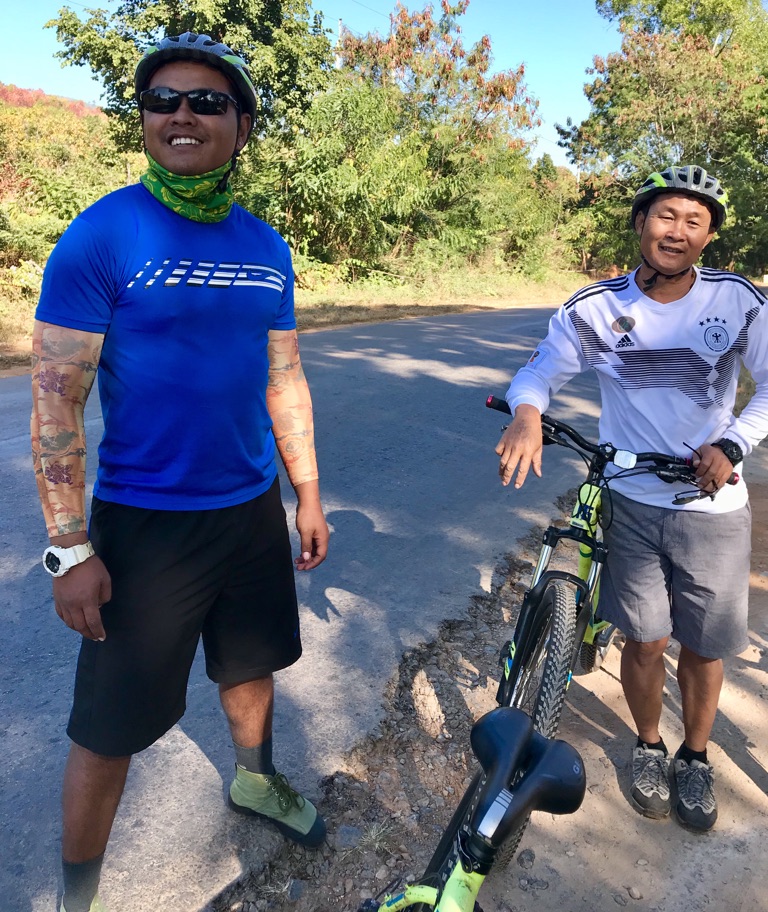
Our lovely guides...
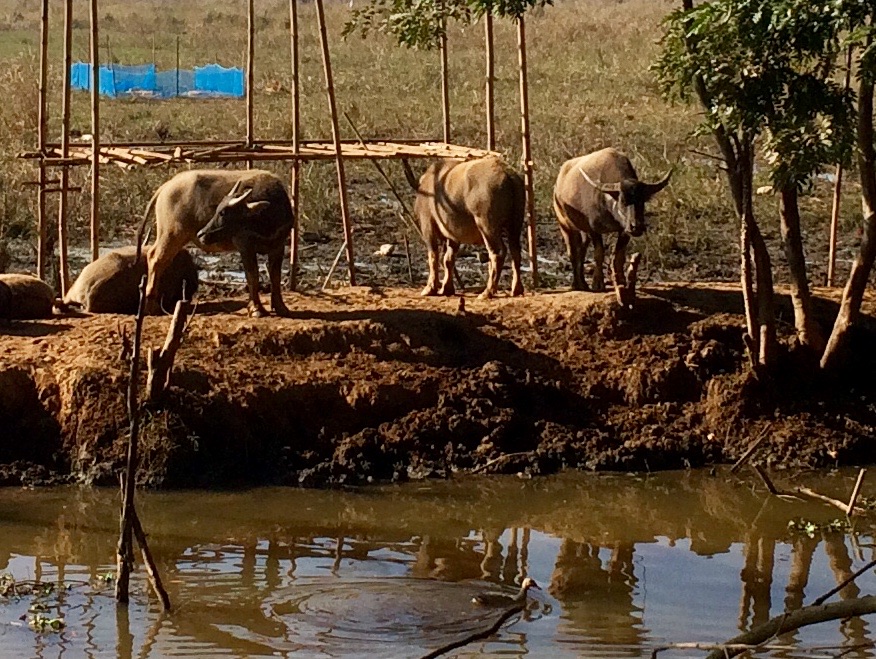
Water buffalo along the road...
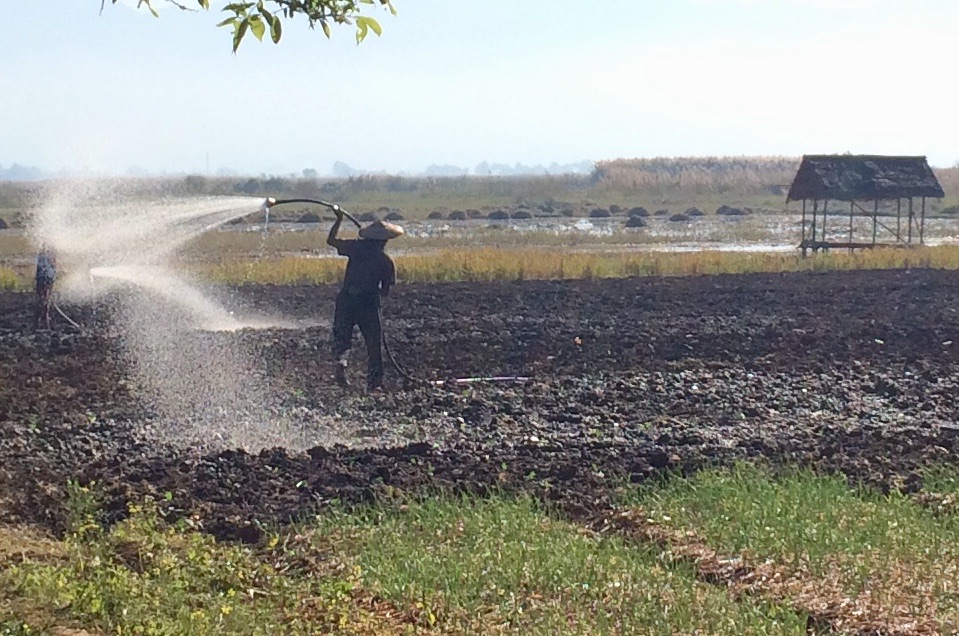
Irrigation systems...
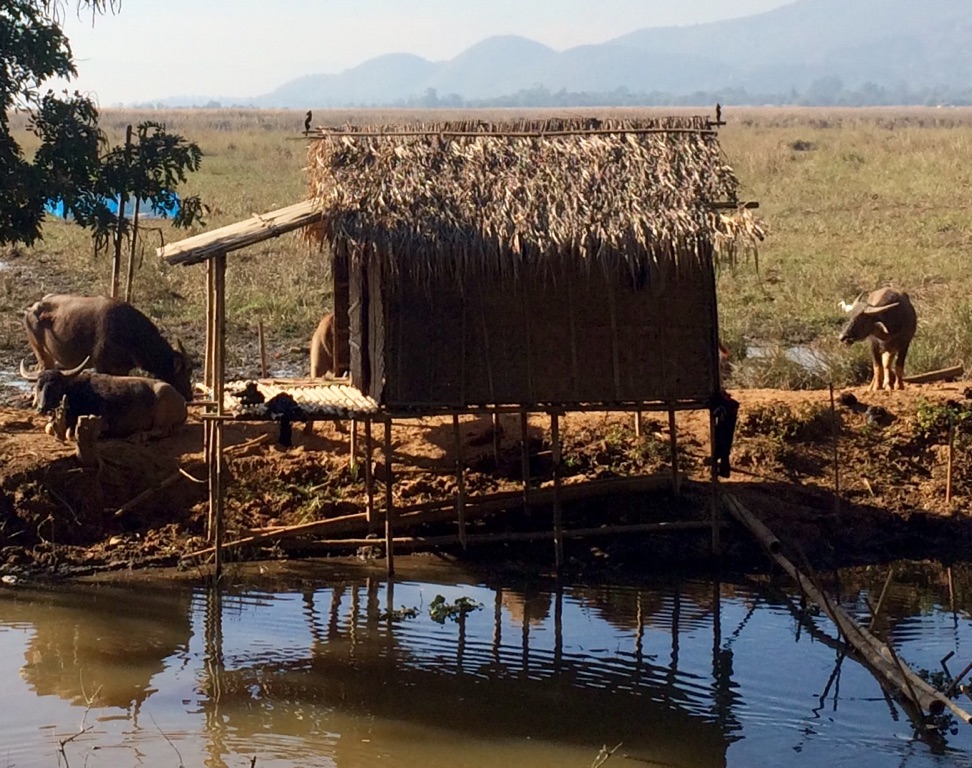
Water buffalo-minder shed...
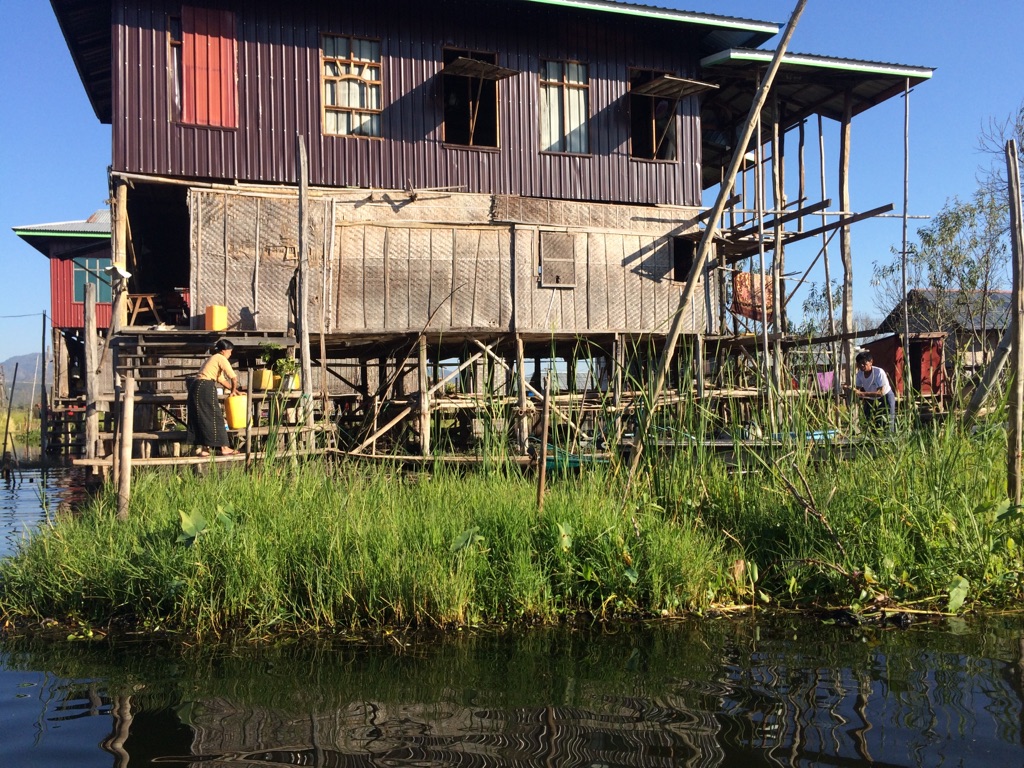
Houses in, and around, the lake on stilts...
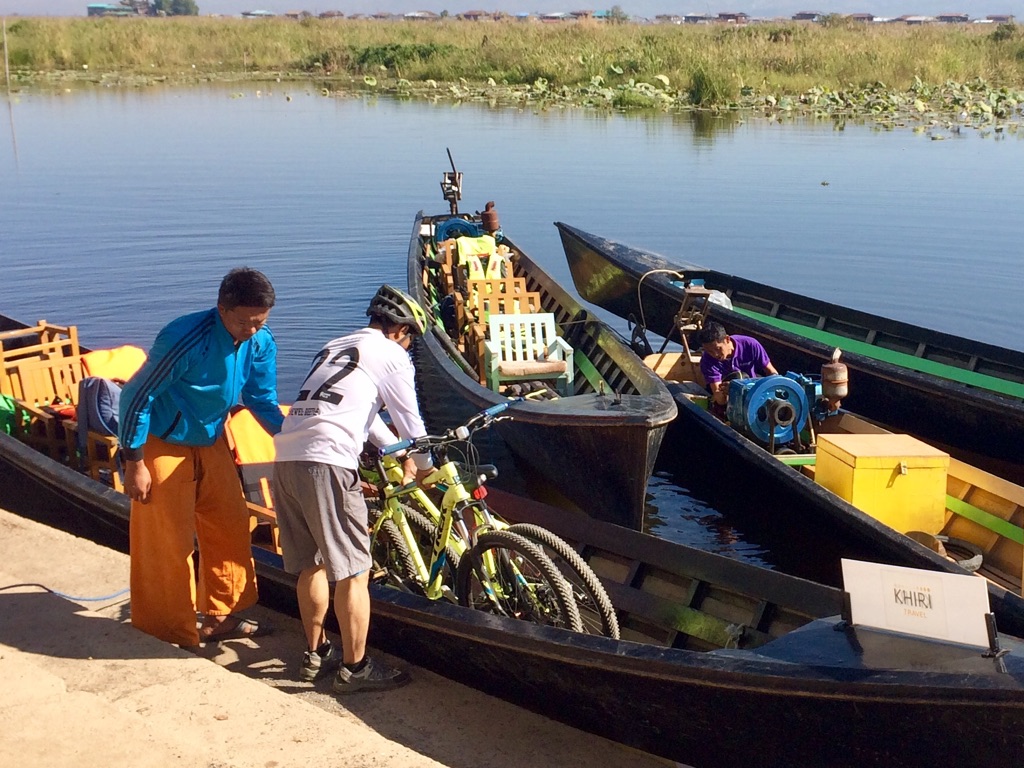
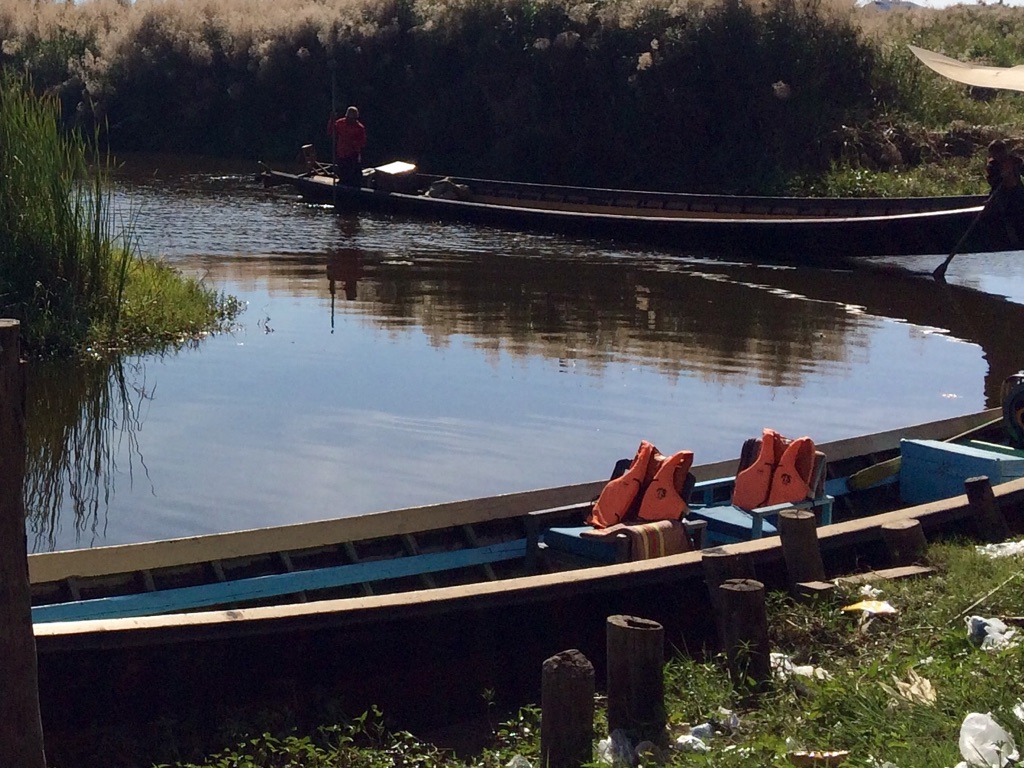
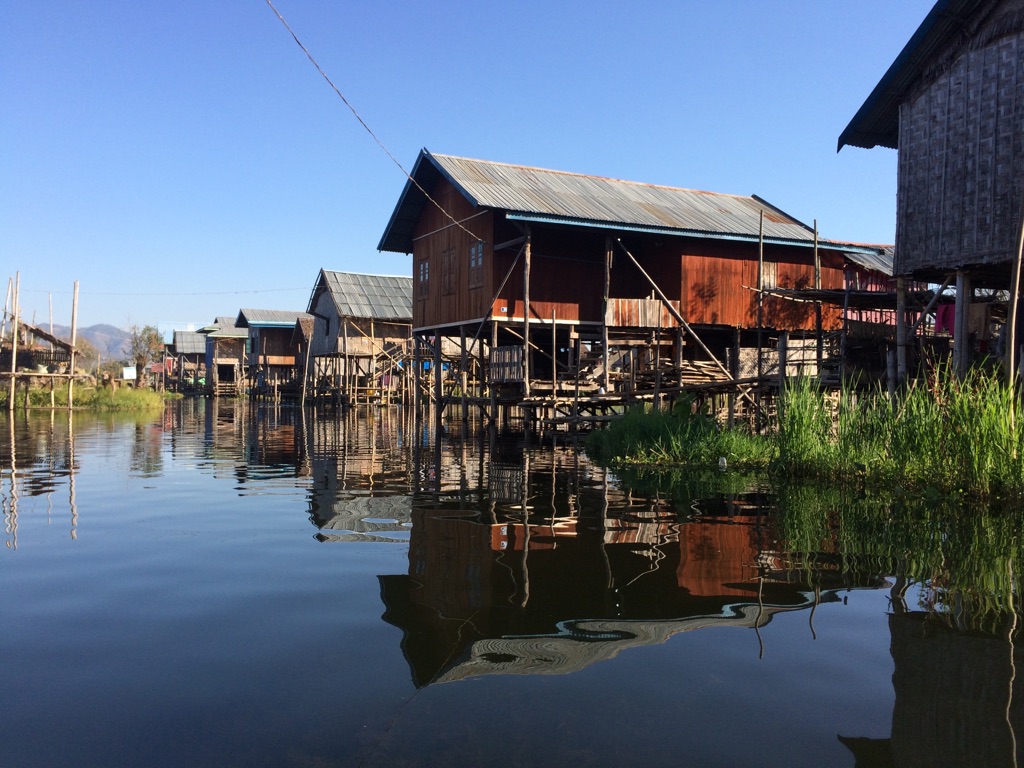
Fishing villages...
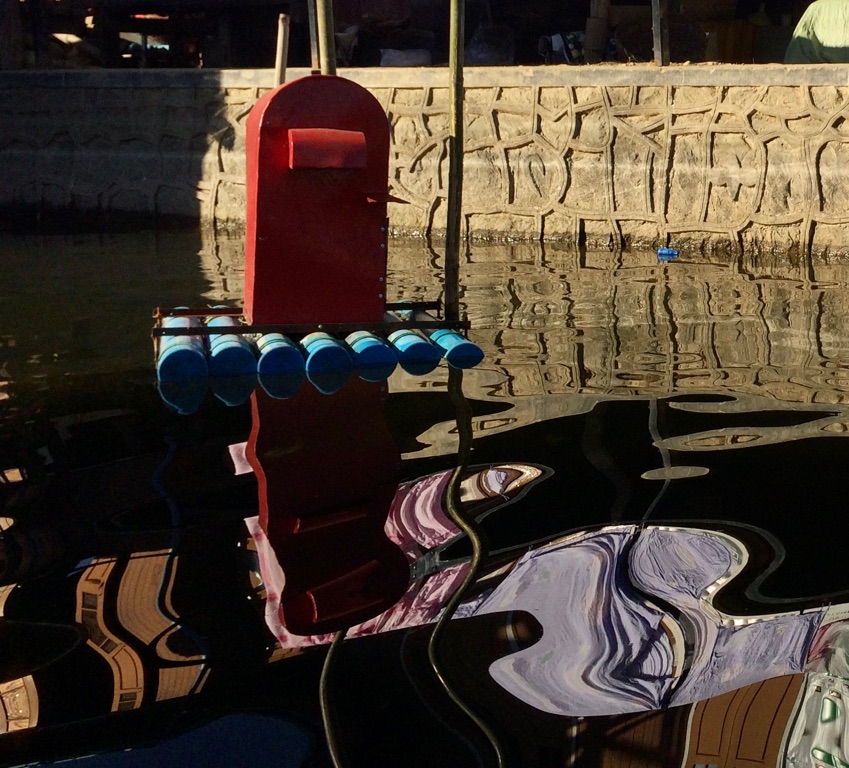
Village mailbox situated in the river...
After lunch in a village restaurant, we went shopping - travelling by boat to villages specializing in silversmithing nd lotus and silk weaving workshops. We saw magnificent workmanship and skill - and, of course, were delighted to buy some beautiful products. Thank goodness Kate forgot she was carrying a credit card and we could only spend cash! The silk and lotus cloth was so very beautiful. Lotus cloth is spun from threads inside the stems of the plant and is a luxurious fabric.
We travelled back home by boat across the lake just as the sun was setting, quite fatigued from the cycling and all we had seen and experienced.
We arrived back at the hotel to find a lovely surprise - Santa had found us in Myanmar!
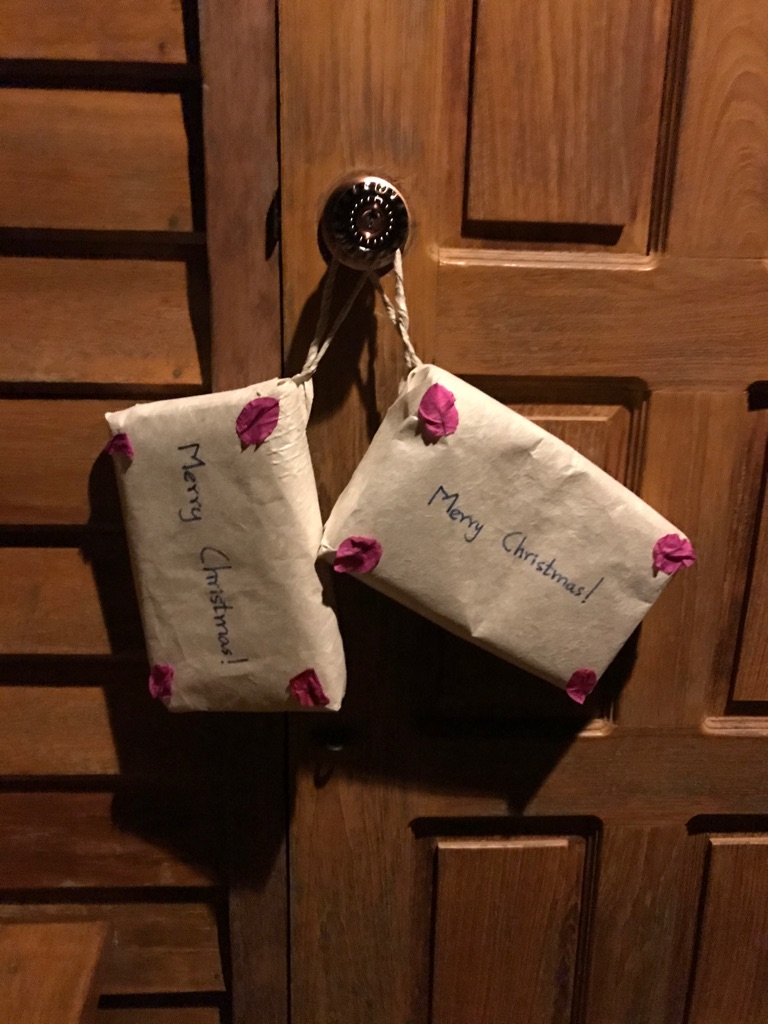
Santa was the hotel manager - inside were lovely shawls. We were touched by such heartfelt sentiments from the hotel staff!
Christmas Day in Inle Lake, Myanmar
And we are off to a cooking class...we have to walk there, but never fear, Kate has a map and a sense of direction!
A group of 10 tourists met at the appointed spot and we were whisked away by ‘Lesley’ to the market to buy our food. The group was comprised of travellers from Switzerland, France, Austria, Quebec, Belgium and Hong Kong.

We repaired to the cooking school, agreed on the menu, and assigned ourselves to a main dish and a side dish.

And we started cooking - with the help of Lesley and Sue and their staff. \240It was great fun. \240My dishes were tomato salad - which has spices and a peanut sauce, and a prawn curry. Kate made pumpkin curry and an eggplant salad. \240All looked and smelled delicious!

‘My’ tomato salad...


Prawn curry coming up...

Kate making eggplant salad...
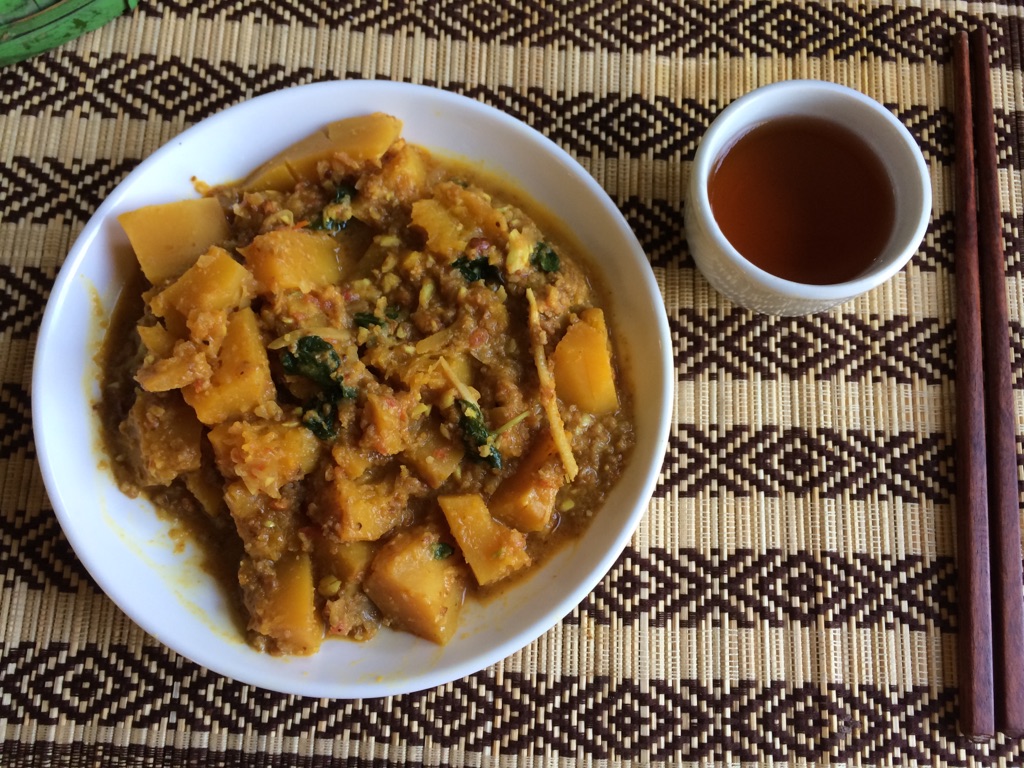
And pumpkin curry...from Kate
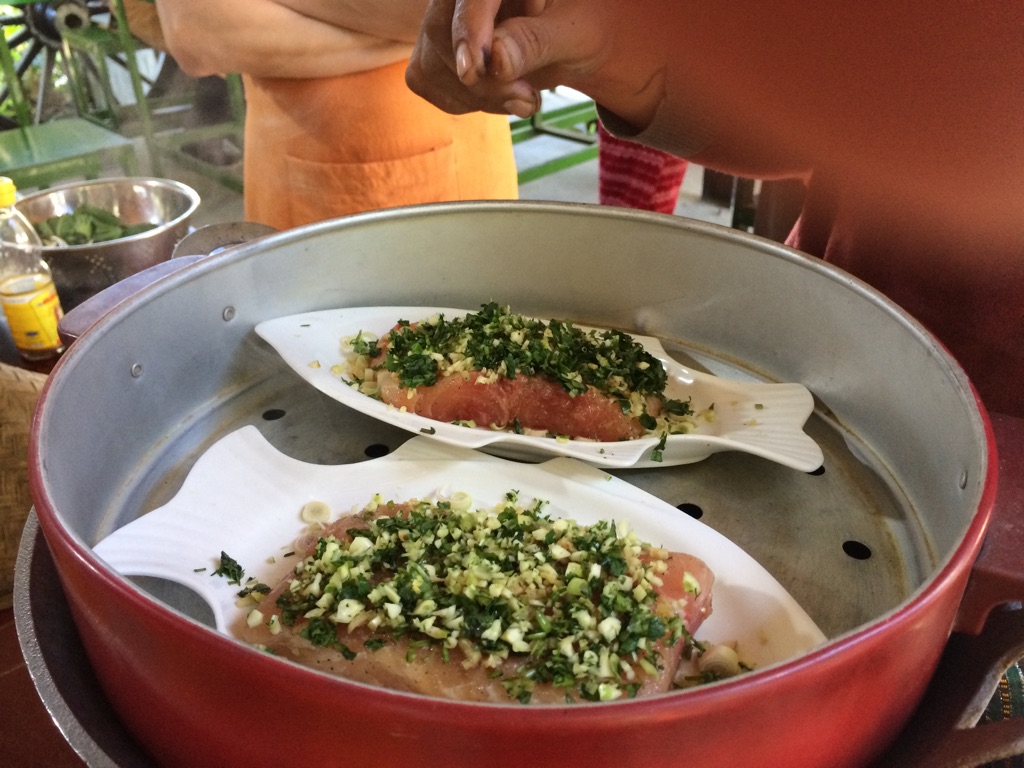
Steaming the fish...
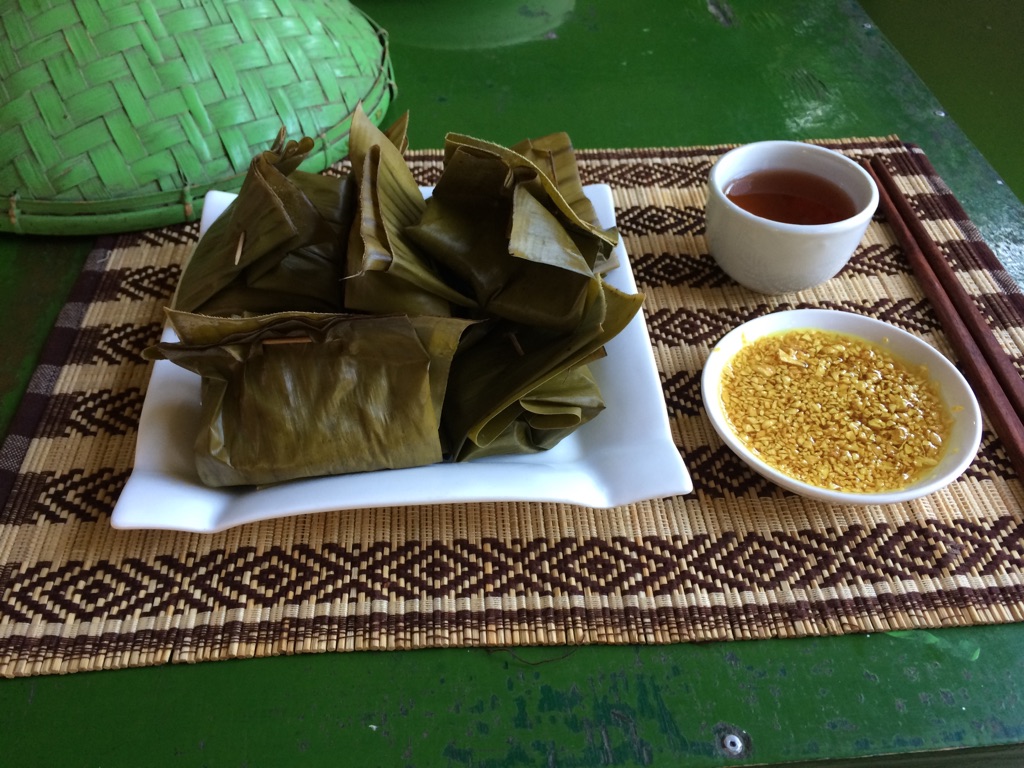
Steamed dumplings in banana leaves...

And then we shared a fabulous lunch that none of us could believe we had created!

Lesley, our chef/instructor is on the right. Ben, on the left, is from Quebec - and works in the film industry.
All in all, a very unconventional and lovely way to spend Christmas Day, learn some new techniques and eat absolutely scrumptious food!! And no turkey in sight...
End of Myanmar tour - overnight in Yangon
Our last day in Inle Lake at our lovely hotel. We are enjoying a leisurely pace before breakfast and packing up for yet another travel day. We overnight in Yangon at Cloud 10 hotel with the gorgeous tree house garden, where I got at least 300 mosquito bites! That was before we became diligent with bug spray. Mosquitoes are smaller and silent here and we felt no bites, heard no buzzing - very different from the Winnipeg.
We flew out from Heho airport - very tiny. The experience of taking a flight is quite different in this part of the world - passengers for all flights crowd the gates and it becomes a guessing game for whether this is the right flight or not. Maybe another passenger will know, maybe they won’t. It all seems to work, though, because we have not been on the wrong plane yet! \240Heho airport felt and looked more like the Winnipeg bus station.
A driver met us at Yangon airport - we will miss this ease of travel which makes all things so easy. Out once more for dinner to the snazzy restaurant down the street which could fit quite nicely into Winnipeg downtown.

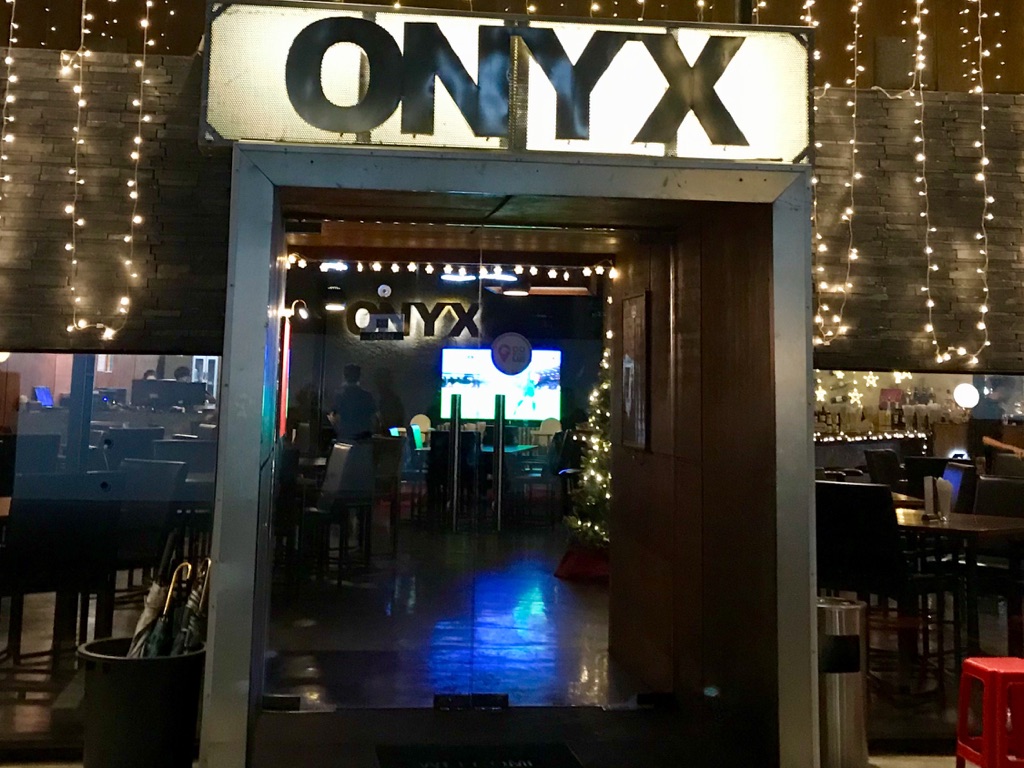
We had a marvellous conversation with a couple at the next table, from Belgium, also staying at our hotel. They were embarking on the same tour of Myanmar that we were just finishing. Yves and Katrina recounted some amazing travel adventures and we wished we had met them sooner.
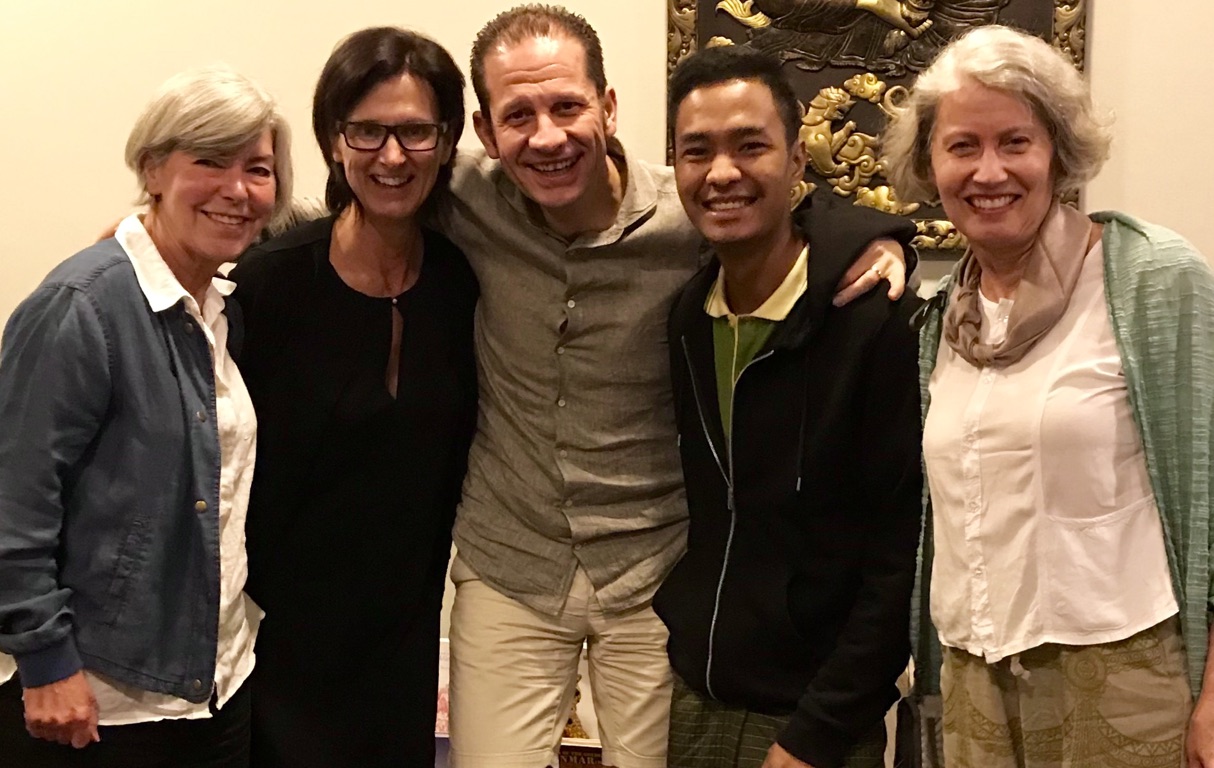
Photo with our new friends back at the hotel lobby...
Back in Thailand again
Travel day, so pack and repack. Funny thing, our bags are getting heavier and more full!!! Those dreaded shopping markets - so much for my commitment to not buying; Kate had no such commitment!
We were delivered to Yangon airport by our last driver - and our last look at Myanmar. I would recommend travelling here in a heartbeat. \240Such lovely, open and warm people - so much to see and do. \240The country is still quite unspoiled and provides a big adventure.
We landed in Chang Mai - and immediately the difference is palpable between Myanmar and Thailand. \240There is far more noise and obvious commerce in Thailand.
Kate had downloaded an app widely used in Asia called ‘Grab’ and eagerly tried it to find us a taxi to the hotel. After a few hiccups we were whisked away, in our ‘Grab’, to our home for the next 7 days, the M5 Hotel - brand new and ultra modern!
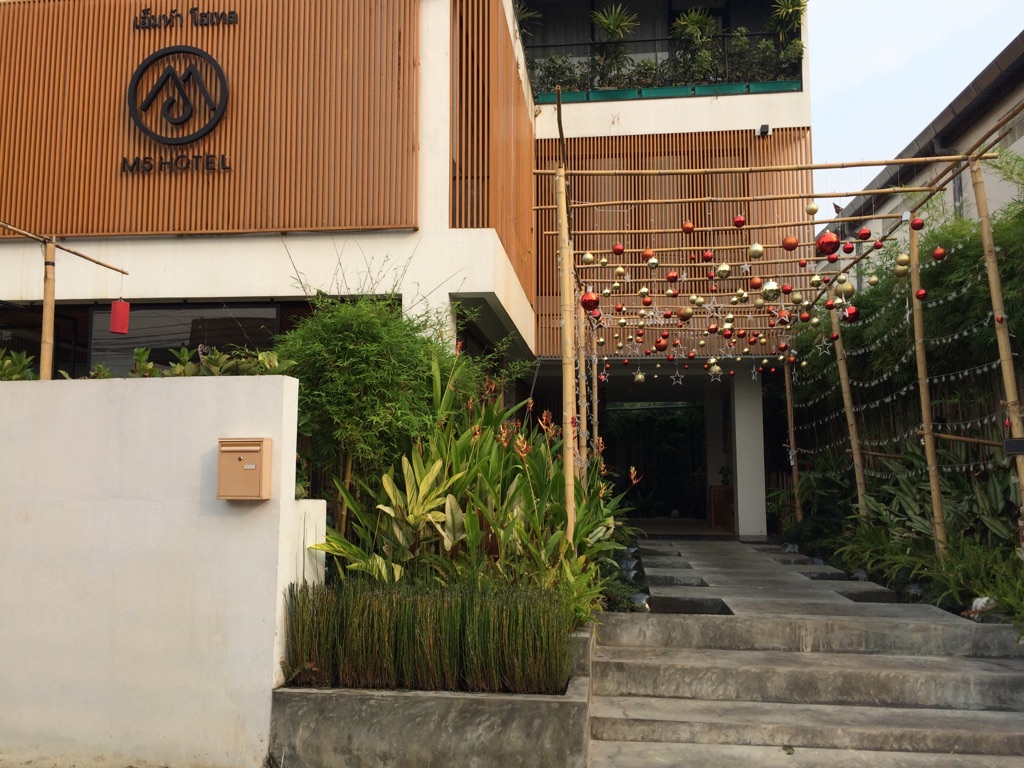
Settling in for a week in Chang Mai
After 2 weeks of a very fast-paced tour, we are feeling quite tired. I think Chiang Mai will provide time to recover, relax and reorganize ourselves.
First order of business - find breakfast as there is no restaurant in the hotel. We found a good place, Archer’s, run by an ex-pat Brit who has been here for 10 years.
Second order, laundry. We had lots - in fact, just about everything we own. We found a laundromat, worked out how to use it - bought detergent and changed notes for the appropriate coins (20 baht or about $1 per load).

Yes, the laundromat is outside on the sidewalk! \240We started our washing machine loads, and only because we had to keep an eye on it, we were ‘forced’ to watch it from the bar across the street! Of course, we took the opportunity to share a Singha beer!
Oh, to have clean clothes has never felt so good!
After depositing the clothes back at the hotel, Kate spent some time on the hotel rooftop writing emails and I had a lie down due to a bit of a cold bug I’m fighting.
After sunset (6 o’clock...always the same time, year round) we went for 1/2 price cocktails (lime margaritas) at Archer’s, where we were for breakfast. Looks a little different at night!

Just a nice, normal Saturday in Chiang Mai, Thailand.
See updated post on December 22nd
Women’s Correctional institution Massage Centre
The massage centre runs a training program for female inmates to provide job opportunities when the women are released. My first thought, once there, was that these women did NOT look as if they had ever seen the inside of a prison! My second thought was, what the heck had they been convicted of! However, after our previous massage in Koh Lanta, we were willing to take the risk.
Kate chose a head, neck and foot massage; I chose a traditional Thai massage. My 85 lb masseuse told me to let her know if she was hurting me too much!! \240Wow, it was wonderful. Once more I felt pounded, pummeled and stretched into a relaxed state! I think I might be spending a bit of every day at the women’s prison!!
On the walk home from the massage, while looking down at the uneven sidewalk, I saw rather large claws poking through the sewer grate. A momentary panic hit, I jumped into the street and yelled ‘rat’ at Kate. \240From here on I am avoiding walking on, or looking at, sewer grates!

Sunday evening night market - packed with people and very popular.
Back to prison
We enjoyed yesterday’s massage so much, we went back today for a facial scrub and massage.
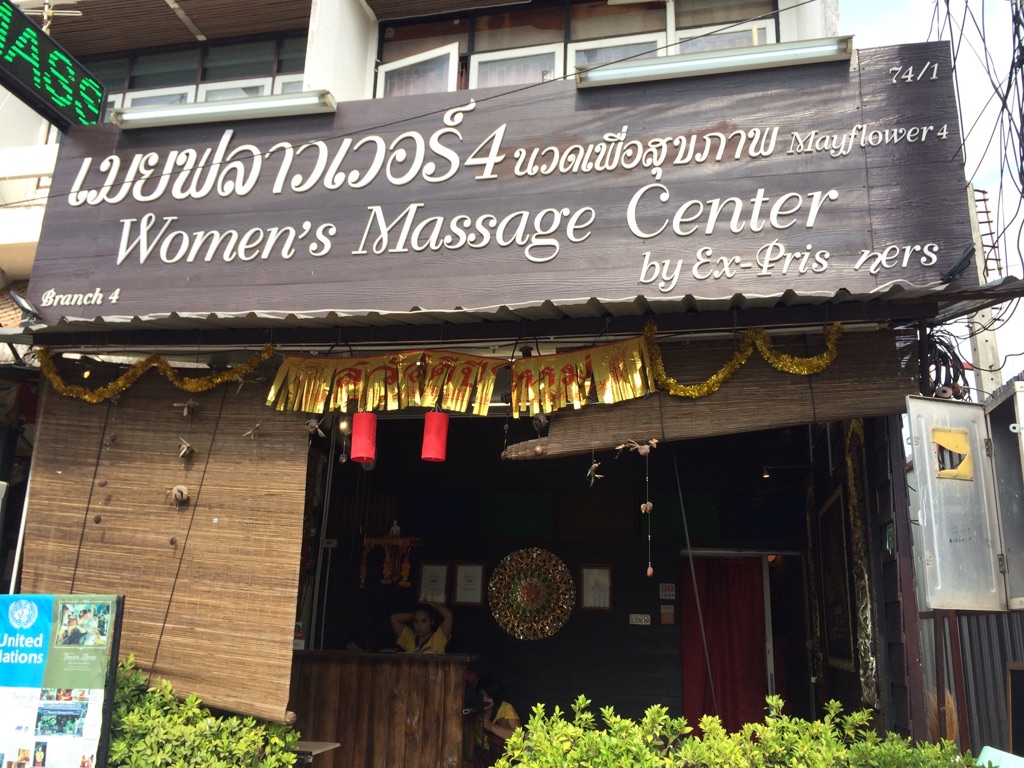
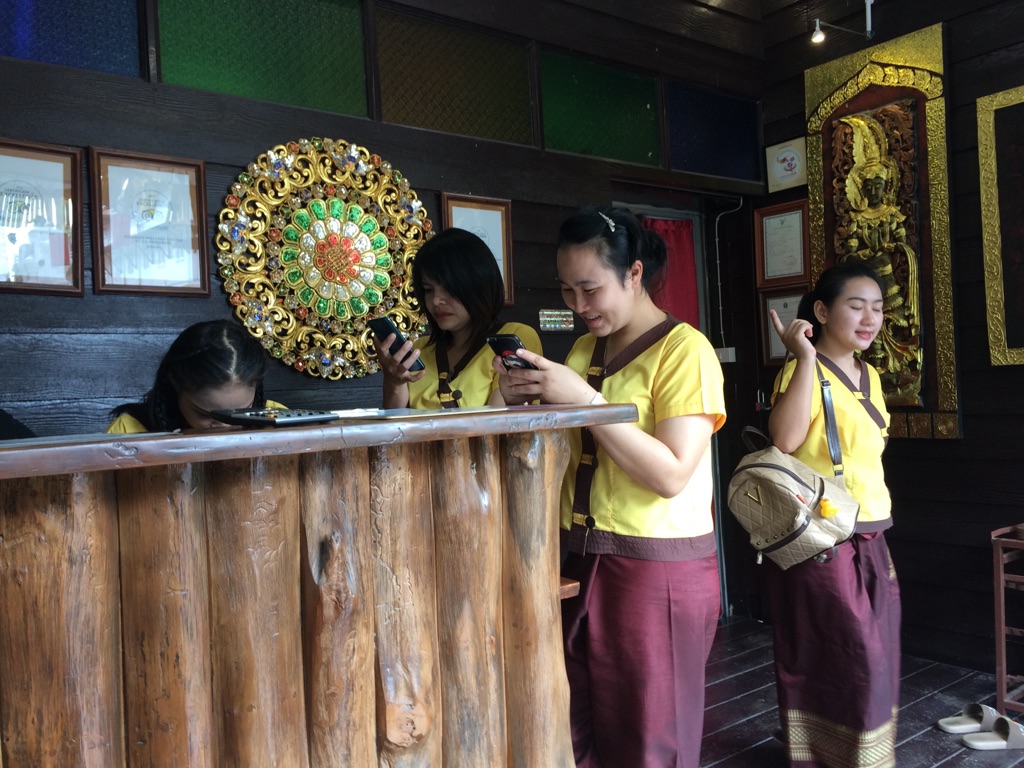
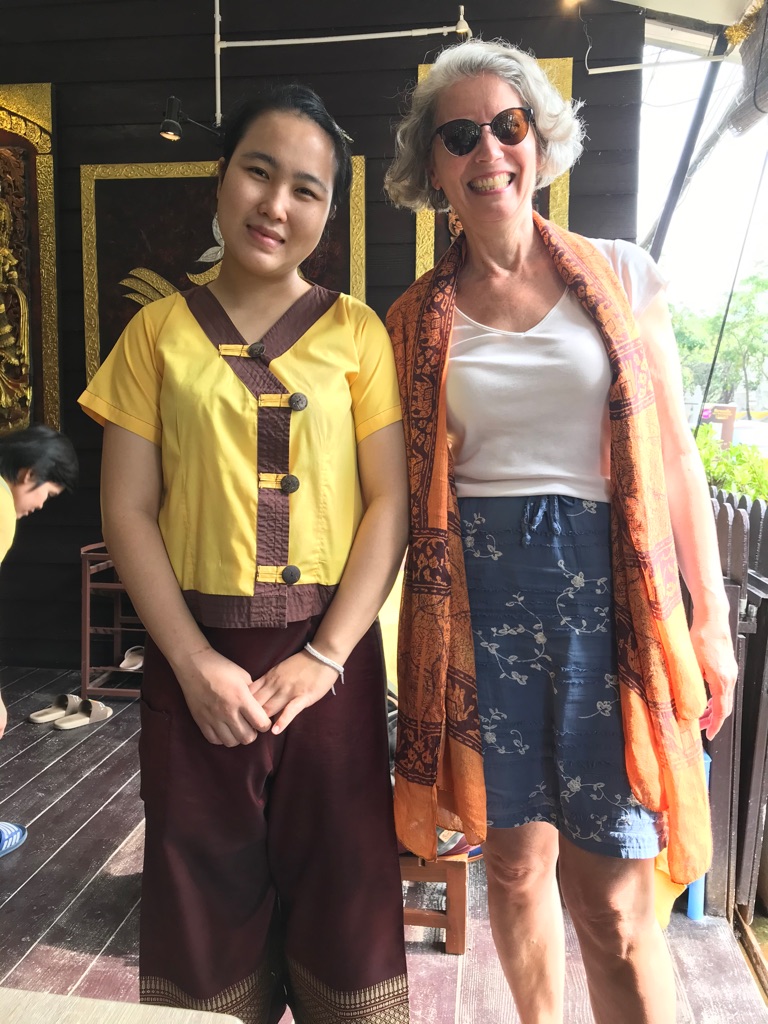
Kate looking relaxed and delighted after her massage.
For the afternoon, I stayed at the hotel to rest (definitely feeling under the weather) and then read upstairs on our rooftop garden.

I wanted to use the pool but it is in the shade and not heated - and, after all, it is winter in Thailand so the temperature is only 29 degrees during the day.
Kate went off to explore the town and discovered a temple, Wat Phra Singh Waramahavihan built in 1345. Although under renovation, it was worth the visit.

New Year’s Eve
Throughout the week, Kate has asked everyone we have met to tell us where to be for the best New Year’s Eve experience. She received as many different responses - ranging from “lanterns everywhere” to “nothing happens at all on December 31 - celebrations were in November”! \240However, Kate will not be undone when it comes to celebrating the New Year nor will she miss a big party with lots of people. So, we set off to find the party!
At 8’oclock, the streets were full of people, cars, bikes and scooters. Vendors were out in full force and we could see the lanterns being released into the sky. Lanterns were on sale everywhere for 40 Baht ($1.75). They are rice paper with lit kerosene candles at the bottom. Sounds safe, right?



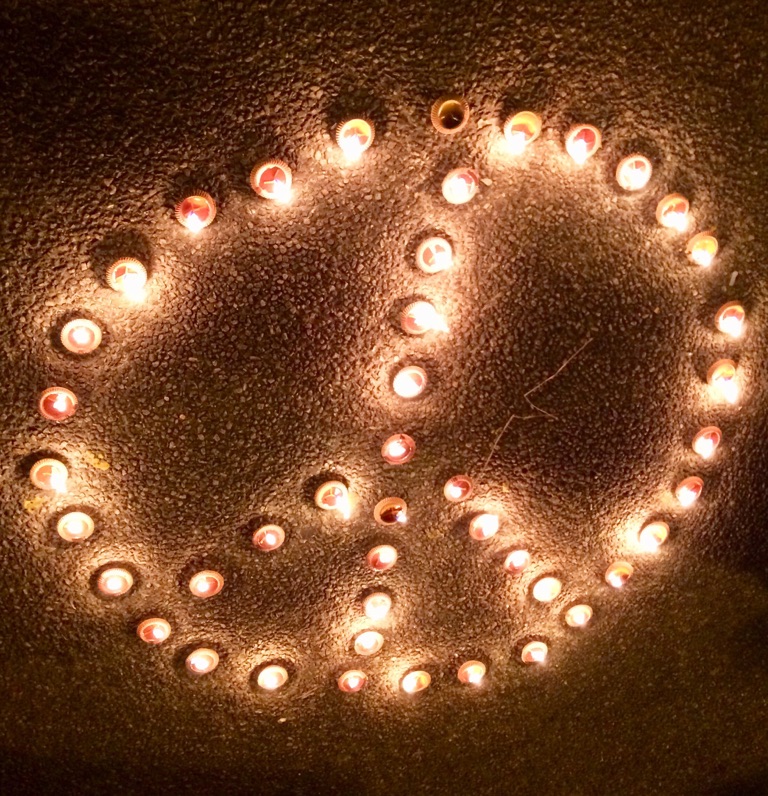
Votive-lit peace sign!
We saw some other sights along our walk through the swarms of people.

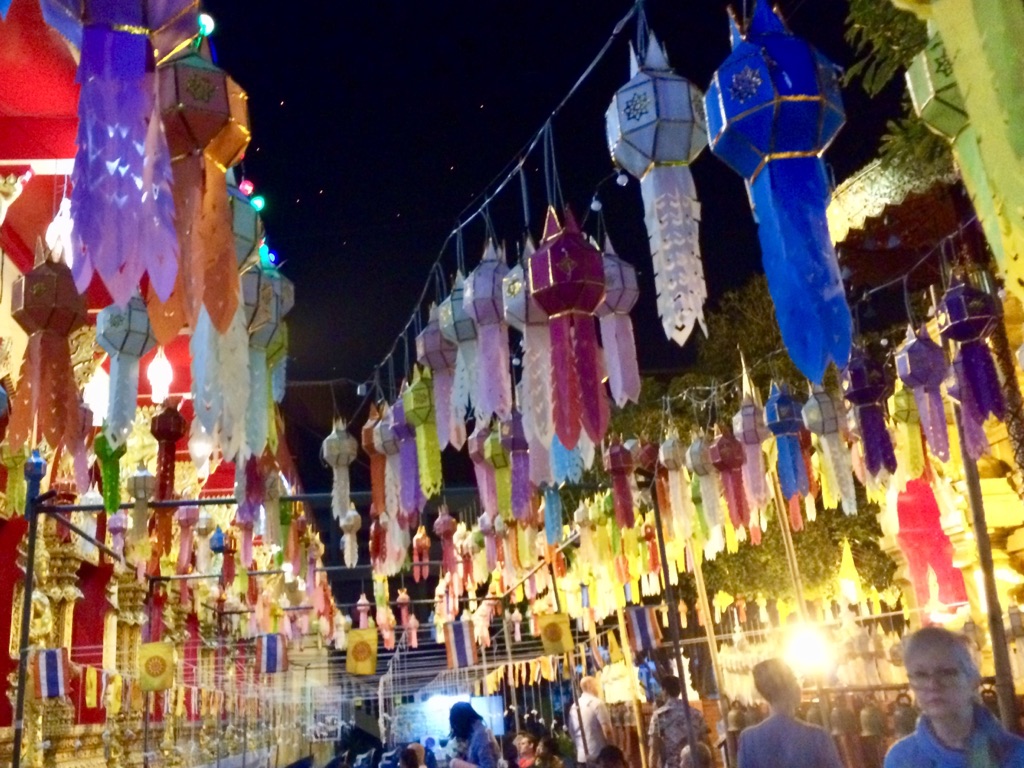
And, finally, we ended up back on our rooftop patio with a midnight snack of burritos (from a Mexican food street vendor who came highly recommended) and a Singha beer from the liquor store (which is 7-Eleven in Thailand - I am not kidding).
We shared a lovely conversation with a young Chinese man, who is a policeman in Guangzhou - just north west of Hong Kong. He was eager to communicate in English and just a delightful young man. I so wanted to ask him what he thought of the riots in Hong Kong - but I didn’t do it!
We saw the New Year in, Thailand style, from a rooftop in 24 degree weather, with thousands of lanterns flying in the sky and fireworks being set off everywhere!
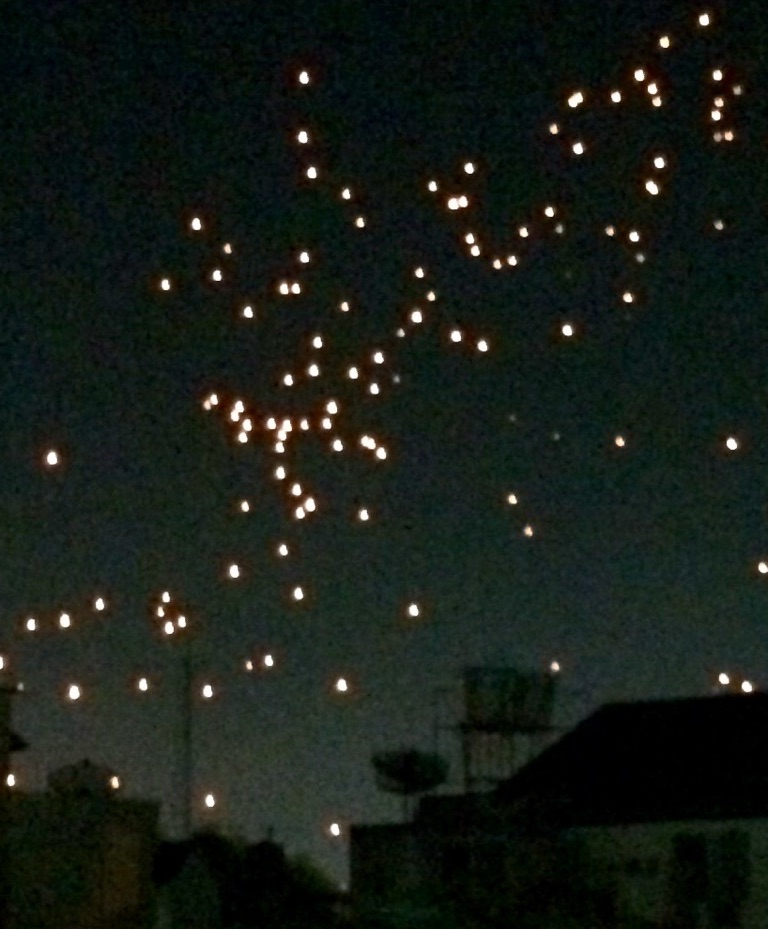
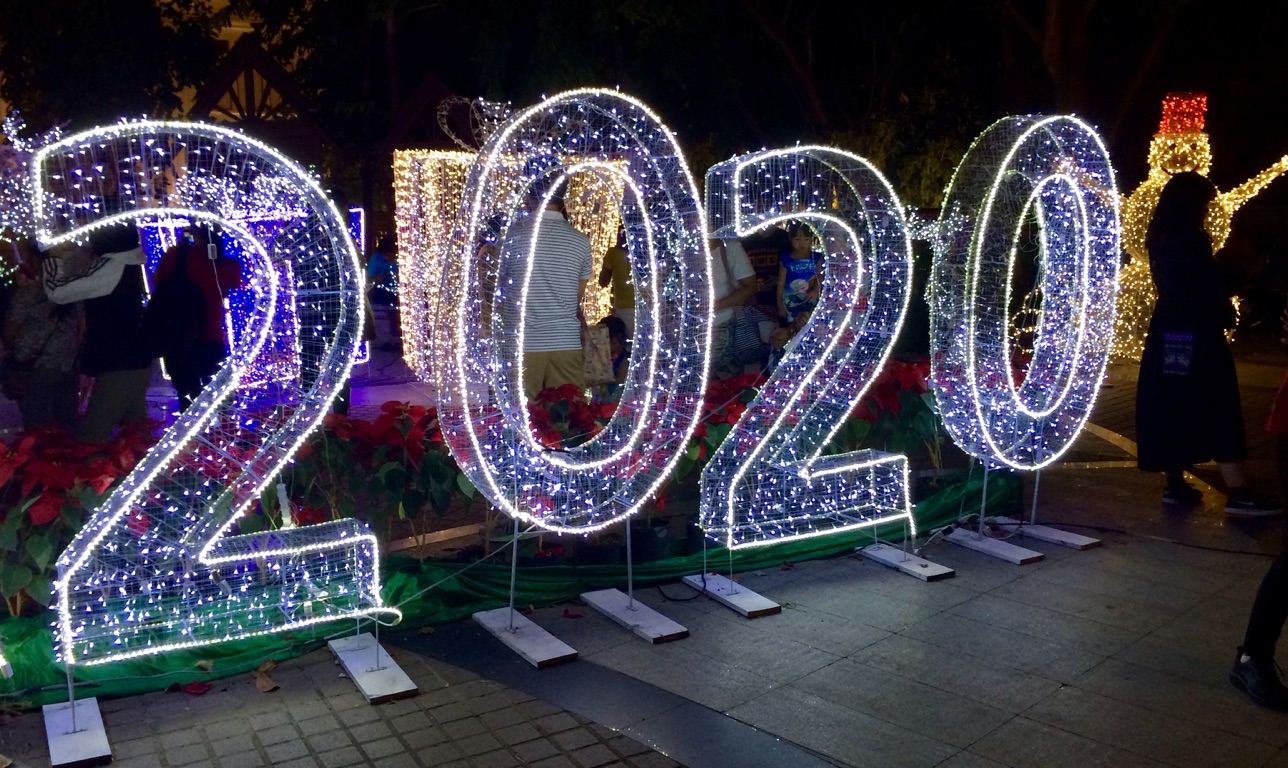
A walk and a park
(Kate’s day out while Julie sick)
New Years Day 2020 - mid afternoon, time for a walking adventure.
Once more I was scouring the map of Chiang Mai’s ‘old city square’ and this time, noticed a green space in the North West corner. The walking directions said 24 mins. I had a couple of hours to let Julie rest and read and exploring on foot for a holiday afternoon...what could be better?
I’d stroll through the soi/lanes and some main roads. This was the time to practice a new skill - “GPS Walking” which I could now do as I proudly owned my first SIM card! The solo jaunt would be worry free and confidence was boosted.
Jan. 1 is a much quieter day in this touristy town than the hoopla week leading up to it. For some of the lanes I didn’t see anyone and then another traveller or two, a child on a bike, a family sitting down for their afternoon meal and of course, a scooter or two would suddenly appear. I did hear music at one point and when I reached the corner, there were 8 men and a woman at their gathering spot, karaoke machine warming up. We shared a little swaying dance while I took a video and some pics, all to everyone’s great pleasure.
There were many “Kodak moments” and the information that a multitude of temples and pagodas abound, became ever evident.
I had quite heated up after 35 mins. and a wave of relief and gratitude rushed in as I stepped into the picturesque park setting and headed for the shade. A pit stop for some much needed salty chips and 3 attempts to find ‘just the right spot’ finally had me sitting on a bench next to a pond and white concrete bridge. Perfect.
Looking around the amenities came into focus: fountains; benches, structures and hills of green, to rest upon; trees, flowers, pigeons and koi; and enjoying it all - lounging folks of the world. I ate chips, sat still, contemplated the scenes and eventually wrote some poetry.
A walk to a park, a spot to sit and just be - a good way to say, “Hello” to a New Year.

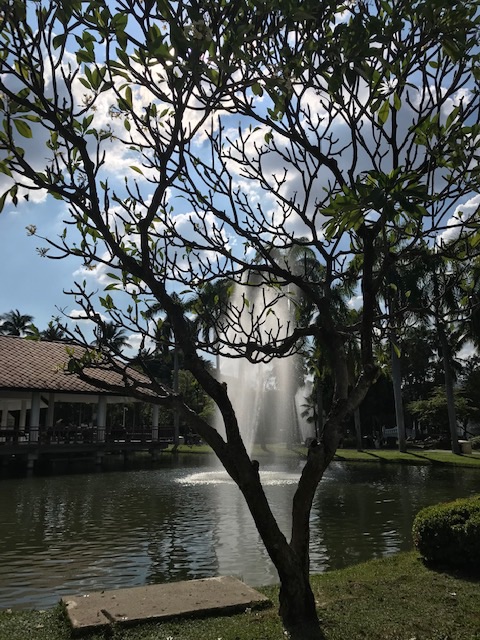

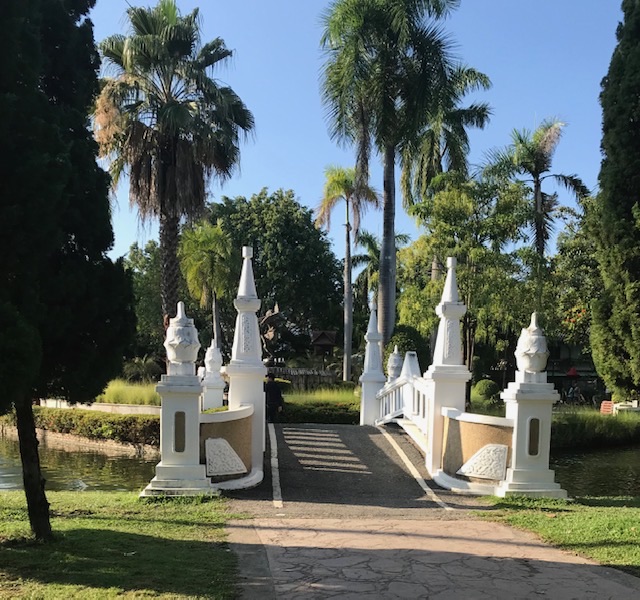
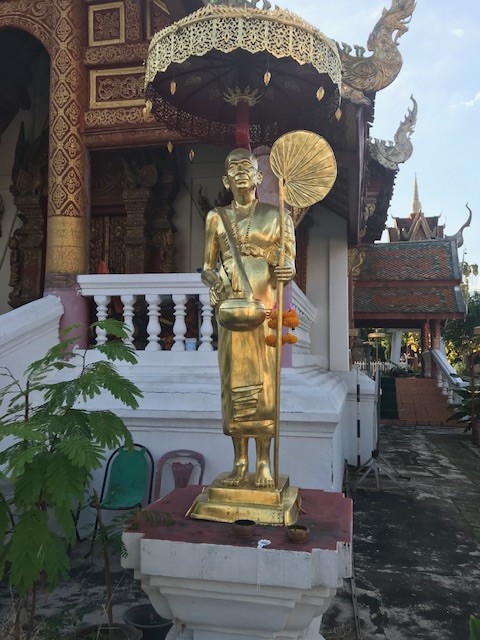
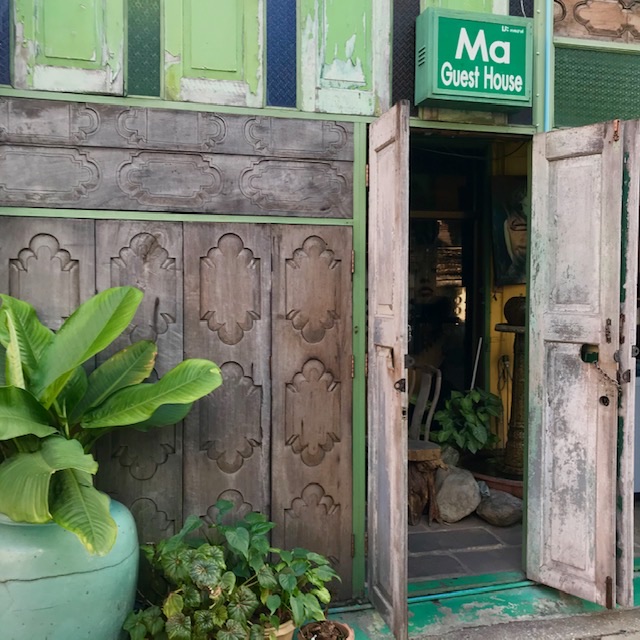
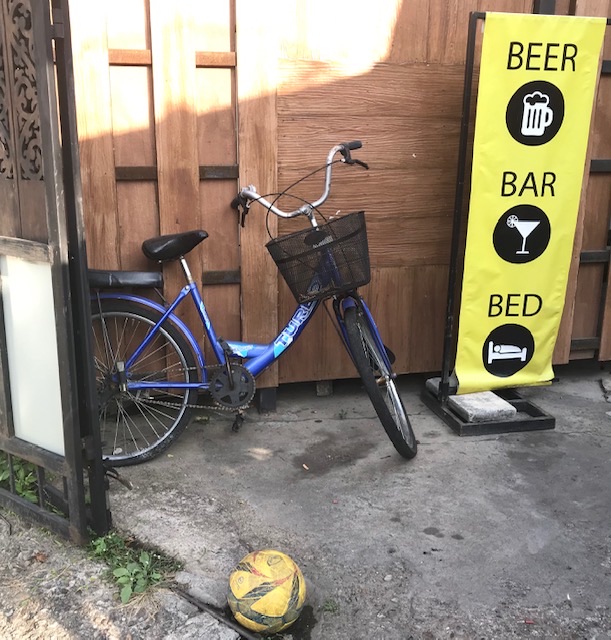
...just the basics...
A palace garden, a temple and an Irish pub
Today, I am mostly recovered and we visited the beautiful gardens attached to the Bubing Palace, the \240Royal Winter Palace when the royal family visits the northern province of Chiang Mai, or when foreign dignitaries visit. We were part of a small group tour which we arranged at a travel agency in Chiang Mai.
The palace was at the top of a very scary and steep drive up a mountain. The road had a double yellow centre line the entire way but, again, this line offered merely the suggestion that there should be no passing. Our driver did not heed the suggestion!
We could not visit the residences (built in 1961) but could visit the beautiful royal gardens filled with species not native to Thailand. The thousands of roses, hollyhocks, honeysuckle vines and ferns were glorious.
The rules for entry to the palace gardens were interesting! There was a well-armed military checkpoint, young male soldiers, with guns, who checked our skirt length (and that our shoulders were covered) and then pointed to 2 young women (part of their entourage) as examples of appropriately attired women!!!! I was ‘appropriately’ attired - but I bristled! However, I really wanted to see the rose gardens - so this was no time to stand on principle!!!!
And they did not disappoint.
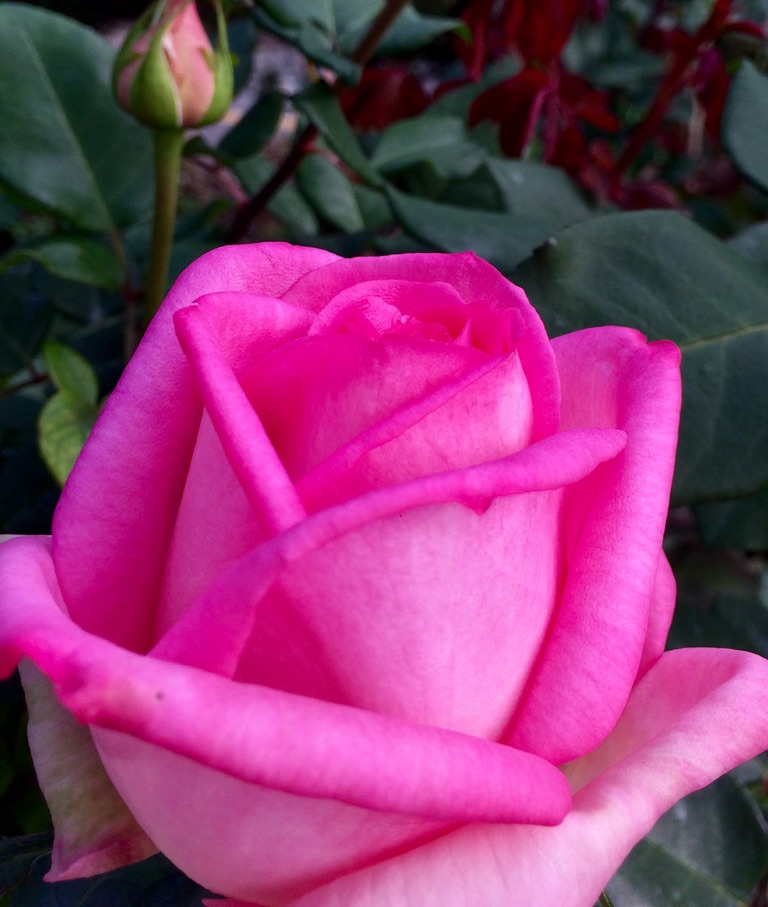
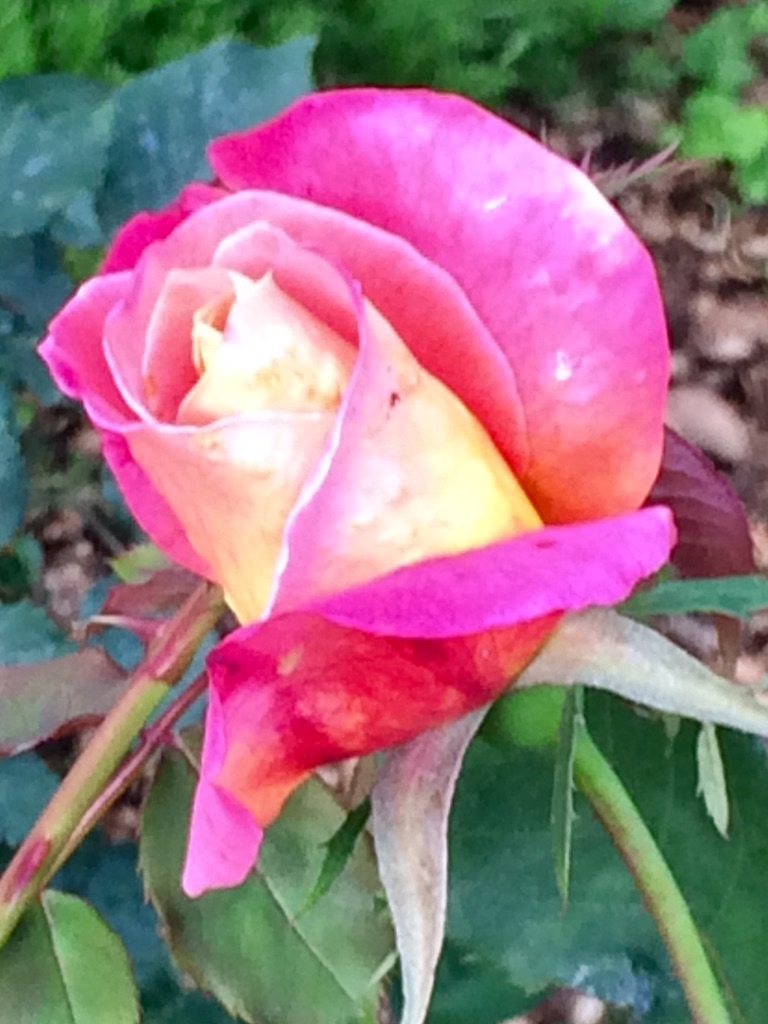
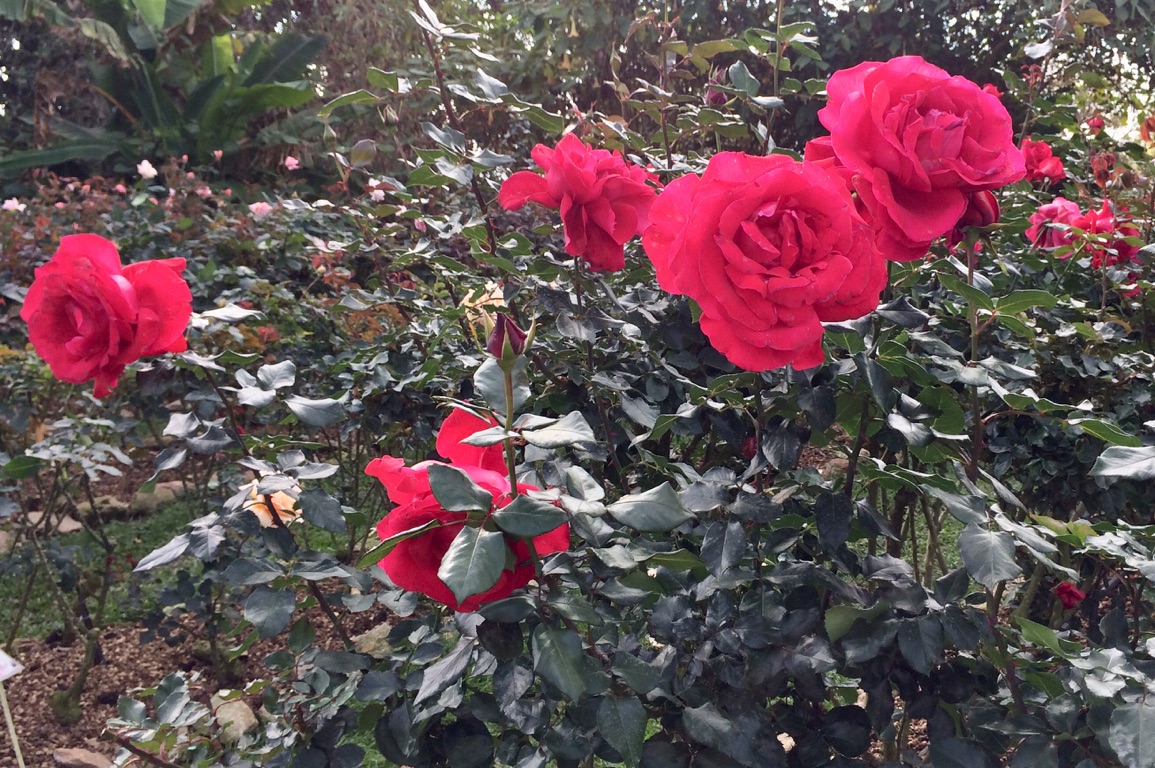
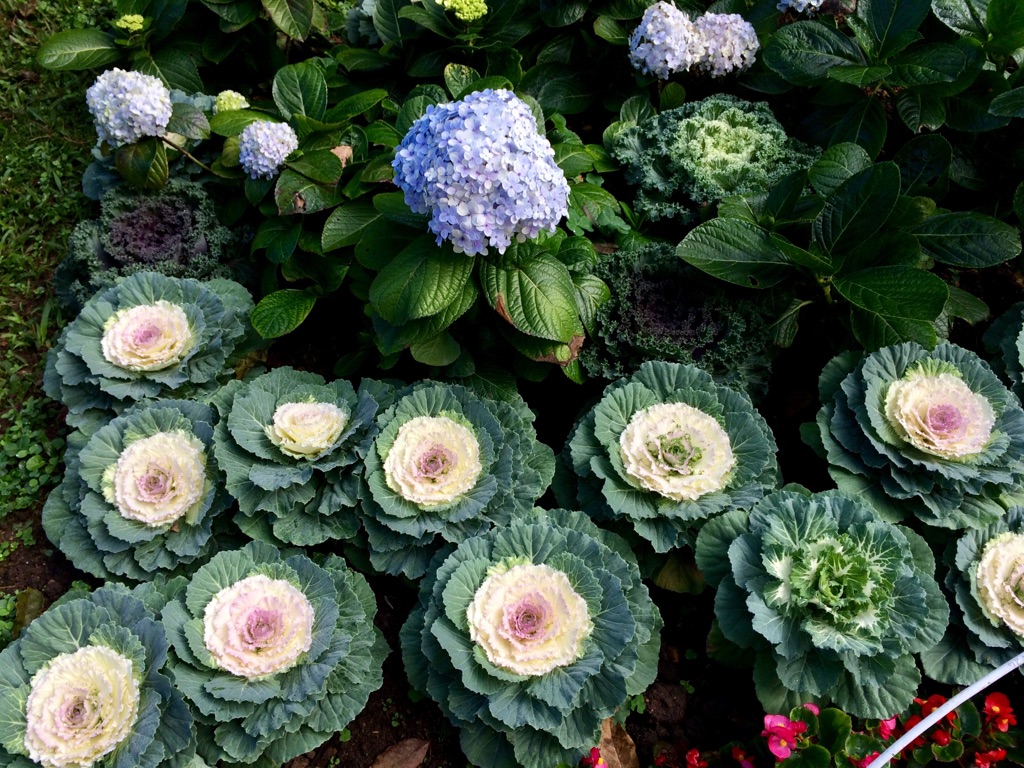
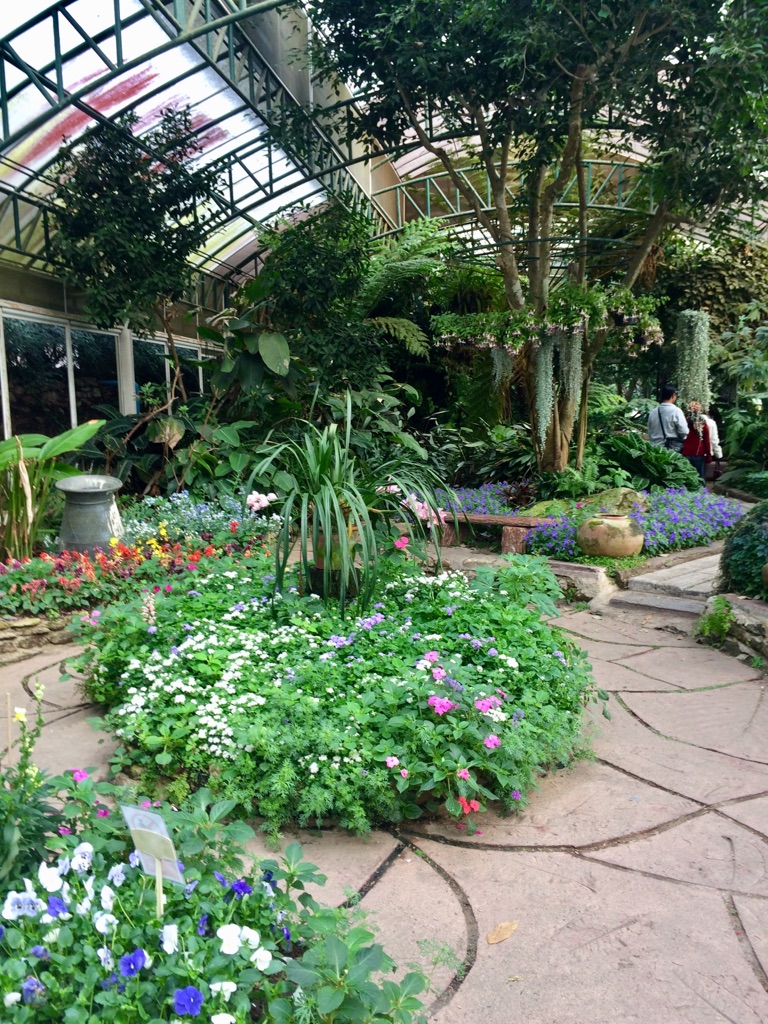

Fern garden
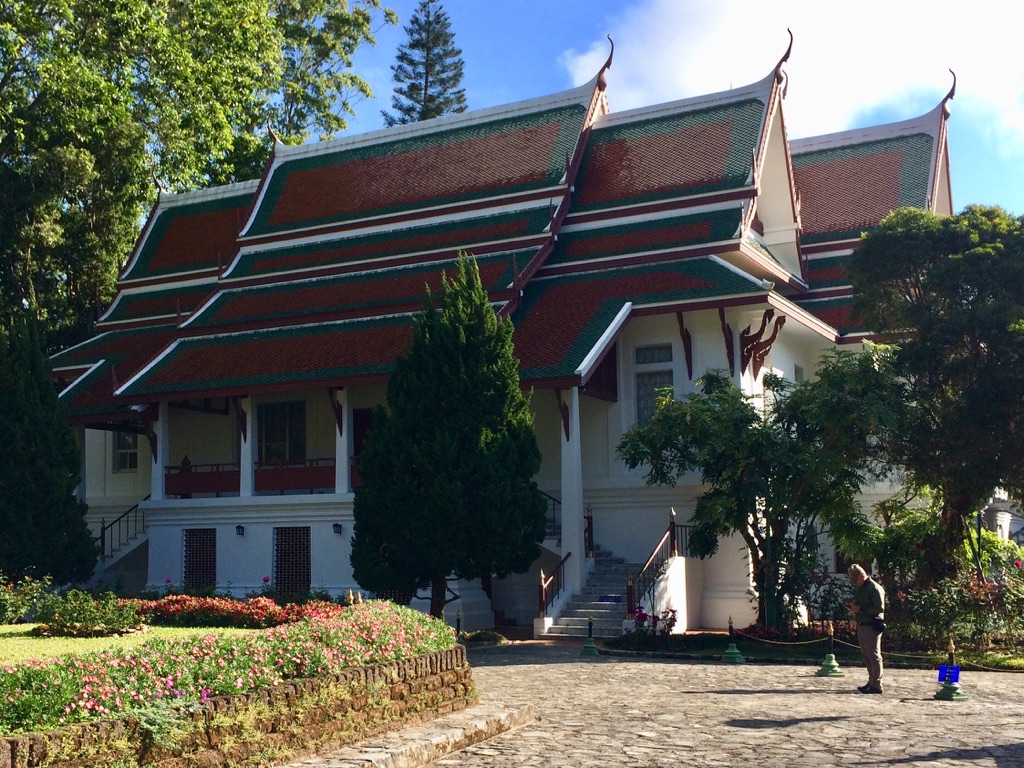
One of the royal residences.
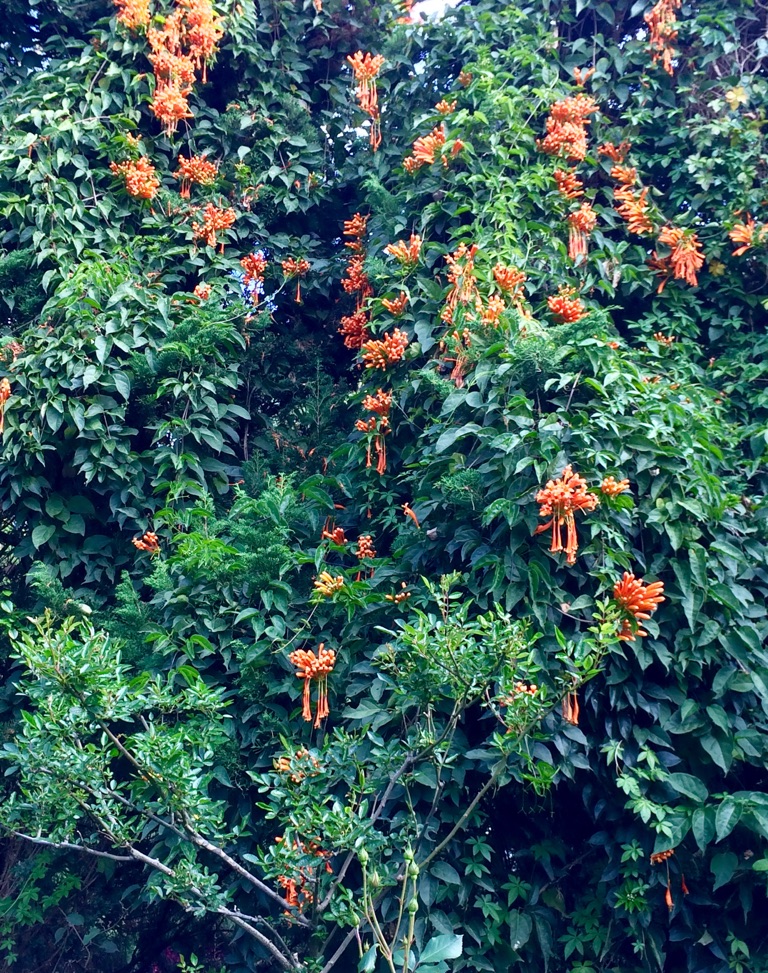
Honeysuckle hedge
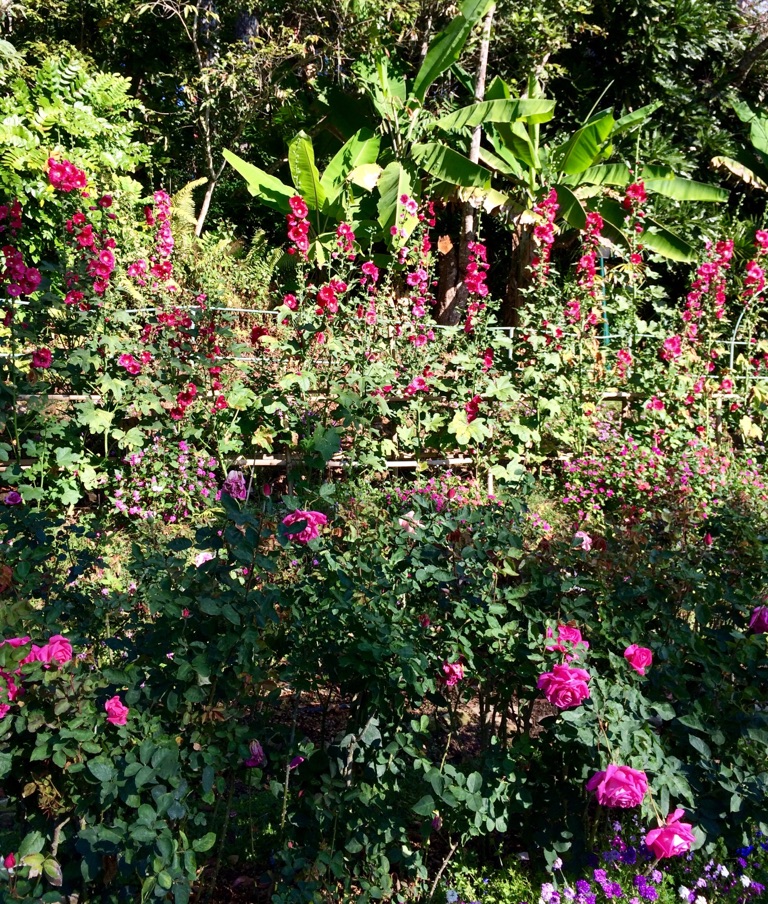
Hollyhocks and roses...
After the palace, we headed back by bus to the Doi Suthep Temple. It was commissioned by the king in the 14th century and is one of the most beautiful temples in northern Thailand. Because of the mountain location, the views are stunning. We travelled up by cable car but walked down the 360 steps to the bottom.

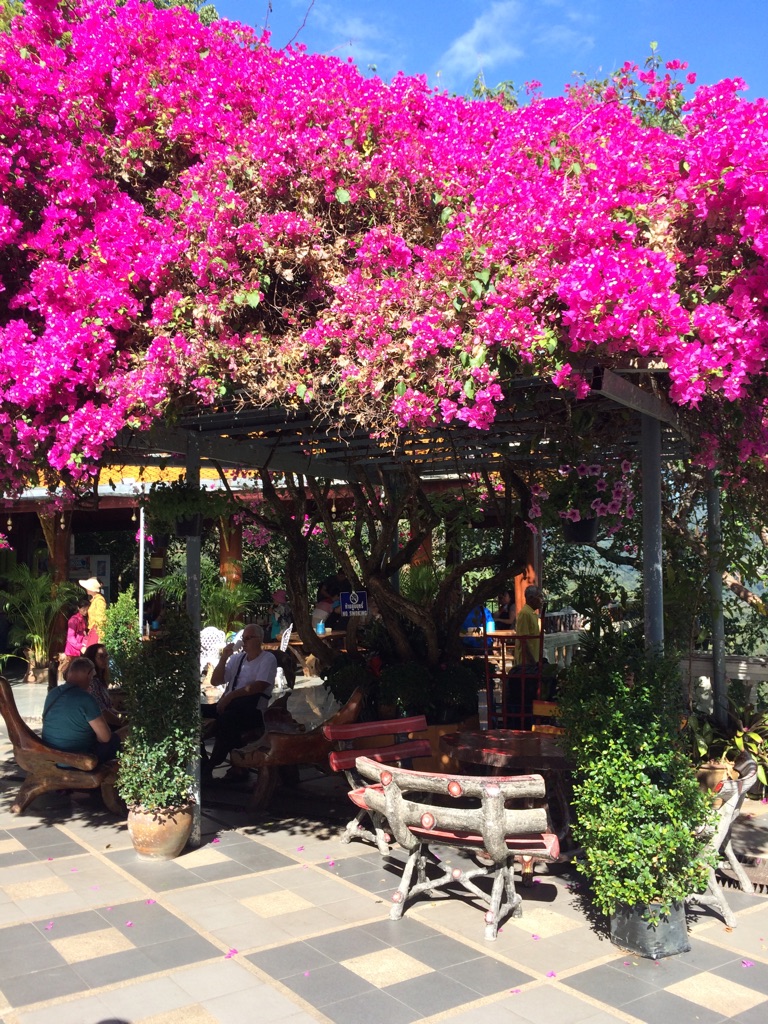
Glorious bougainvillea tree
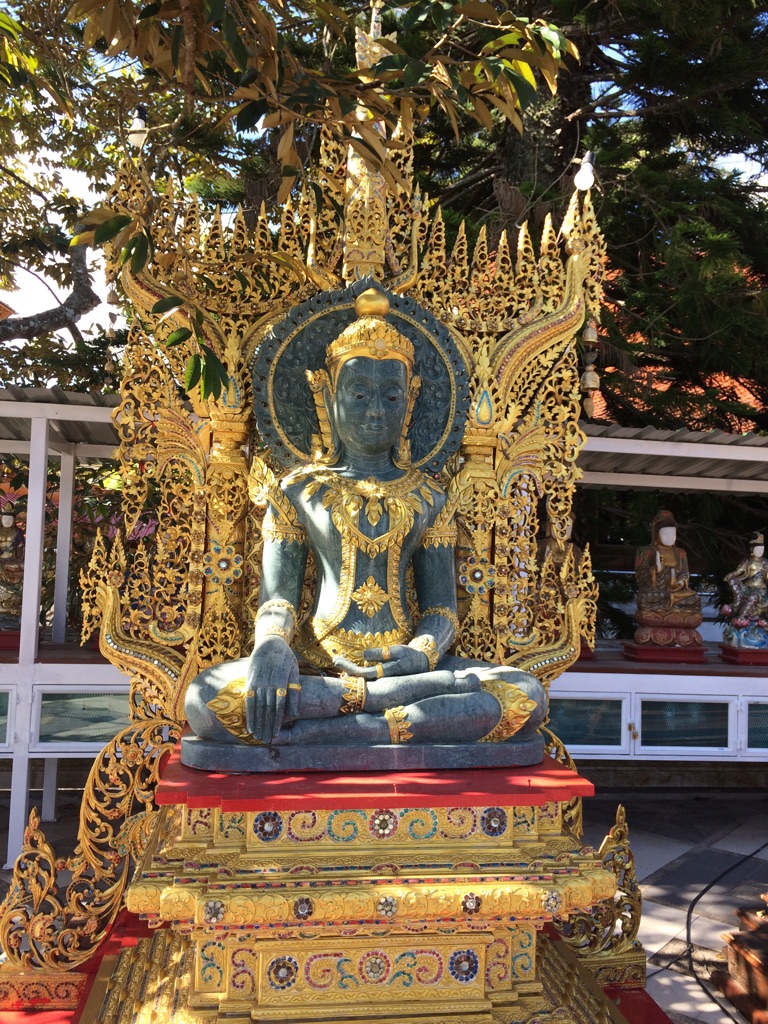

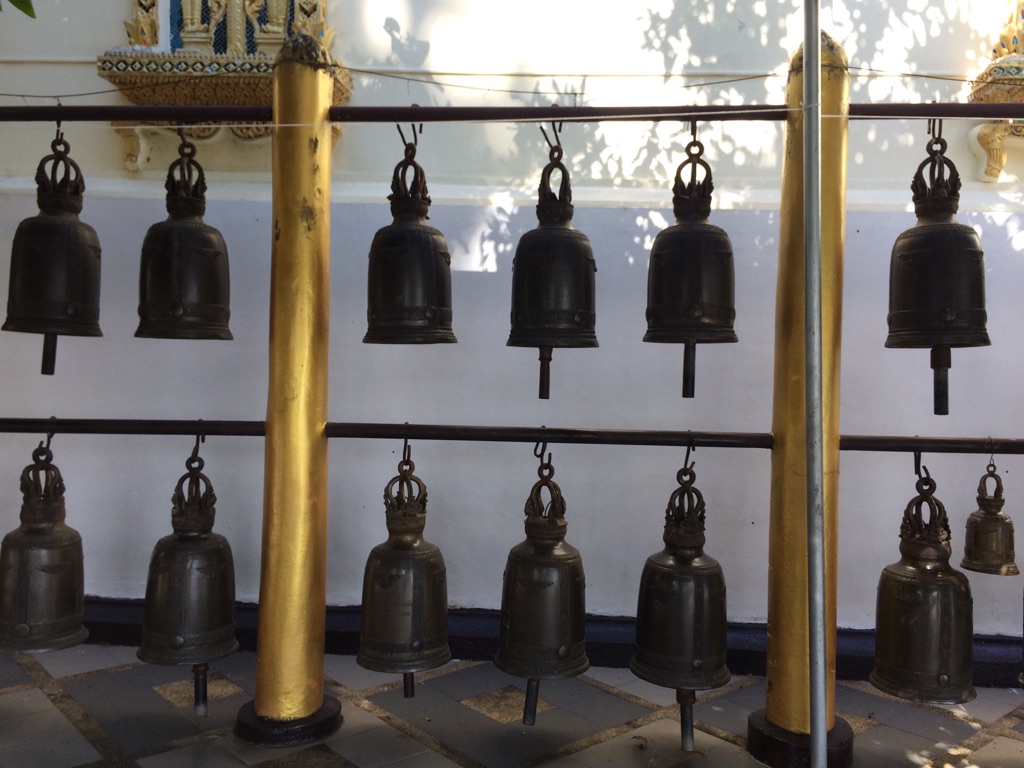
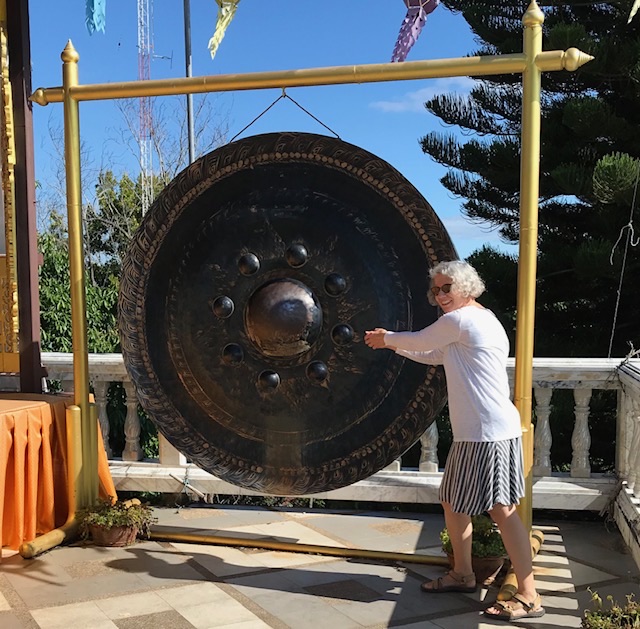

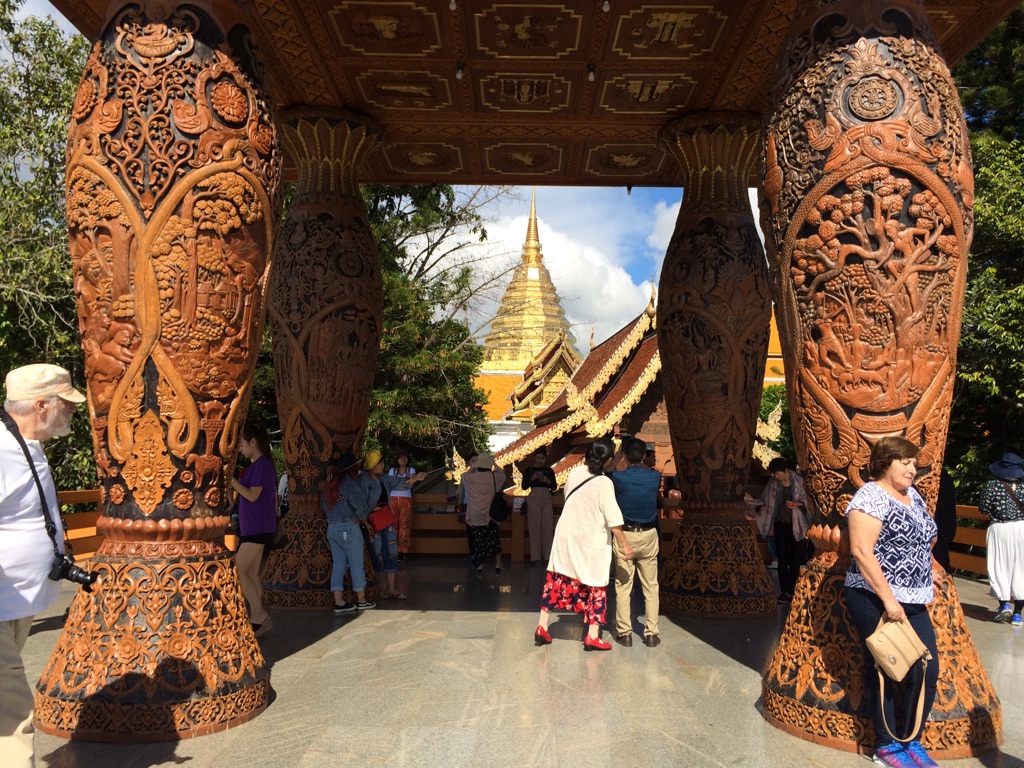

At the bottom of the 360 steps from the temple - note the cobras which serve as railings!
And for our last night in Chiang Mai we decided to do something really different - and chose an Irish pub with a lovely outdoor terrace. \240At the end of the day, Kate and I can always be relied upon to find a good pub!!
Bus travel to Chiang Rai
We packed up to leave Chiang Mai and our lovely hotel M5. It is always hard to leave each place - we so enjoy the incredible friendliness and service of each hotel. \240Most hotel staff have graduated from post-secondary institutions in hotel management. \240All of S.E. Asia depends heavily on developing the tourism industry.
Next adventure was to take the bus through the mountains for 150 km to Chiang Rai. We took the Green Line bus, air-conditioned and super comfortable. Our reserved seats cost 280 baht ($13) and we made ourselves comfortable for the 3-hour drive. We didn’t quite anticipate the under-construction state of the highway but, nevertheless, we saw a national park and some rural towns.
On arrival at Chiang Rai bus station, we found a tuk tuk to carry us and our luggage to our nearby digs for the next 4 days, Bann Thawan Hostel and Spa. \240Our room does not quite have the luxury and convenience of our previous hotel, but the location is proving fantastic. Directly across the street is a green space housing a massive flower festival and we are just a street away from a large market area.
We quickly checked out the flower festival. \240Every centimetre of space has been utilized to display flowers, including the 4 metre high walls.

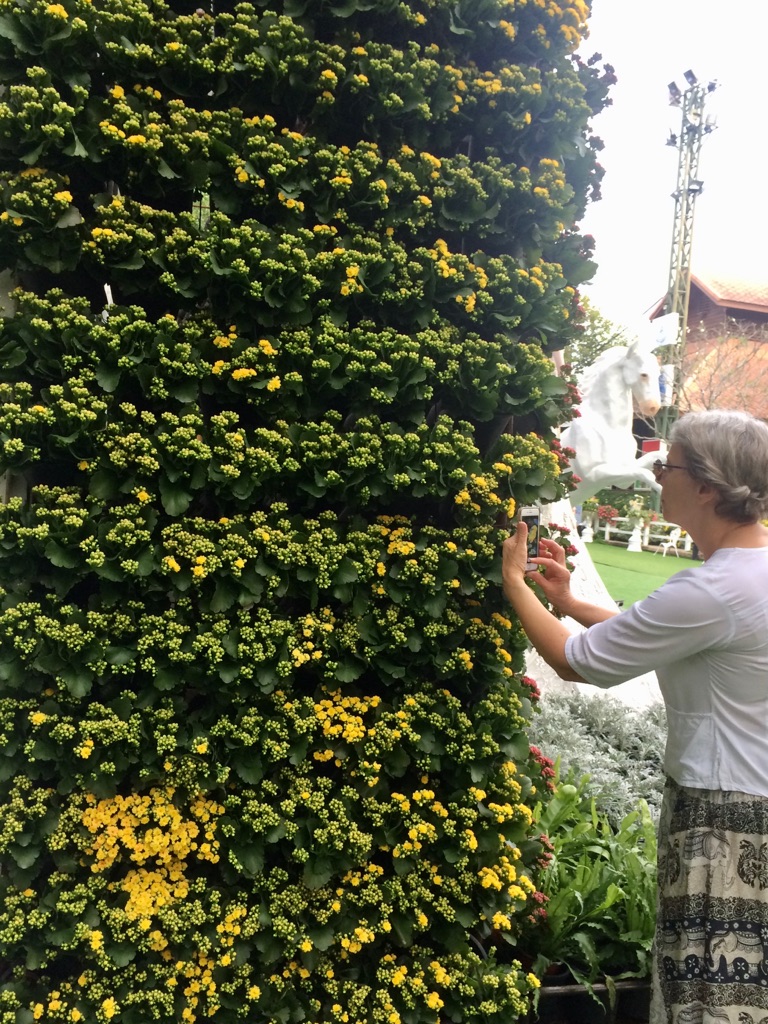
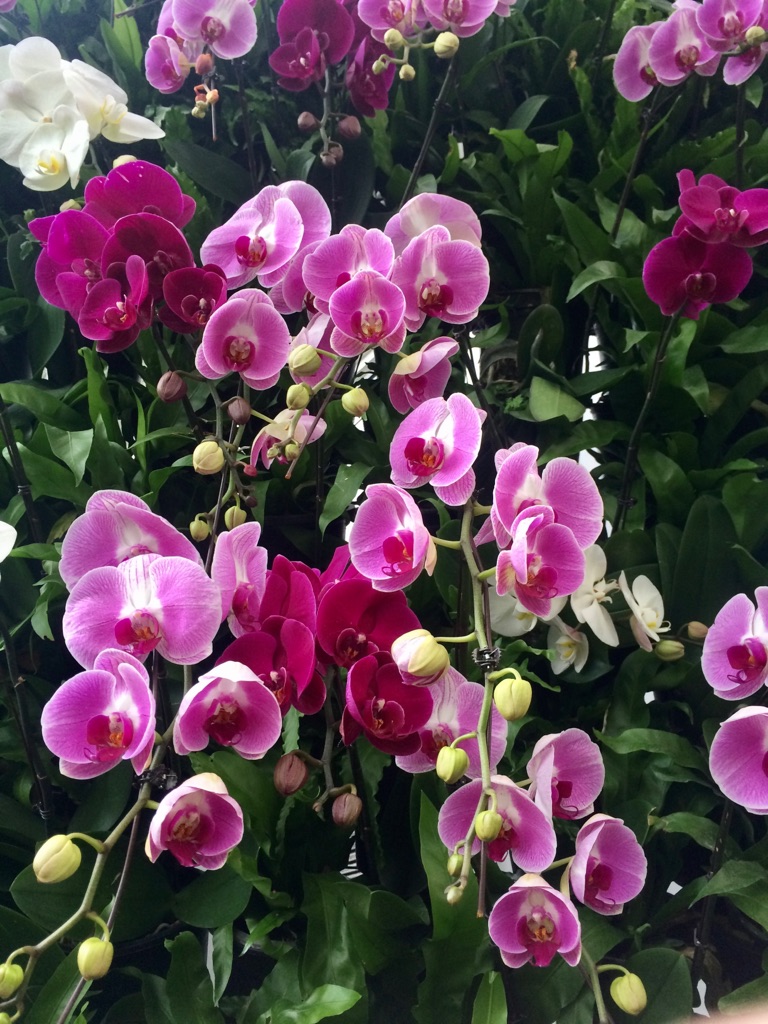


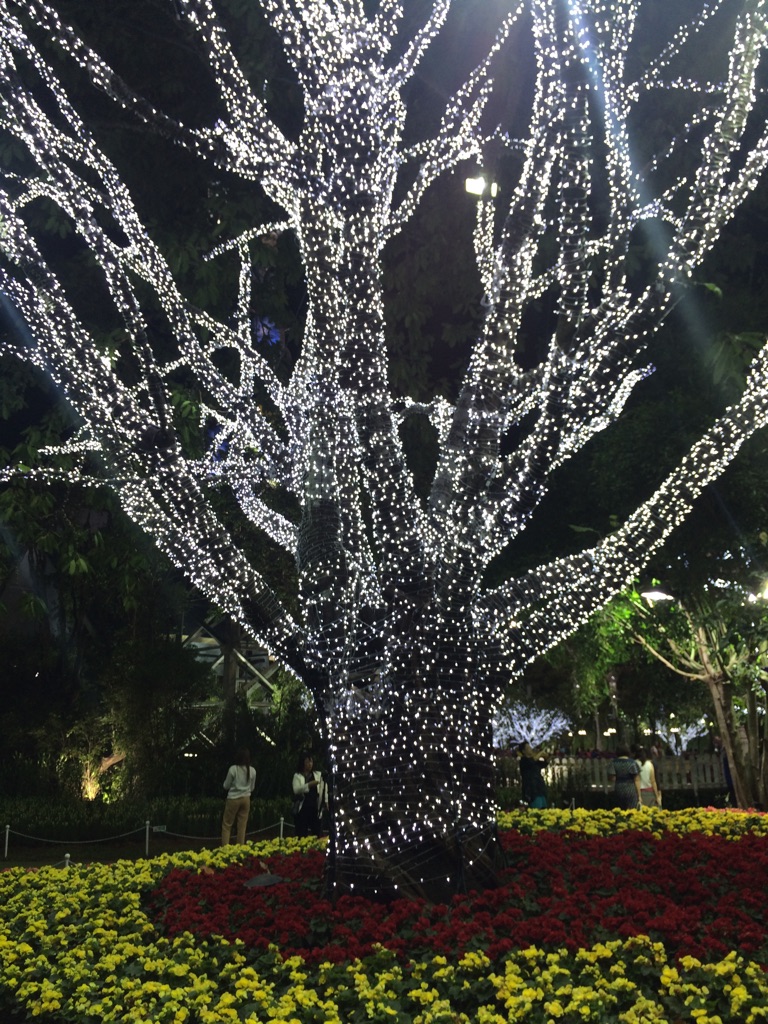
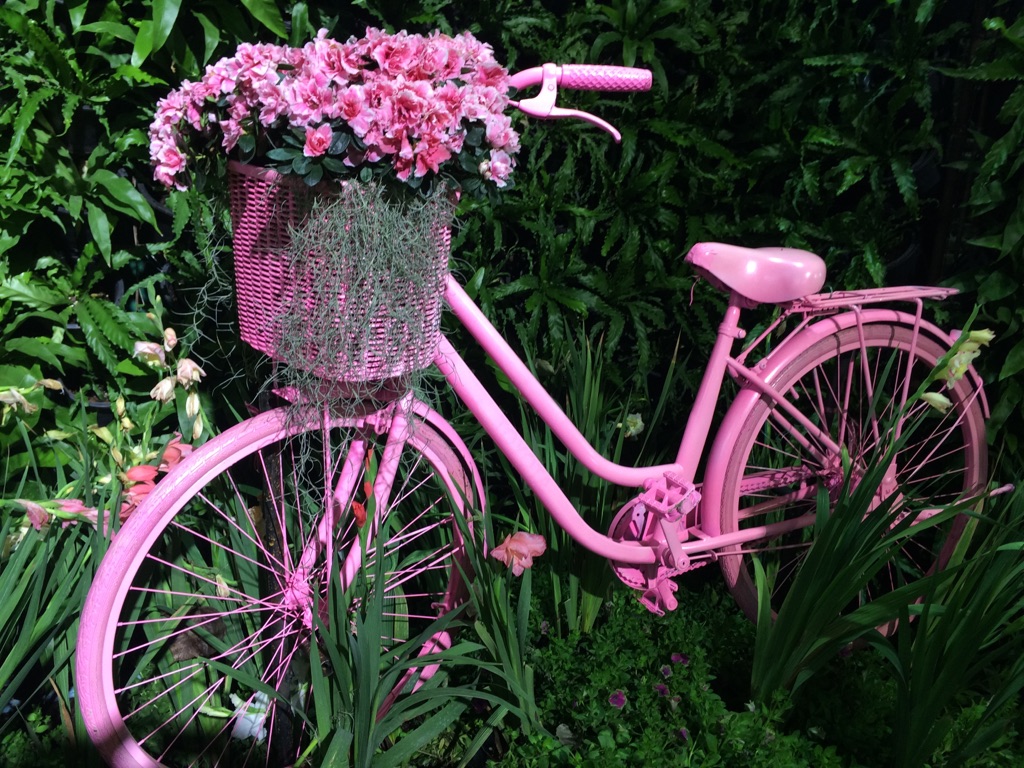
And then time to explore the streets of Chiang Rai and find a good place to eat.

Japanese-inspired lighting on a side street.
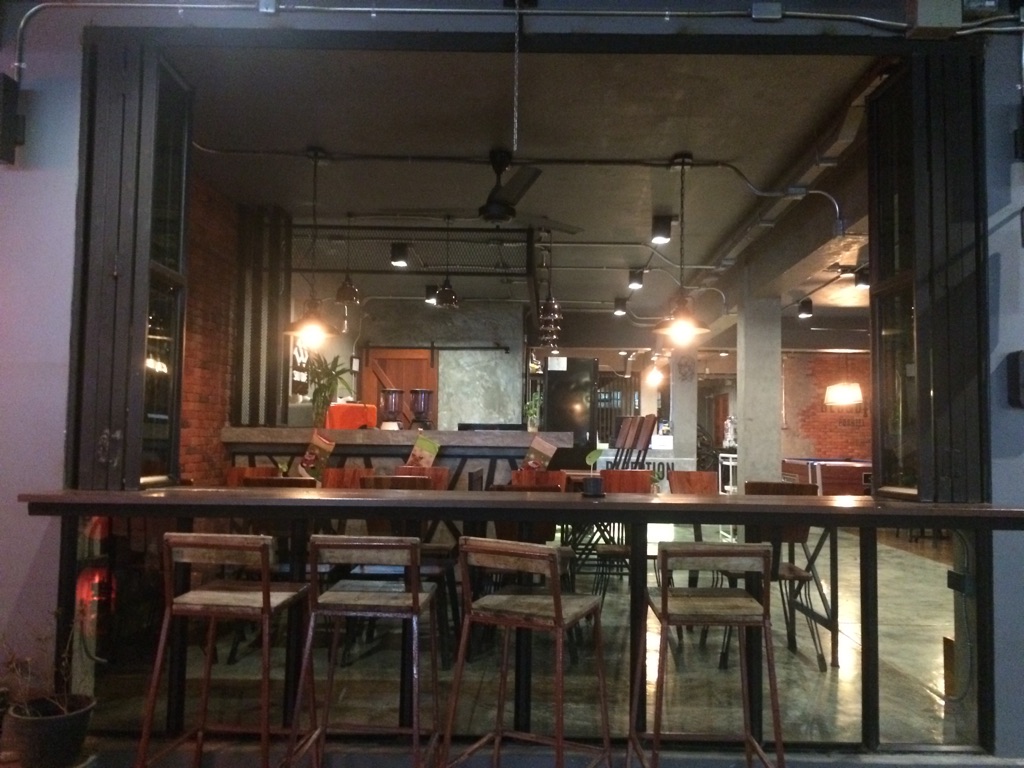
A trendy looking view
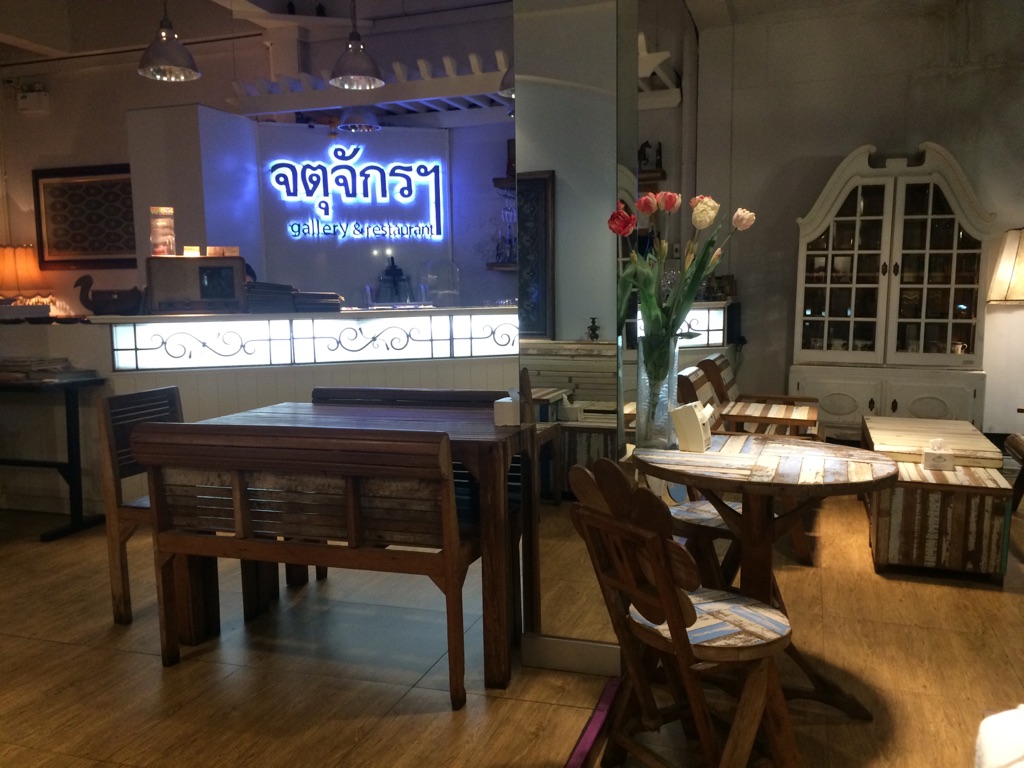
And the very charming place we settled on which had excellent food.
A major reason for staying in Chiang Rai is to visit the three coloured temples - the Blue, the White and the Black. Tomorrow’s goal is the Blue Temple
The Blue Temple
And this is why it is called the Blue Temple...

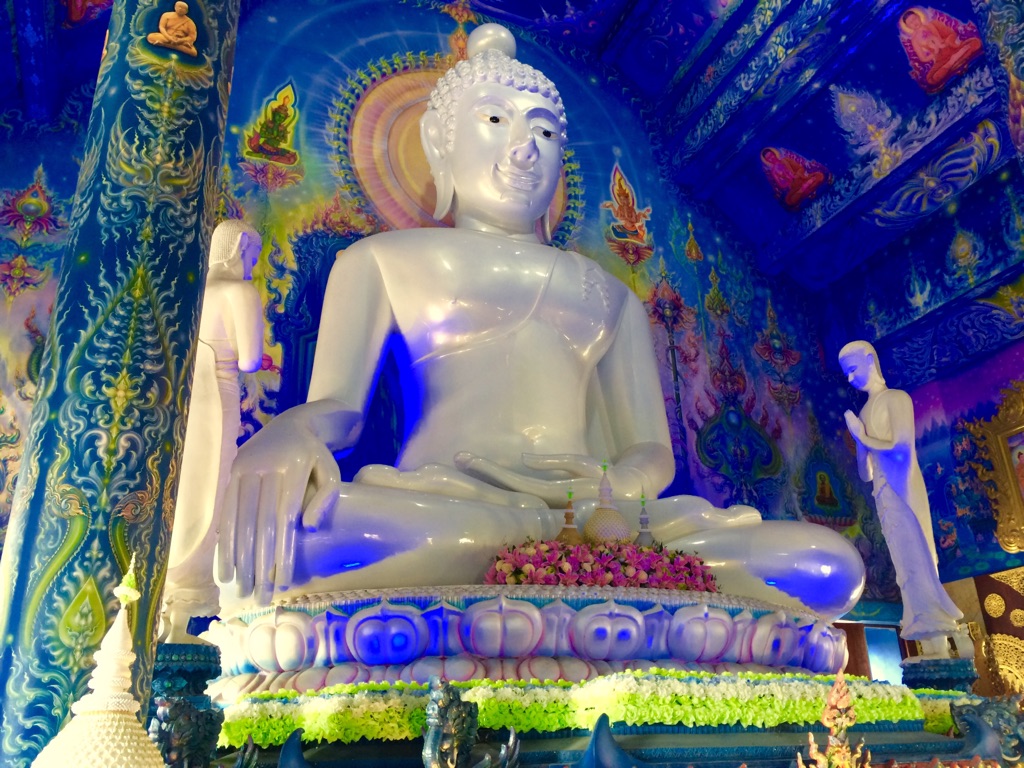
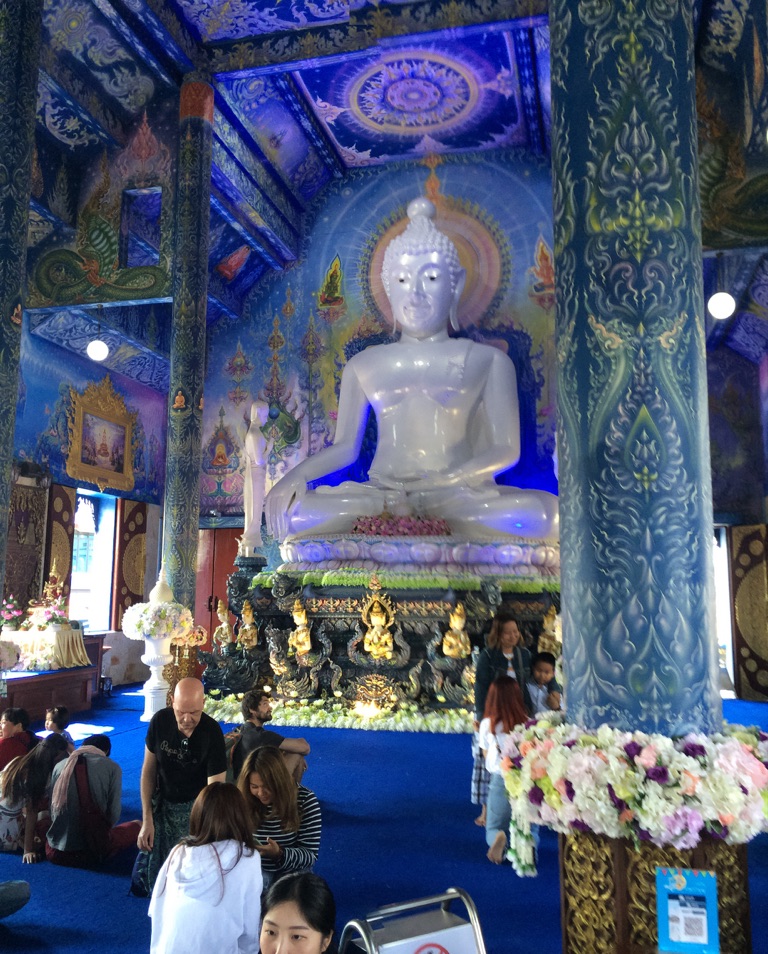
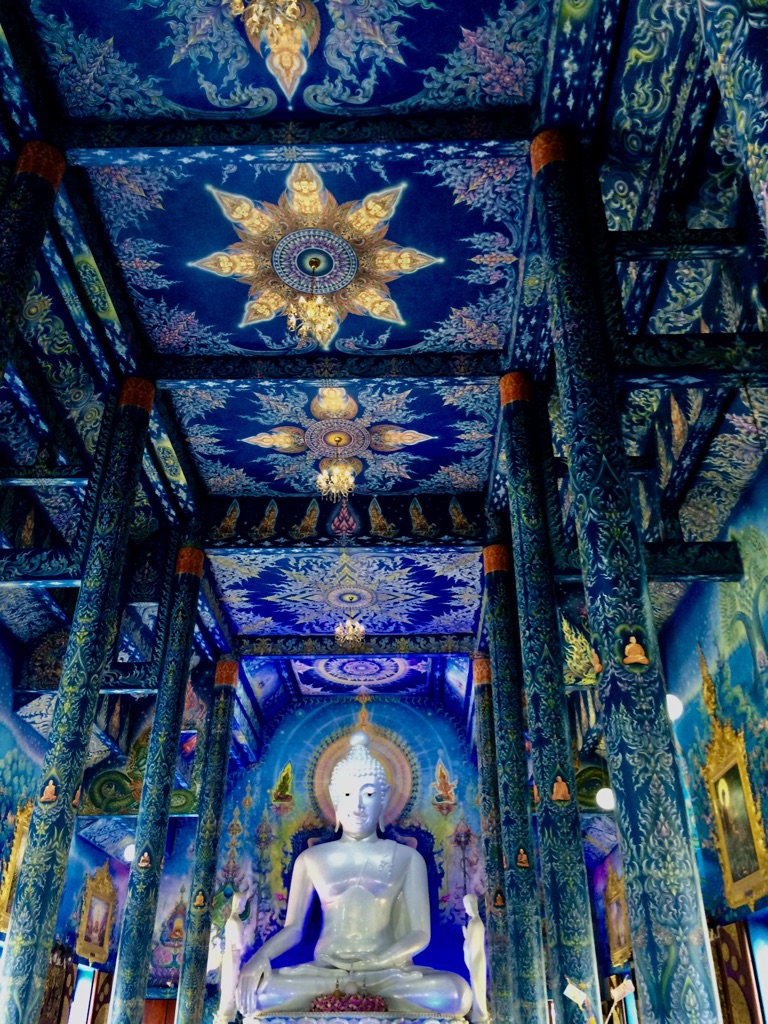
The Thai name for the Blue Temple is Wat Rong Suea Ten, meaning ‘the house of the dancing tigers’. \240It is a very modern temple, building only began in 2005, and opened in 2016. It is still not completed.
The temple architecture and design is considered a fusion of art, mythology and Buddhism - and uses ‘blue’, the colour of wisdom. It is breathtakingly beautiful!
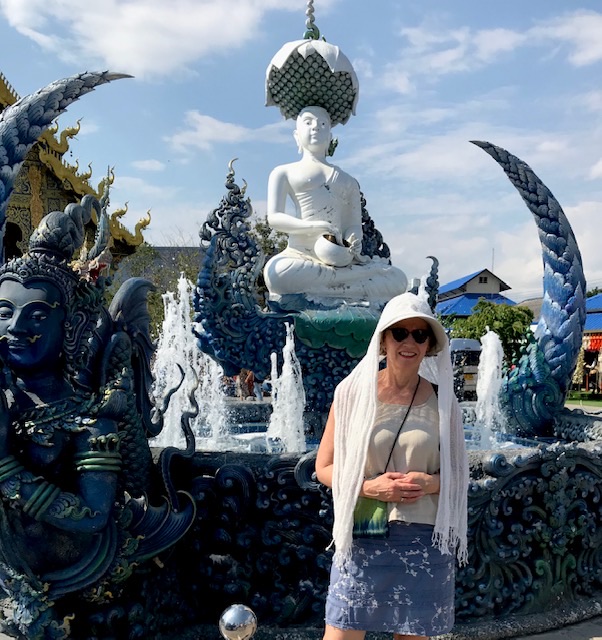
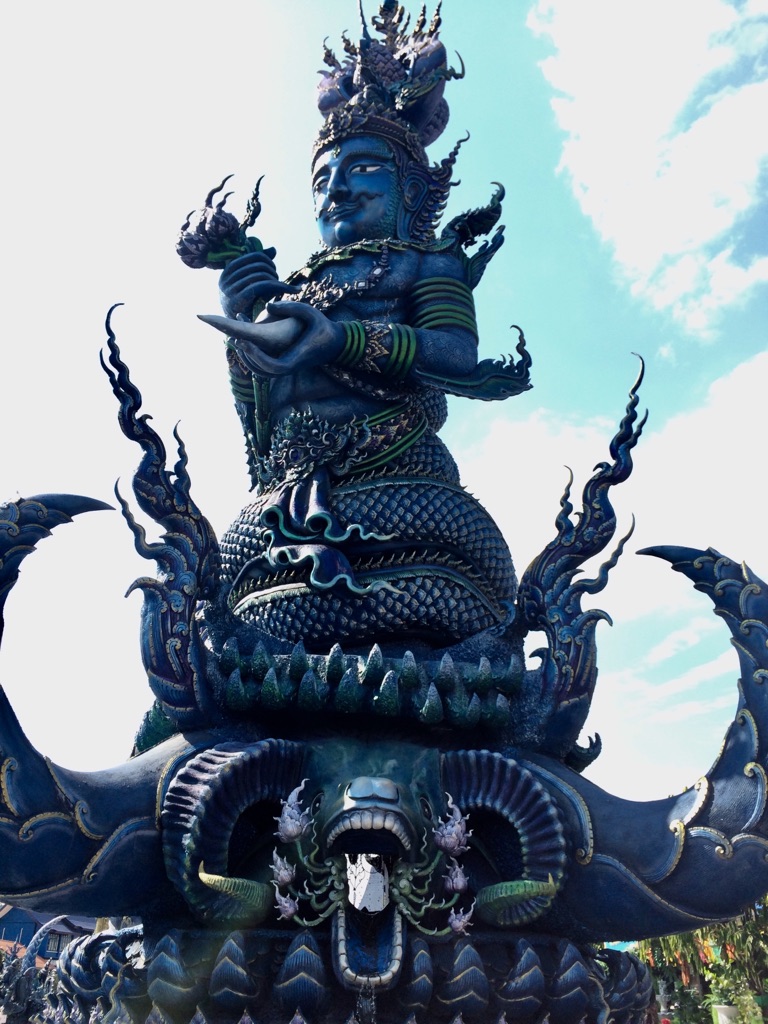

The White Temple
Wat Rong Khun, commonly known as the White Temple, was designed and built by renowned Thai architect, Ajarn Chalermchai Kositpipat, and opened to the public in 1997. He financed it himself no donors and no government funding, in order to maintain his own artistic integrity.
The site is stunning. It is ‘fantastic’ in the true sense of the word - a mix of surreal fairytale-like structures, a Tim Burton-esque movie set, a wedding cake, mythical creatures - and gorgeous Buddhist temples based on the artistic style of the Lanna period.
It was also flooded with ‘selfie’ takers everywhere! \240Highly irritating and intrusive.

The bridge represents the bridge to ‘heaven’...
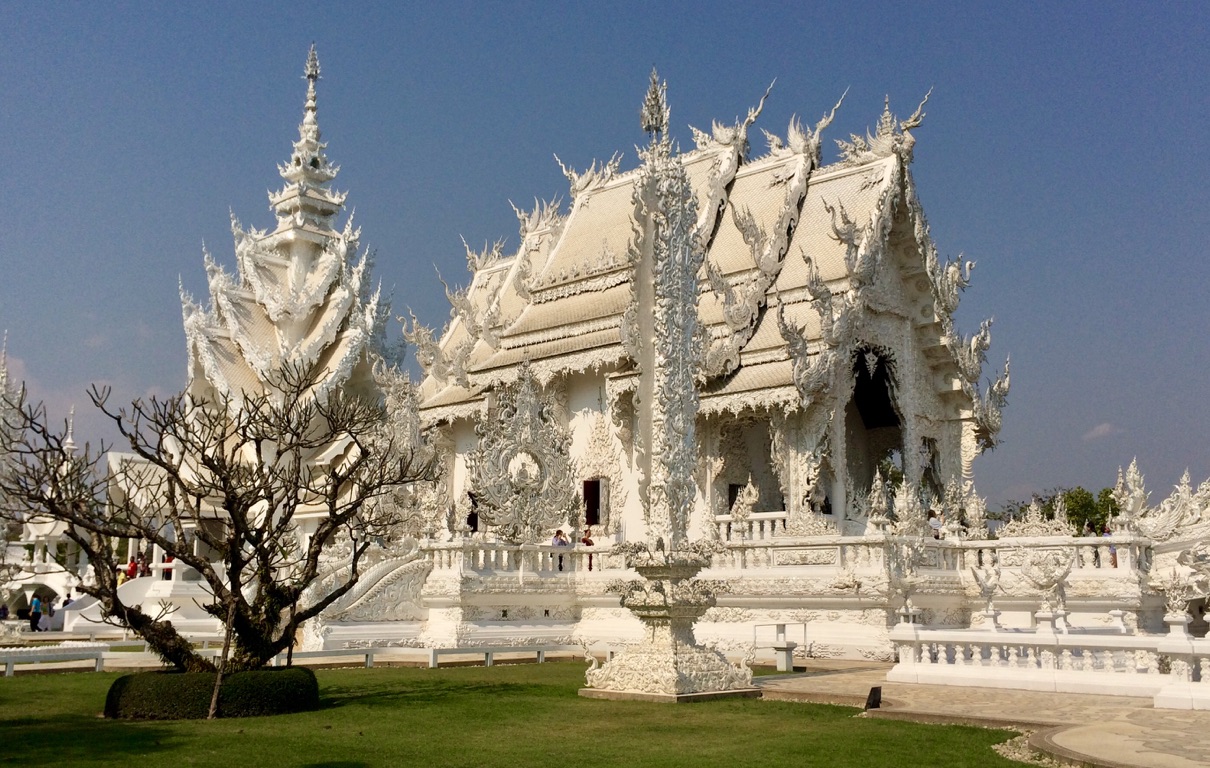
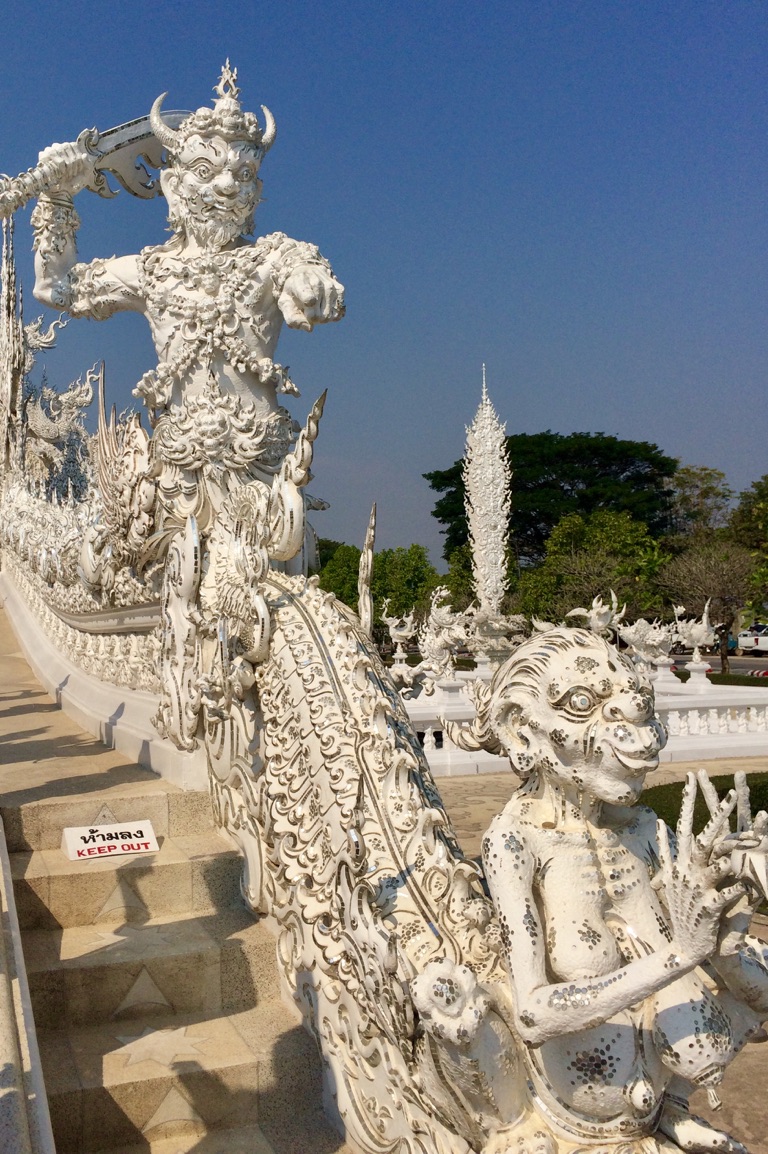
The guardians ...
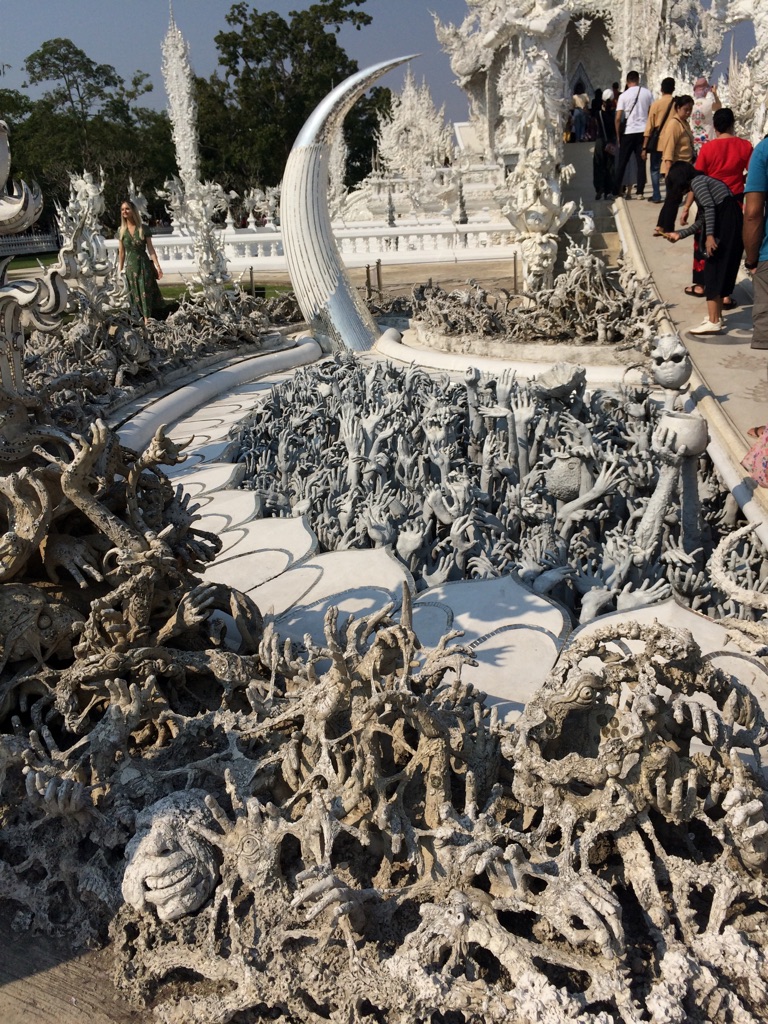
Passing over ‘hell’, as in Dante’s ‘Inferno’...
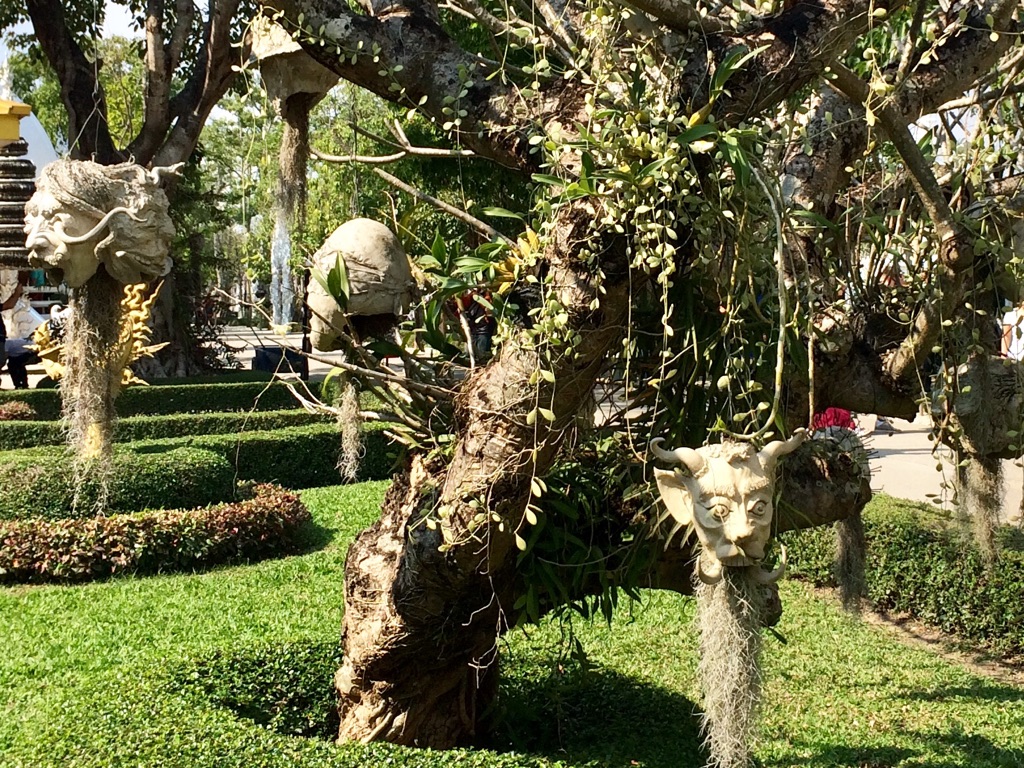
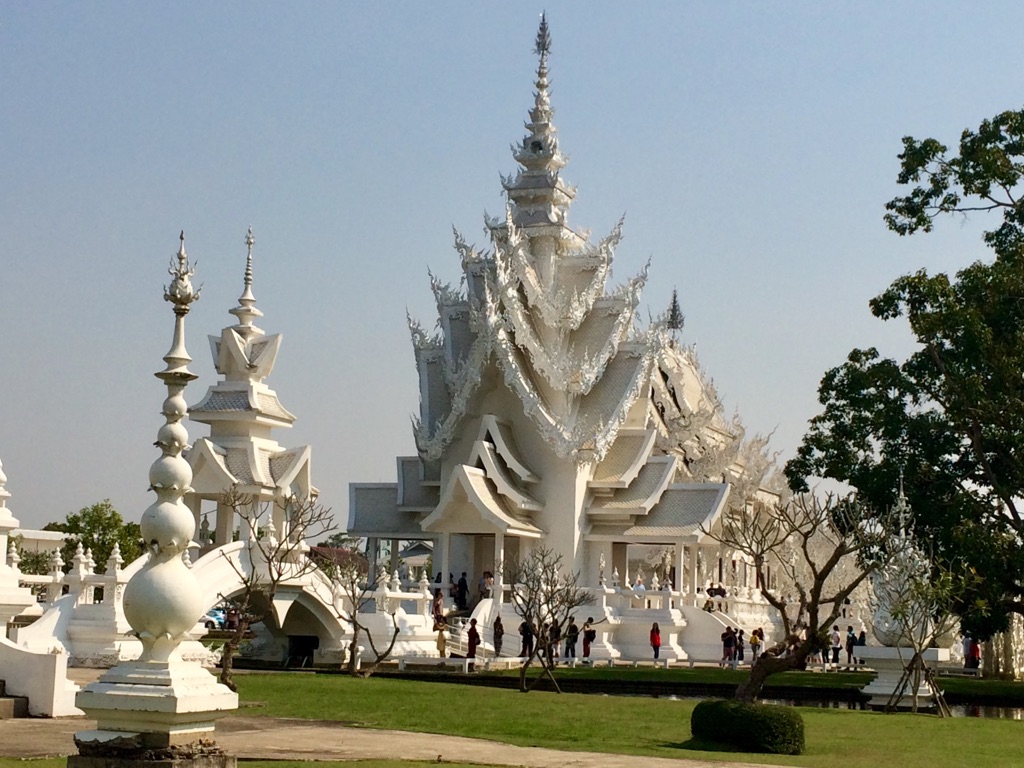
The white buildings represent the mind...
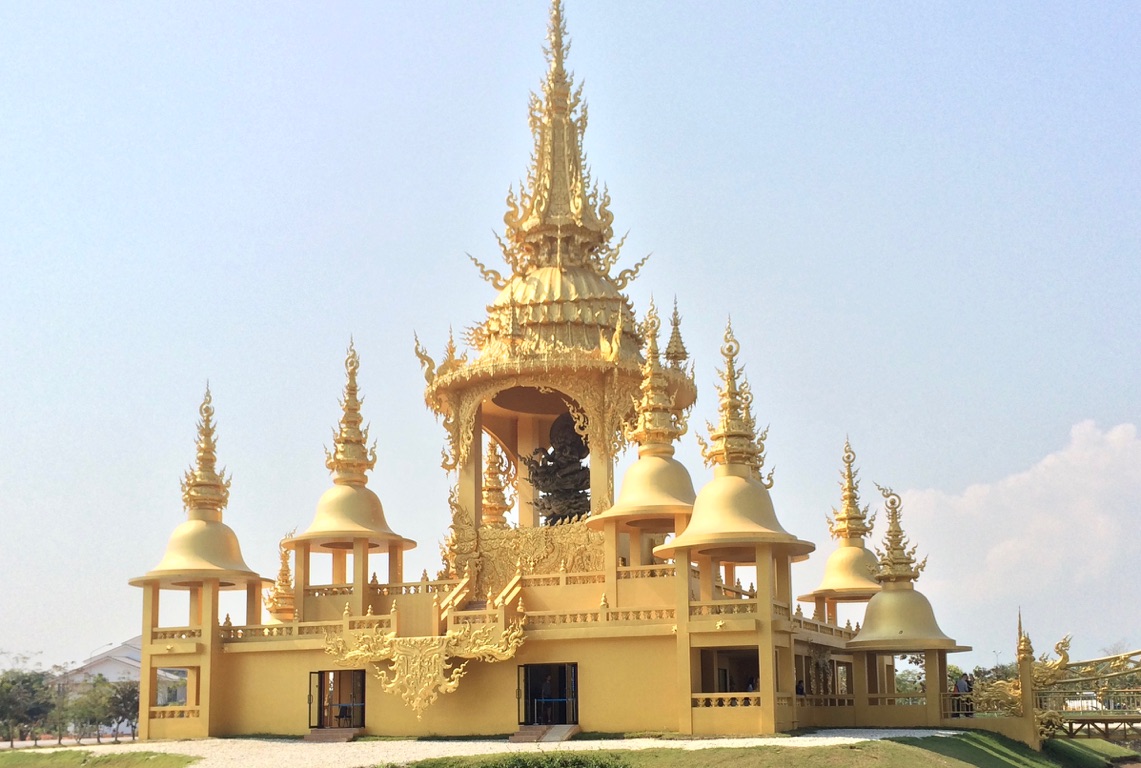
The gold buildings represent the physical body...
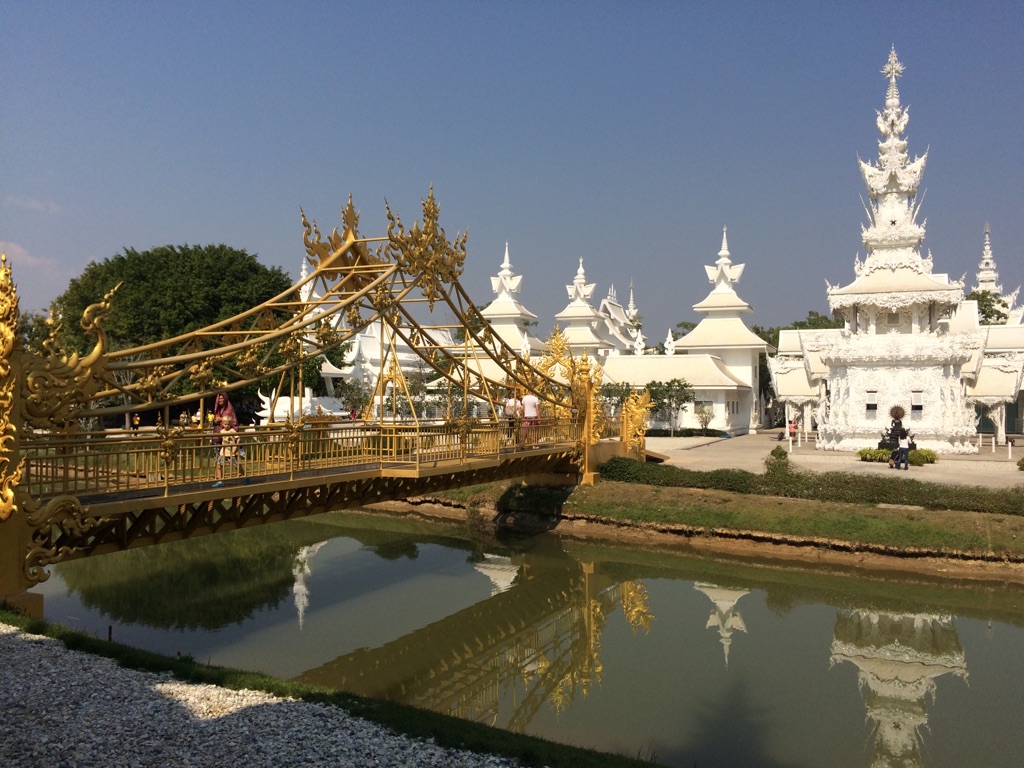
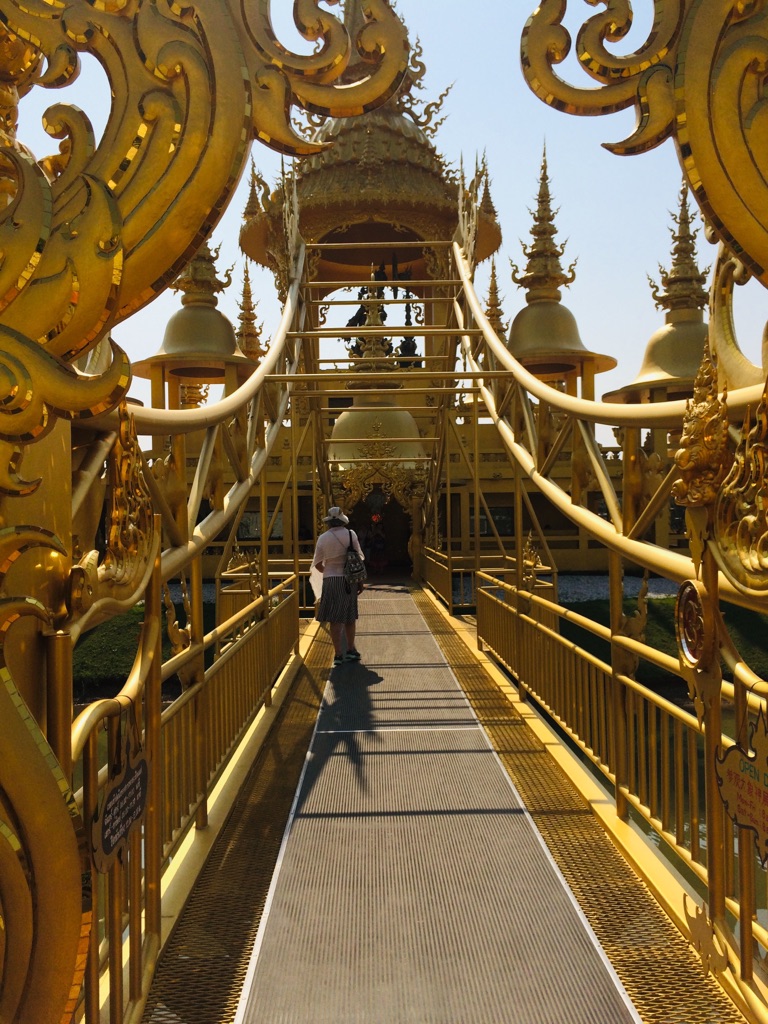
Kate crossing the bridge smartly - moving from mind to body...
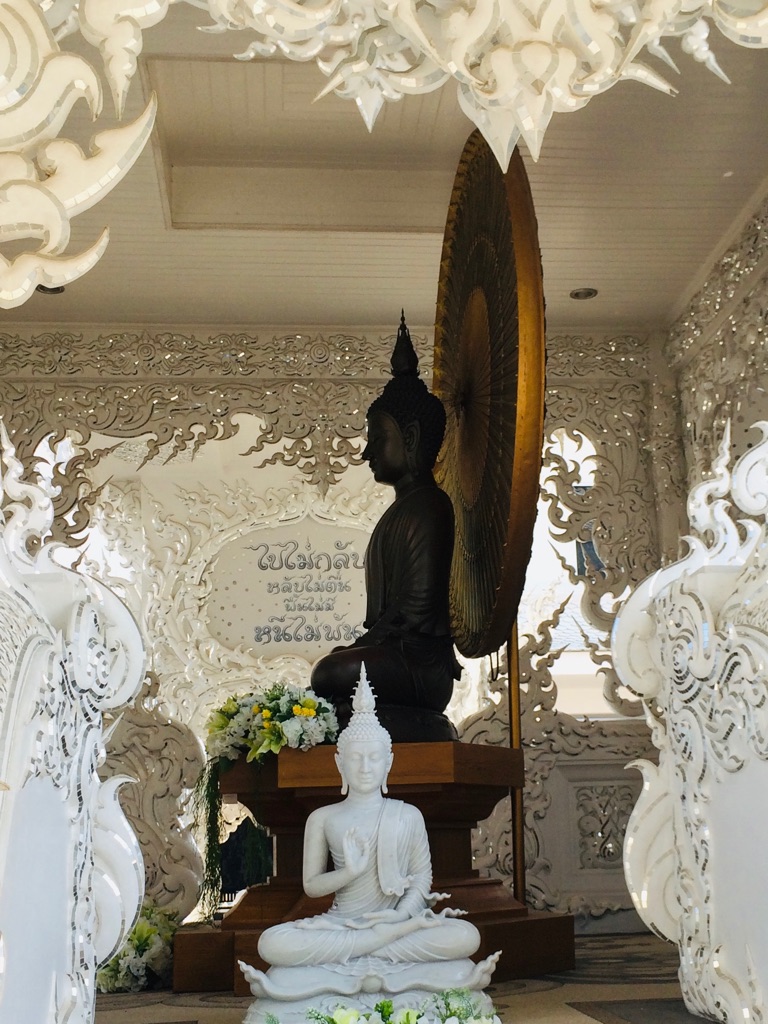
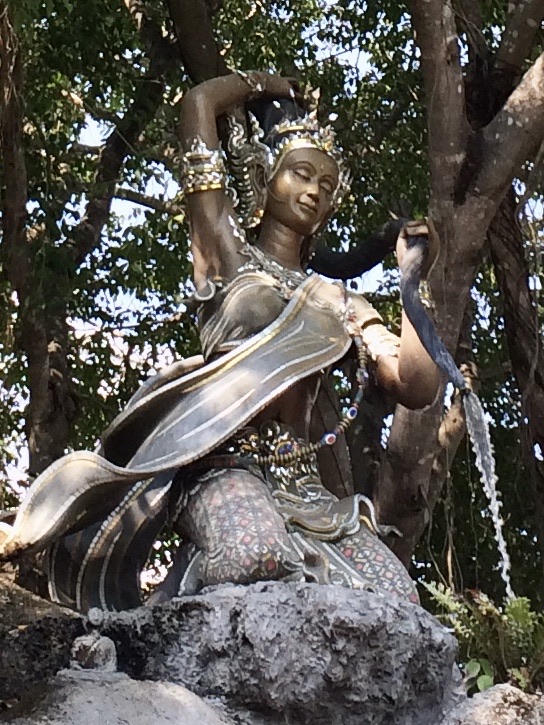
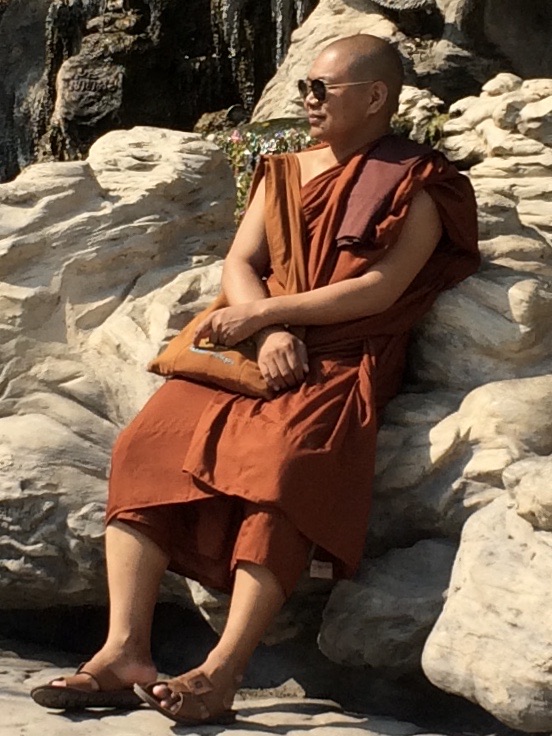
I could not resist capturing a photo of this monk ...in contemplation...

We both loved it! \240Except for the seas of selfie-takers (exclusively female!!!).
The Black House
The 3rd coloured temple, although this one is, more properly, a house and museum, is the Baandam Museum. The architect/artist is Thawan Duchanee, a teacher/mentor to Chalermchai Kositpipat the creator of the White Temple.
The 2 styles could not be more different in tone and ambience, however, they are both modern, exquisite in detail, and very beautiful. Although the Black House is not a temple, per se, there are Buddha rupas and the Buddhist philosophy is evident throughout. The site has about 40 structures each housing art collections and exhibits - many of them a tad ghoulish, snake and crocodile skins, bones and animal horns. \240Some of the art, to me, has a ‘steampunk’ look.
To get there (about 20 km from Chiang Rai), we grabbed a ‘grab’ car. Kate has now become quite proficient!
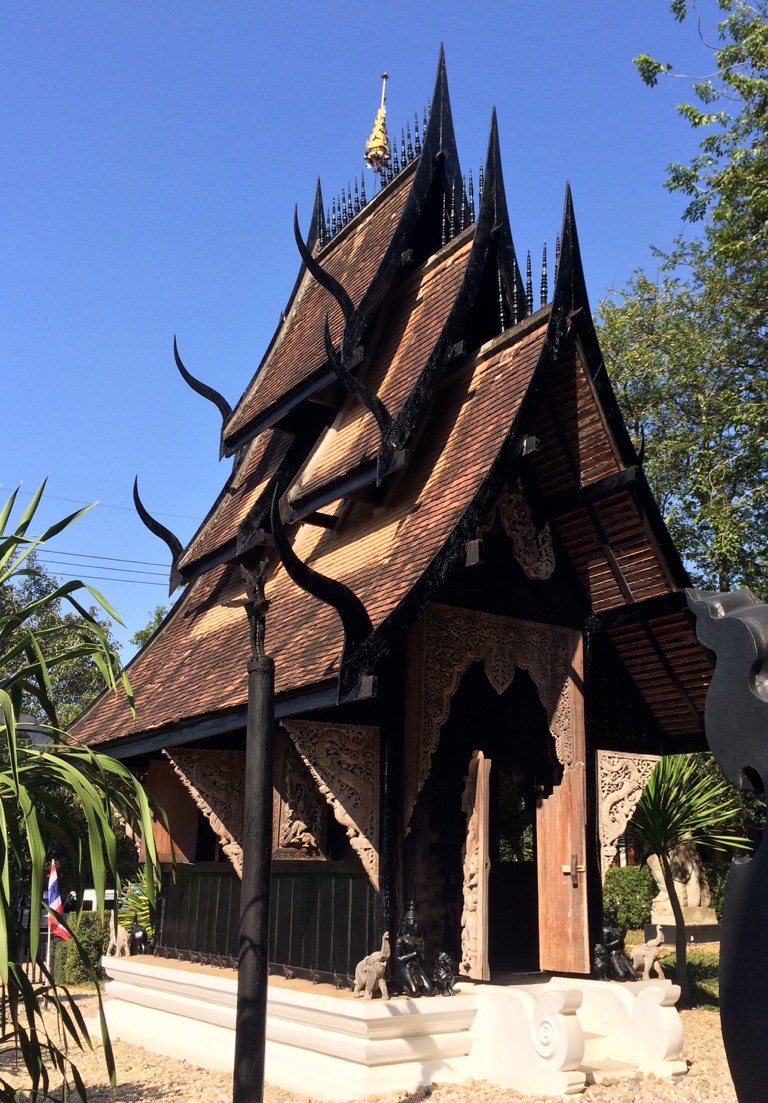
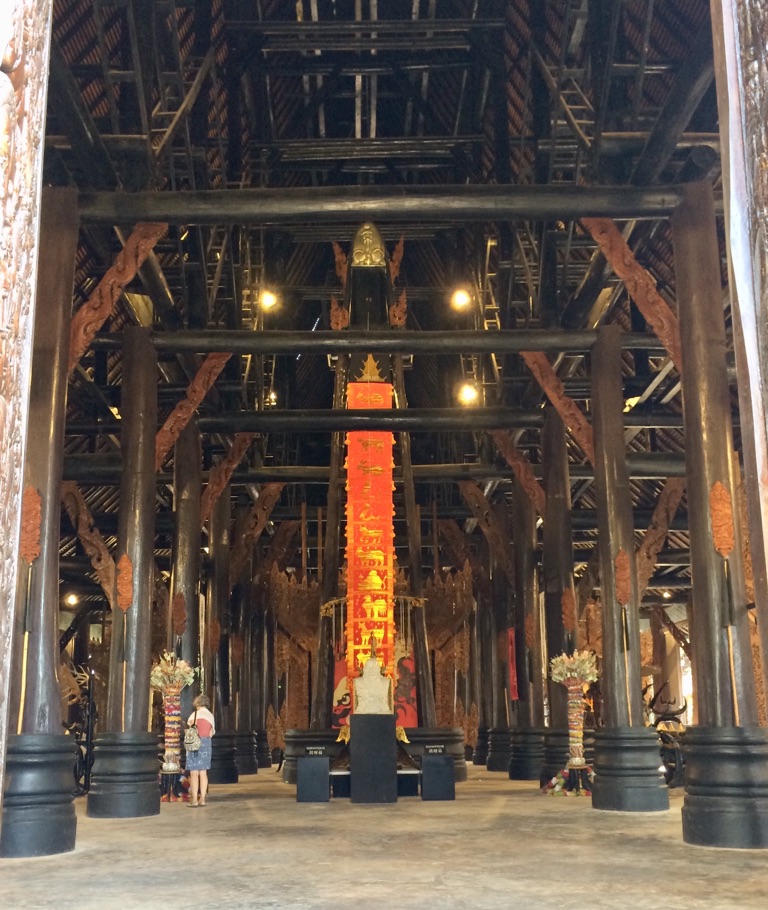
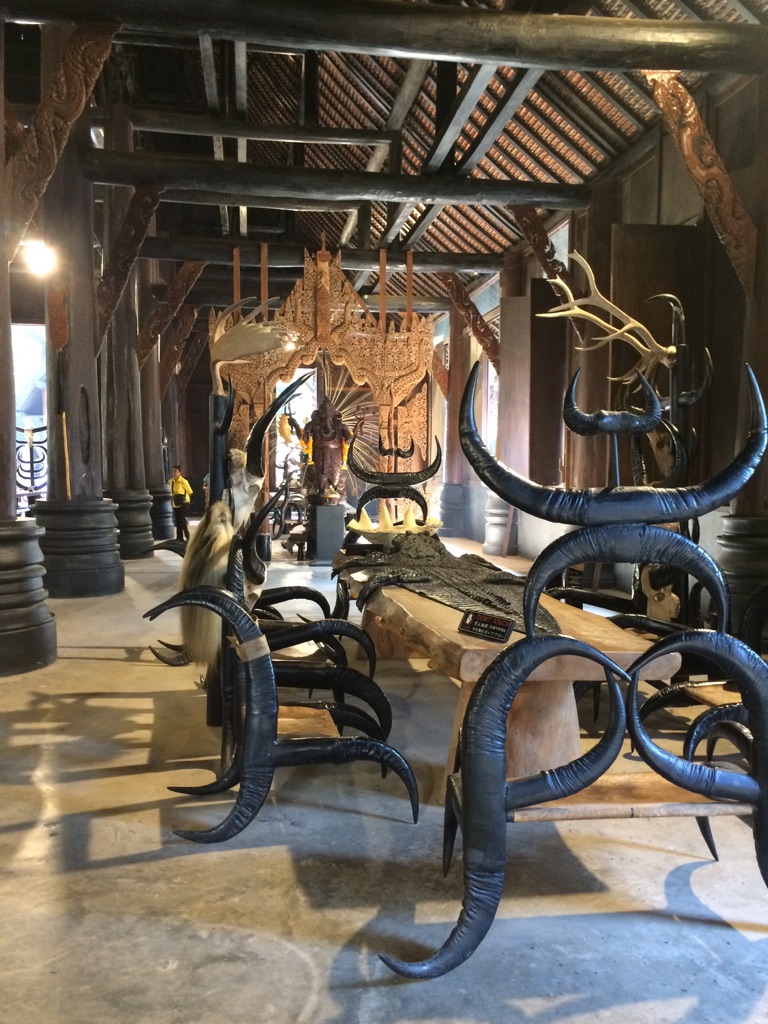

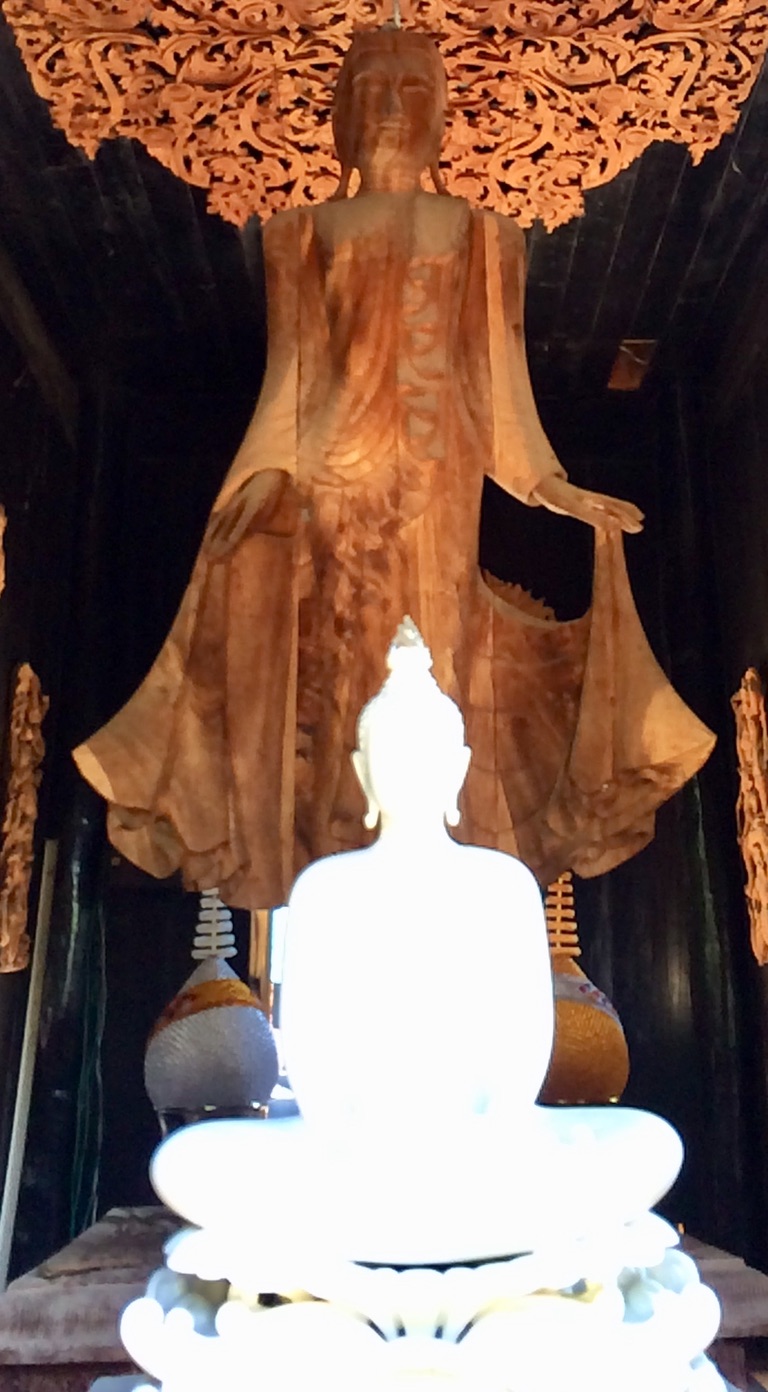
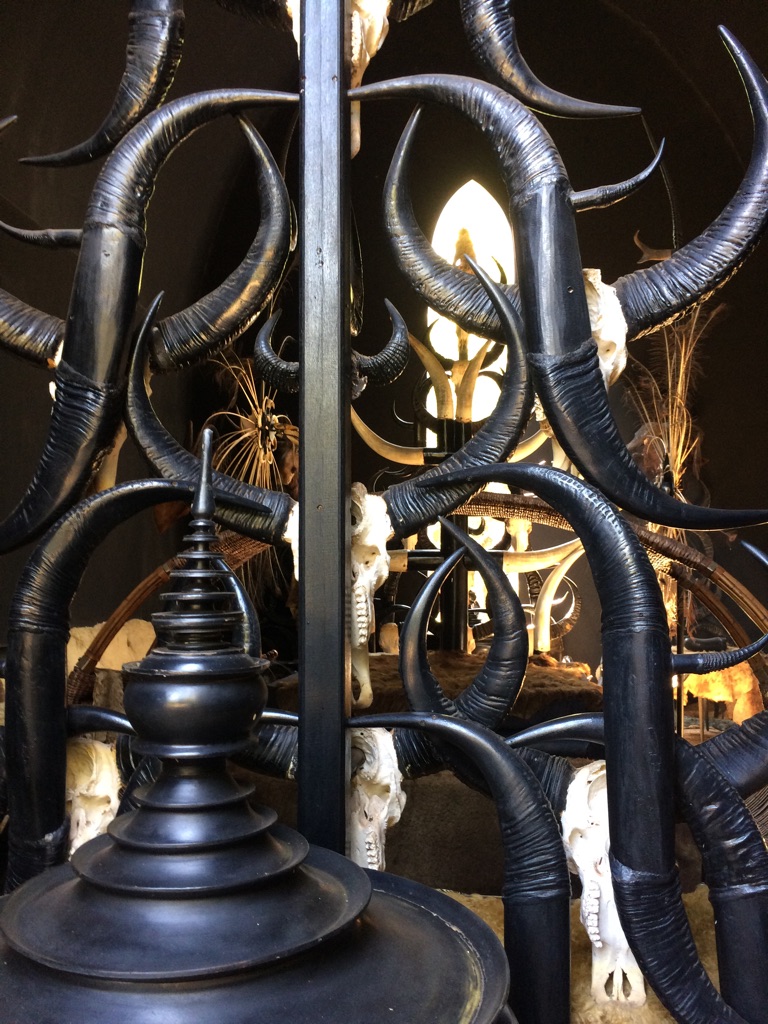
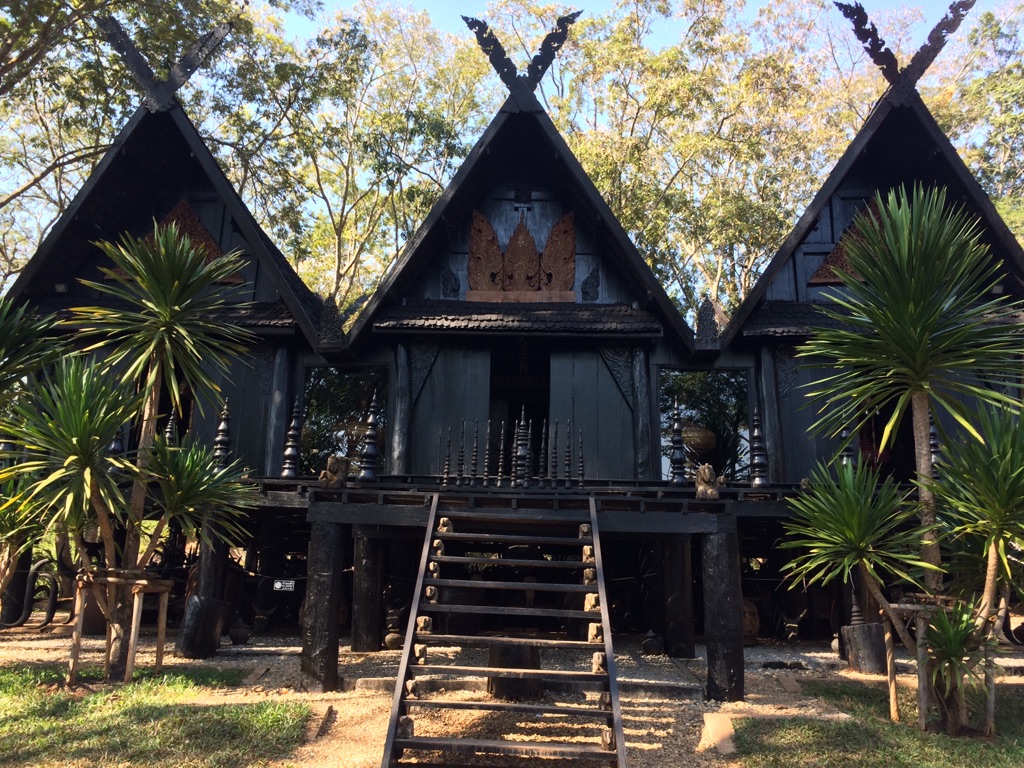
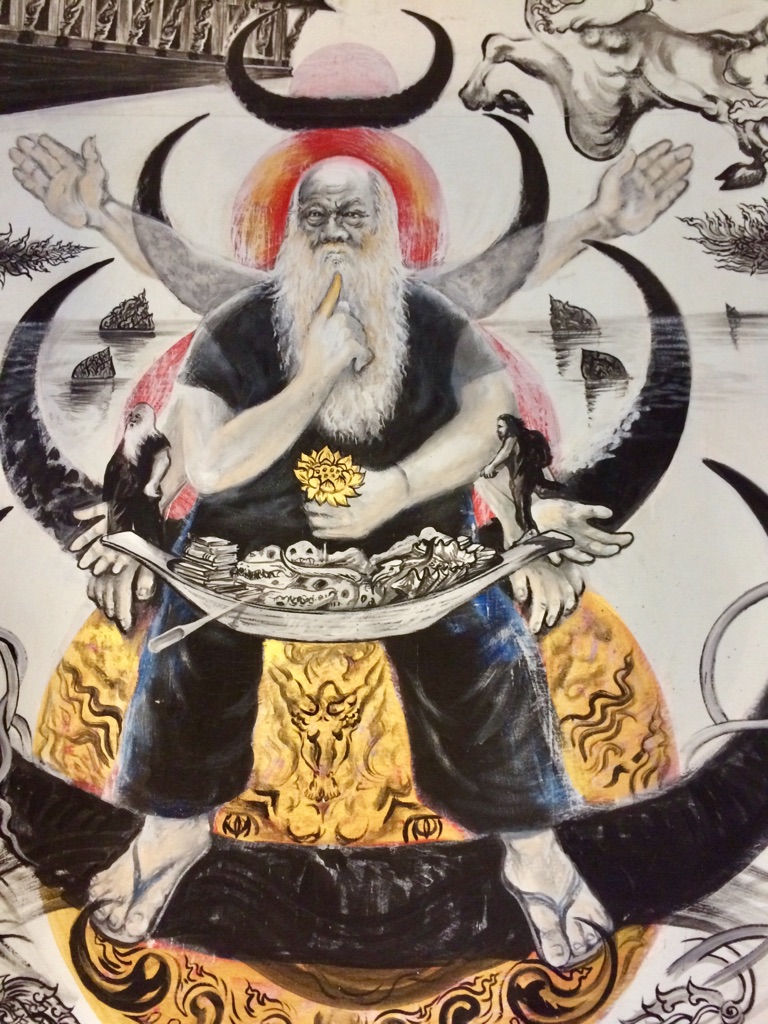
The artist himself in self-portrait...
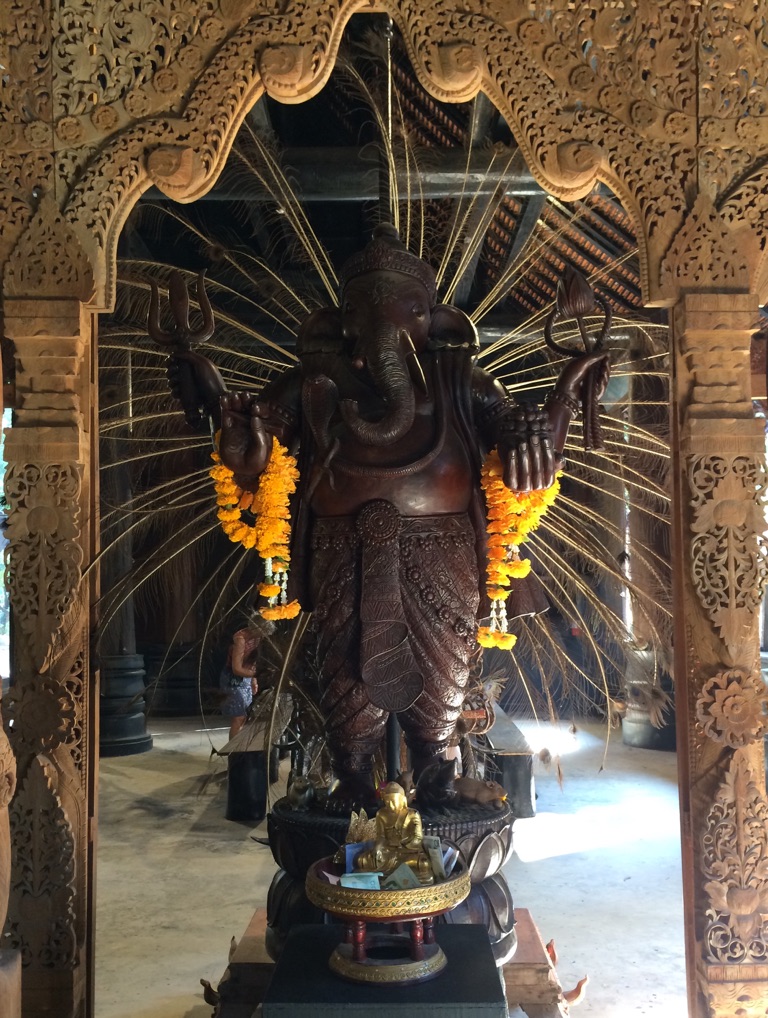
Ghanesh, the Hindu elephant god.
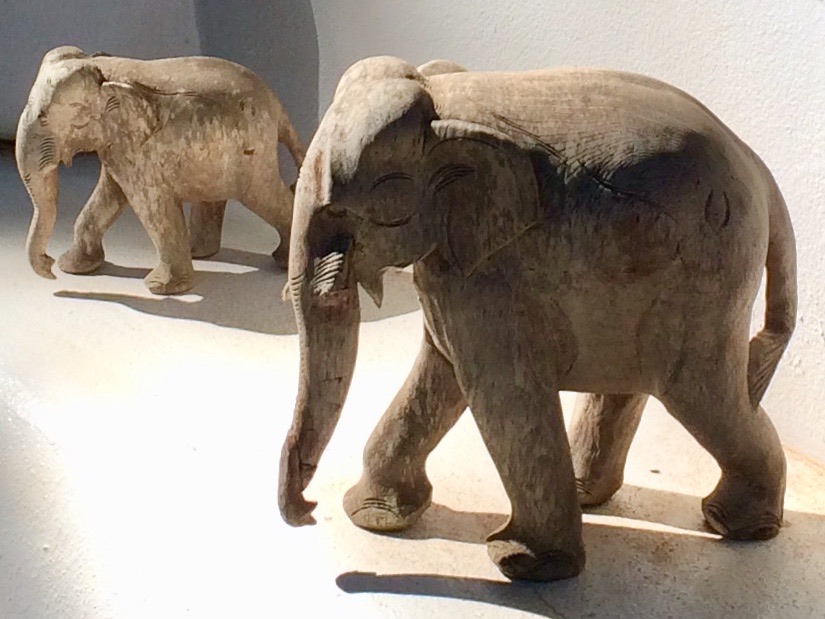
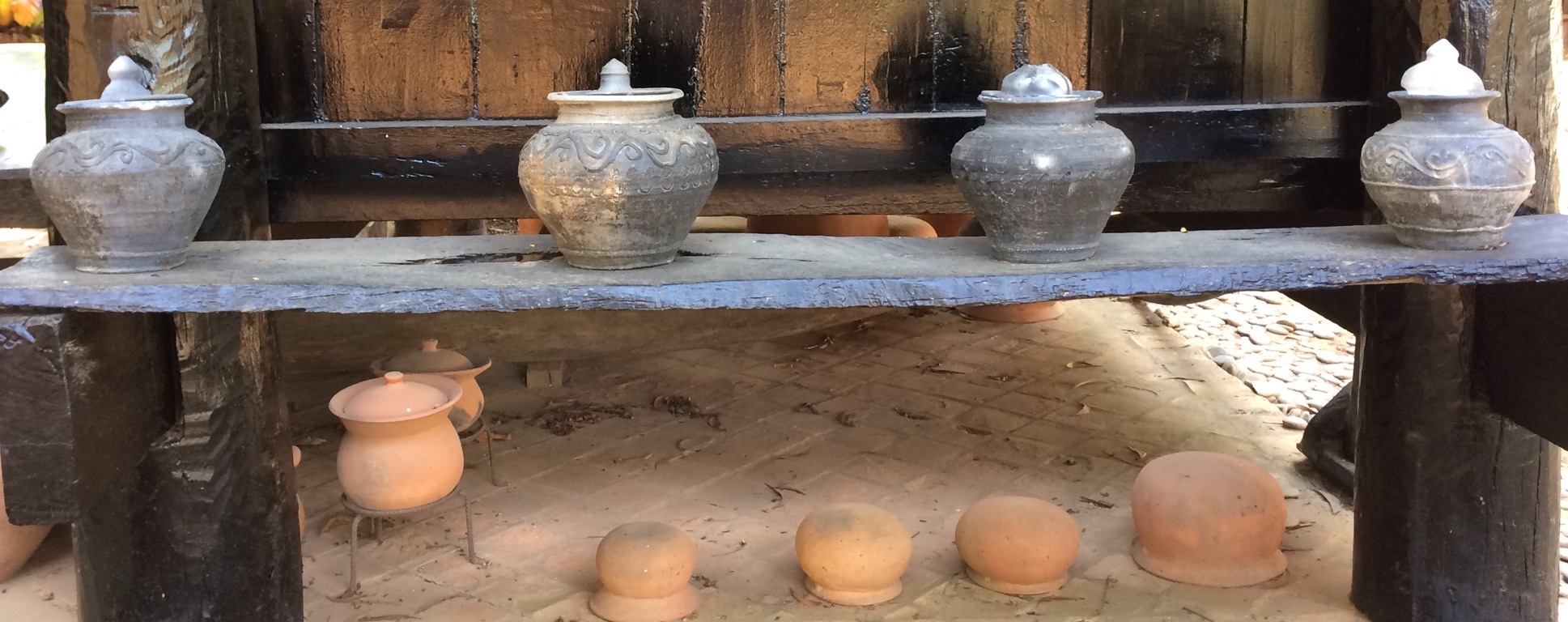
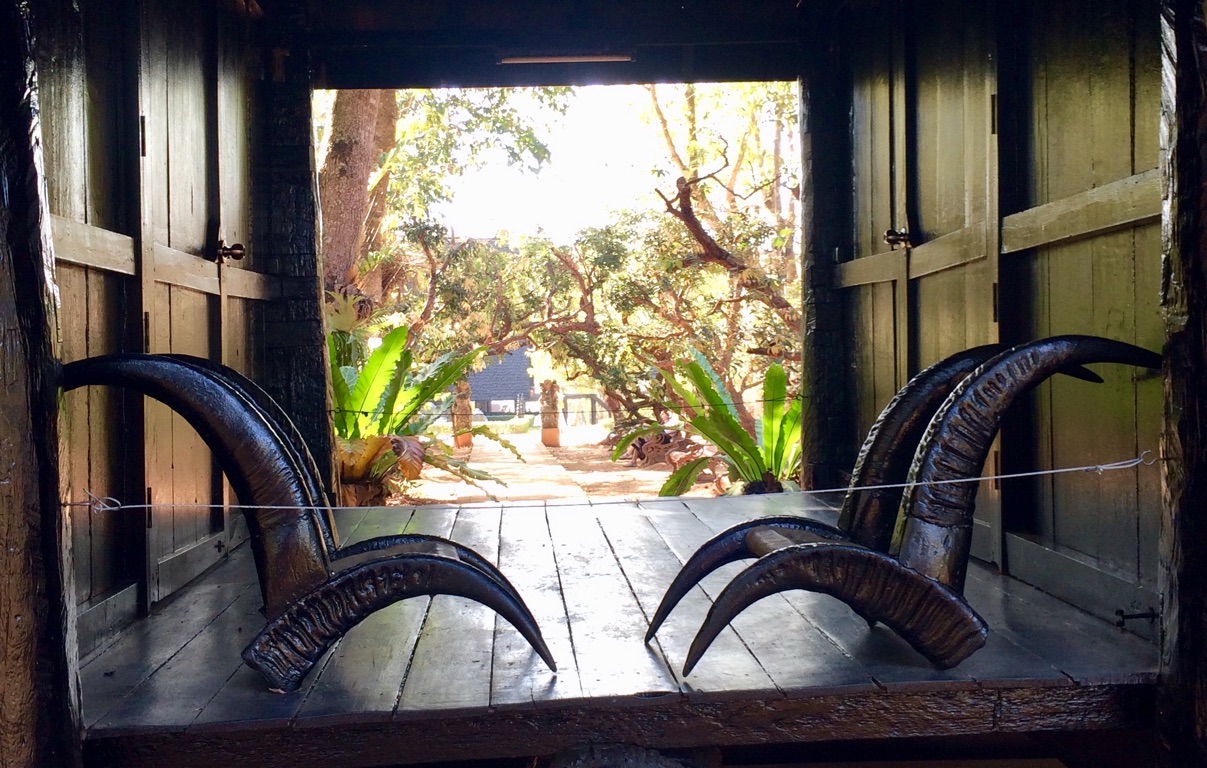
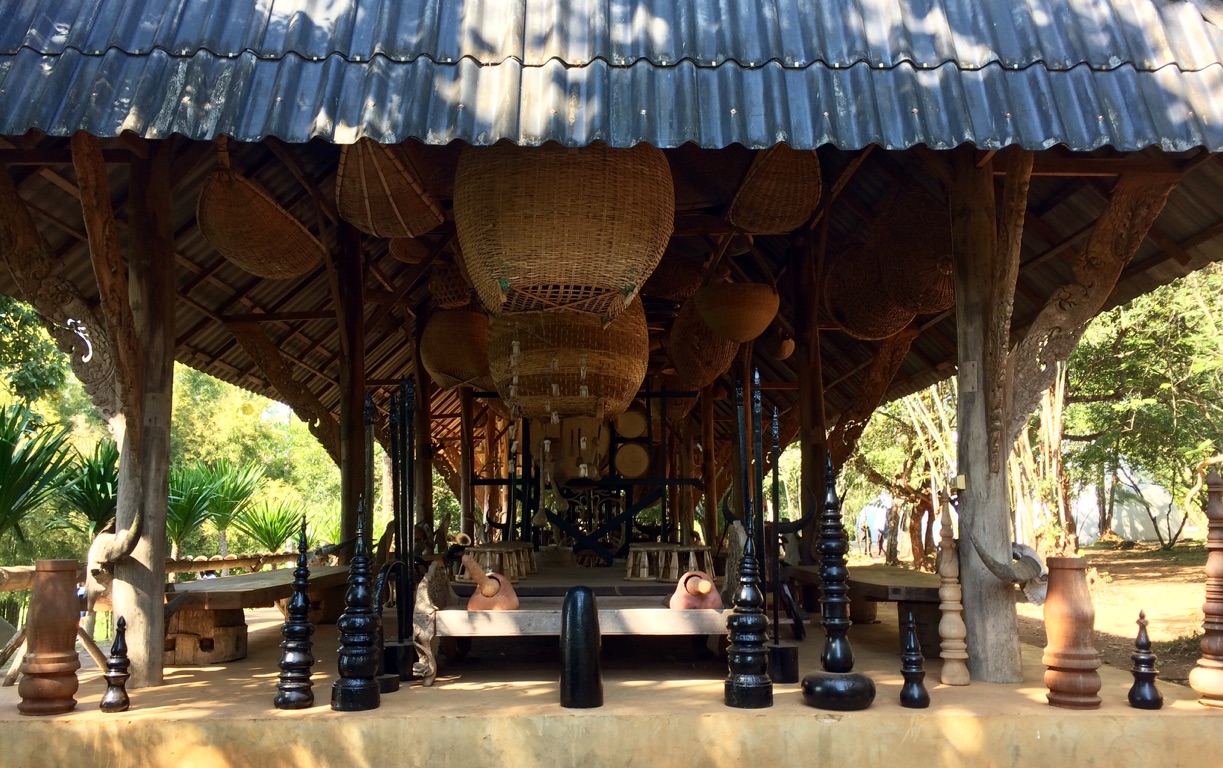
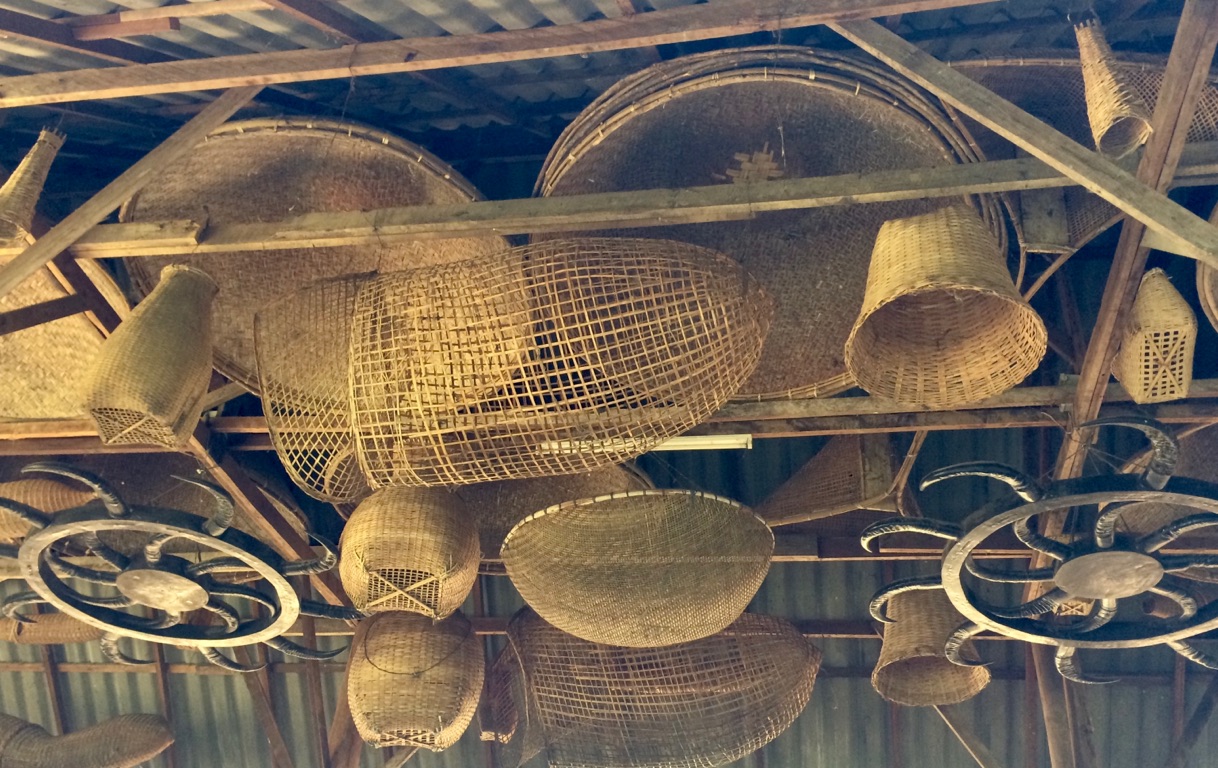
Every item has a function and is exquisitely placed.
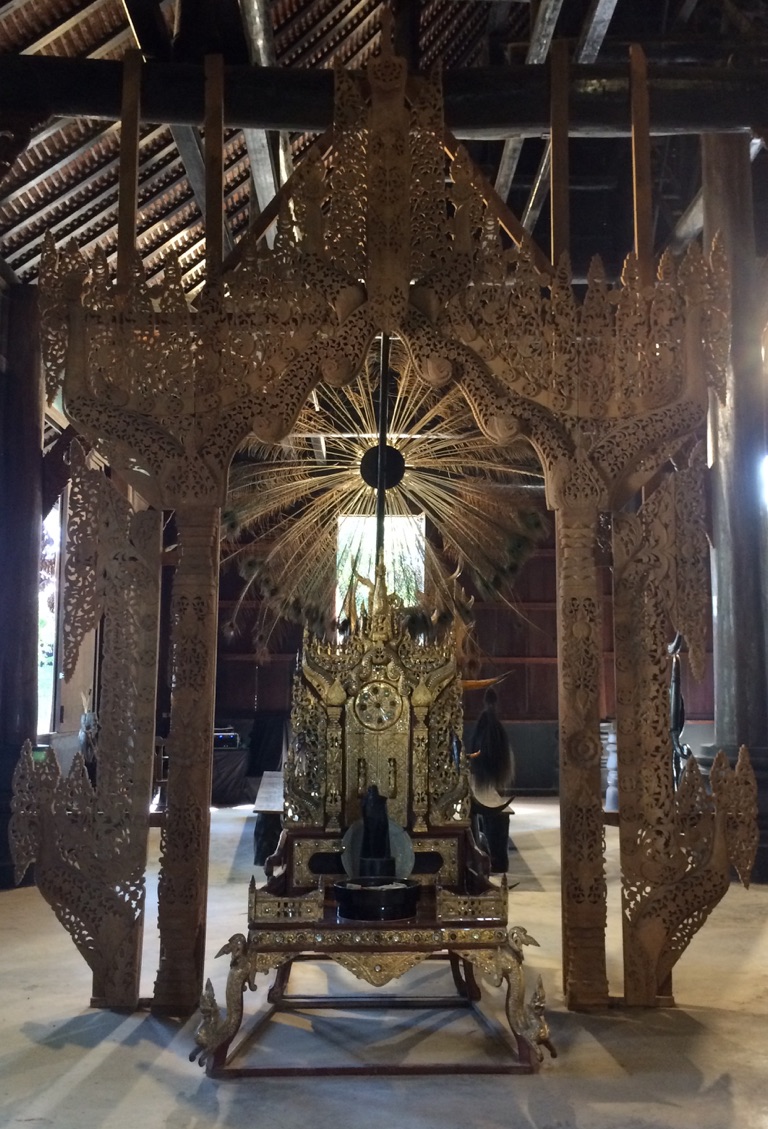
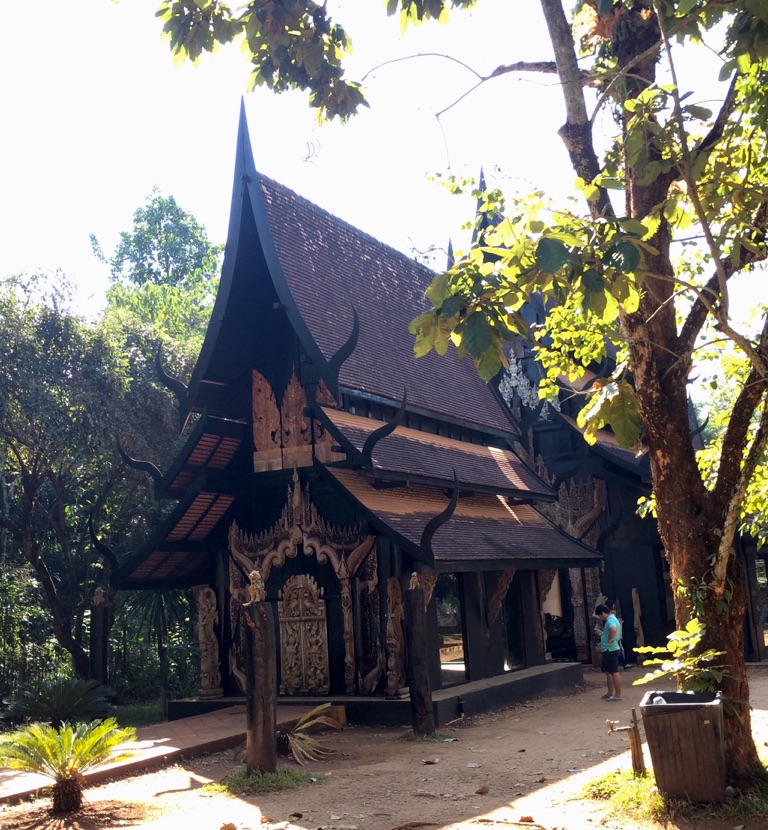
Much is written about the dark nature of the Black House, but we found it exquisitely beautiful and intriguing.
All 3 of these very famous, modern temples have the same thoughtful, artistic feel. Although so different from each other, they each remain true to the artistic nature of their creator. \240Each holds Buddhist belief at the centre, but very much incorporated into a modern world.
Last day in Thailand
2-hour bus trip to Chiang Khong, where we stay overnight, and are picked up early morning by a tour guide to cross into Laos and board a boat for a 2-day cruise down the Mekong River.
Here’s our bus...

Our driver...

and our conductor...managing the luggage storage at the back of the bus...

All of this for 65 baht ($2.80) for a 2 and \2401/2 hour trip.
The doors stayed open the entire trip to provide air flow (and much dust), hence the need for a conductor to watch that the luggage did not fall out, and to collect the fare. \240There were curtains on the windows to block the sun but more than anything they just flapped out the open windows. \240There were ceiling fans - some of them were even working!
It was an experience!!! But it certainly beat the price of a taxi and allowed us to see the countryside and experience real life in Thailand!
We arrived in Chiang Khong - settled into our room for the night and met up with our tour guide who will be with us for the next 2 days. We filled out our Laotian border documentation for entry - we negotiate Laos passport control first thing tomorrow morning.
We are all set for the next piece of our journey!
One more picture of our lovely bus...

Slow boat down the Mekong River
First order of business was to negotiate the border (Huay Xai - pronounced ‘hway say’) and officially leave Thailand and enter Laos. This involved multiple queues to process the visa and the payment, $45 USD. \240This all took 1 hour. \240Done, no mishaps!
We joined up with our ‘Nagi of the Mekong’ tour, our 33 companions for the next few days; and boarded mini vans headed. for the boat dock.
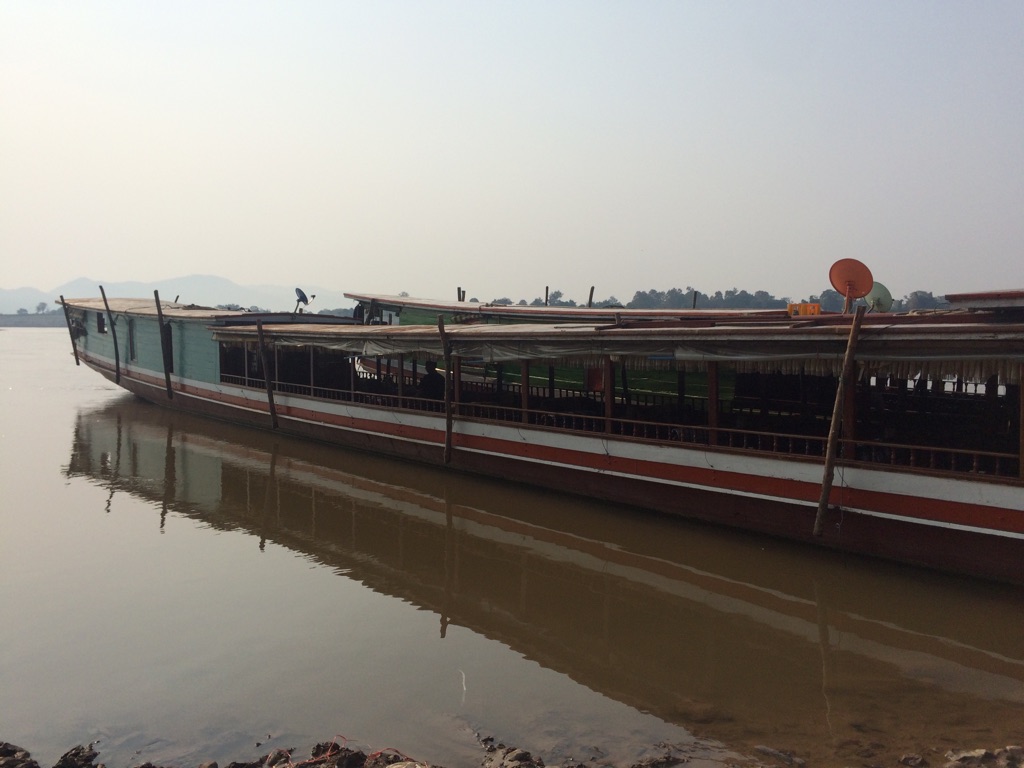
Our boat...
The slow board down the Mekong River was literally that and, perhaps, the most relaxing thing I have ever experienced (except the Thai massage which, admittedly, also involved some pain). \240It was glorious, quiet - just a chance to enjoy the breeze, the sun, some reading time and conversation (or not) with our travel companions. \240The scenery was beautiful - Laos is a lush, dense jungle environment with mountain ranges - and meandering through it all - the wide and winding Mekong River.
Laos is a land-locked country of 7 million people and mostly a rural society. Politically, it is a country of communist, 1-party rule. \240Buddhism seems to co-exhist seamlessly with ‘animism’ (ancient belief in the spirit world which is nature-based). \240The major resource is water and hydro-electricity. It appears to be relatively affluent in SE Asian terms and is benefiting (or suffering) from significant Chinese investment.
Our travel companions were from the UK, Switzerland, Romania, Germany, Australia, Japan, and I’m sure I have missed some. \240Oh yes, fellow Canadians from Ottawa and Kamloops!
We experienced side trips to a tiny village (Hmong mountain tribe - 100 villagers), saw many fishermen, cattle and mountain goats on the lovely beaches and we even saw elephants on a trek.

Our crew...
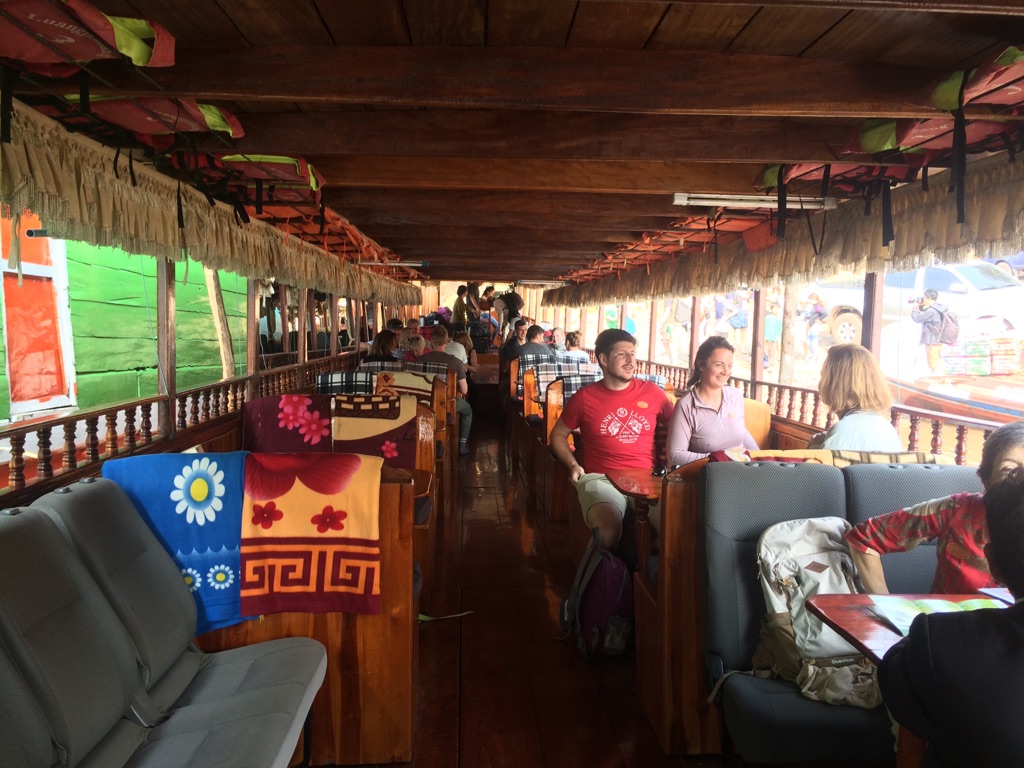
Our companions...

Kate relaxing...

Villagers washing in the river...
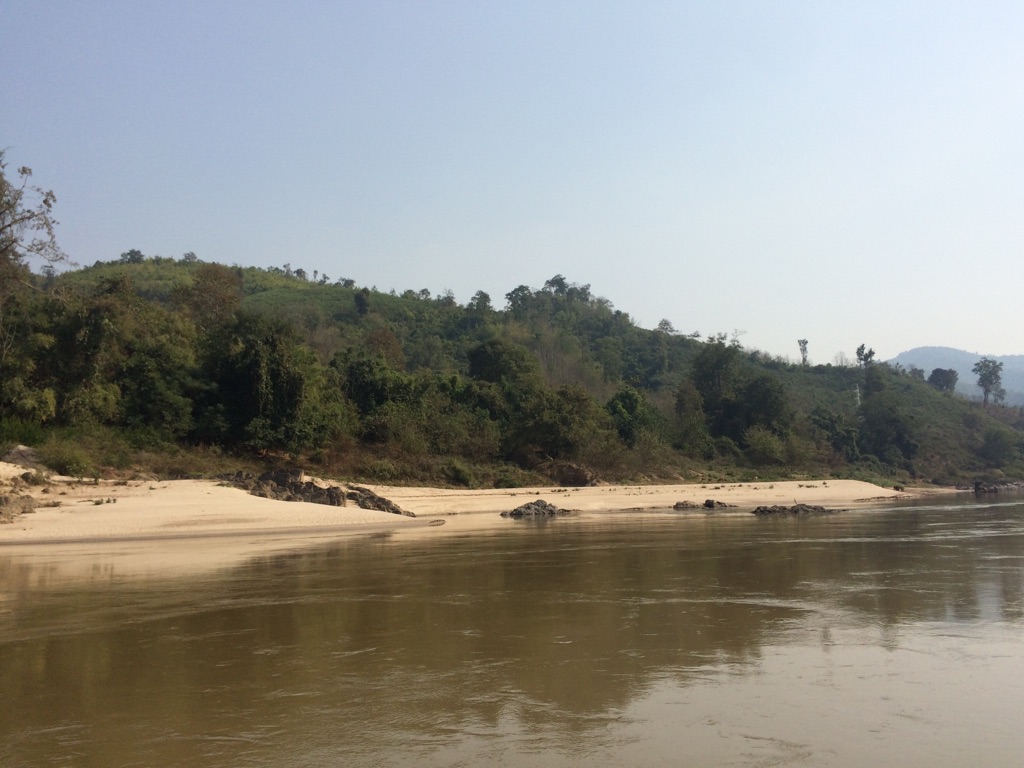
Glorious beaches...
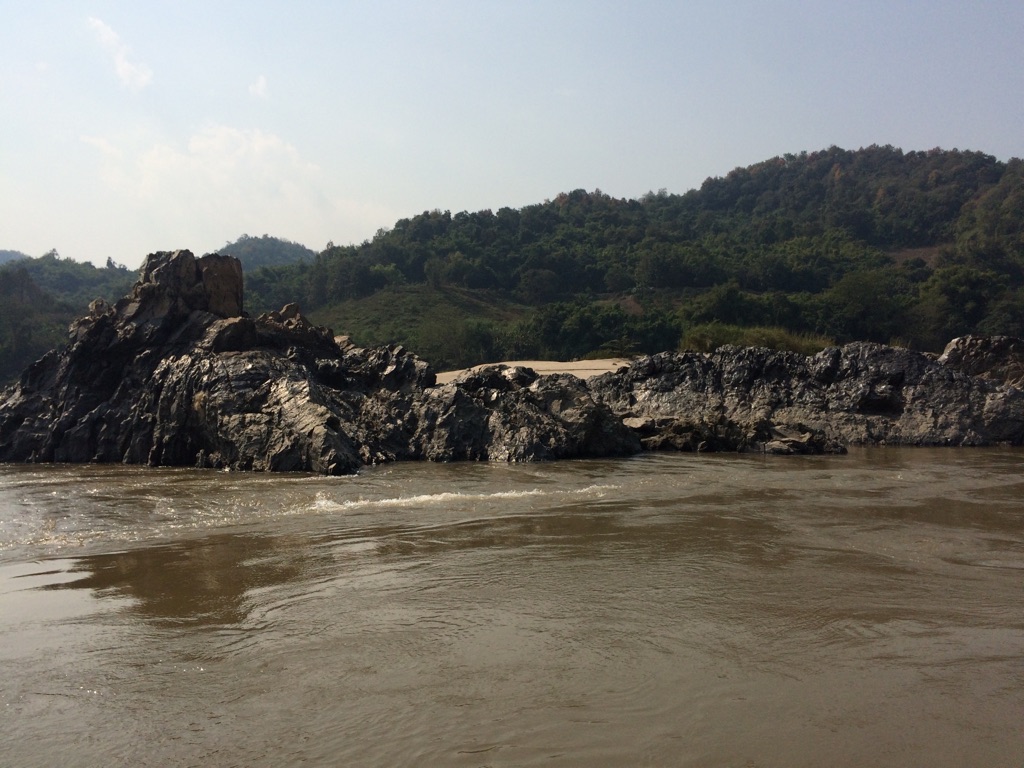
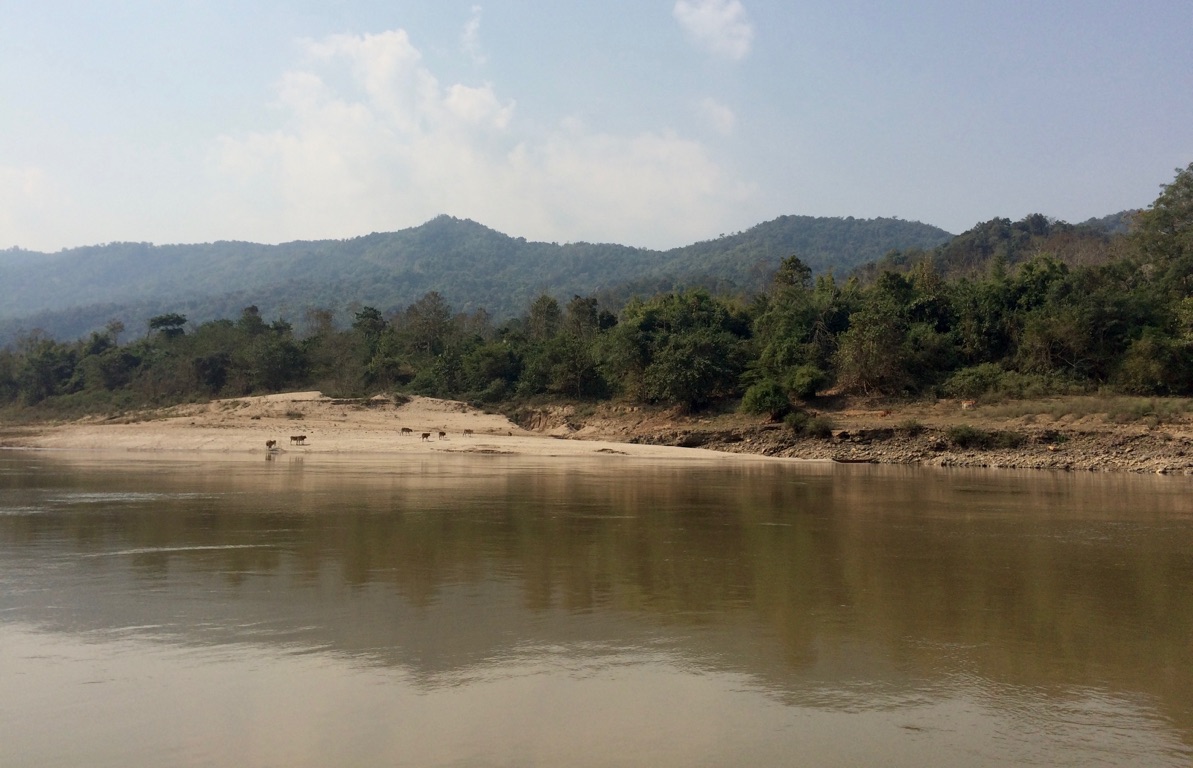
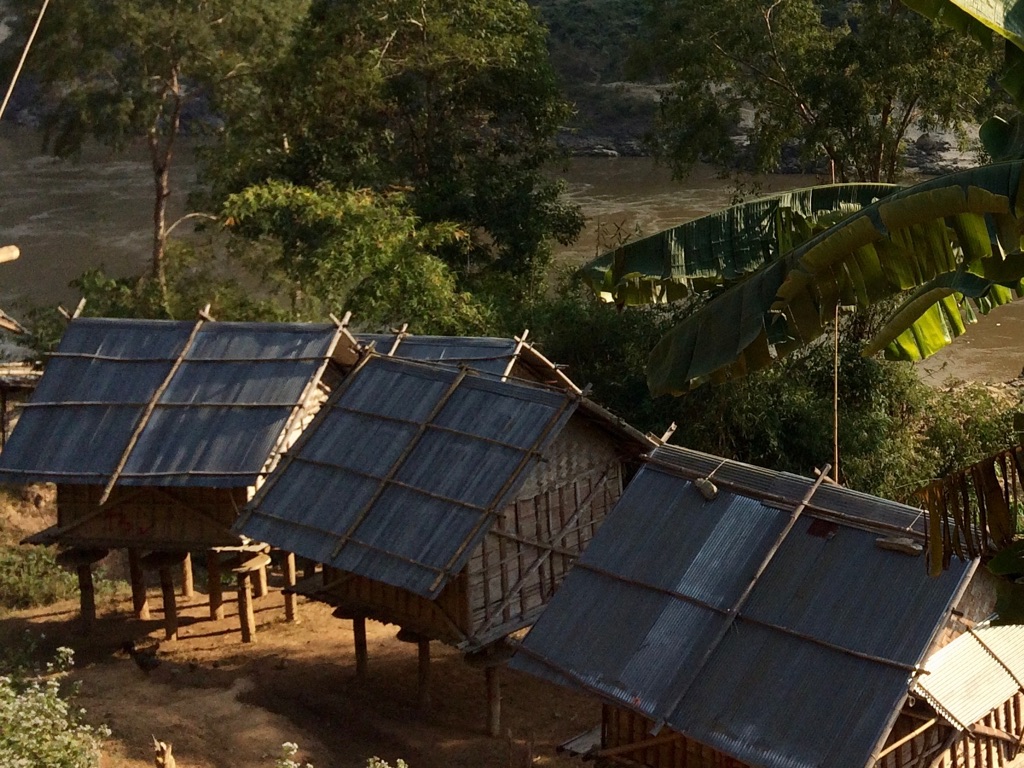
Hmong village huts - up on stilts to allow for river flooding in the rainy season (we are there in the dry season).
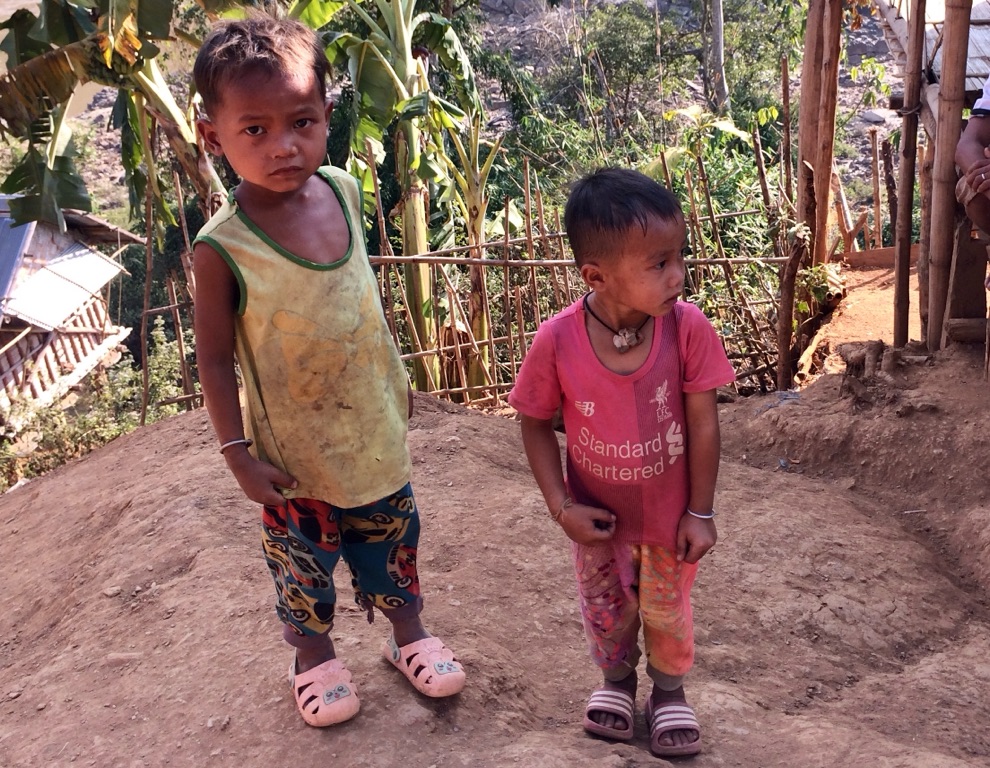
Children of the Hmong tribe village
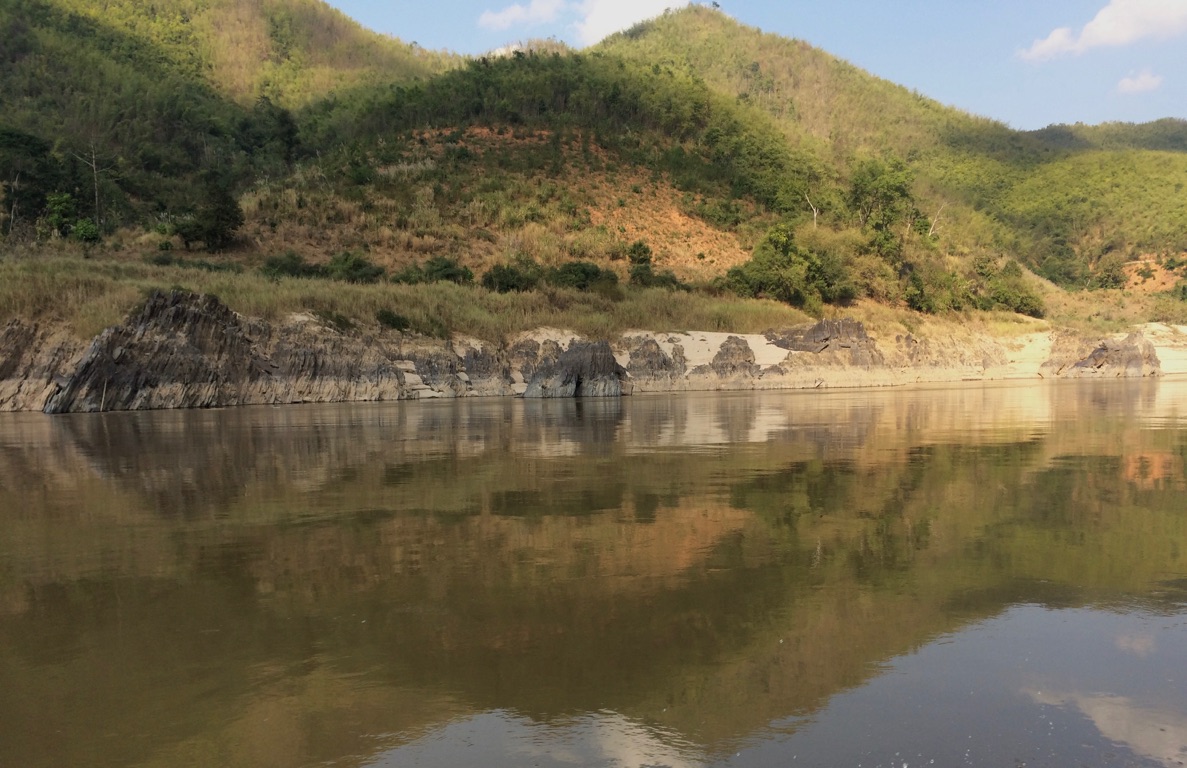
And, towards sunset, the reflections on the river were glorious.
We docked just before sunset and were transported to our hotel for the night. We felt transported back in time to the elegance of the former French colony... \240The hotel is called Le Grand Pak Beng, in the village of Pak Beng - and ‘grand’ it is,
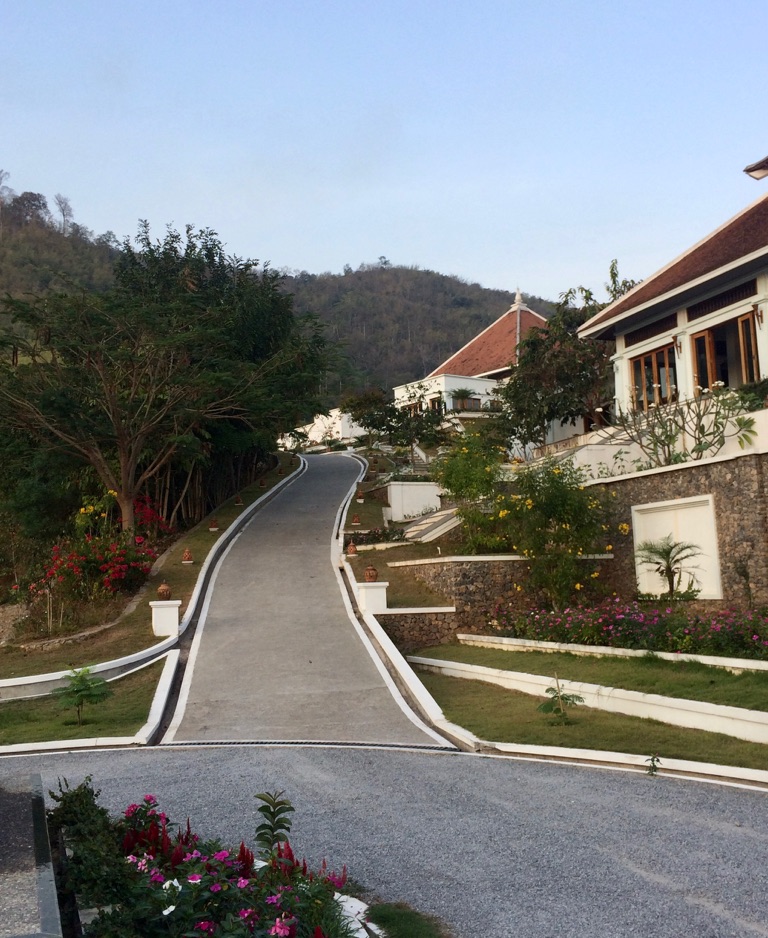
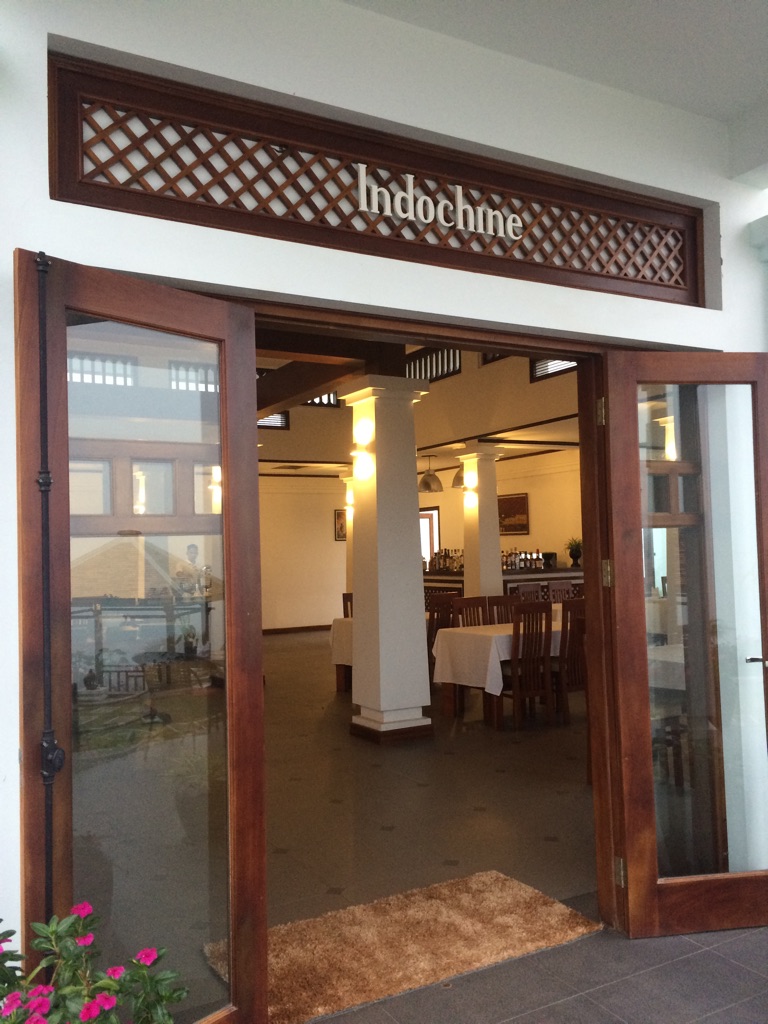
My photos do not do justice, but here is the view from our room - note the shower!

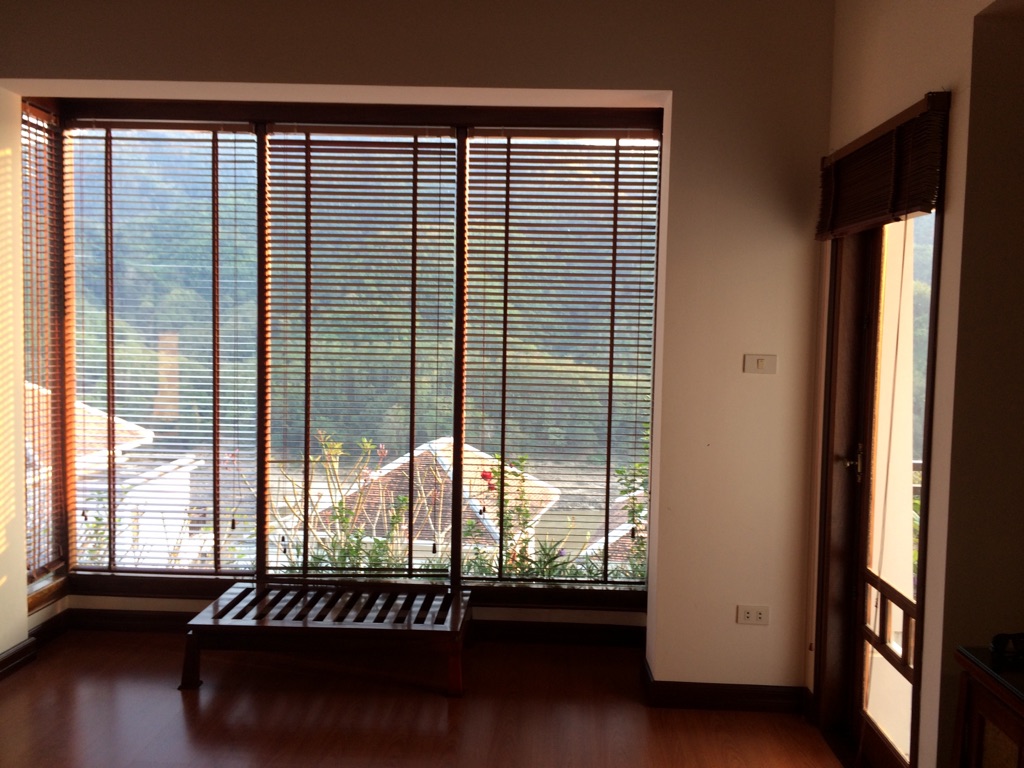
Alas, we were here for just over 12 hours... a glorious oasis... \240There was even an infinity swimming pool with a magnificent mountain view.
Indochine
After an elegant breakfast on the patio, made mystical with socked-in clouds, we reluctantly had to leave.
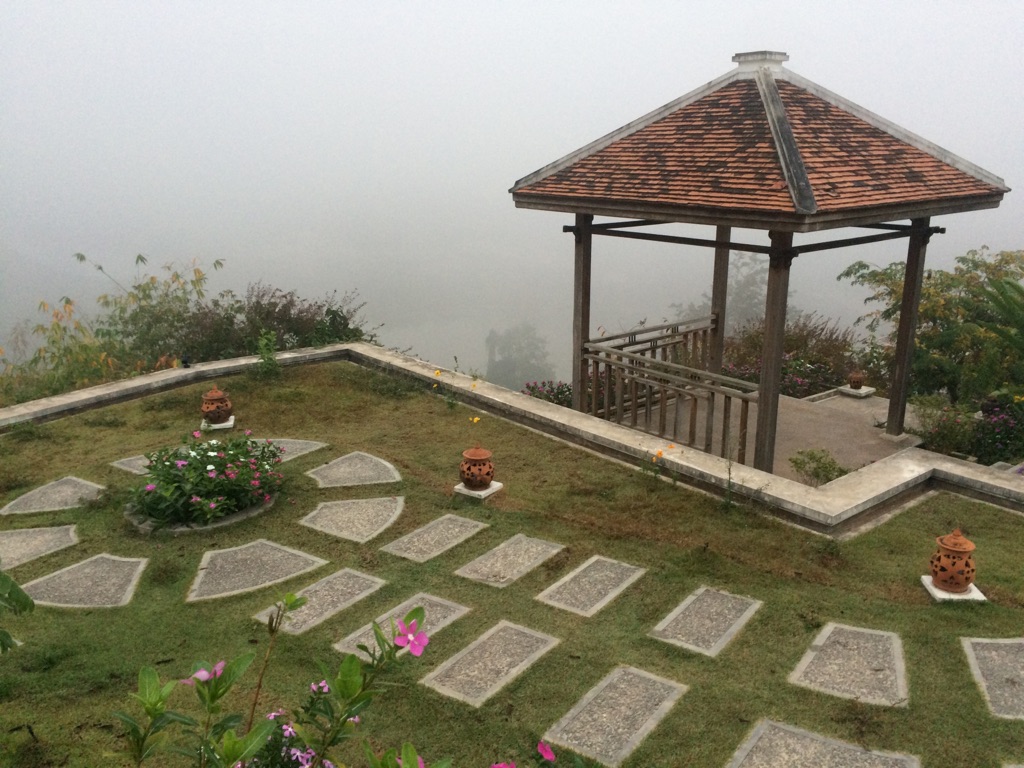
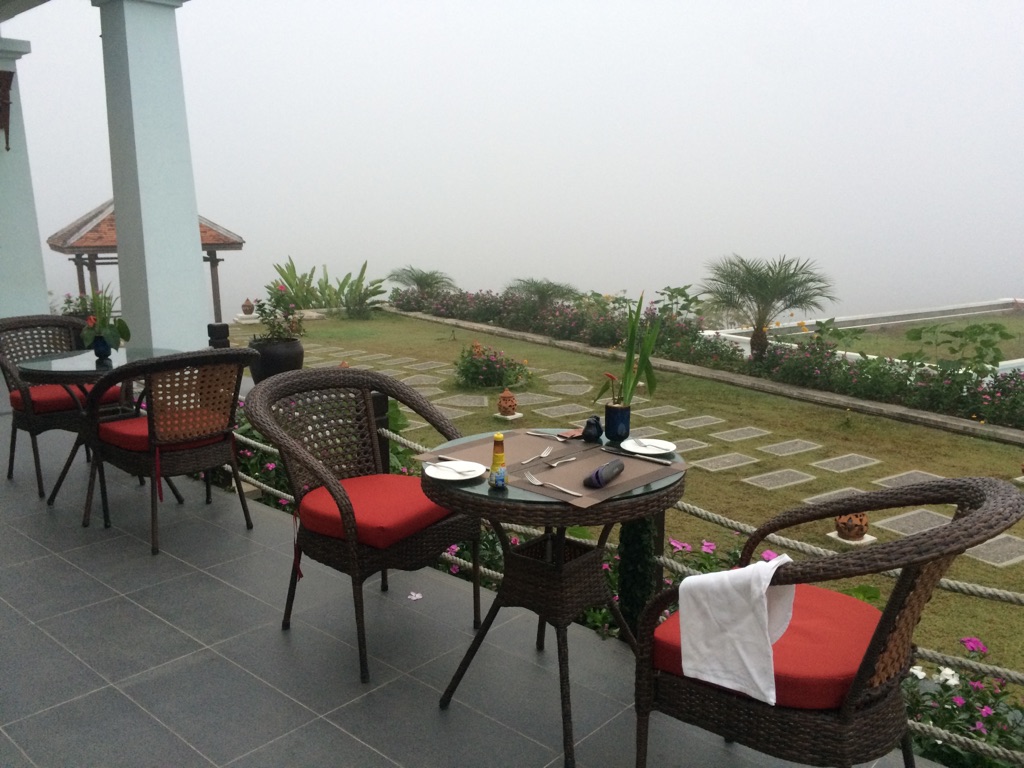
On the boat, and settled for the 2nd day, we were all bundled in blankets until the sun burned off the mist and cloud (and relentless smoke from stubble burning and wood fires), and it was 30 degrees once more!
I am sure the collective pulse rate on the boat was zero - no stress, just floating down the river!
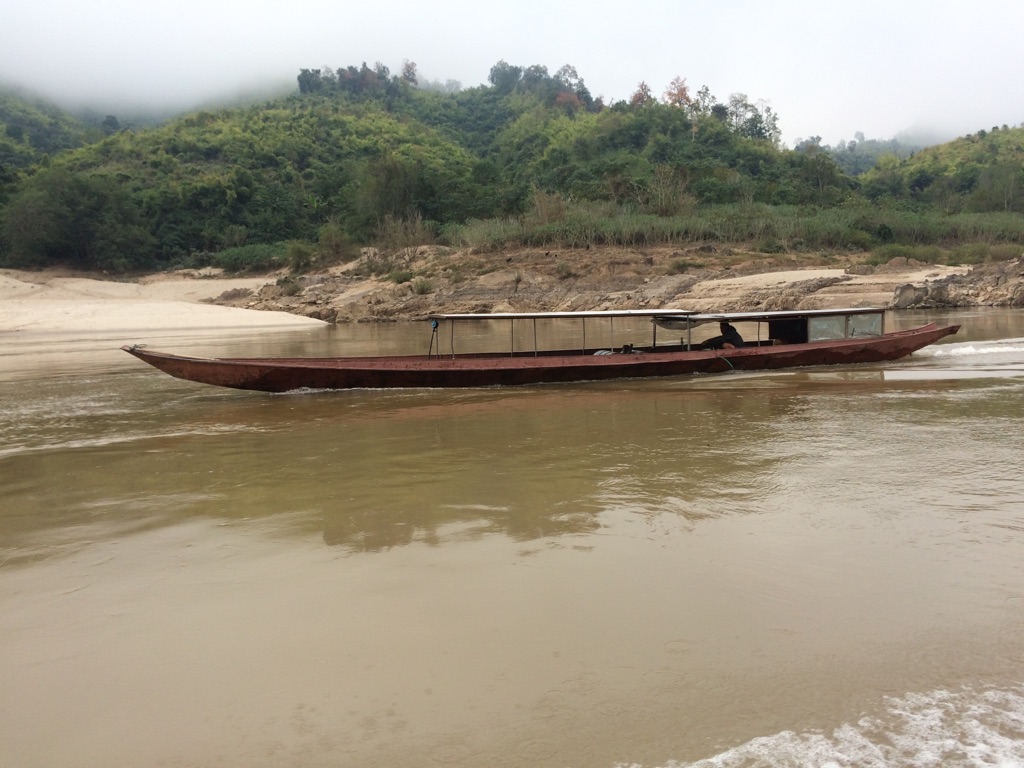



The only movement was to take photos, and eat the fantastic lunch served on board!
We stopped at another village with not quite such a serious trek up, saw some hand-weaving industry, lots of village women and children and, curiously, very few men!
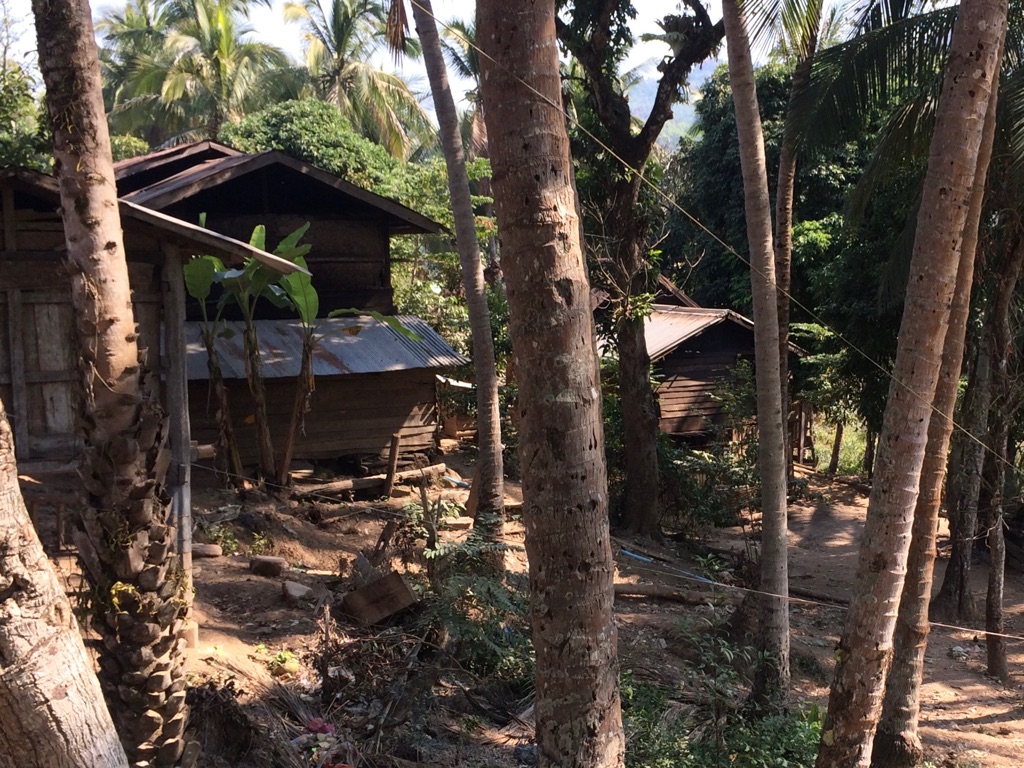
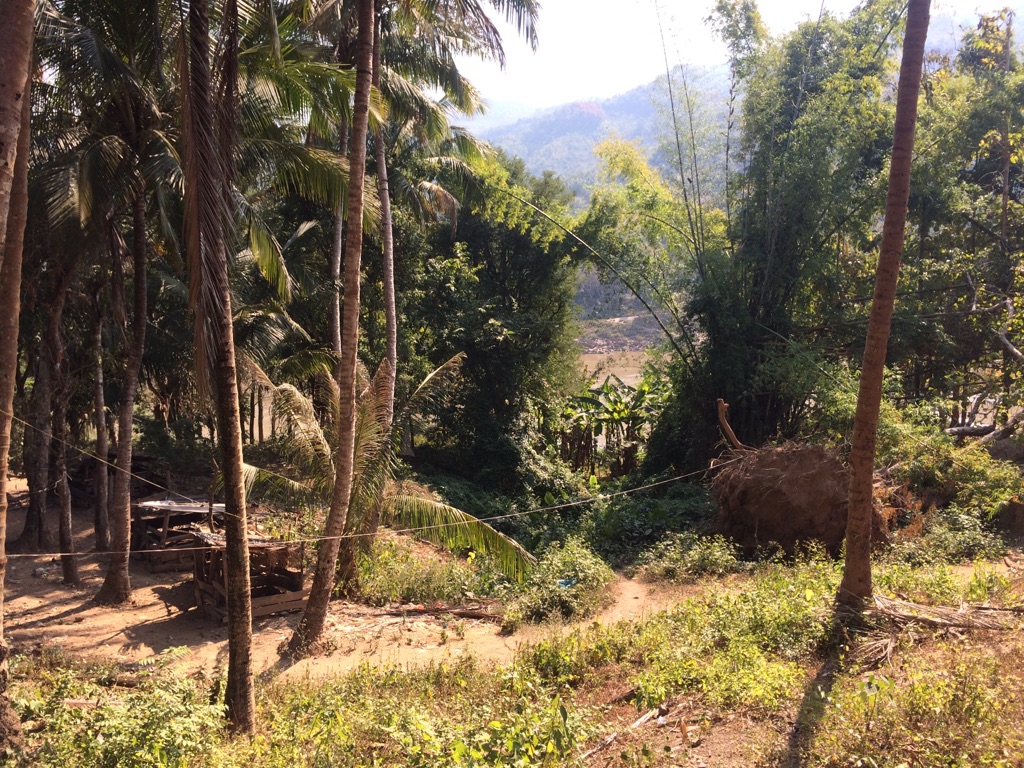
After the village, we made a stop at the Pak Ou caves. They are located about 25 km from Luang Prabang - the caves were originally used as a place of animist/spirit worship but for the last 600 years have also been a site of Buddhist worship. \240There are upwards of 4000 buddhist images, along with other religious icons, scattered in 2 sets of caves. \240Worth a look but quite crowded. \240Once again, climbing steps is required - we are getting fitter!

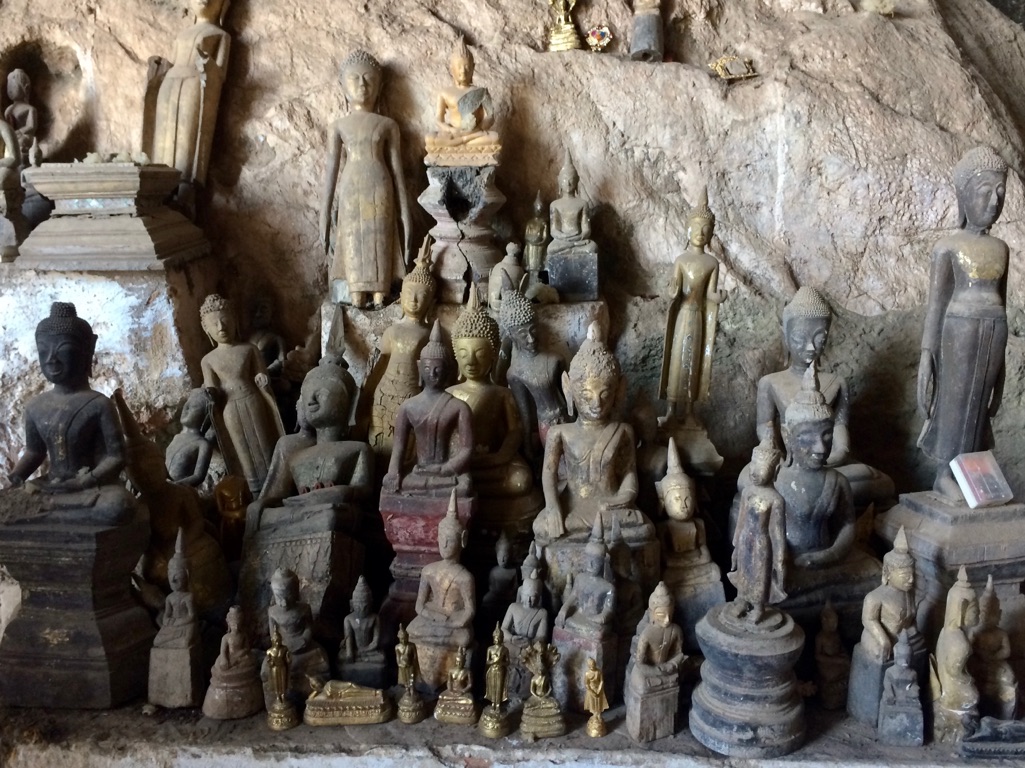
Small Buddha images - mostly wooden
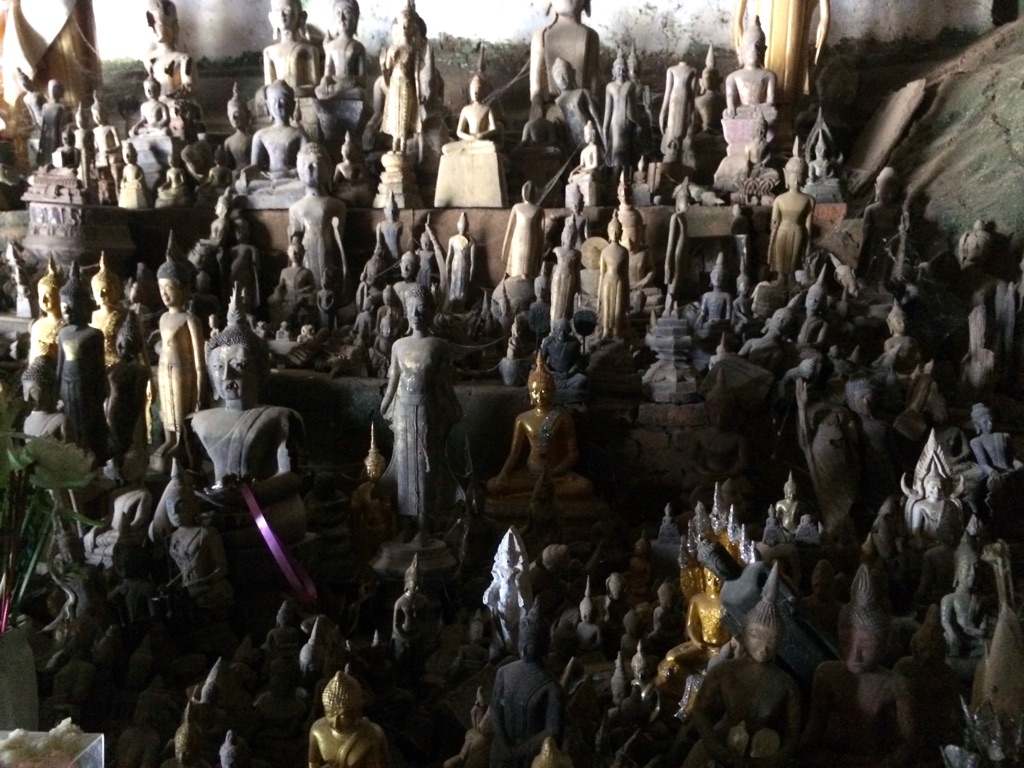

Kate, post-cave visit...
We docked at sunset in Luang Prabang; climbed the steps to the Main Street (very steep); said fond farewells to our travel-mates, and climbed into minivans for our respective hotels.
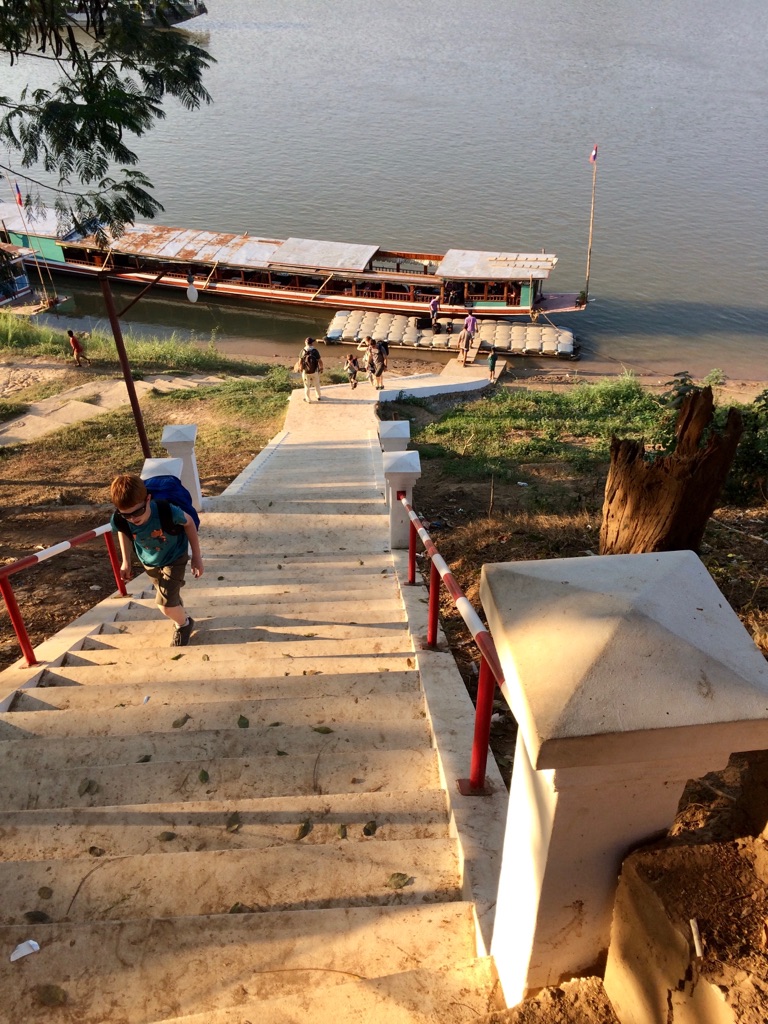
Steps don’t look so bad until we tried it with luggage...
Once again we boarded mini-buses and arrived at Thongbay Guest House on the outskirts of town. \240We were delighted with the tropical gardens and our verandah view overlooking the river. Paradise once more - until...!!!!!
Loudspeakers - chanting monks and karaoke...
The first full moon of the year is an auspicious event in the Buddhist calendar. How it is marked by the Buddhist monks in Luang Prabang is by 48-hours of chanting...over loudspeakers...all night, all day! \240Intrusive does not begin to describe how this sounded and felt, particularly, while trying to sleep.
In addition, we were subjected to very bad karaoke, also broadcast over many loudspeakers. It began before 8 a.m. and lasted intermittently until 10 p.m.
I suffered...and not in silence! \240Kate, less so...however, she did suffer my suffering!
We took the shuttle into town and found the ‘noise’ to be far less intrusive - and I gradually got over myself and began to enjoy Luang Prabang. Of course, it really helped to go for a Lao massage - slightly less masochistic than a Thai massage!
We wandered the town, identified our ‘must see’s, must do’s’ and came across the following sign.
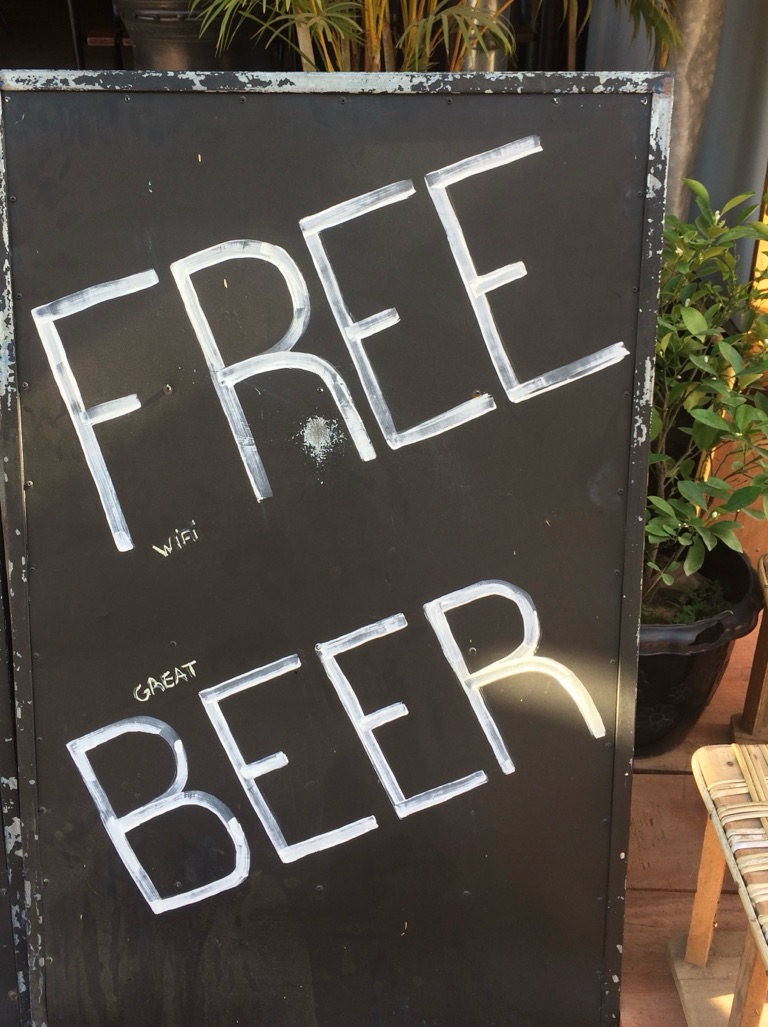
All will be ok!
Our hotel, the Thongbay Guesthouse was slightly outside the town but it offered frequent shuttles back and forth so we took full advantage. After a day in town, we returned to the hotel for a shower before going back into town for the evening. \240And, yes, the monks were still chanting and the karaoke still blasting.
A cheap meal was our plan for the evening and the night market offered the best deal. \240See below. \24020,000 kip for a bowl - \240choose as much as you can safely put into the bowl from the vast vegetarian table. \240The meal cost $3 CAD and was delicious! The fish and meat options were slightly more pricey - maybe $4.
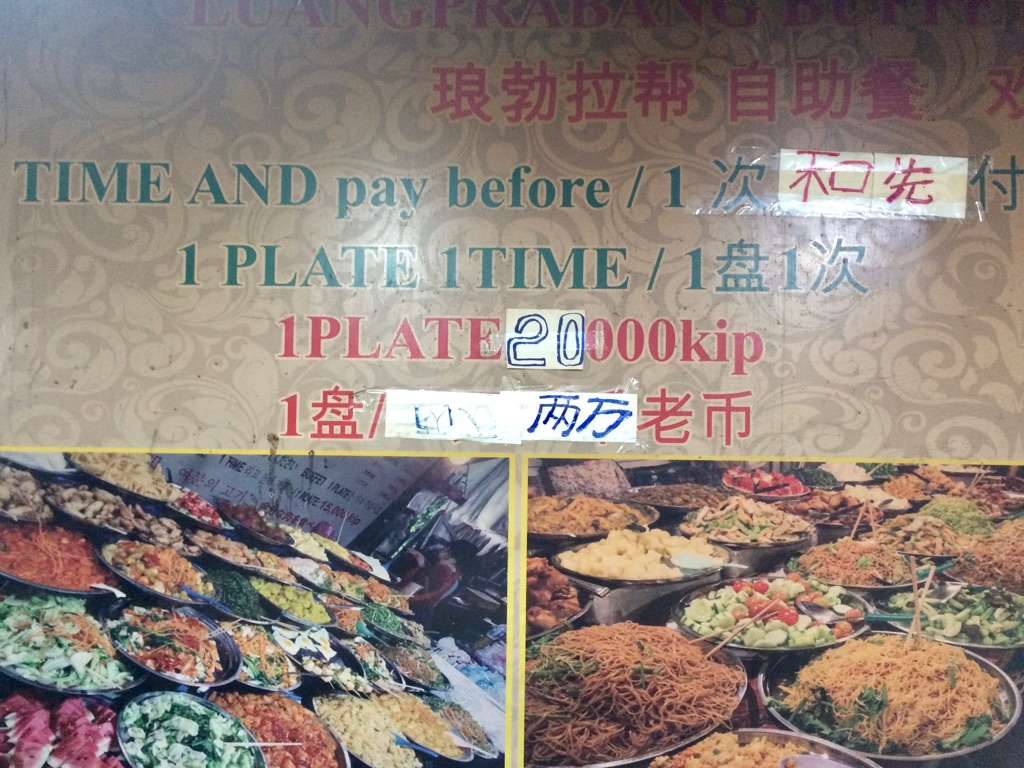
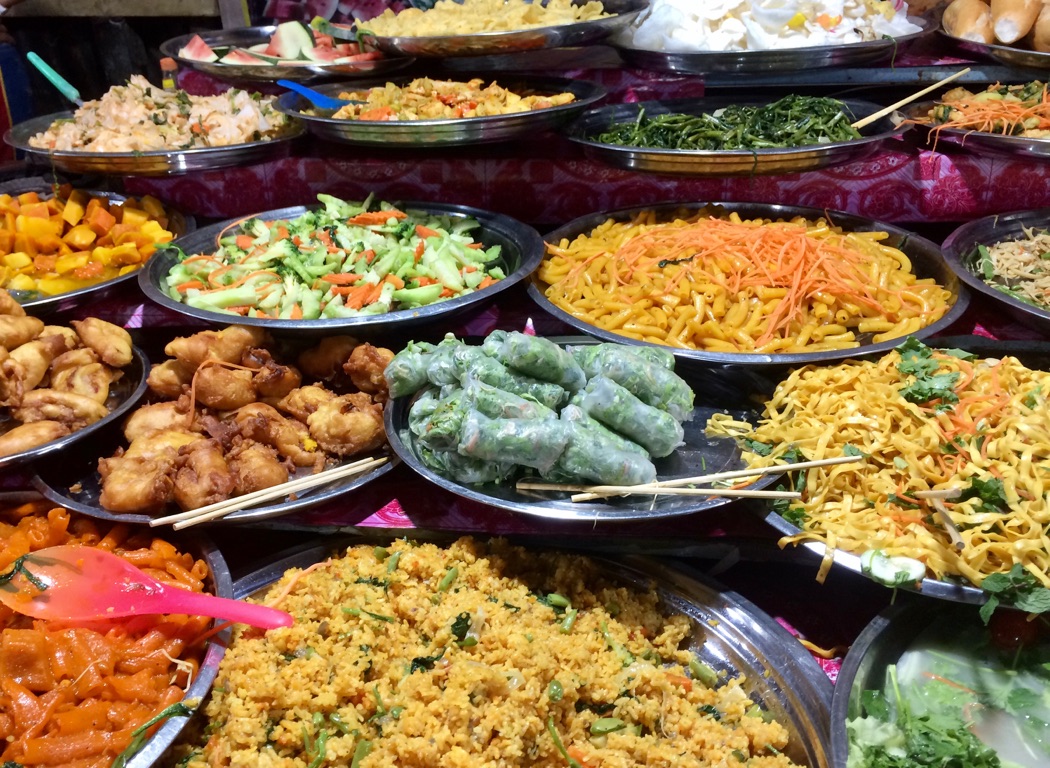
Yummy...
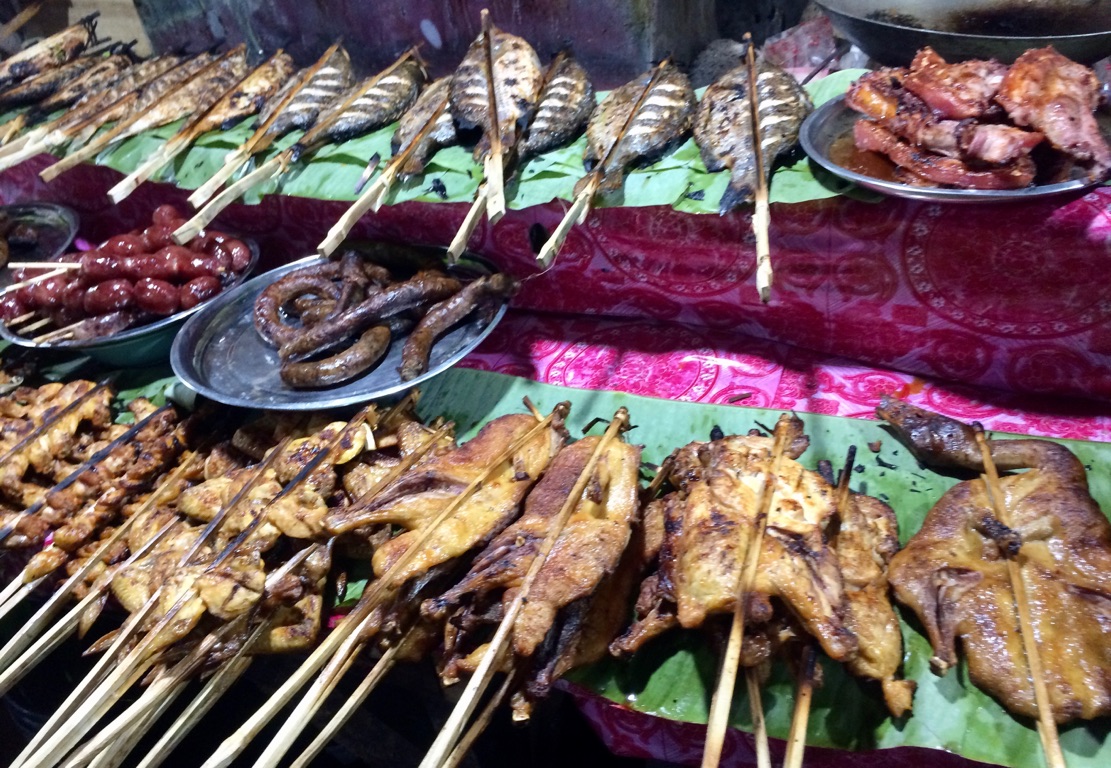
Not happening for me...
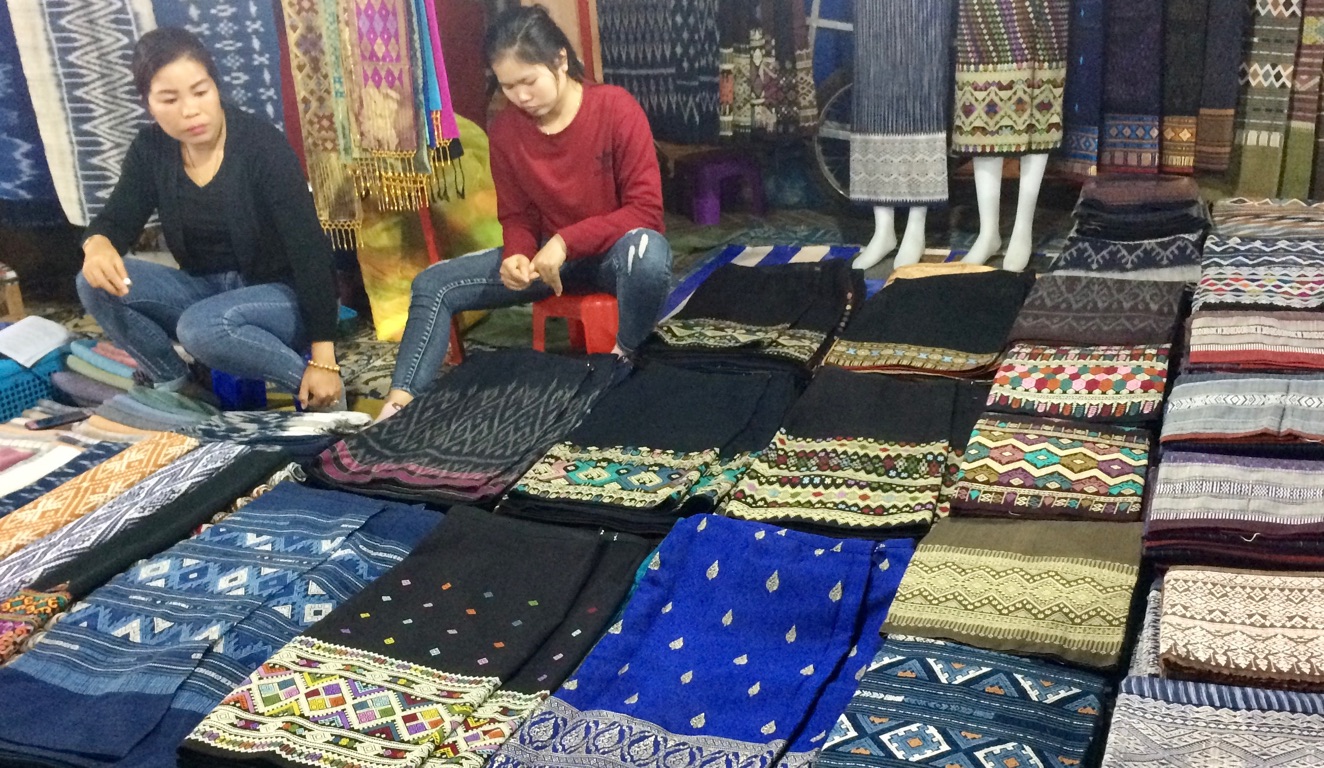
Then we wandered the night market.. where everything is available at a very good price and sorely tempting!
We returned to the hotel... and I prayed for a quiet night.
Wandering the streets of Luang Prabang
The 48-hours have ended - the chanting has stopped, and there are no loudspeakers. All is well in the world again!
In this lovely hotel, breakfast is ordered the night before and delivered to our verandah at the appointed hour. \240Next morning, 2 lovely young Laotian women - dressed in traditional dress - brought trays to us. \240All we were required to do was step outside to the table set up on our verandah. \240And there it all was - a perfect French omelet, a warm baguette, juice, yoghurt and fresh fruit. And of course, coffee! \240Delicious, and we quite enjoyed being spoiled every morning.

Tropical gardens...
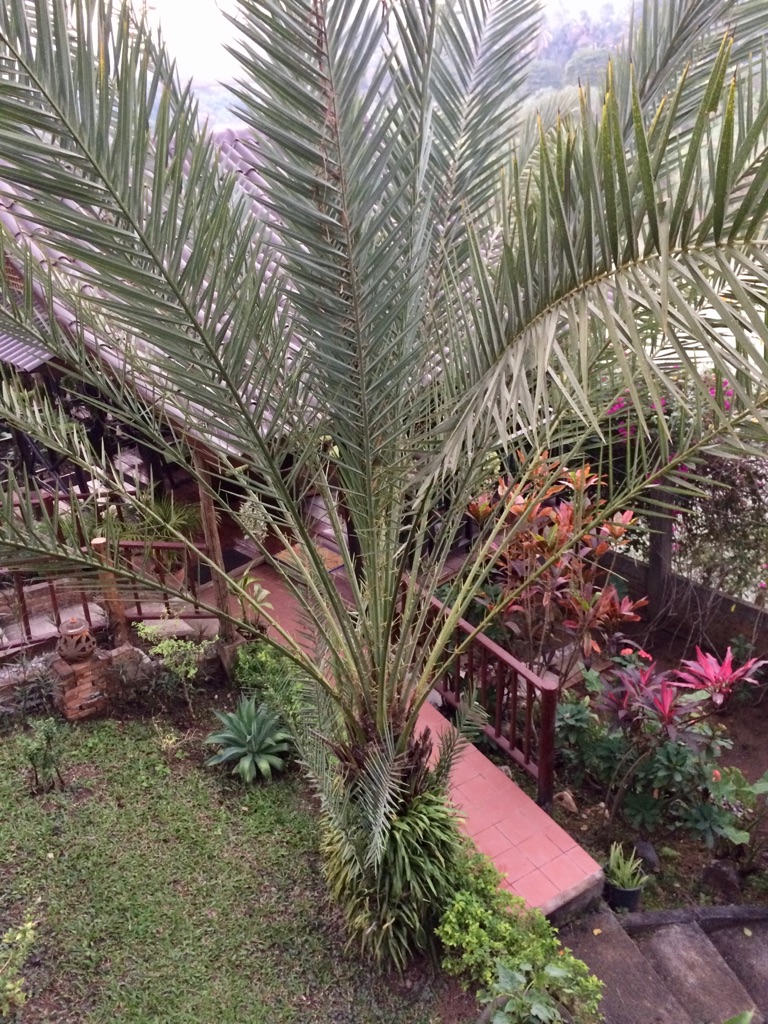
View from the verandah...
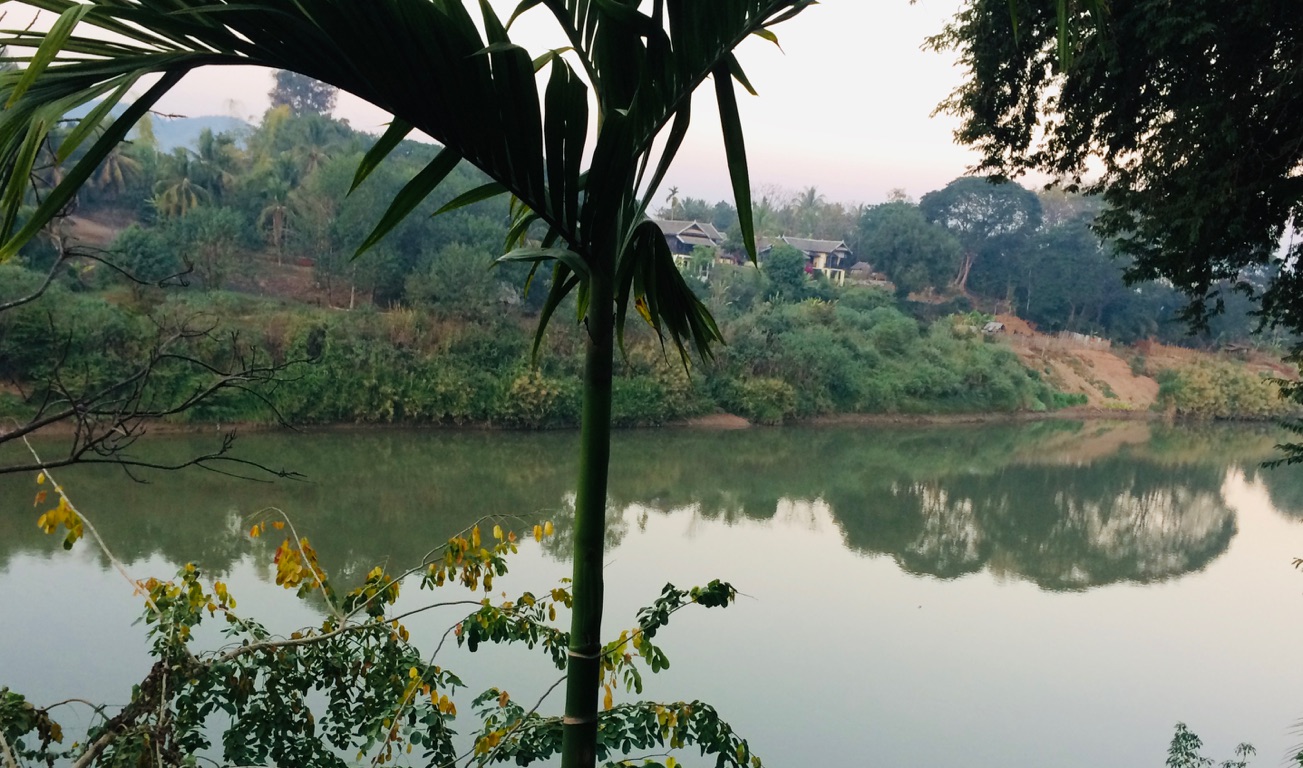
And across the river...aah... \240After breakfast, we boarded the shuttle for the 10-minute drive to town for the day. Luang Prabang has a lovely townsite and still manifests much of its French colonial past. There are French restaurants and bakeries and there is a fading but beautiful elegance to many of the buildings. It is a town worthy of staying for a few days, maybe a week. \240Alas, we have only 4 days.
It also has beautiful temples, a royal palace and a \240museum. The Mekong River flows through the town creating beautiful riverbank spots to enjoy the views and sunsets - and a bamboo foot bridge which looks charming and a bit precarious.
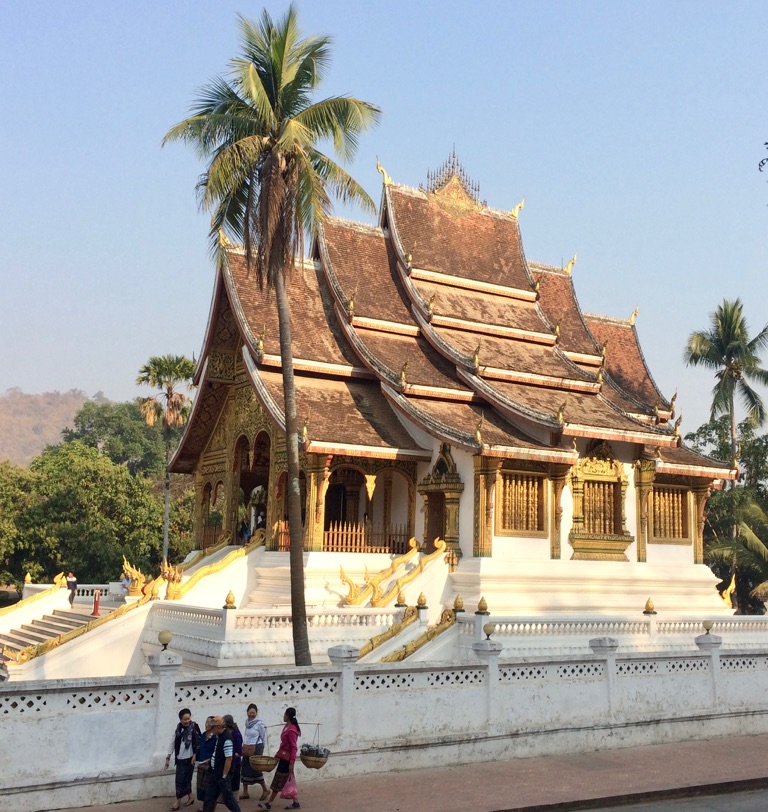
We began the day walking 300+ steps up to Phousi temple.
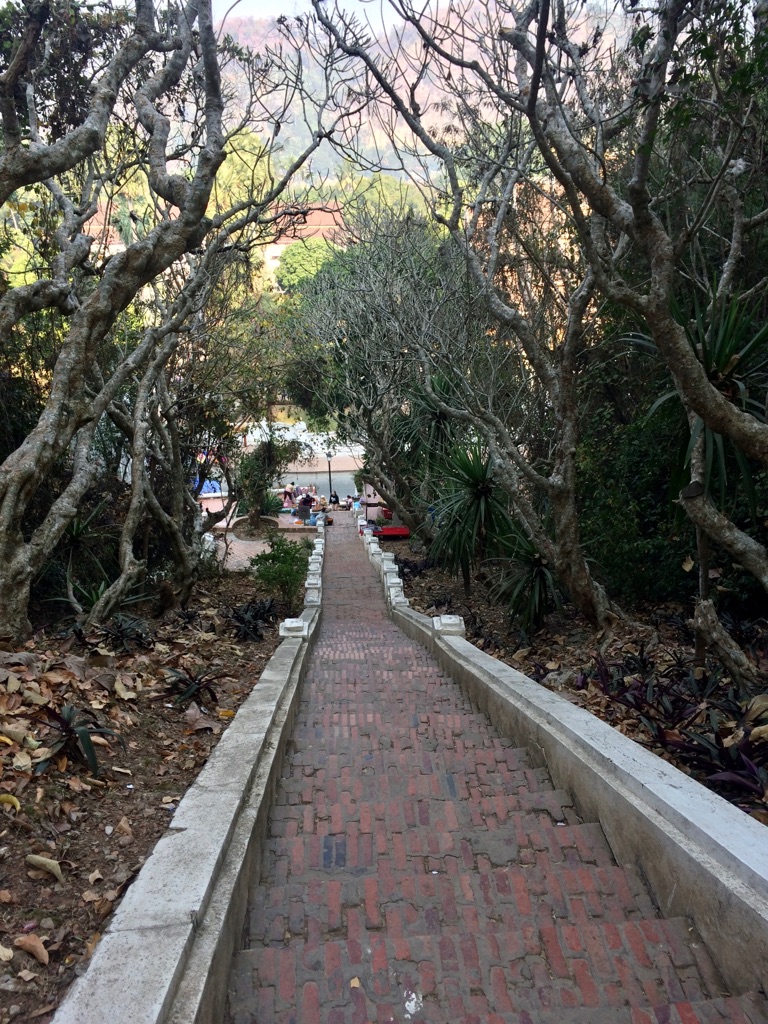
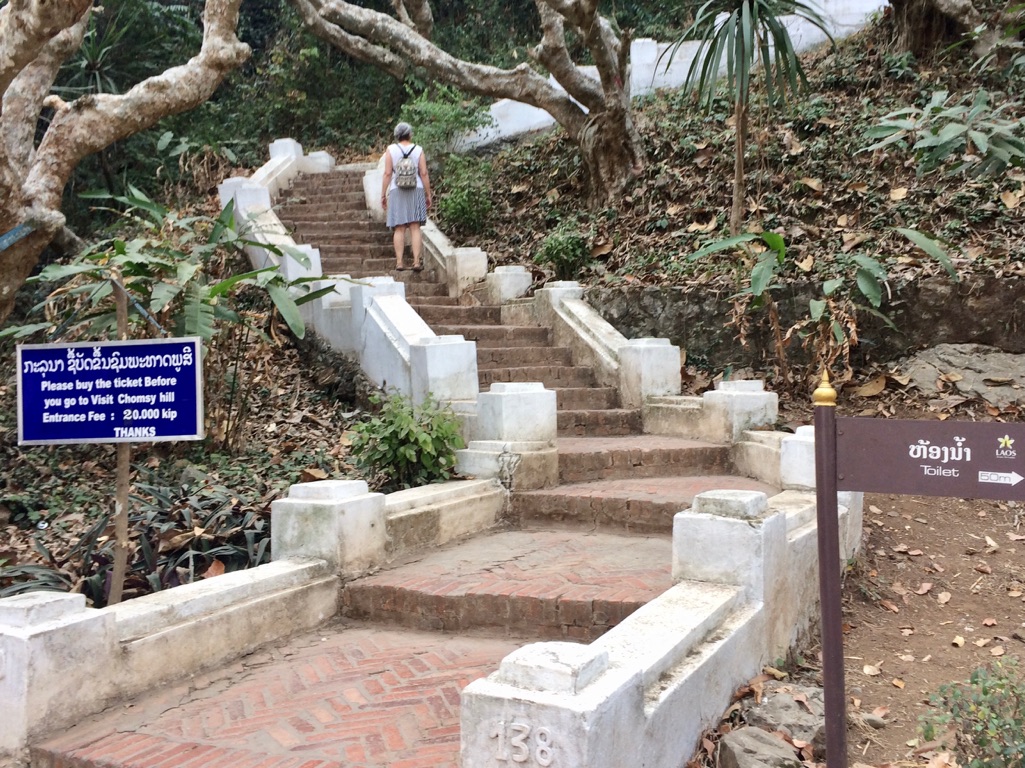
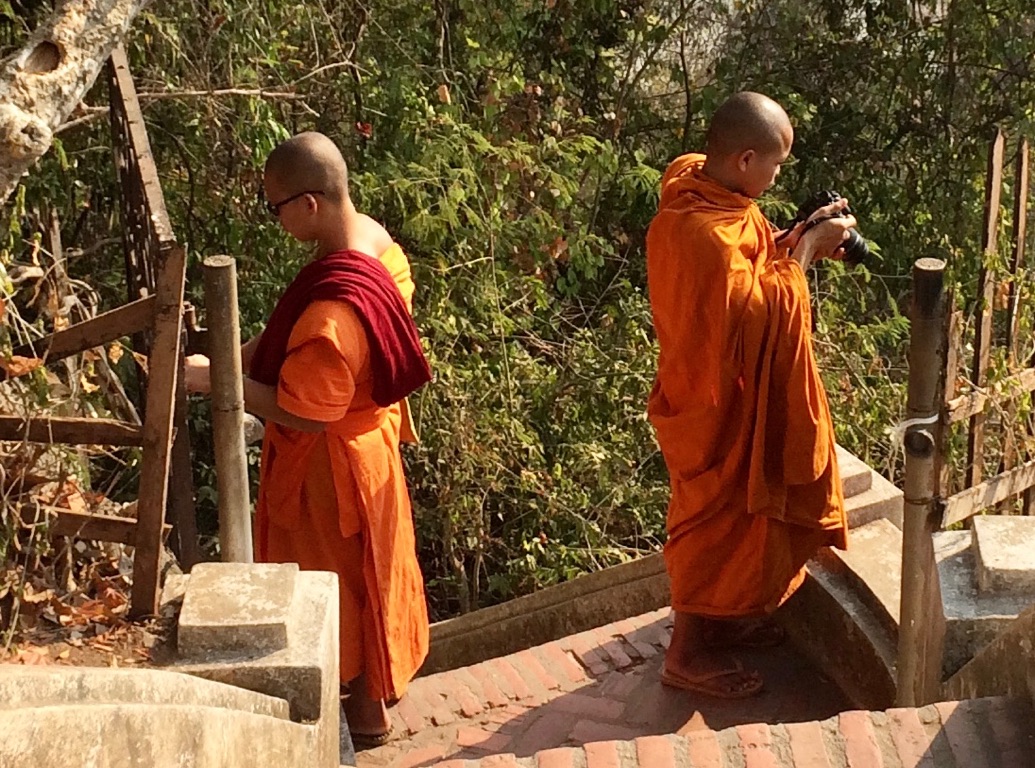
Even the monks were sightseeing...
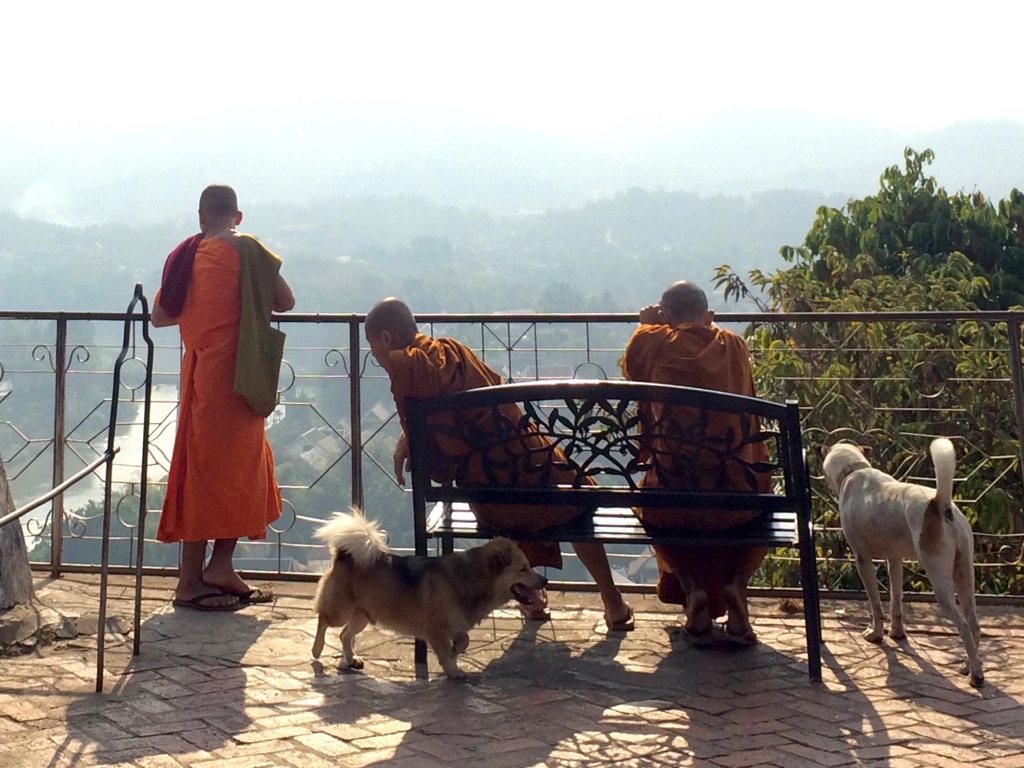
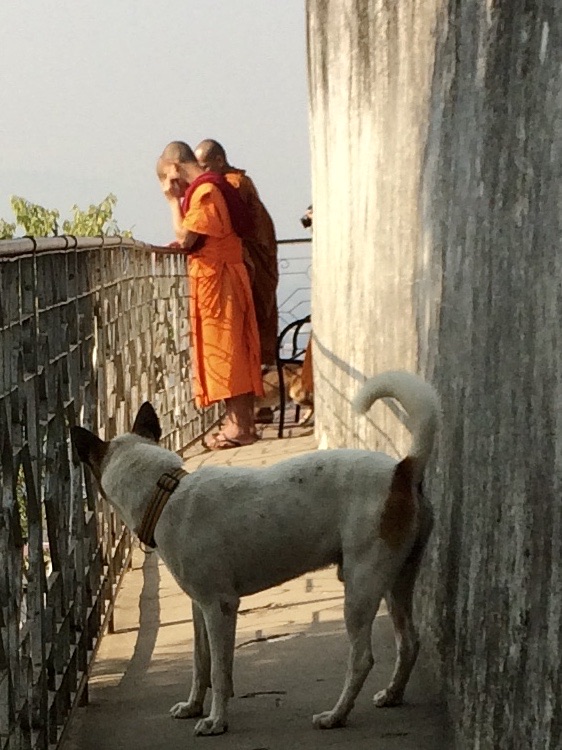
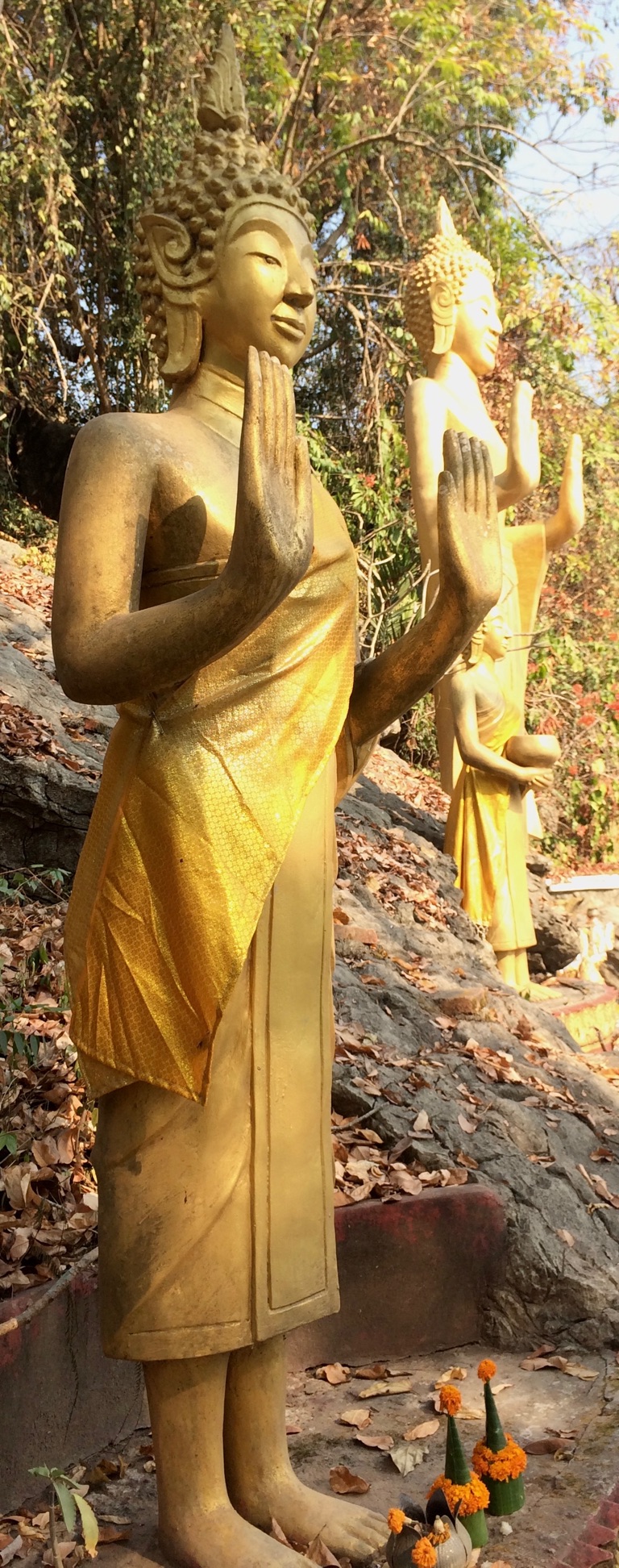
Many Buddha rupas along the way...
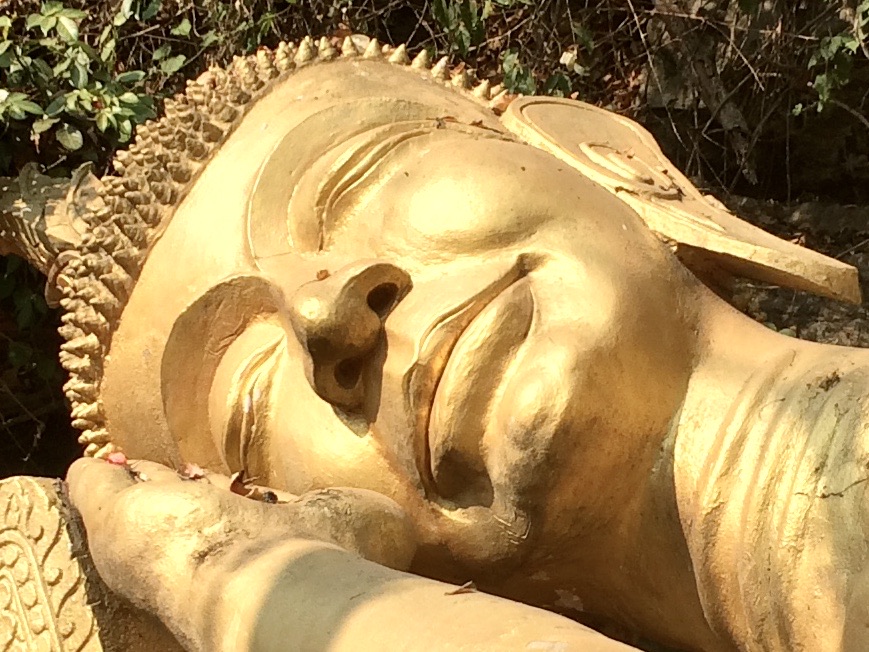
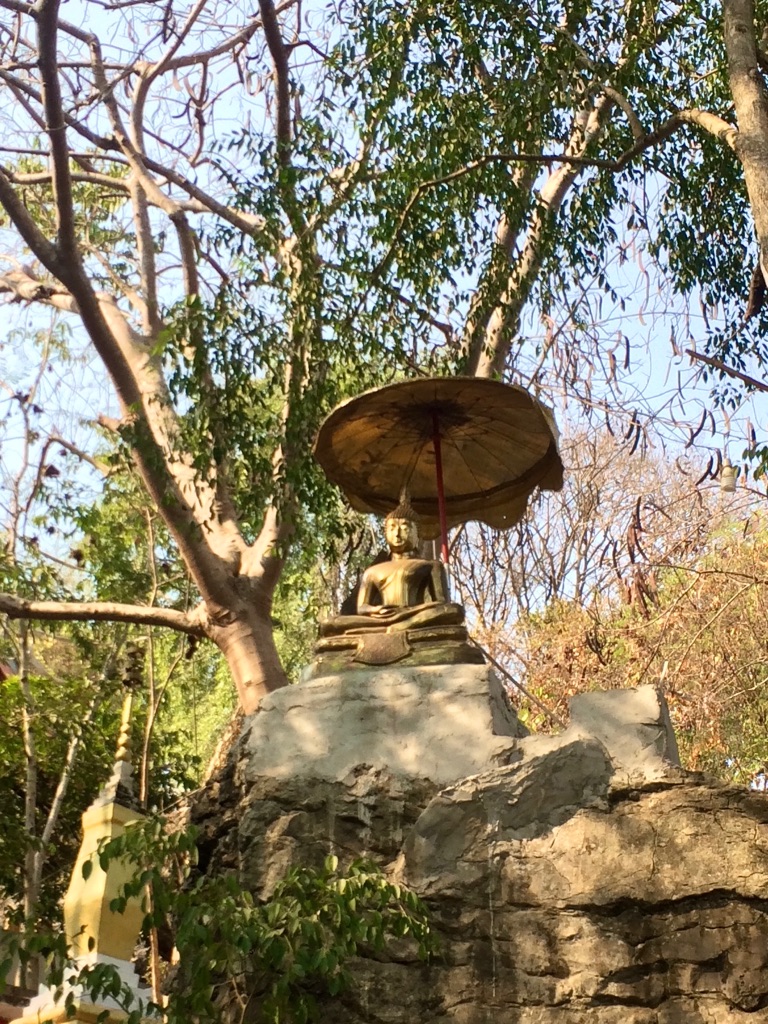
And an unexpected conversation with a 17-year old novice who was studying for his final exams with whom Kate exchanged email addresses!
More scenes from the town:
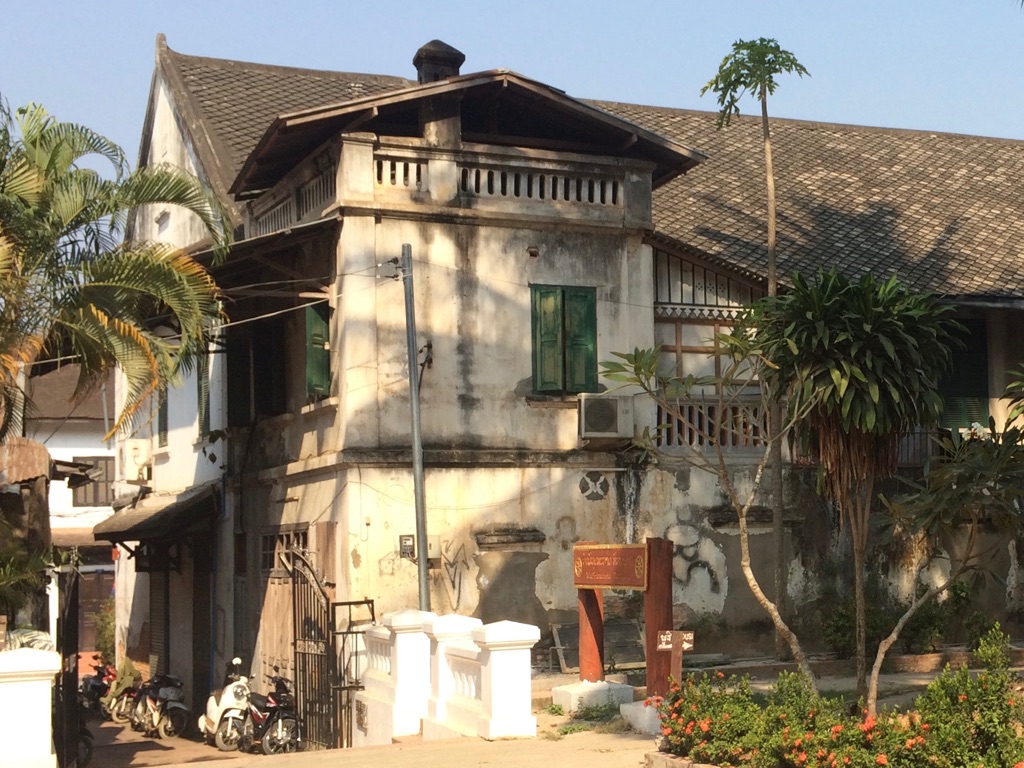
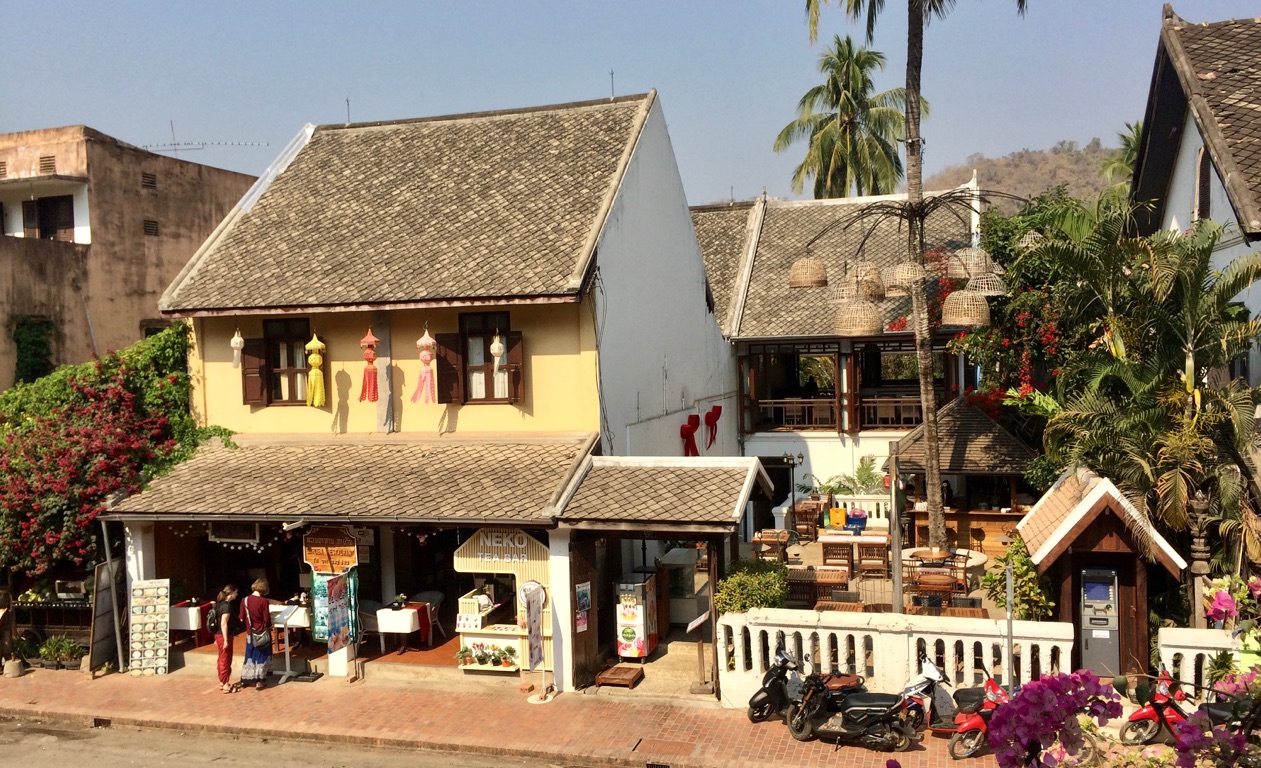

Just another coffee shop...

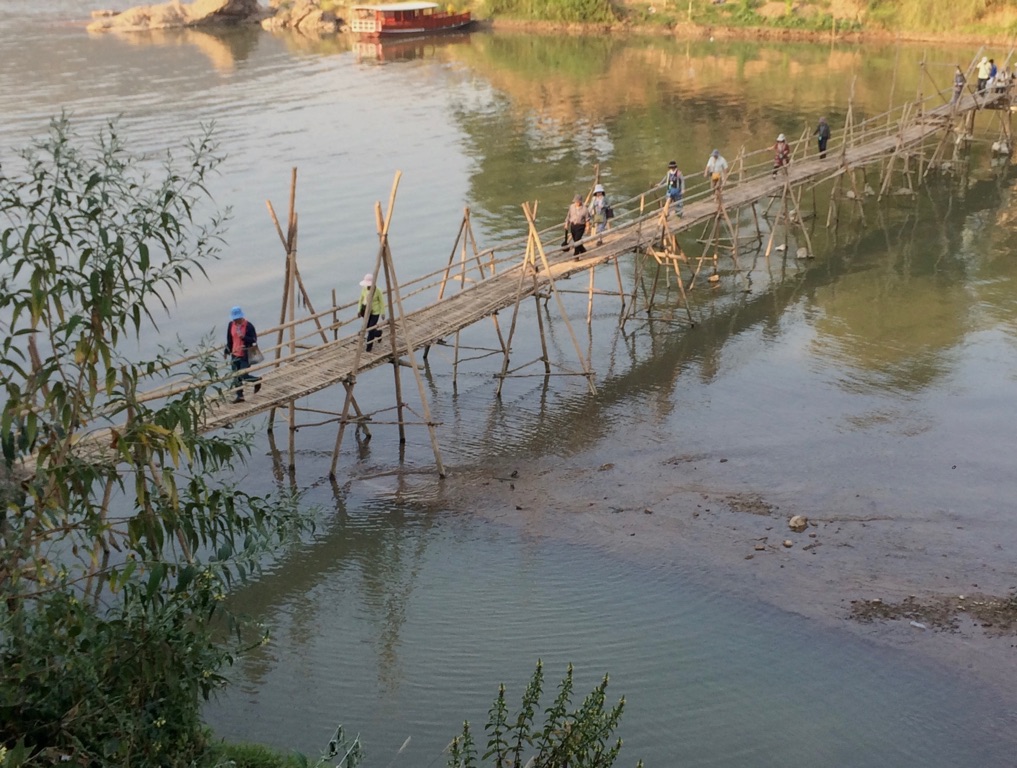
Crossing the bamboo bridge...
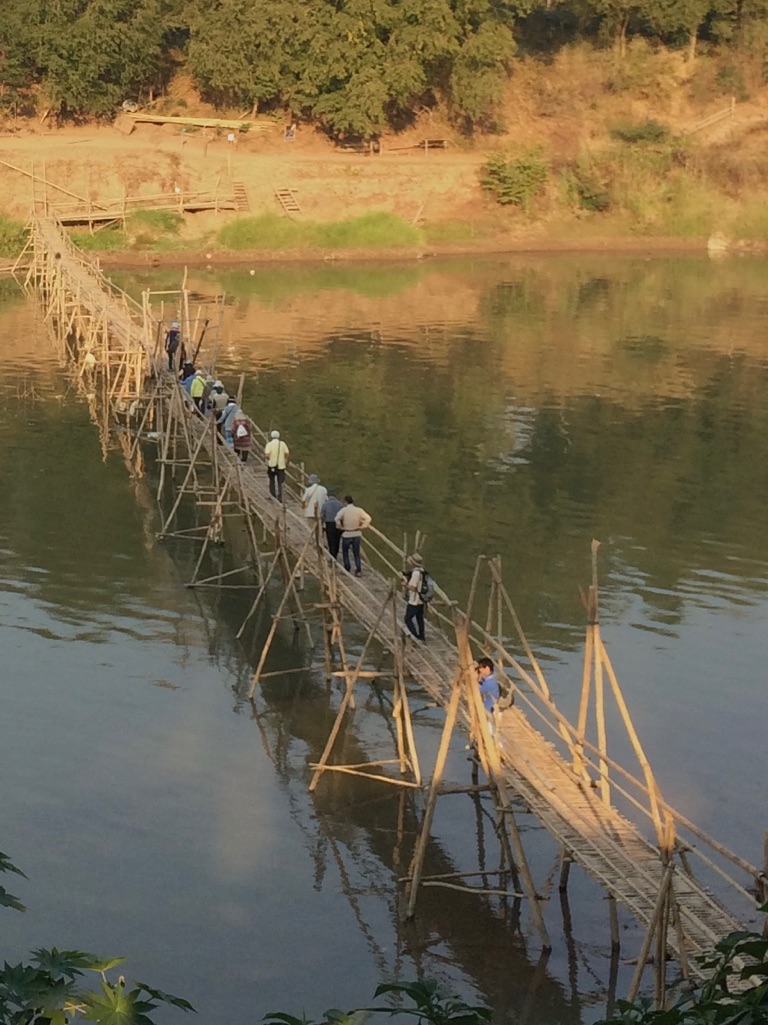
Kuang Si waterfalls
About 30 km from Luang Prabang is a beautiful set of waterfalls not to be missed. We joined a minibus tour of 12 people - at a cost of 35000 Kip ($5 CAD). A bit challenging to get used to these huge denominations!
January is the dry season in SE Asia and it is, indeed dry. It has rained only once, very briefly, while we have been here. \240The waterfalls look very different in the dry season - apparently, in the rainy season there are torrents of water and no swimming is allowed. The water has the same turquoise colour as in the Canadian Rockies - but the greenery is quite different.
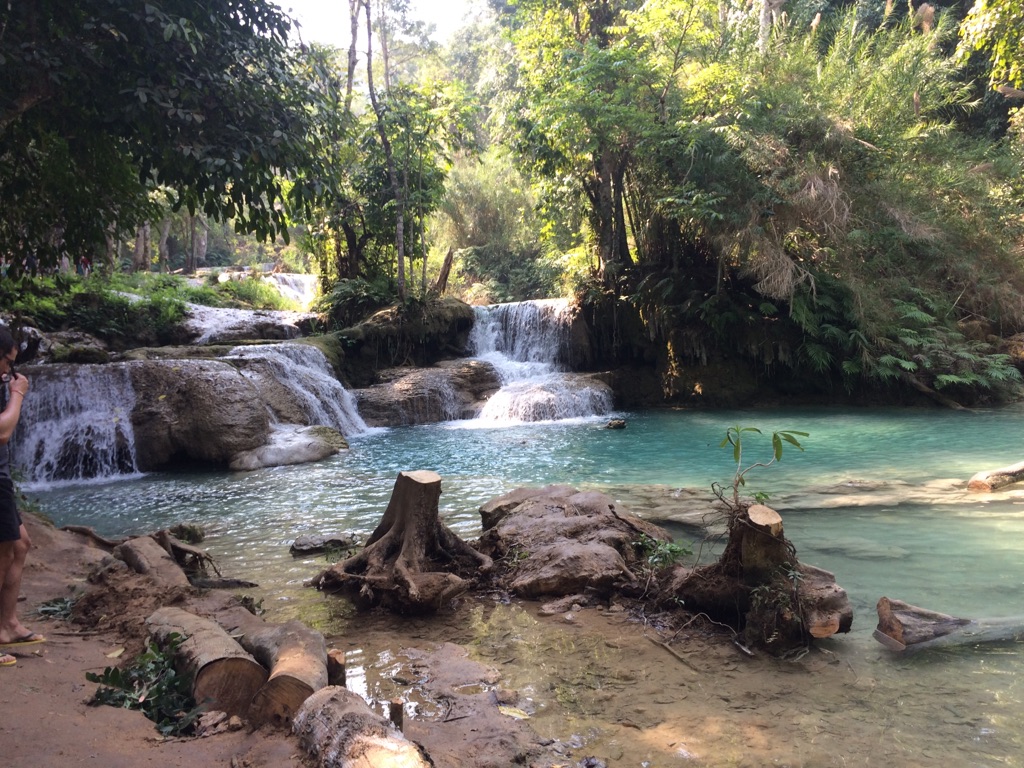
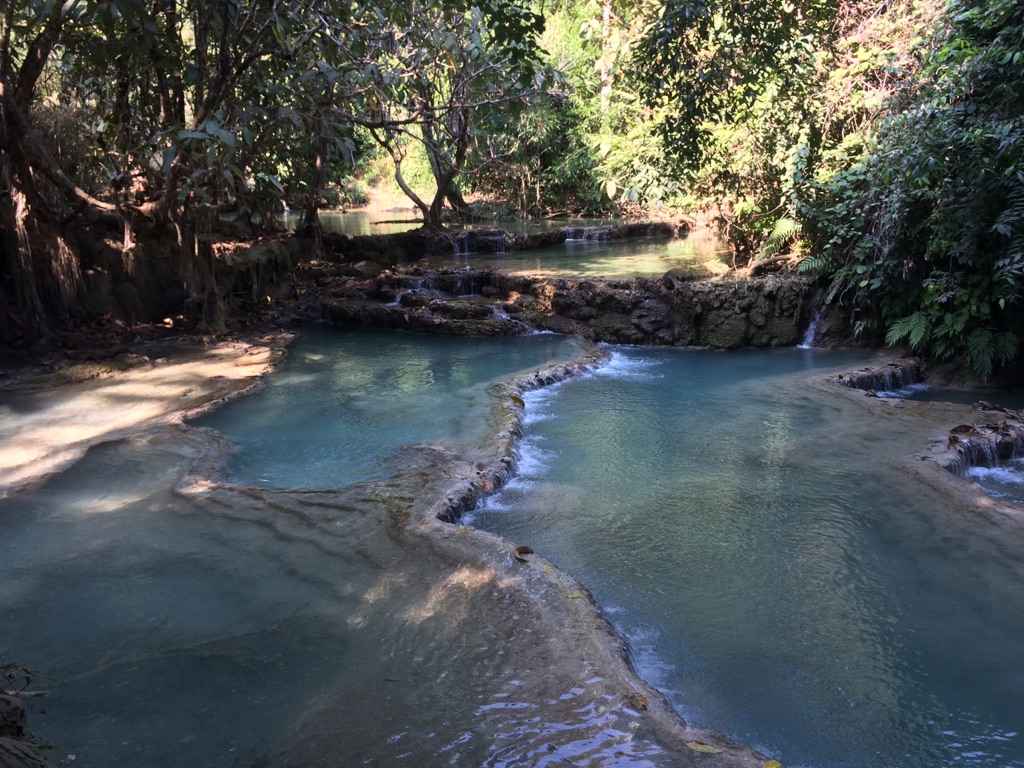
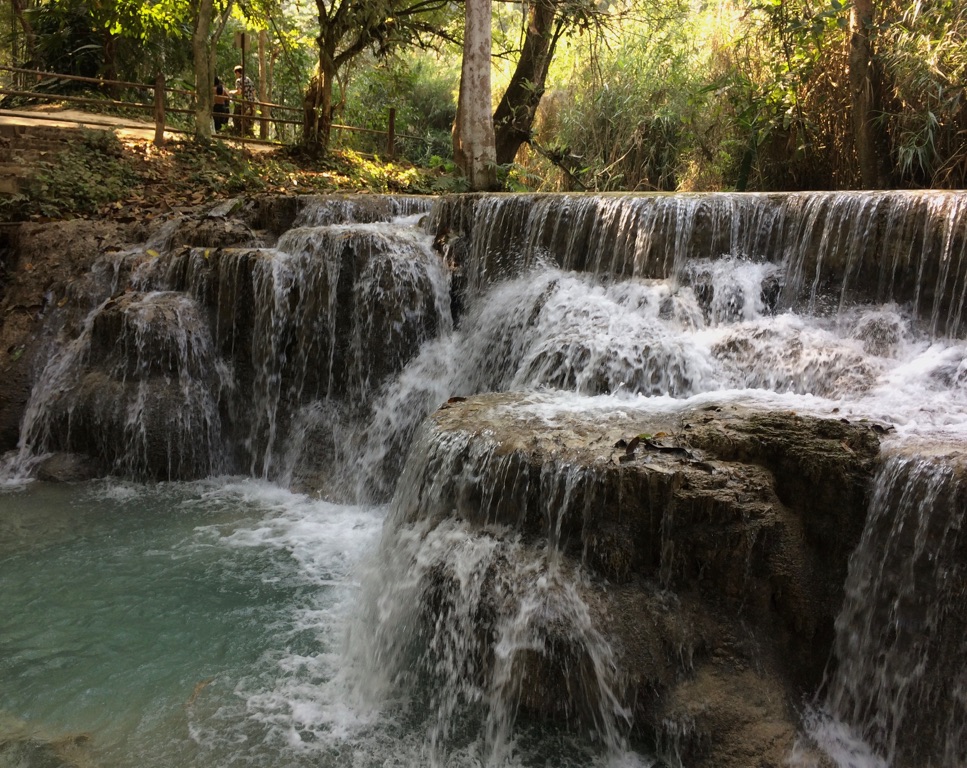
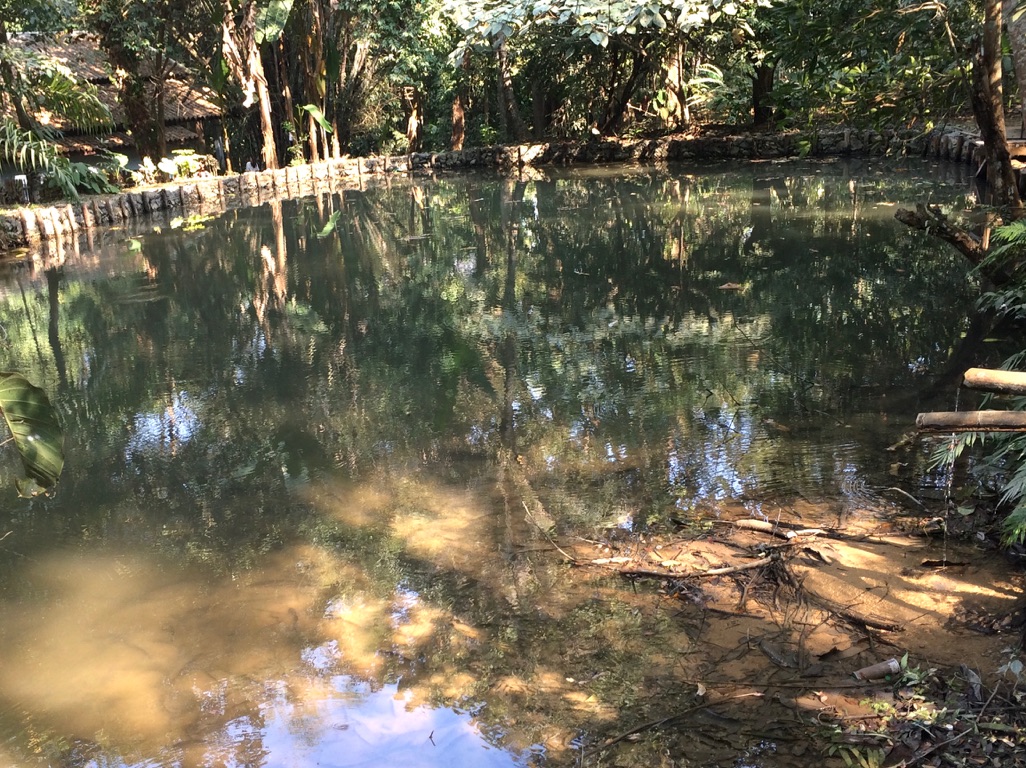
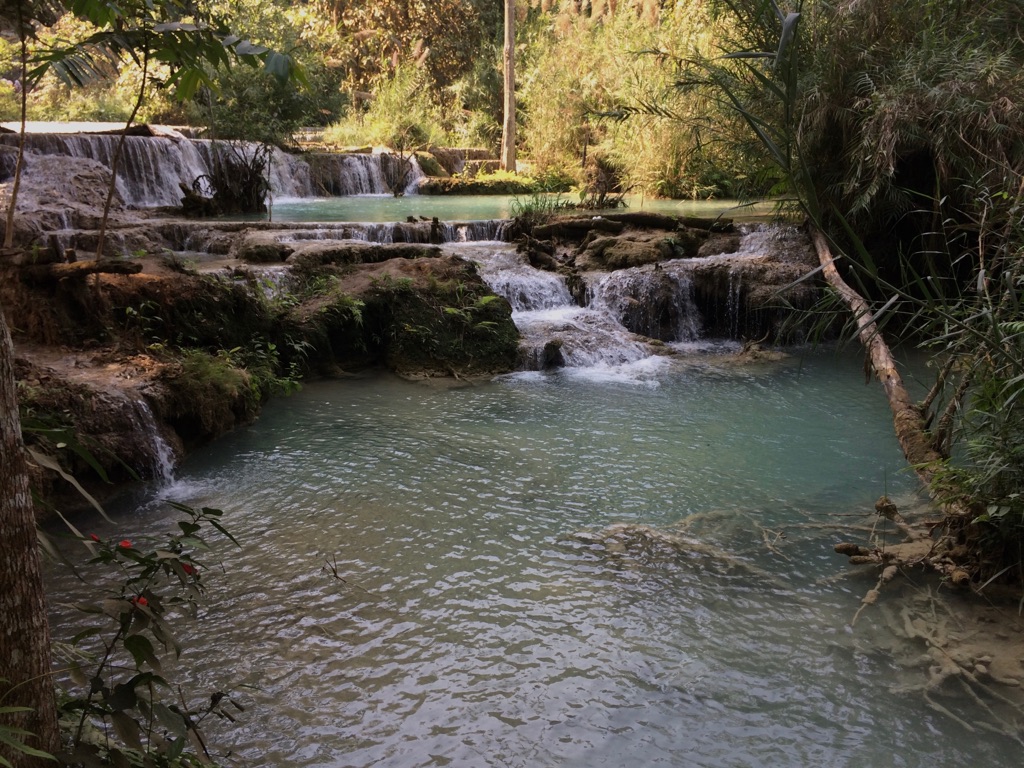
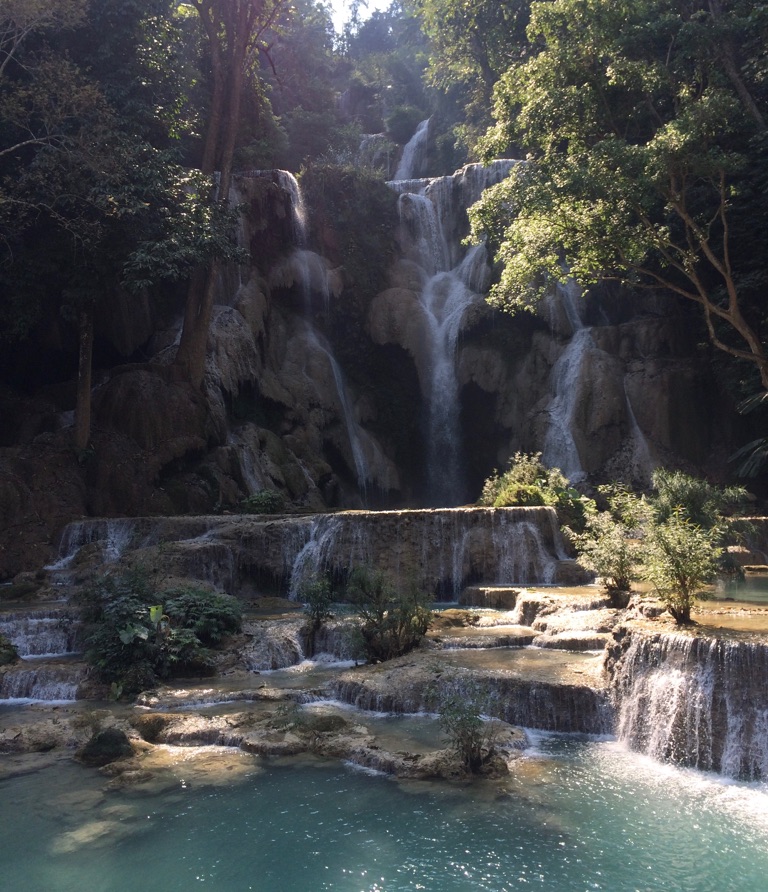
They were beautiful - and even though the area was crowded with tourists, it was a wonderful way to spend an afternoon.
‘Swimming’ to Cambodia (with apologies to Spalding Gray) - and the border
Goodbye to Laos - too short of a visit - and on to Cambodia!
We flew Lao airlines - a 2-hour flight. Leaving Luang Prabang it was very apparent the amount of pollution caused by continuing burning of stubble and use of wood stoves. We also could feel it in our throats.
And, so, into Cambodia. First surprise was the thoroughly modern, slick airport. I had an eVisa already; Kate needed to apply for one upon arrival. One would think that my path through immigration and customs would be faster and with fewer problems - but no, not the case! The crew did not issue us immigration and customs forms on the flight, as is usually done. We should have known better and asked some questions.
What happened was that Kate was handed the forms while applying for the entry visa. I, on the other hand, lined up in the ‘already have a visa line’ which was moving hardly at all. Finally, my turn. I presented my passport and eVisa to the customs man. He thrust the documents back at me and yelled “form”. \240“What form?”, I asked. “Form from the plane”, was the response. I looked bewildered and he yelled “get out” to me and made it very clear with his hand that I was dismissed from the line. \240I paused. Opened my mouth (with some very clear things to say)...and closed it again. This was a border guard...in Cambodia. \240Kate, by now, was next in line - and through she went. She had all the proper forms.
Me? Back to the beginning - hunting for the forms and then back to the end of the line which had just increased 100-fold due to more flight arrivals. \240More than an hour later - after Kate had collected the luggage and located our driver from the hotel - I was finally cleared through immigration and customs. Kate was waiting patiently with our driver.
Lesson learned. Ask for the ruddy forms on the plane next time!
We got to our hotel, the appropriately named, ‘Night Hotel’ - and it is beyond fabulous. Look at this pool view, taken from our first floor balcony.
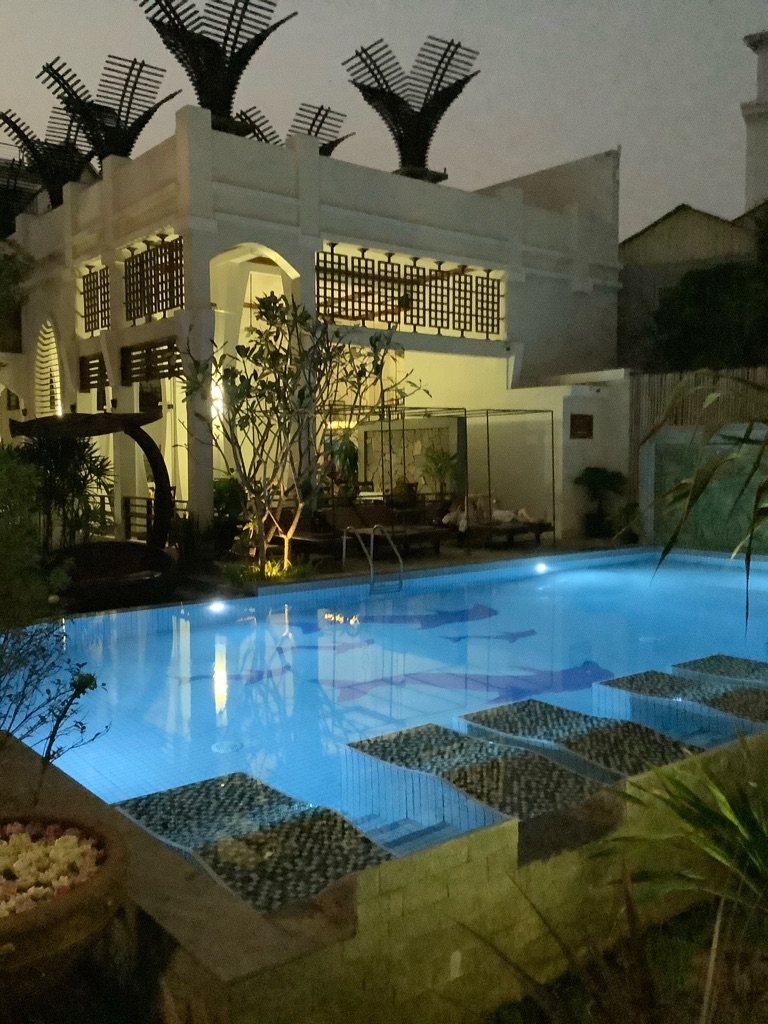
We are here for 7 nights at $29 CAD per night each!
A day at the museum
Whenever we arrive in our ‘new’ town, it seems the first day is spent walking around to see what is close by, what sort of restaurants are available and then make plans for our available time. With each new country, we have a new currency and so have to get used to local relative prices.
Our first order of business was to find a place for breakfast with decent coffee. Second order was to walk down to the Angkor National Museum which houses a large number of artifacts from the Angkor Wat archeological sites.
The museum was amazing. We ended up spending 4 1/2 hours with an audio guide (well worth the $5 USD to rent it), and walked through the entire exhibition. Unfortunately, photographs were not allowed. However, our appetite was whetted for the planned visits to the sites over the next few days.
Siem Reap has a population of about 140,000 people and all of them seem to be involved in the tourism industry! Angkor Wat is the big draw, but we notice far more tourists than anywhere else we have been other than Bangkok. \240Siem Reap has a cosmopolitan feel to it and we hear from everyone that it has rapidly changed and modernized over the last 10 years.
Here are a few views from our walk about town.
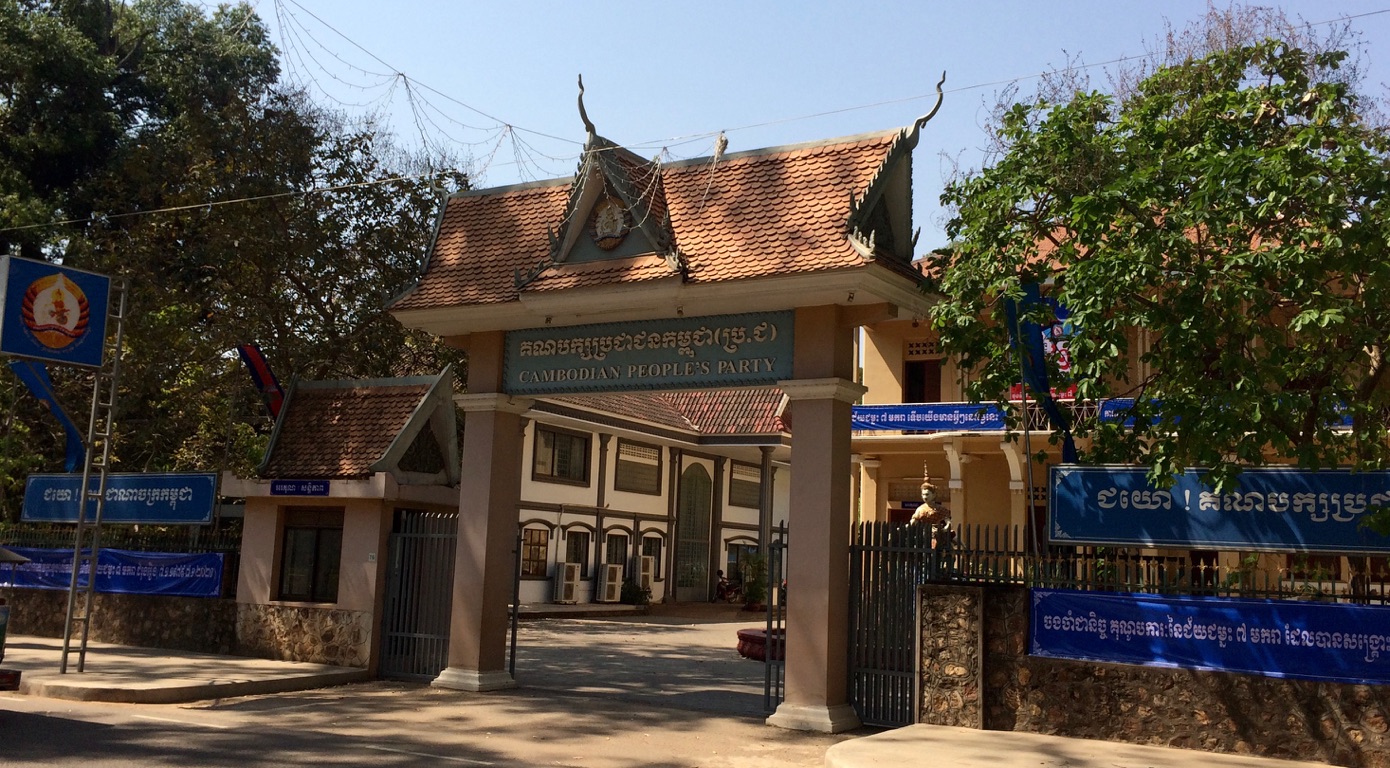
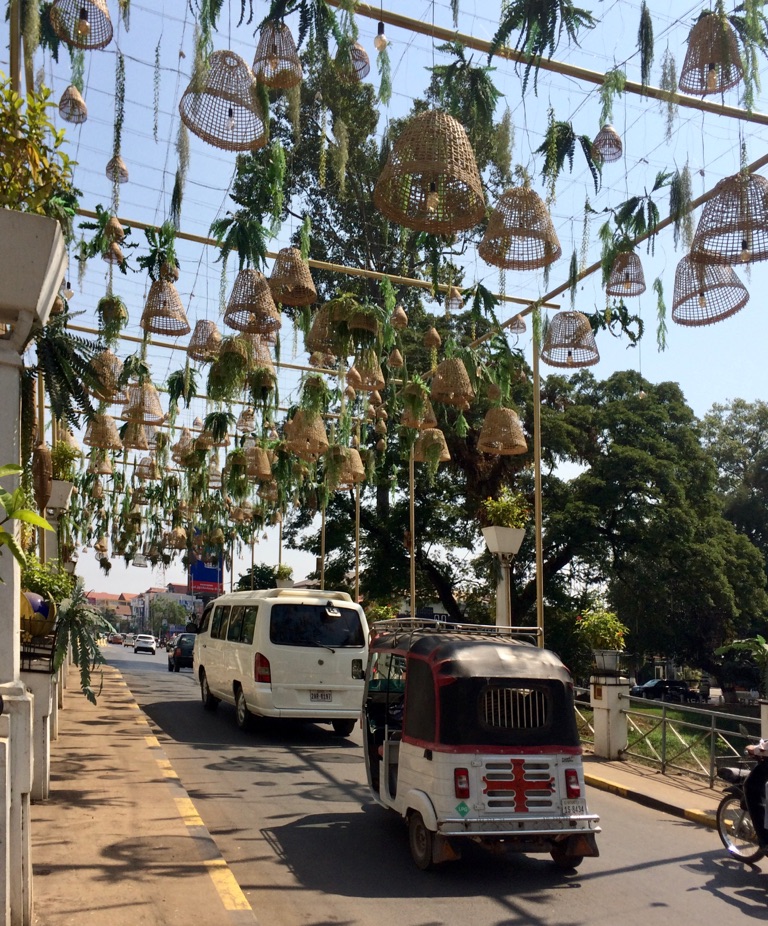

Ok...not real elephants...but we saw them up close.
We walked down the road for dinner to a restaurant named ‘Casablanca’, which had fabulous food and was recommended by some other guests at our hotel. They even joined us for a post-dinner chat and a photo.
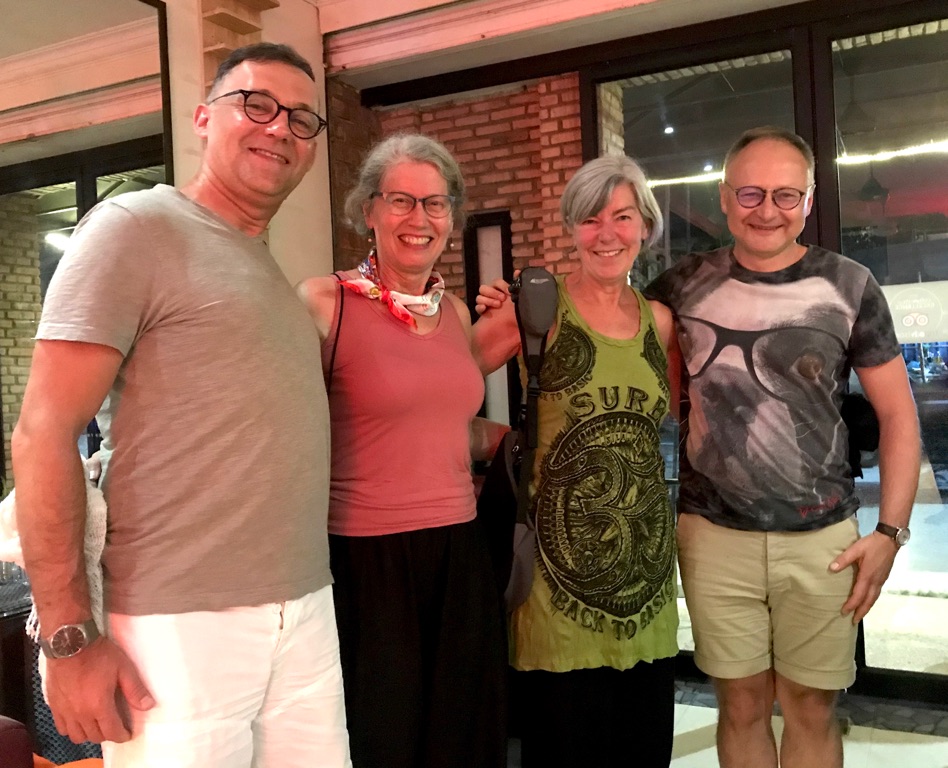
Mariusz and Jacek, lovely ‘boys’ from our hotel. They were off to Singapore the next day.
Lost in the ruins of Angkor Wat
With the greatest of luck, a tuk tuk driver, who we hired only to drive us out to the main Angkor Wat site and drop us off, agreed to be our personal driver for three full days of touring Angkor Wat. He spoke English quite well and took it as his personal project to educate, guide and direct us on the best temples to see and in a logical order. I must say it is quite a luxury to have a driver who waits patiently while we wander around, supplies water, and knows where the best washrooms are.
It is impossible to adequately describe or photograph the main temple that is Angkor Wat. The photo, taken by Kate, is the best either one of us could capture. \240We had to stop trying and just focus on smaller shots and leave the majestic views to the experts with fabulous equipment.
Angkor Wat is the largest temple but there are at least 1000 others spread over an area of 150 square kilometres. Angkor Thom, a few km way, is an actual city set site with many buildings - used for governance, worship and living. \240The individual temples date from 800-1400 AD. They are in various states of repair and decay - but I must say the decay is beautiful. \240Some have been used as film locations, notably the Lara Croft movies and, of course, Indiana Jones. The beautiful decay is accentuated by how the lush jungle has grown up around and, in some cases, among the temples.
As the temples are scattered over a large area we broke the visits into 3 manageable days, the small circuit (Angkor Wat and Angkor Thom), the big circuit (the outer temples but no less worthy of attention) and further afield. The crowds of tourists are greatest at Angkor Wat - particularly at sunrise (which we did not do). Managing the sun and extreme heat was a challenge but we tried to set off early in the day and be back at the hotel mid-afternoon (swimming pool). \240The days were quite exhausting.
And off we went...
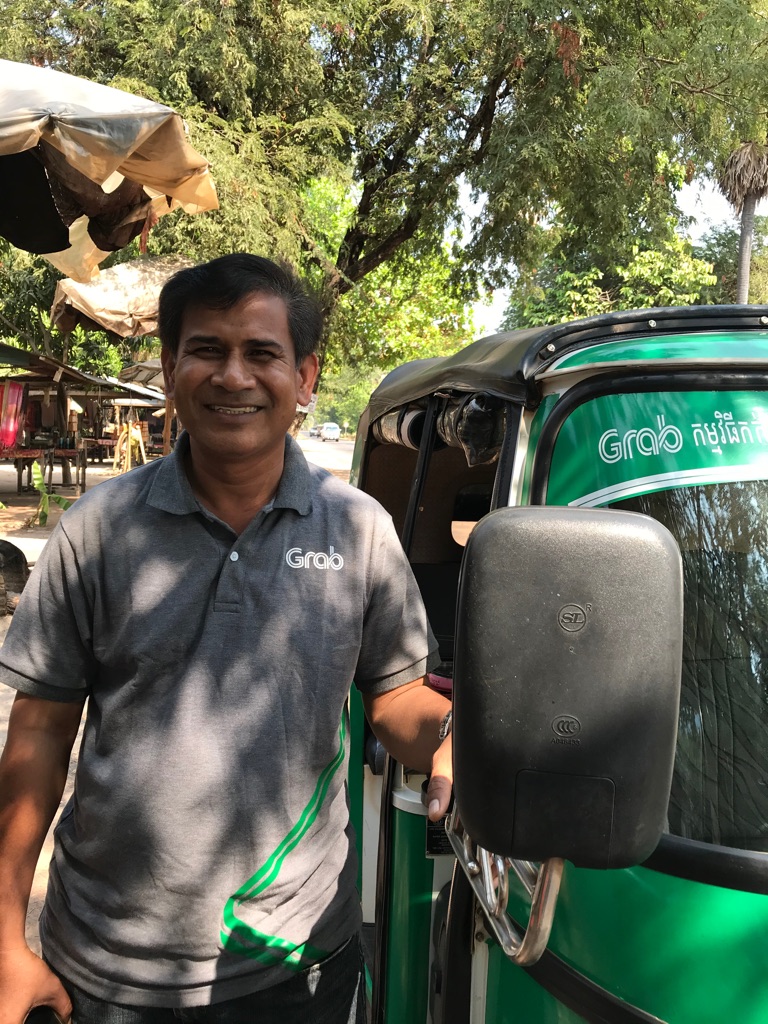
Our wonderful driver and guide, Sopheam, and his trusty green ‘Grab’ tuk tuk.

The main bridge to Angkor Wat crosses a moat surrounding the main temple. Over 2 million visitors tour this site every year.
The original temple dates back to 800 AD and was built for Hindu worship. Buddhism came to Cambodia in the late 13th century and the temples reflected this shift.
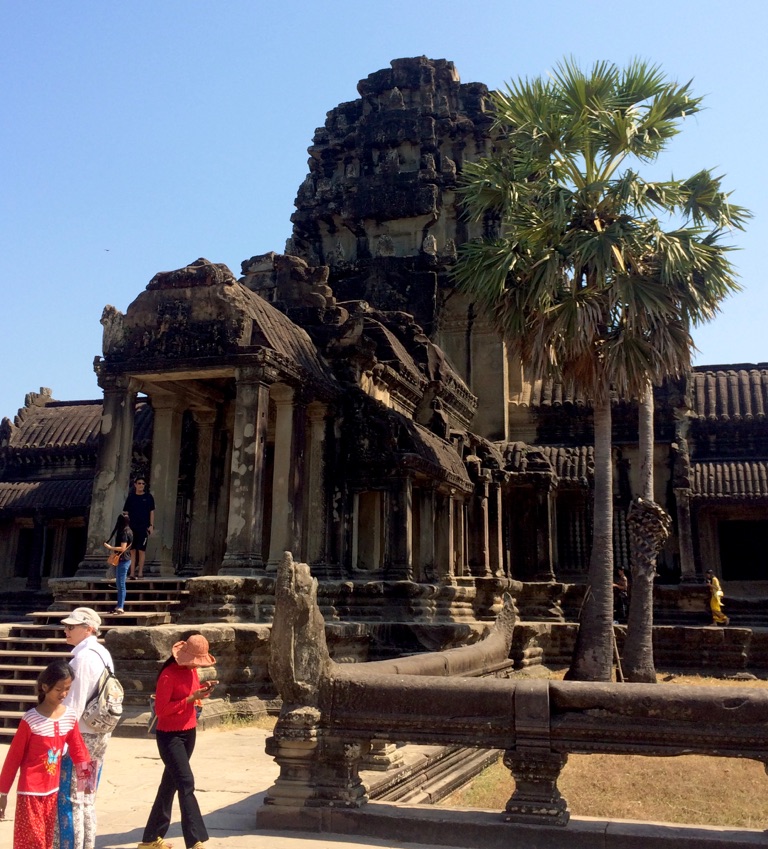
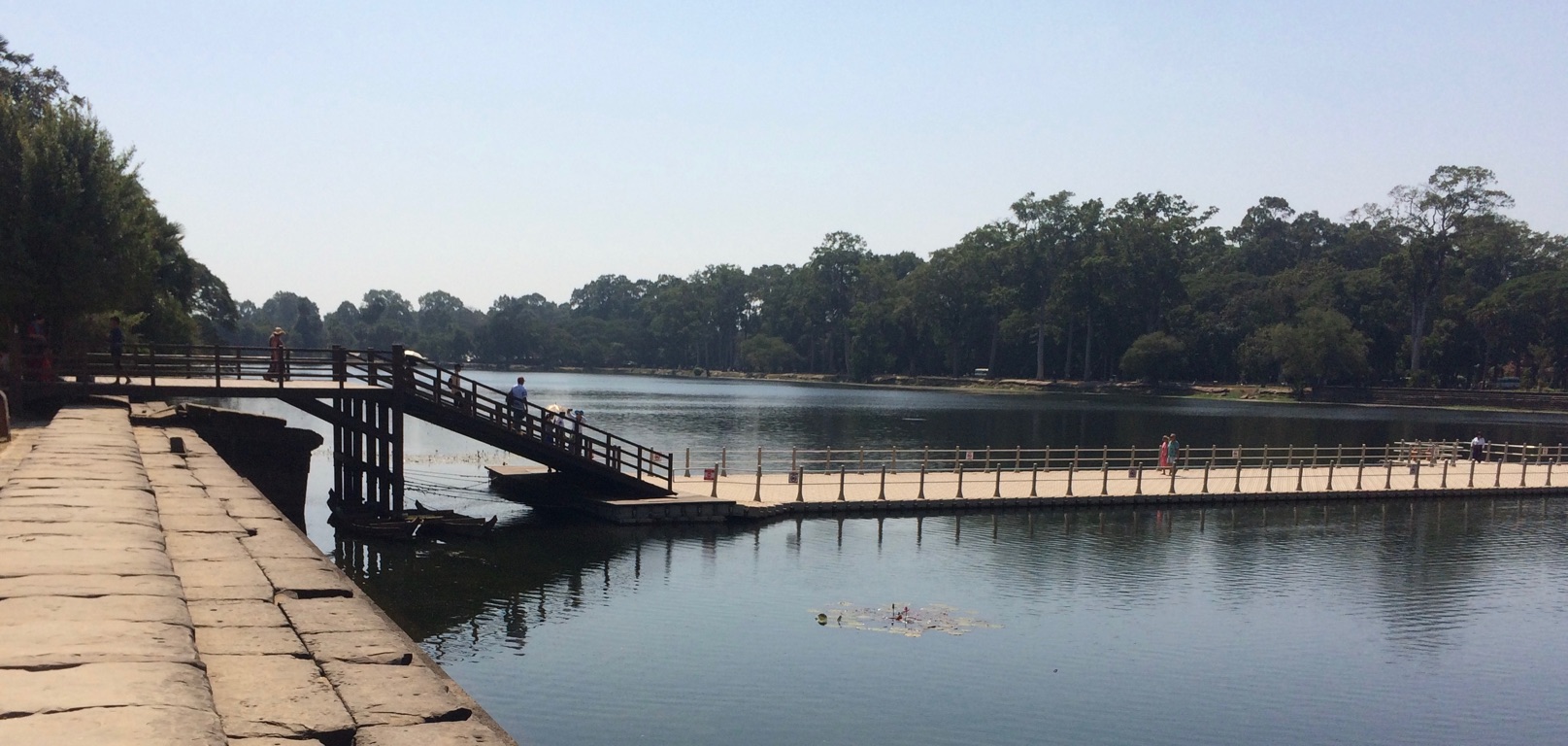
Moat surrounding the temple...
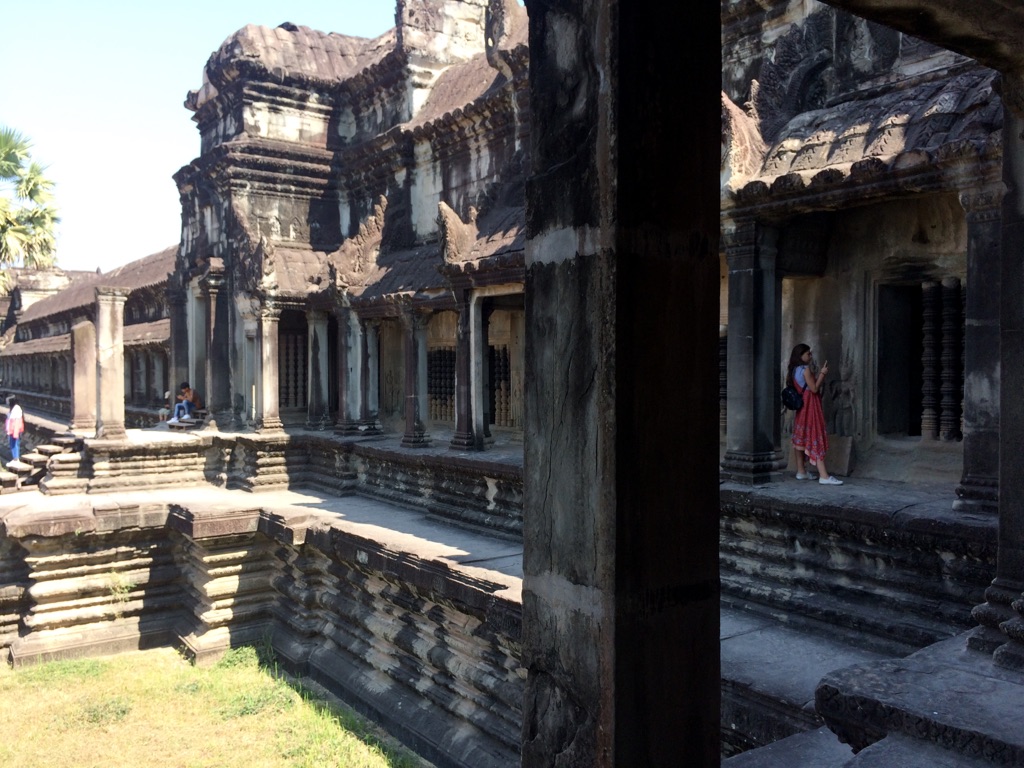
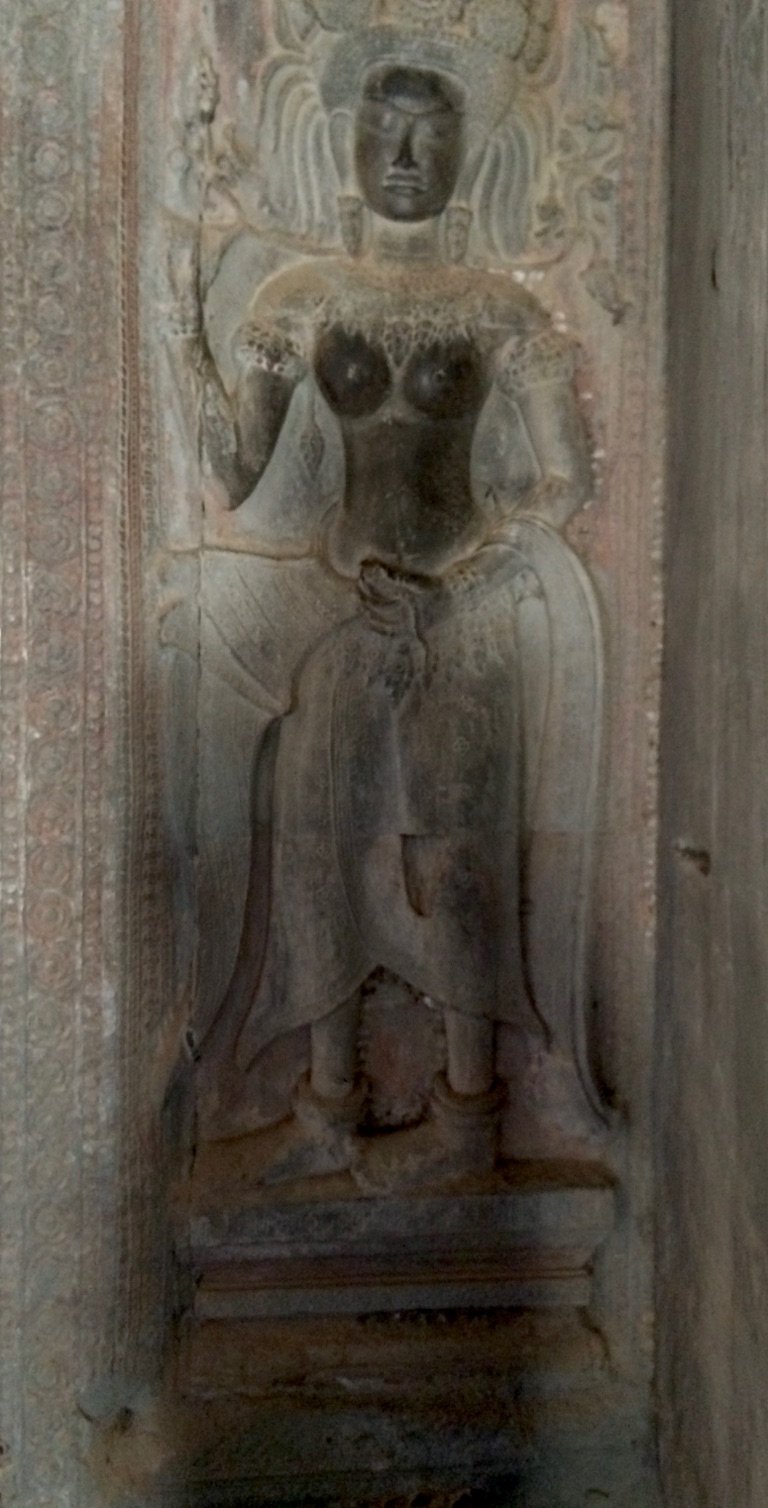
Well-preserved bas-relief...
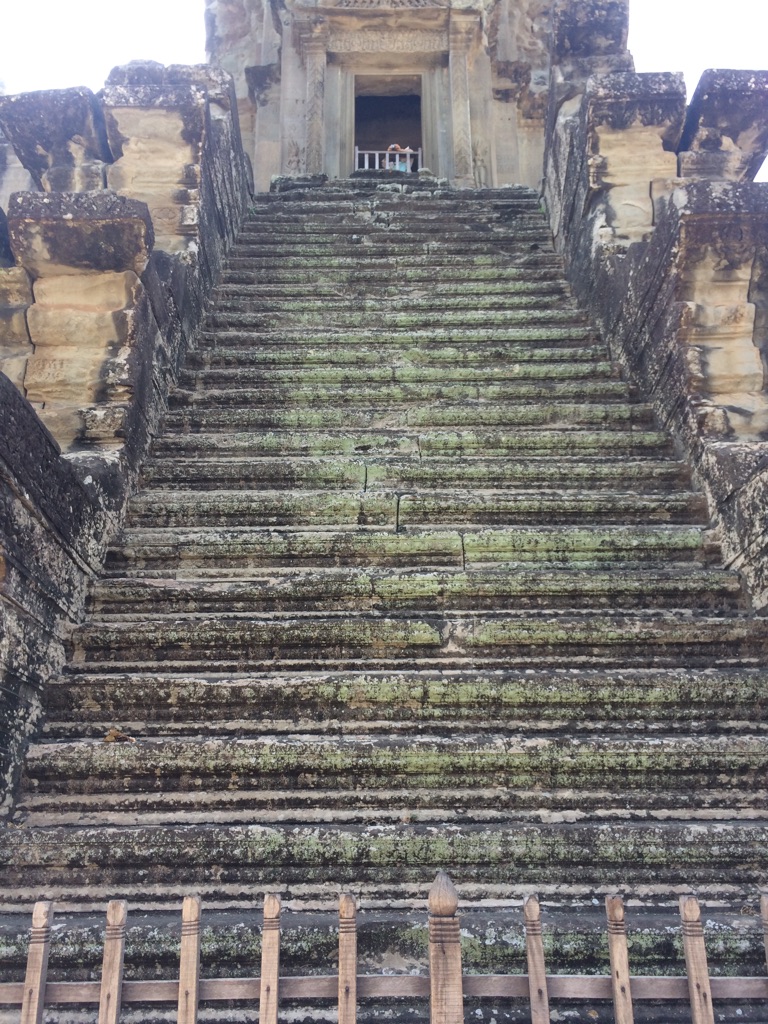
Obviously these stairs were closed to the public!
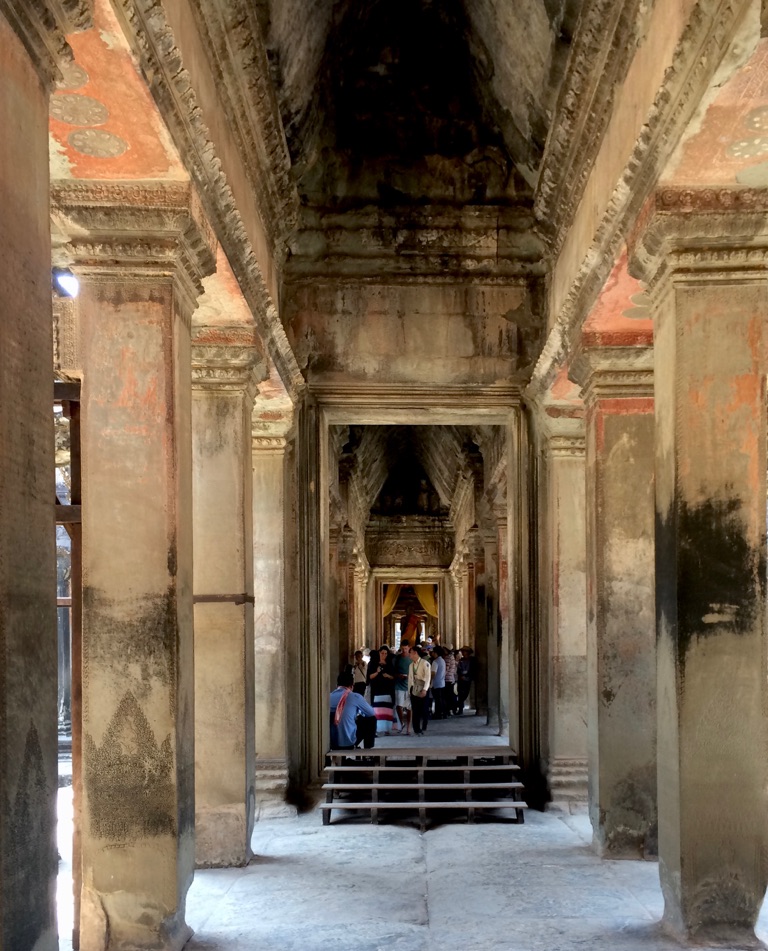
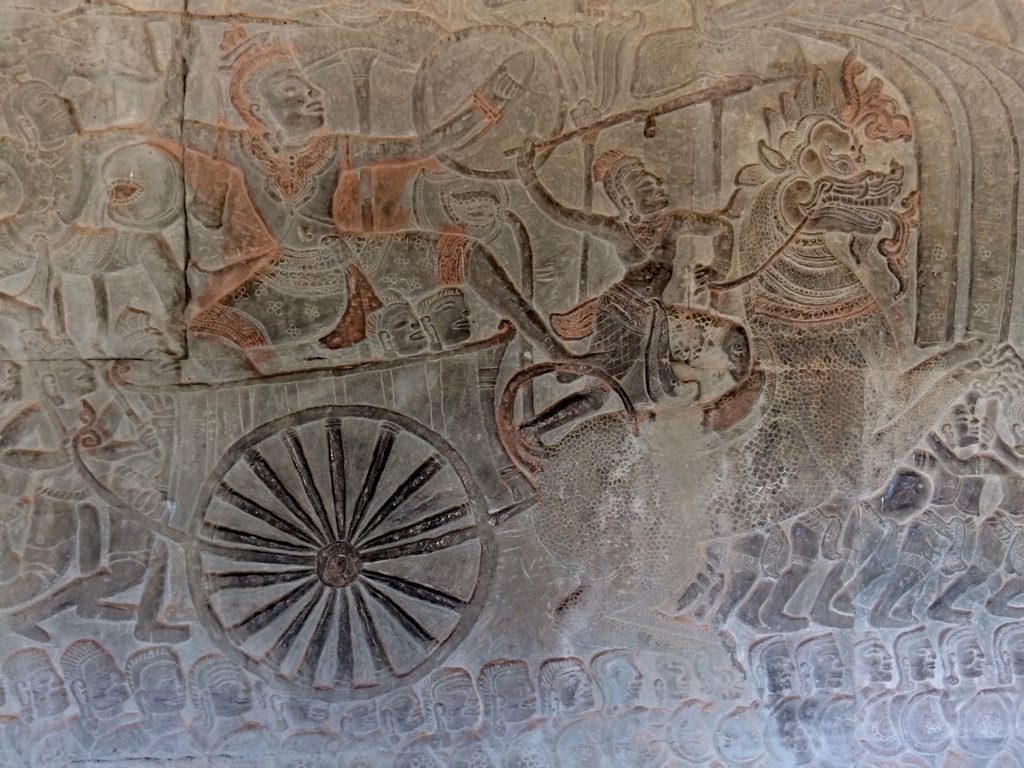
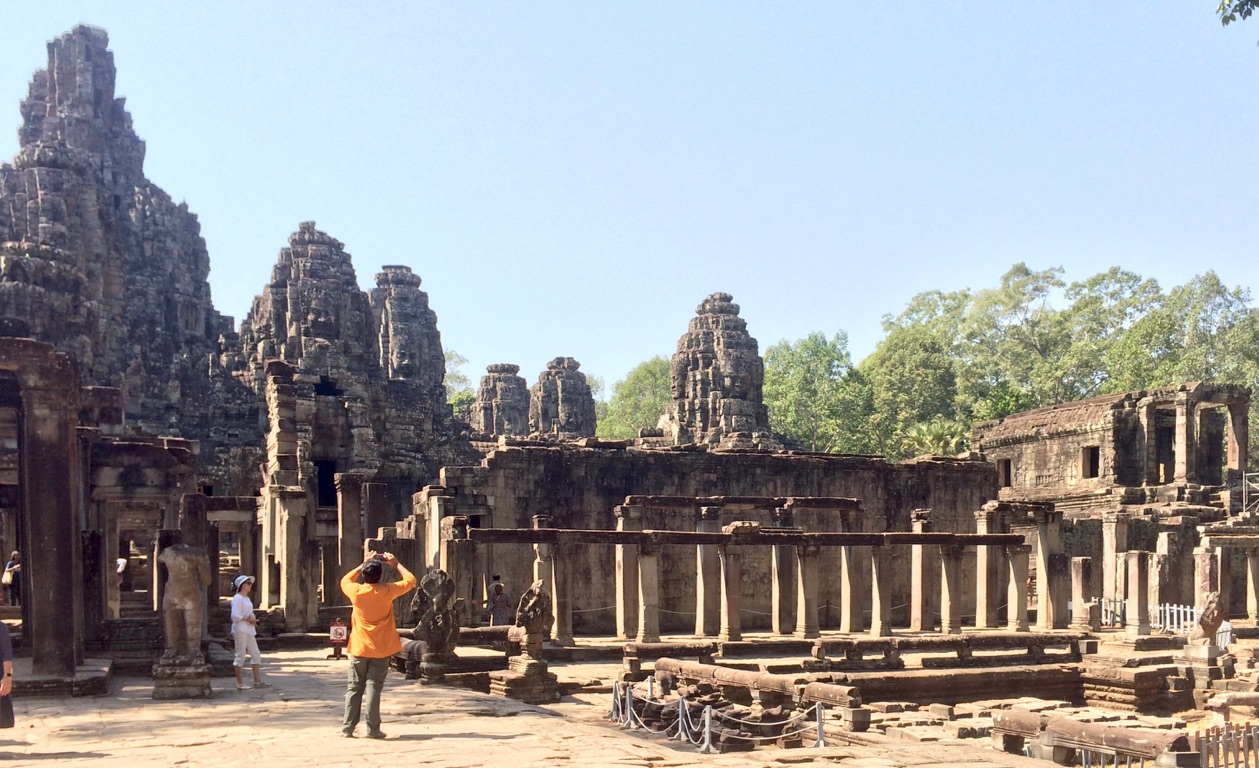
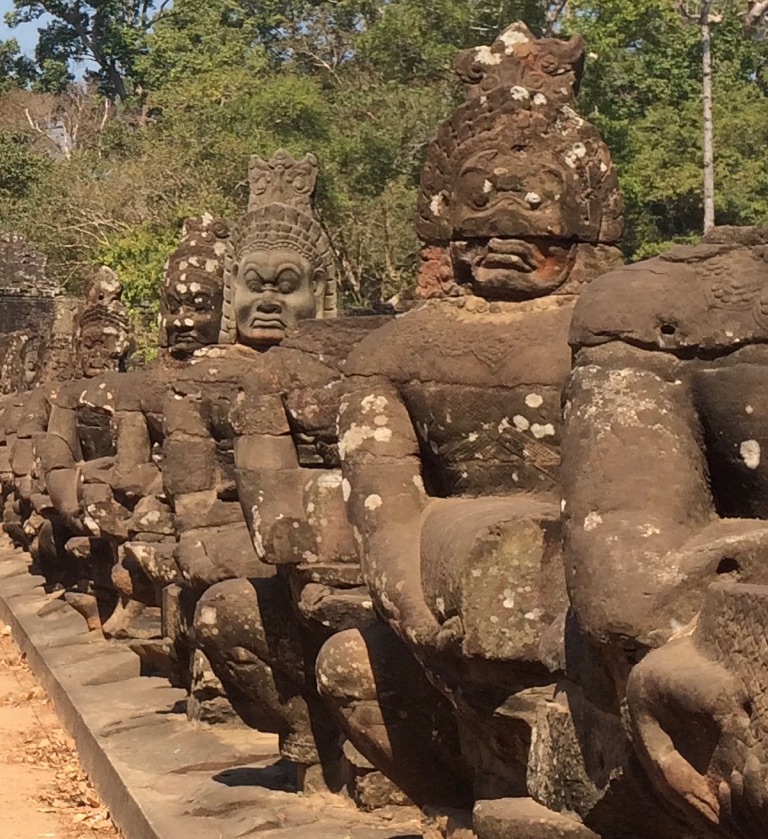
Guardians of the bridge access...

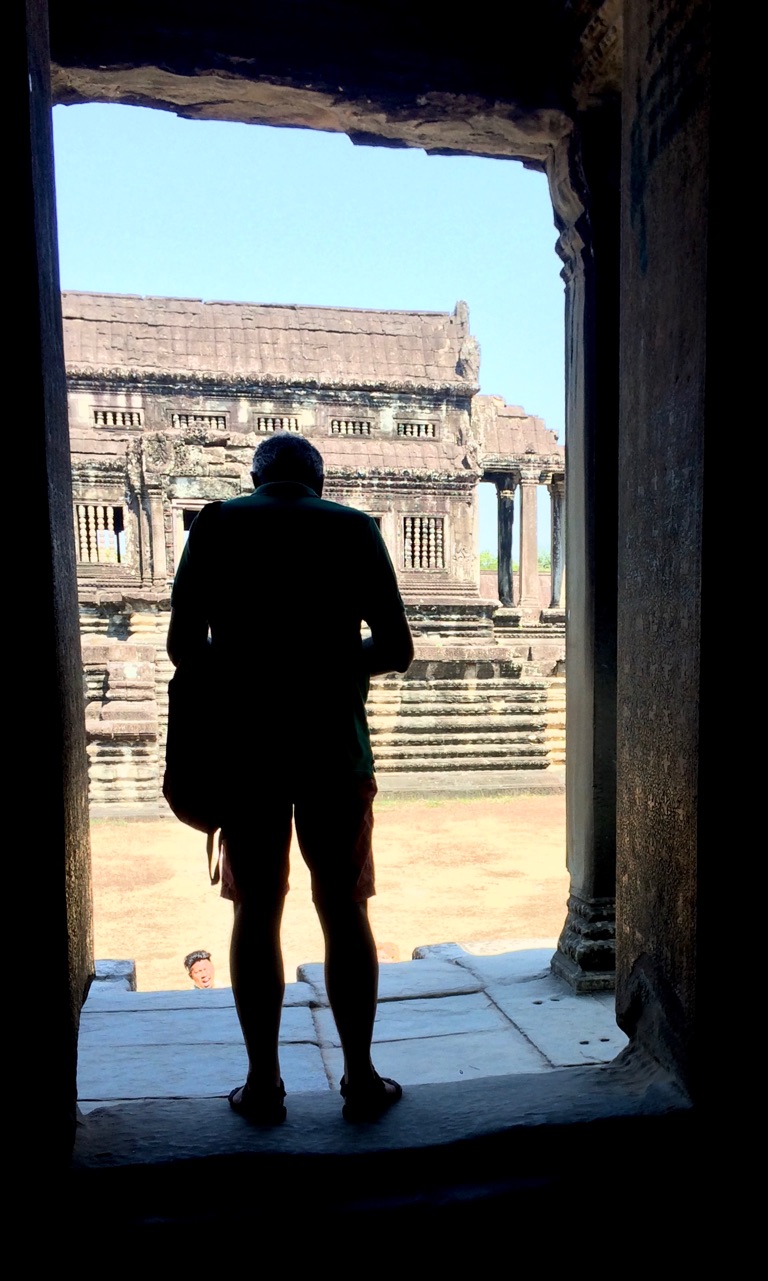
Just an interesting silhouette...
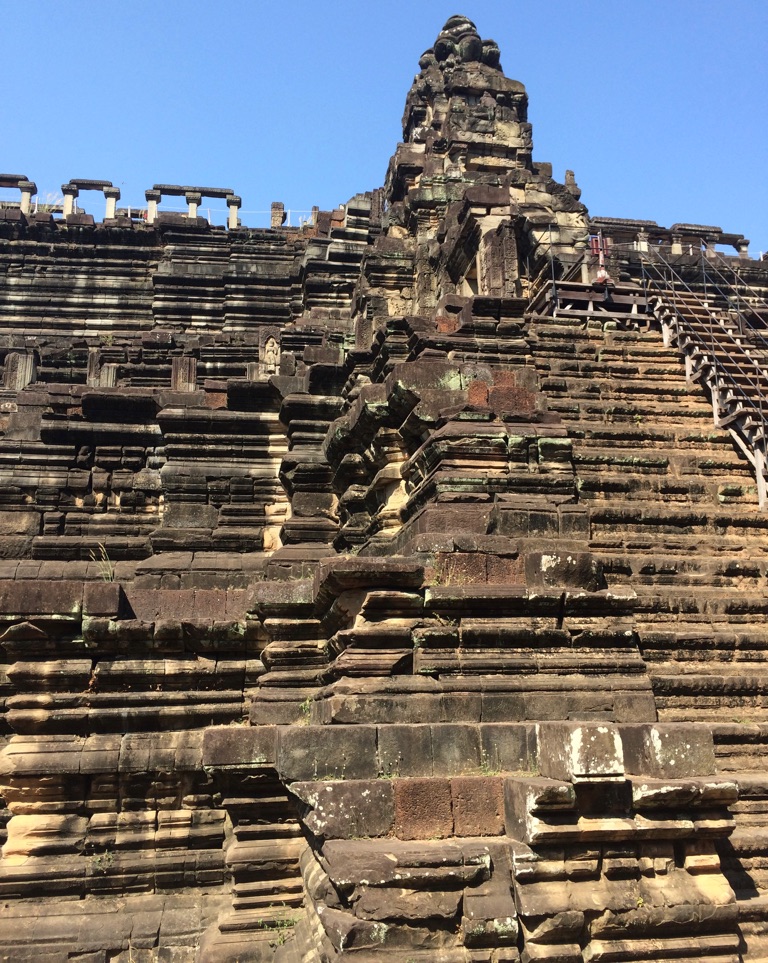
And only the first day of temple hopping...
To show the beauty and grandeur of Angkor Wat, I ‘stole’ a photograph from the internet - the main temple at sunset!

Still among the ruins...
2nd day of archeological discoveries - big circuit today and, to beat the heat, we arranged for an 8:30 am tuk tuk pick-up. I actually enjoyed this group of temples even more than the day before - the sites were more accessible and manageable and there were far less crowds. We purchased a 3-day pass (62 USD) - the passes are checked by security at every access point.
Cambodian citizens have free access to all historical sites, entry is only charged to foreign visitors. \240I really like this concept! This principle is consistent in all countries we have visited - for museums, temples, etc. \240Cambodians are enormously proud of the Angkor Wat temples - even the despicable Khmer Rouge military refrained from destroying the temples.
We drove by tuk tuk to each of the sites. \240Our driver told us what to look for and how long to expect to spend at each one. He asked us the same question every time we returned to the tuk tuk, “you like, you enjoy?”
We did indeed. Touring the sites is not for the faint of heart - clambering around in these temples - heat, dust, treacherously irregular footing and very steep steps. \240However, to walk in the footsteps of such an ancient, skilled and artistic civilization is just awe-inspiring.
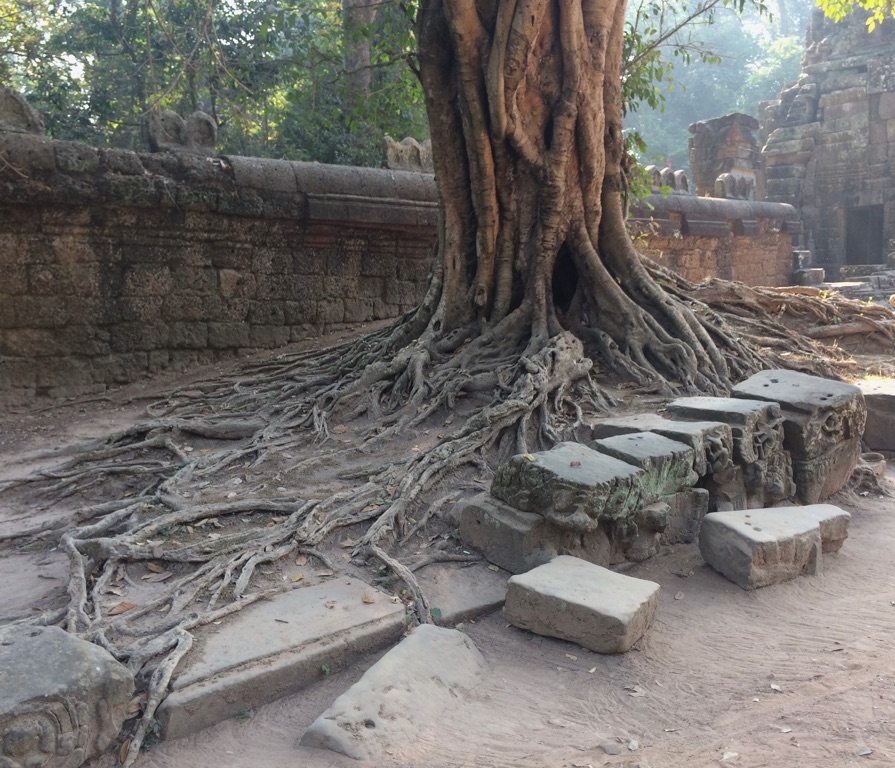
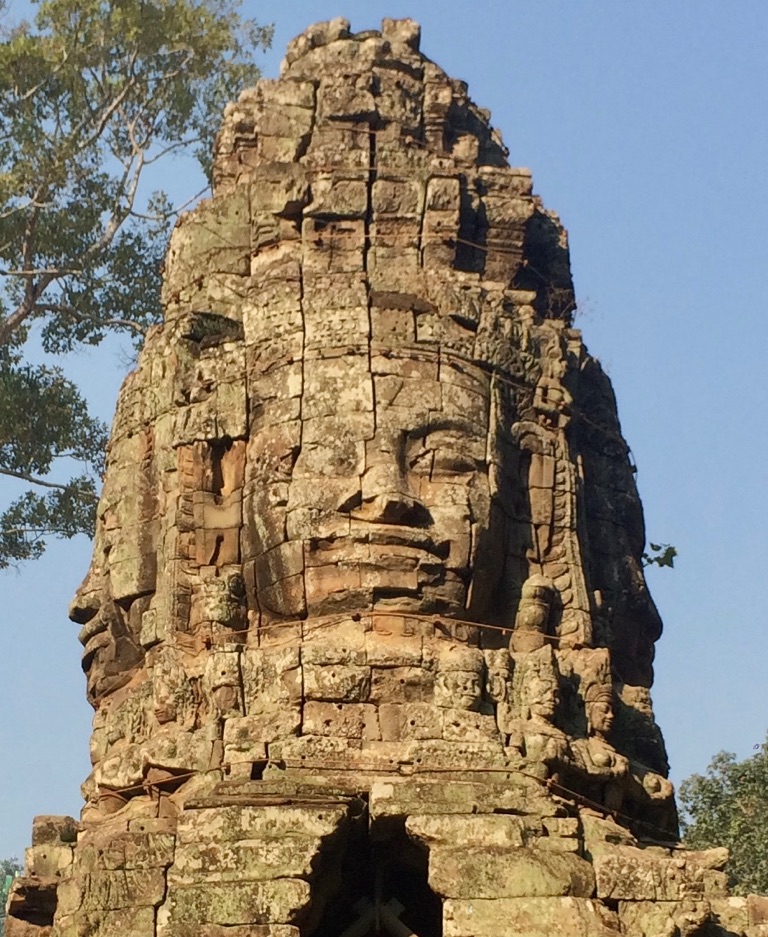

I loved the infiltration of the temples by the trees and the jungle - stuff of fairy tales and lost civilizations...

Ta Prohm, I think, my favourite... (and the one of movie fame)
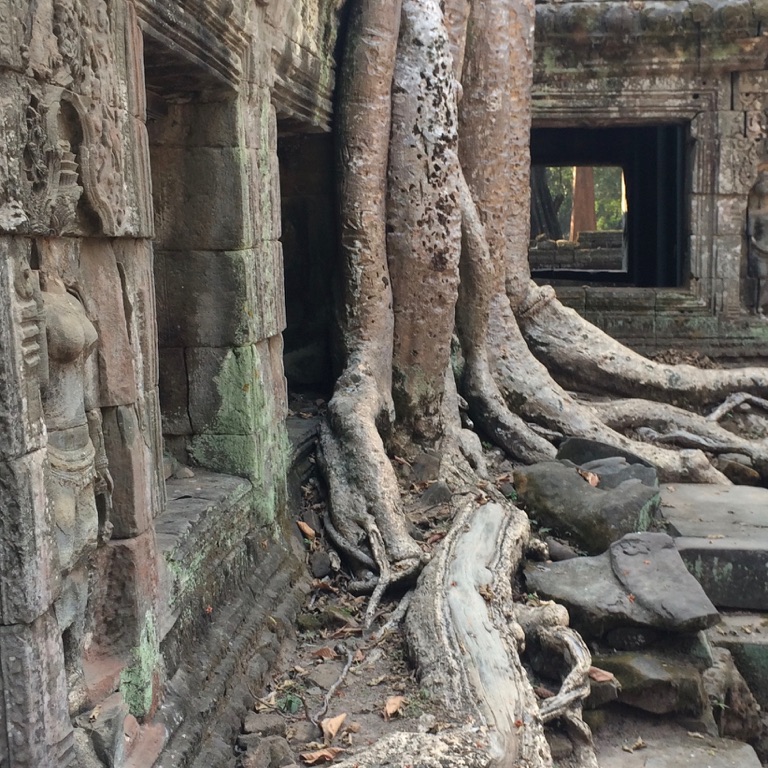
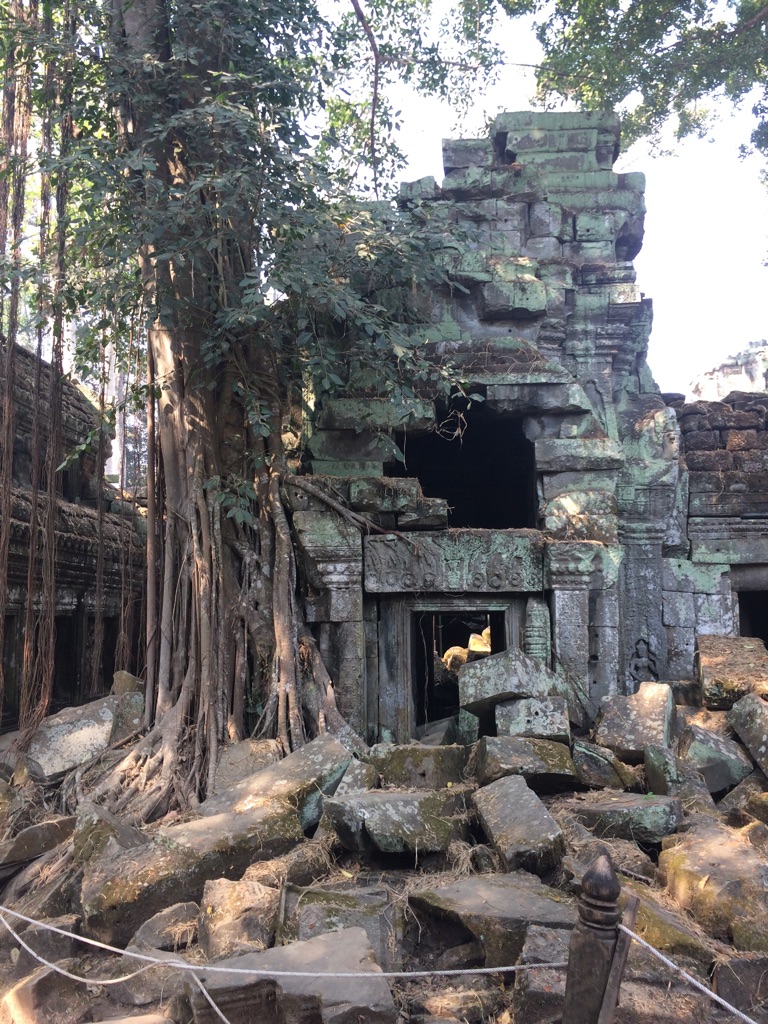
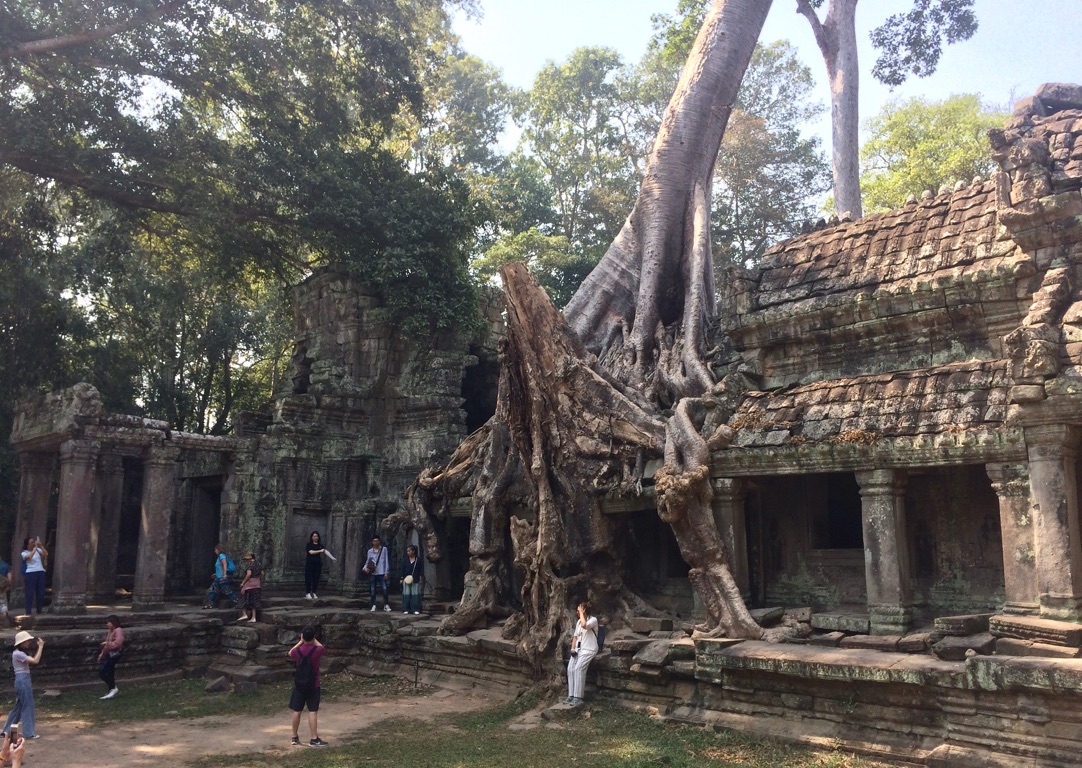

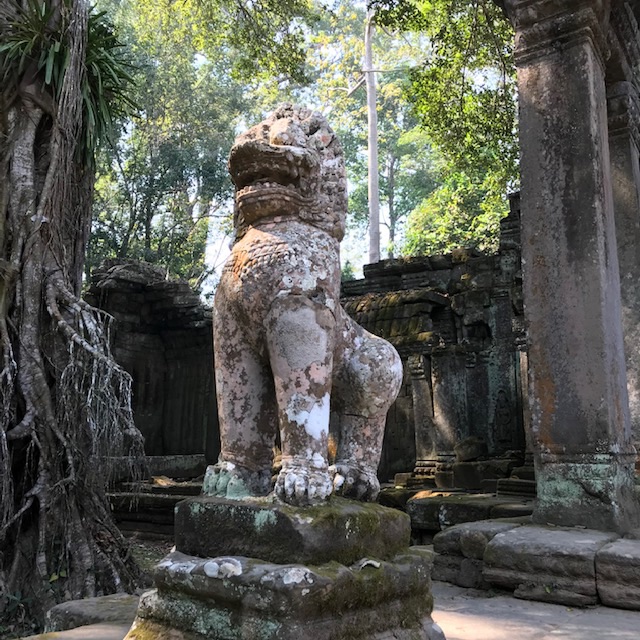
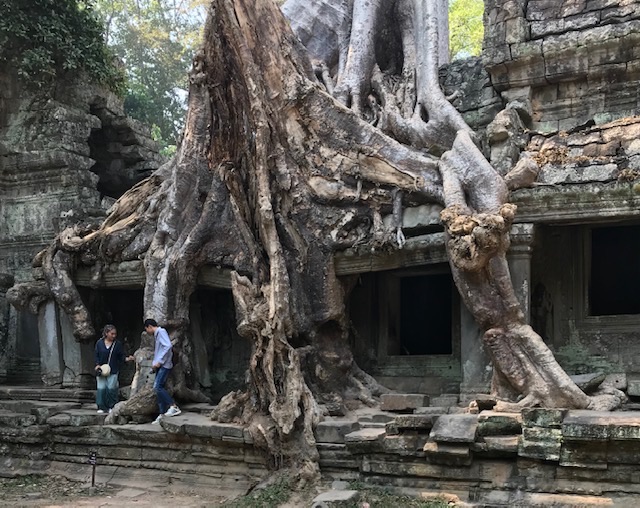
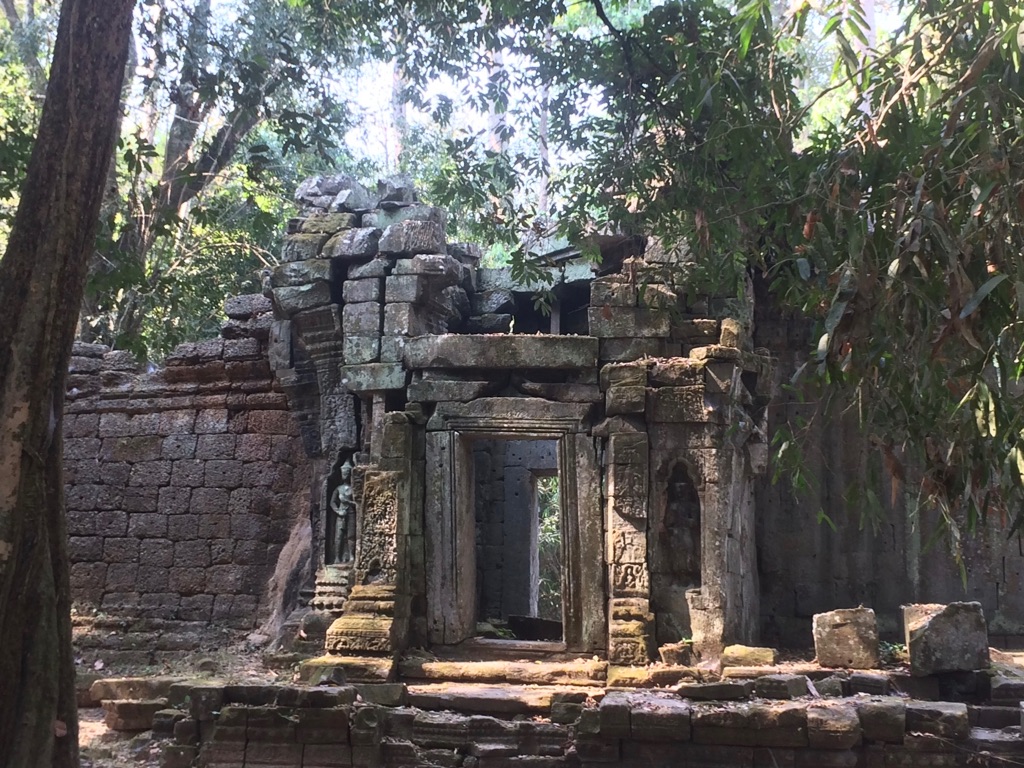

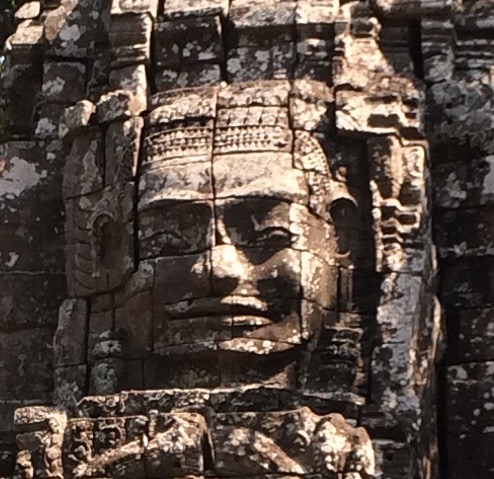
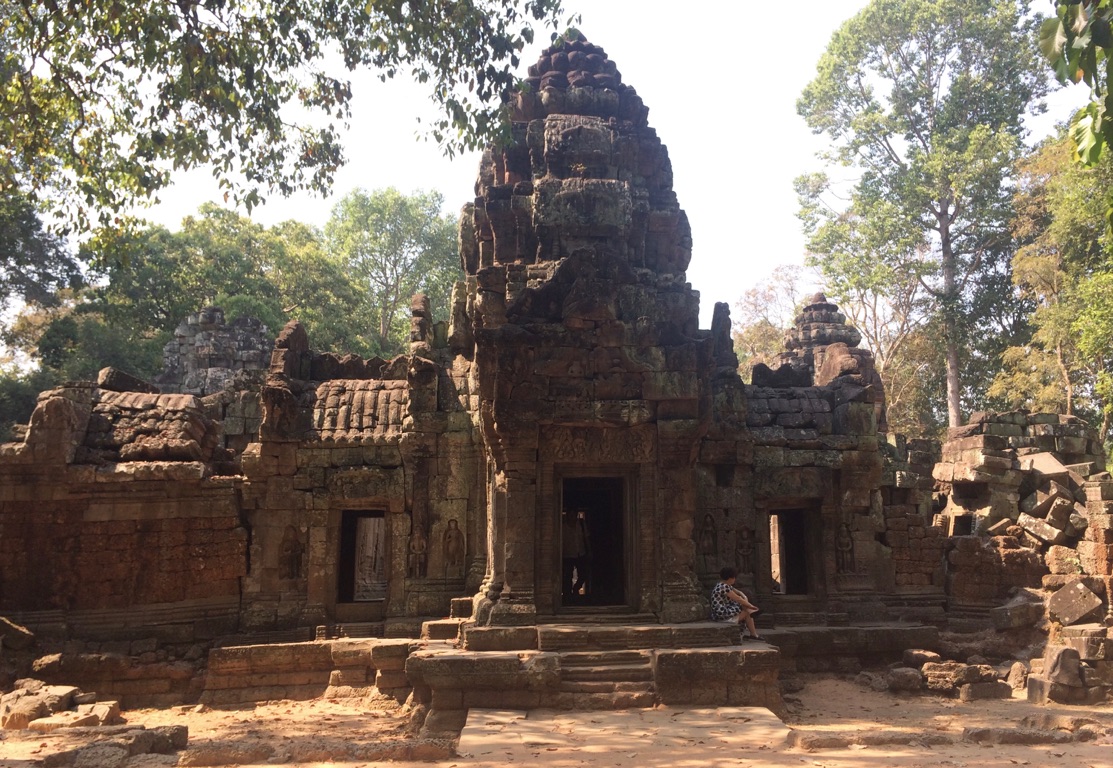



Neak Pean, a lovely small temple surrounded by water.
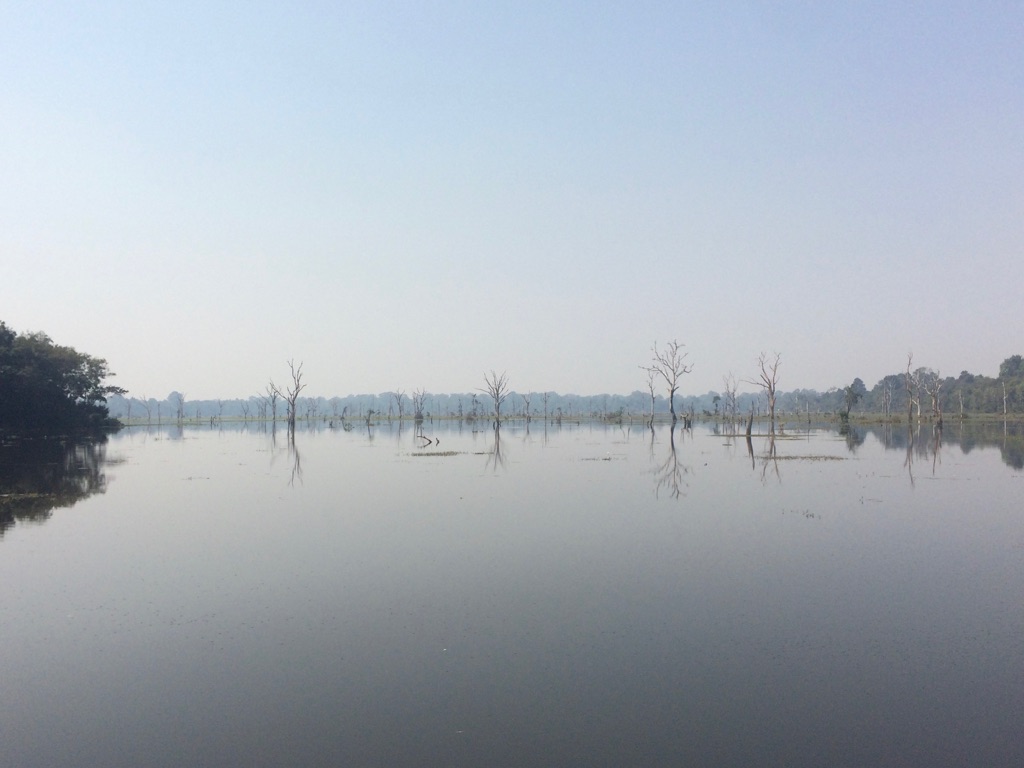
And some strange and eerie trees...
We returned to the hotel and repaired to the swimming pool - completely exhausted and hot!
After a very tasty cold beer - Angkor beer, our new favourite, we cleaned ourselves up and went out for dinner to the trendy and busy downtown area.
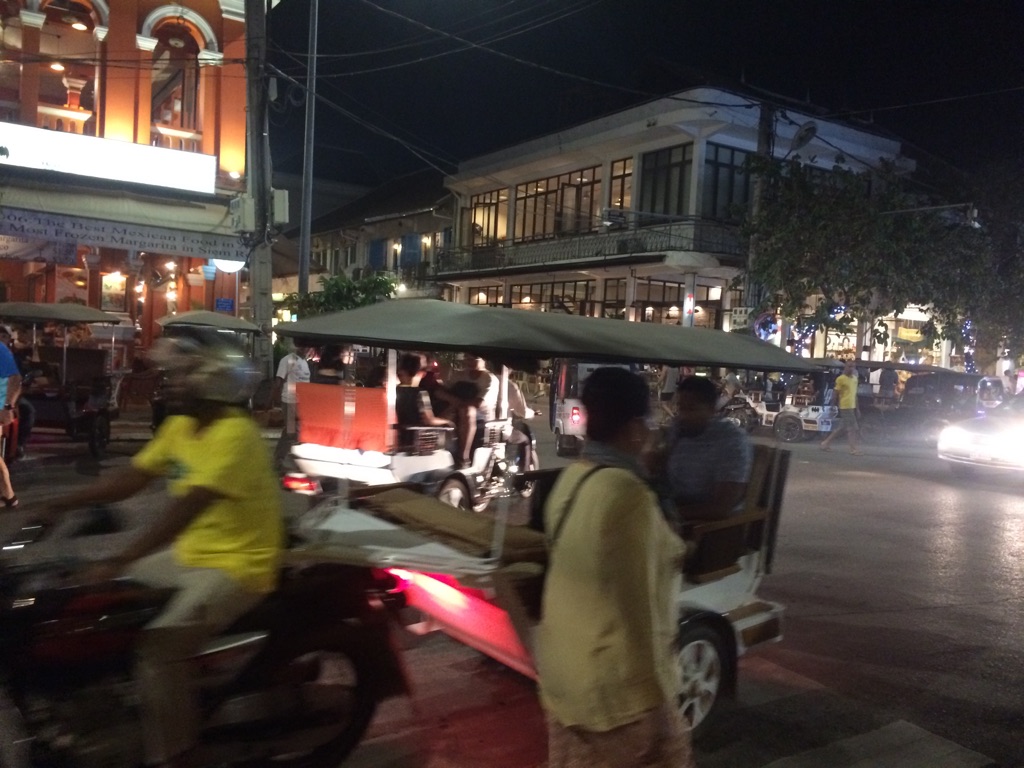
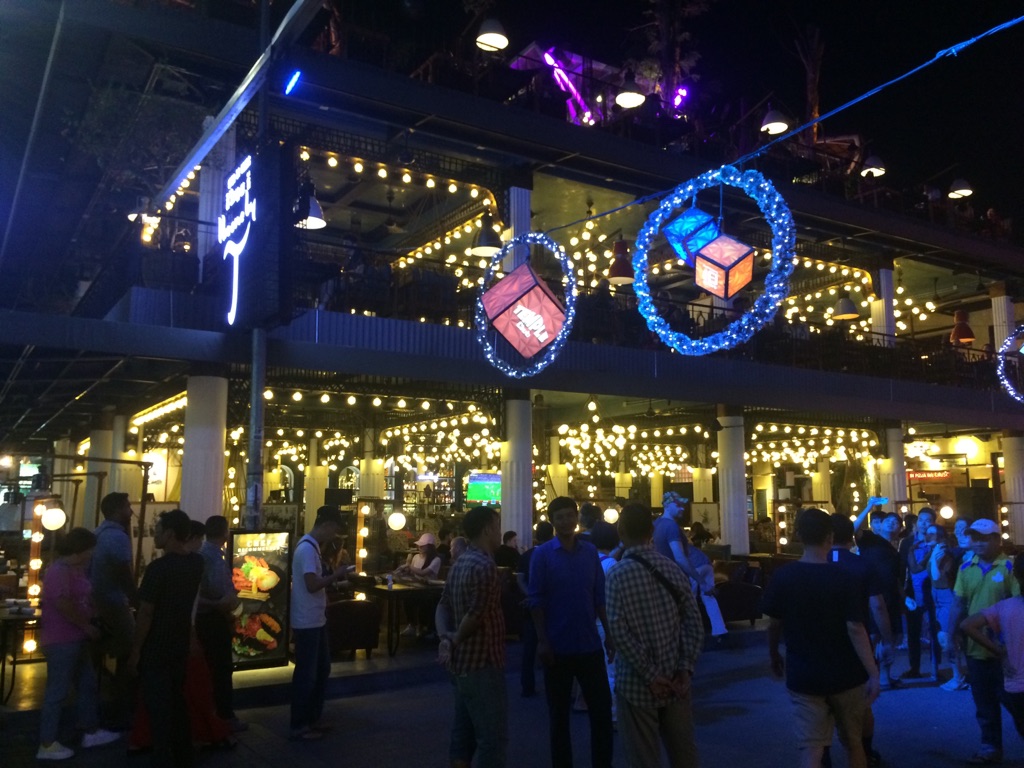
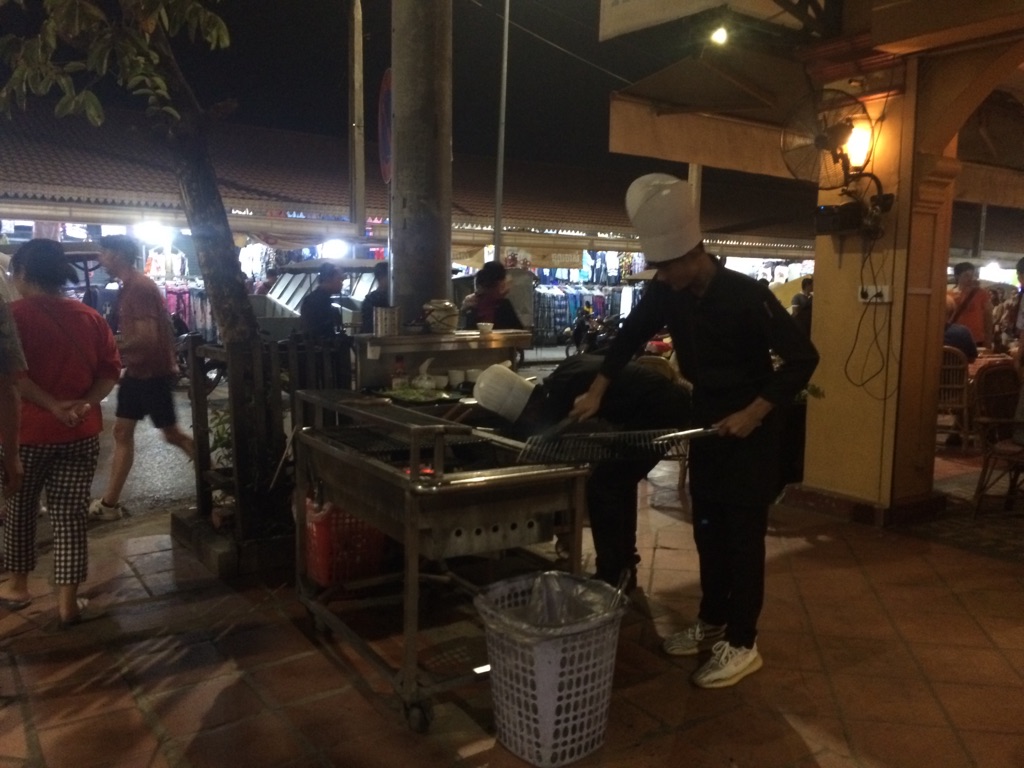
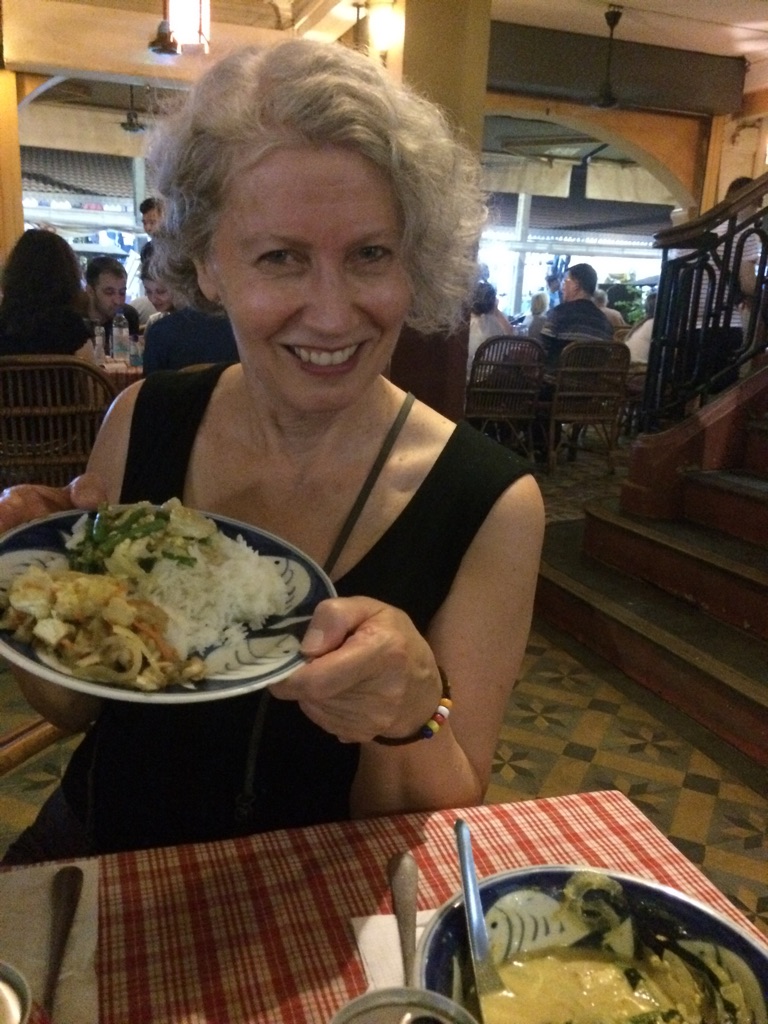
Kate showing off our meal...fish amok - a Cambodian specialty cooked in coconut milk.
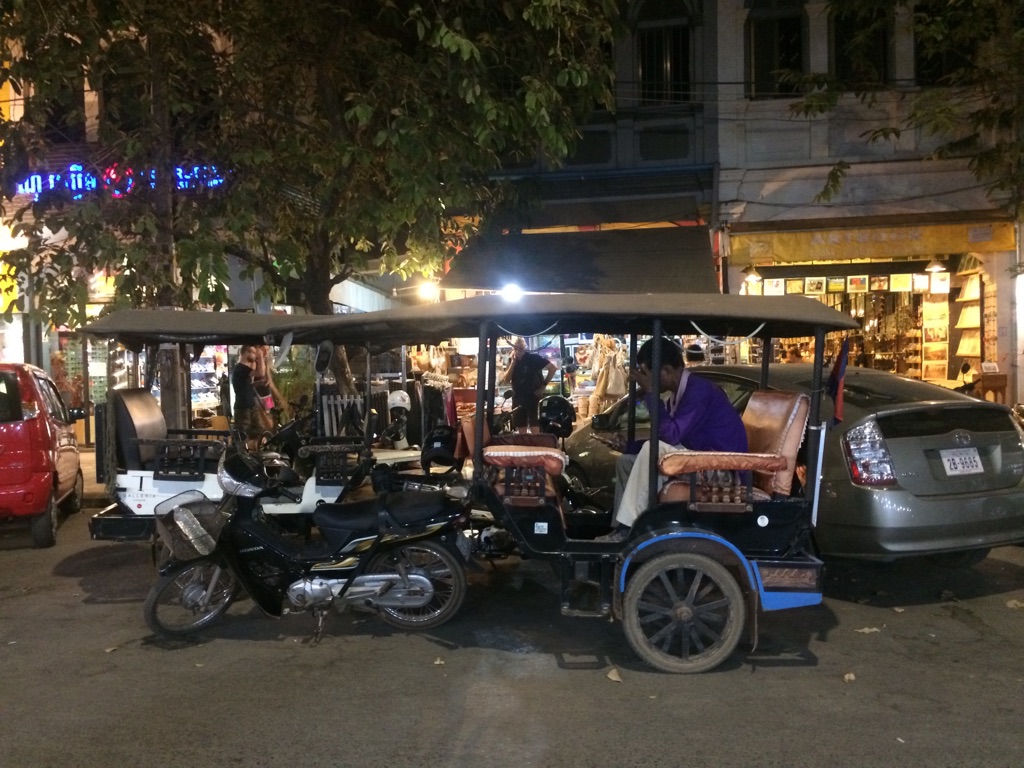
Tuk tuks at the ready...

And, of course, always the market...
Doing basically nothing
Just a rest day - the heat and sunshine are exhausting, so we ventured out just down the street to arrange our bus tickets for January 20th for travel to Phnom Penh.
Then we hung around the swimming pool for the rest of the day and felt very thankful not to be shovelling snow and scraping ice from our windshields!
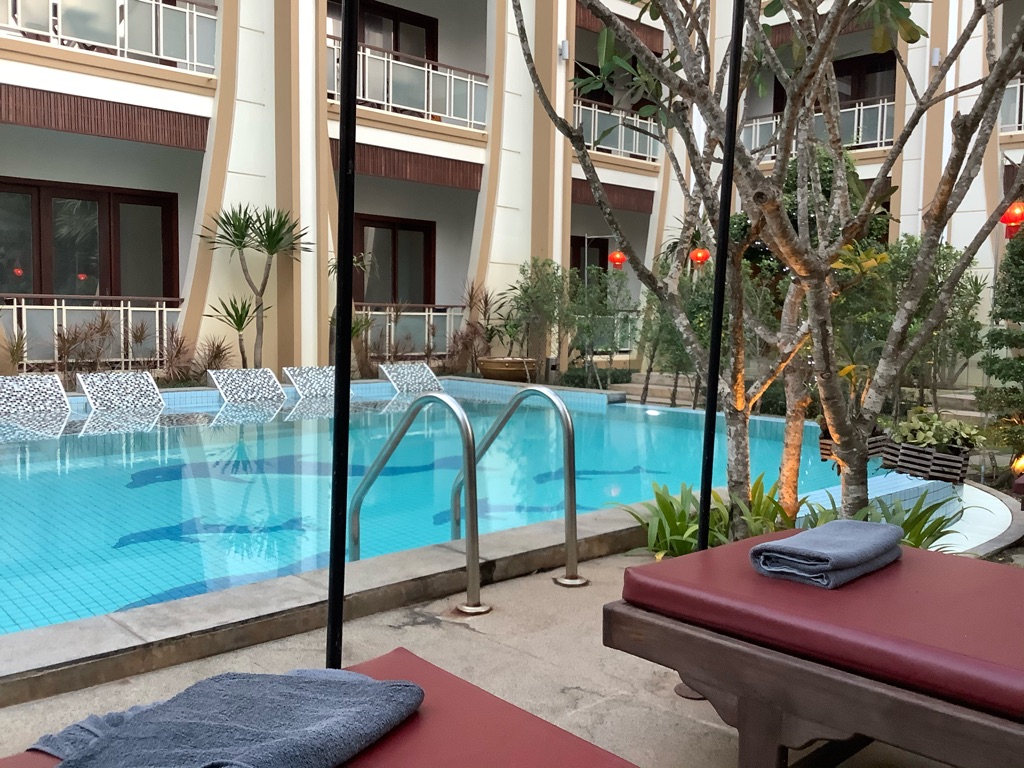
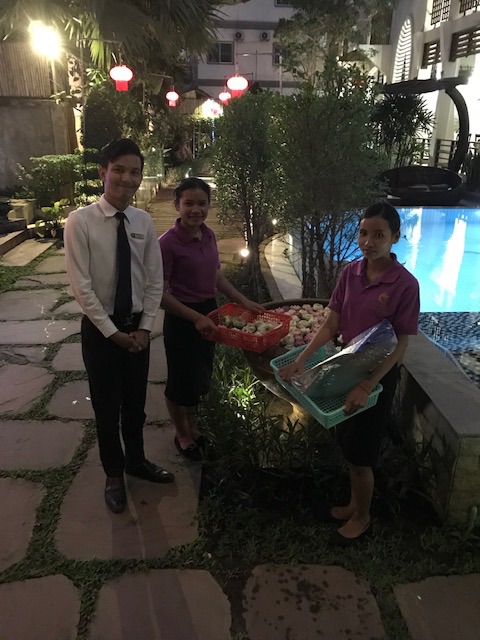
Our lovely hotel staff...

The staff informing us of our beer tab!
A day of contrasts
3rd day of the temples and we ventured farther afield. The route by tuk tuk was all countryside, through small villages; we saw schools, houses, and all manner of enterprise on the side of the road. \240And some military personnel. It was a fascinating drive - I imagined myself as a photojournalist on assignment!
First stop was Banteay Srei, the citadel of women, otherwise known as the ‘lady temple’ or the ‘pink temple’. The temple is located about 25 km north of the main temples and is dedicated to the Hindu god, Shiva. Built in the 10th century, the limestone has a pink hue and everything is on a miniature scale. The design and carvings are beautifully intricate and almost all are dedicated to female figures. When we arrived there were many tour groups and it was challenging to move around the sites. But, it was lovely in both accessible scale and colour.
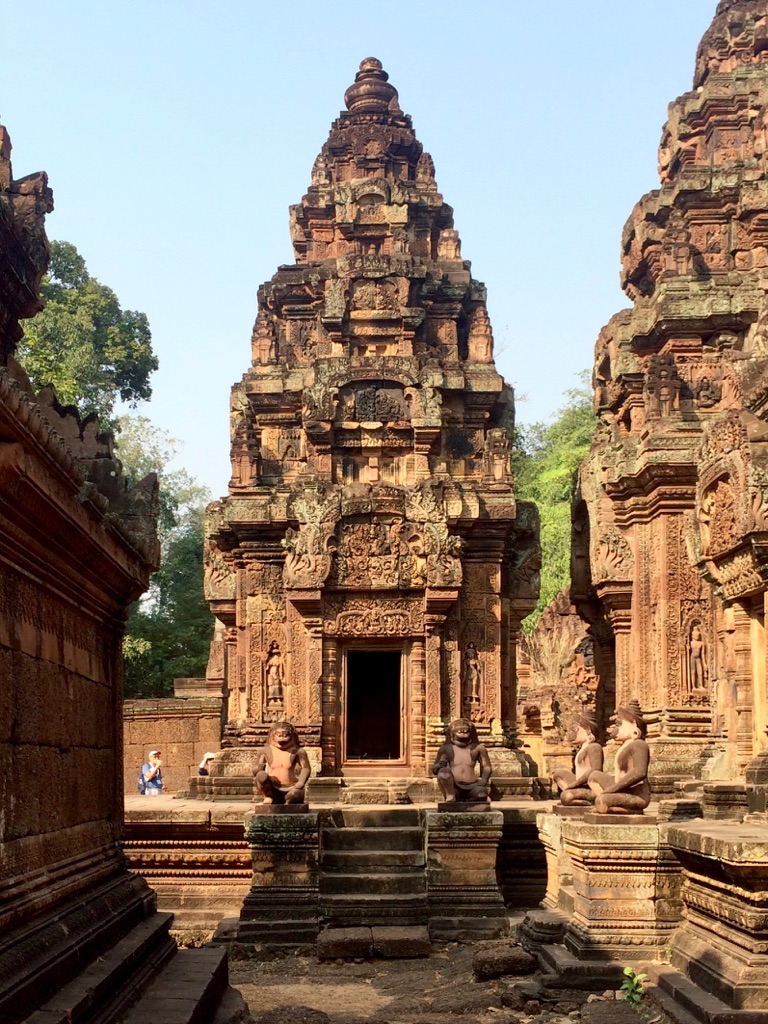
The stone carvings are considered the most beautifully preserved and intricate of any of the Cambodian temples.
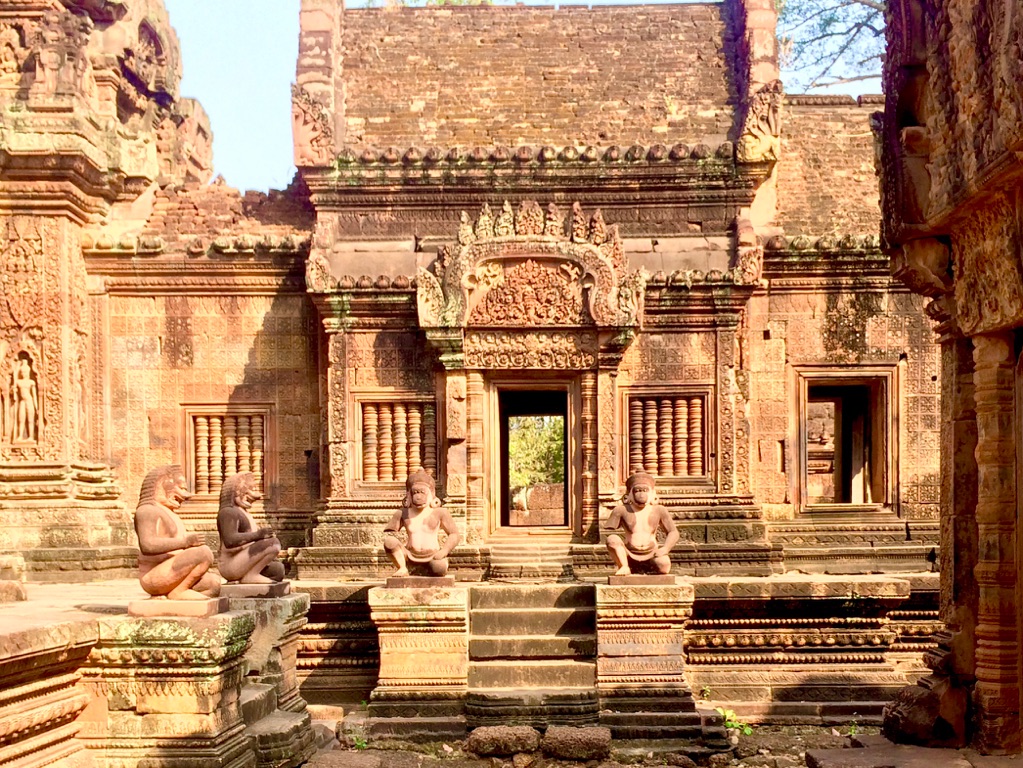
The four monkeys guarding the temple...
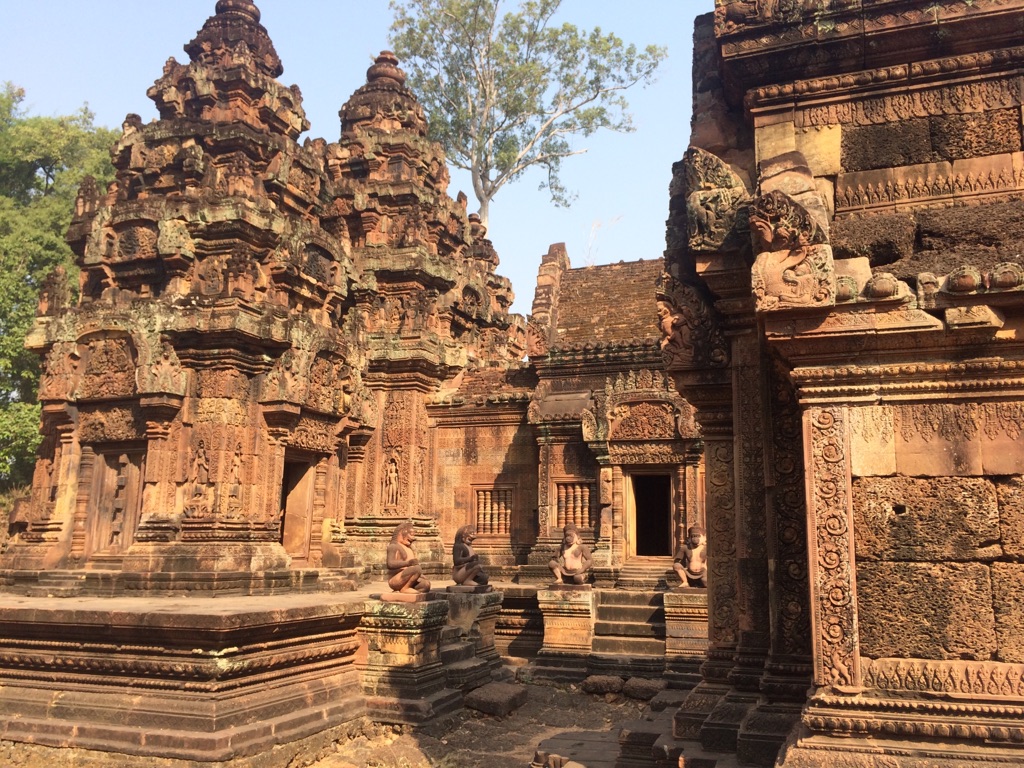
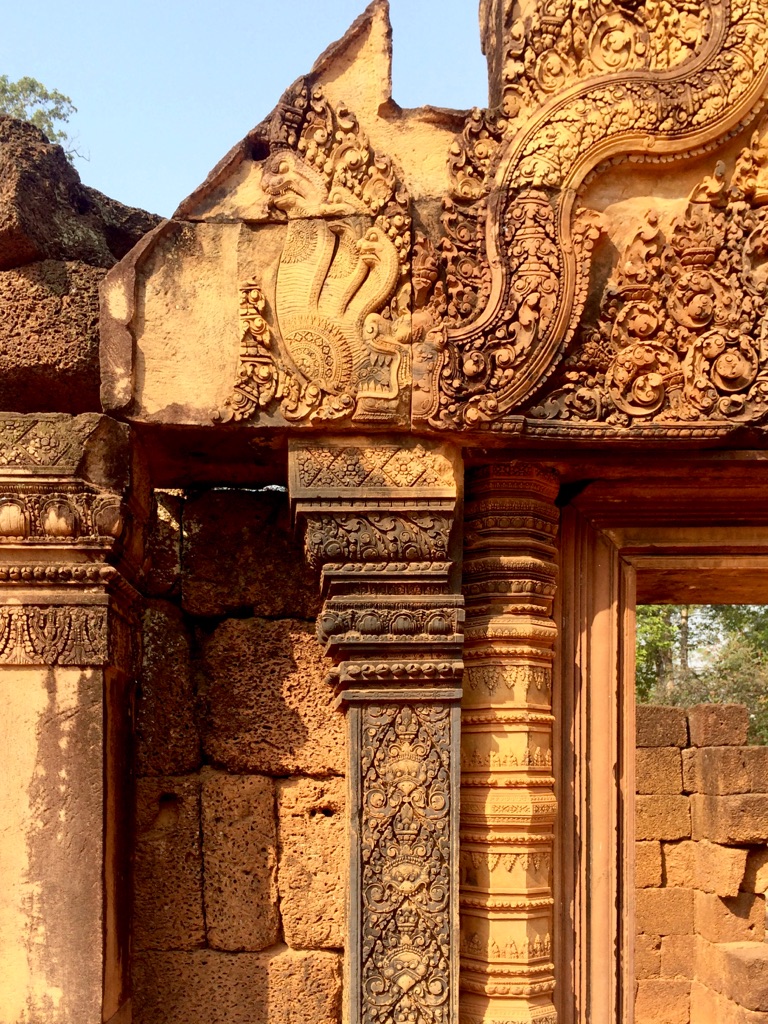
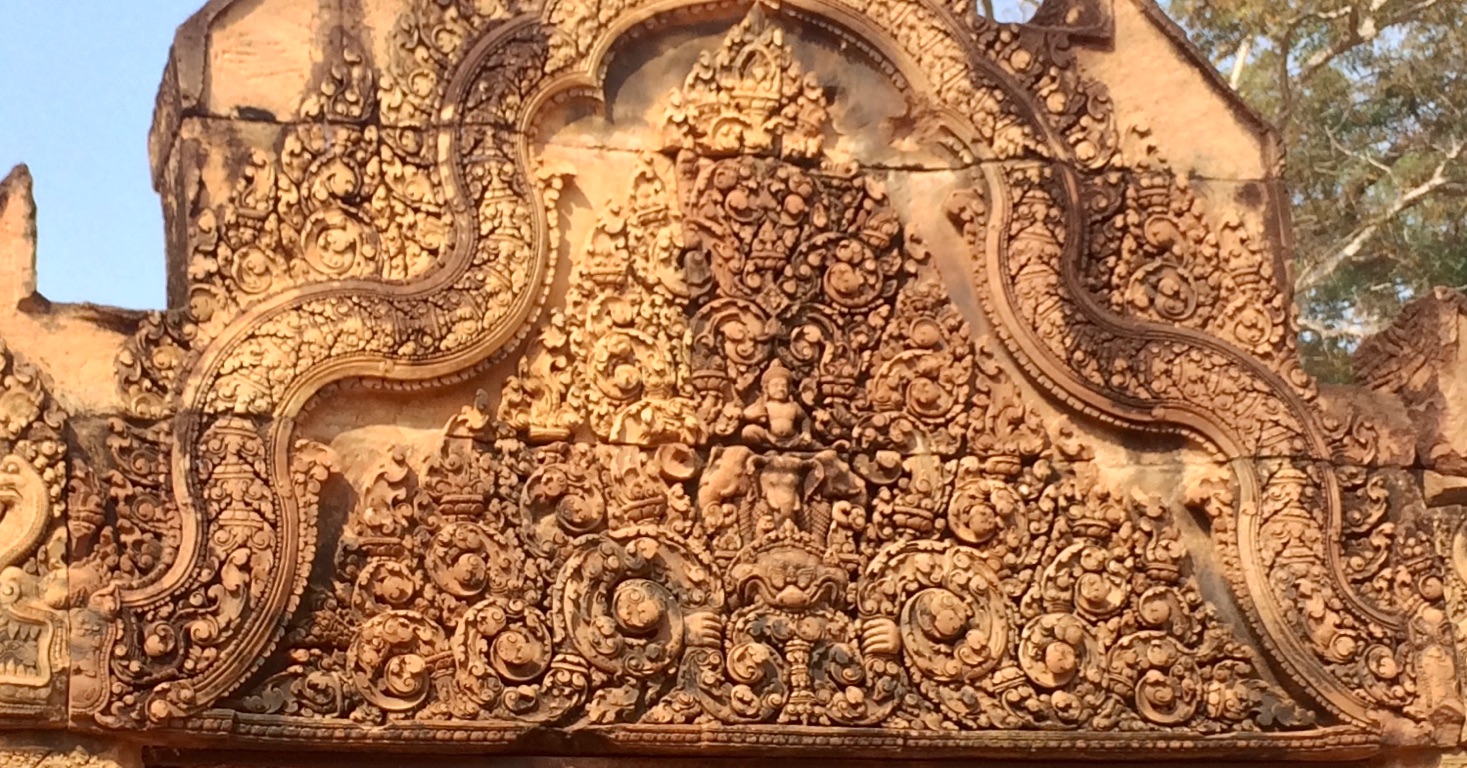
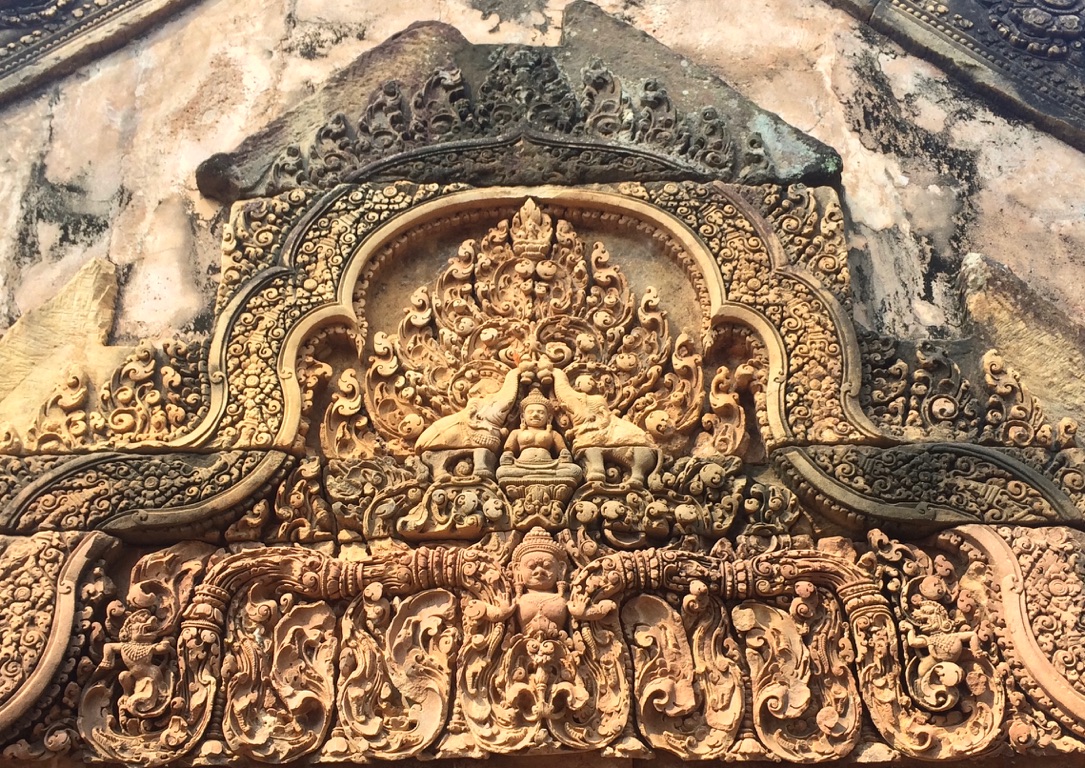
From the beauty of Banteay Srei we travelled to the Landmines Museum. This is a small museum operated by Aki Ra, a former child soldier.
Walking through the museum caused us both to weap for the injustices visited on the Cambodian people by the United States during the Vietnam war and by the Khmer Rouge during the genocidal regime of Pol Pot. From 1965-1973, 540,000 tons of bombs were dropped on Cambodia by the U.S., over 60,000 bombing missions, and killing 600,000 civilians.
Unexploded landmines remain in the countryside today - along the roadsides and in fields - estimated to be numbered between 3-6 million.
One can know these facts intellectually, but to actually see the museum provoked feelings in both of us of such sadness, anger and despair.
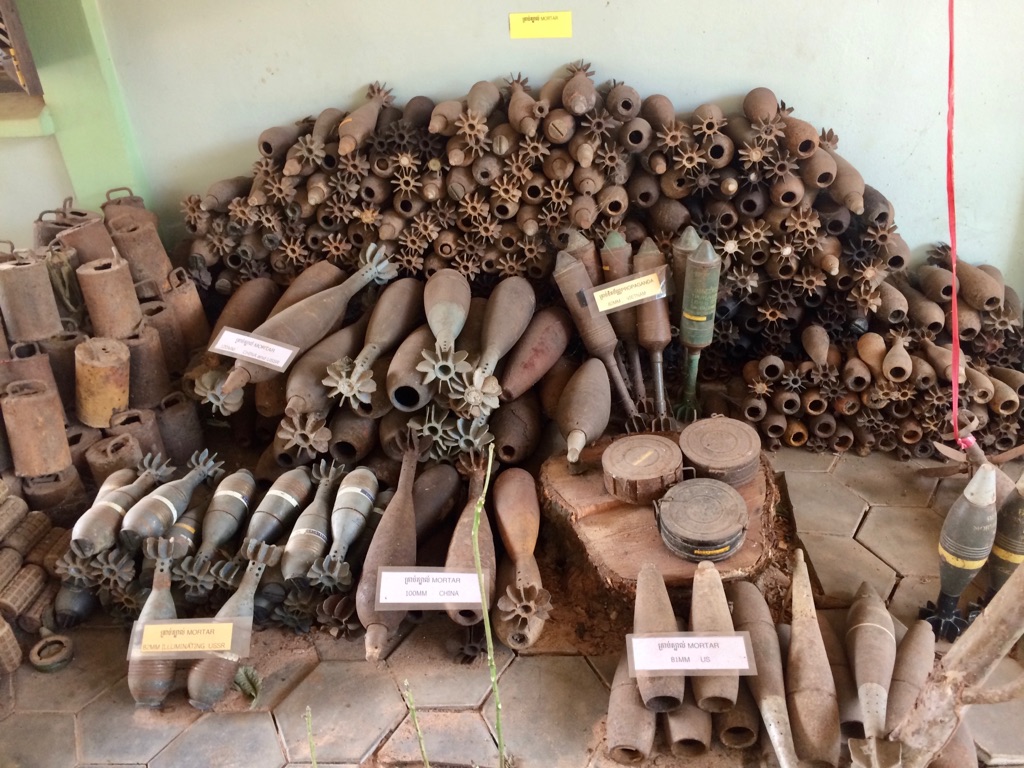
Actual landmines - all defused!
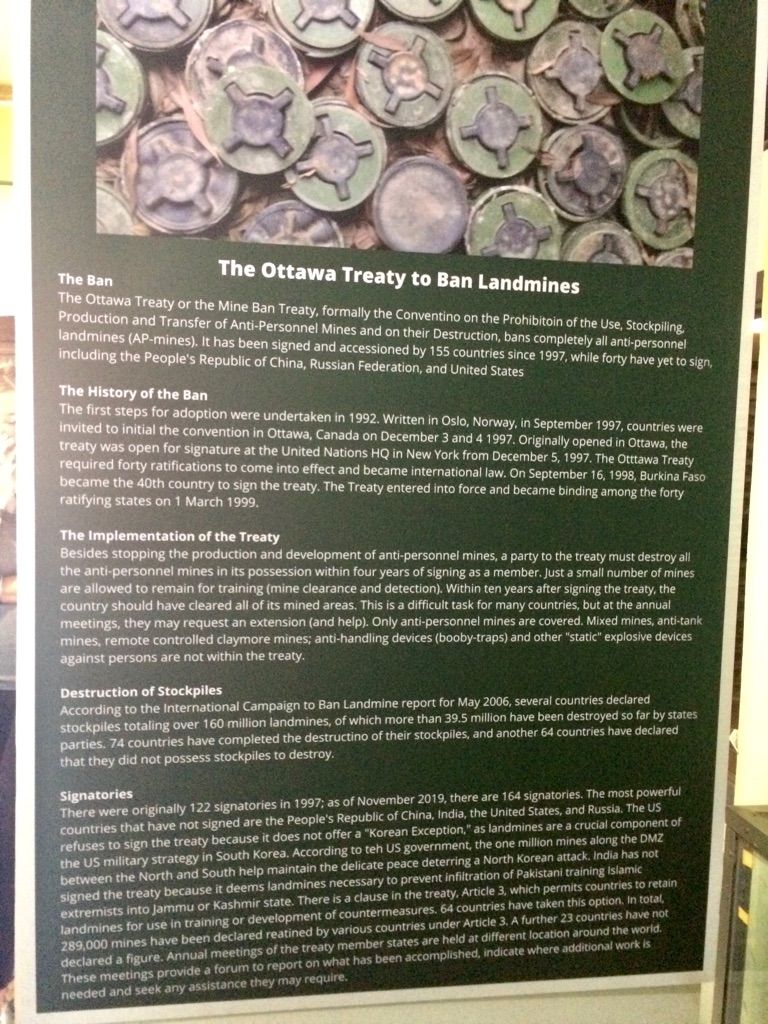
164 countries have signed this declaration. \240China, India, Russia and the United States are notable in that they have not signed.
To lift our spirits, our tuk tuk driver suggested a trip to the Banteay Srey Butterfly Centre. This was located only a few minutes from the Landmine Museum but is an oasis of sheer beauty and charm.
The Centre is a tropical garden, on the side of the road, which houses about 1000 butterflies under a netted canopy. The young man who runs the centre gave us a tour of the butterfly nursery where there are cages for the eggs to develop through the stages of pupae, caterpillar, chrysalis and eventually emerge as butterflies.
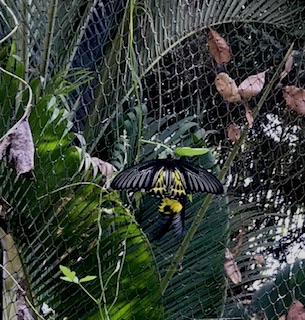
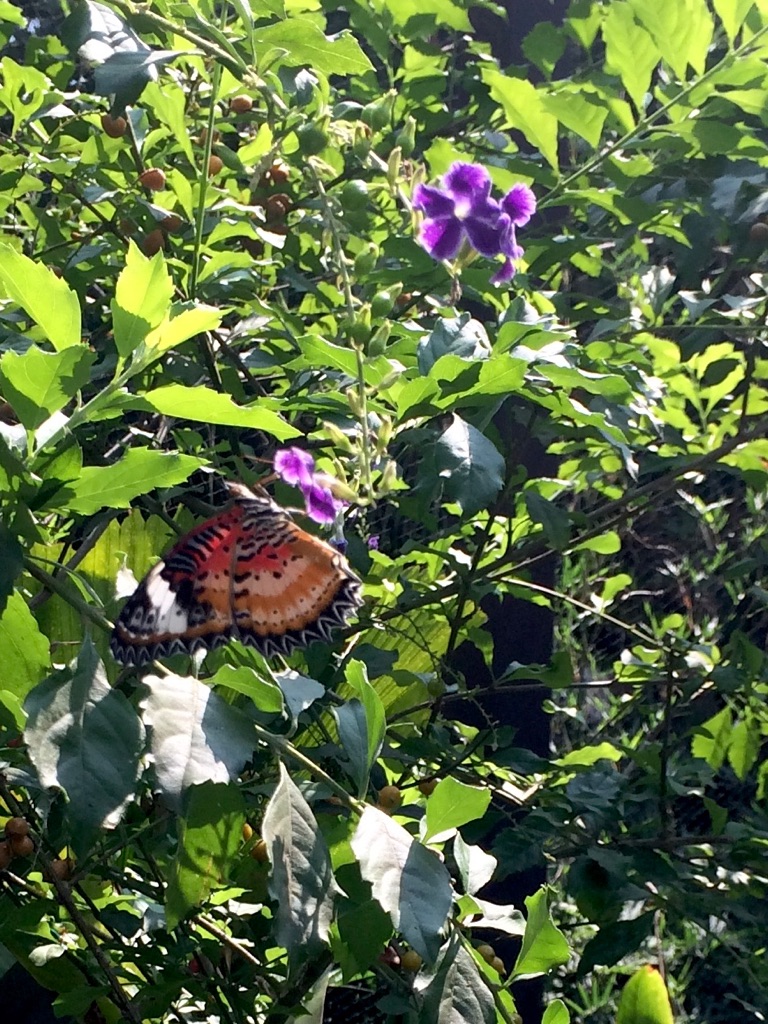
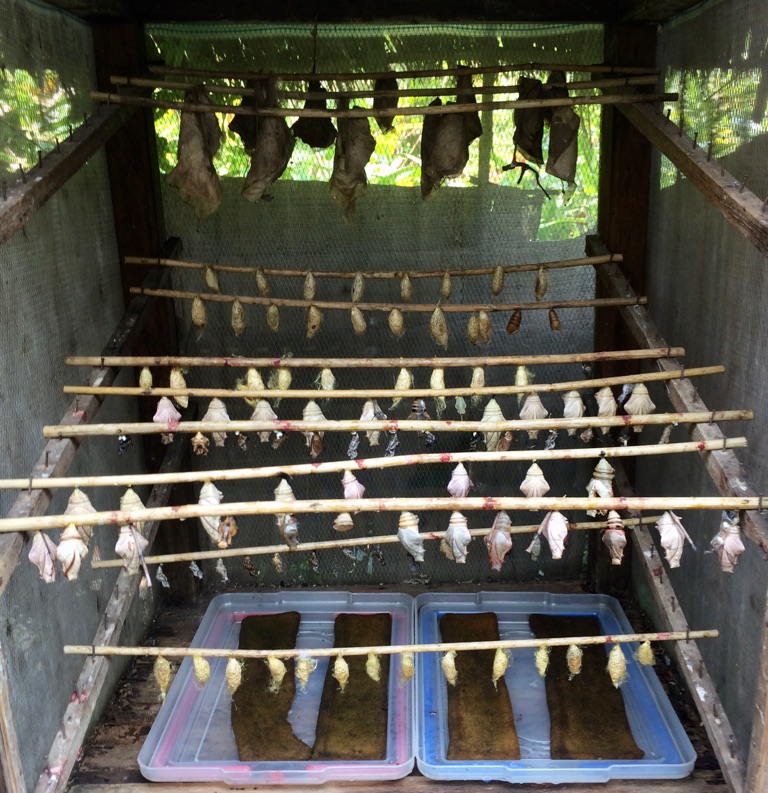
Pupae hotel...
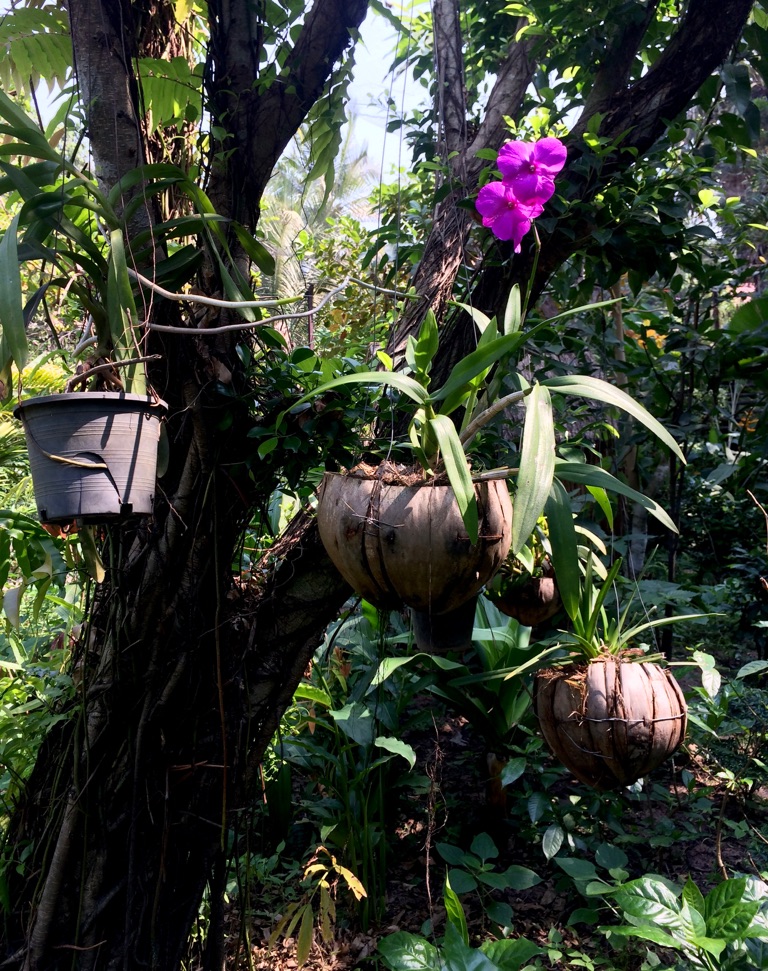
And the beautiful tropical paradise where they live...
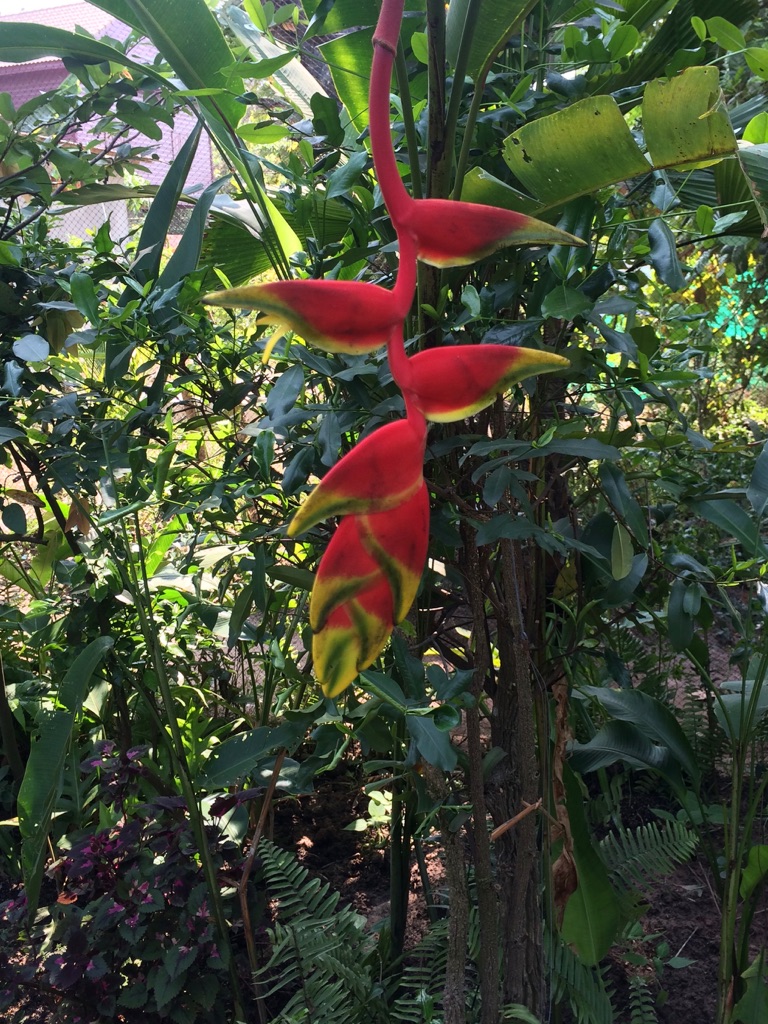
And then, we visited a cane sugar factory - on the side of the road, \240Cambodia-style...and tasted it...
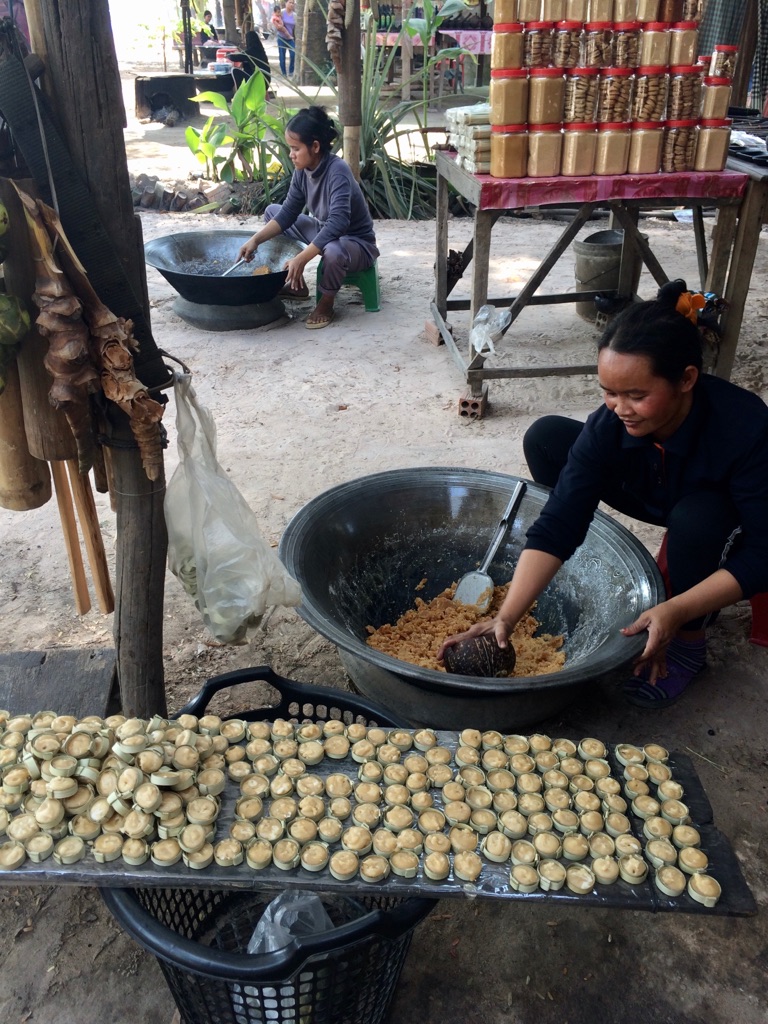
Then the final temple on the route home, Banteay Kdai.
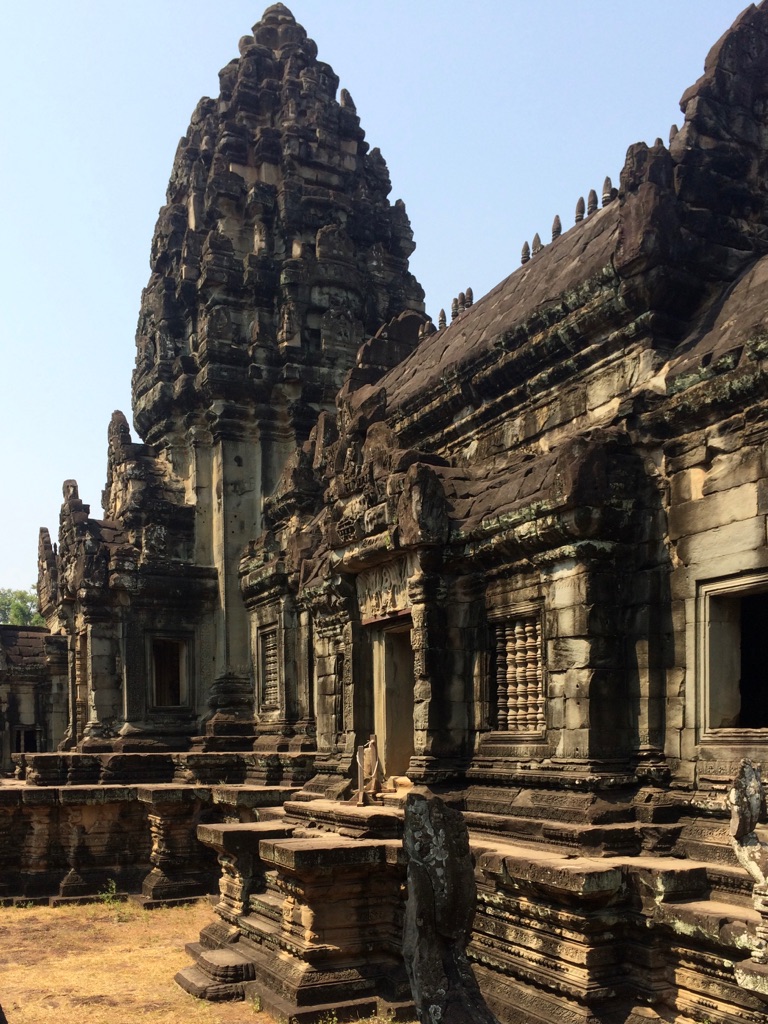

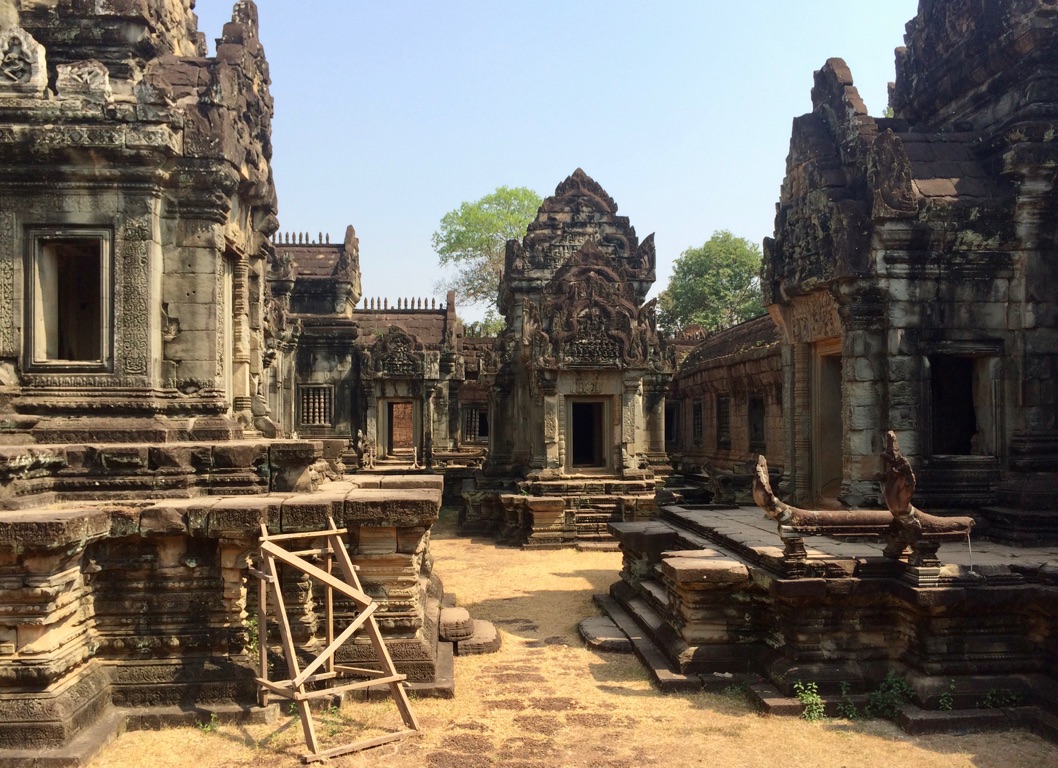
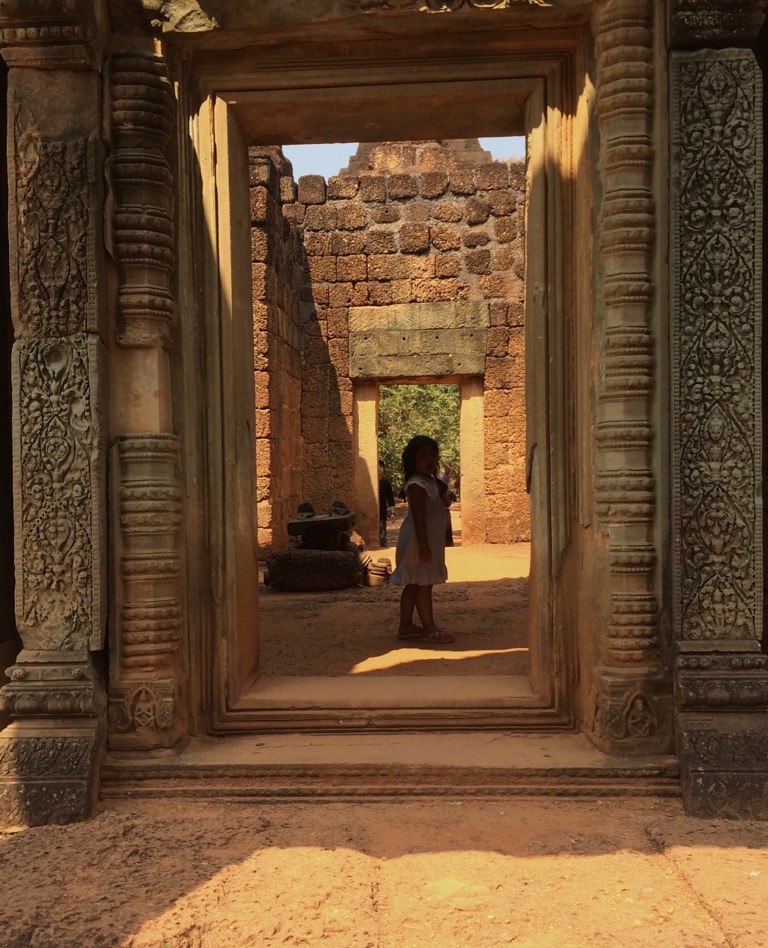
This was now the end of our Angkor Wat temples tour but not the end of our day of contrasts.
We finished with a performance by the Phare Circus. \240A visual arts school was opened in 1994 for children who were living in refugee camps along the border with Thailand, after the Cambodian civil war, and who were traumatized. The school continues today (now 1200 students) and educates and trains poor and under-privileged children. \240A touring troupe travels throughout the world. It was a fantastic and uplifting show!
An inspiring way to end a very full day!
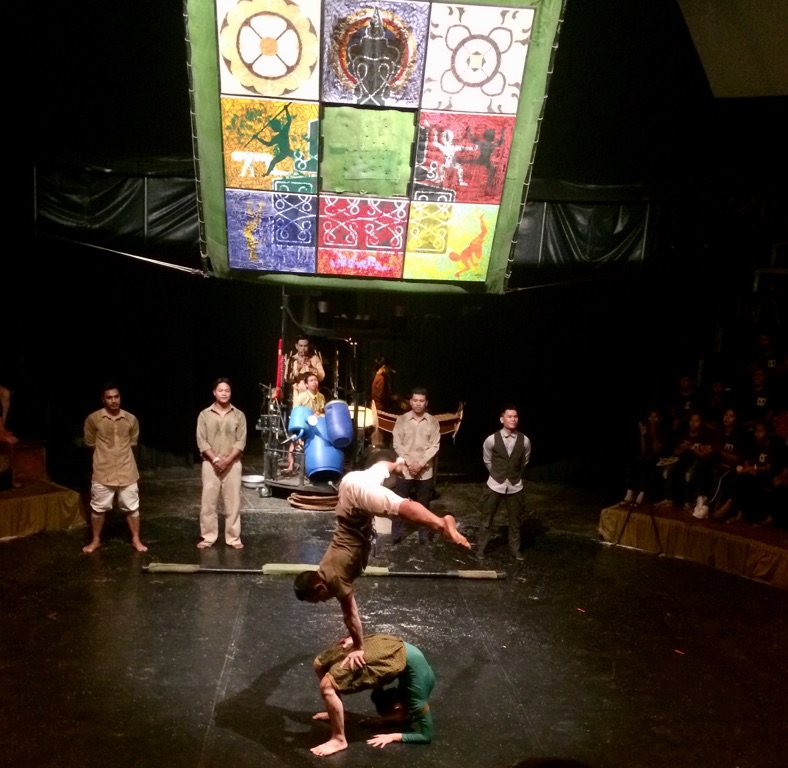
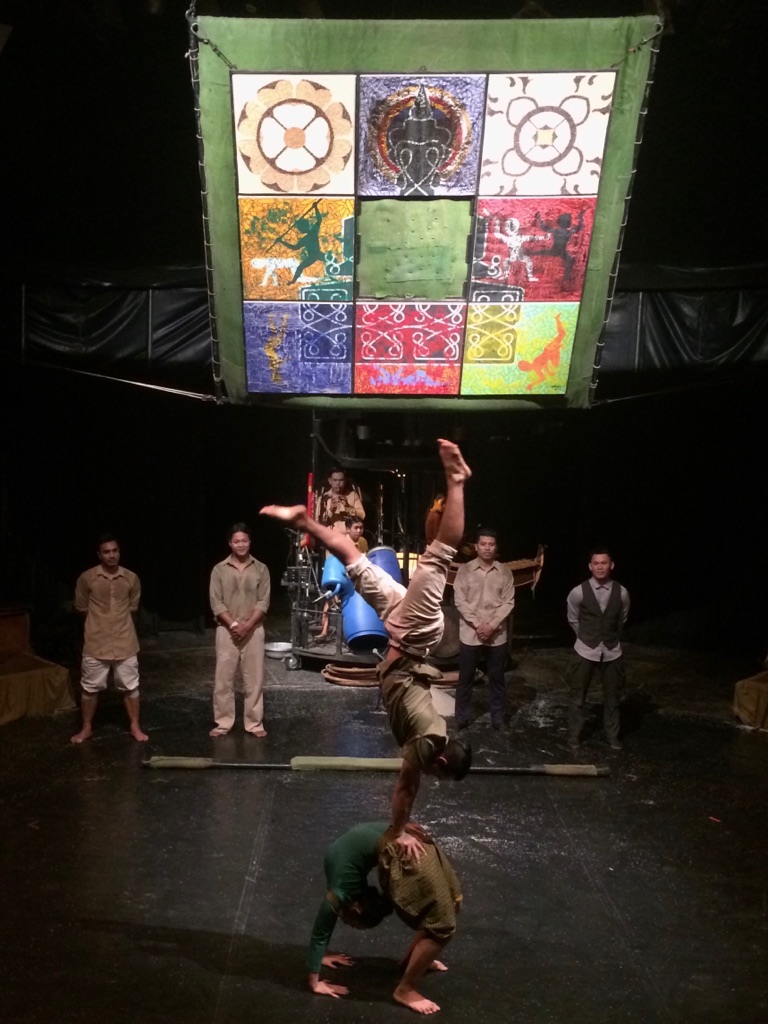
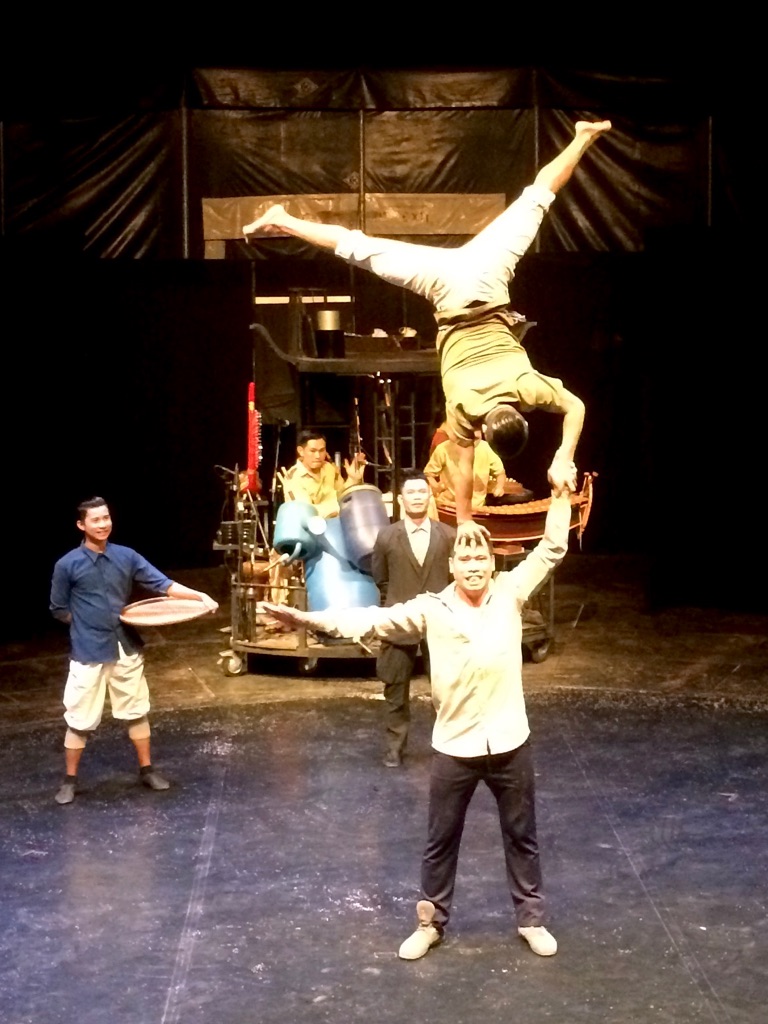
Organizing and rest day
Today was a rest, pool and packing up day - and that is all we did. We were to be up at 6:00 am to catch the bus to Phnom Penh.

Julie in despair over packing up again - our intention was minimalist travelling - where did all these things come from?
Mini bus travel to Phnom Penh
Travel to Phnom Penh was a 3-part process: tuk tuk (our hotel street was very narrow and had potholes which could rival Winnipeg) to the bus station; bus to the terminal - then board the minivan (11 passengers). \240It was a 5-hour journey with 2 stops and no communication at all from the driver. \240We stopped; he opened the door and motioned us to get out. Then some chatter among the passengers regarding how long we had and how we hoped he would wait.
Once we were back aboard, he proceeded to drive, a little too fast for my liking, down the highway with much weaving in and out of traffic. We passed through many villages, some construction and a lot of dust.
We entered the outskirts of Phnom Penh and a rough looking city it was indeed; garbage everywhere. No matter, I thought, these are the shanty town outskirts - except ... they continued all the way into the centre of town. \240Phnom Penh is the capital city of Cambodia with a population of 1.5 million people, (15.3 million people in the whole country) - there is a lot of garbage, a lot of smells and a lot of dug up sewers!
This is the first time on our trip that I considered whether we could change our itinerary and leave straight away. We arrived at the hotel - it seemed ok and has a lovely pool. Kate and I both felt fatigued and a bit discouraged.
We ate lunch by the pool and this cheered us up a bit. Kate, the eternal optimist, thought it would all be ok. I was hard to convince.
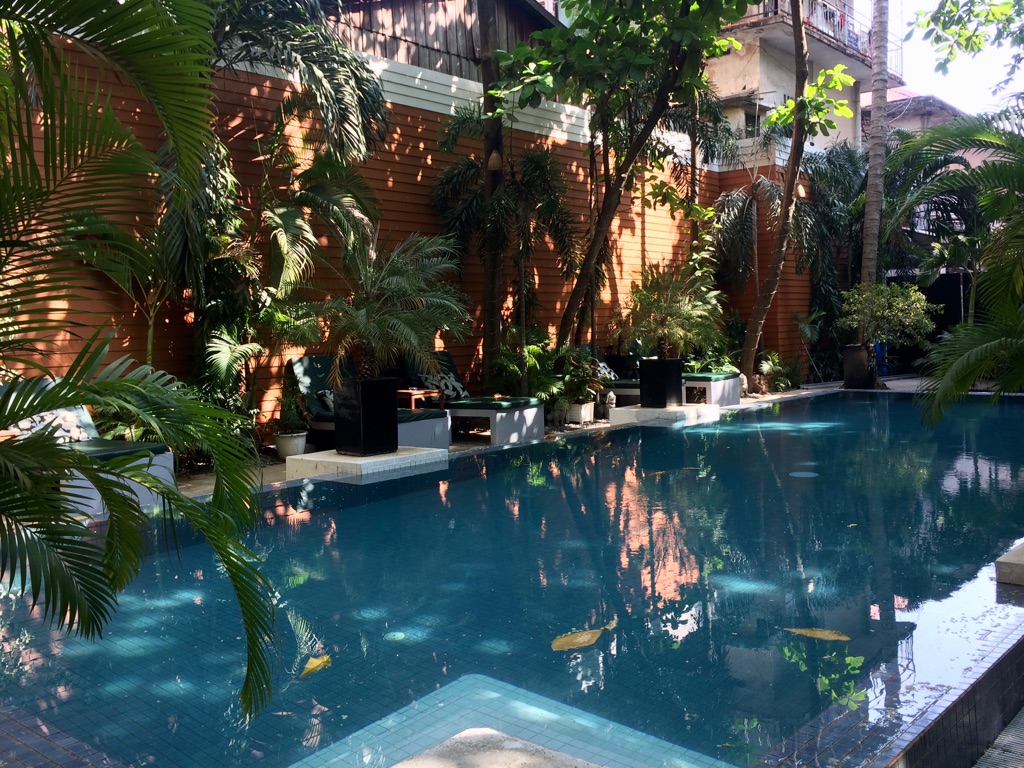
We explored a bit of the area on our way for dinner and decided to try and focus on a few highlights. My reason for coming to Phnom Penh was to visit the Genocide Museum and the prison used by the Khmer Rouge - so a ‘light’ trip, it was never meant to be. \240We just never anticipated the dirt, the garbage and an overall sense of an unkempt, unkept city.
The Killing Fields of Phnom Penh
And now I think I understand Phnom Penh and why I feel so depressed here.
In 1975, Phnom Penh had a population of 3 million people - and then the Khmer Rouge routed the city, emptied hospitals, schools, and public buildings - and forced nearly all residents \240out to the rural areas to live an agrarian lifestyle, which many were not able to survive.
The intelligensia, government workers and professionals were arrested, imprisoned, tortured and massacred - along with anyone considered a member of the ‘new people’ (city dwellers, educated, even wearers of eye glasses, etc.,...). The mission was to eradicate an urban population and force the country into an agrarian existence. This done using a perverse misinterpretation of Marxist-Leninist ideology.
Money was abolished; all embassies shut down (with the exception of China) and all international trade, commerce and communication was ceased.
By 1979, when the Khmer Rouge was overthrown (by Cambodian resistance with the help of Vietnamese and Russian troops), approximately 3 million Cambodians had been killed - or died of starvation and disease. 25% of the country’s population.
Since then, people have returned to Phnom Penh (now over 2 million) but the city shows a decay, neglect and abandonment that is a long way from being addressed.
This is the backdrop upon which we visited the Killing Fields of Choueng Ek, 15 km south-west of Phnom Penh - and the Tuol Sleng Genocide \240Museum, the notorious ‘S21’ prison camp.
The Choeung Ek museum provides self-directed audio guides enabling walking around the site. This allowed private reflection and very little conversation seemed necessary. Although brutal and heart-wrenching - the journey through the site also felt oddly hopeful. It was beautifully organized in presentation.
The S21 museum, by contrast, ripped our hearts and souls out and left us both so sad - and me in despair and so very enraged. The museum, a former school, was transformed into a place of torture and execution.
The rooms remain as they were discovered by the liberators \240- visitors see it all - torture areas, crude cells. Again, we were issued audio guides for self-directed tours. The buildings are around an inner courtyard, with many benches under shady trees so people can sit, listen and reflect - and weep. Hundreds of photos are displayed - the guards catalogued and issued a number to each victim. The photographs of the murdered men, women and children were impossible to turn away from - some looked scared, some defiant, some just resigned to the inevitability of what was to happen.
Victims included government ministers and at least 4 westerners, including two 27-year old men who were in the proverbial wrong place at the wrong time. The audio guide contained personal stories from former perpetrators, victims who had survived and from family members.
Photographs were allowed at both museums but I took only one at a rest spot along the river at the Killing Fields. Here, at this now beautiful spot, I listened to the audio guide and reflected on the horror and hope that are both part of our humanity.
So why visit and put ourselves through this? Kate and I discussed this at length and we think it is in order to act as witnesses and to show respect for the history of the beautiful people of this country as they heal and move forward.
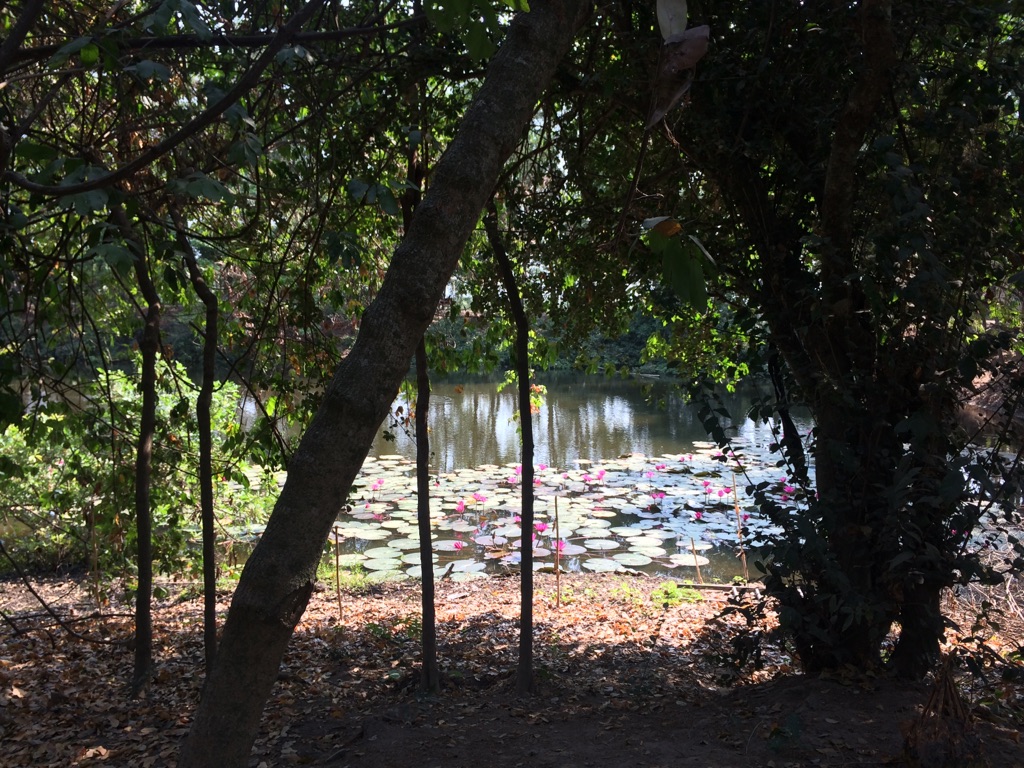
Beating the heat in Phnom Penh
We have 3 full days in Phnom Penh, so today is museum day. The National Museum of Cambodia is a 10-minute walk from our hotel so that was today’s target. The museum houses many antiquities and artifacts of ancient Cambodia, including statues, Sanskrit inscriptions and stone carvings from the Angkor Wat temples.
The museum has a very different archeological style from the one in Siem Reap. It is a series of rooms open to an outside courtyard and there is a different overall ‘feel’ to the place. \240Siem Reap’s museum felt claustrophobic, although I thought it beautiful until visiting this one in Phnom Penh. Actually, they complement each other well - Siem Reap has a lot of smaller, perhaps, more fragile artifacts - Phnom Penh has more objects on a grand scale.
We easily spent a few hours wandering through the rooms of this lovely museum. A bonus was that this museum did allow photographs.
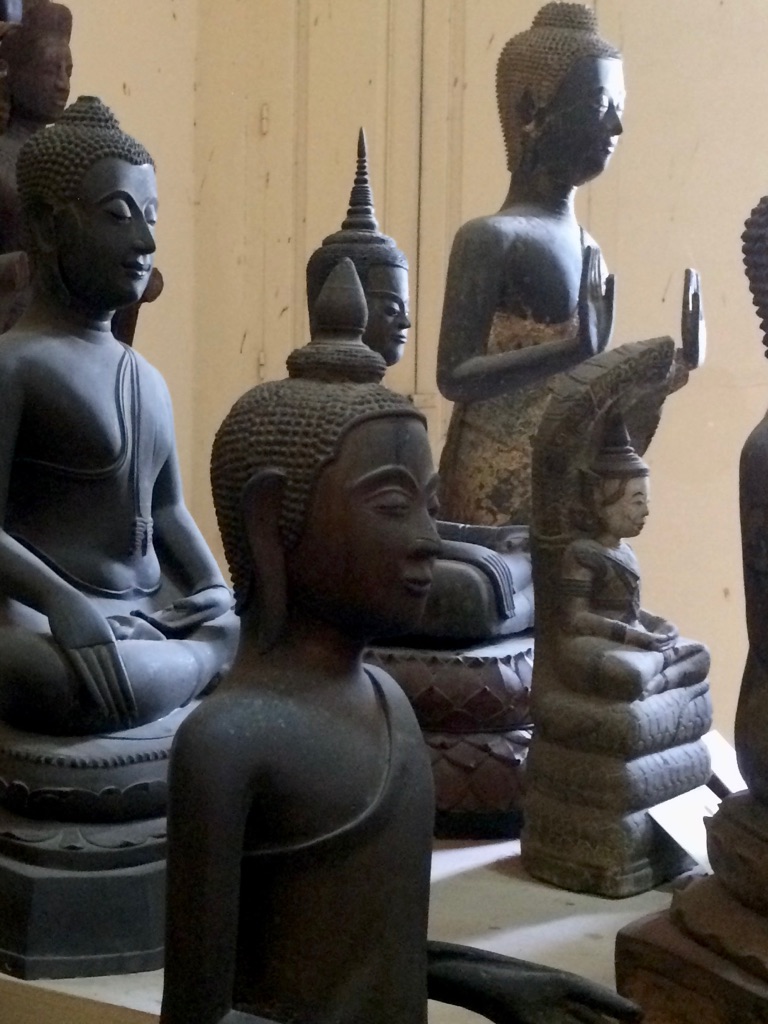
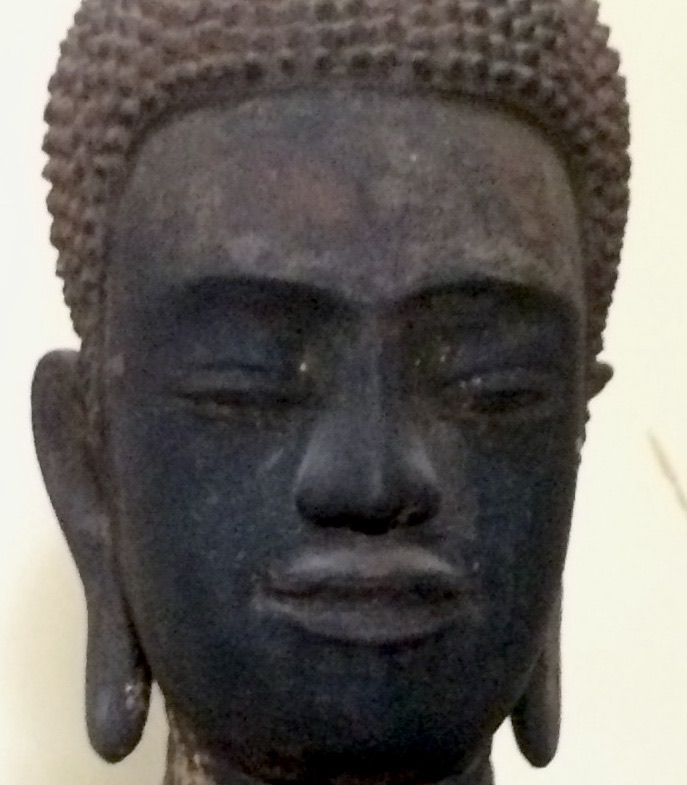

A Garuda, half-man/half-bird - a legendary Hindu creature.
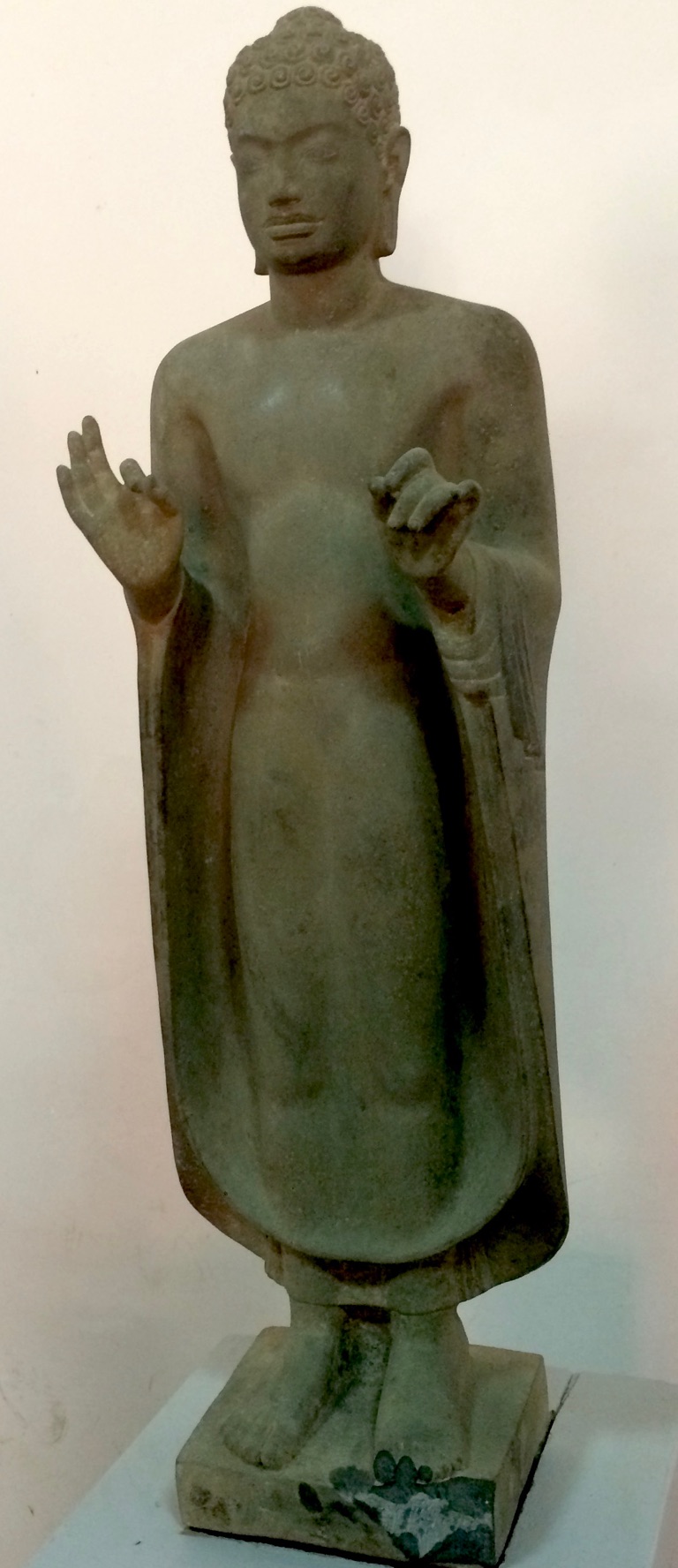
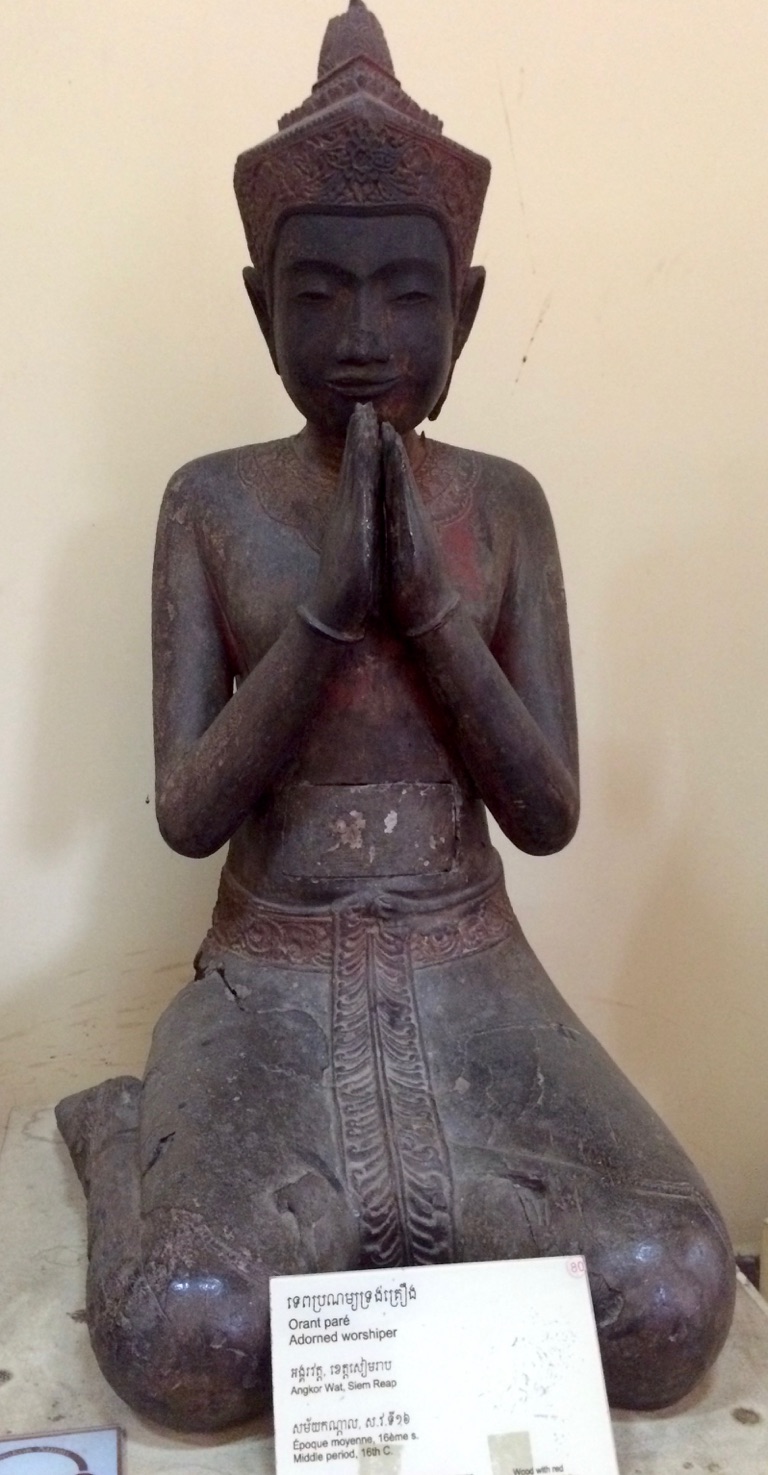
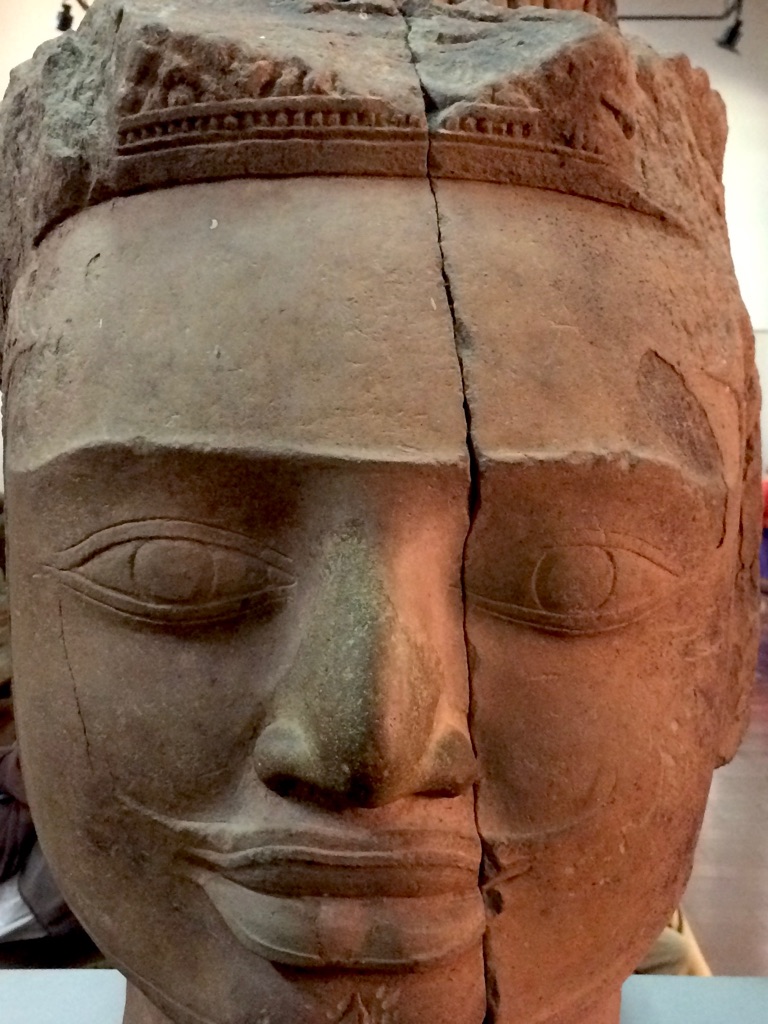
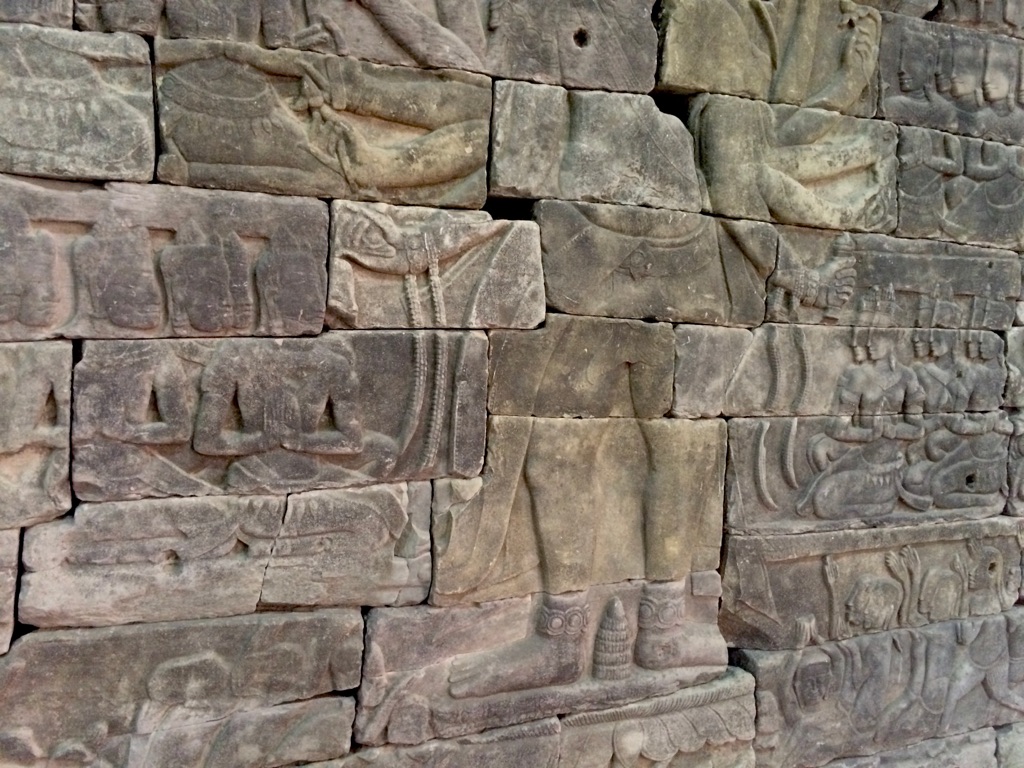


Phnom Penh continues to challenge us with its garbage, dust, chaos and heat. We could not find energy to tour the royal palace or the silver pagoda as planned. Instead, we repaired to the hotel swimming pool and a beer.
In the evening, we found a lovely Indian food restaurant named ‘Indigo’ and shared delicious channa masala and palak paneer!
Royal Palace and a river boat ride
Last full day in Cambodia so we went out in the early morning to tour the Royal Palace and the Silver Pagoda. As usual, it was 30 degrees by 9:30 am with a UV rating of 10. Very little of the Royal Palace is open to the public but the exterior of the buildings and the grounds are quite beautiful.
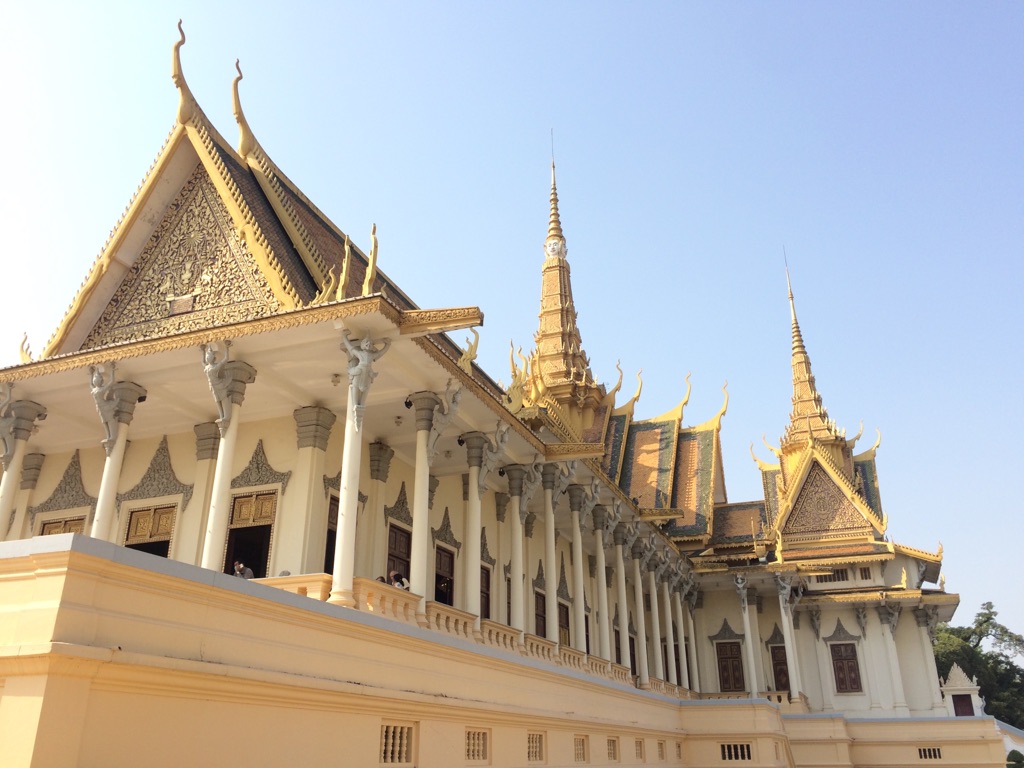
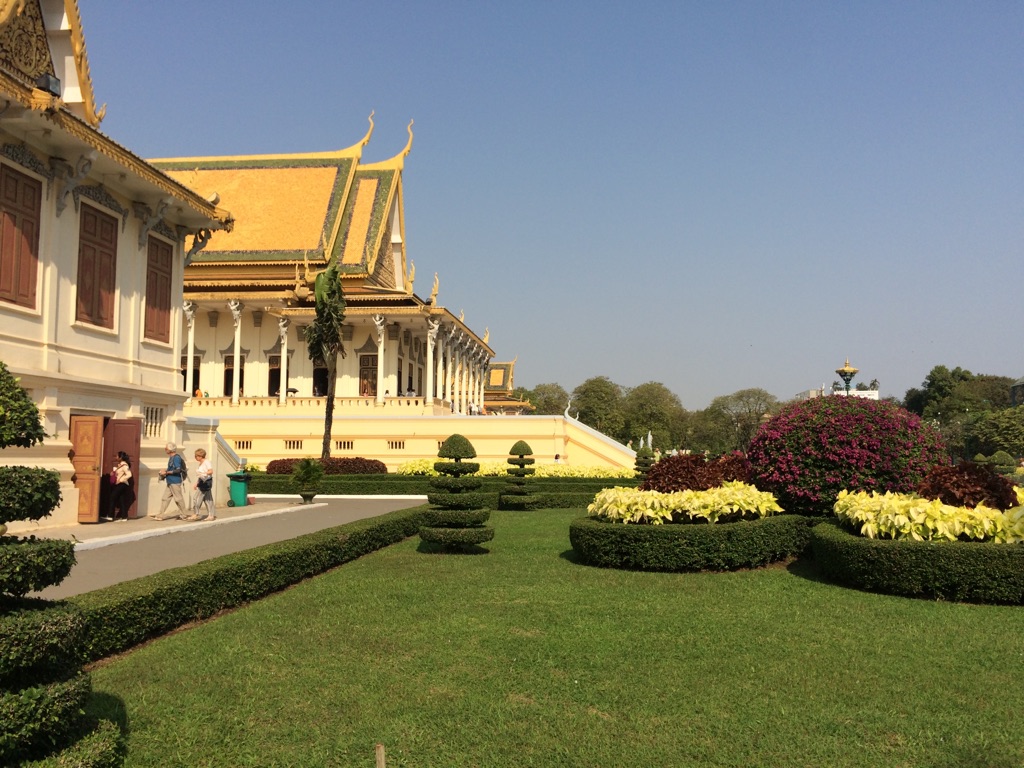
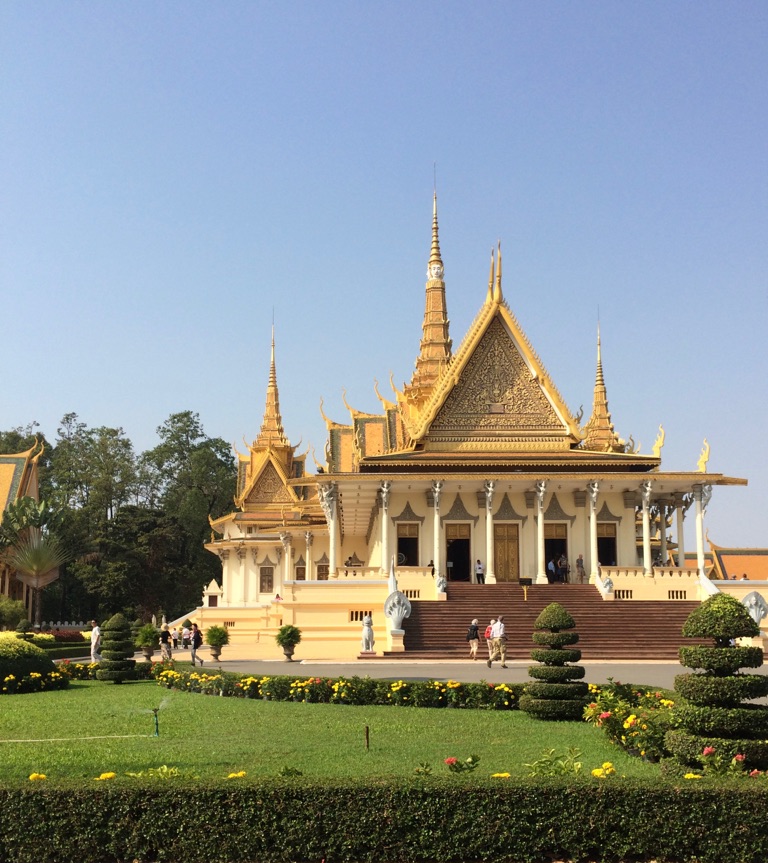
Painted murals portraying ancient legends - some have been restored, some not.
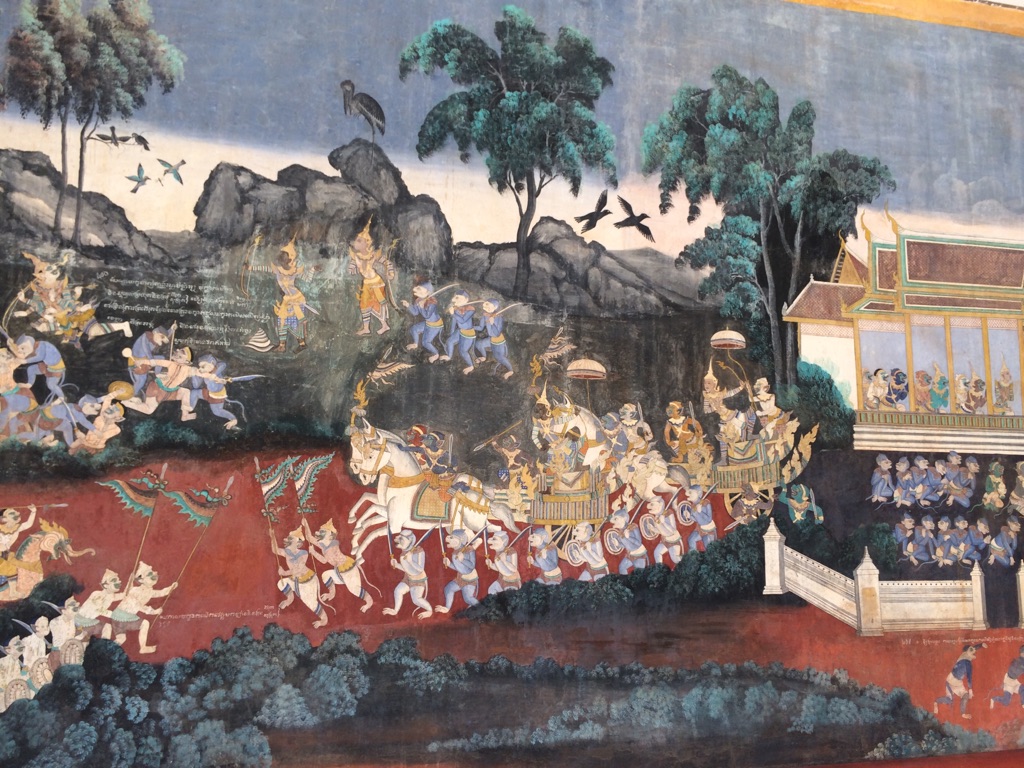
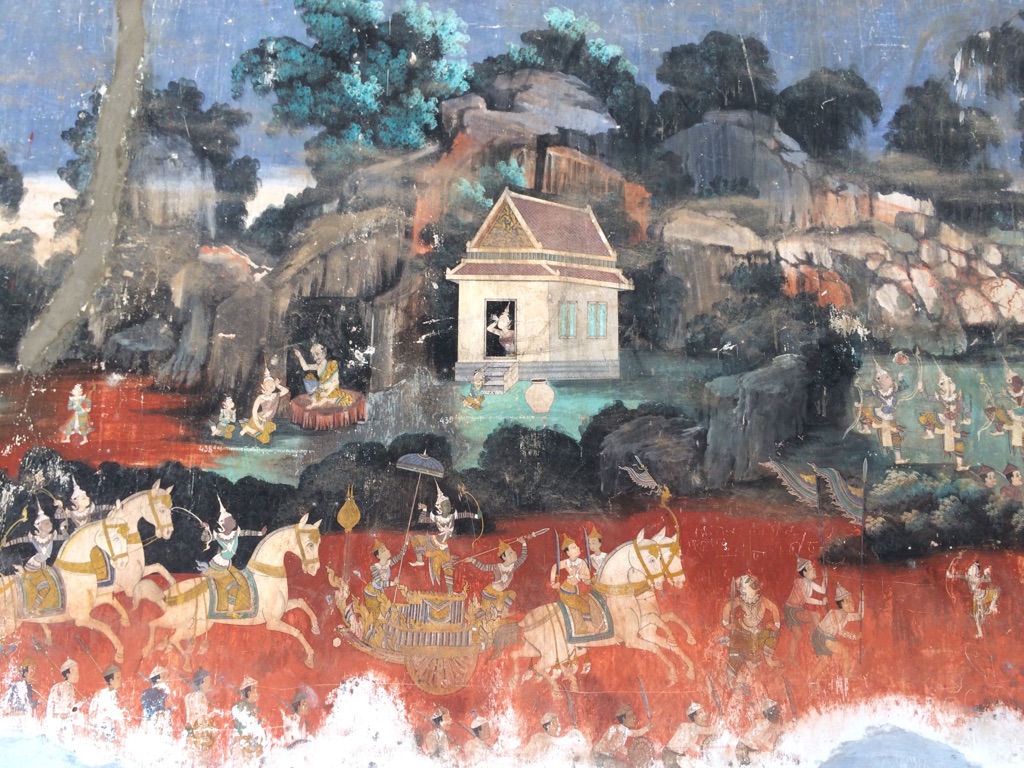
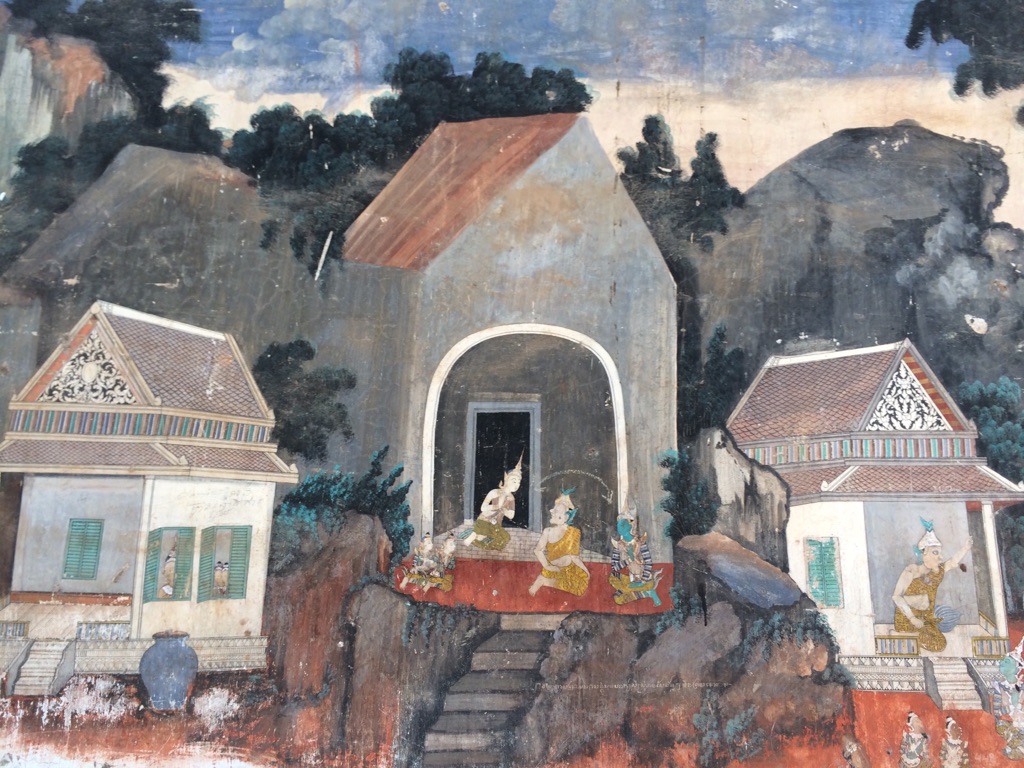
Then a visit to the Silver Pagoda and stupas containing relics of renowned Buddhist teachers.
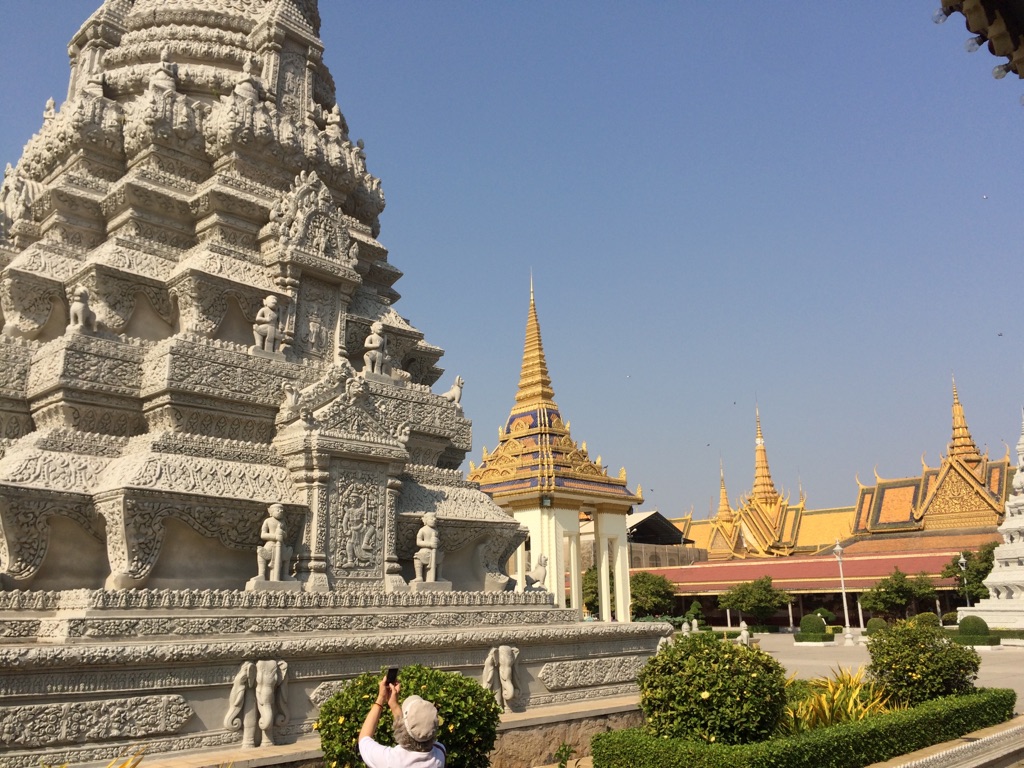
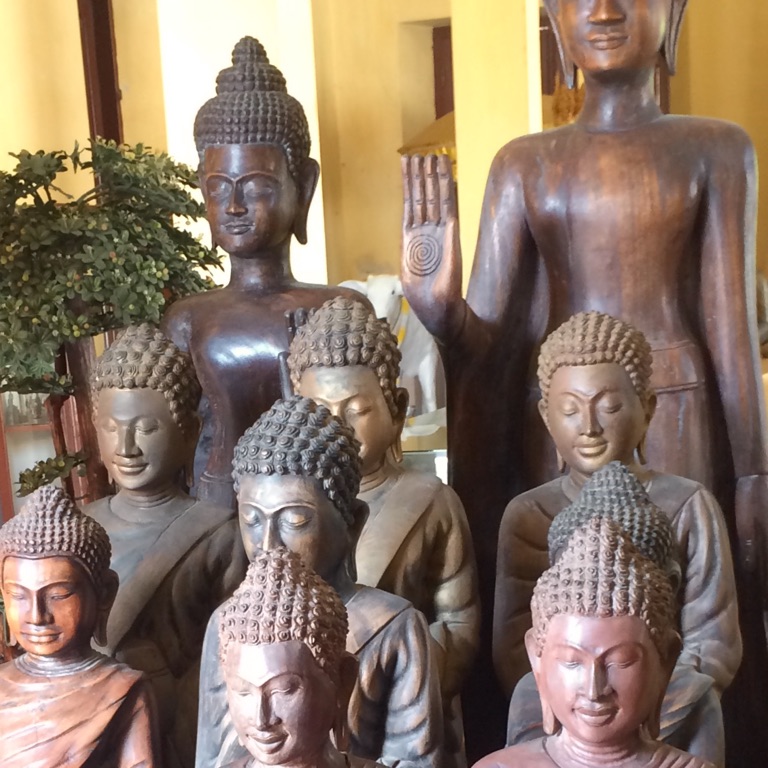
And quite a lovely little park on a small hill - providing a shady reflection and a break from the heat of the sun...
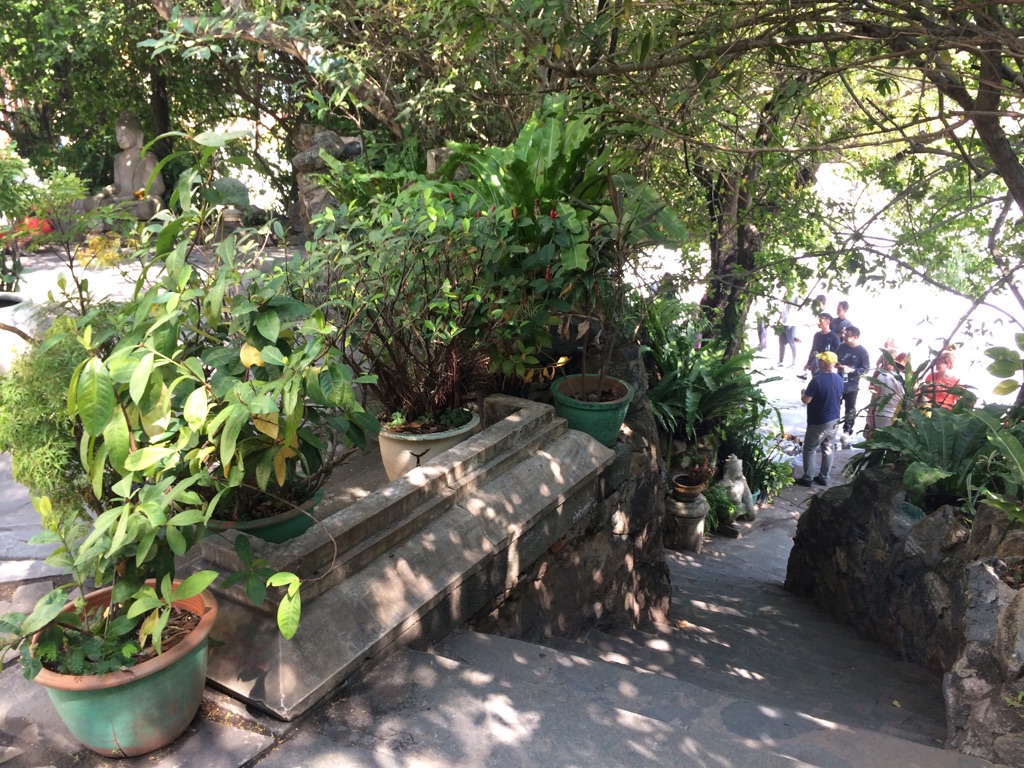
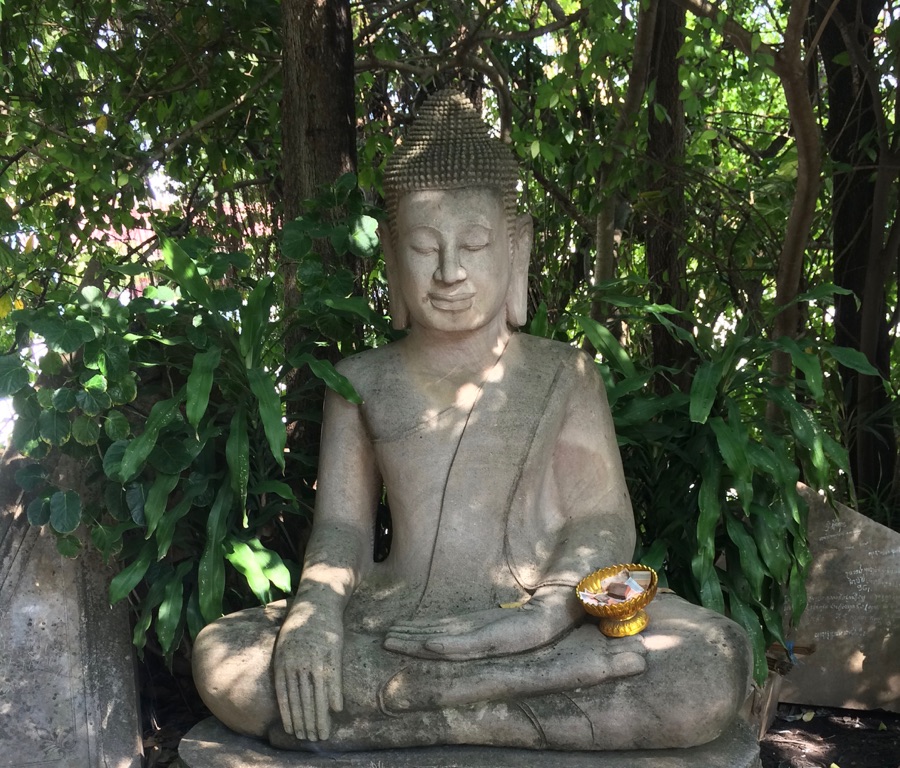

This beautiful flower is from the Cannonball tree!
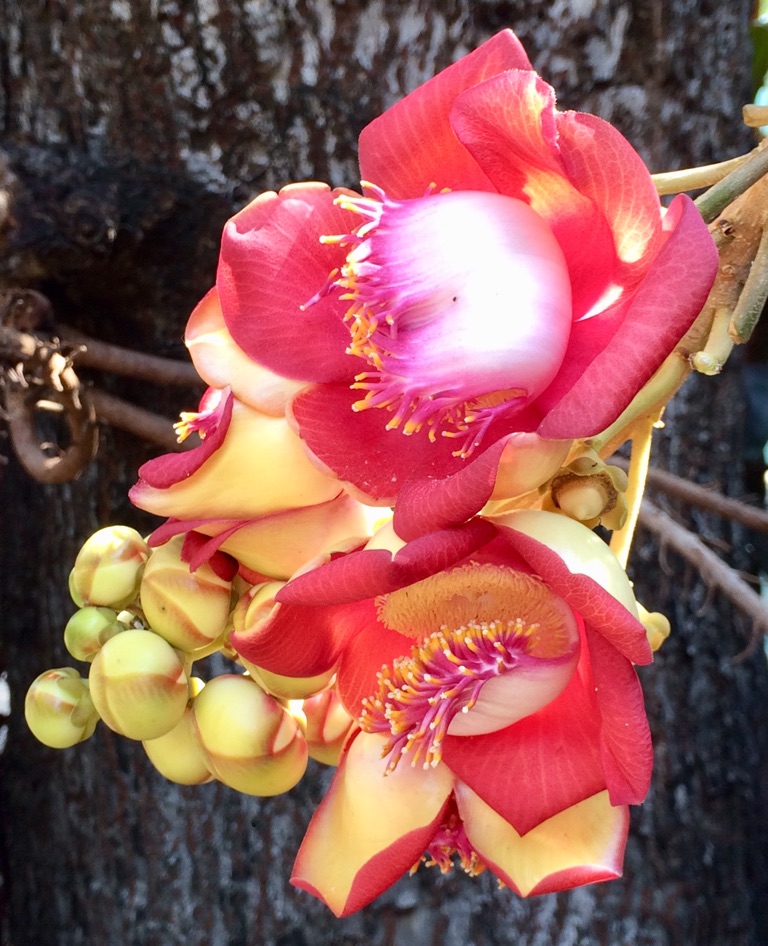
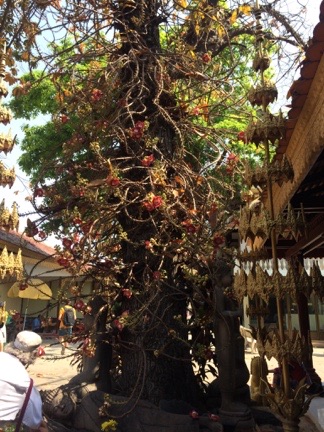
Back to the hotel for a swim and a rest - and then out by tuk tuk for a sunset boat ride along the Mekong and Tonle Sap rivers.
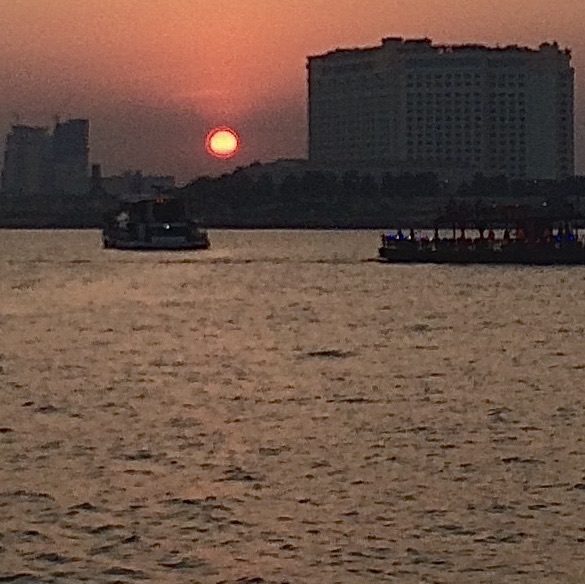
Goodbye Cambodia - hello Vietnam
Some last photos of Phnom Penh:
Lane scenes as taken from the hotel balcony...check ou that wiring!
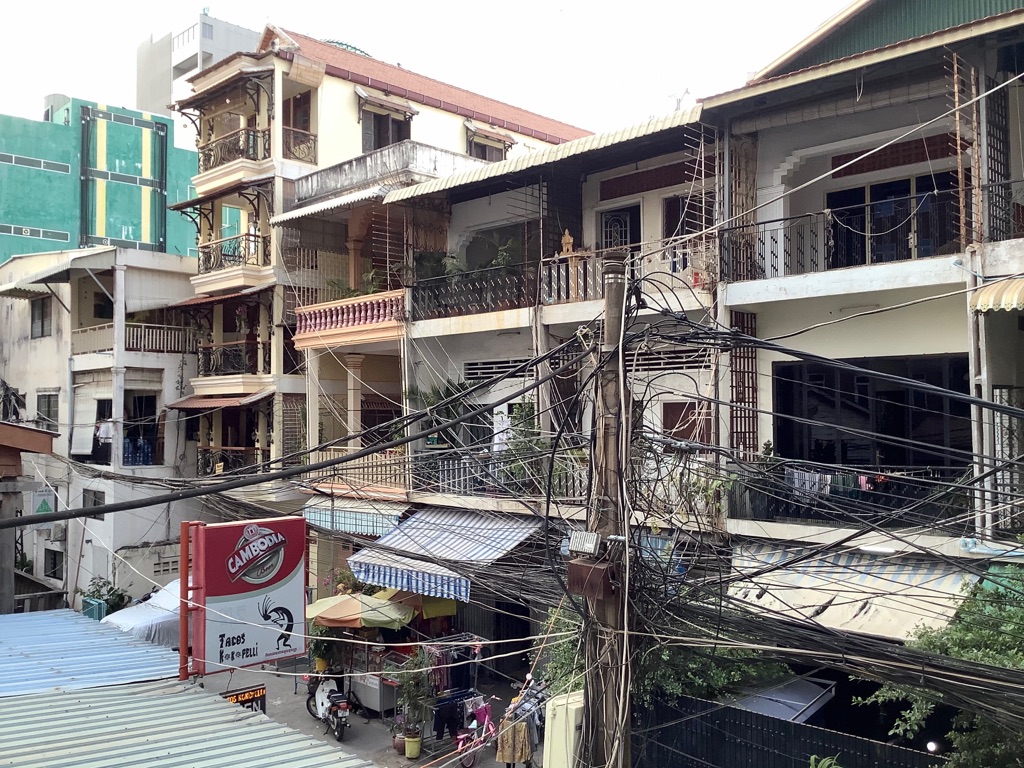
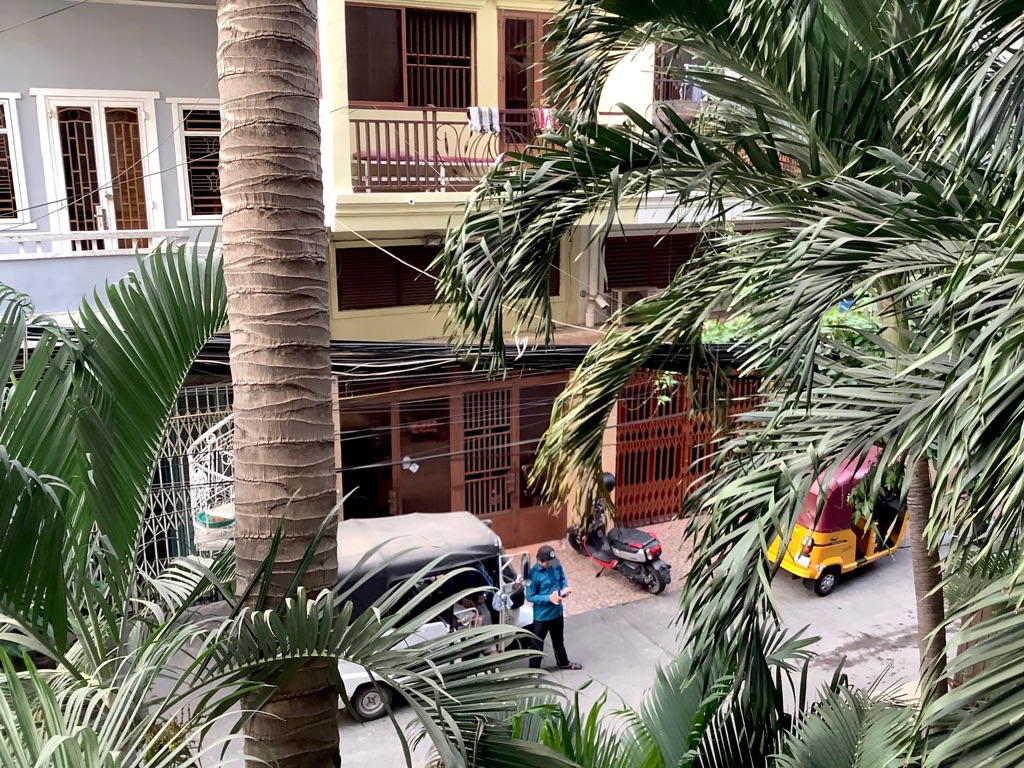
Vehicles on the street...
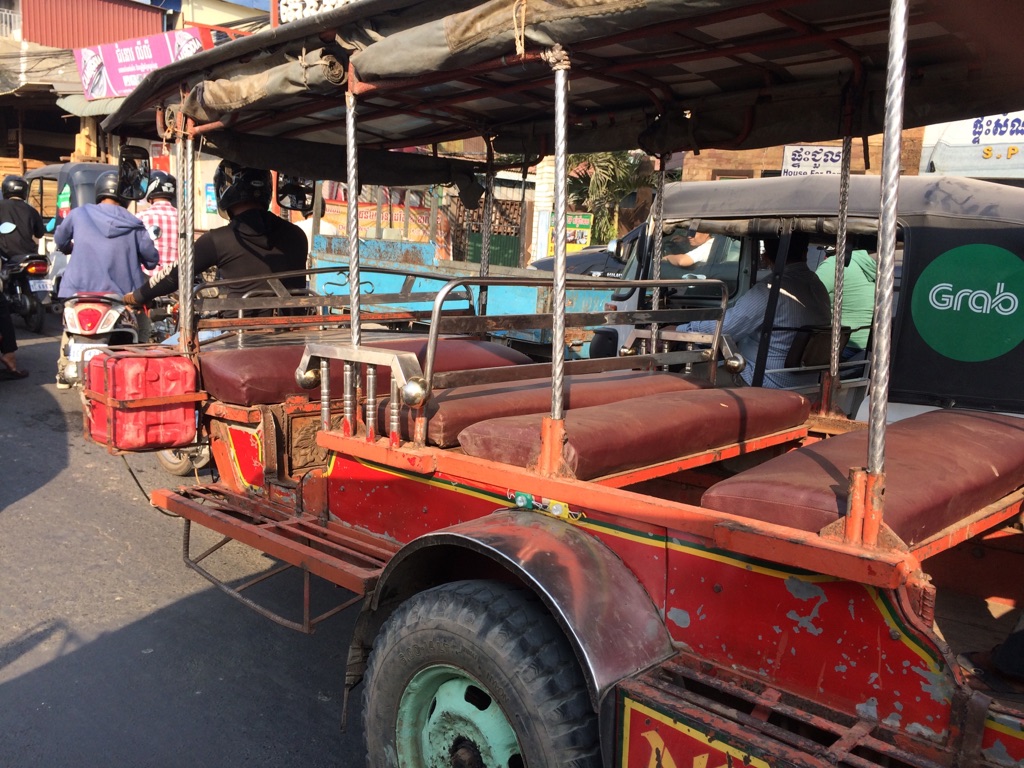

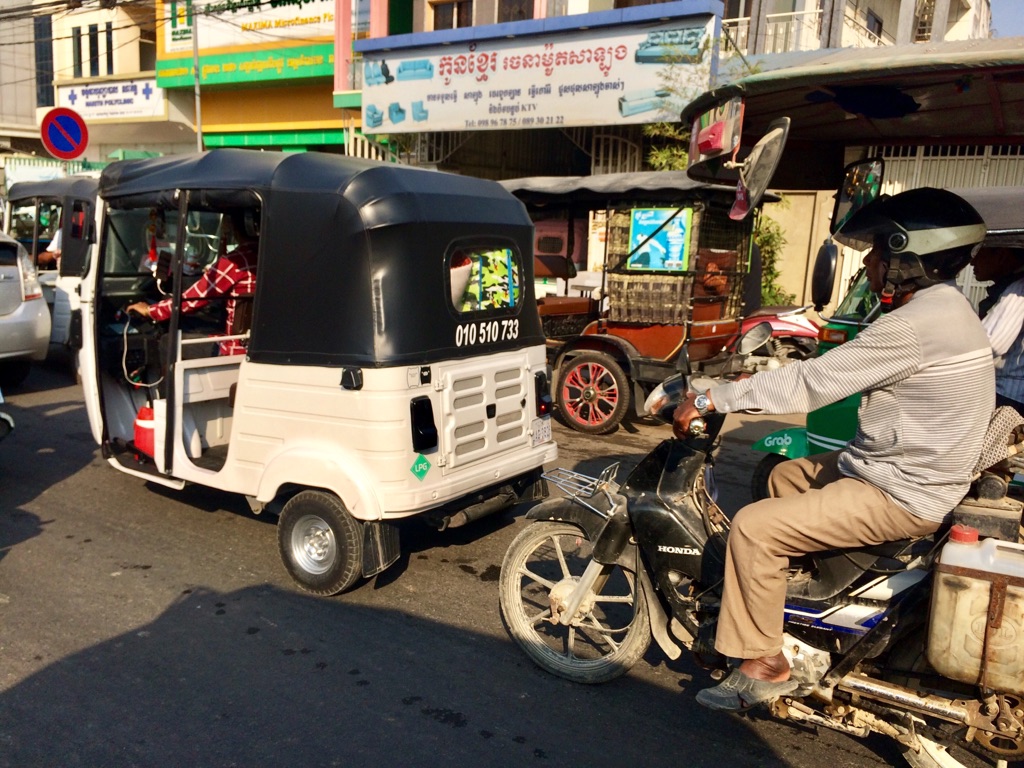
And then off to the airport we went.
What we have discovered, in our journey through 4 countries so far, is that just when we get the hang of things and feel comfortable - the rules change.
We queued at the check-in desk 2 hours before our flight with Cambodian Angkor Airlines. \240Check-in for the flight included a check of our Vietnamese visa applications and proof of our exit flight from Vietnam back to Canada. Then, checked luggage became an issue as our flight did not include this. We had to leave the line and get our checked bags wrapped together (and how exactly were we going to unwrap them at the destination as our Swiss Army knives were INSIDE the wrapped bags!!!) - then re-enter the line.
Finally, we cleared the hurdles and boarded the plane which looked like an old greyhound bus with wings. It took off - we heard noises and rattles that neither of us had heard on a plane before. We looked at each other and did not know whether to laugh or cry - we crossed our fingers! \240Note to self: do not book a flight again with Angkor Airlines!
The pollution above Phnom Penh was very visible, we let that distract us as the plane continued to rattle and shake. \240One hour later, we landed at Ho Chi Minh airport - at very high speed and with much roaring of engines. We taxied very fast for many minutes (thank goodness it is a very large airport with miles of runways). We felt much relieved.
Then we hit border control - more queues and much hand motioning by officials while we waited for our visas. \240Even though we had completed online ‘application’ for entry visas and had already paid, we had to go through the whole process again, this time for actual entry visas - with payment in US dollars only.
We picked up the luggage - struggled to get the ruddy plastic wrap off (see above) and then began the process of finding an ATM machine, buying a SIM card and ordering a Grab car to take us to the hotel.
1 Canadian dollar = 17,700 Vietnamese Dong - always a challenge to keep it straight when entering a new country! \240The advantage to using the Grab app is that the taxi fare is consistent and known upon ordering the ride. I think the ride to the hotel cost us less than $4 and no negotiating - so only 65000 Dong.
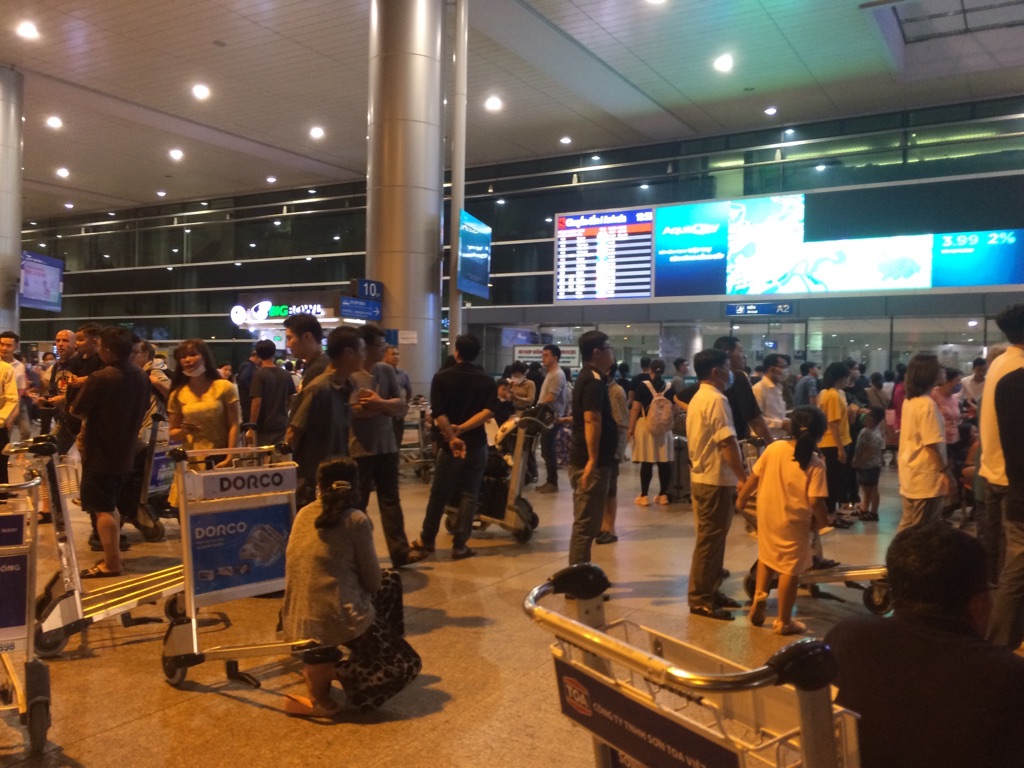
The scene at Ho Chi Minh airport - outside the terminal, at the curb waiting for the Grab ride. It was 7 p.m. and steaming hot still!!!
As we drove from the airport to the hotel we saw scooters and motorcycles everywhere - thousands of them, weaving in and out of traffic at high speed.
I felt sheer dread for what we were about to experience! \240Traffic - and number of motorcycles is like nothing I could have ever imagined.
Good Morning Vietnam!
We have arrived during Tet - Chinese New Year’s celebrations. There were fireworks last night at midnight, to which Kate went, but the next few days are ‘quiet’ family times in Vietnam so the city promised to be more manageable.
But, there are motorbikes and scooters everywhere - sometimes riders wear helmets, sometimes not; sometimes 2 people on a bike, sometimes a family of 4 including very small children who somehow manage to hold on.
I read that there are 8.5 million motorbikes in Saigon, 10 times the number of other motorized vehicles. This in a city of 9 million people!
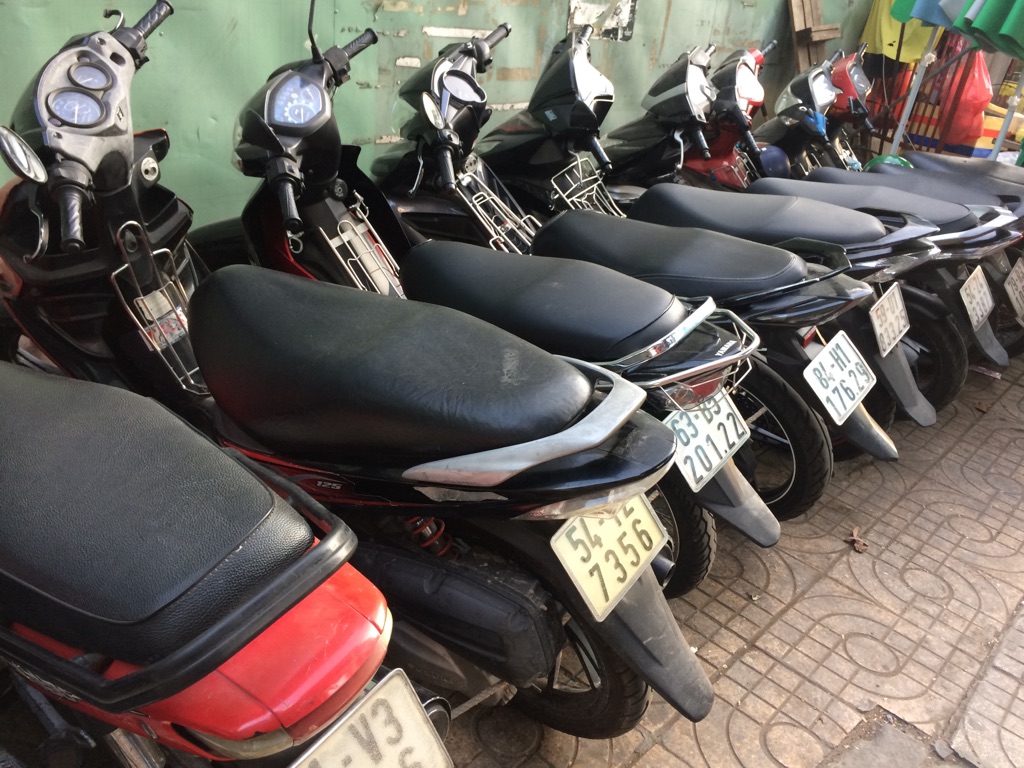
Click on the you tube link above to see a clip of how a pedestrian must cross traffic in Saigon. \240This is no exaggeration and is not for the faint of heart. It does get easier each time. \240And this is at a pedestrian crosswalk!
I do NOT like Ho Chi Minh City!
Why? Traffic, rubbish everywhere, dirt and dust - and rats!
Because it is the Tet holiday a lot of businesses and restaurants are closed. The holiday celebrations last for at least a week and are heavily centred around family gatherings. As a result, it is a little quieter on the streets due to school holidays. There are lots of decorations around the city - yellow chrysanthemums and red lanterns everywhere.
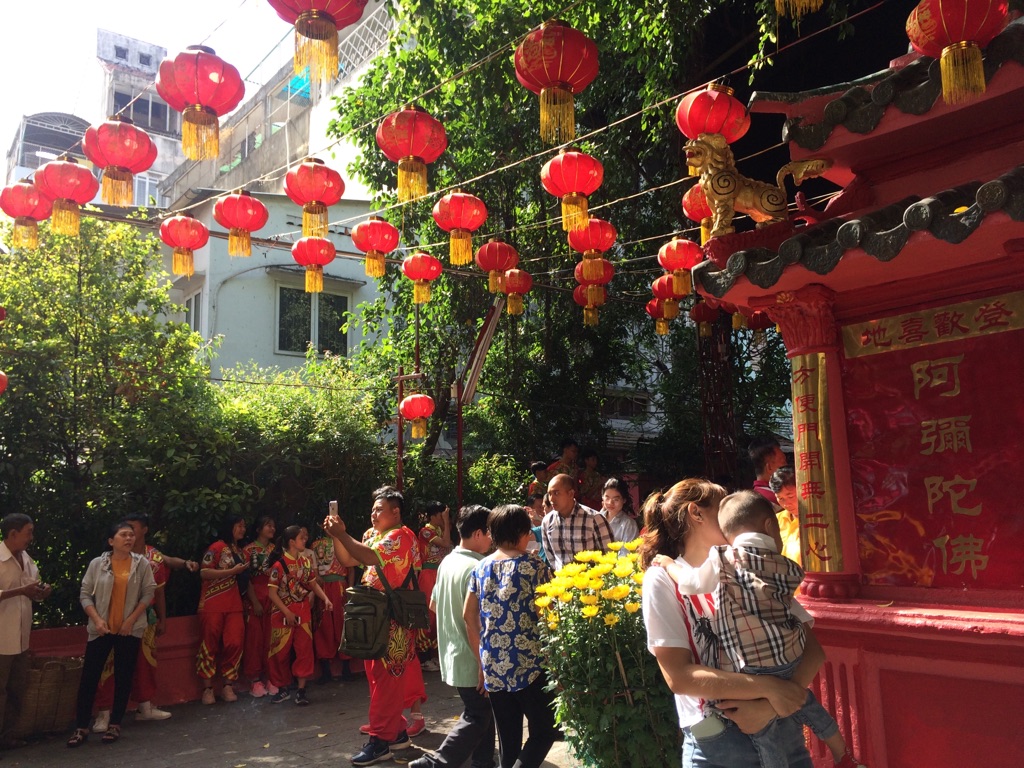
This very large city has no underground metro system and few buses. As a result, transportation around the city depends upon cars and motorcycles. Major construction is underway to create a large underground system but no lines will be active for a few \240years. The city of Ho Chi Minh has announced that by the year 2030, motorcycles will be banned from the centre of the city. \240Anyone who visits for more than 5 minutes would have to respond with “good luck with that!”
Much of the city has a rundown look and feel - and not the ‘beautiful decay’ of other places we have visited. Kate thought, at first, that the garbage workers must be on a work stoppage, but no, we were assured rubbish everywhere is just the norm - and it does not seem to bother anyone. \240In a very hot city, where the temperature is usually around the mid-30’s, this makes for not such a pleasant environment.
And, oh yes, walking back to the hotel from dinner (in the dark as sunset is at about 6:15 pm), I saw an enormous rat (I am not exaggerating) run along the sidewalk about 2 metres away from me. I shrieked and jumped into the street and narrowly missed being hit by 2 oncoming speeding motorcycles.
How many more days until we leave here?
‘Walking streets’
‘Walking streets’ are closed to vehicles and are very busy and crowded during national holidays such as Tet. This particular one featured flower displays and lighting and promised lots of people - Kate was keen to go!!
We braved the traffic, motorbikes and streets - arrived at the street - and it was indeed crowded. I usually avoid these situations at all costs; Kate finds them energizing. We both compromised and stayed for a short time!
Here are some sights!
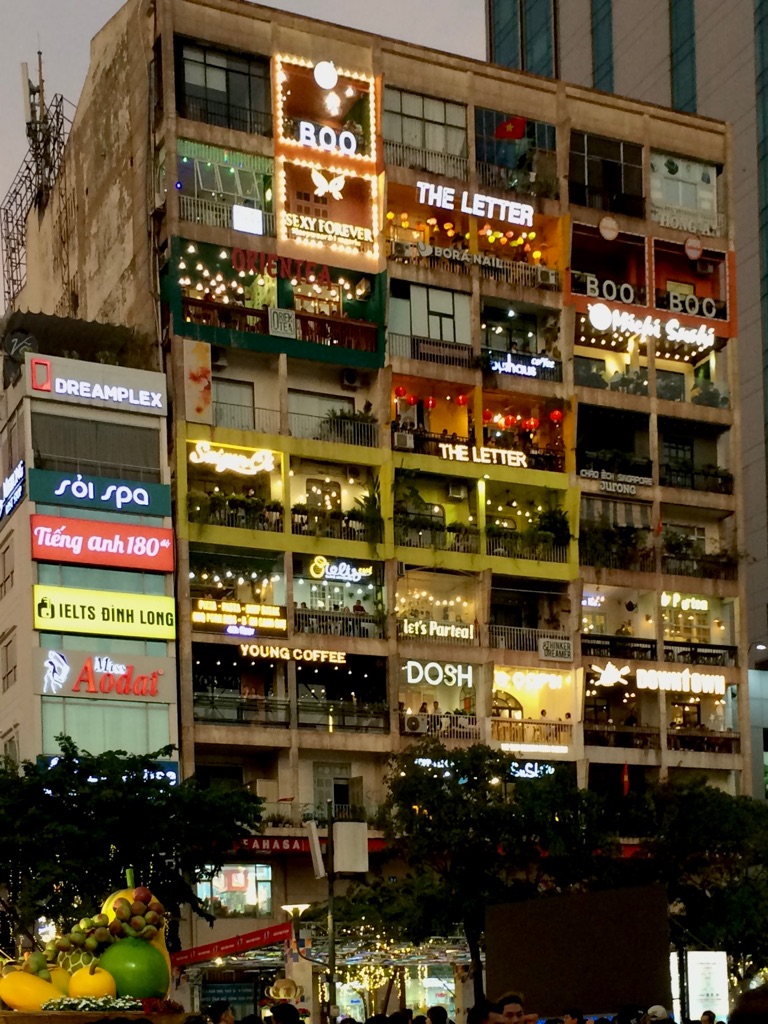
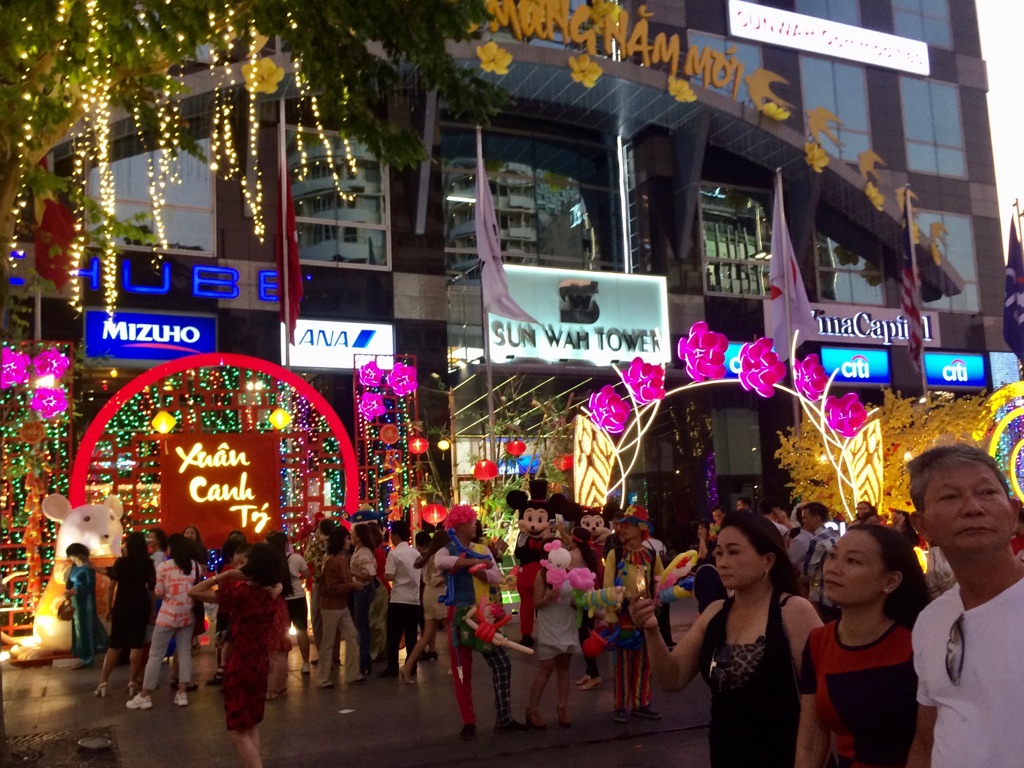
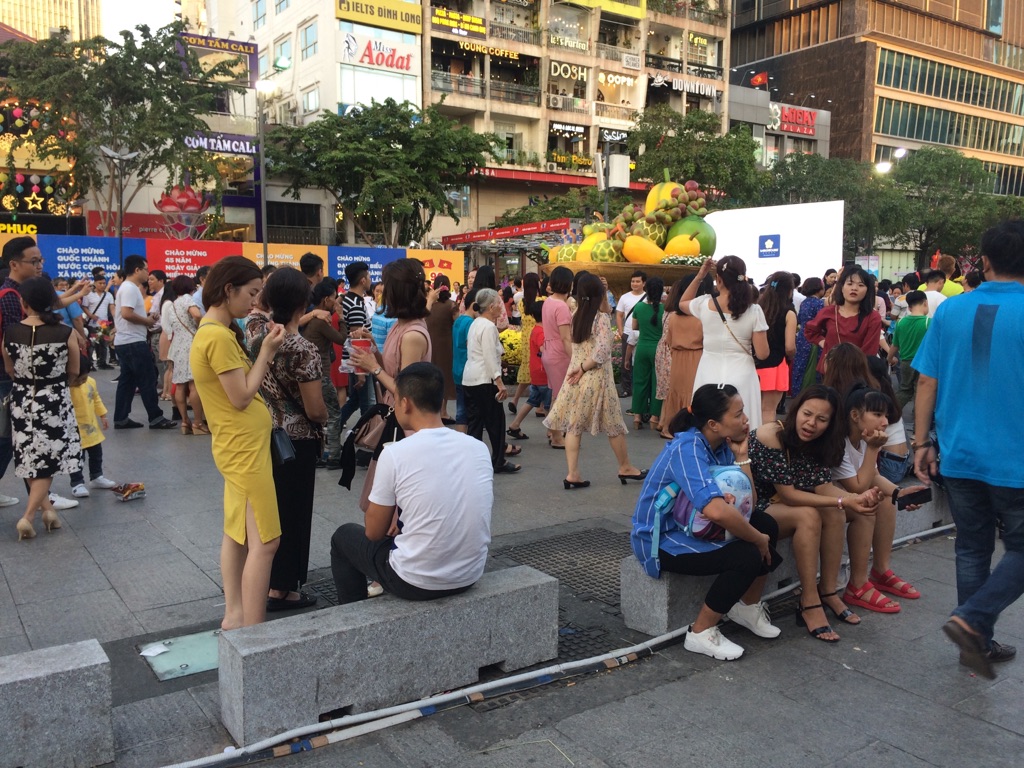
We found another ‘walking street’ on our way home from dinner at ‘Baba’s’ - a very good Indian curry place. \240This time, though, motorcycles were allowed so I am not altogether sure why it is still called a ‘walking street’!
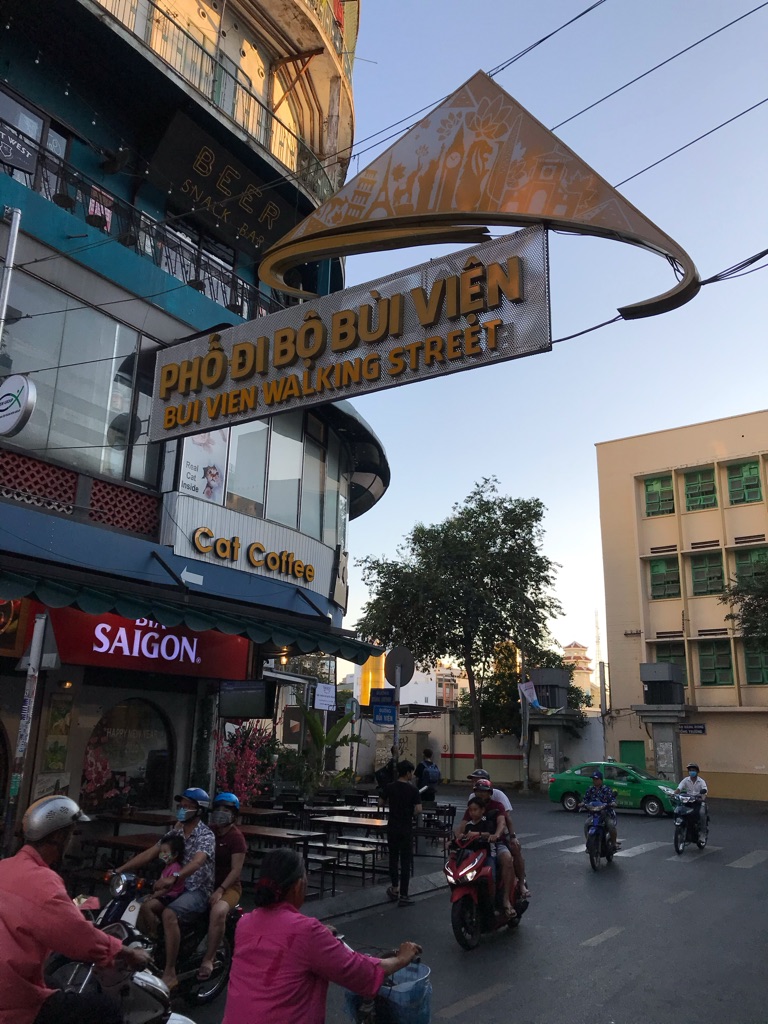
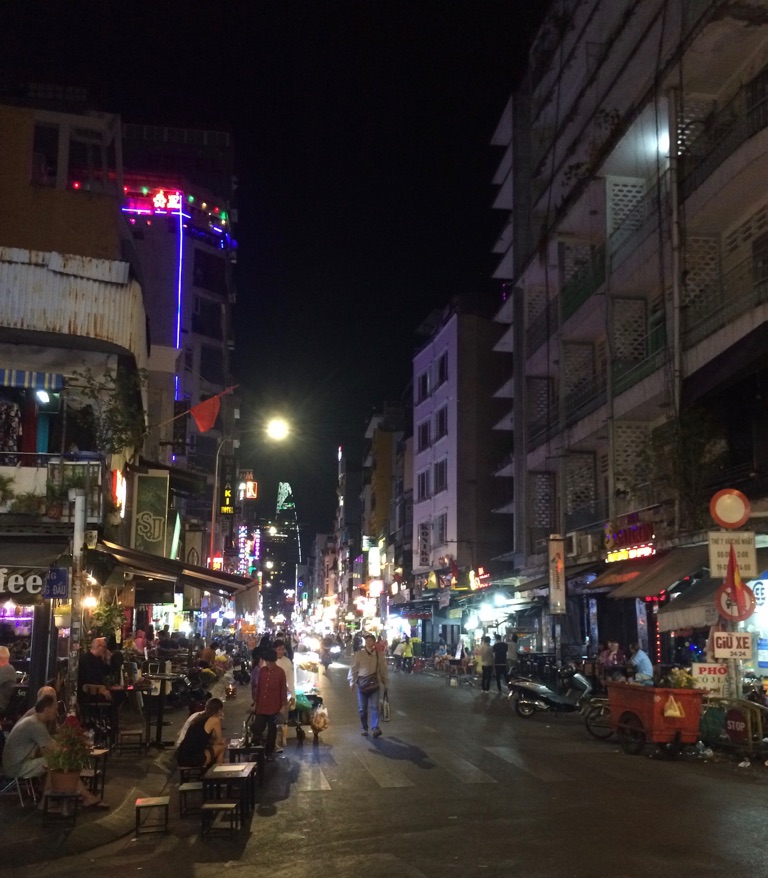
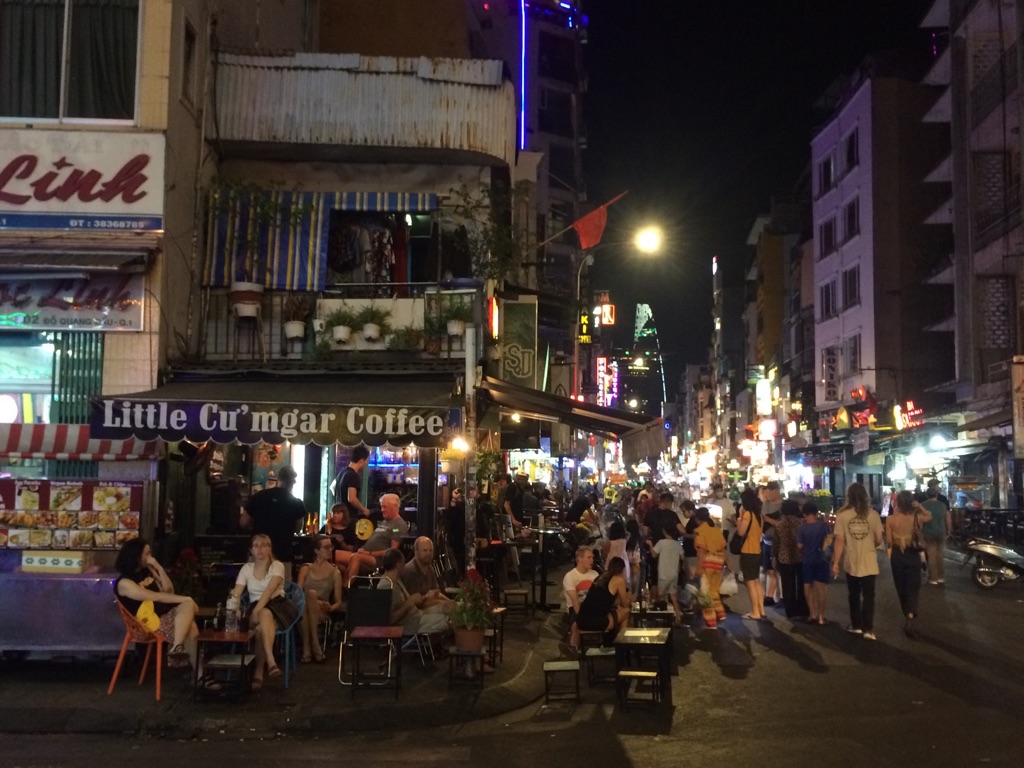
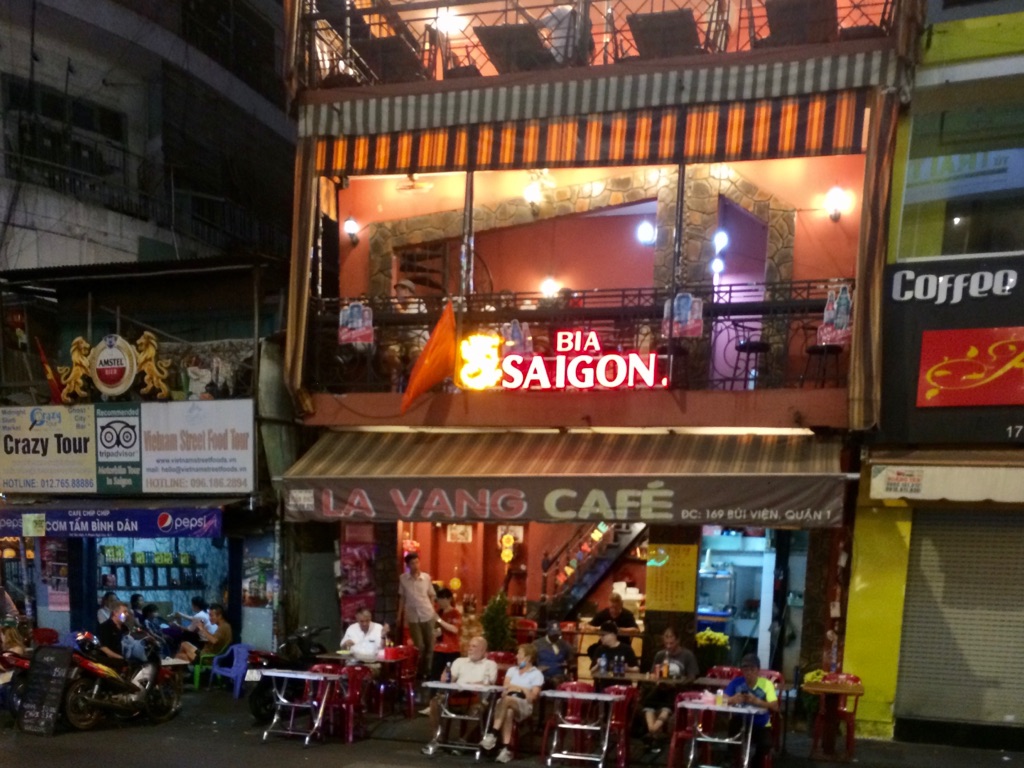
Kate enjoyed the people watching - I enjoyed the people avoiding!
A museum, a pagoda, a cathedral and a post office
We booked a 1/2 day tour, through the hotel to see some of the sites of Saigon. First stop was the National War Remnants Museum. The museum was previously named the ‘Museum of American War Crimes’. Vietnam has been unified since 1975 after the fall of Saigon to the northern communist forces and the subsequent withdrawal of American troops. \240Saigon was renamed Ho Chi City after the Communist leader - a terrorist to some; a liberator to others.
The museum is located in the centre of town at the former U.S. Information Agency Building. Outside, in the main courtyard, there are U.S. planes and tanks.
Along the side courtyard there are renditions of prison cells, weapons and instruments of torture - including many photographs. One of the most chilling rooms contains a guillotine, brought from France when Vietnam was still under French colonial status.
We quickly moved through these exhibits to the main museum area which held photographs, news articles and video clips related to the American anti-war movement and growth of a peace movement. This area of the museum was fascinating and showcased how public pressure and resistance within the U.S. military turned the course of this war.

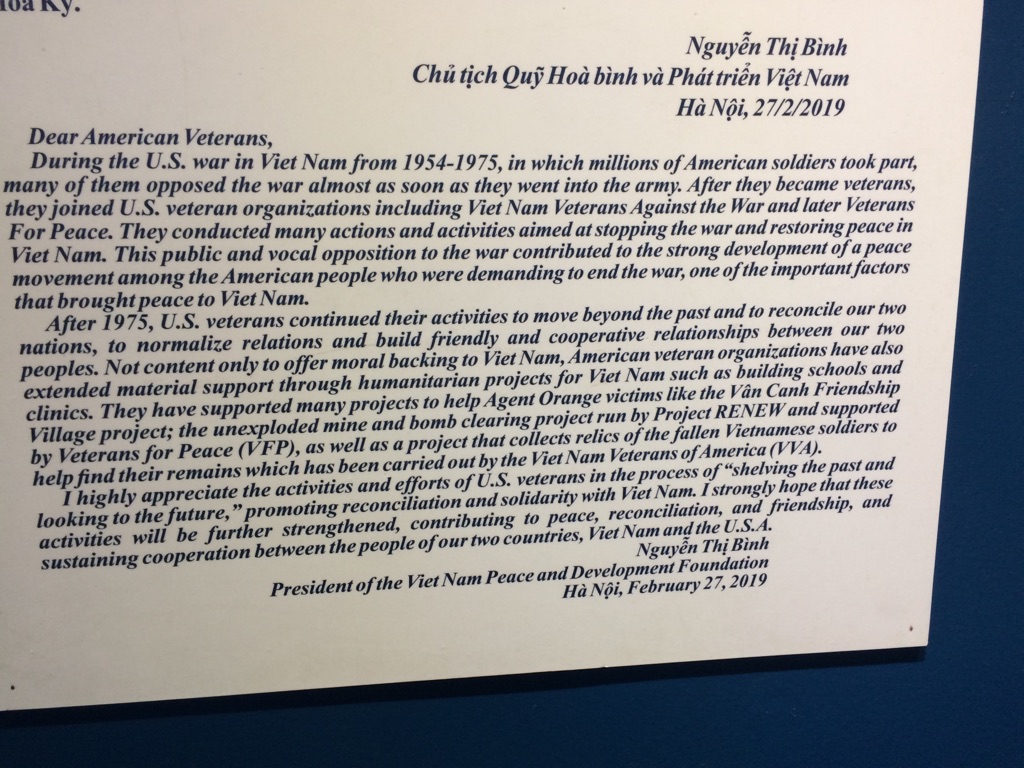

Unfortunately, we had only one hour allotted to the museum due to the timing of the tour group - we certainly could have spent more time.
Our second stop was at Notre Dame Cathedral Basilica - built in 1863 after the French had established Vietnam as a colony. The intent was to provide a place of worship for French colonists. Unfortunately, we could only walk around the building as major reconstruction of the roof was underway, however, the design and architectural style is clearly based on Notre Dame Cathedral in Paris. All materials used in construction were imported from France.
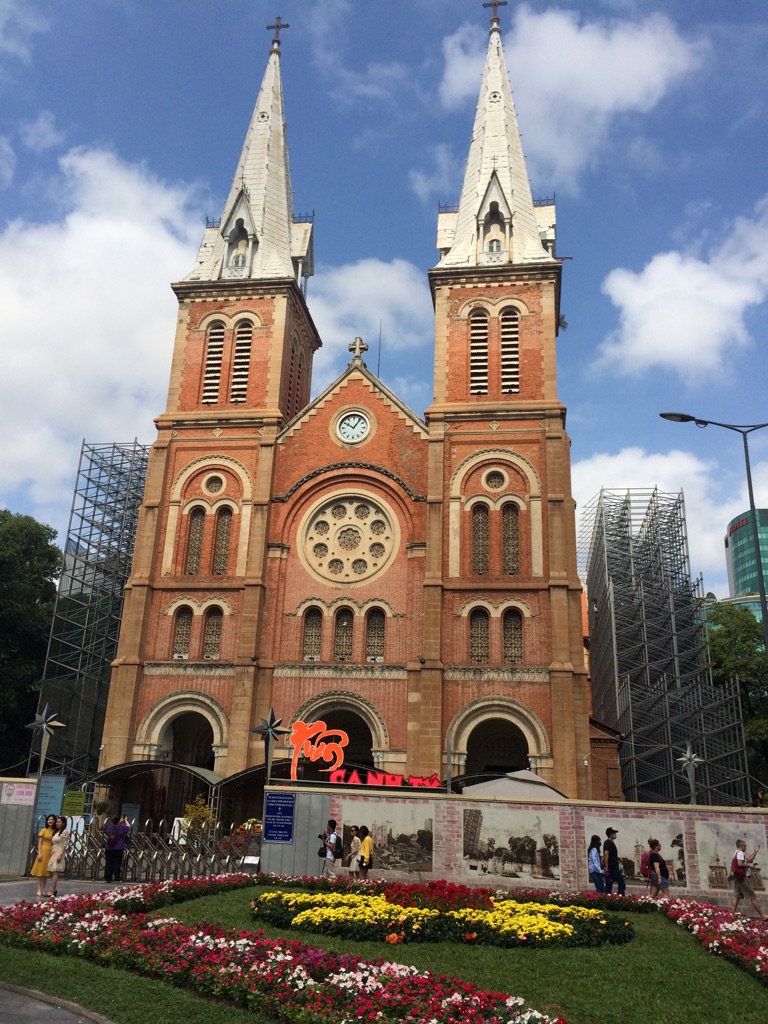
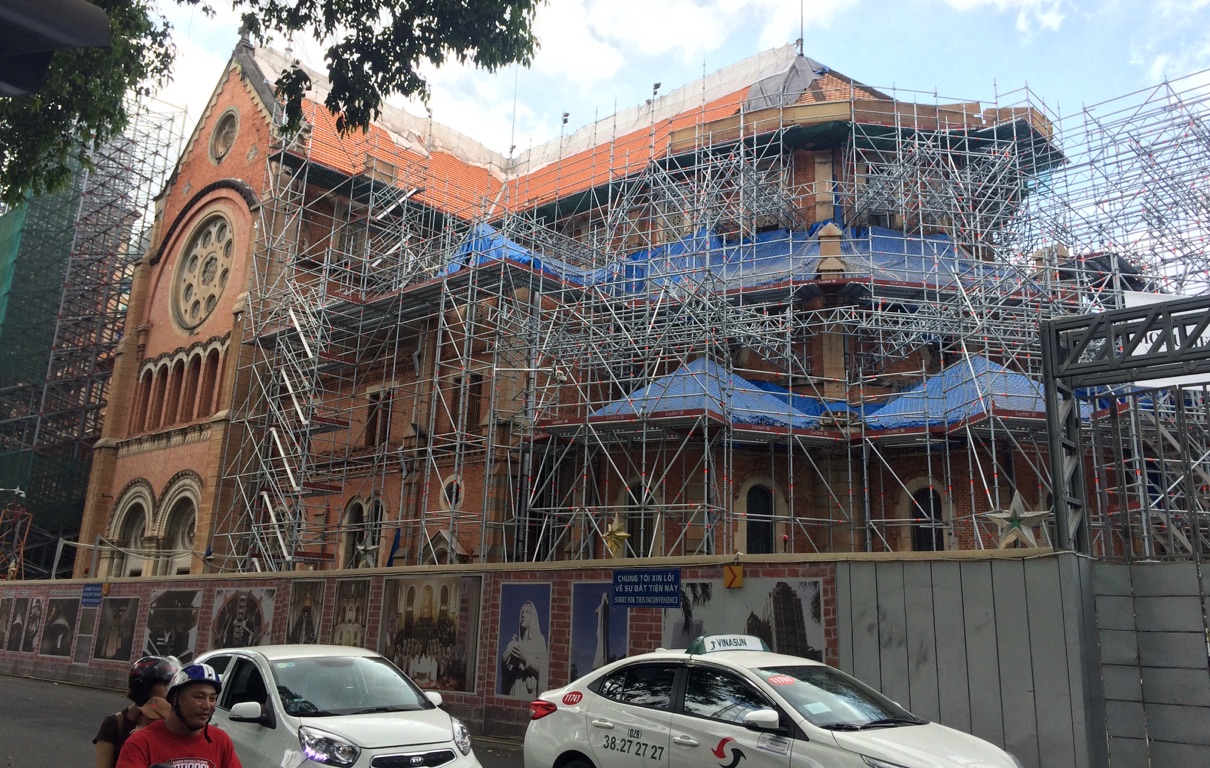
Renovations underway...
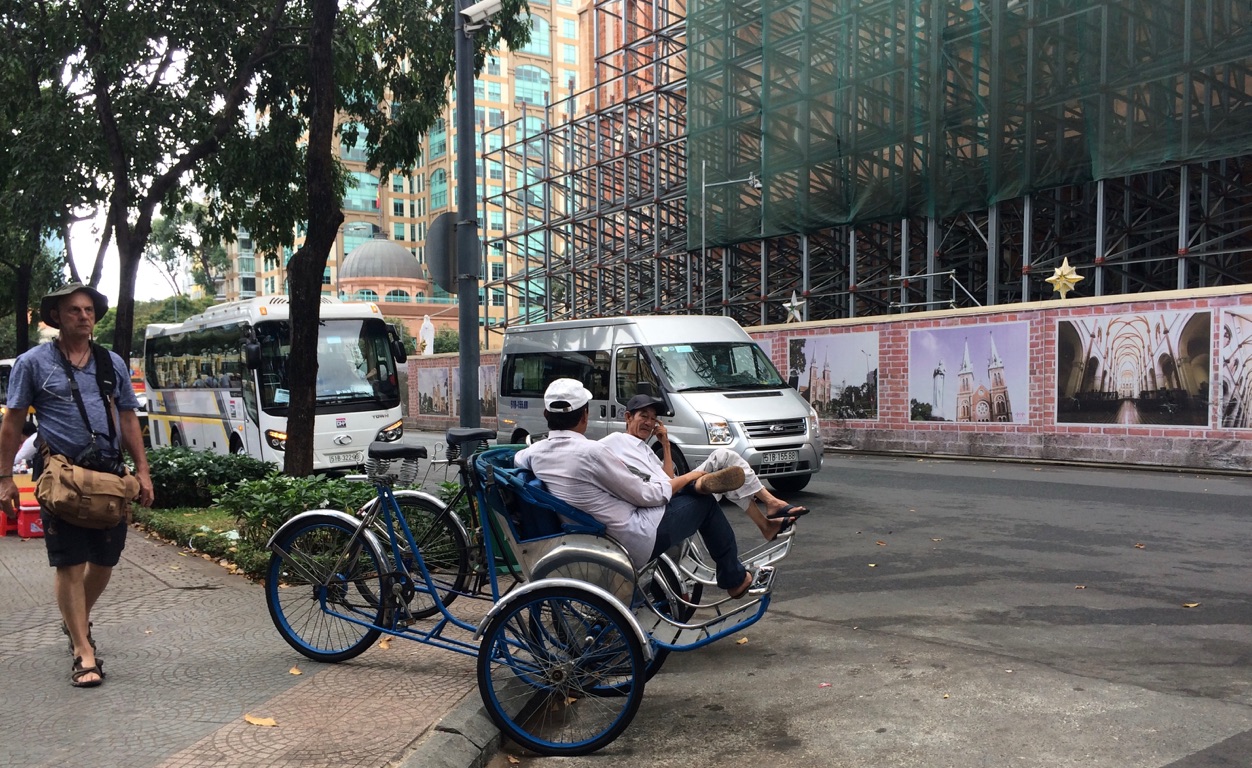
Drivers waiting for their next customer...
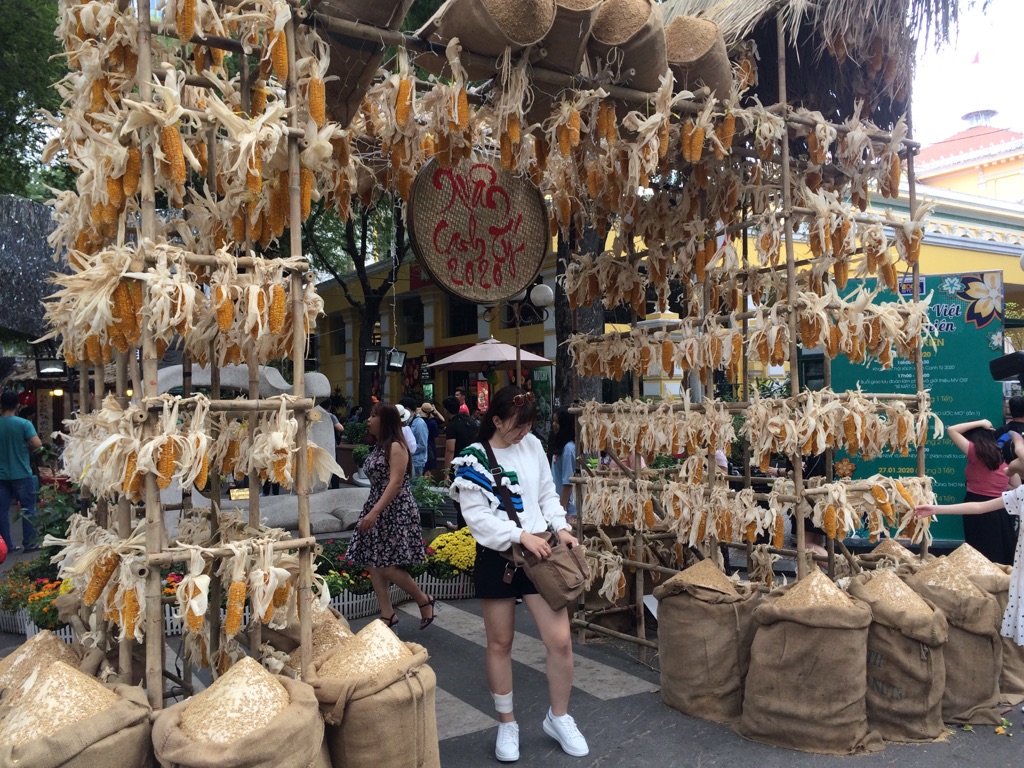
Market vendor across from the Central Post Office...
The next stop was to the Saigon Central Post Office building, also built during the French colonial period. It is still a functioning post office as well as a major tourist attraction. \240The building contains historical maps, equipment and stamp collections and is a well-preserved example of the colonial architecture in the 1880’s.
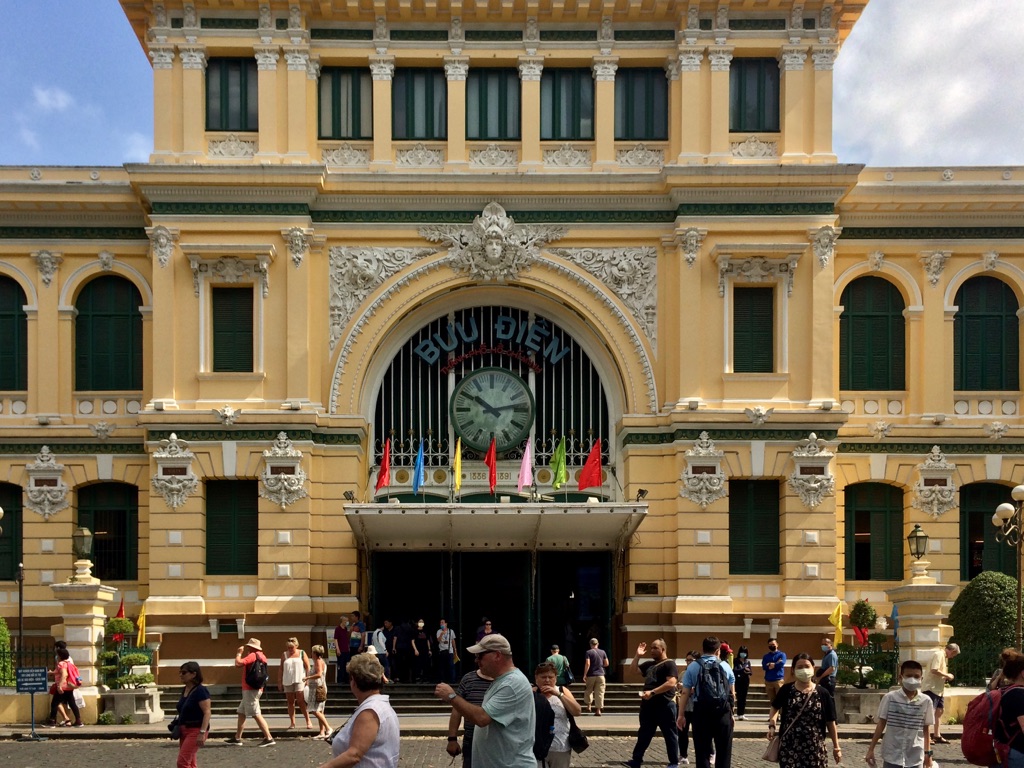
Central Post Office entrance
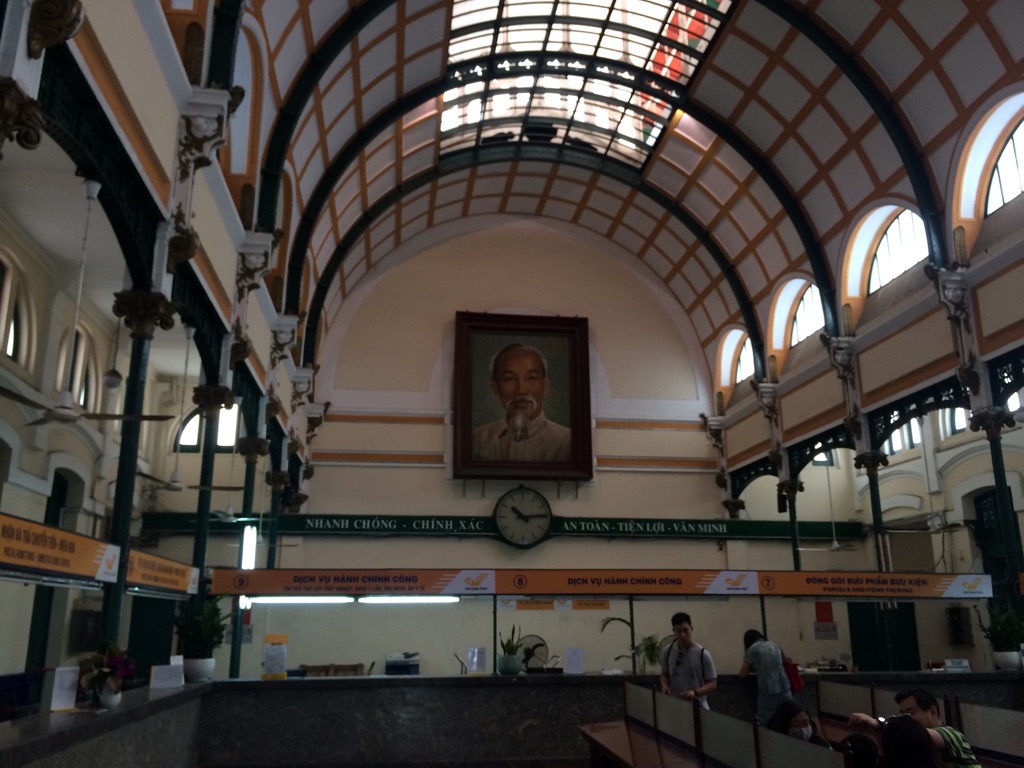
General Ho Chi Minh overseeing all...

Map of territories falling under ‘Indochina’...
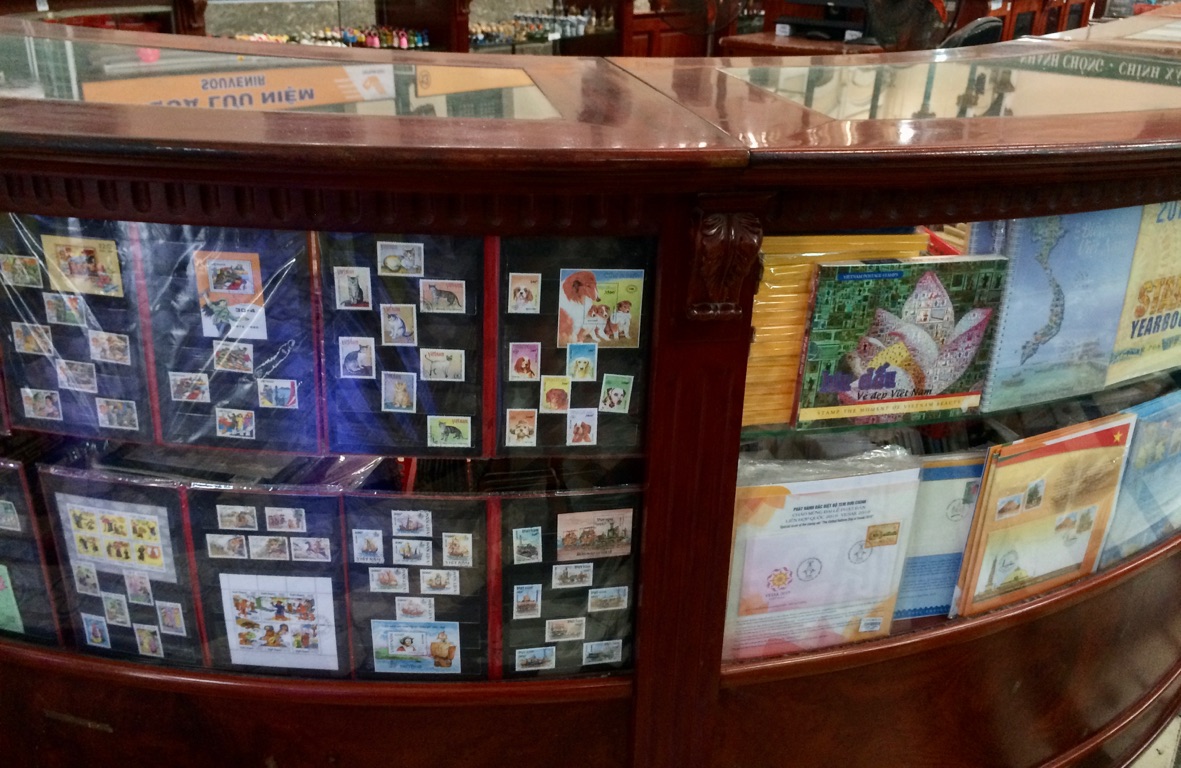
For all the people who grew up obsessed with stamp collections...
Next stop was the Jade Emperor Pagoda. As it was Tet, there were many visitors, and ‘lion’ dance performers. The temple is a place of worship for Taoism, Confucianism as well as Buddhism - not an uncommon combination and mixture of beliefs in Vietnam.
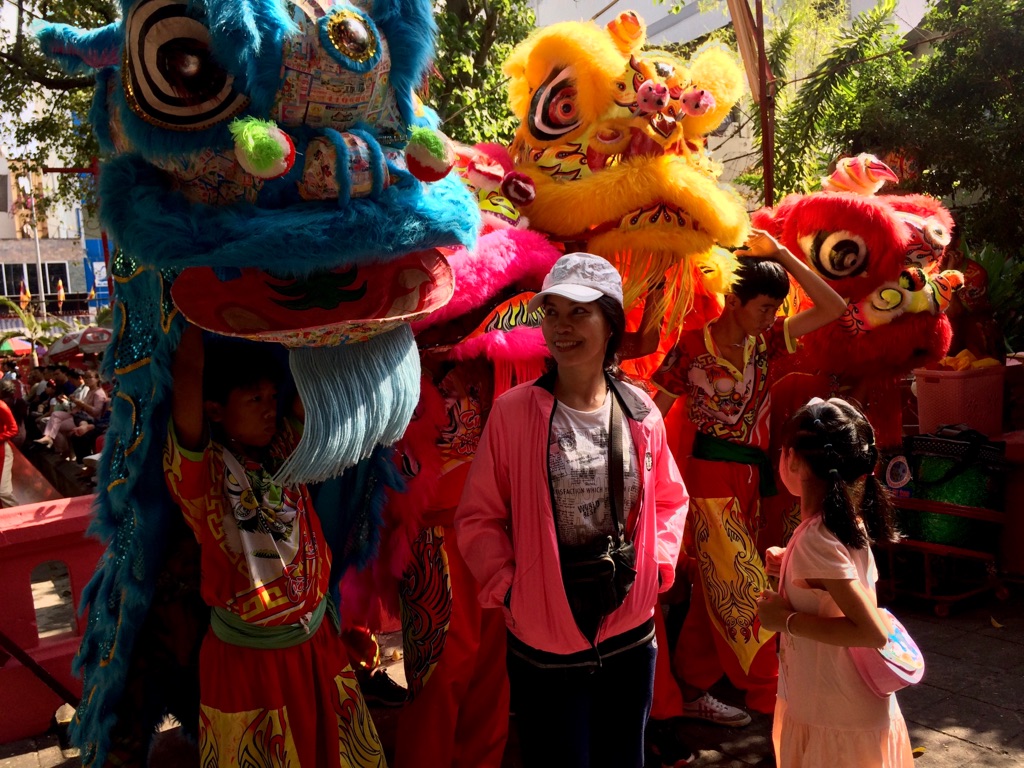
Bus to Da Lat
Today we moved yet again and began the travel north through Vietnam.
This journey was 7 hours by bus on Futa bus lines - on a comfy ‘sleeper’ bus, air-conditioned and with wifi. Well, the bus advertises that it has wifi but it doesn’t actually work outside a bus station! Other than that, the bus was great - everyone had their own sleeper, just like an overnight train. \240Very comfy and easy travel - and cheap. The bus ticket cost about $13 each.
Da Lat is a city of about 400,000 people situated in the temperate highlands, 1500 metres above sea level and about 320 km from Saigon. As a result of the altitude, it has a very mild climate year round and average temperatures of 24 degrees. Da Lat is the most visited city in Vietnam - by Vietnamese tourists!
It was a huge relief to leave Saigon and leave the intense heat, pollution and dirt behind - not to mention that dreadful rat!
Kate had made contact with a former work colleague at the Winnipeg #1 school division, who had returned home to Vietnam upon retirement, and so we made plans to visit during our stay.
We checked into our hotel. It was not quite what we expected - cheap, but certainly not cheerful!! The first really bad hotel choice in our travel. \240We had little choice but to stay for the night and suck it up, but we immediately went online and found something comfortable, clean and quiet close by. We moved in first thing the next morning!
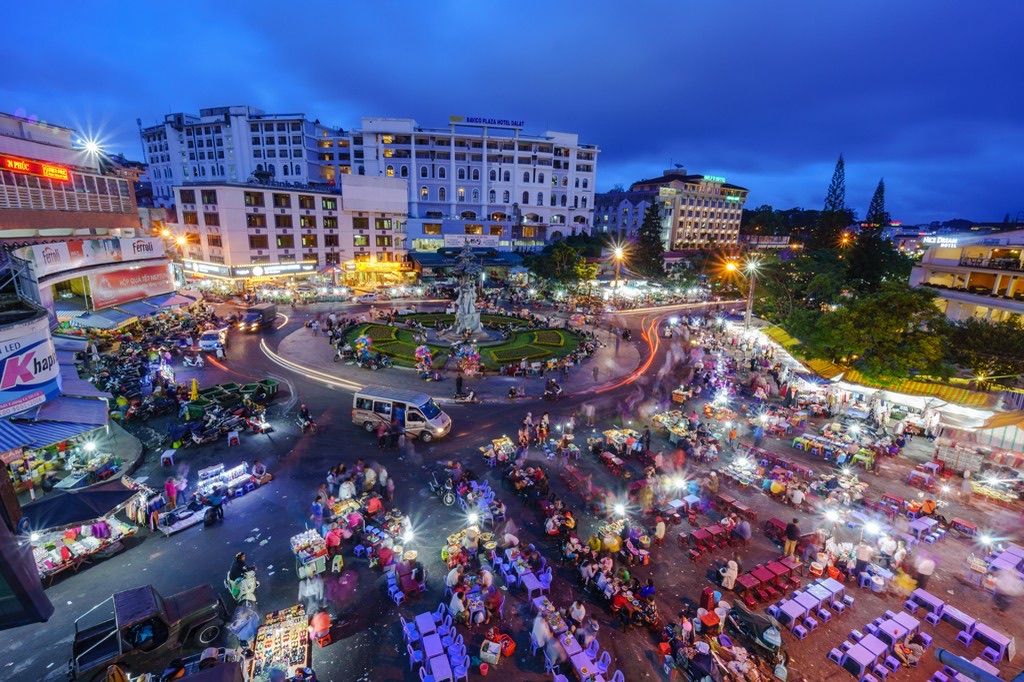
Finding our way again in Dalat
We packed up as quickly as we could and loaded our luggage into the trunk of the taxi we had hired for a day of sight-seeing around Dalat. Phew! Lucky for us we found another hotel on such short notice!
We have found that hiring a driver for a day is a great and relatively economical way to sightsee, particularly when distances are involved. \240We have also been lucky with drivers - they have all been lovely people who wait patiently and take good care of us.
The first place we visited was a bizarre sort of Disneyland-like ‘fun’ park.
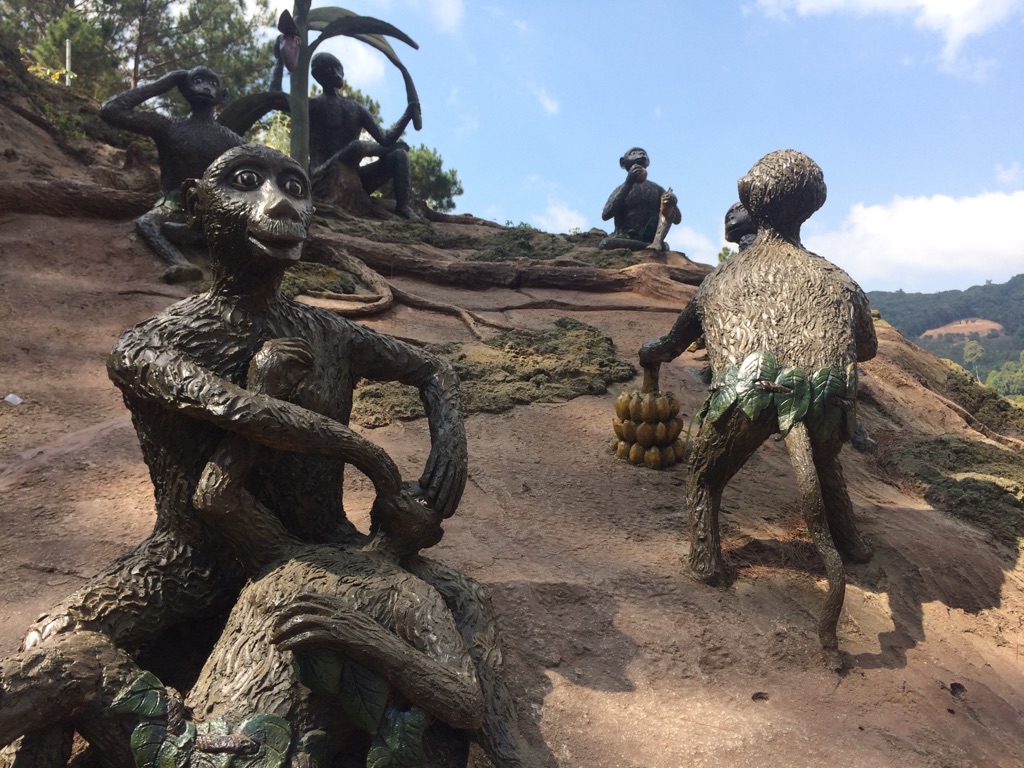
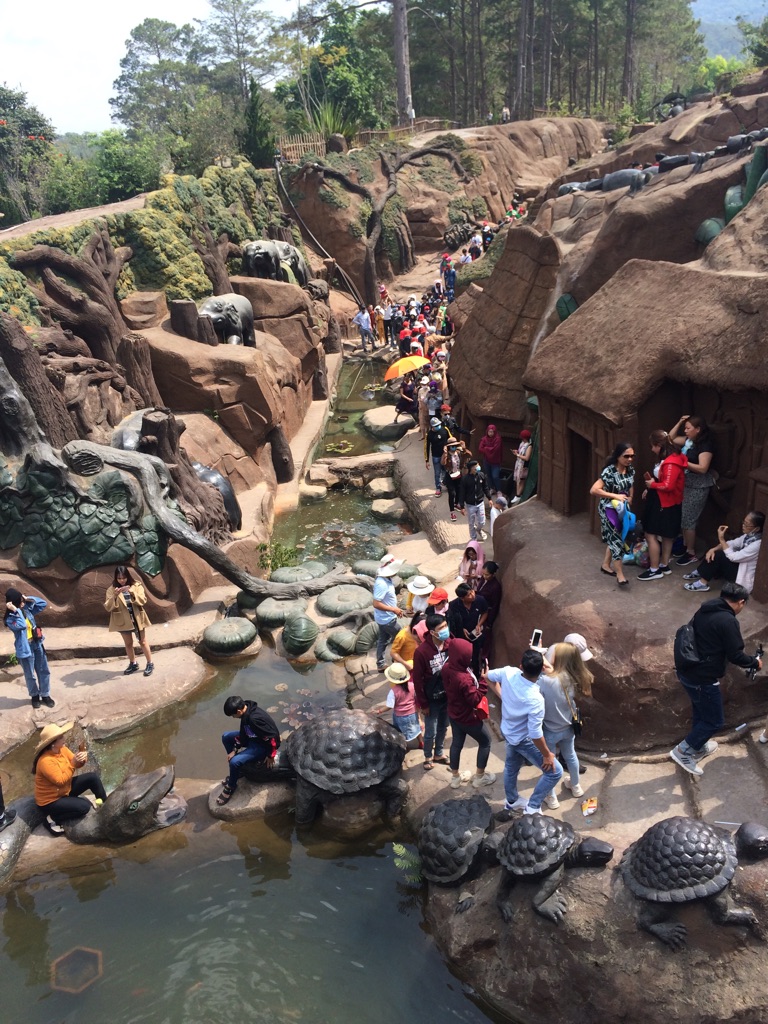
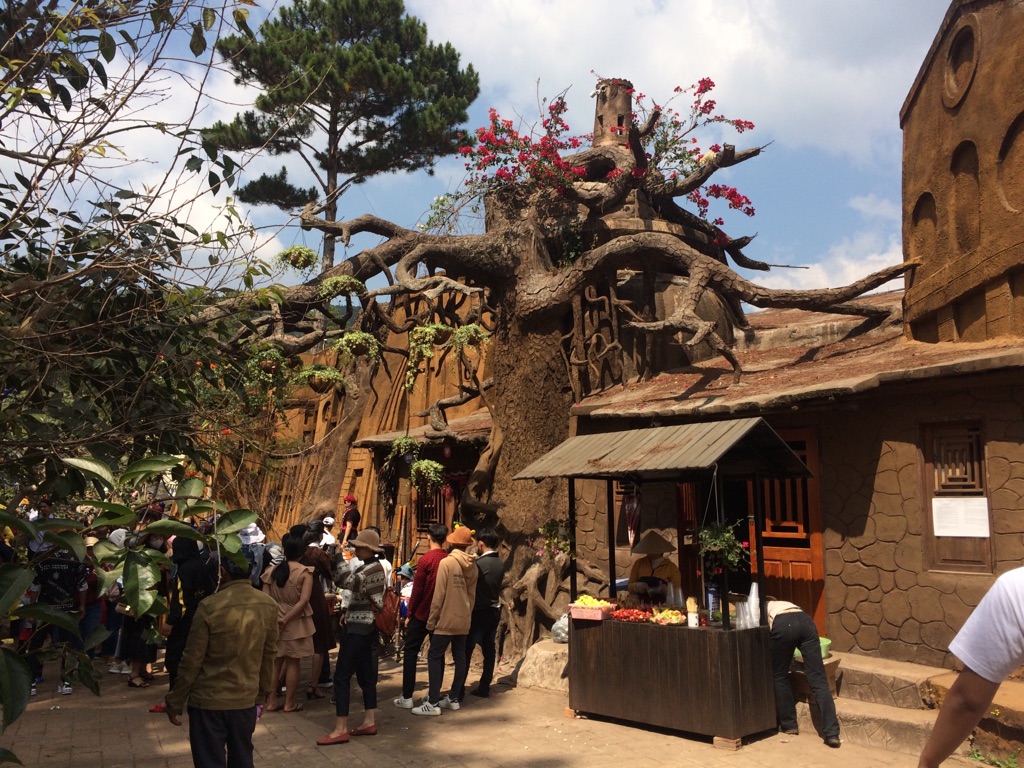
It was all just too strange and we did not stay long. \240Apparently, there are many weird theme parks all over Vietnam - people flock to them!
Then we visited 2 temples, one sublime, the other more of the weird and strange variety.
First the sublime: Truc Lam Phung Hoang Zen \240 Monastary.
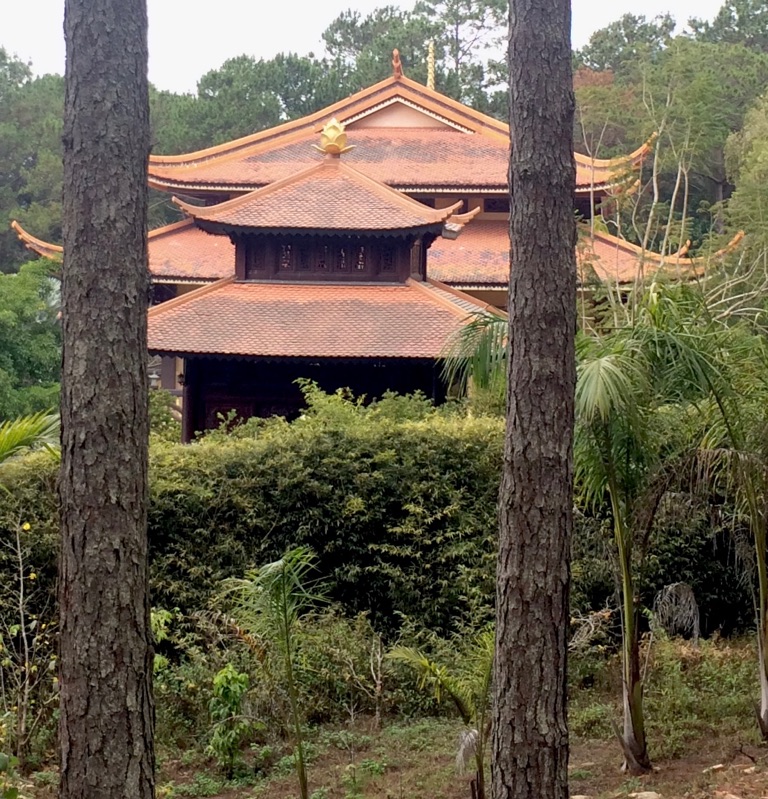
This monastery is surrounded by beautiful gardens - and it is easy to understand why Zen is part of its name.
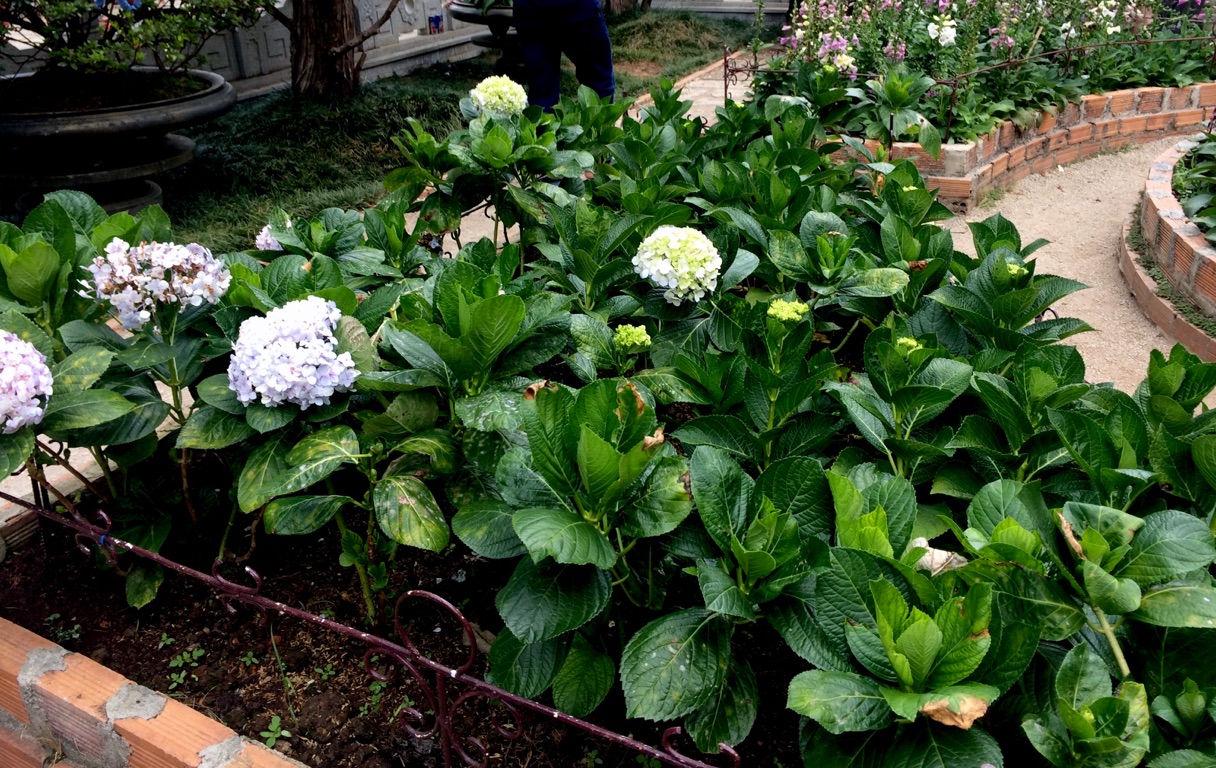

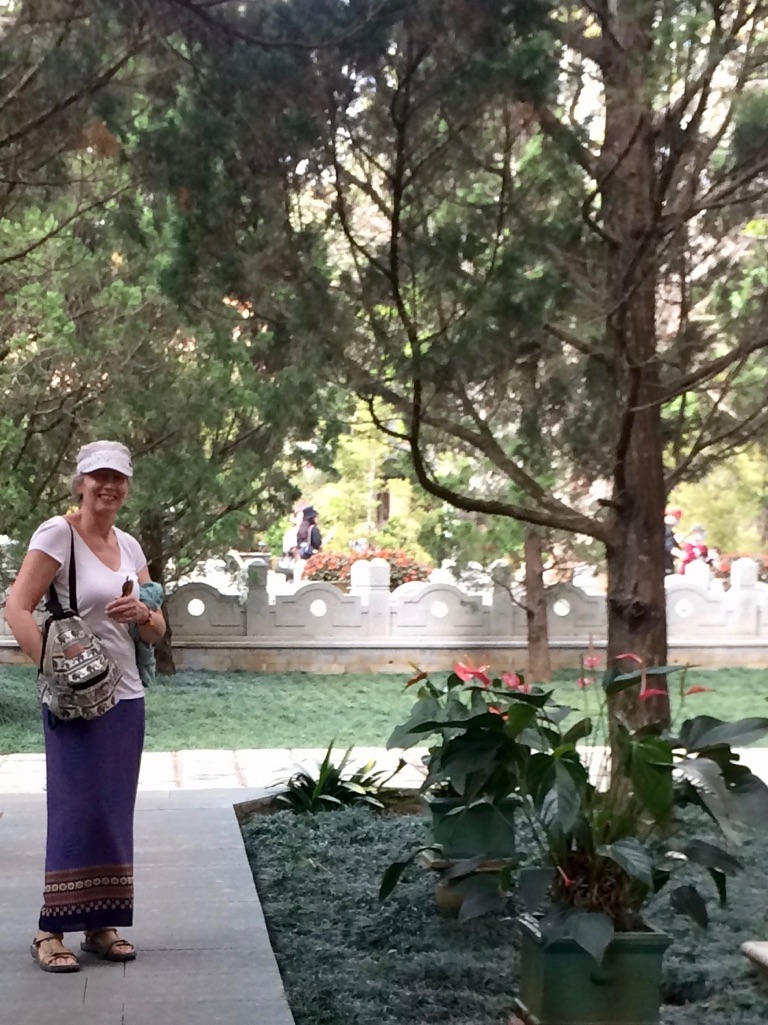
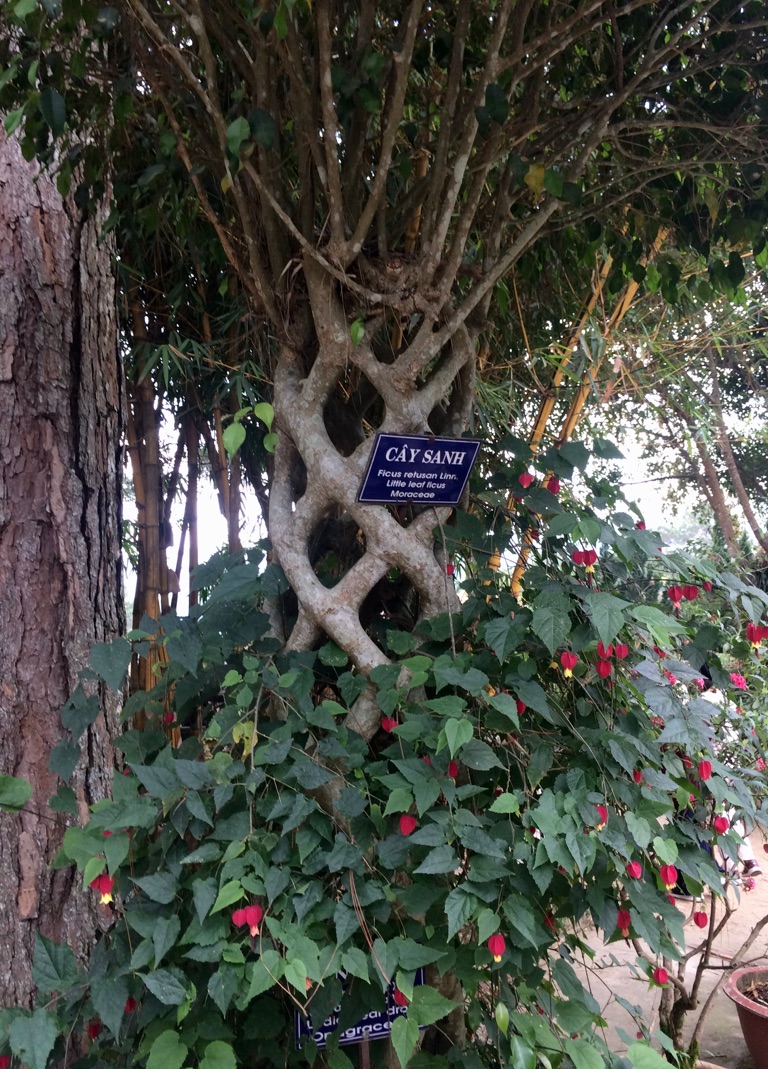
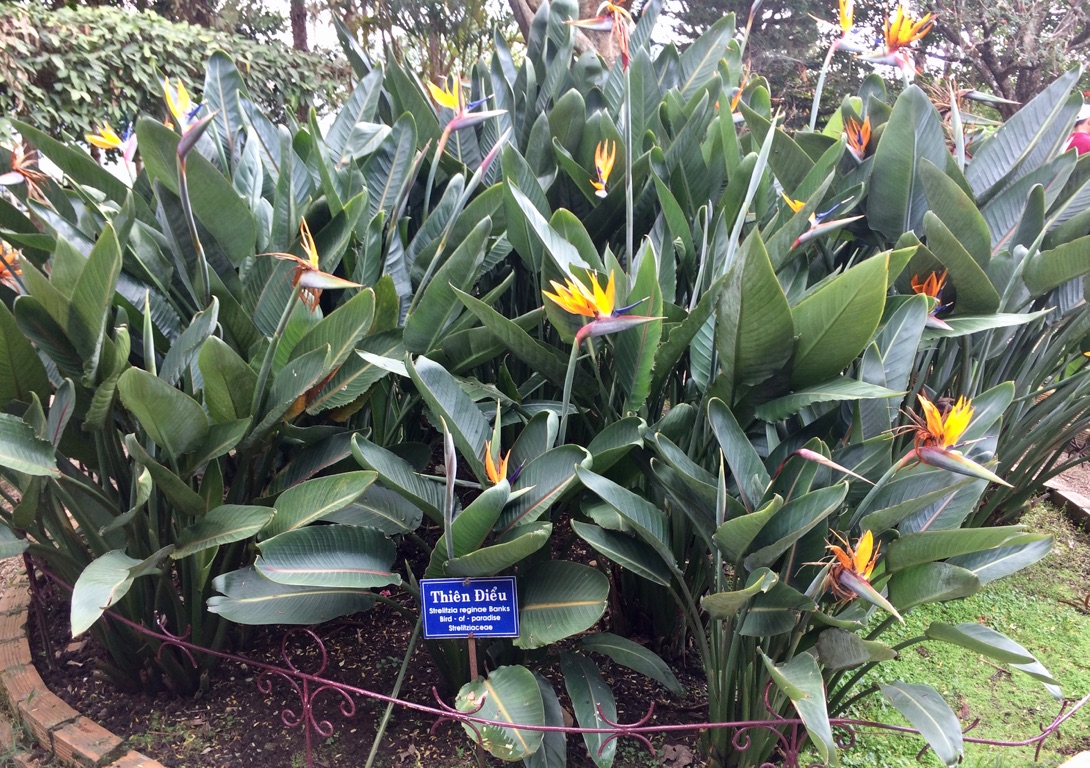
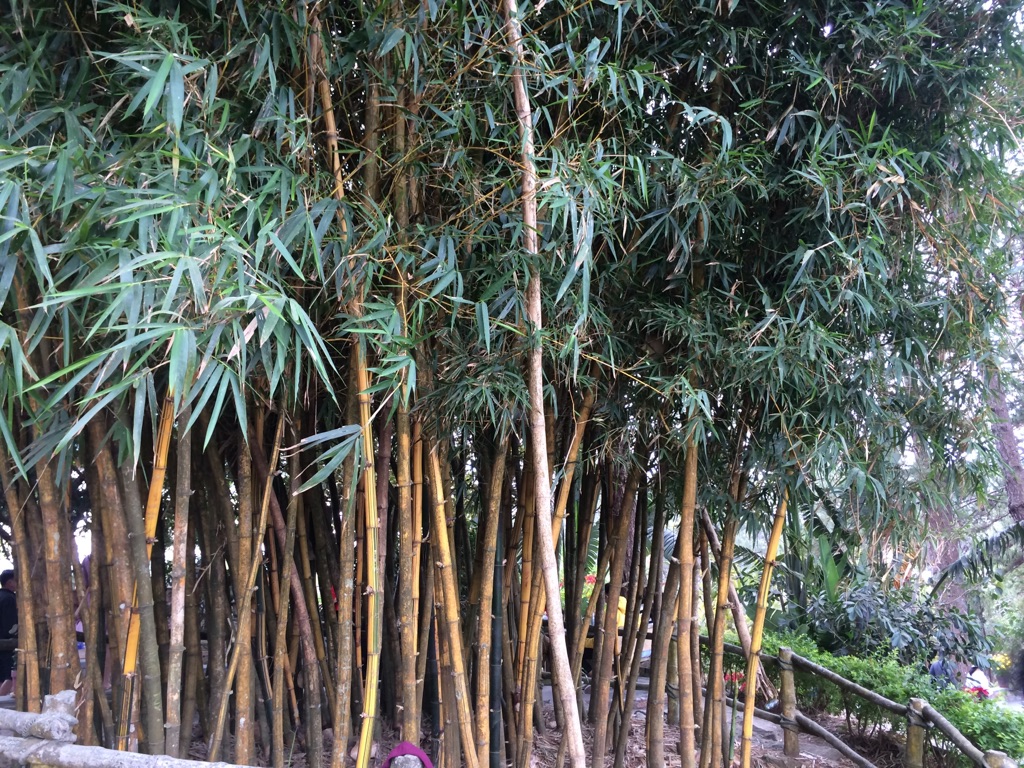
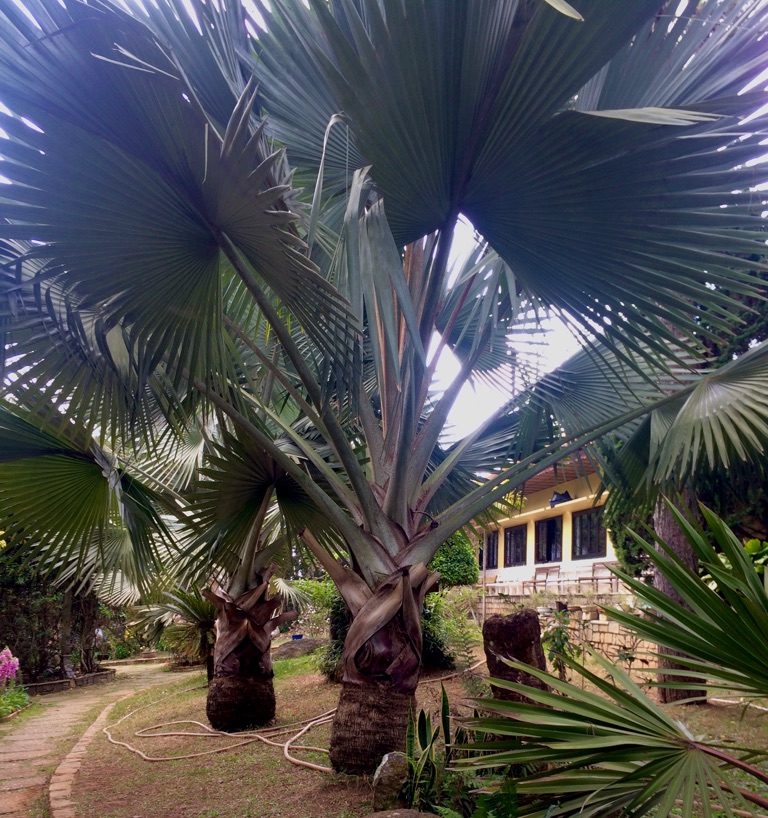

And then, onto the weird and strange...
We visited Linh Phuoc Pagoda - constructed in 1949 and described as being built of mosaic cobblestones.
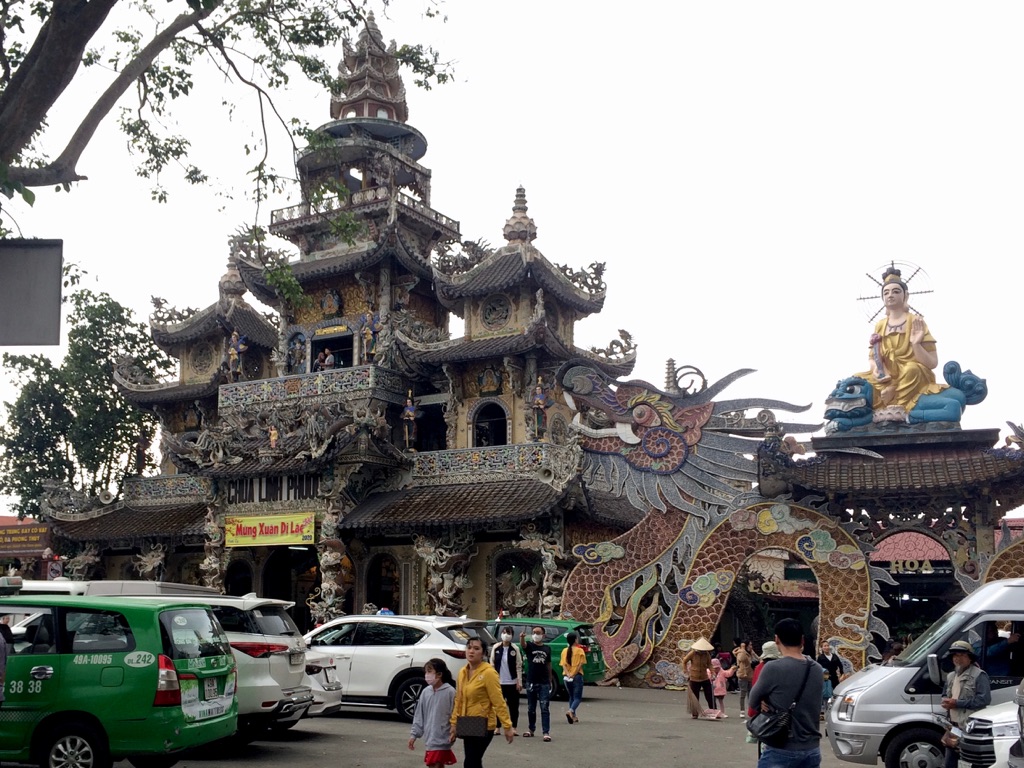
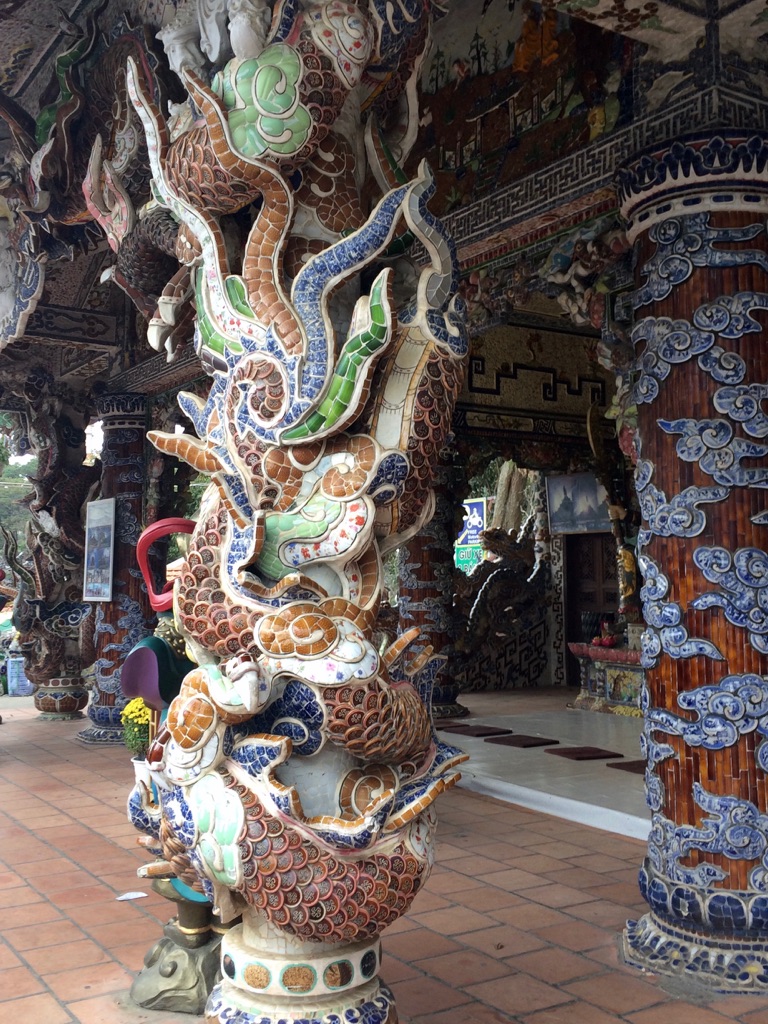
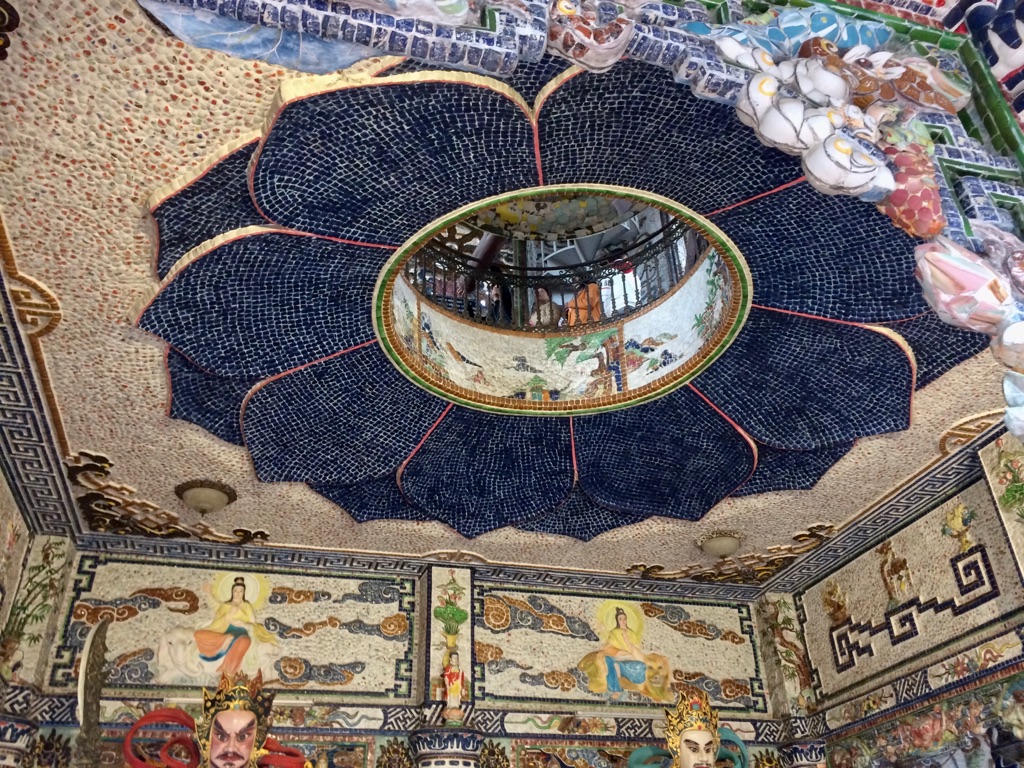

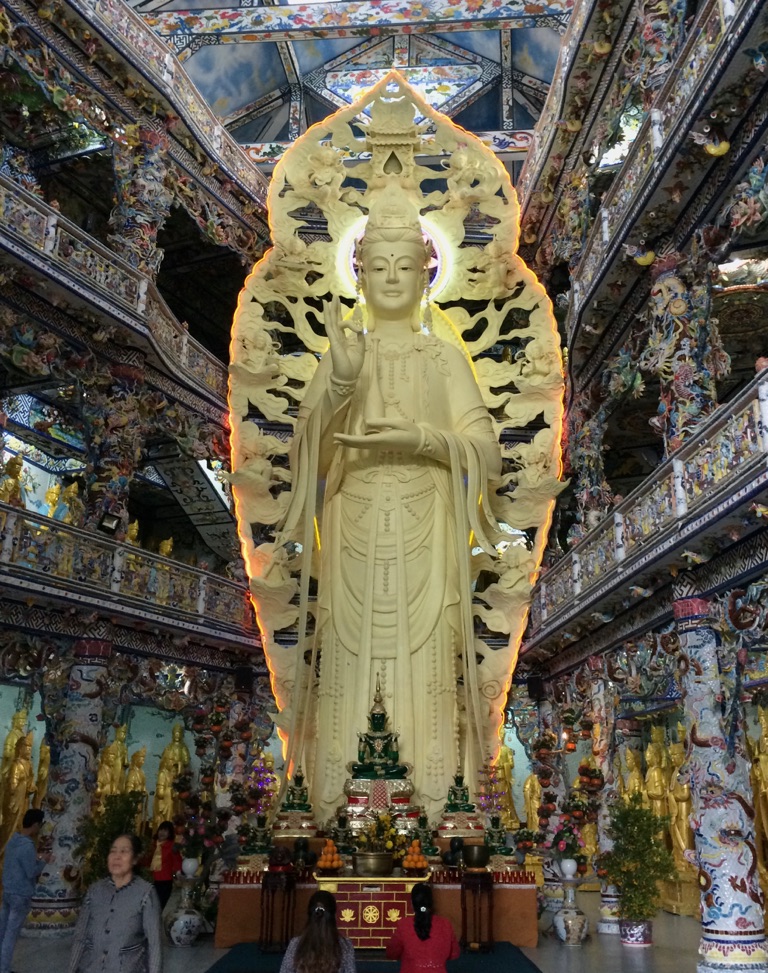


It was indeed very strange - beautifully crafted ceramic work - but almost a parody. \240Almost...
Food in Vietnam
I expected to enjoy the food in Vietnam, but it turns out that I don’t. Vietnamese people eat a lot of meat and most of it is cooked on a hibachi-type grill. In both Saigon and Dalat, we have walked past numerous restaurants and areas with ‘street’ food. I want to like it, I really do - but I can’t. I was prepared to only eat rice and noodles for the remainder of our trip!
Fortunately for us, on the 2nd day we were in Dalat, Kate found a review of a small restaurant called ‘Brew and Breakfast’ on google maps. It is a vegetarian restaurant with a fabulous menu run by 2 ex-pats; 1 Brit, 1 American.
Off we set to find it.
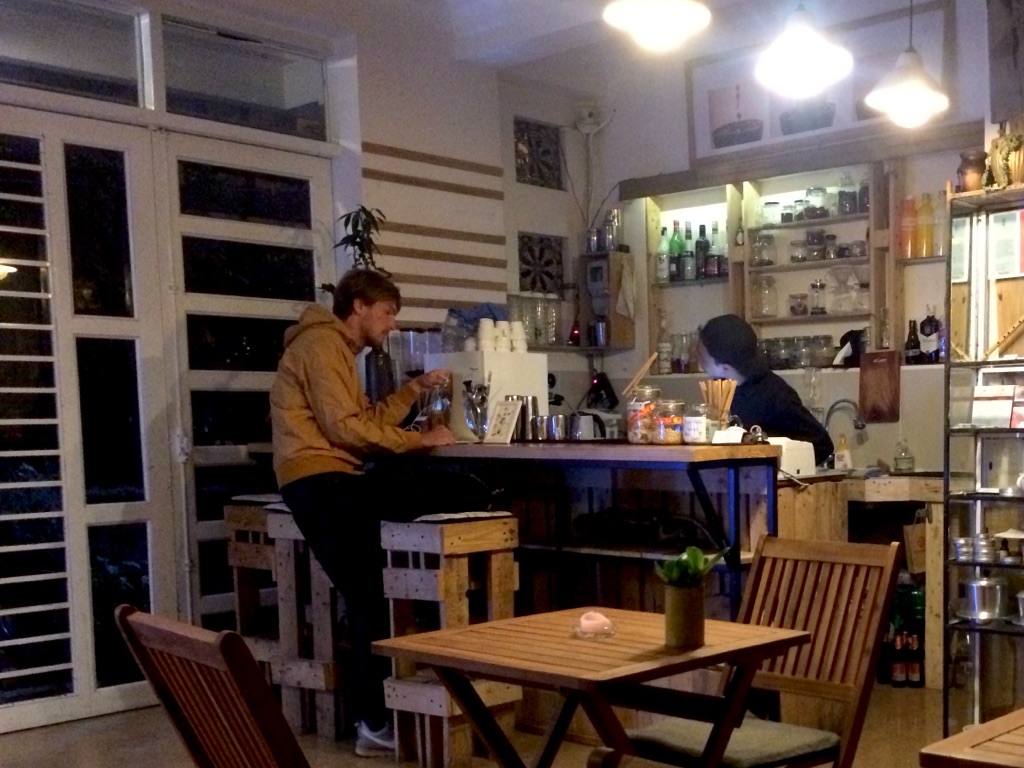

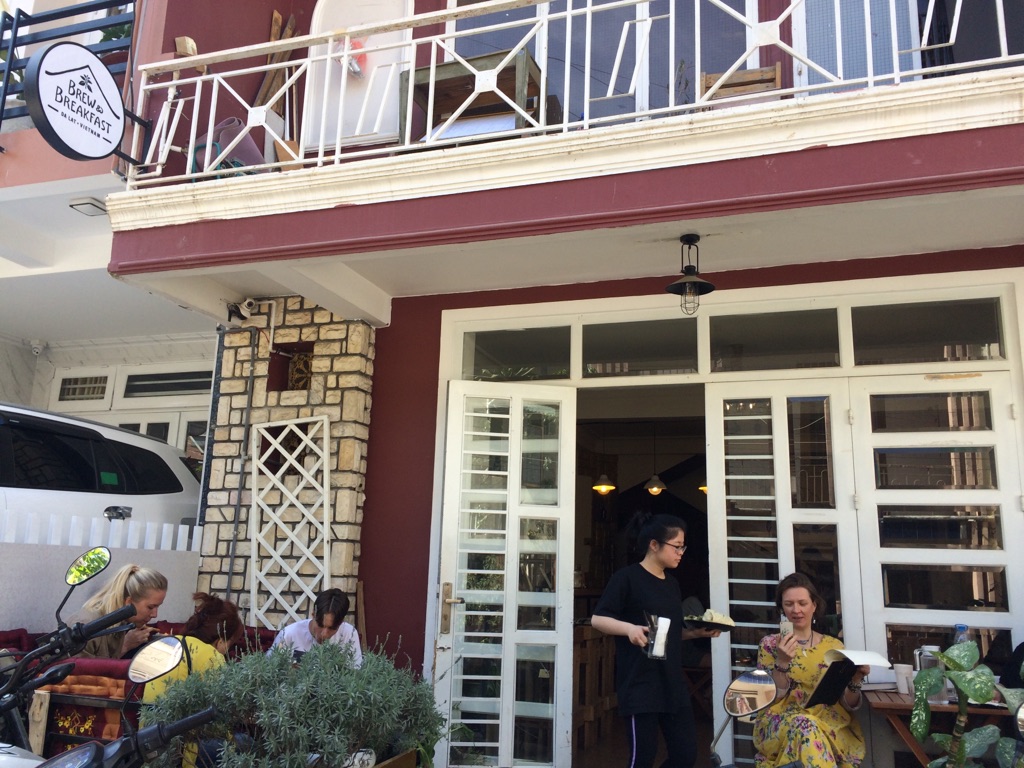
This place saved my life and restored my confidence in food again. They even had really good craft beer - a huge treat after months of lager!
The menu is great, the prices are reasonable, the staff are fabulous and they play really decent music. \240We have eaten there 3 of our 4 nights in Dalat.
Because there is also a small hostel attached, they also offer laundry services - so we even got our laundry done!
A baker and a French bakery
On our first day in Dalat we found a small coffee shop where we tasted the most delicious croissants and lattes. So, each day, we have frequented this little coffee shop which sits charmingly on the side of the street a few metres from our hotel.
Dung, the owner, told us about his wife’s bakery, ‘le petit bonbon’, which had just opened. Coincidentally, as we walked home from dinner and walked past ‘our’ coffee shop, we met Fung, the baker and wife of Dung. She invited us to come to the bakery for coffee and croissants. So, today was the day for the walk across town to visit.
Walking anywhere in Dalat requires route planning and careful street crossing due to the scourge of out of control motorcycles and scooters. No sidewalk area is safe for pedestrians. Not only are the surfaces wildly uneven and broken, scooters drive up onto them at will and whenever the roads seem otherwise too busy!
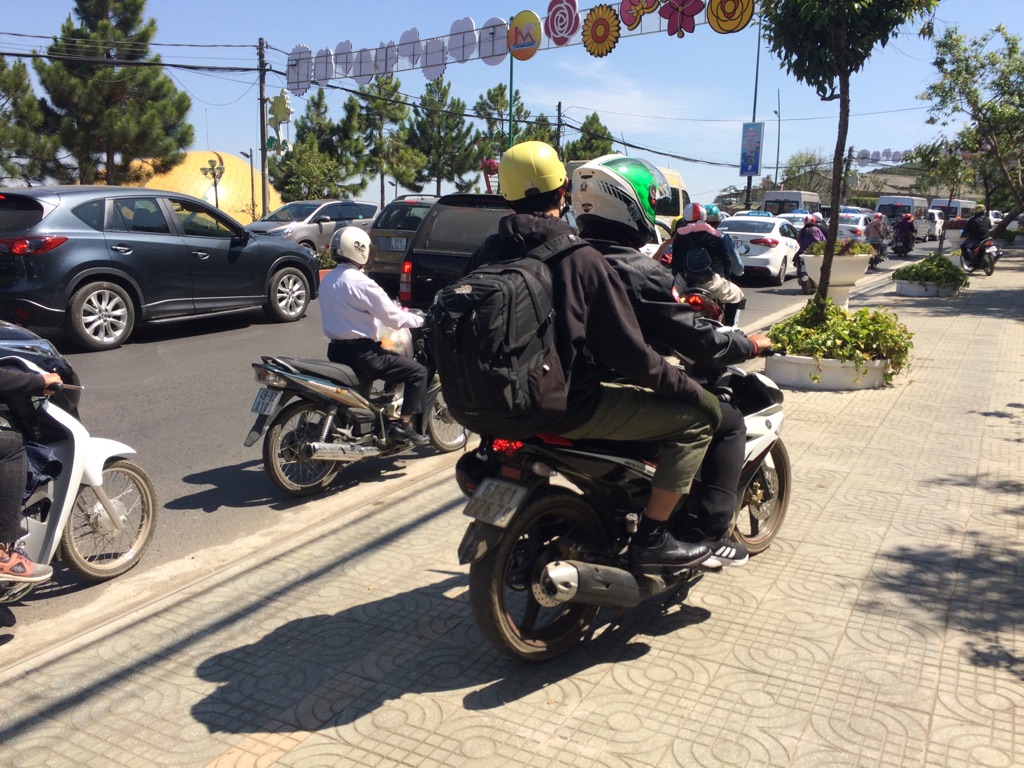
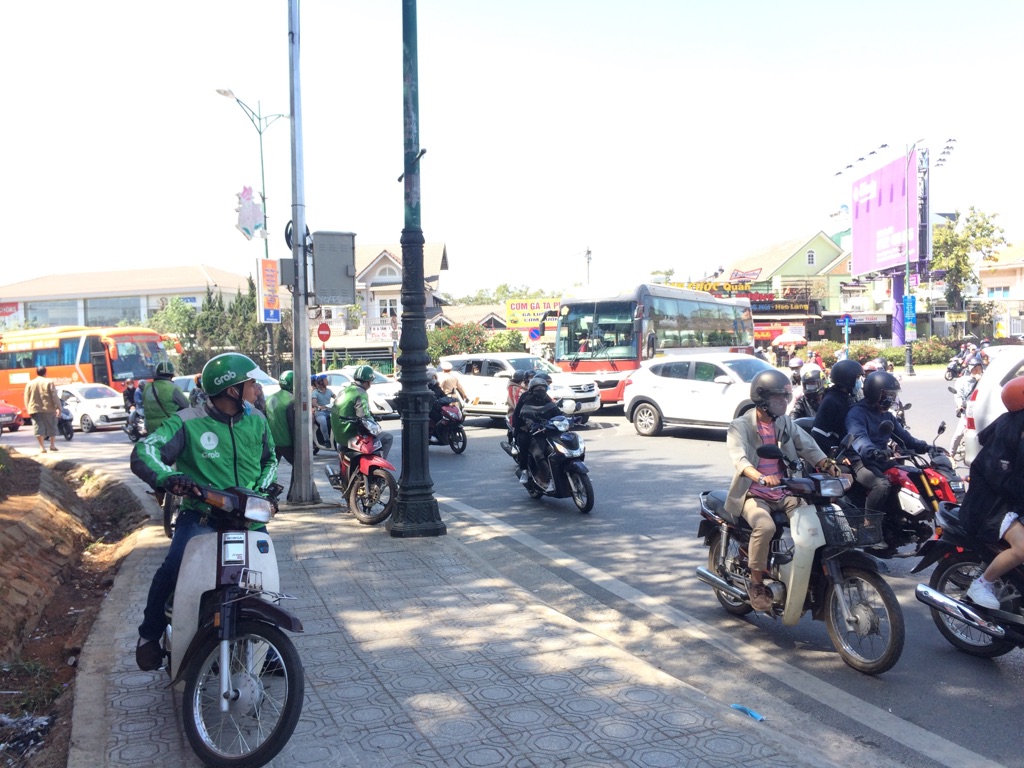
There appear to be no traffic rules which apply to scooters. In this city of 400,000 people there are no stop or yield signs and only 1 traffic light. It is sheer madness and I will never look at traffic the same way again.
However, we braved the traffic - which has become somewhat of a challenge now - and walked 45 minutes across town to Le Petit Bonbon. We were not disappointed.
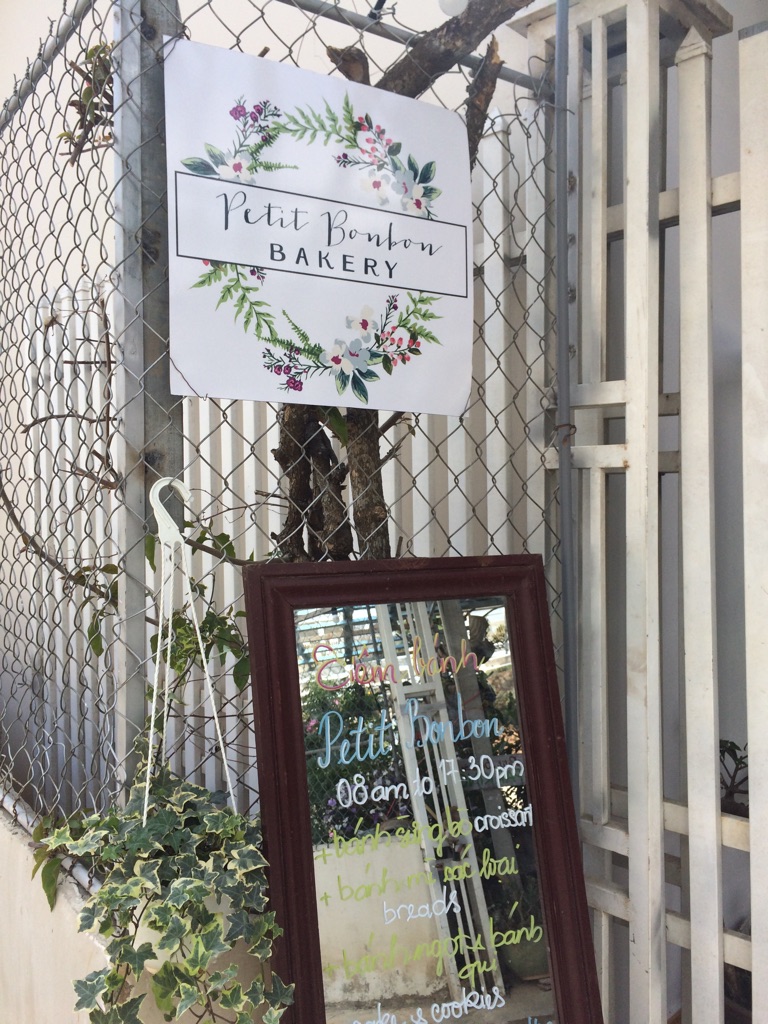
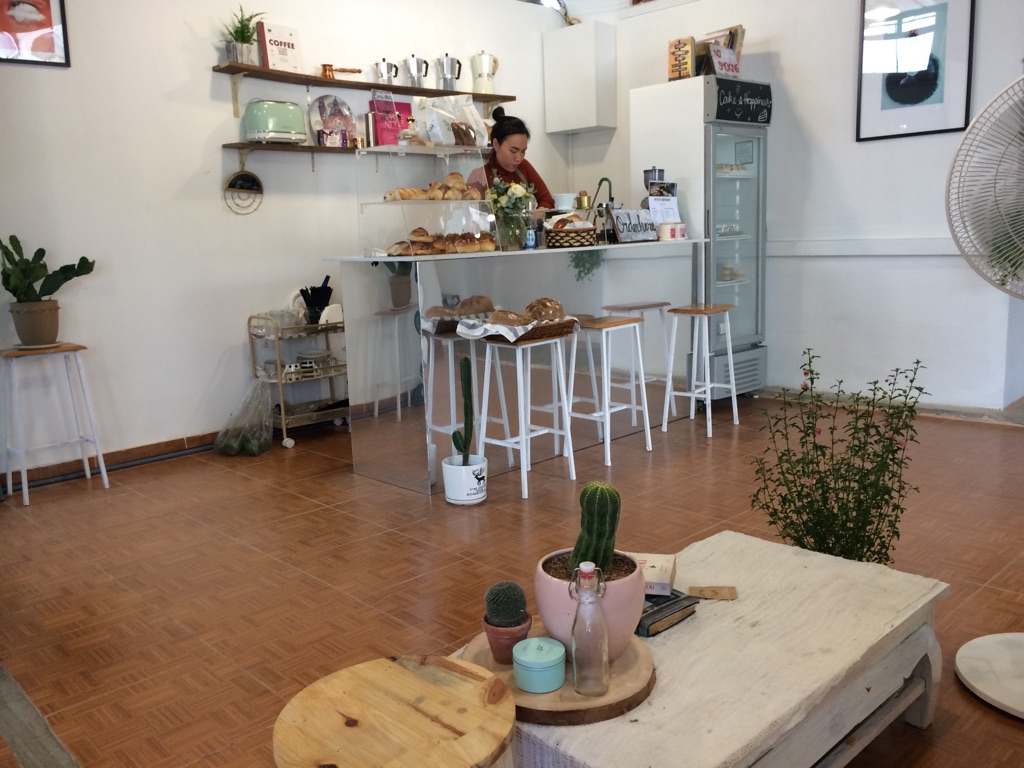
The delightful Fung, the master baker...
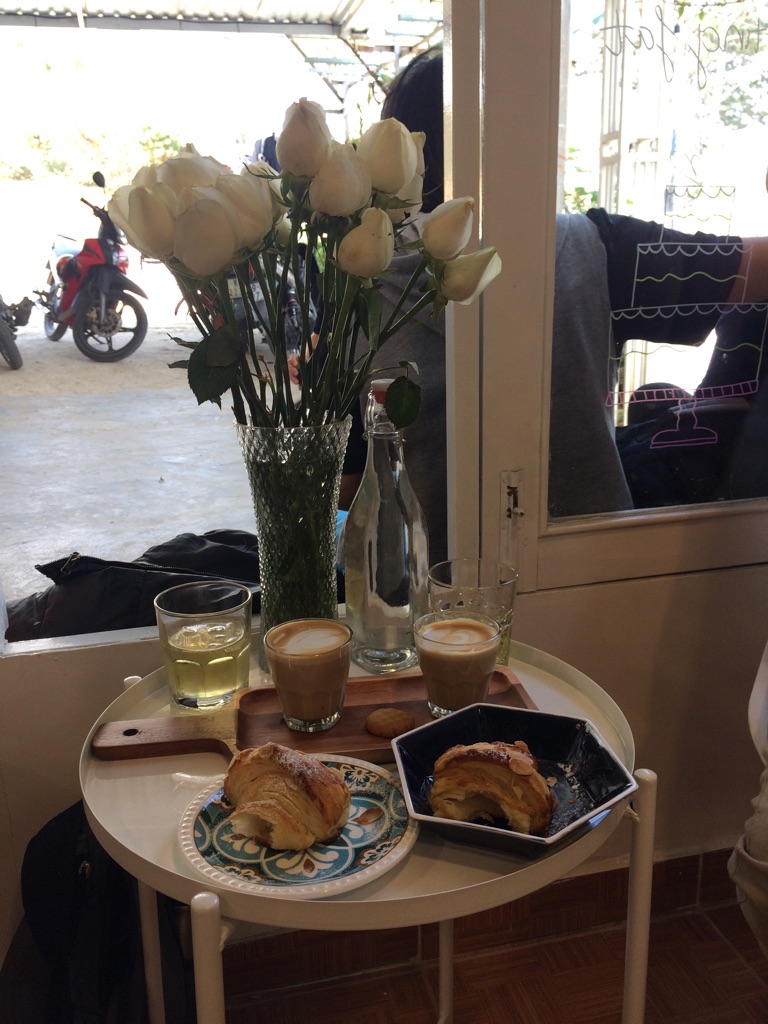
Fantastic croissants and lattes...

Dung, the coffee maker and Fung, the baker...
These 2 young people possess the entrepreneurial spirit in spades.
Dung has developed a coffee machine which he has now patented and he is on a mission to bring ‘clean’ coffee to Vietnam - coffee without chemicals and without sweetened condensed milk.
Fung, who has a degree in tourism marketing, is a self-taught baker from books and cooking programs. She moved to Da Lat from Saigon to marry Fung and baked croissants all day for months to perfect her recipes. She also has a repertoire of tiramisu, mousses, cheesecakes and gorgeous breads. Fung is also using creative marketing techniques to grow her business and enlarge the traditional tastes of Da Lat.
We want to smuggle them back in our suitcases when we leave for Canada!
The Crazy House
The real name is Hàng Nga guesthouse - but it is known to everyone as ‘the Crazy House’. It was designed by architect, Dang Viet Nga, who is said to have been influenced by Antoni Gaudi and Salvador Dali. It is also noted as one of the 10 most bizarre buildings on many travel lists! \240The design is based on a tree and is comprised of surreal sculptures and structures. It also rents out theme rooms as a guesthouse.
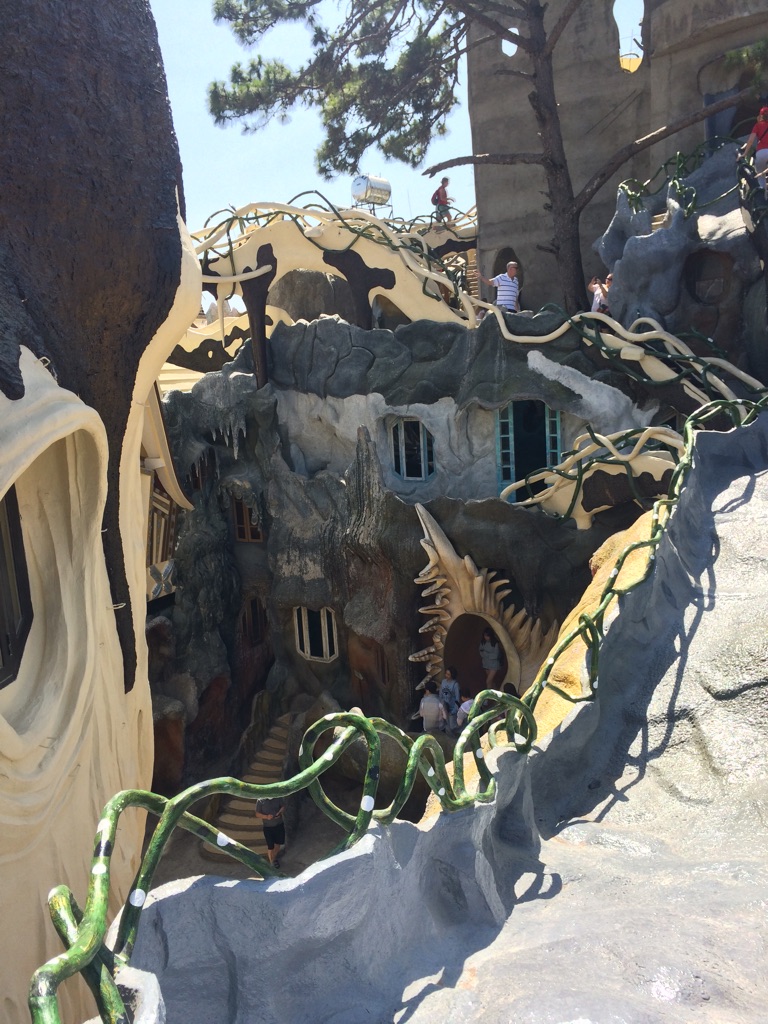
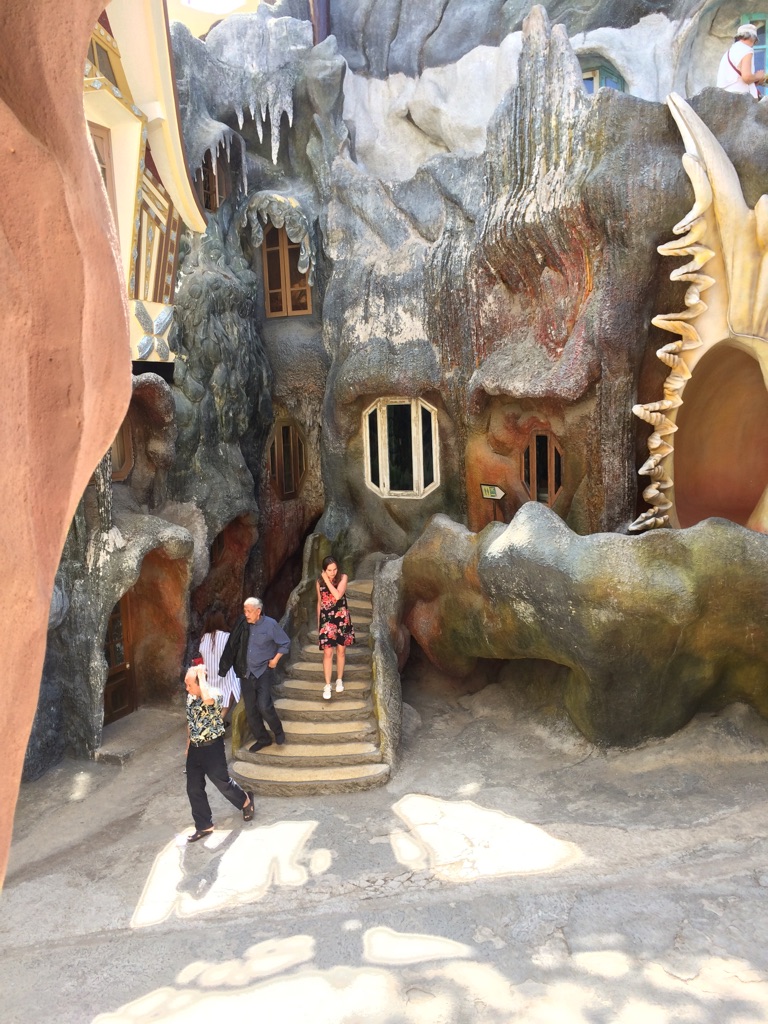
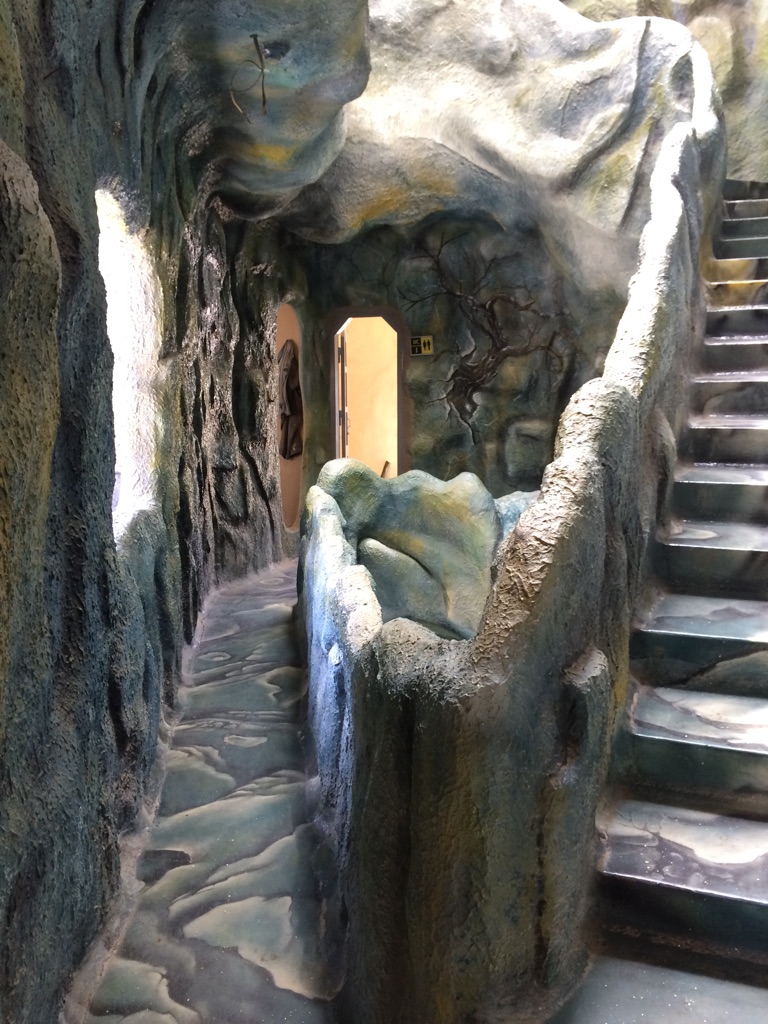
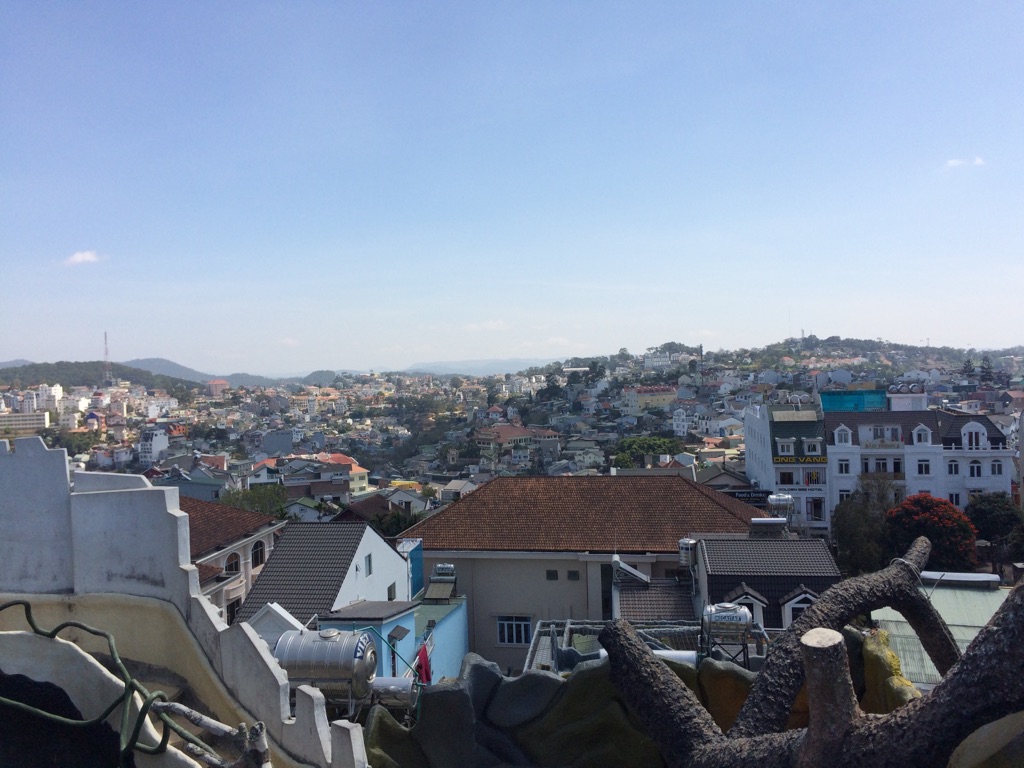
It is truly strange and I can’t say that I like it but the view of the city from the rooftop was stunning!
Dalat is known for it’s beautiful hydrangeas and market gardens which produce much of the fresh produce in Vietnam. \240Throughout the city there are fields of huge fabric-covered raised growing beds - the white cylinders in the foreground of the photo below.
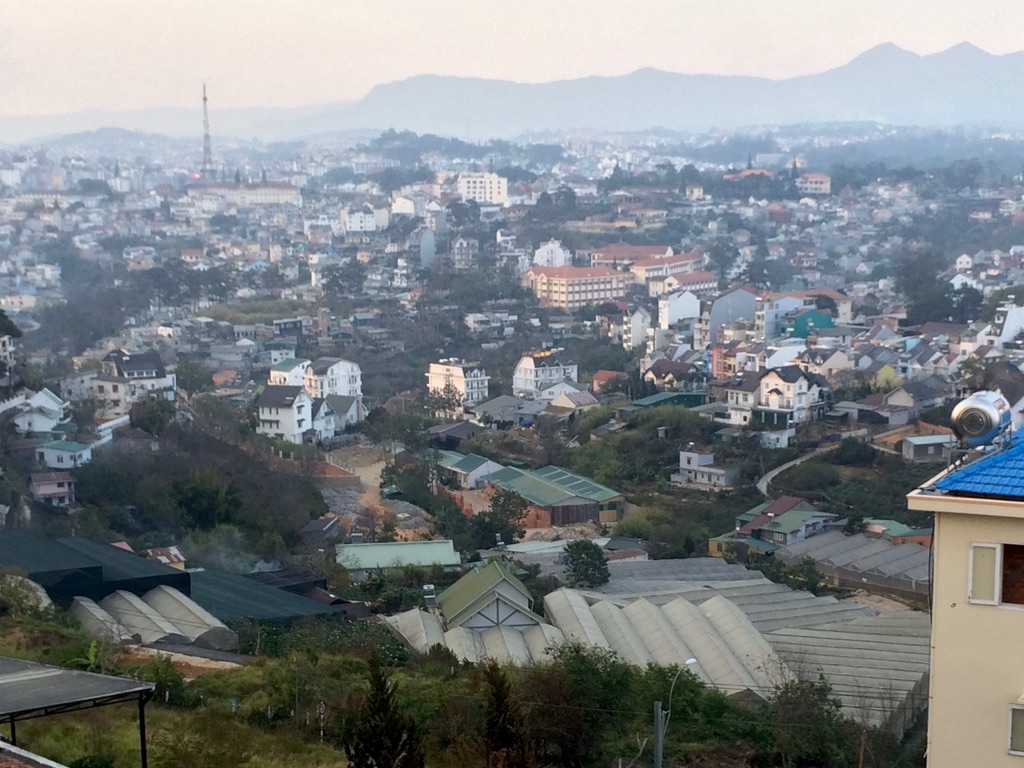

And the lovely hydrangeas...
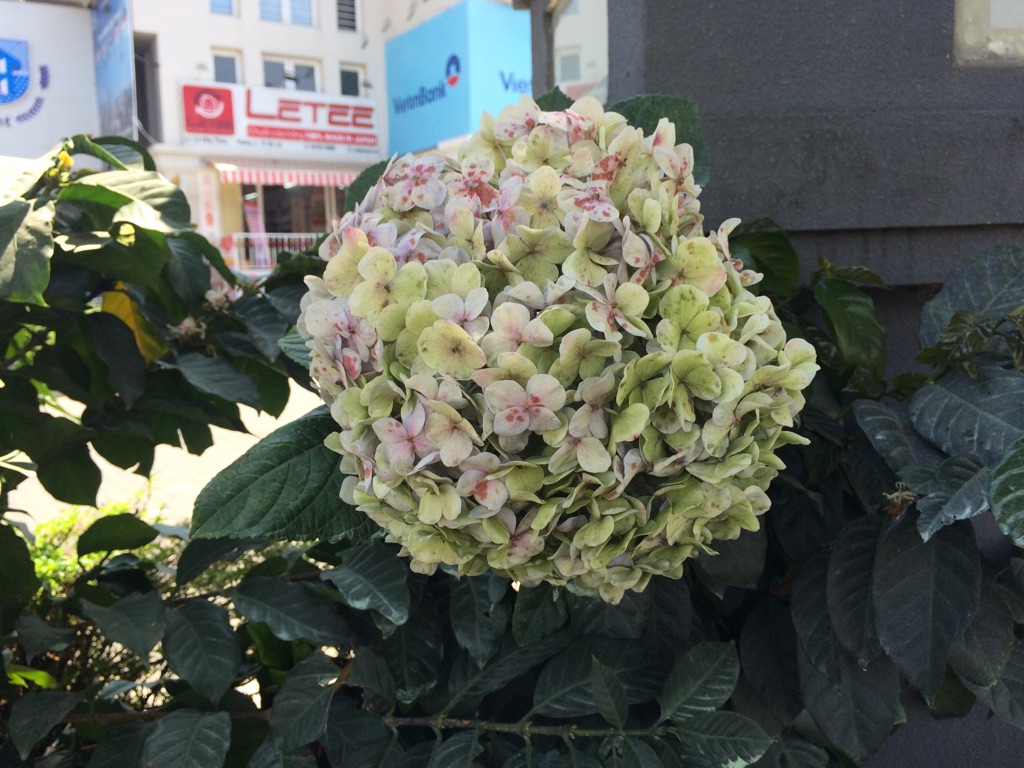
This is the last day of our time in Dalat - so 2 photos of our favourite places:
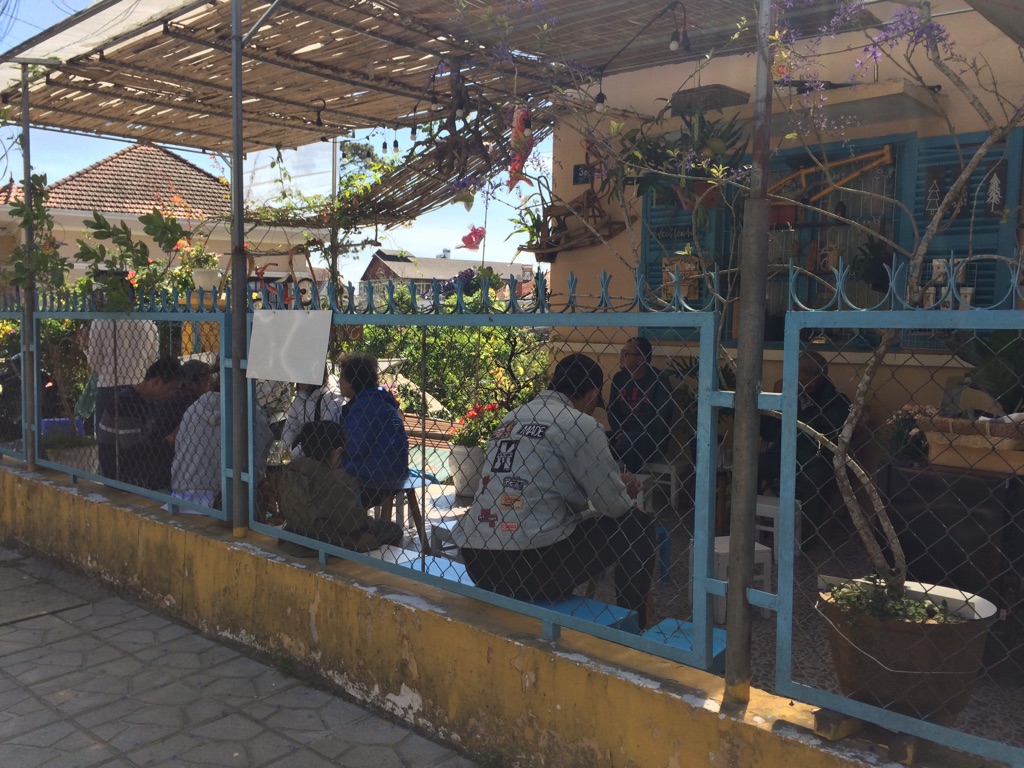
Our lovely ‘hole in the wall’ outdoor coffee shop...

And the menu of our ‘brew and breakfast’ restaurant, which surely saved my not cast-iron stomach and gut!
Travel day to Da Nang
Today we fly to Da Nang to start the central coast area part of our trip. This means beautiful beaches which we will very much enjoy.
Travelling through Asian airports seems to be fraught with long queues and waits, even when flying domestically. At least this time we have no border control and visas to check. We have also simplified getting to the hotel by requesting a driver to pick us up in Da Nang. We seem to be getting ‘softer’ as we go along - or maybe we are just a bit tired!
At first impression, this city of 1.1 million people looks very modern, clean and without the terrible traffic of both Saigon and Dalat.
We quickly arrived at our home for the next 4 days - the Eco Green Hotel. Gorgeous! A few blocks from the beach and just look at this view from our 7th floor balcony, right before sunset.
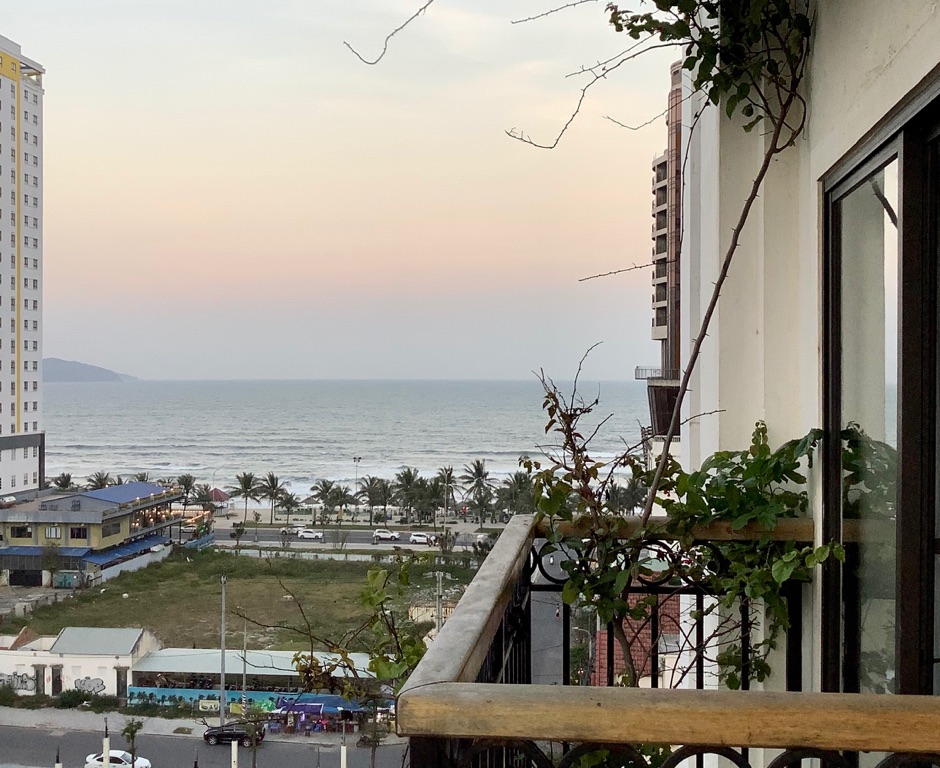
And here is the city view just before heading out for dinner.
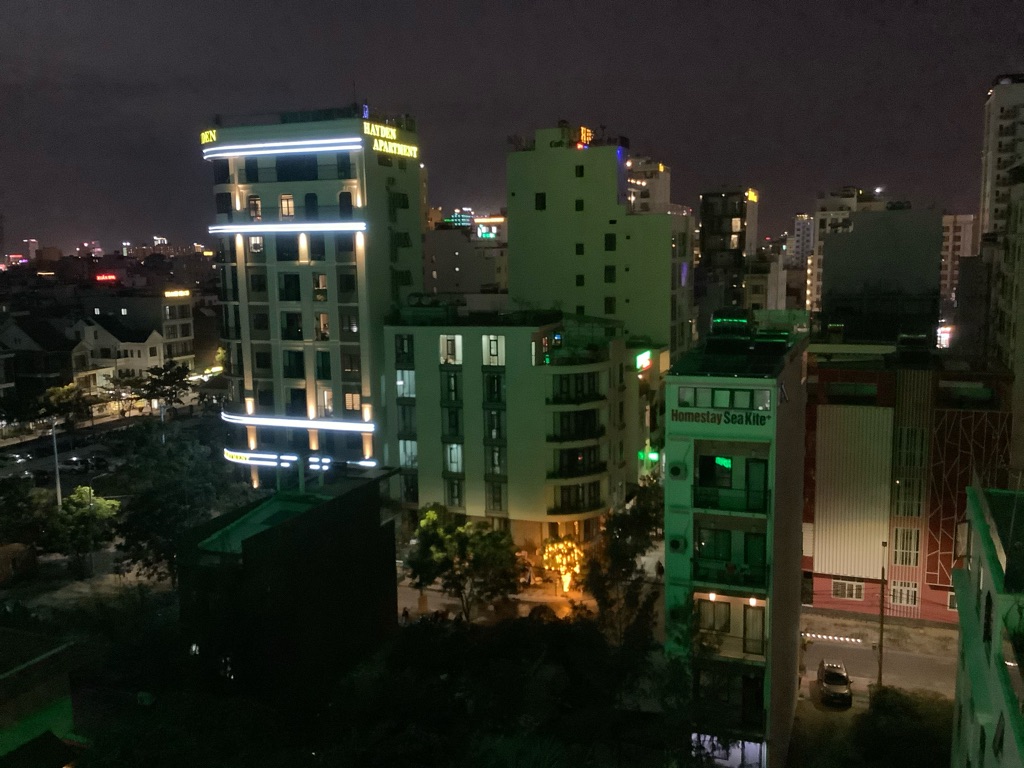
China Beach
One of my very favourite television series was ‘China Beach’ (late 1980’s) - and here it is - the actual beach for which it was named - 20 miles of gorgeous sand and pure heaven, and only 2 blocks away from our hotel.

First sight of ‘our’ beach...
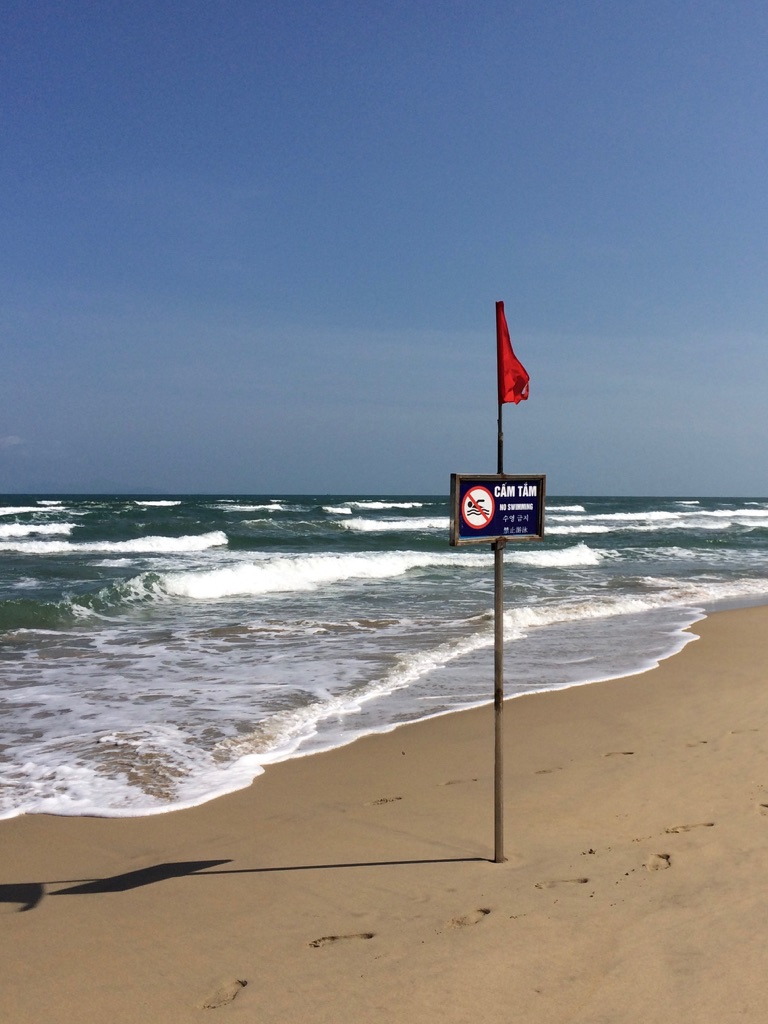
Incredible surf and undertow, so a warning...
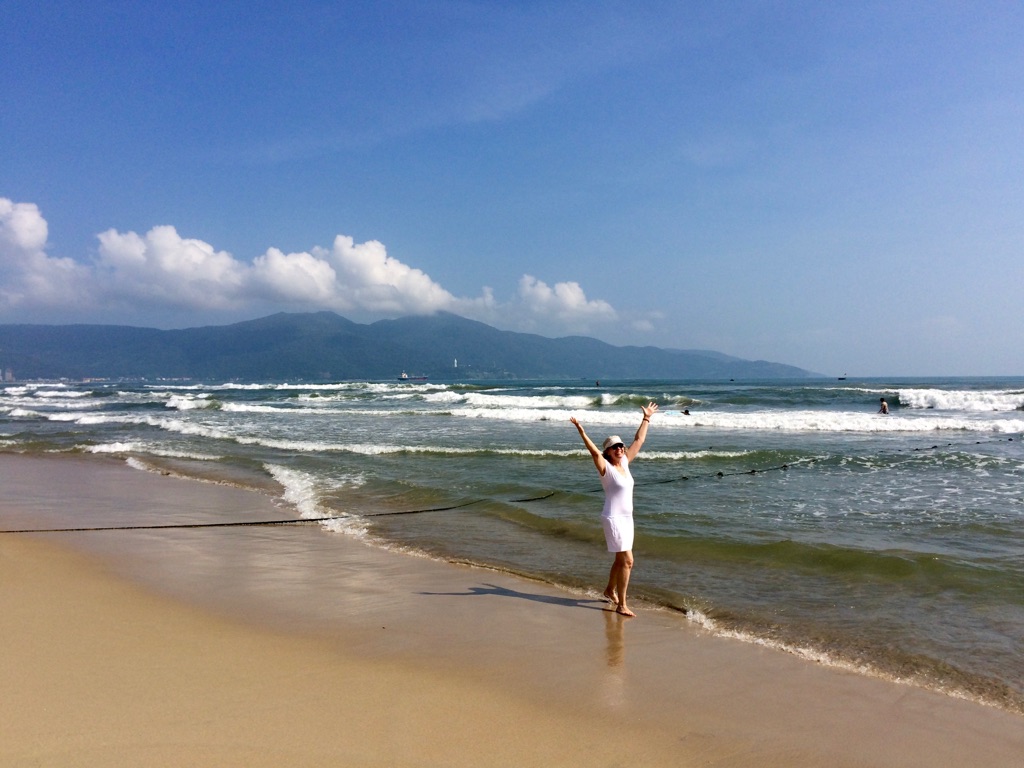
Kate saying she is having a really good time...
So, we have decided that for the 3 full days that we are in Da Nang - this is where we are spending it!
China Beach was given its name by American troops during the Vietnam war - as it was the place they were sent for ‘rest and relaxation’. The actual name is My Khe beach and it is considered the most picturesque in all Vietnam!
We heartily agree!!
The daily temperature is 27 degrees, with sunset at 5:45 p.m.; sunrise at 6:05 a.m., and we are hoping to be there tomorrow morning!
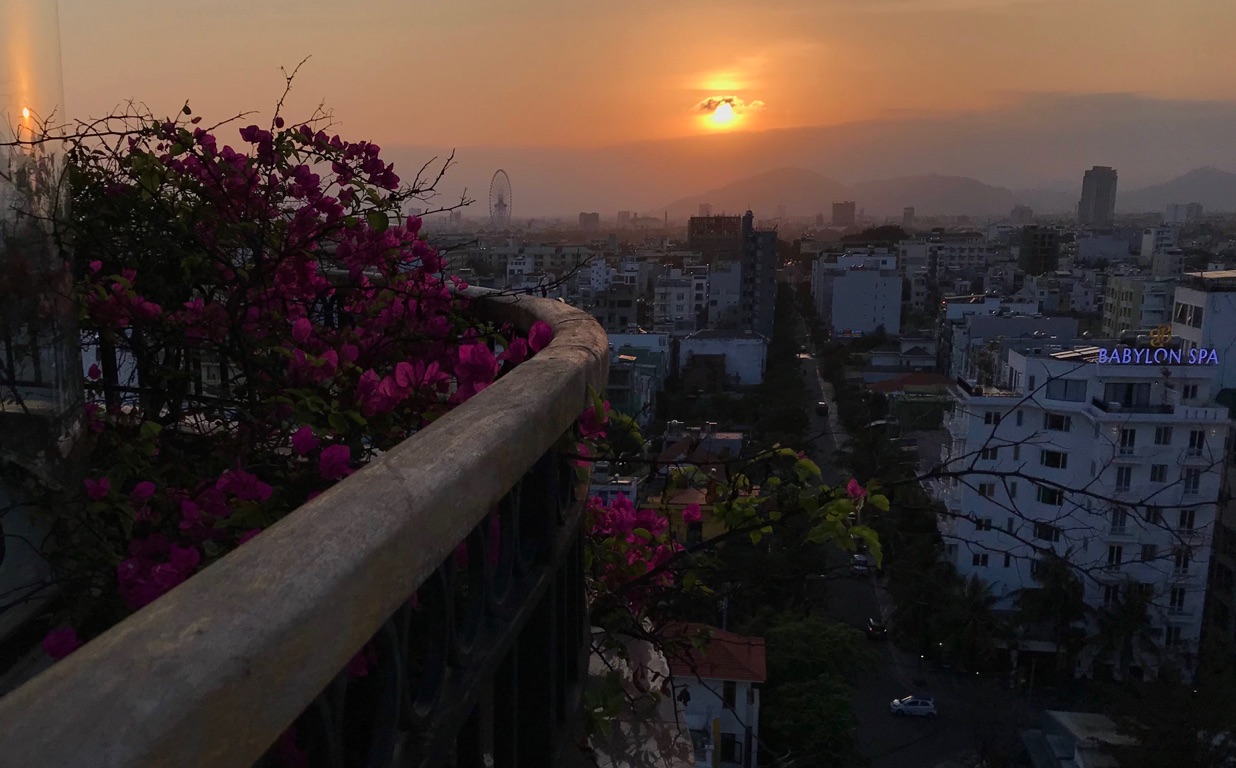
And the requisite sunset!
Cloudy day at the beach
25 degrees at 10 o’clock and a gorgeous day to walk the beach.

Now 4 o’clock in the afternoon and we are at the beach - no more clouds - just beautifully sunny, temperate and breezy - and we are here to experience the sunset and watch the waves and the tides! Things don’t get much better than sitting on or walking on a beach on the East Vietnam Sea.
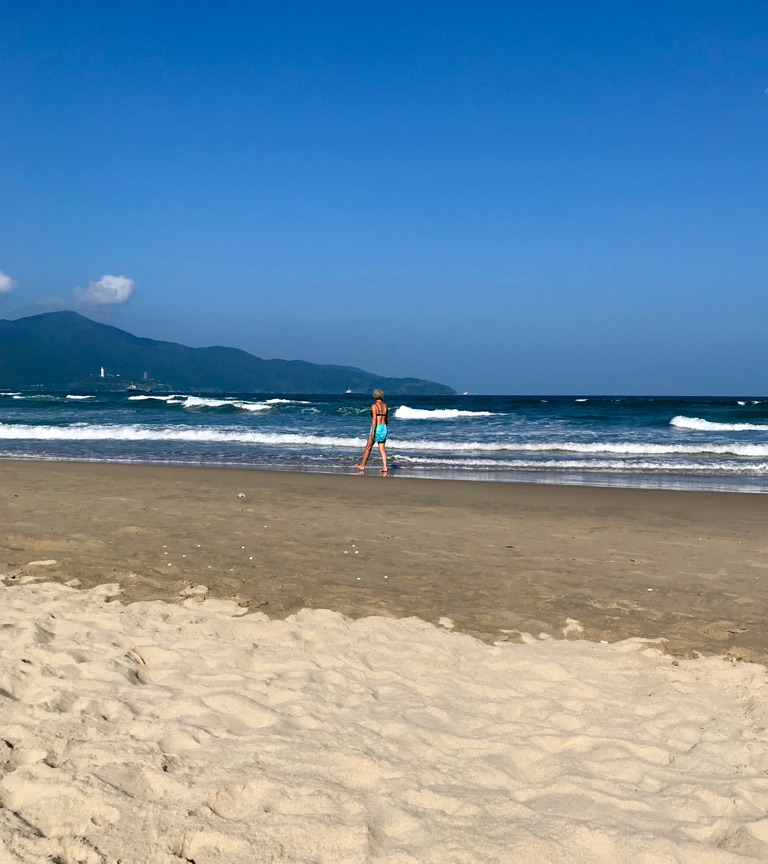
My most favourite activity - walking the beach...
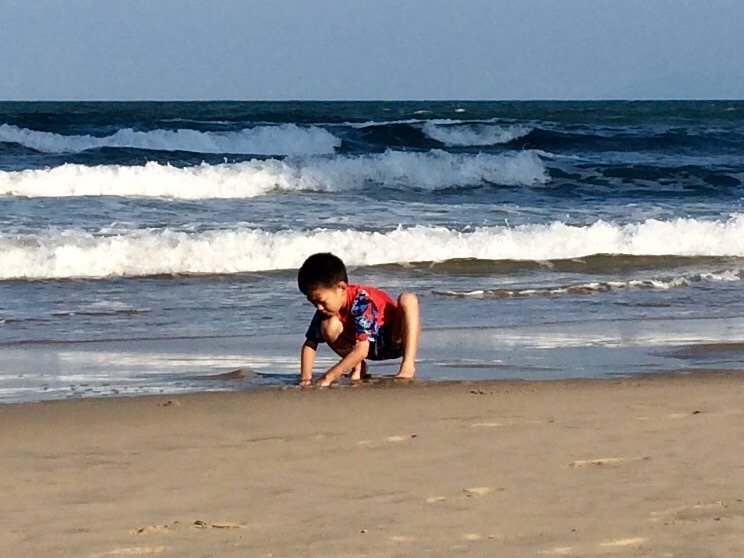
Some children playing at the seaside as they always have done...
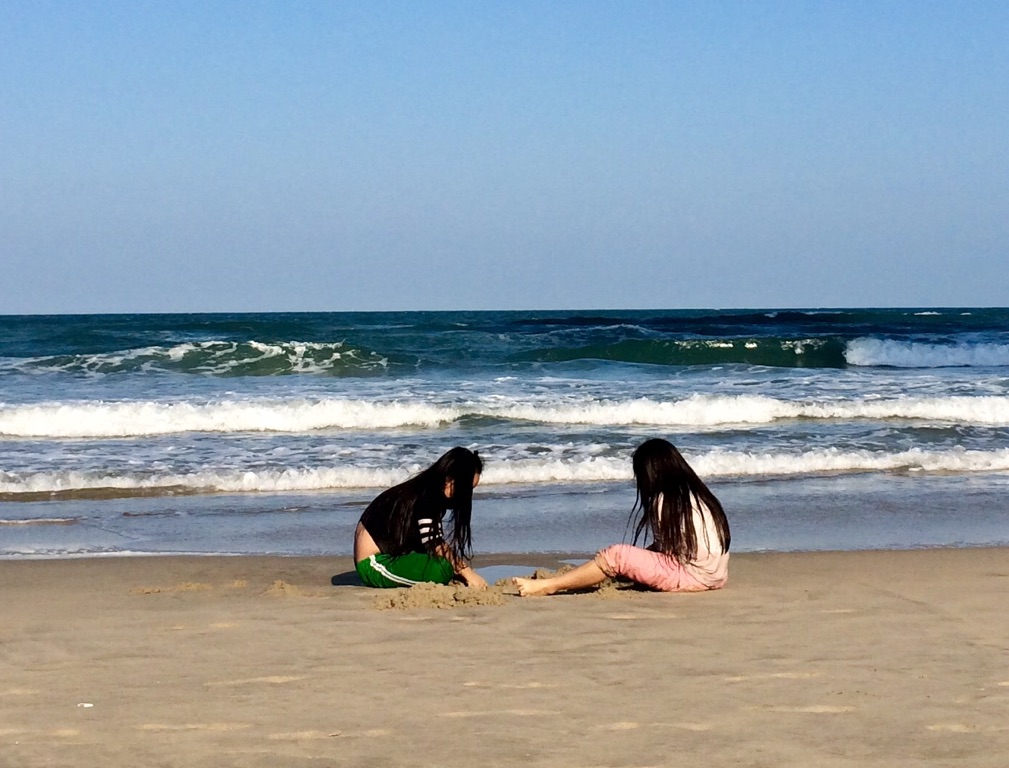
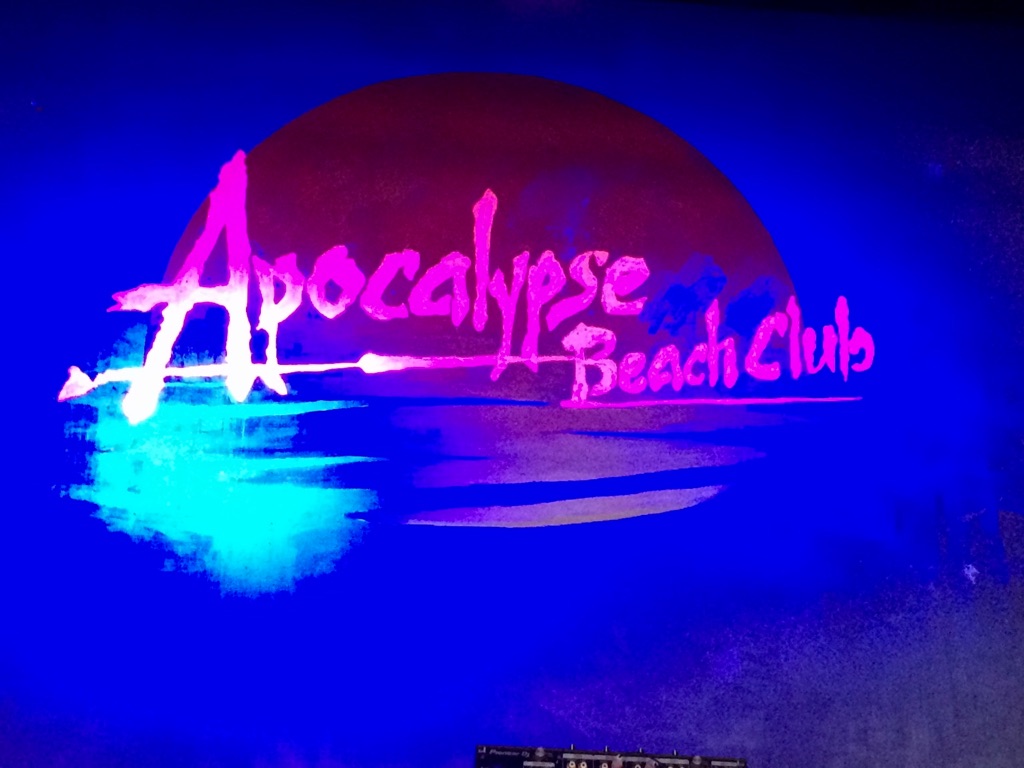
And, of course, happy hour on the beach...to watch the sunset, of course...
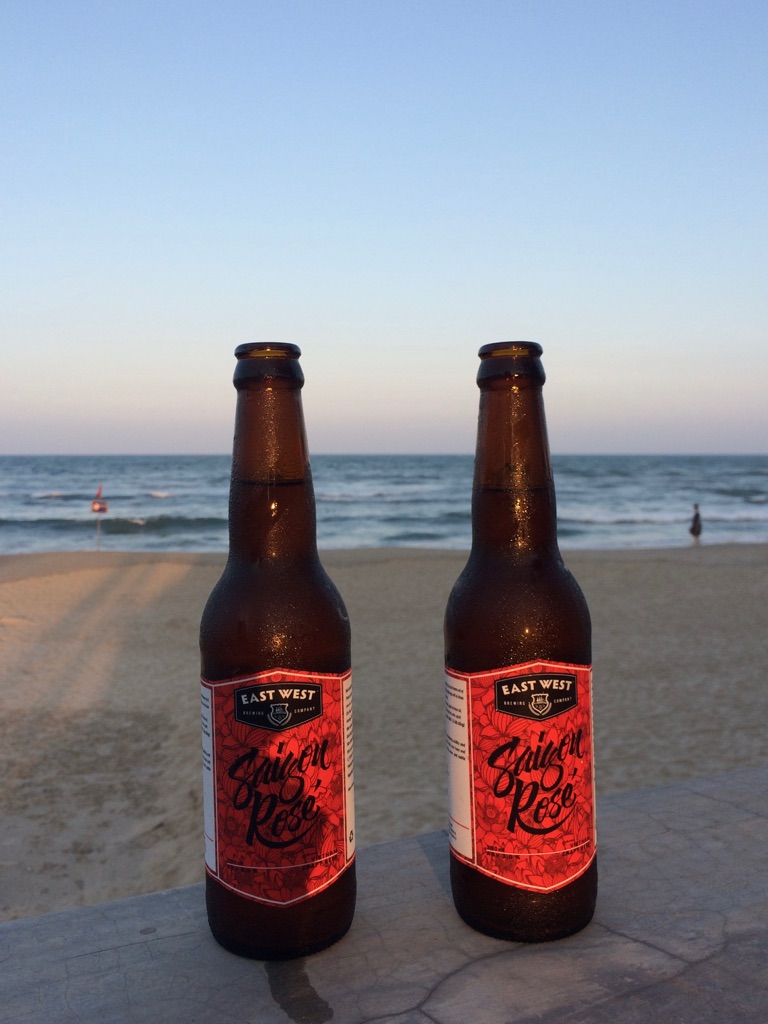
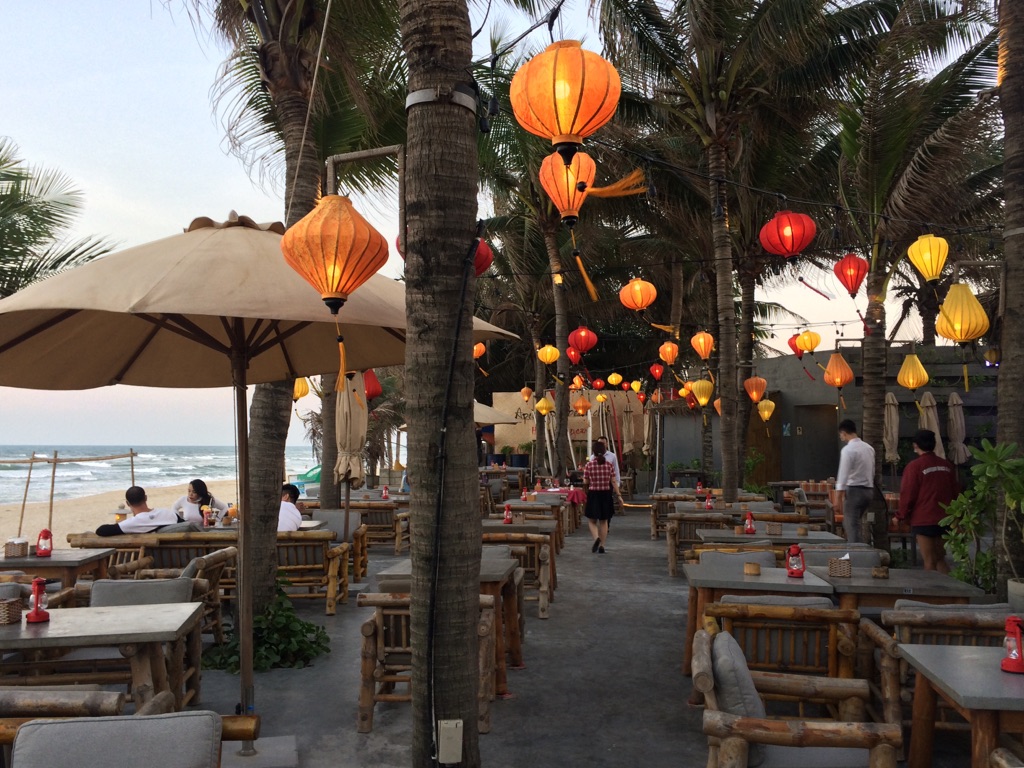
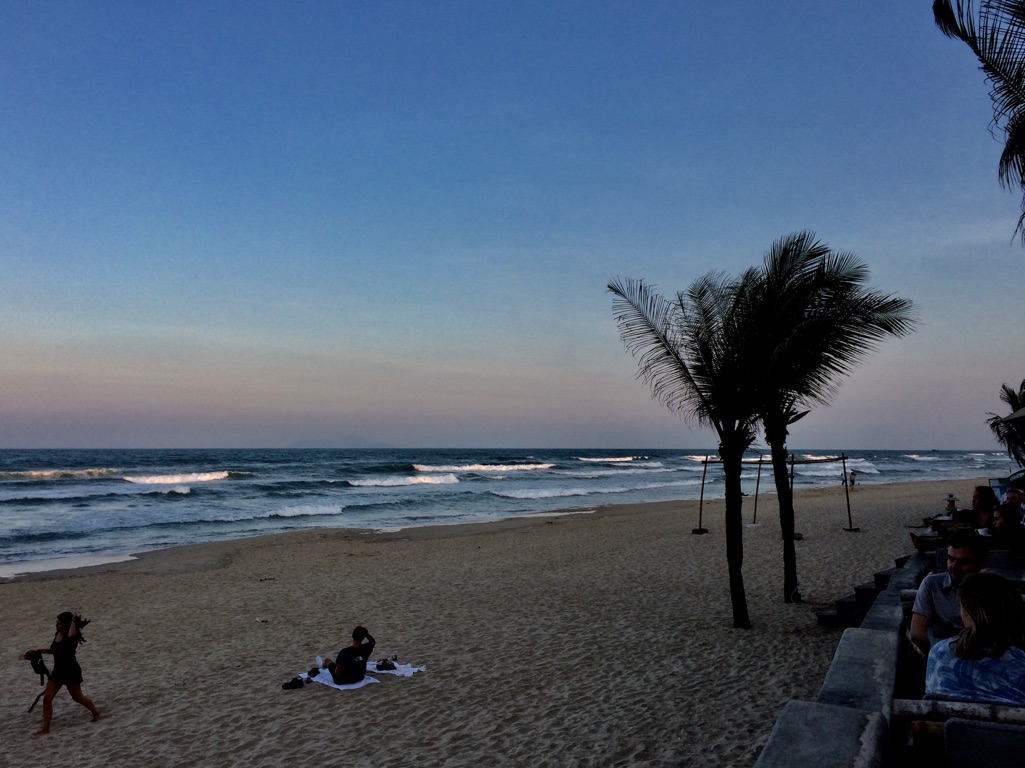
Shadows on the sand at sunset...

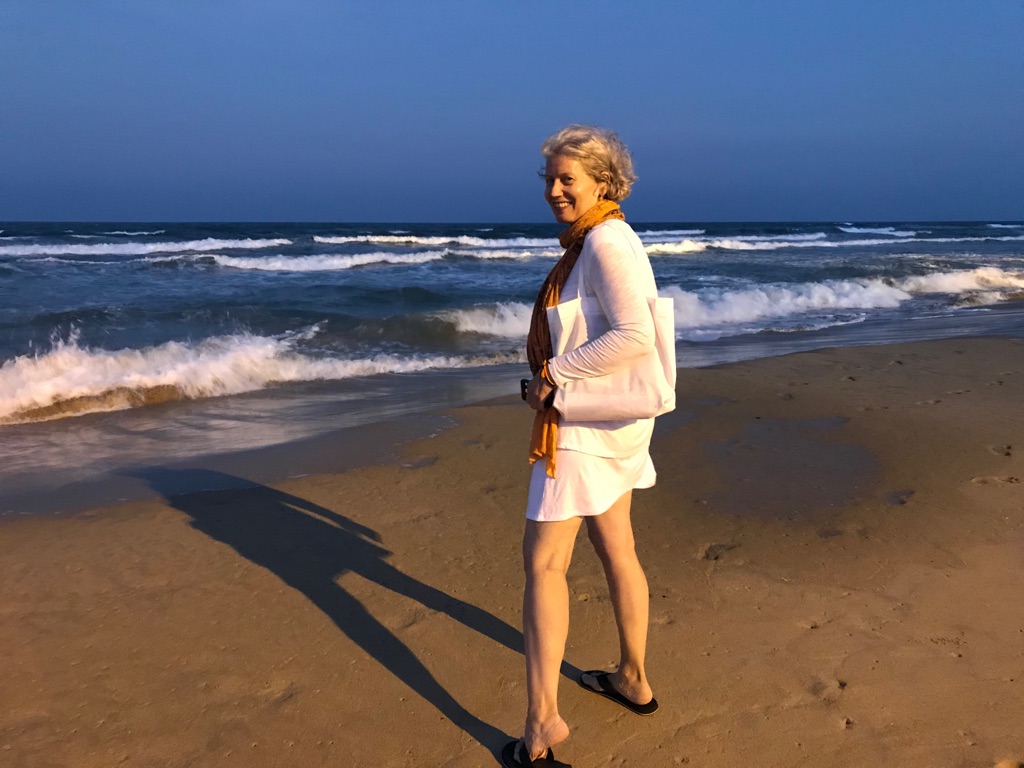
Kate with a glowing smile at sunset...

I love this beach!
A walk around town in search of an ATM
Unless we are at an airport ATM we cannot take more than 3 million Dong from our bank accounts daily. That sounds like a lot - but it is actually only $177. And for each transaction there is, of course, a charge from the Vietnam bank which operates the ATM.
We went looking for an ATM - and they are hard to find - and once found, they did not work. So we walked the scenic route back to the hotel to see what we could see. We discovered some pretty streets, a lovely coffee shop and some other interesting sights...
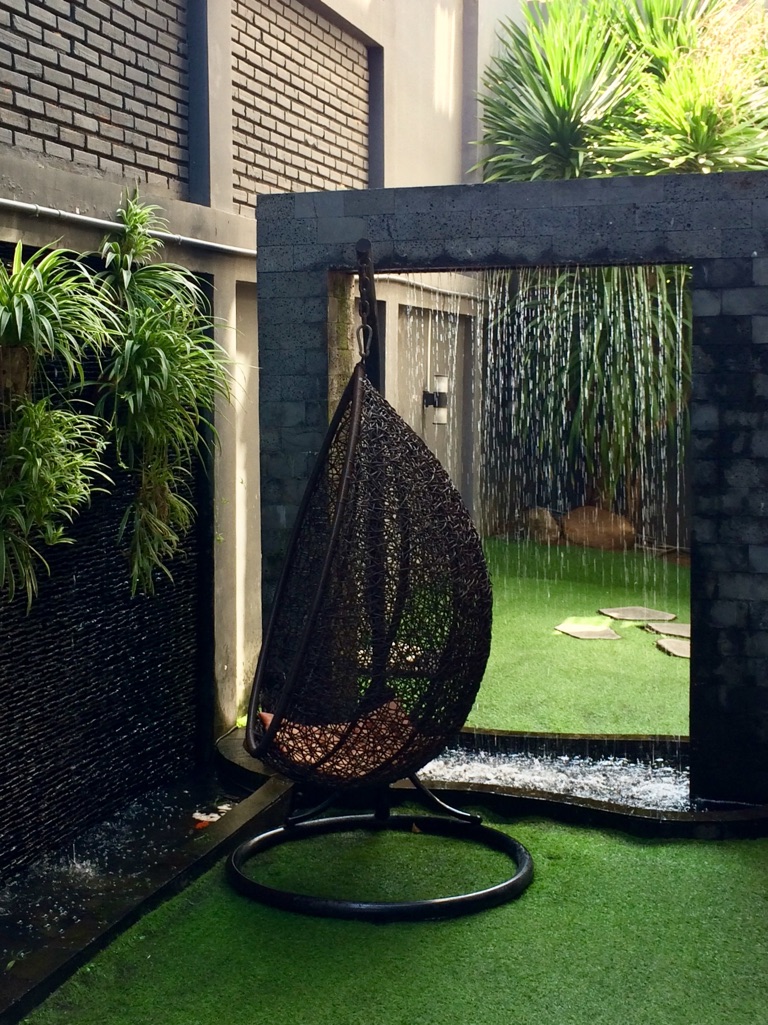
A beautiful entry to an inviting health spa...

Just another gorgeous bougainvillea...
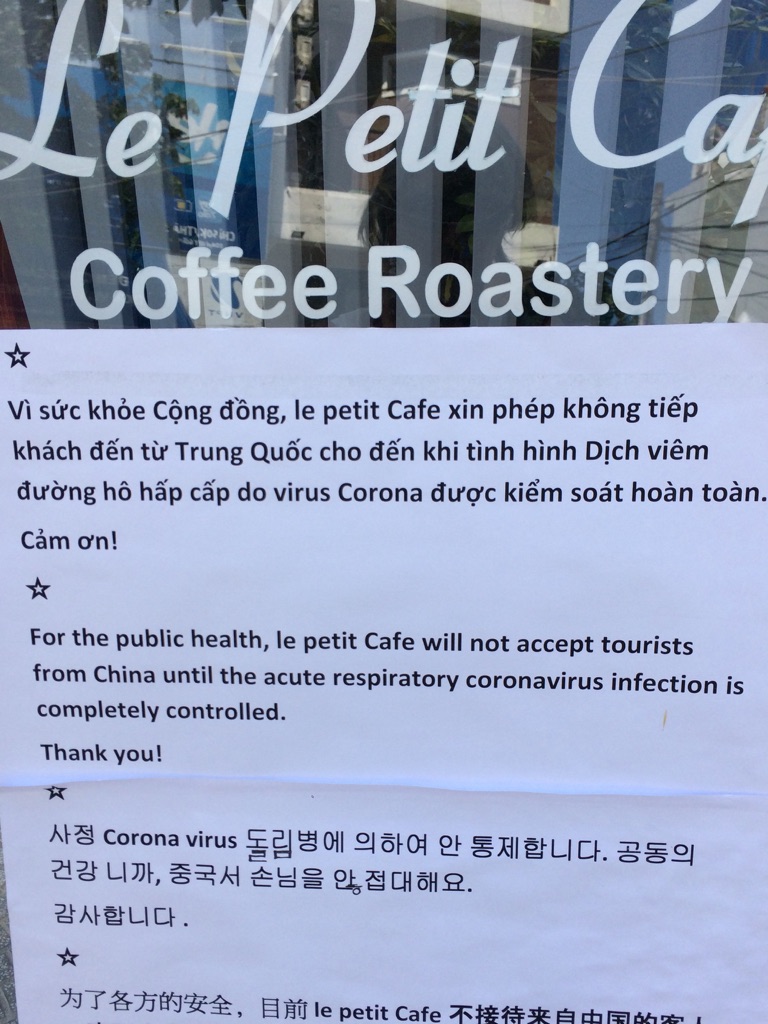
A sign of panic in Vietnam - besides the masks...
And then back to the beach...
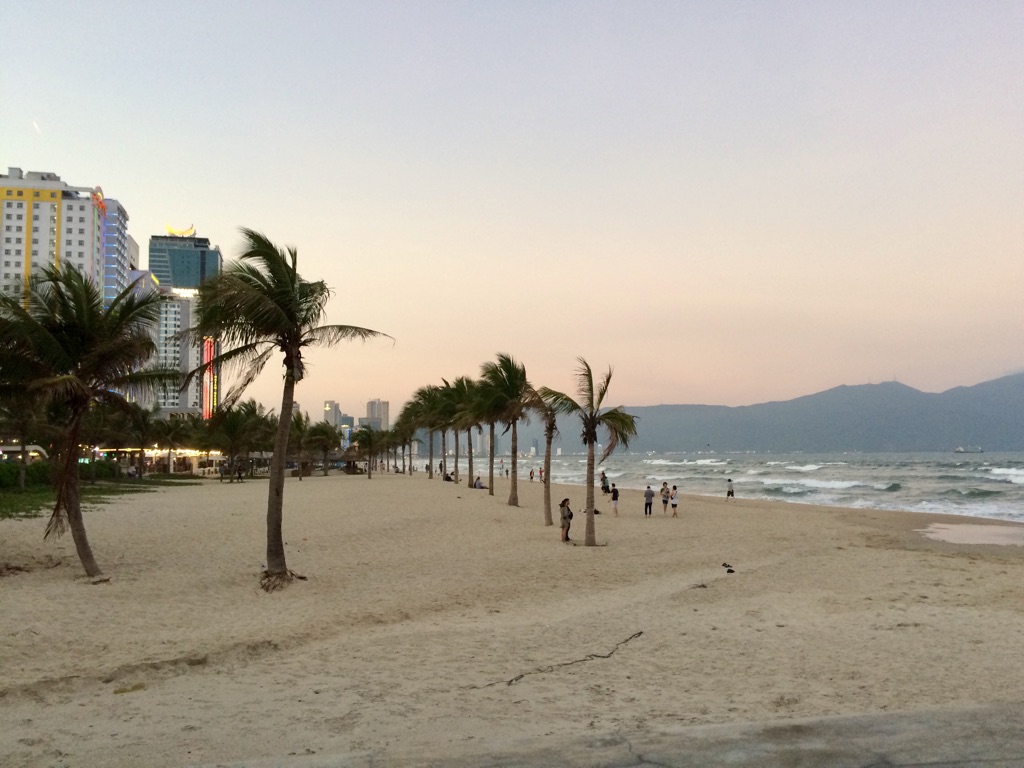
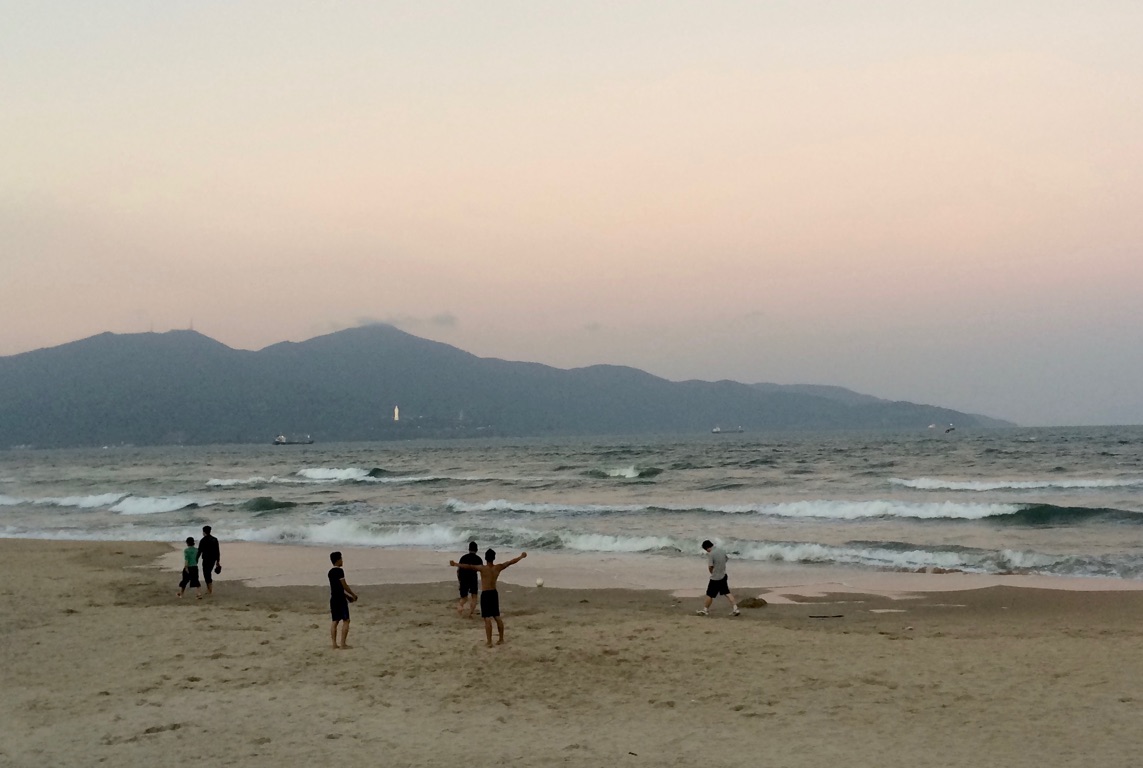
And, for the first time, we ordered take-away pizza from a lovely Italian restaurant, ‘Da Vinci‘s’, just around the corner - plus a nice bottle of Chilean Sauvignon Blanc from the mini mart next door.
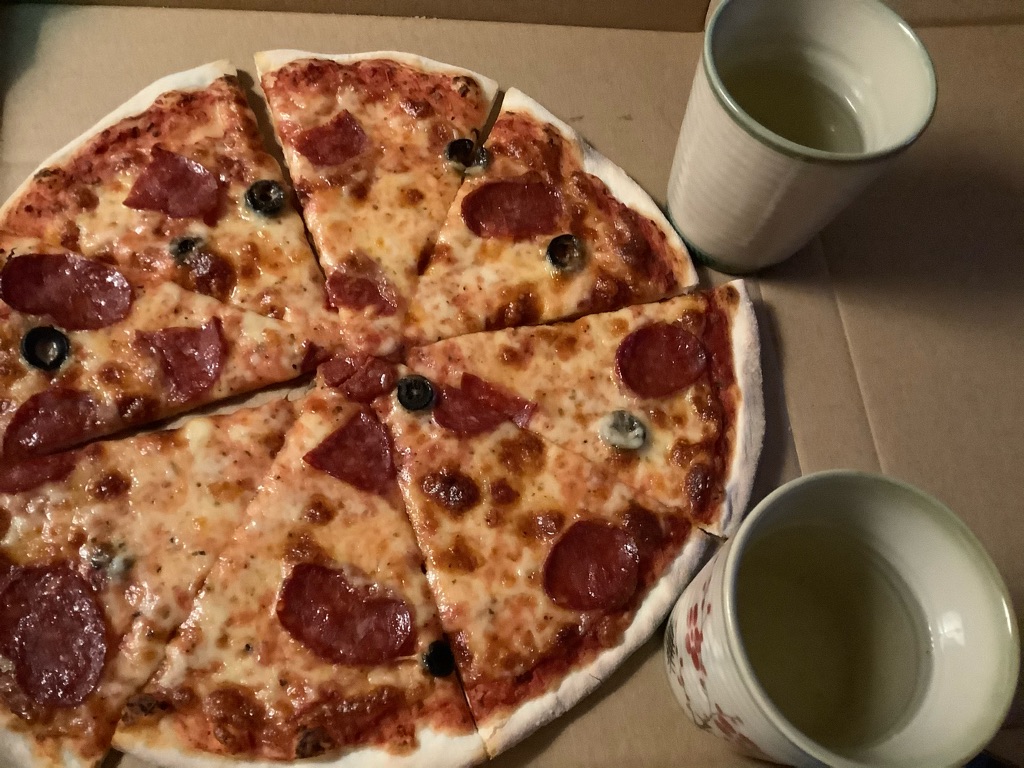
Sunrise on China Beach
Today we move to Hoi An, which is only a 1-hour journey by local bus. But first, a sunrise in Danang!
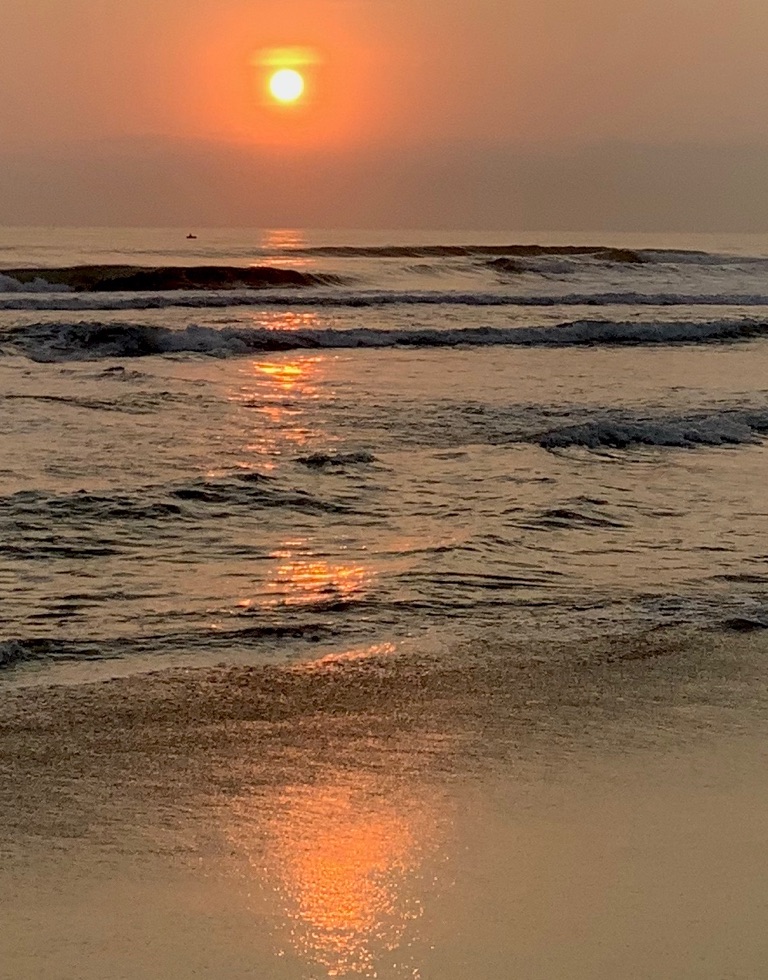
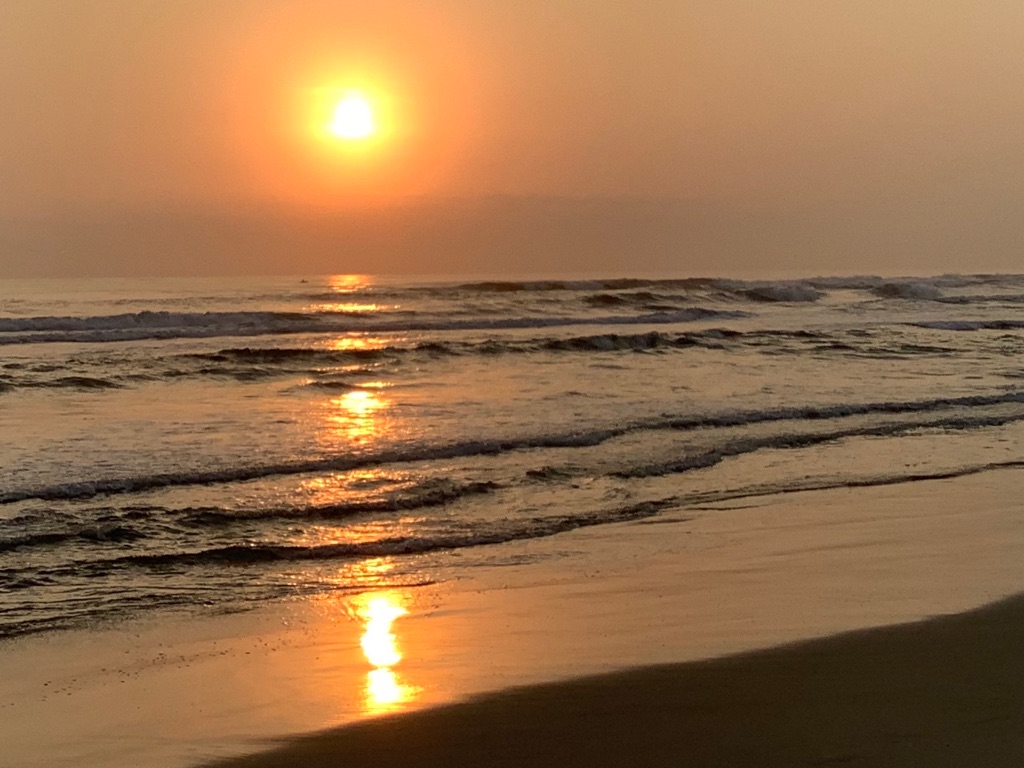
Surprise, surprise, there were lots of people on the beach witnessing the sunrise at 6:15 a.m.
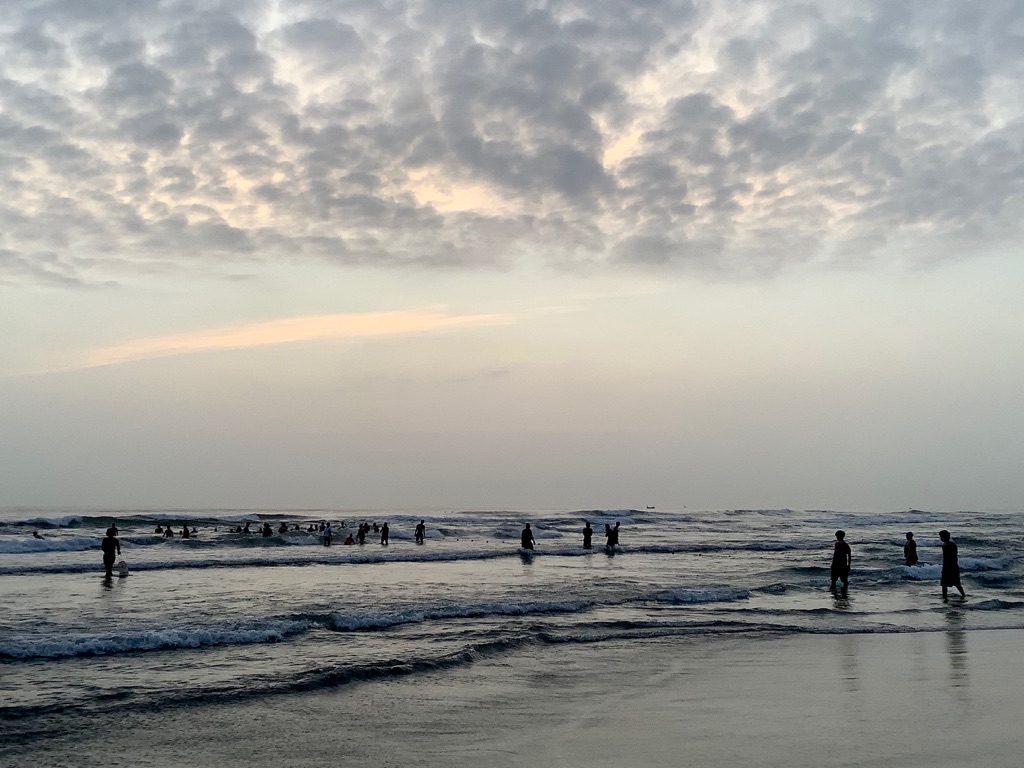
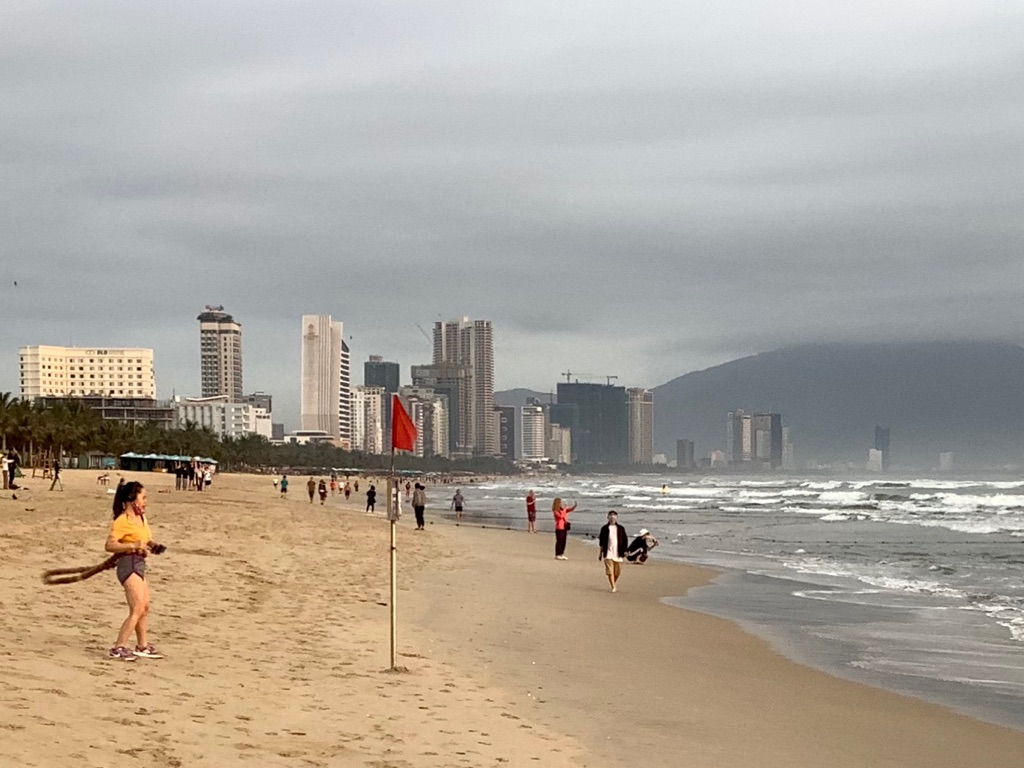
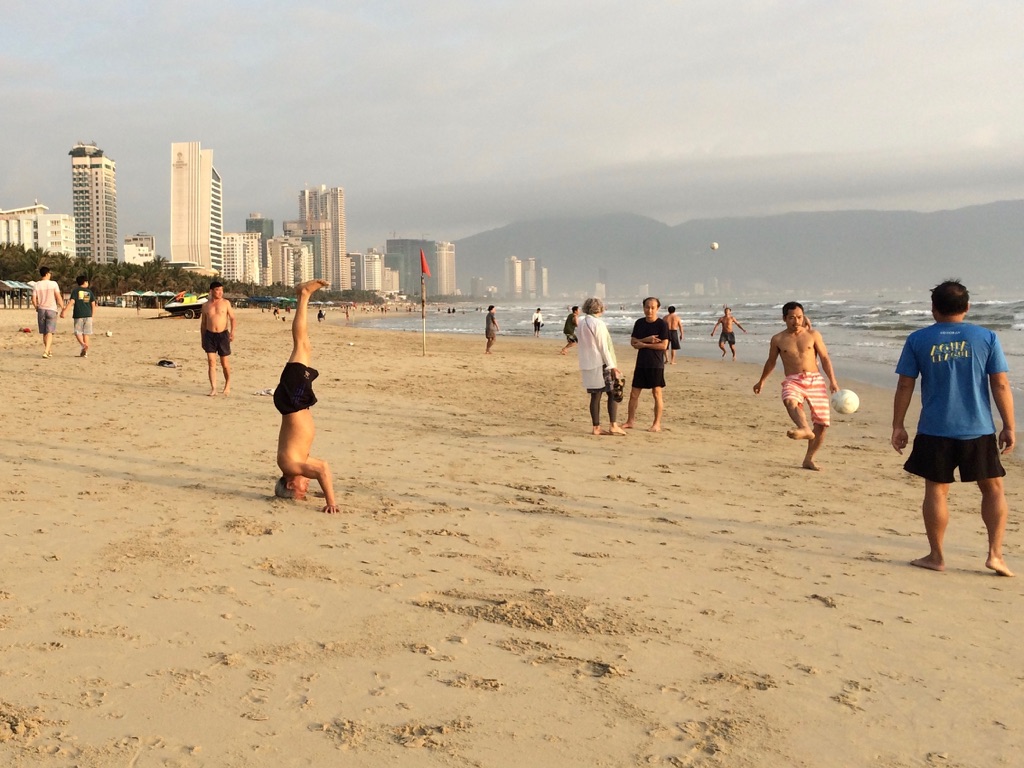
Not a bad headstand for a man of at least 70 - and he held it for about 7 minutes with not a wobble!
Back to the hotel for breakfast, packing up and a last look at Da Nang from the rooftop.
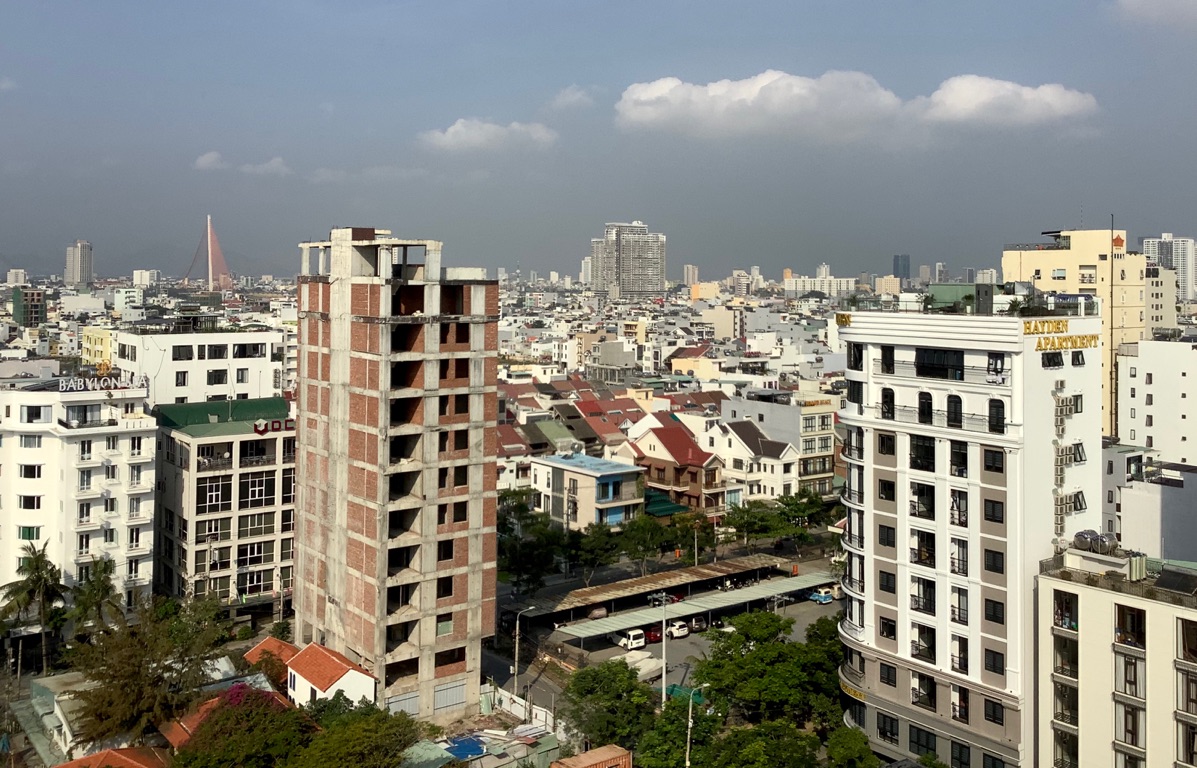


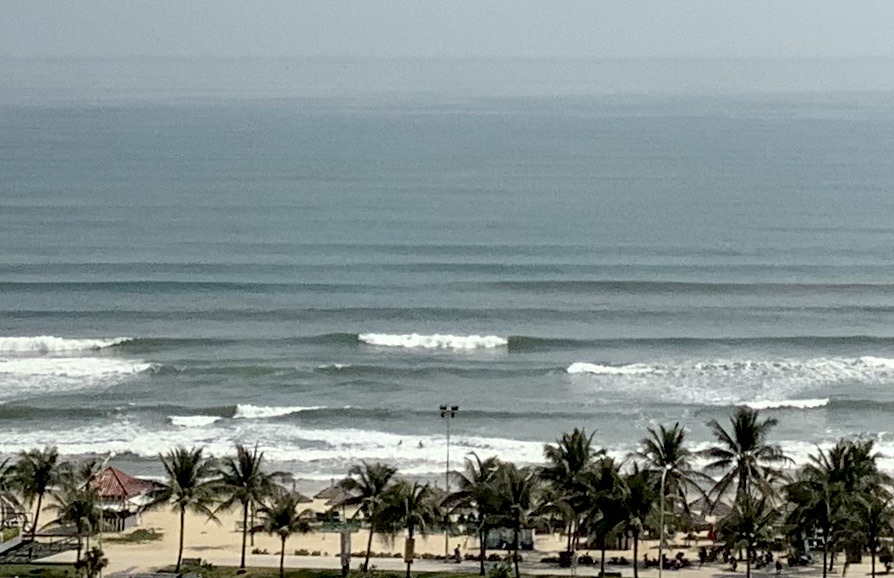
Goodbye Da Nang, we absolutely loved you. \240You provided just what we needed to restore us!
And on to Hoi An!
Coffee, shopping and out and about in Hoi An
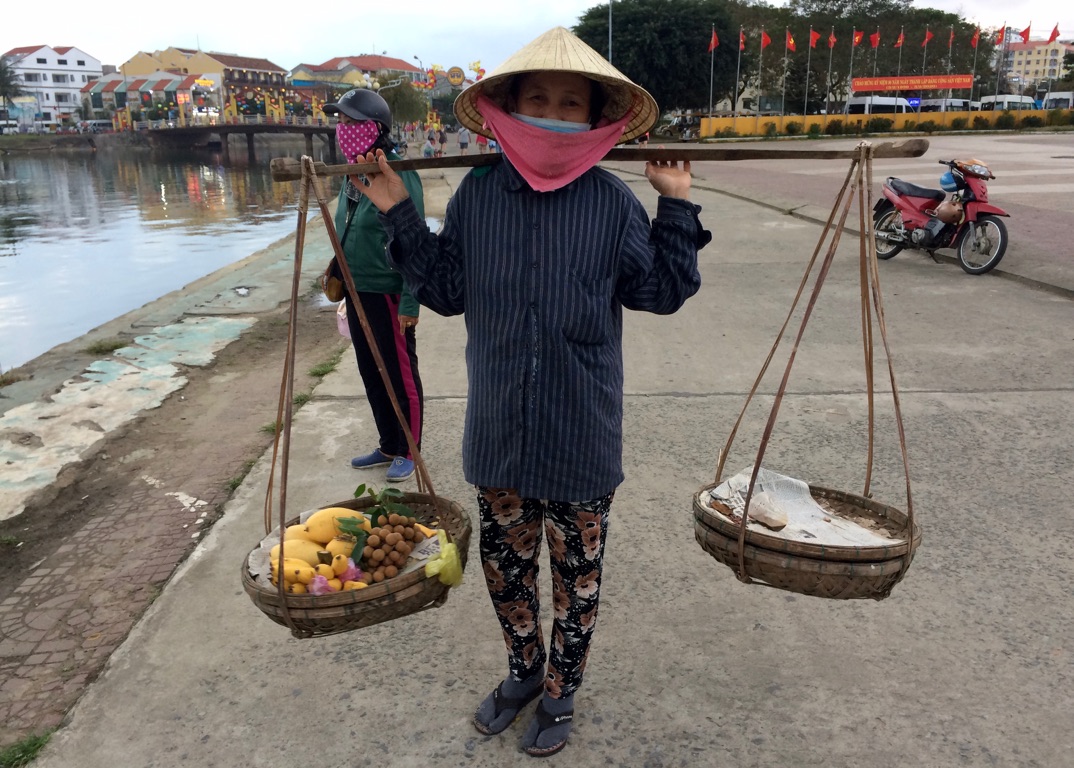
This woman kindly posed for me and then insisted I try it... let me just say that those baskets are heavier than they look!

The beautiful Thu Bon river which cuts through the old town - used for boating and provides outdoor restaurants with beautiful views.

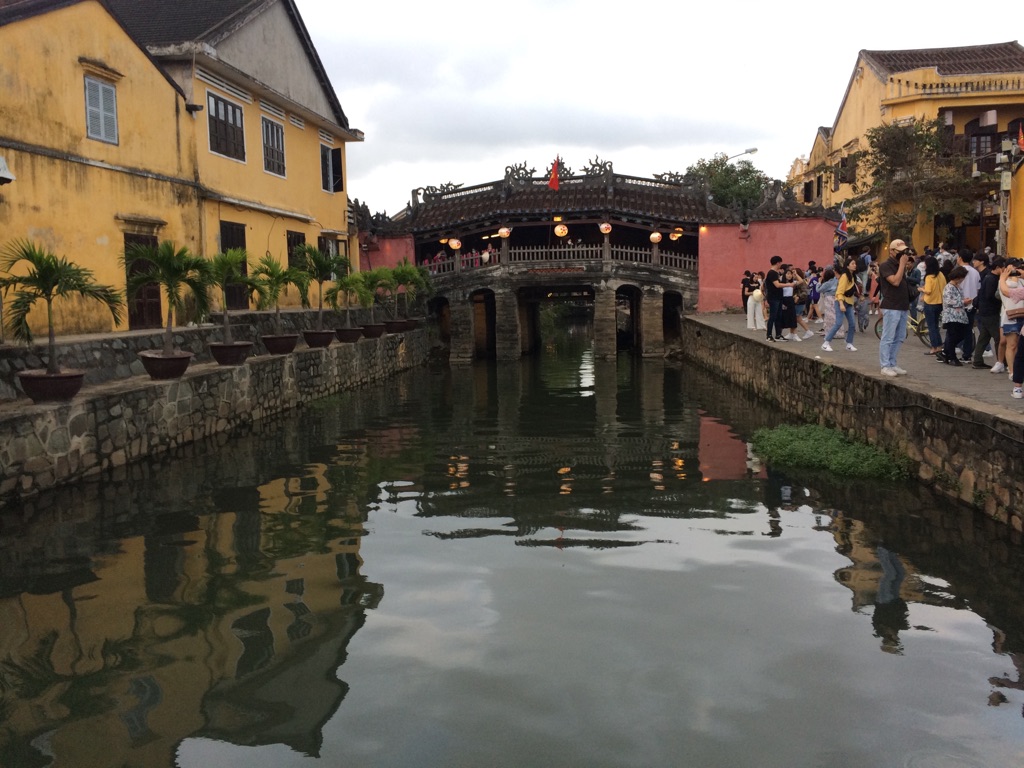
A treasured landmark in Hoi An, the Japanese Covered Bridge, built in the late 1500’s - fabled to keep a fire-eating dragon from the city.
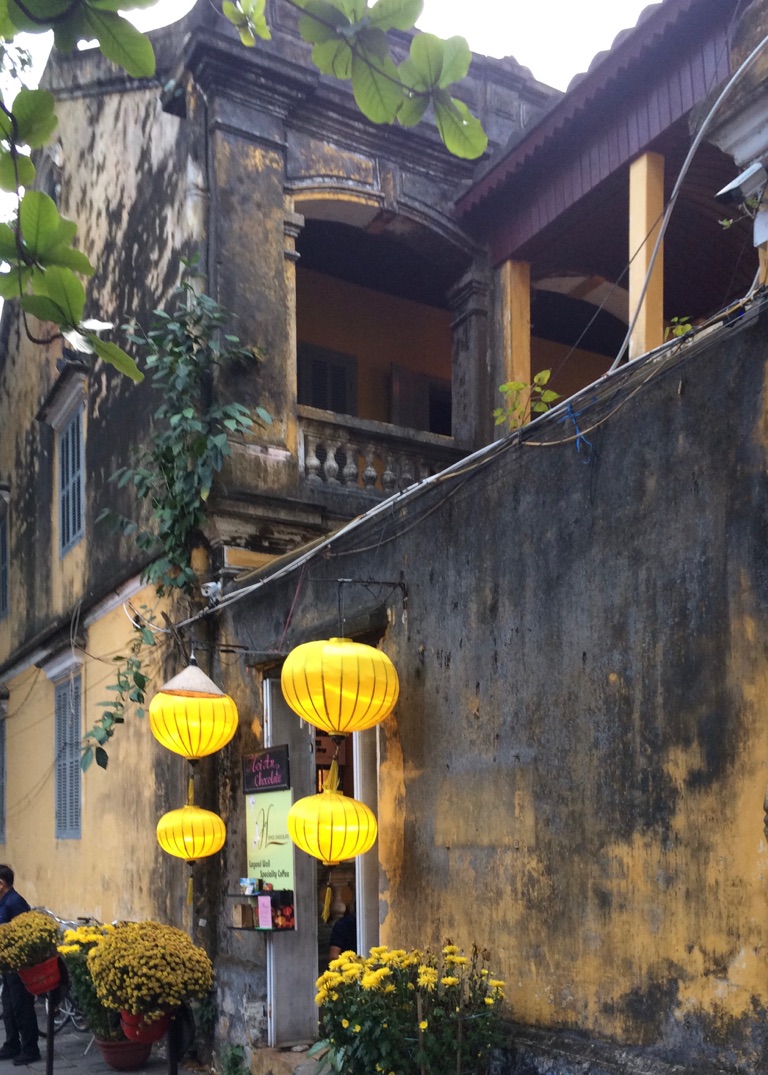
Some sights of the ‘old town’ we saw while wandering around...

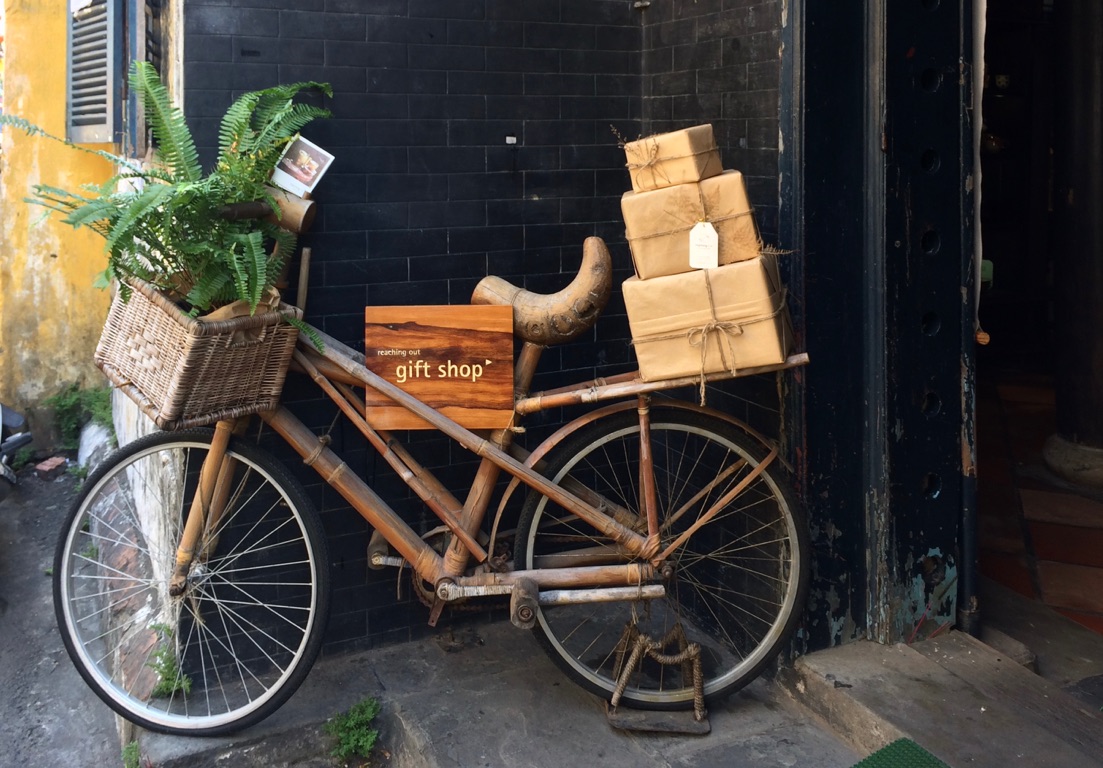
A charming coffee shop where we enjoyed a very nice ‘flat white’.

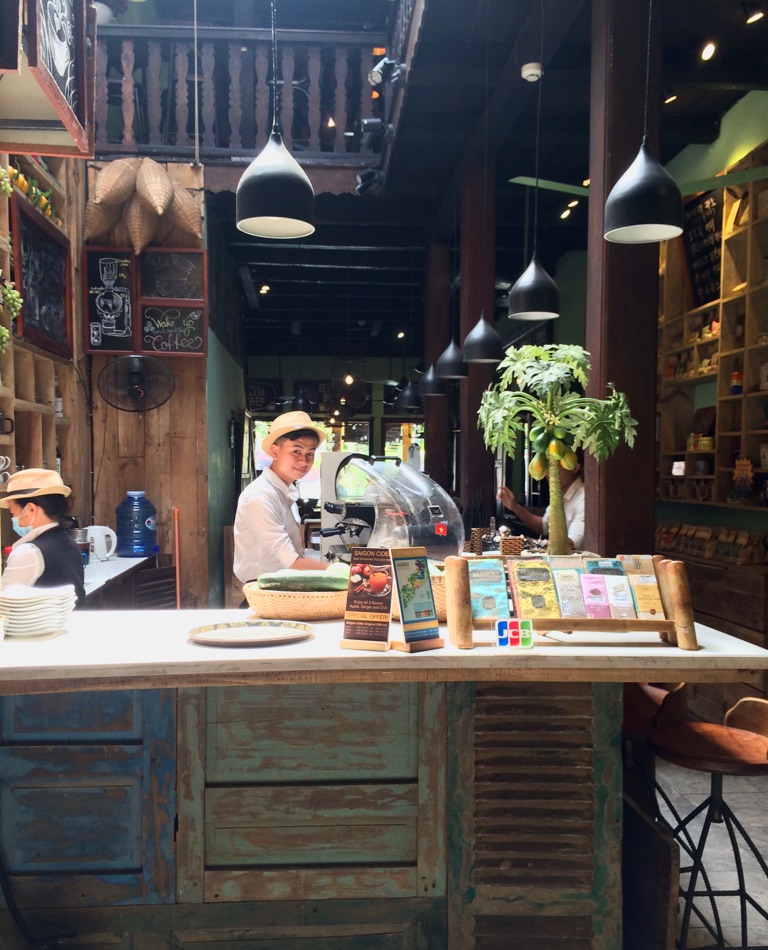
And a charming smile from the barista!
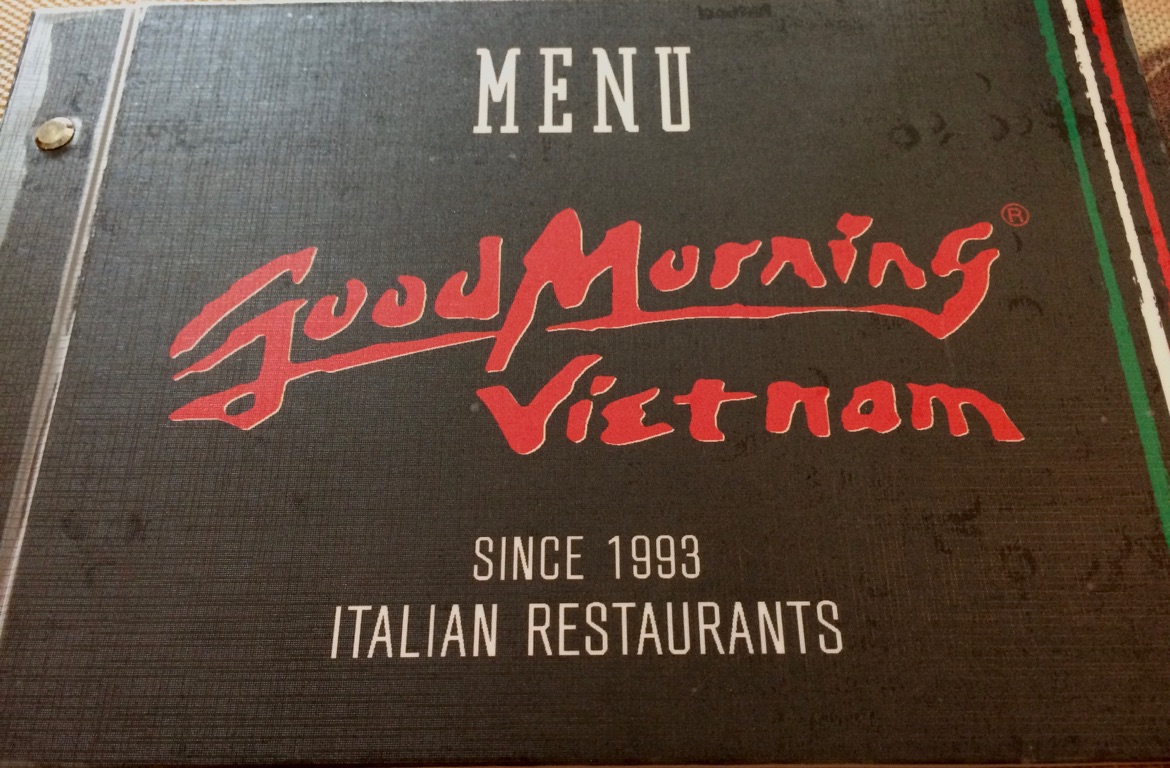
After coffee we wandered on for lunch at ‘Good Morning Vietnam’ - 4 formaggio pizza with the most amazing crust ever + (of course!) a Bia Saigon beer!

And then...a bit more shopping!
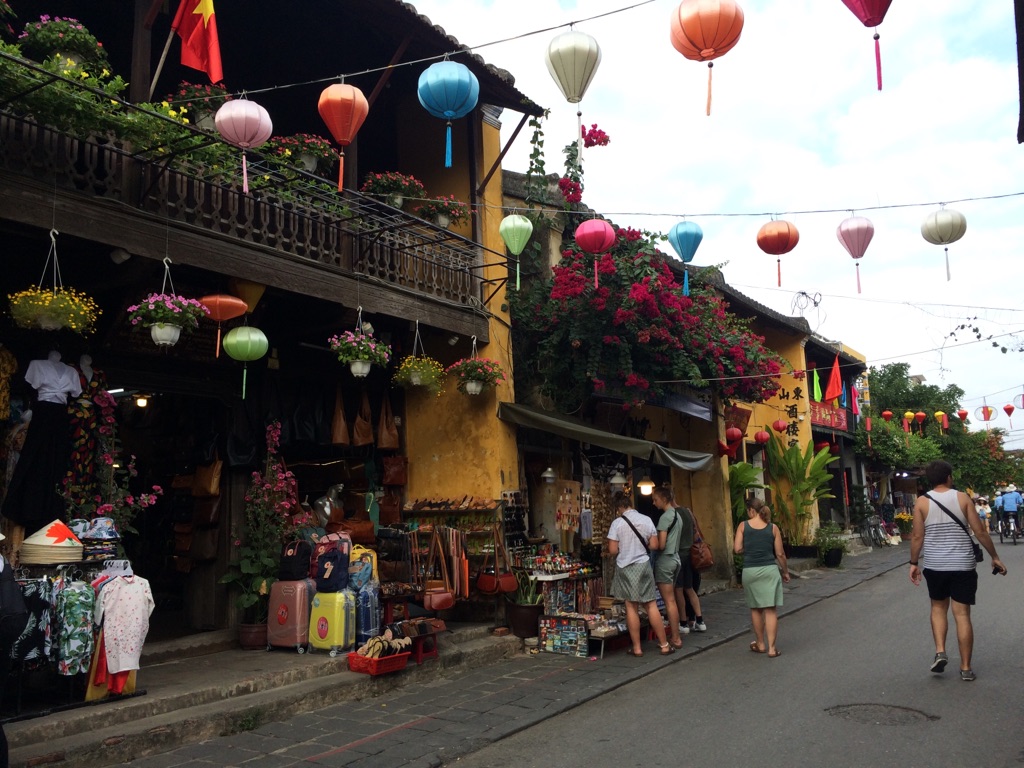
Buses... and Shopping in Hoi An
So...we took the local bus from Da Nang to Hoi An. Interesting... We knew where the bus stop was and that the bus ran every 20 minutes and how much the fare was.
We waited at the bus stop along with other travellers and boarded the bus. \240Our luggage was immediately seized by the conductor and thrown onto the piles behind the driver. \240Then, we were pushed and shoved into place and I thought this must be how sardines feel about being in a can.
Almost everyone on the bus was a western traveller - all of us busy expressing disbelief about the conditions on the bus. \240And then the conductor came around to collect the fares and the fun began...
Vietnam is attempting to actively encourage tourism by regulating bus and taxi fares - the fare for the journey was supposed to be 30 dong ($1.77). The conductor demanded 50 dong ($2.95) and was not having it that we were all unwilling to pay the extra 20 dong ($1.18). \240We all staged a tourists revolt and refused to pay the inflated rate (Kate in there as one of the leaders...) and after much yelling back and forth and the conductor pushing his way up and down the bus...he gave in and took our 30 dong. \240He was not pleased!
When we got to the Hoi An bus station, he literally threw our luggage into the parking lot. We were next accosted by men who tried to tell us that we had to travel to the hotel by scooter as there were NO taxi cars in Hoi An. This would require us both to ride on the same motorcycle whilst carrying our luggage as well. Not happening, we said - and walked across the street where we had spotted a taxi car. \240We hoped this was not indicative of our experience in Hoi An!
It was NOT an indicator. \240We arrived at the hotel, met the welcoming staff and settled into a very nice room. \240All was well!
We went for an explore of the ‘old town’ - and it was alive with lights for ‘new moon’ observances and beautiful restaurants and shops. A mini Venice - Asian style!
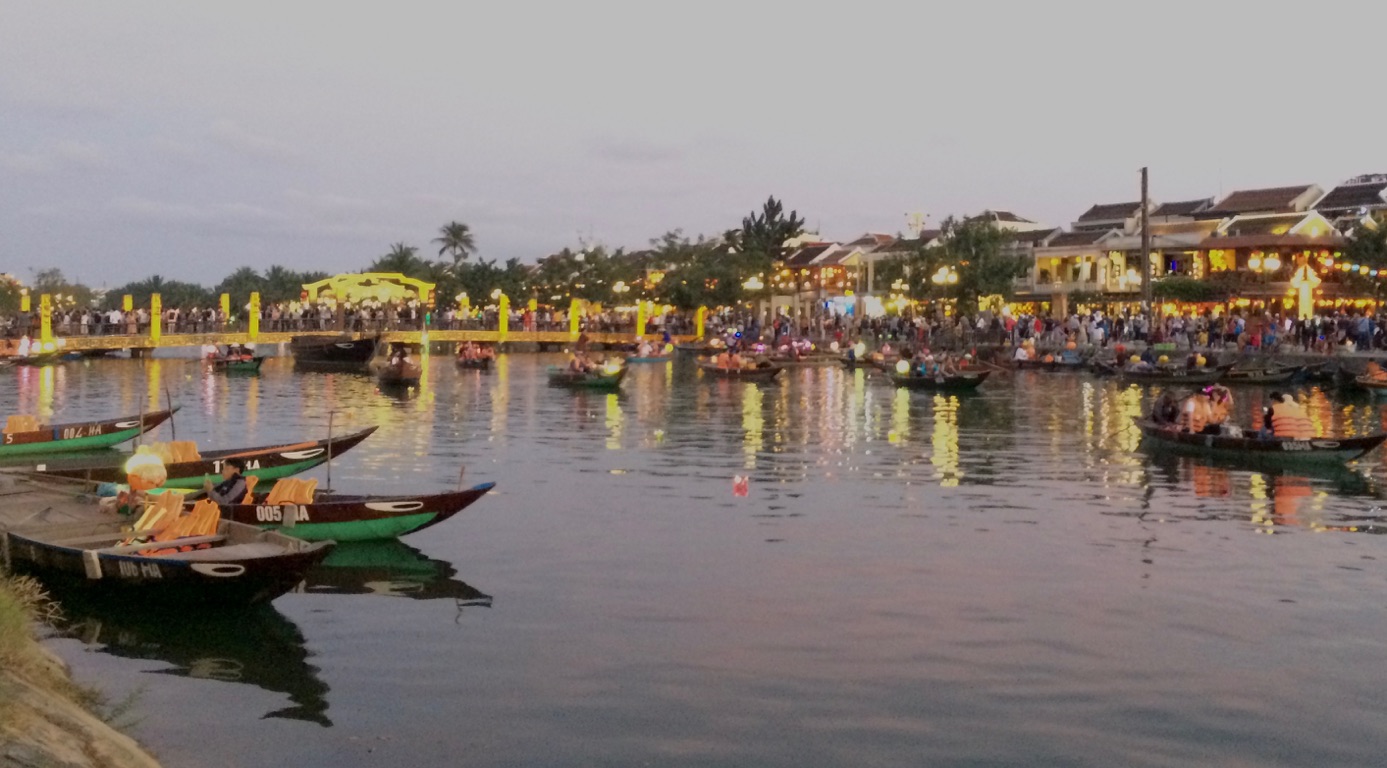
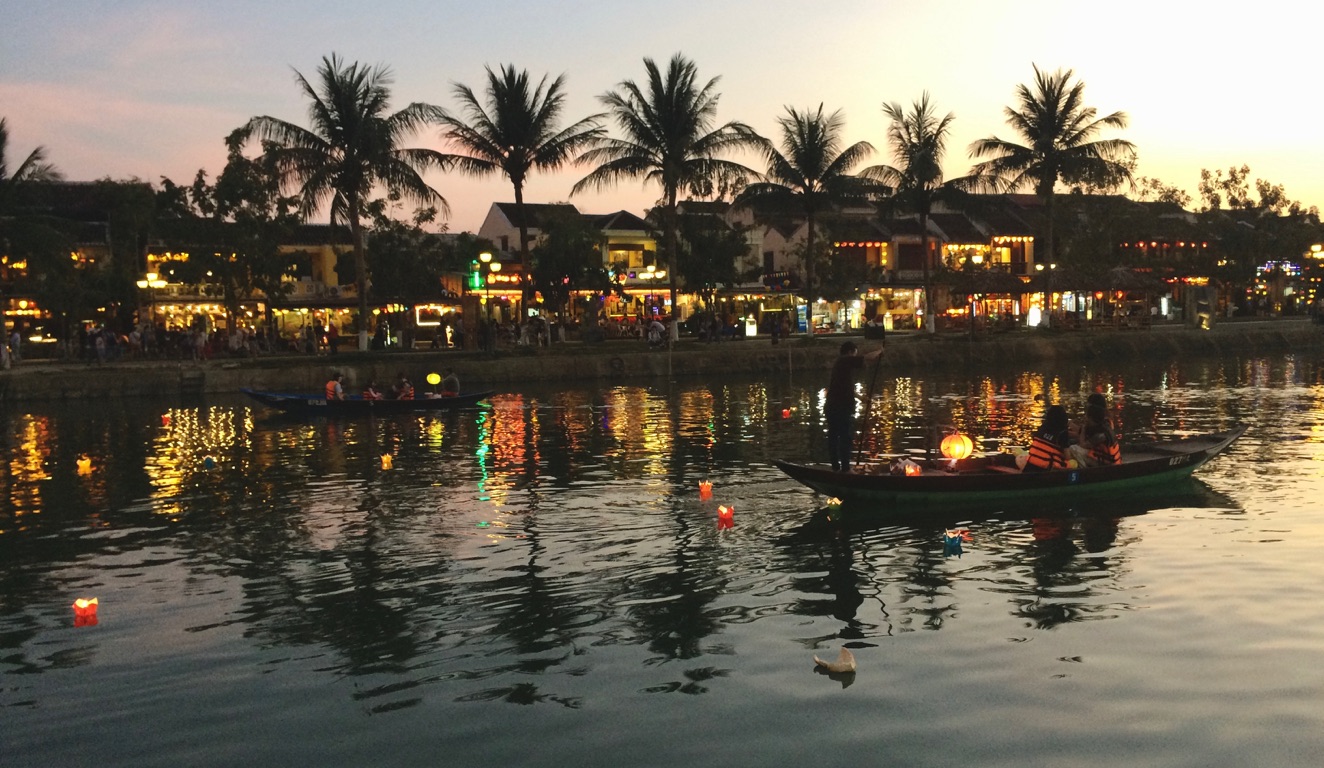
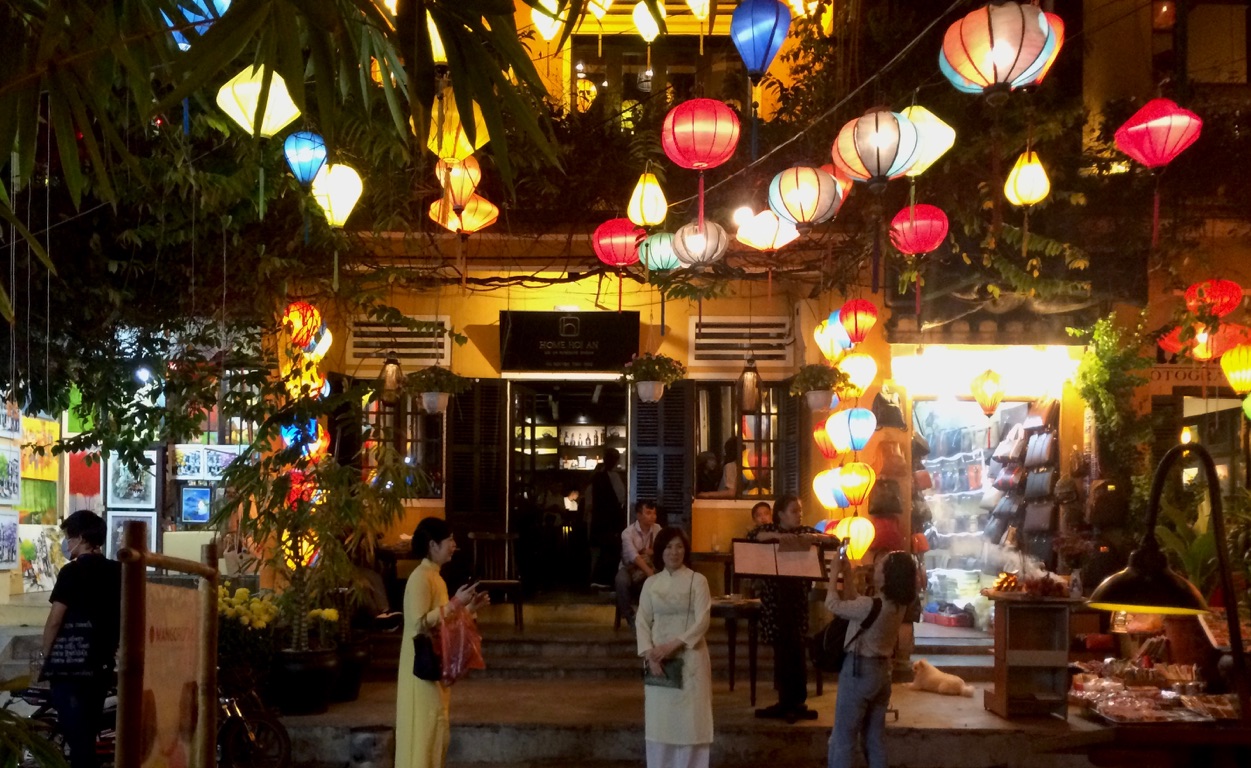
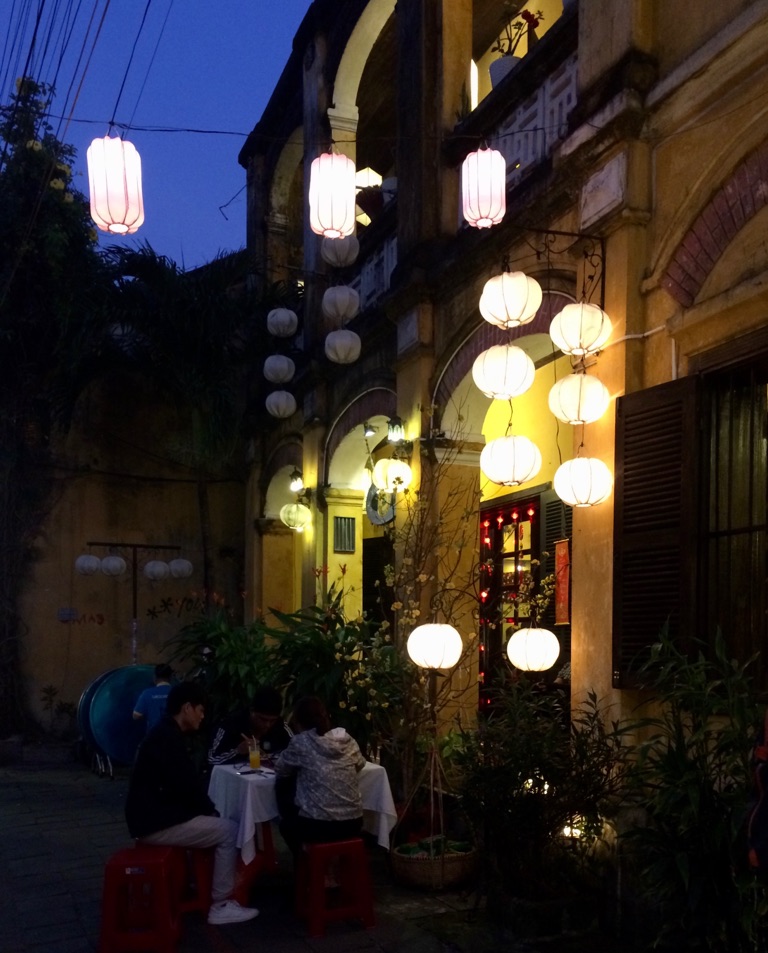
The Marble Mountains and My Son
The 5 mountains (more properly, marble and limestone hills) are about a 30-minute drive from Hoi An, close to Da Nang. They are known as the ‘5 elements mountains’, named for fire, water, metal, wood and earth.
The mountains are also historically significant from the Vietnam (American) war period: a major American airbase was positioned close by and there was a Viet Cong field hospital located within one of the larger caves.
We booked a group tour (12 people), including an English speaking guide, to go to the Marble Mountains and My Son (pronounced ‘me sonn’) in the afternoon.
Our guide, Vanh, was fantastic - shepherded us everywhere and gave a lot of historical information. As usual, our group was multi-cultural - German, Dutch, English, Australian, American (a first!) fellow tourists.
We visited only 1 mountain - the ‘water’ element. This mountain has an elevator to transport visitors up the mountain if they wish. Our guide made us walk the many hundred steps!
Inside the mountain are caves, Buddhist shrines, monasteries and some beautiful gardens. \240There are old structures originally built in 1826; the Buddhist rupas were installed in the caves in 1960.
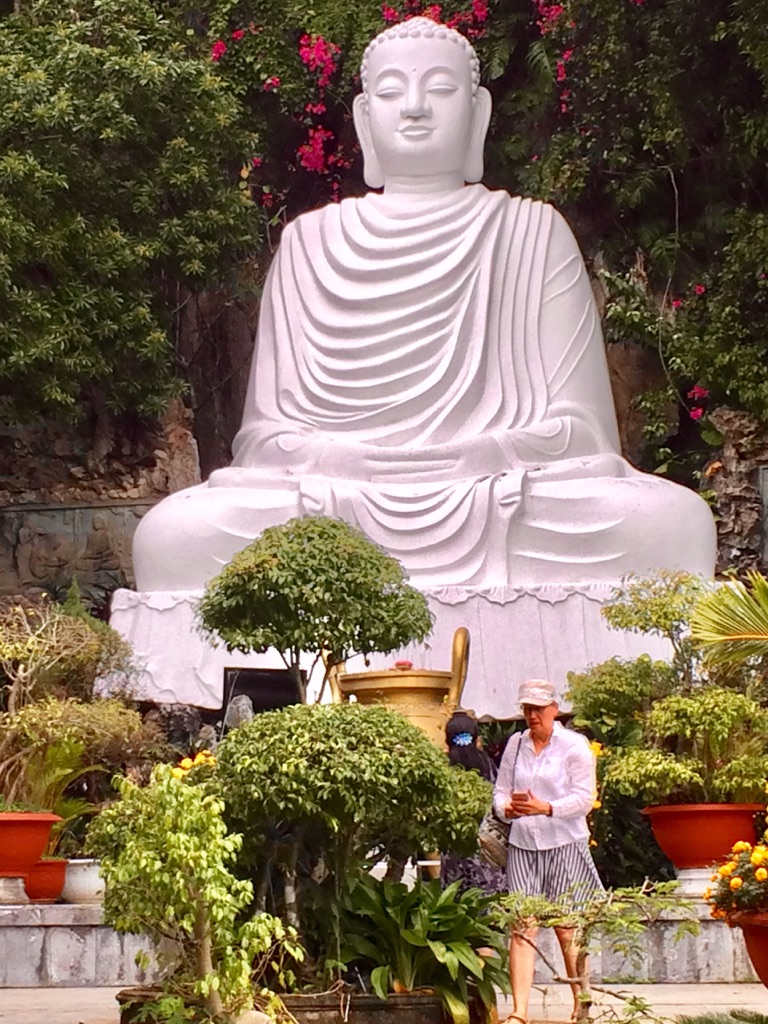
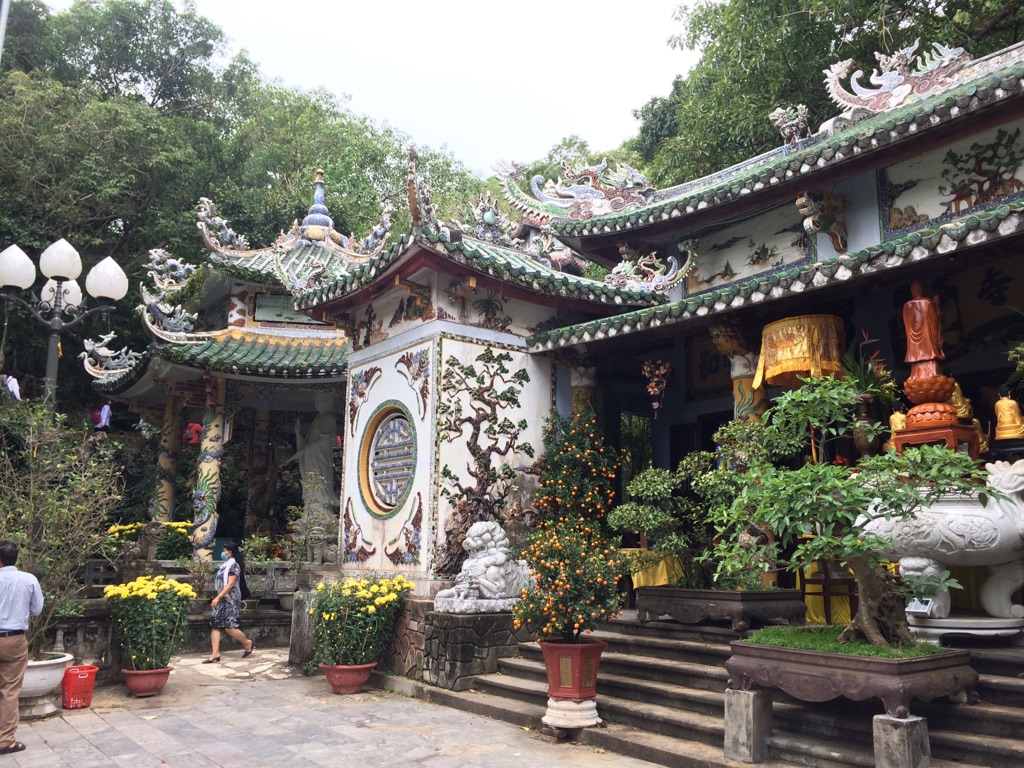
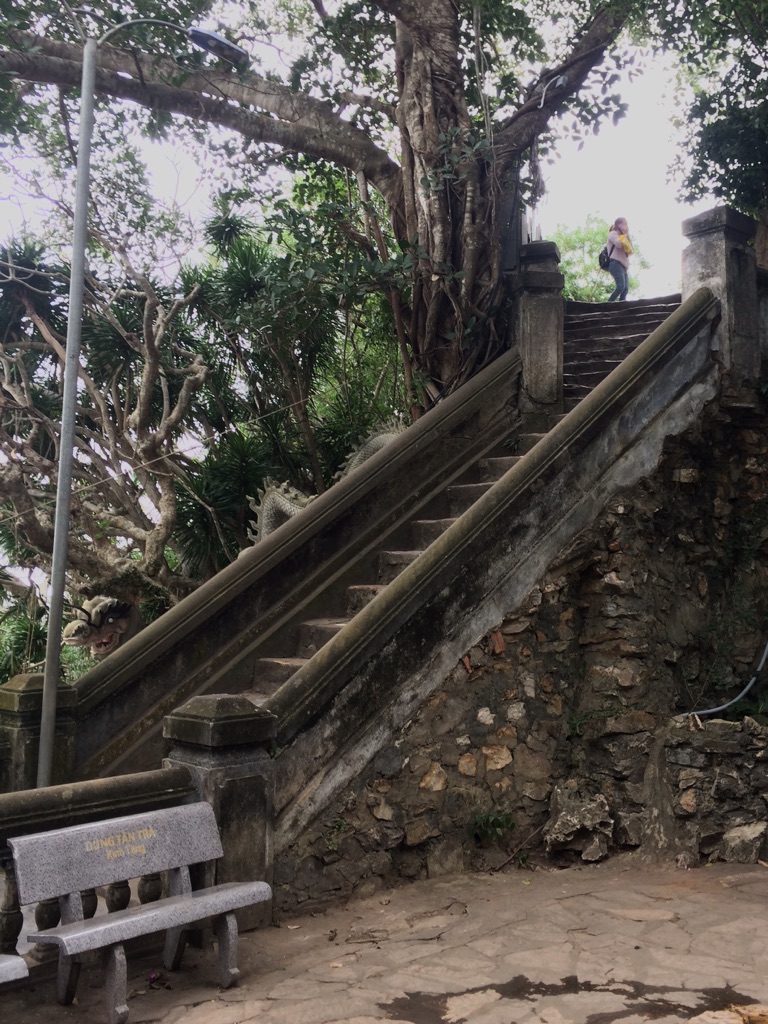
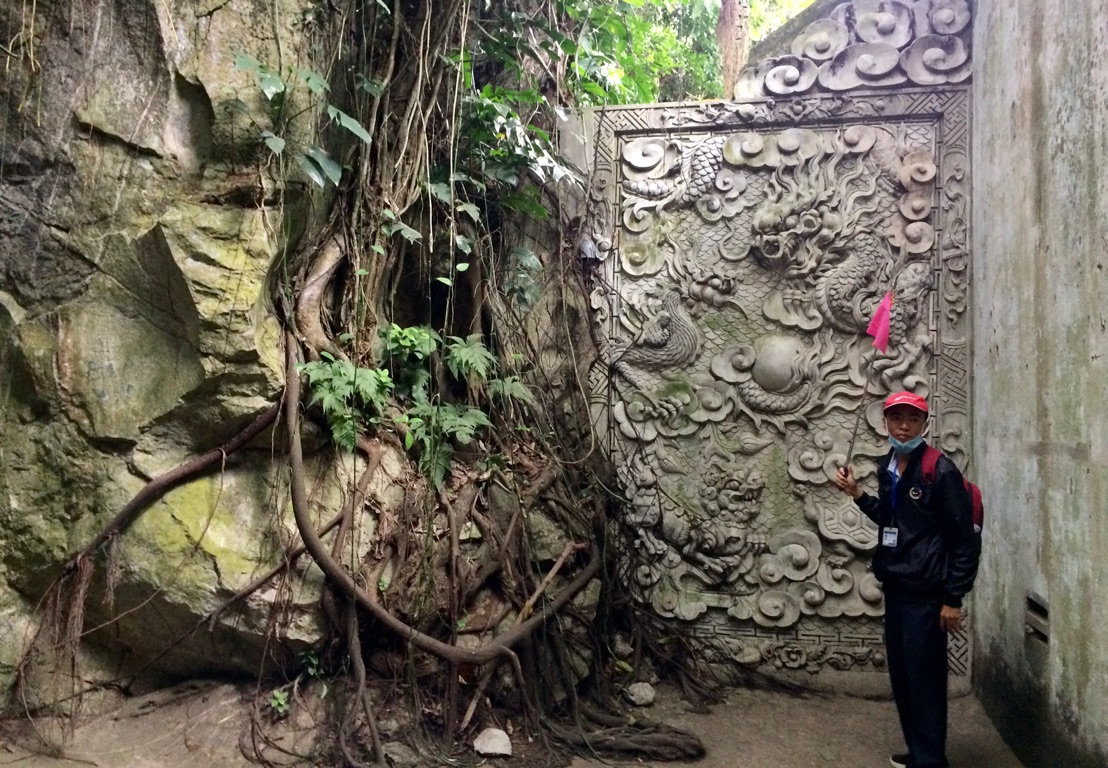
Our guide, Vanh, teaching us about the wall carvings ...
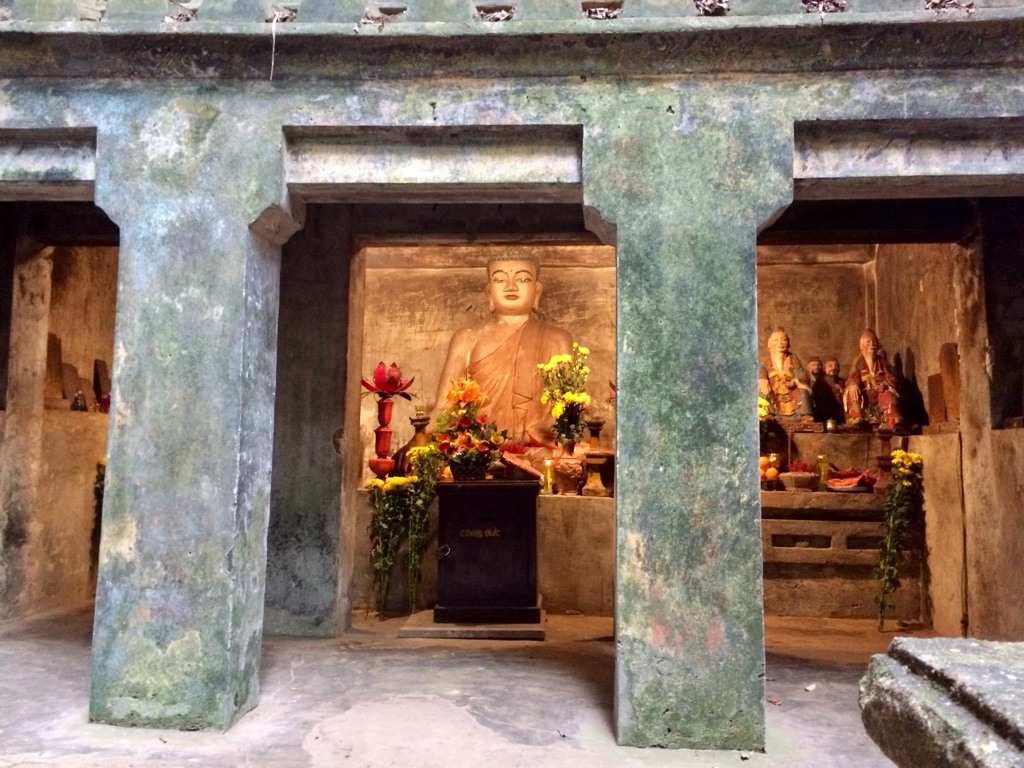
Taoism, Buddhism and Confucianism co-exist under 1 building...
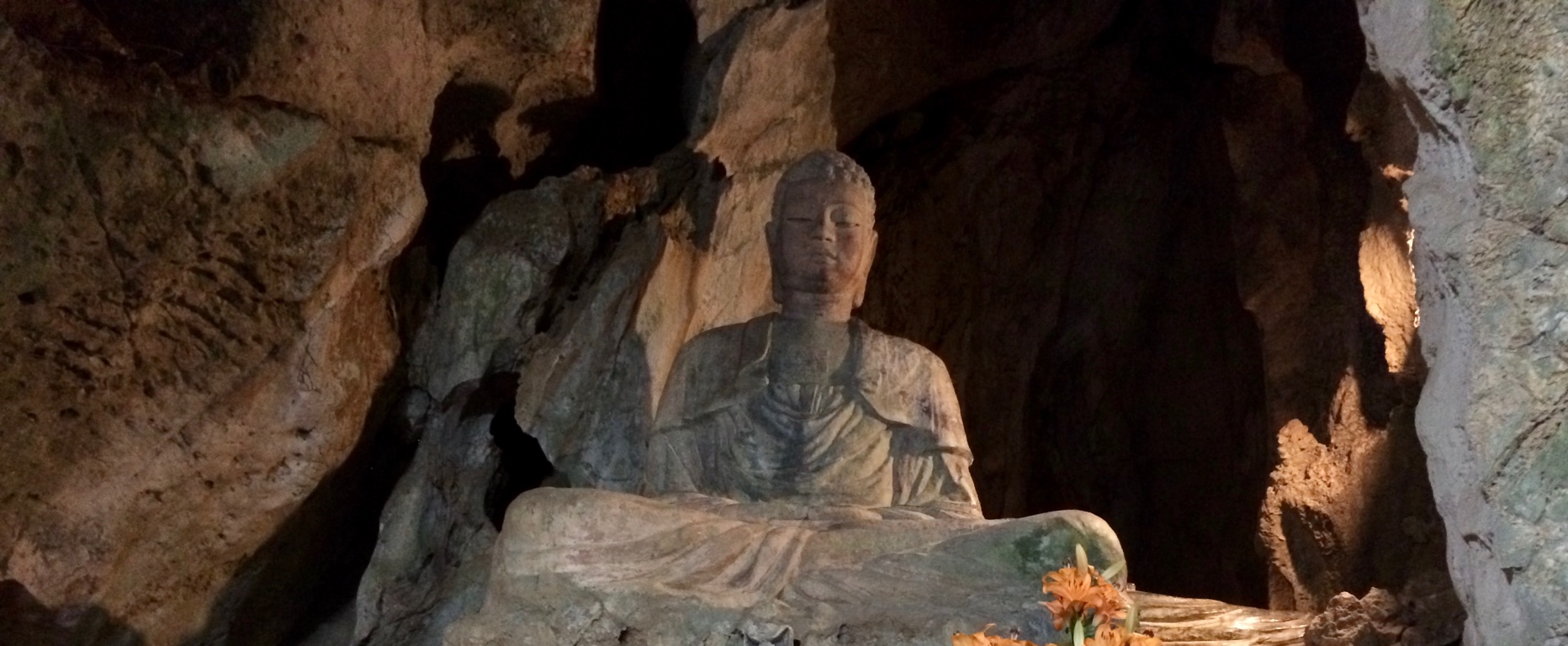
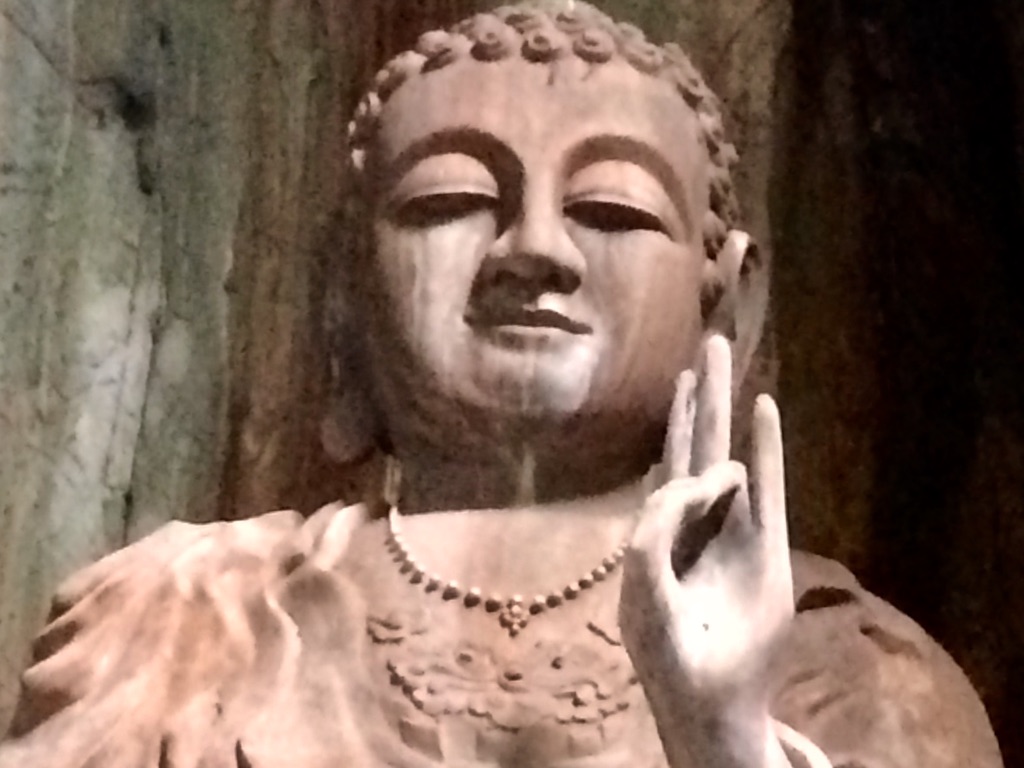
Beautiful Buddha statues inside the caves...
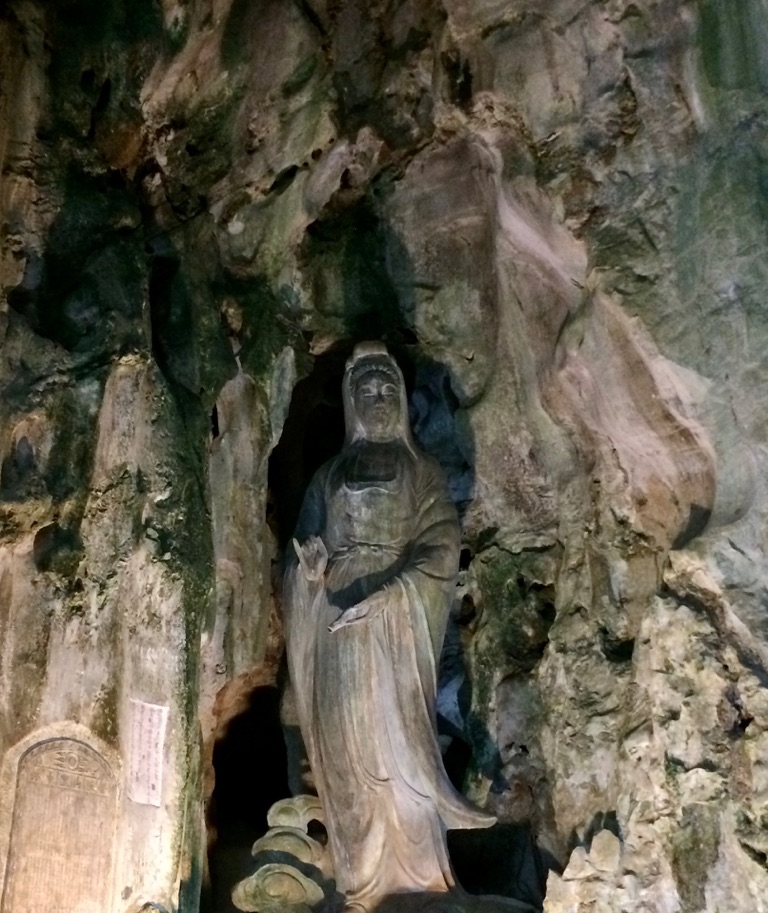
A ‘lady Buddha’ statue...
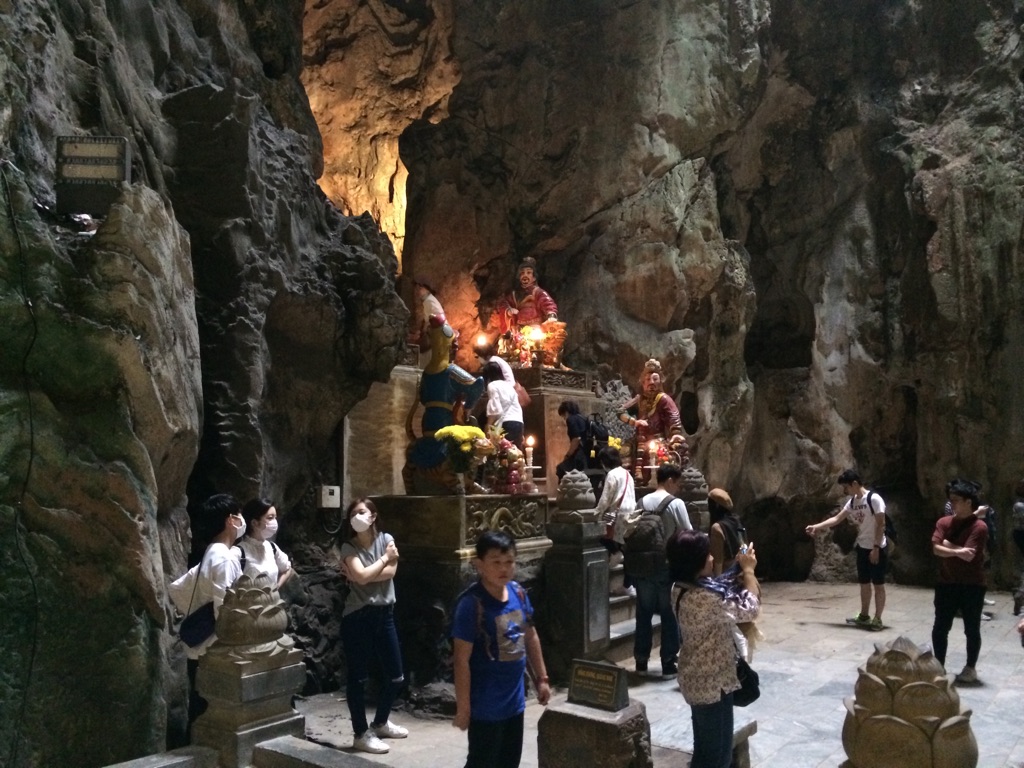
At one point, we literally climbed over boulders, through a narrow tunnel, and up to the lookout at the top of the mountain - not for anyone with claustrophobia!
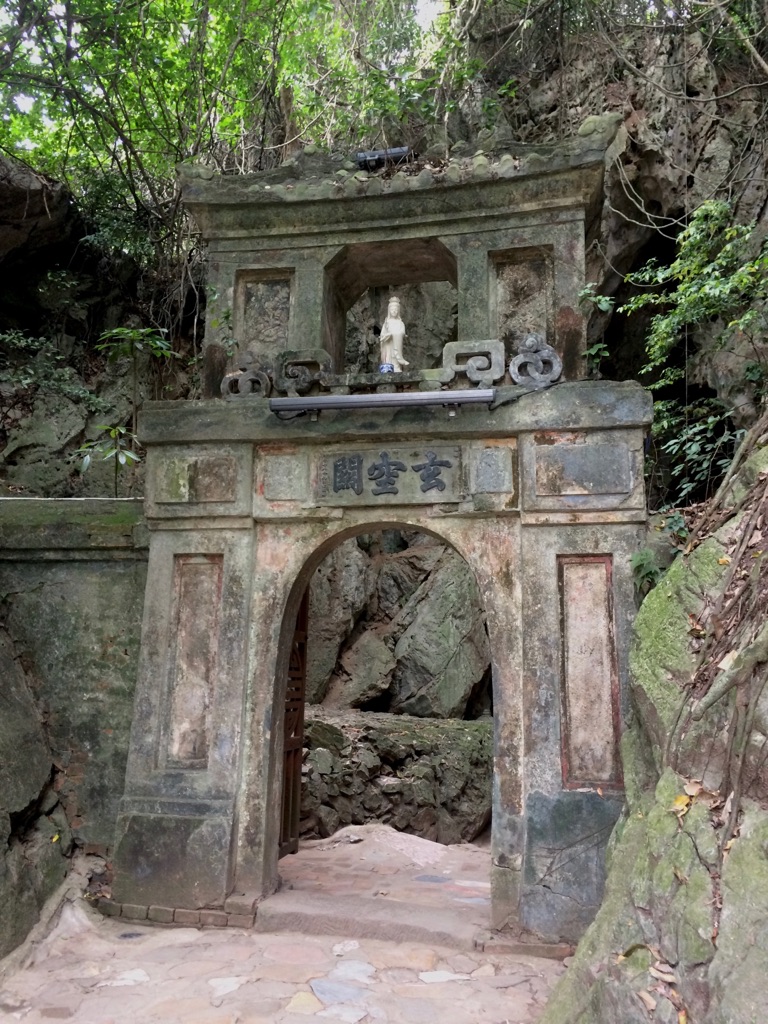
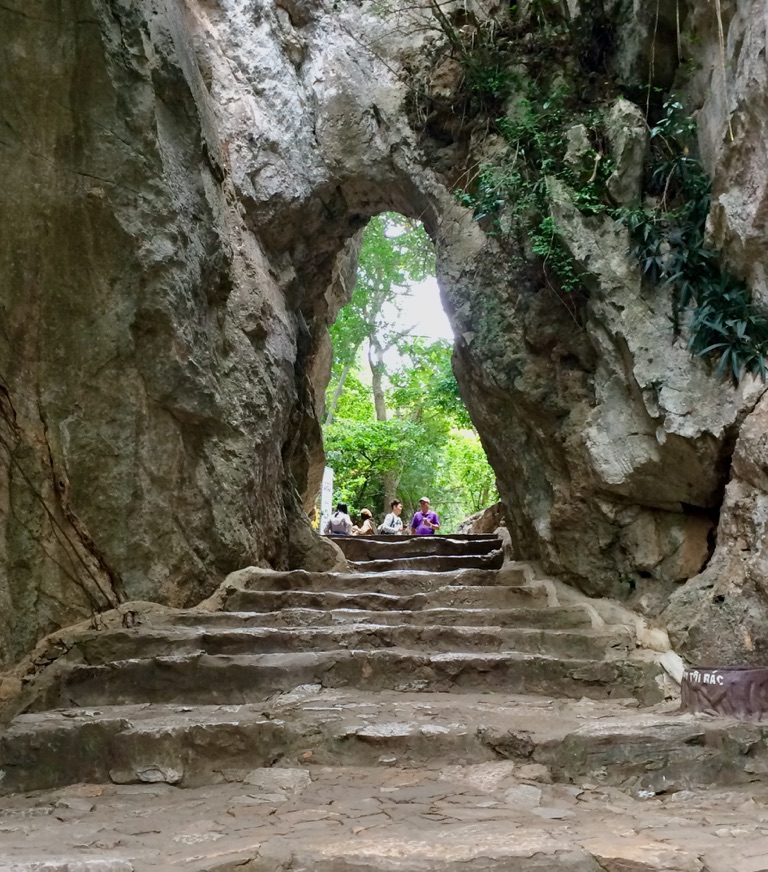
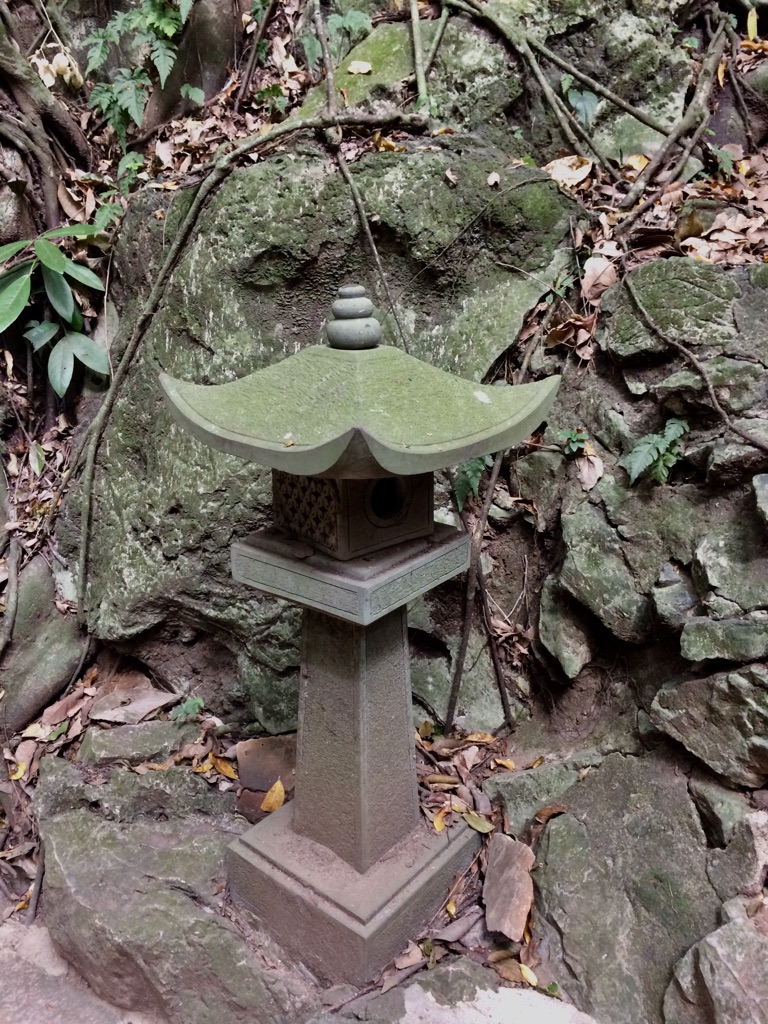
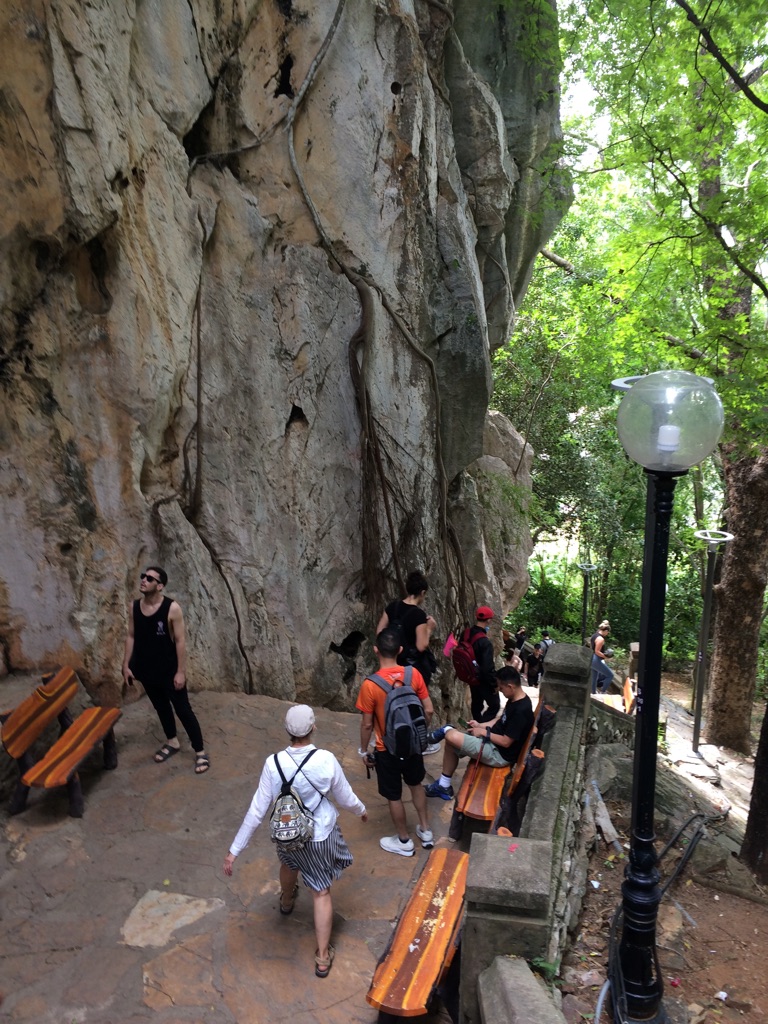
And then we were entertained by this little fellow...
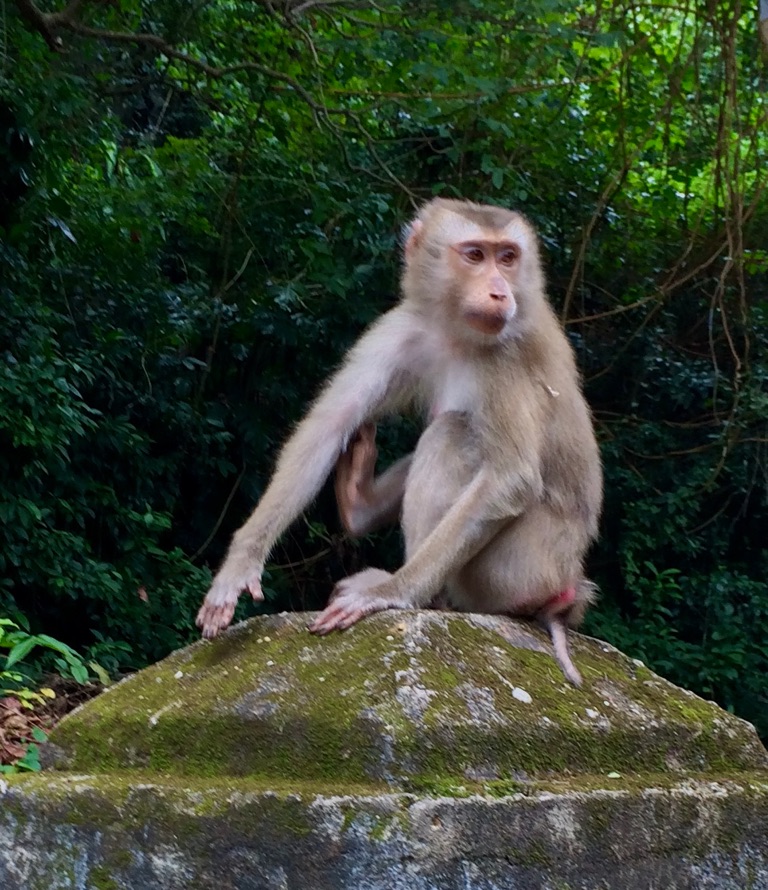
Once down on solid ground again, we were whisked off for lunch and then 40 km away to My Son.
My Son is a UNESCO World Heritage archeological site from the 4th-9th centuries AD, of Hindu temples and artifacts. It was accidentally discovered in the late 1890’s when French colonialists were clearing jungle to install telephone wires. The site was de-‘jungled’ and restored.
The site remained relatively intact until the late 1960’s when the U.S. carpet-bombed central Vietnam - destroying many of the structures. With the aid and assistance of Indian and German governments, the site is being slowly restored.
It is heart-breaking to see the destruction ravaged by the bombing. Because we were such recent visitors at Angkor Wat, we could see the similarities in style and the contrasts in the state of deterioration.
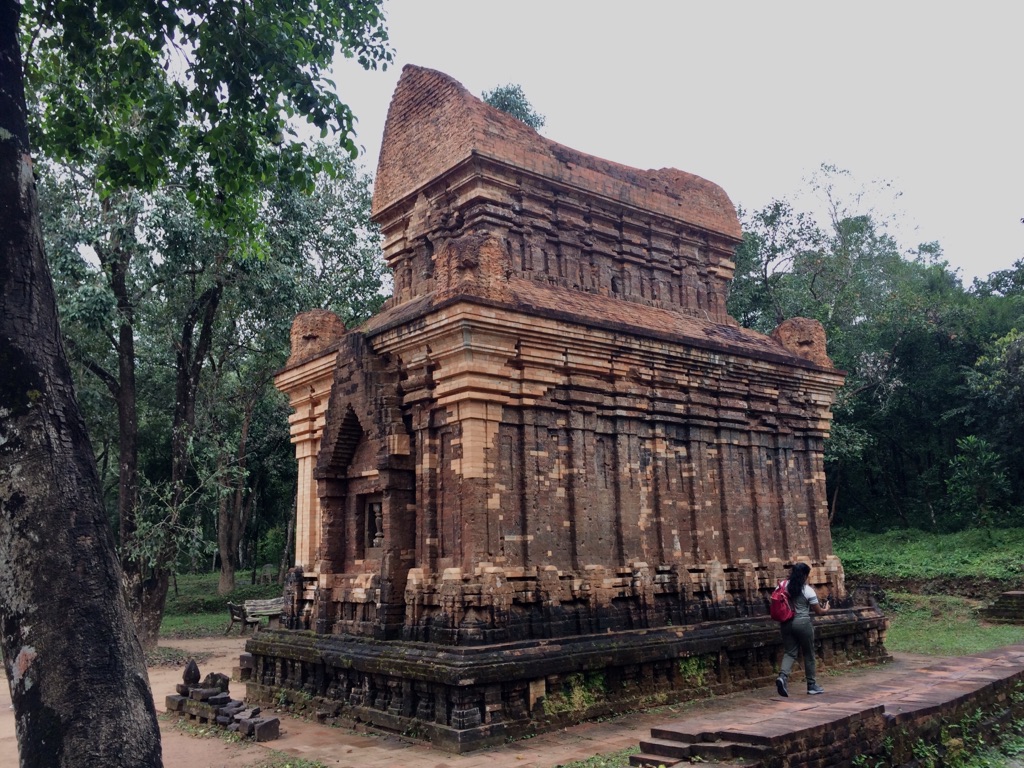
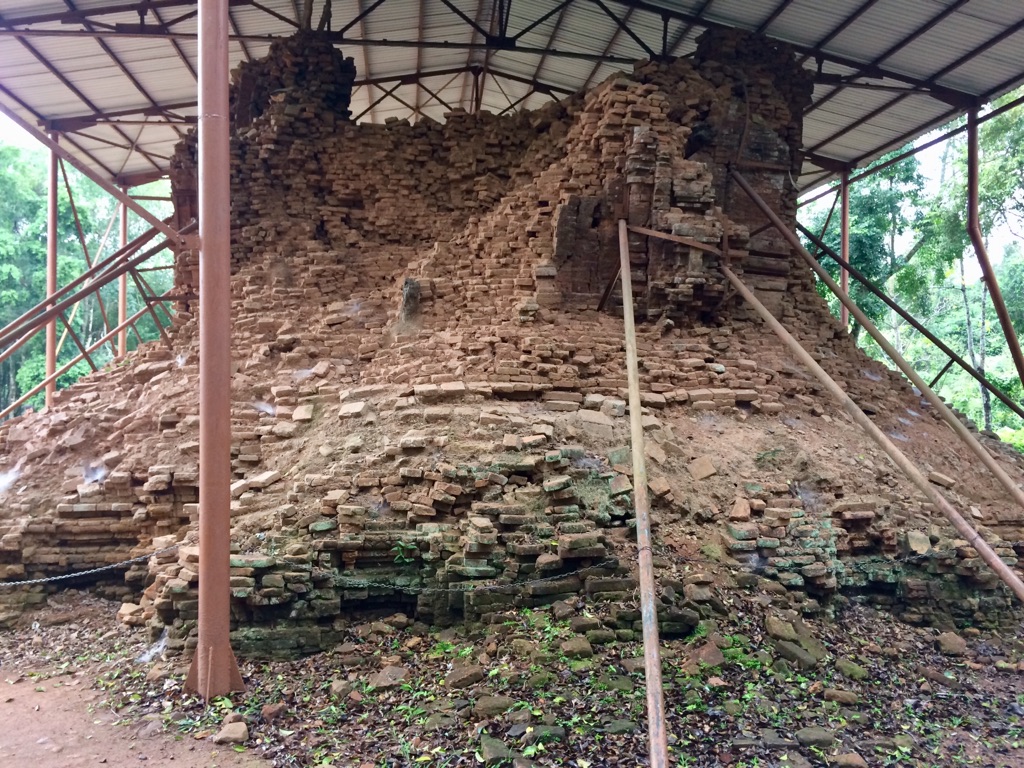

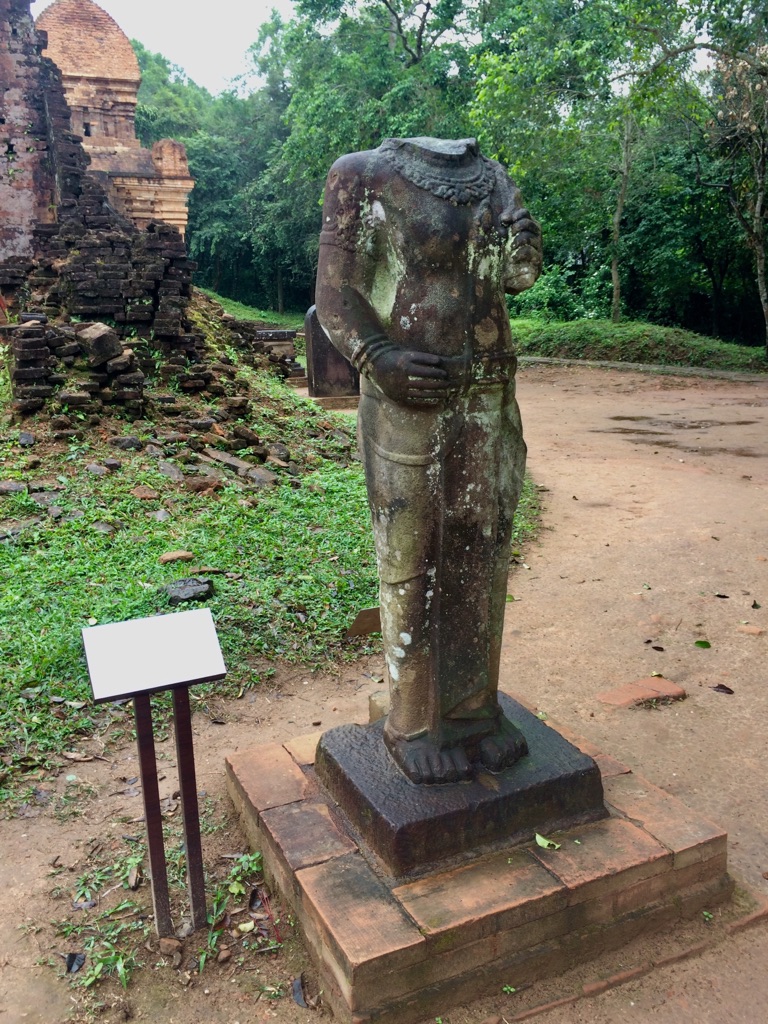
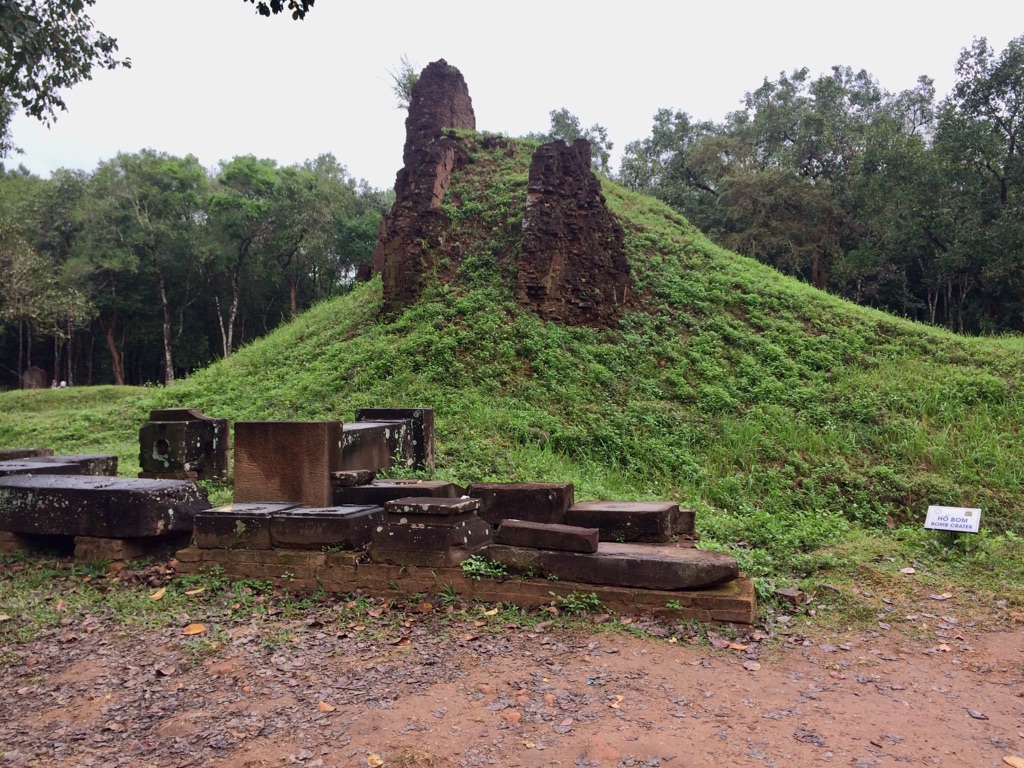
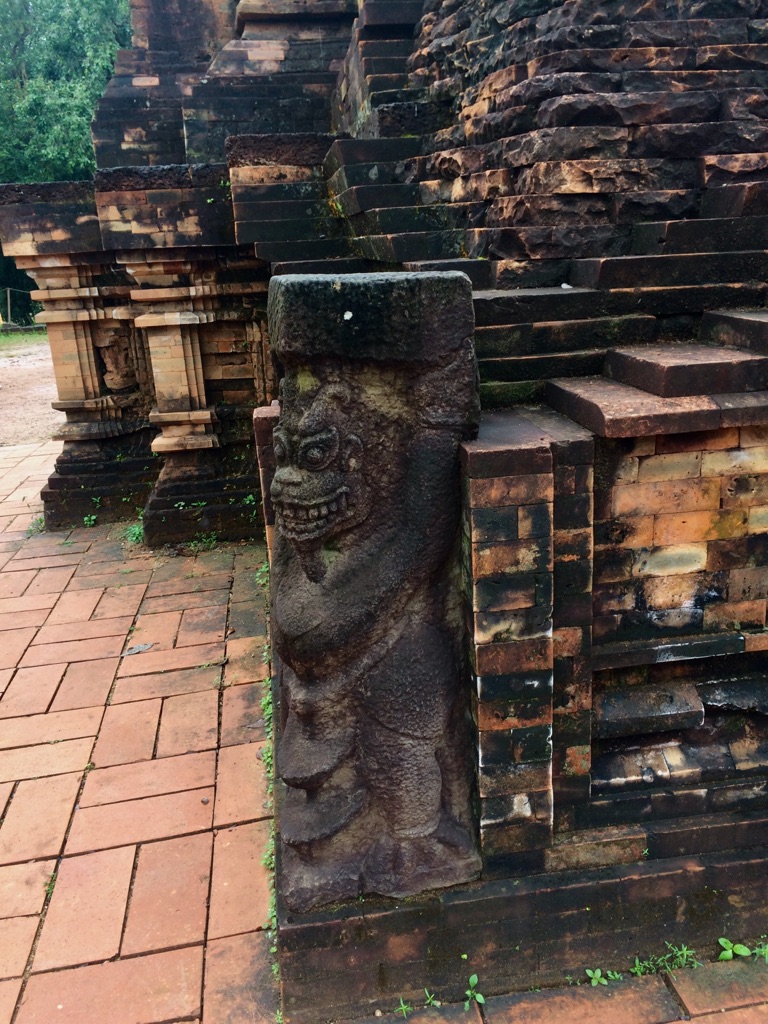
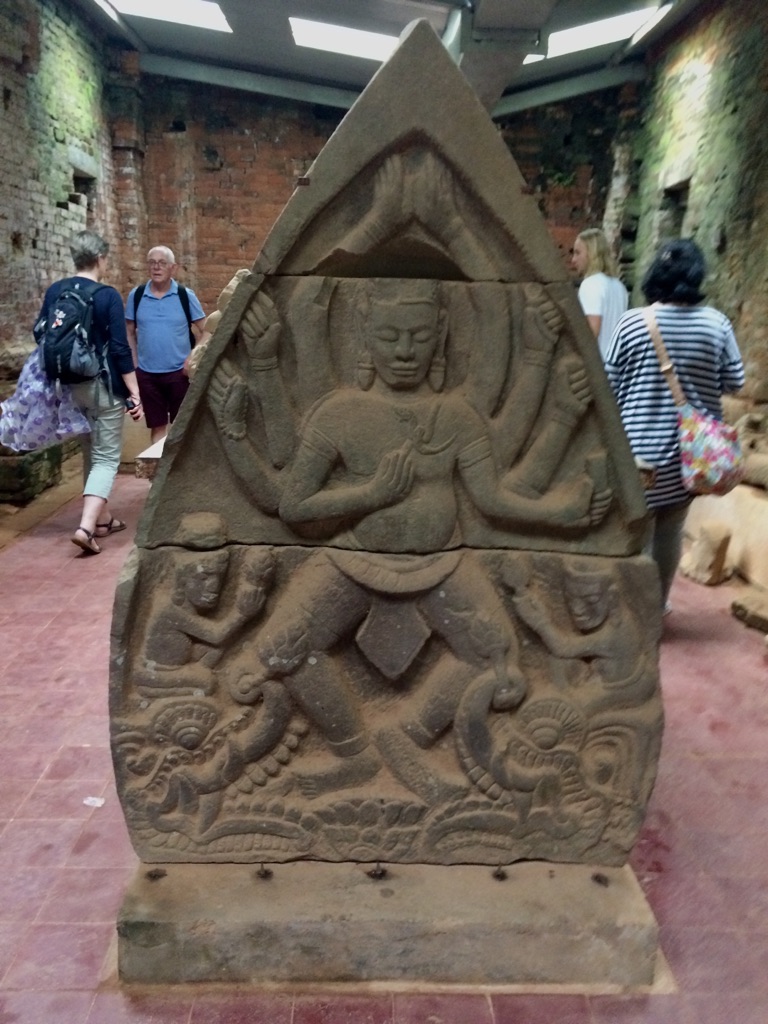
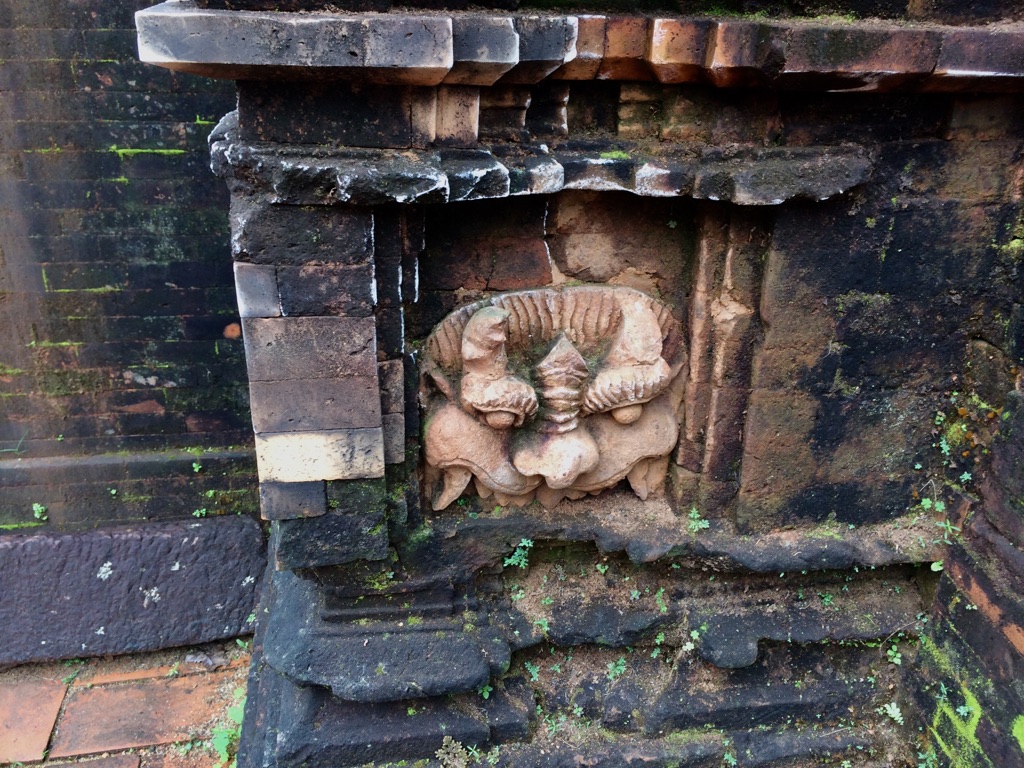
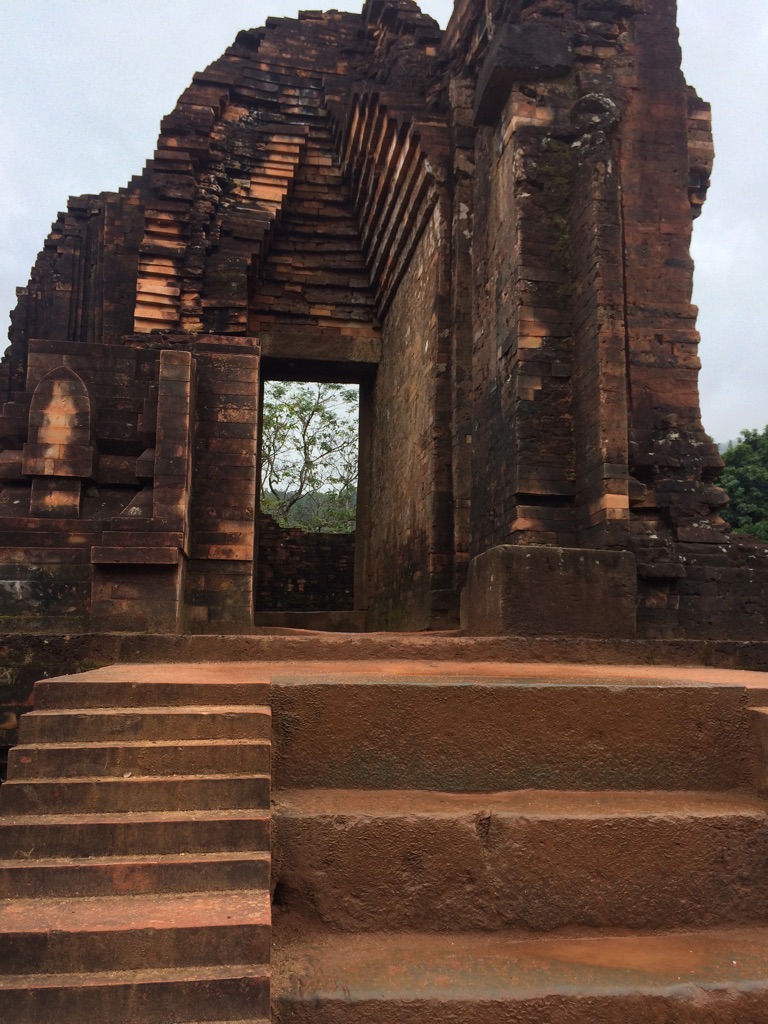
While this site, overall, was much smaller than Angkor Wat, and from 4-5 centuries earlier - it held such poignancy, with a different historical trajectory but such a familiar style. The infrastructure for the site has been extremely well-developed - a beautiful museum and roadways are in place. I do wonder how some of the buildings can possibly be restored without losing the original integrity of ancient design and materials.
Coffee, lunch, shopping, beer, dinner...
That is the total extent of our day today...except for a tour of a Chinese cultural centre. Just food, people-watching and a lot of relaxing.
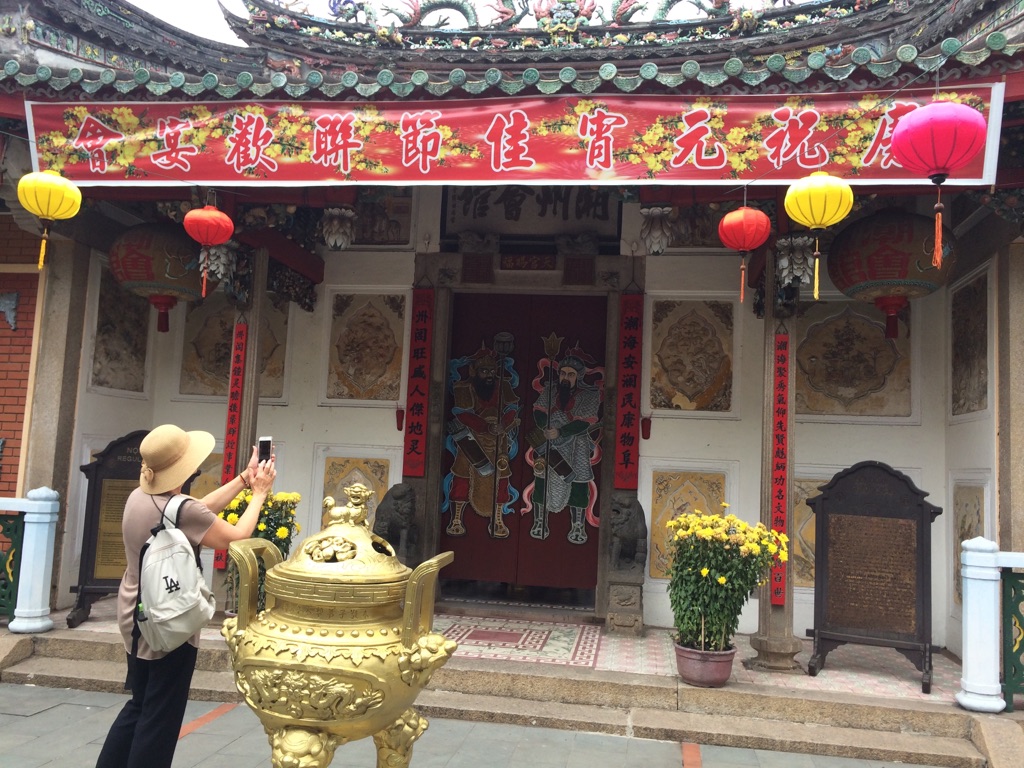
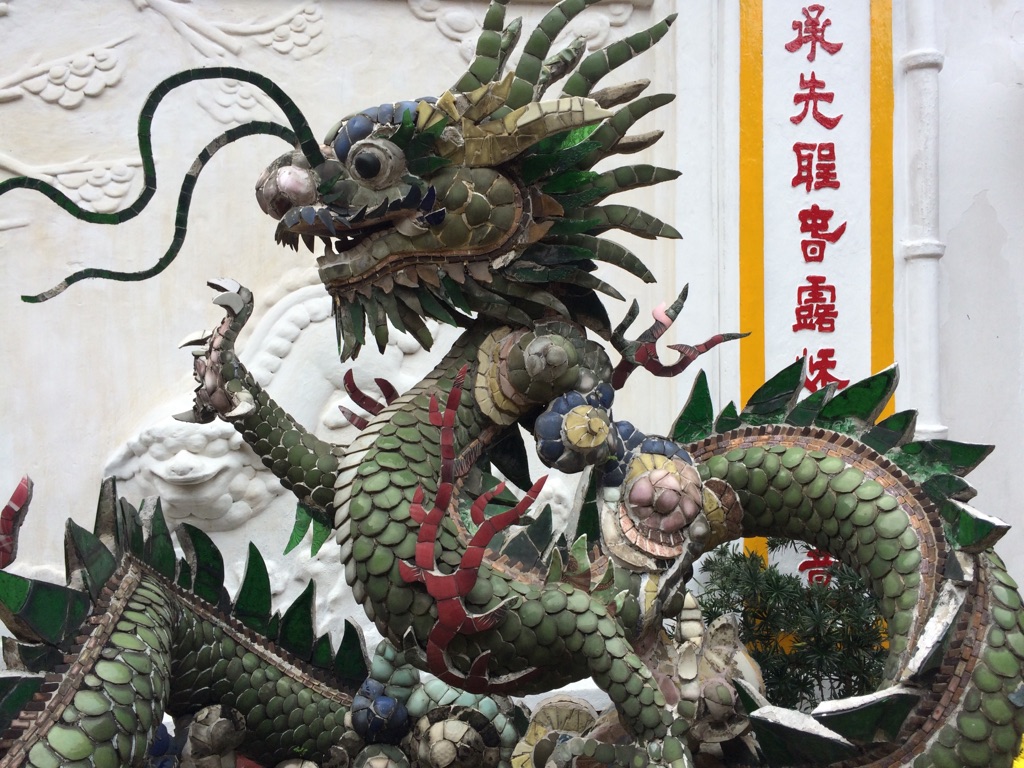

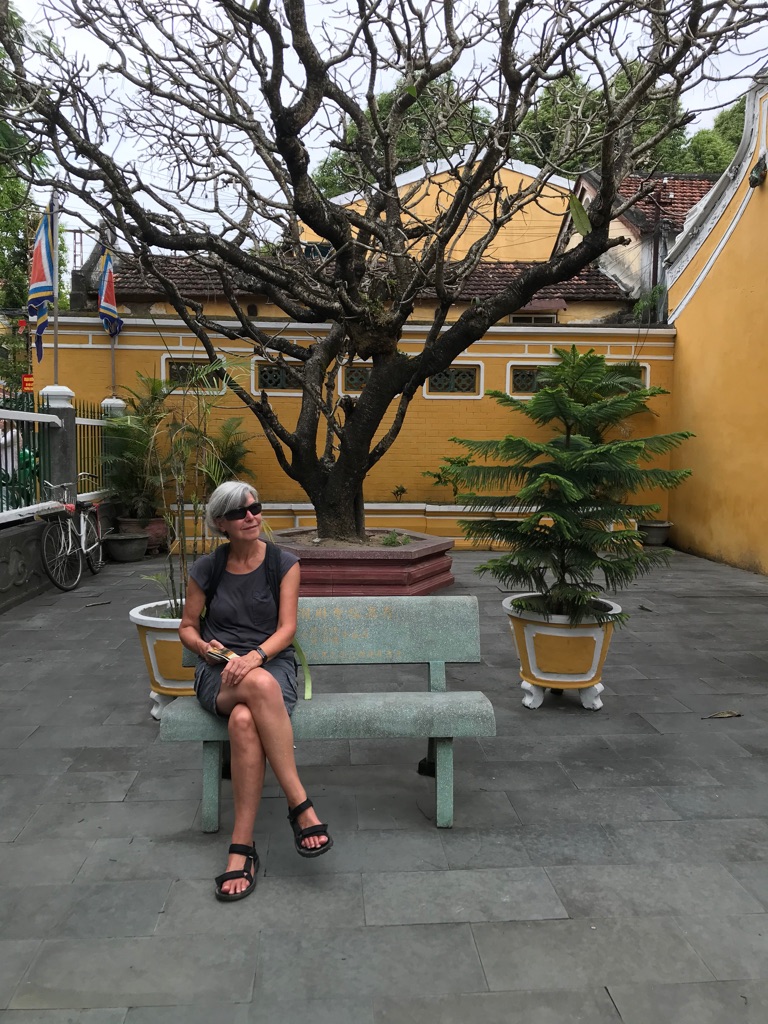
Contemplating the merits of exploring the cultural centre - or - just going for lunch...

Kate on her way to lunch...
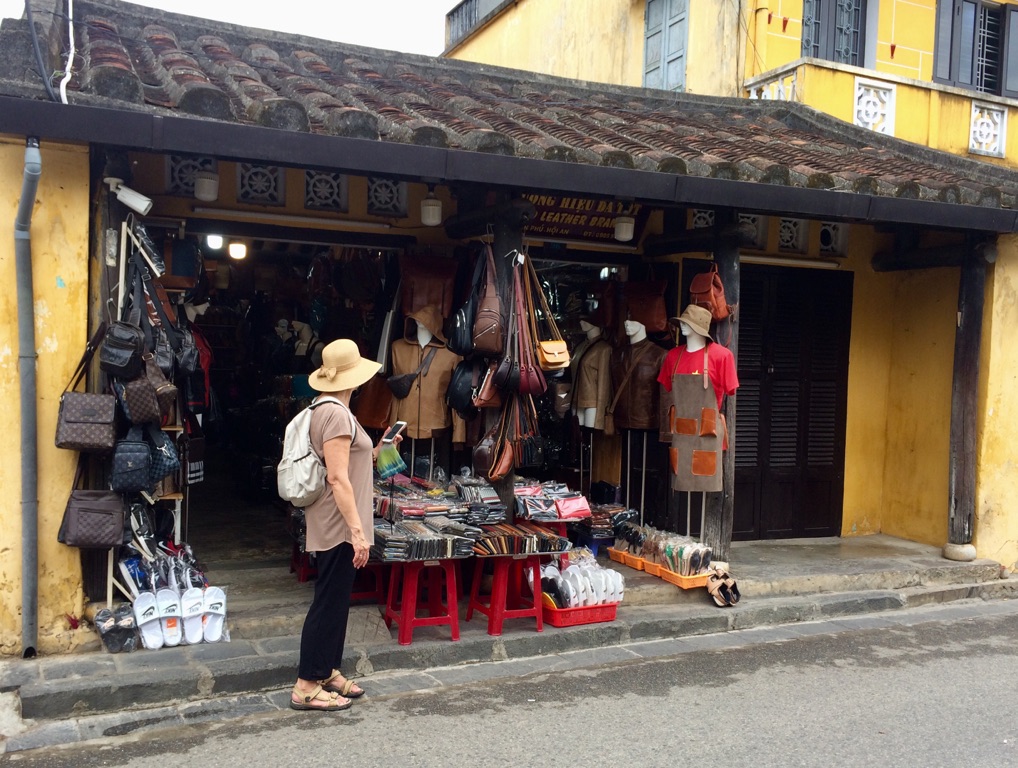
Kate distracted by leather...
The inviting afternoon patio...to while away a few hours...
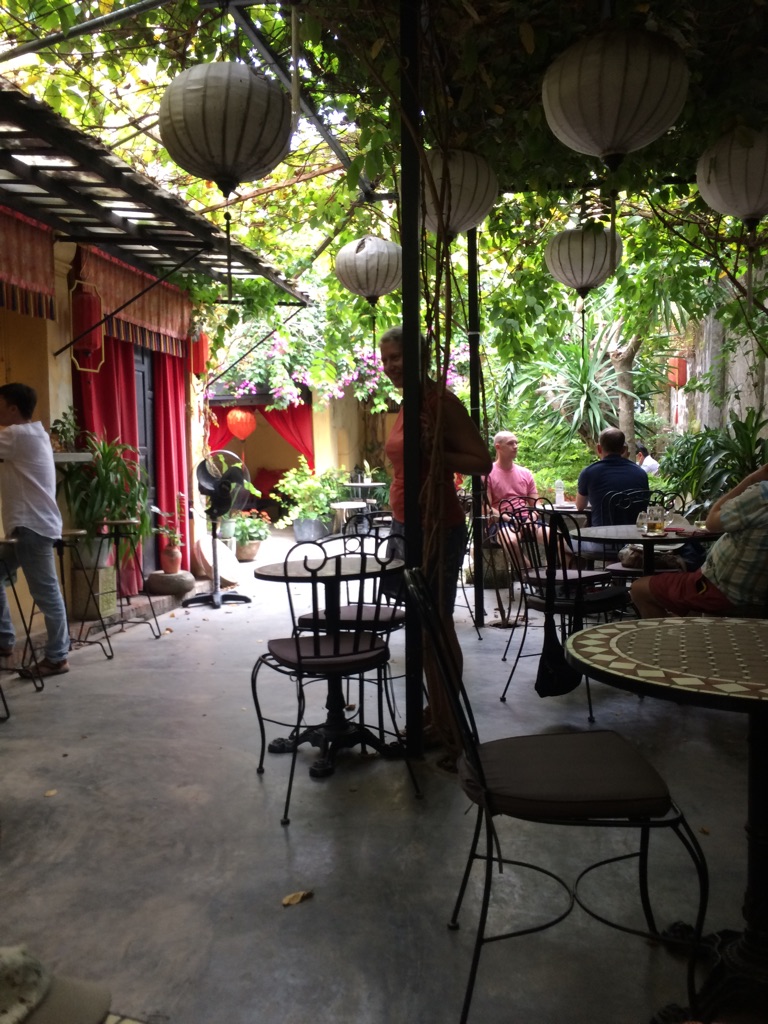
And then dinner - with the old town all lit up just for us!

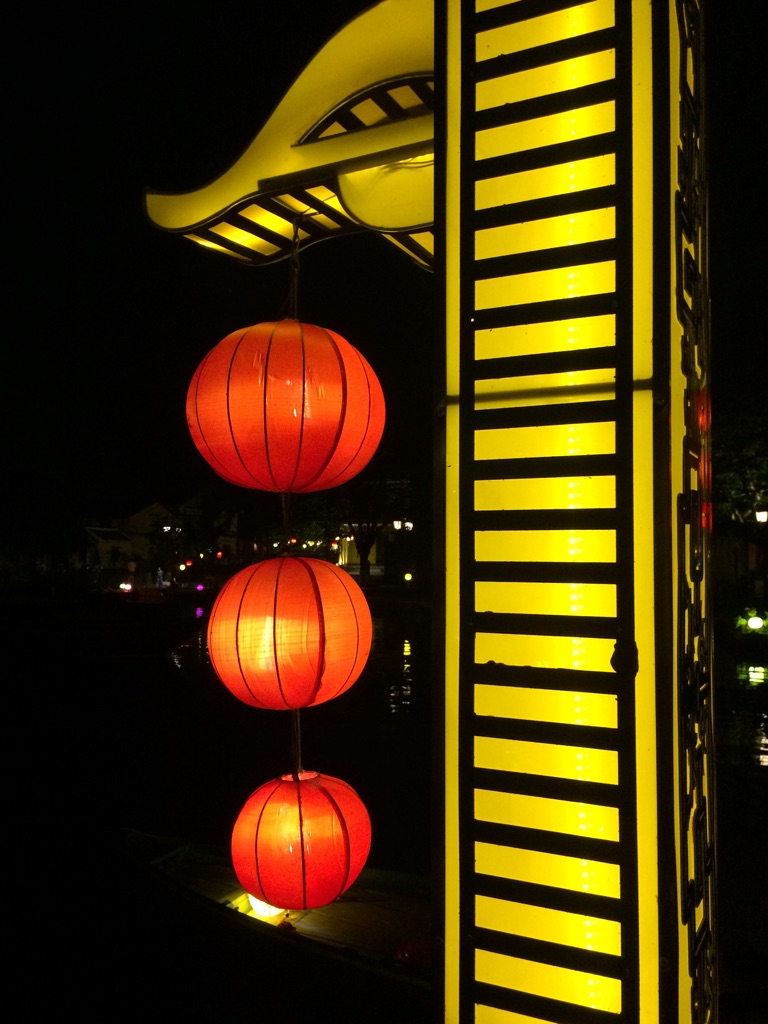

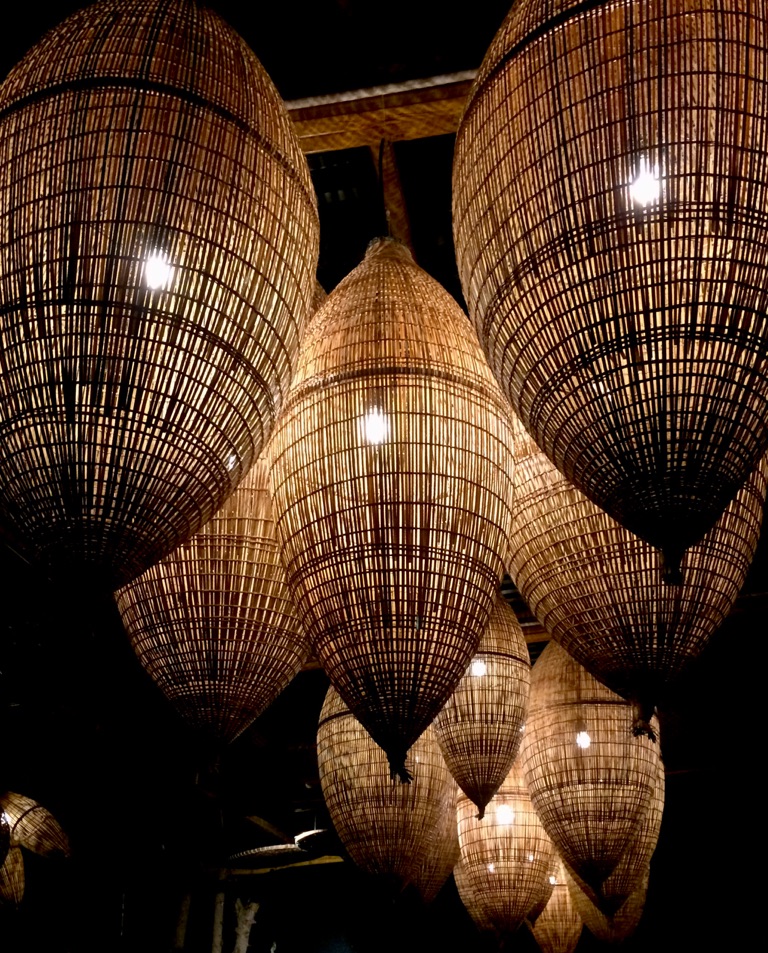
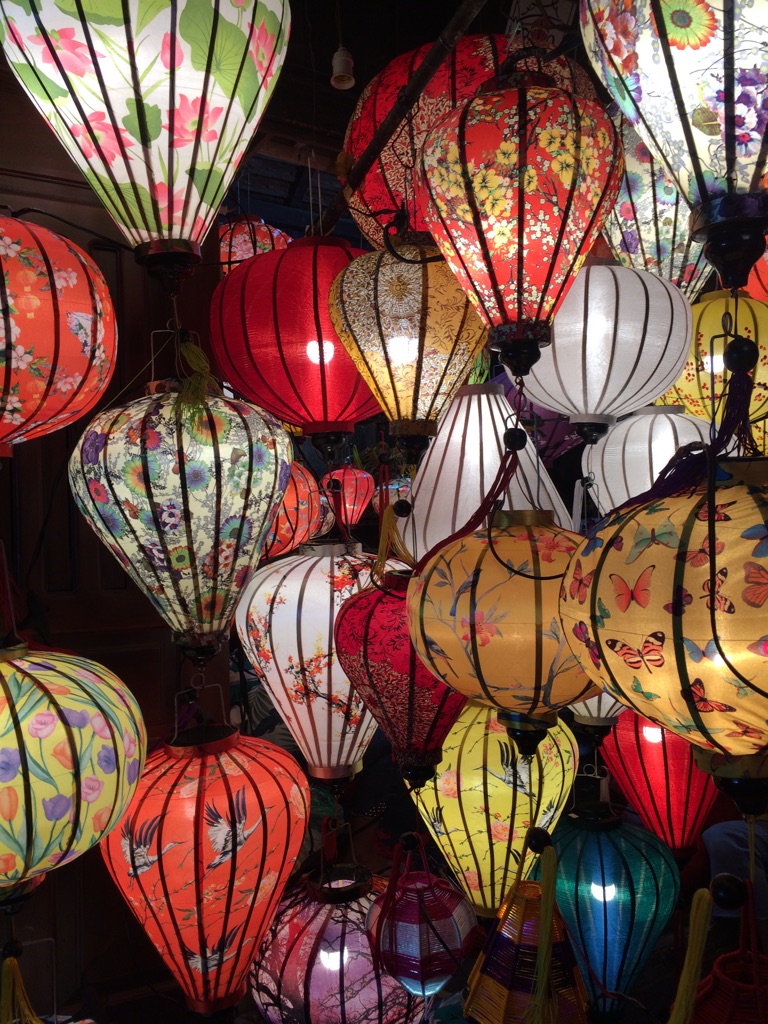
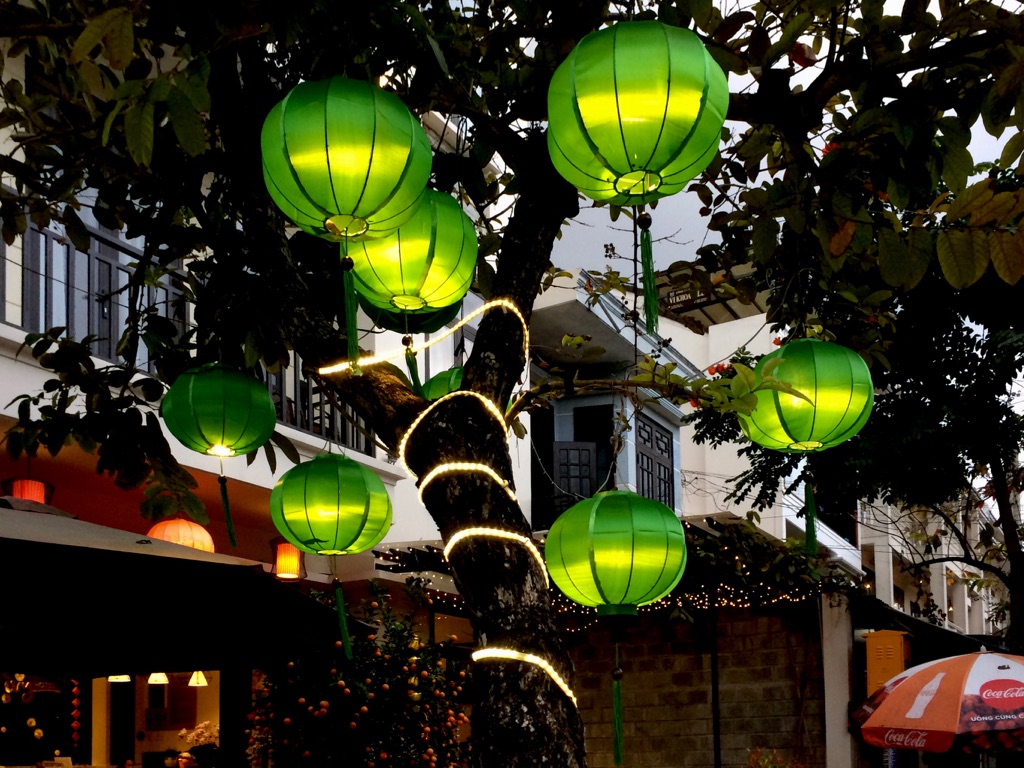
It was a rough day...
On the Beach...(with apologies to Neville Shute)
An Bang beach is a glorious stretch of beach about a 10-minute taxi ride from Hoi An.
This is where we spent the day, walking, reading and enjoying one of our last day’s of beach time. It was glorious.
We rented ‘our spot’ for 30,000 Vietnamese dong for the day ($1.80). At 1 o’clock sharp, we ordered a beer - and it was delivered to us within 2 minutes. Things do not get much better that drinking an ice cold beer on a beautiful beach, watching and listening to the waves - in mid-February and \240it is 27 degrees - above zero!
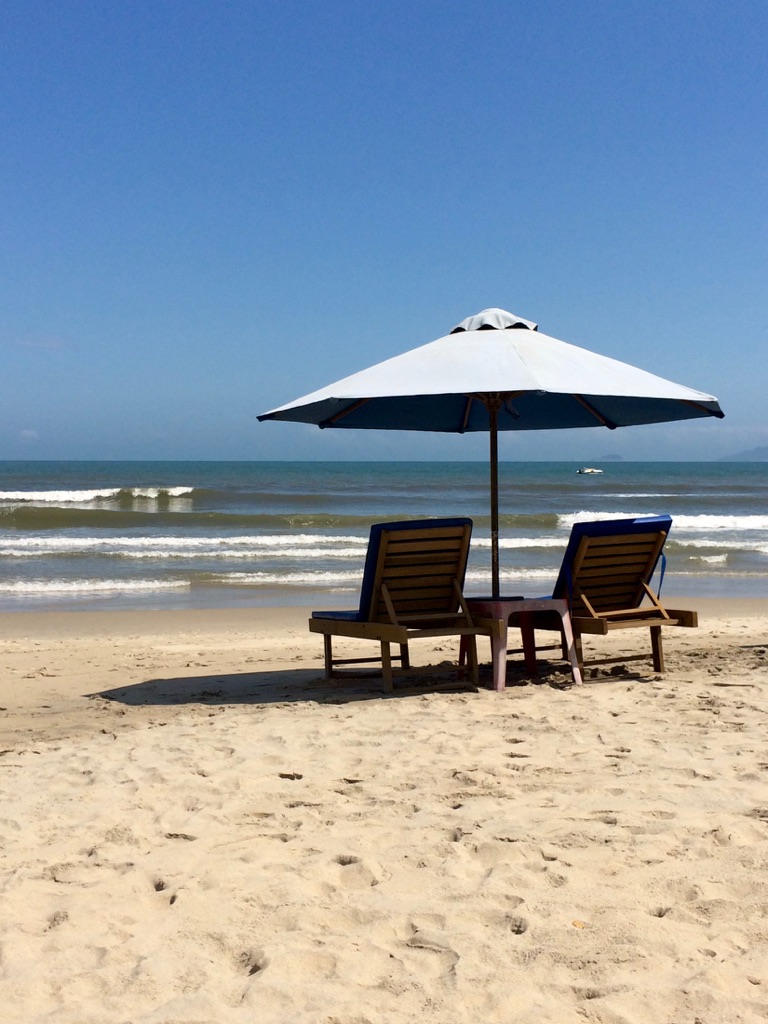
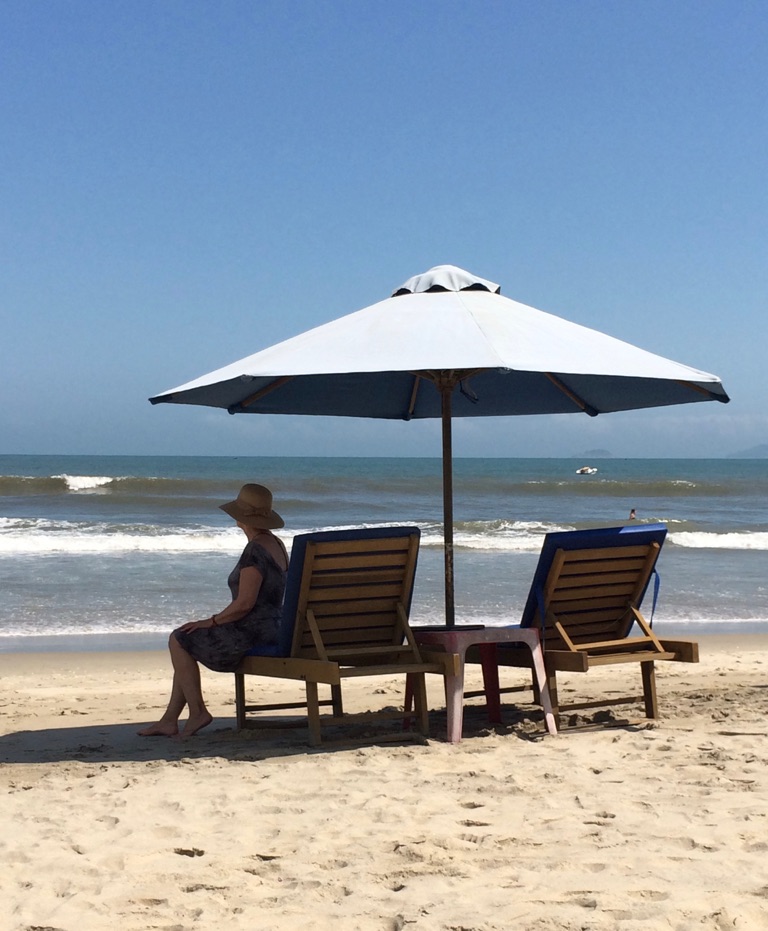
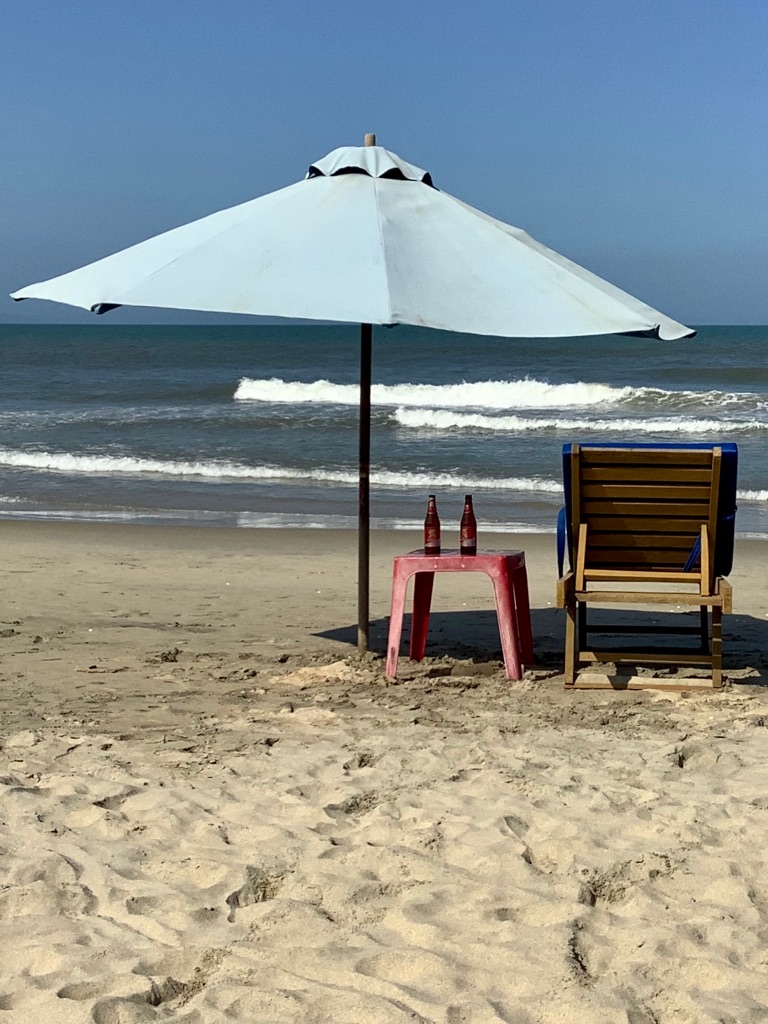
Coffee, museums and shopping...
Our intention today was to go back to An Bang beach but, alas, we are a little sunburned from yesterday’s UV rating of 11. Instead, we decided on museums in town - which we did - and, then, once again, we were seduced with shopping!
First coffee.
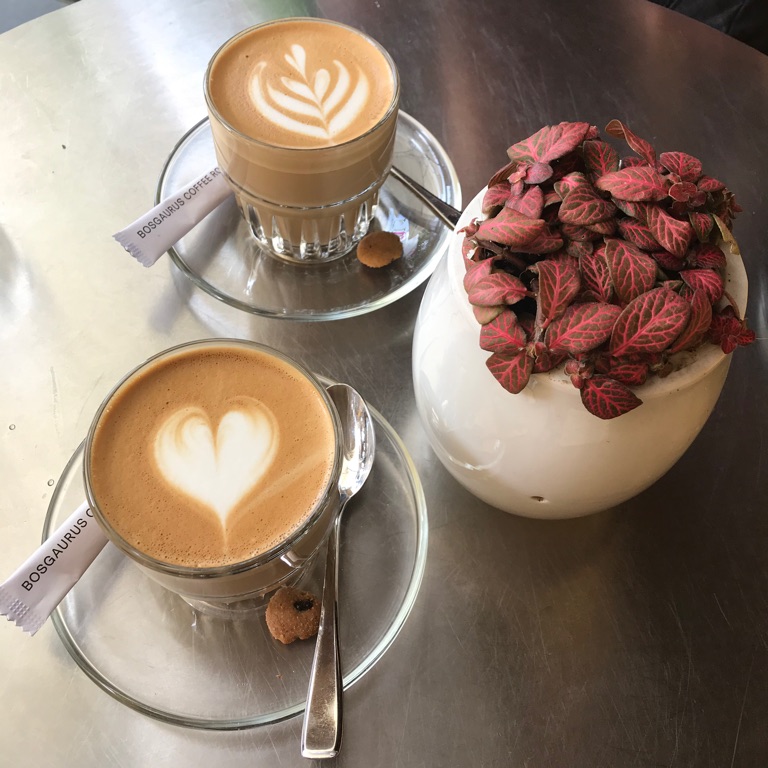
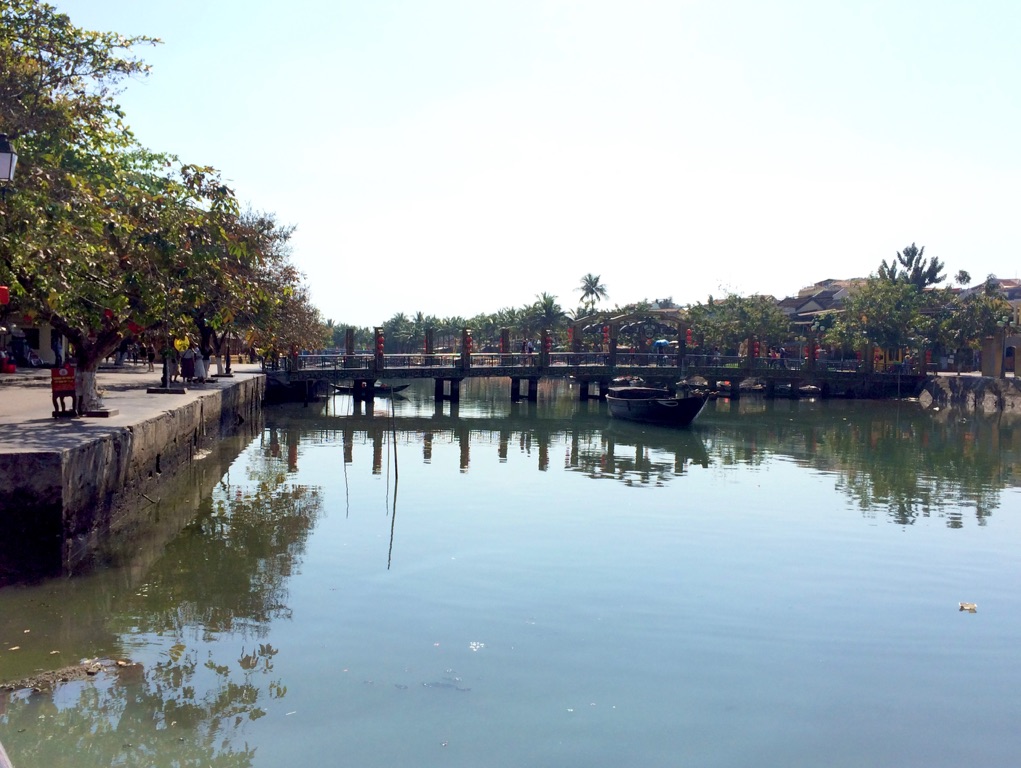
Then the lovely river views...
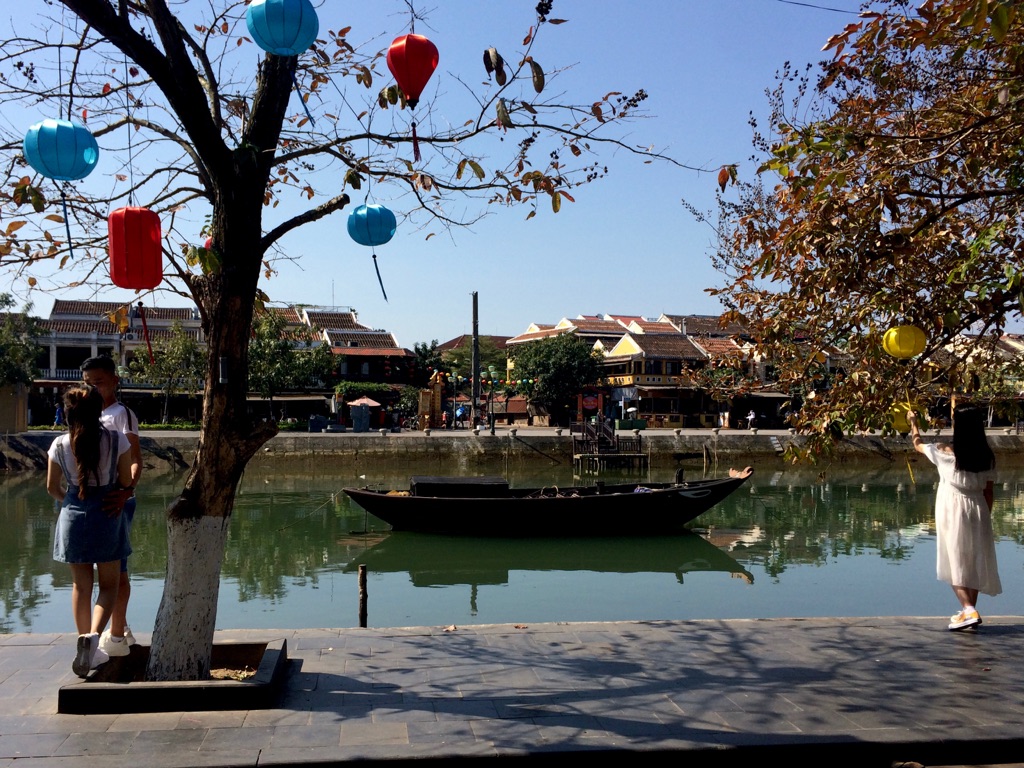
Then some museum and art gallery hopping...
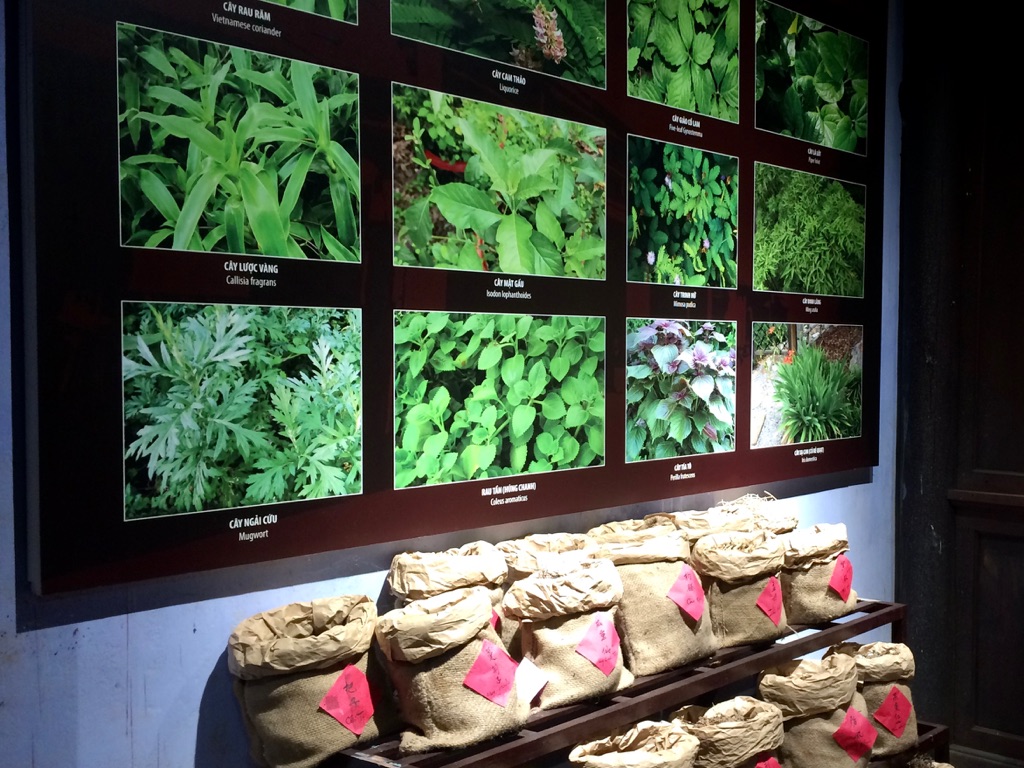
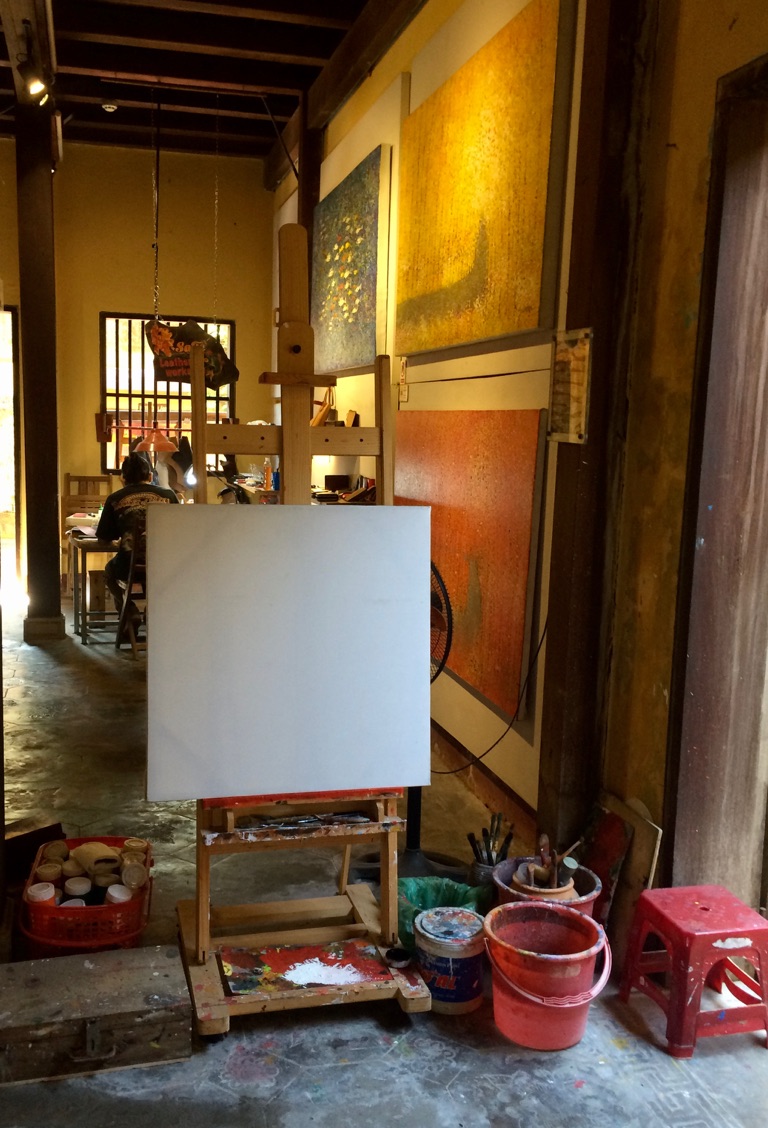
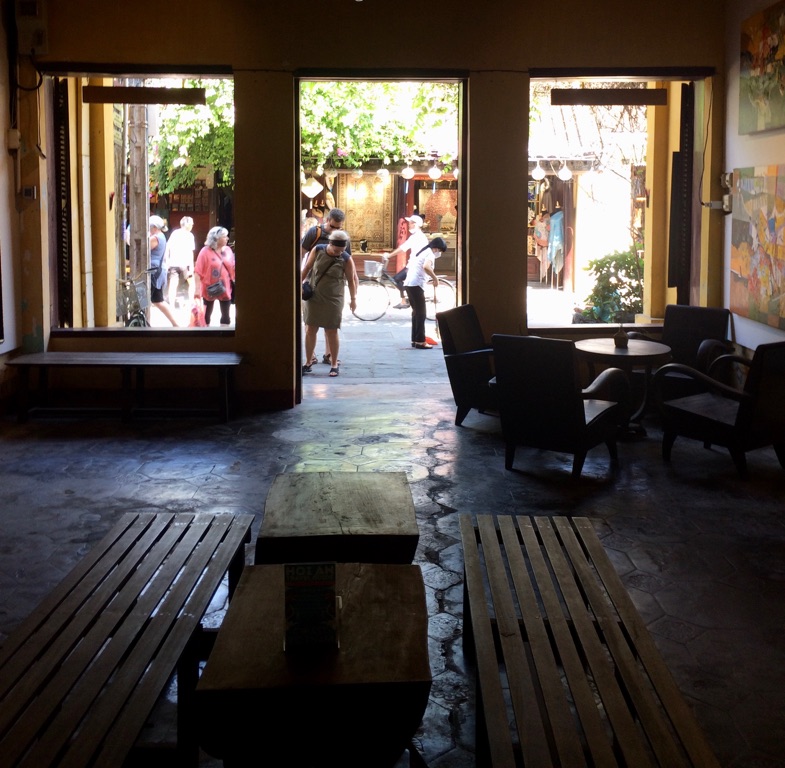
An interesting bicycle...
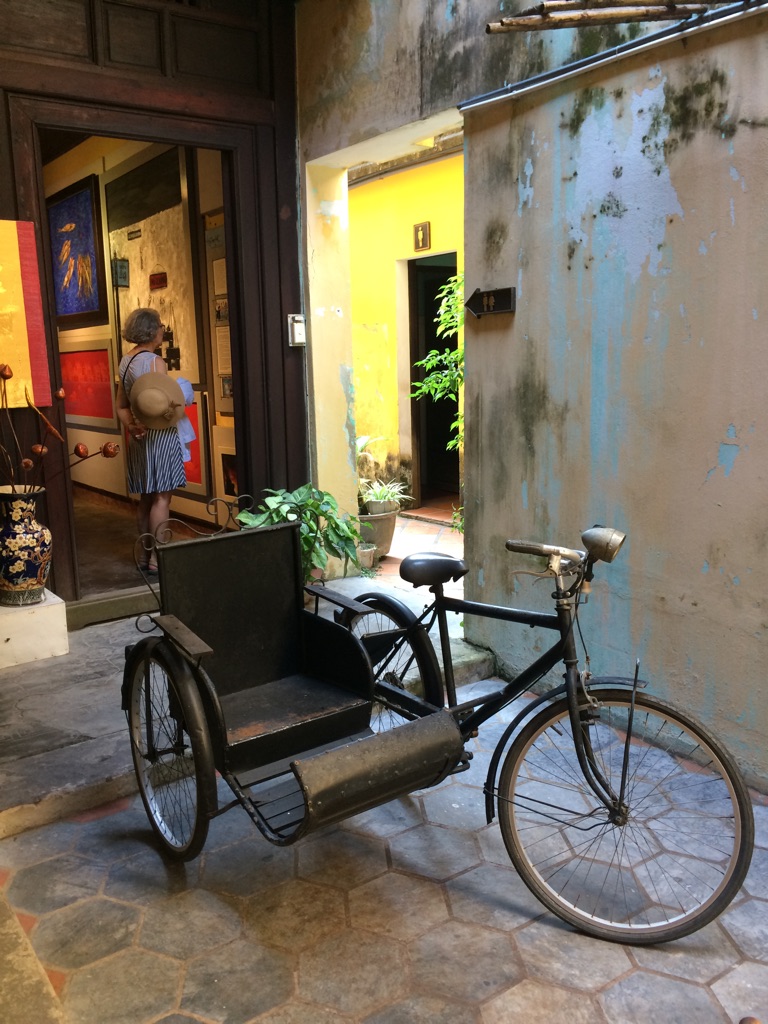
A provocative sign...
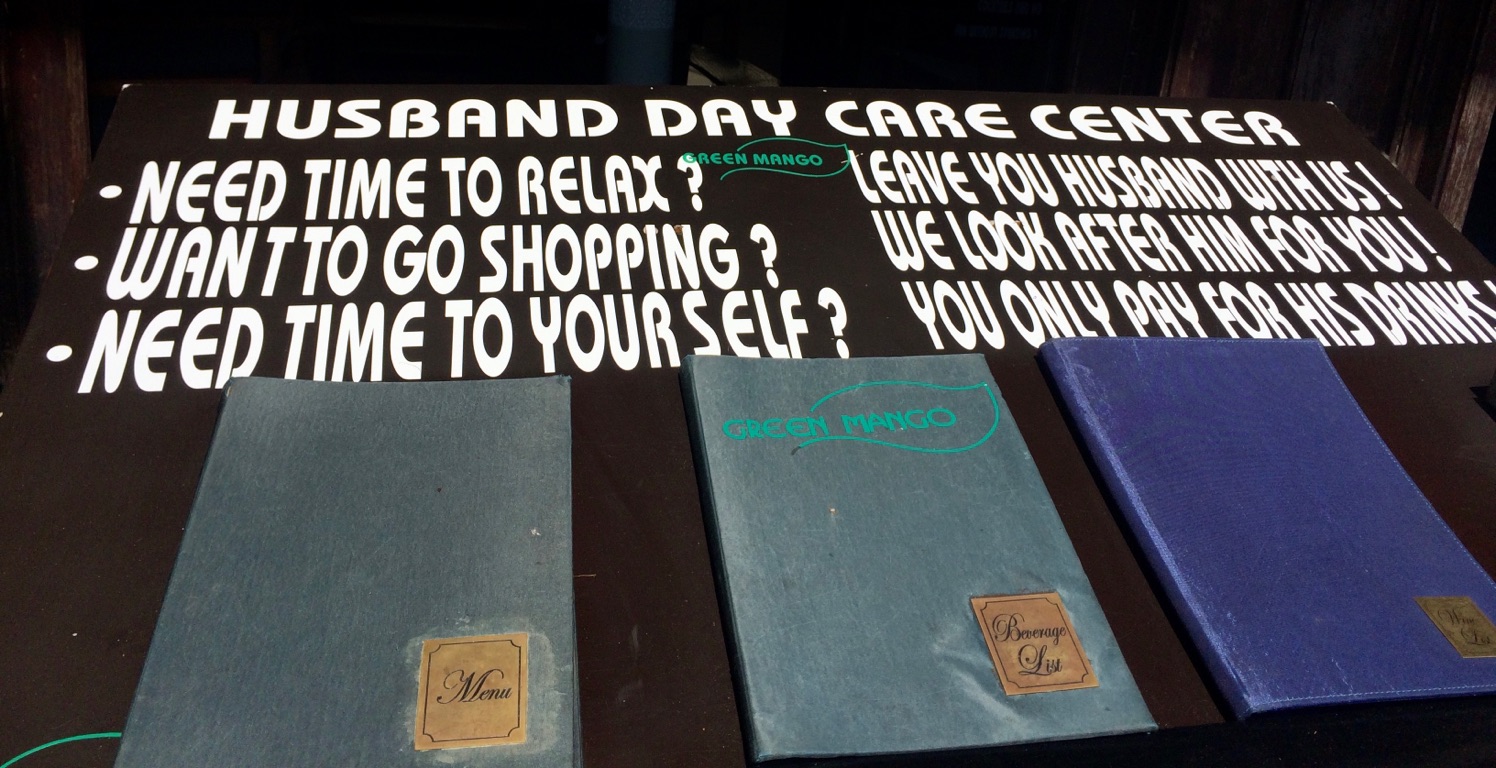
And the Vietnamese flag...
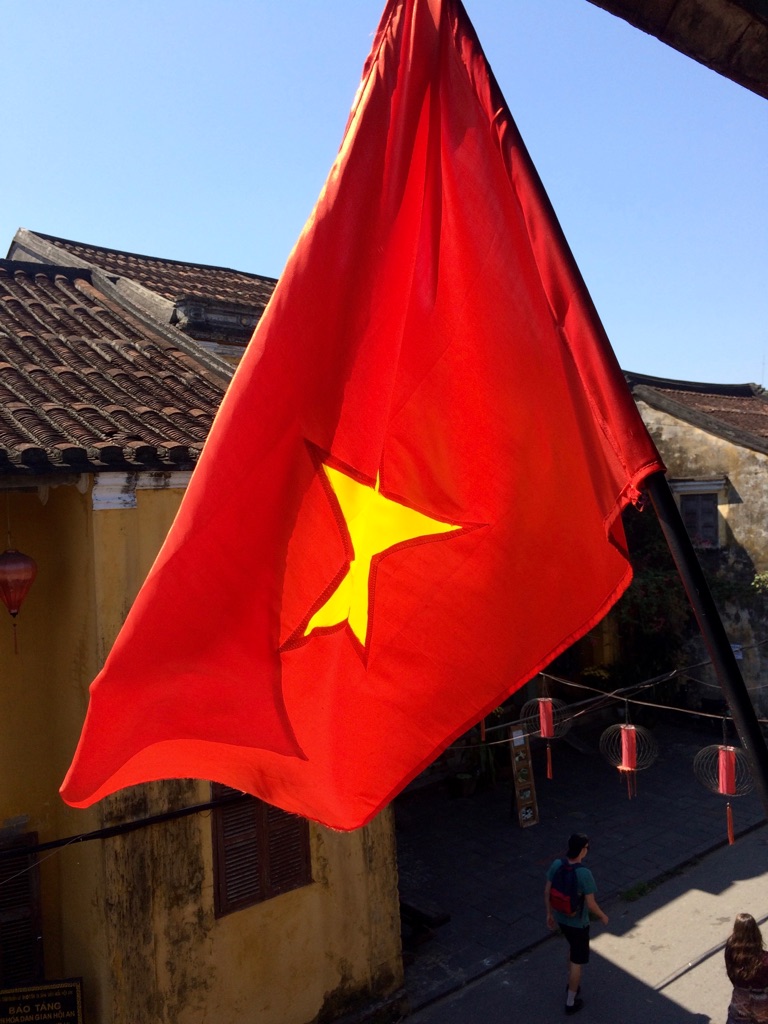
And...here we are again...
At An Bang beach for the morning - trying very hard NOT to get sunburned - which happened last time while sitting in the shade!
Reading and listening to the waves from the East Vietnam Sea are on the agenda for today.
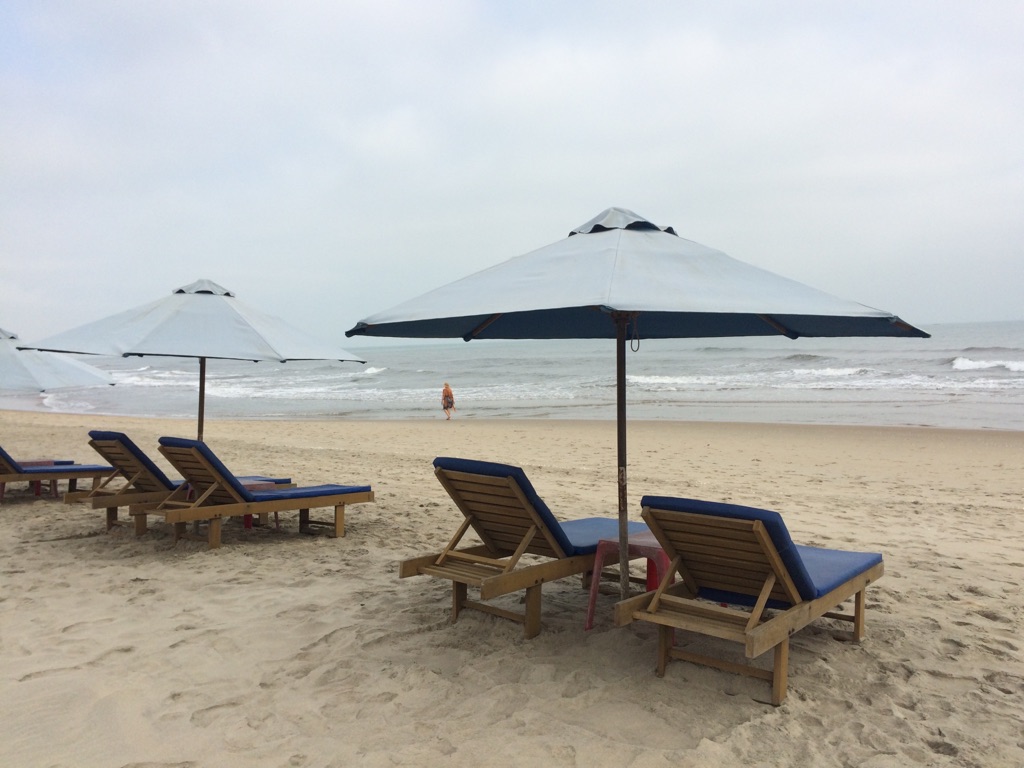

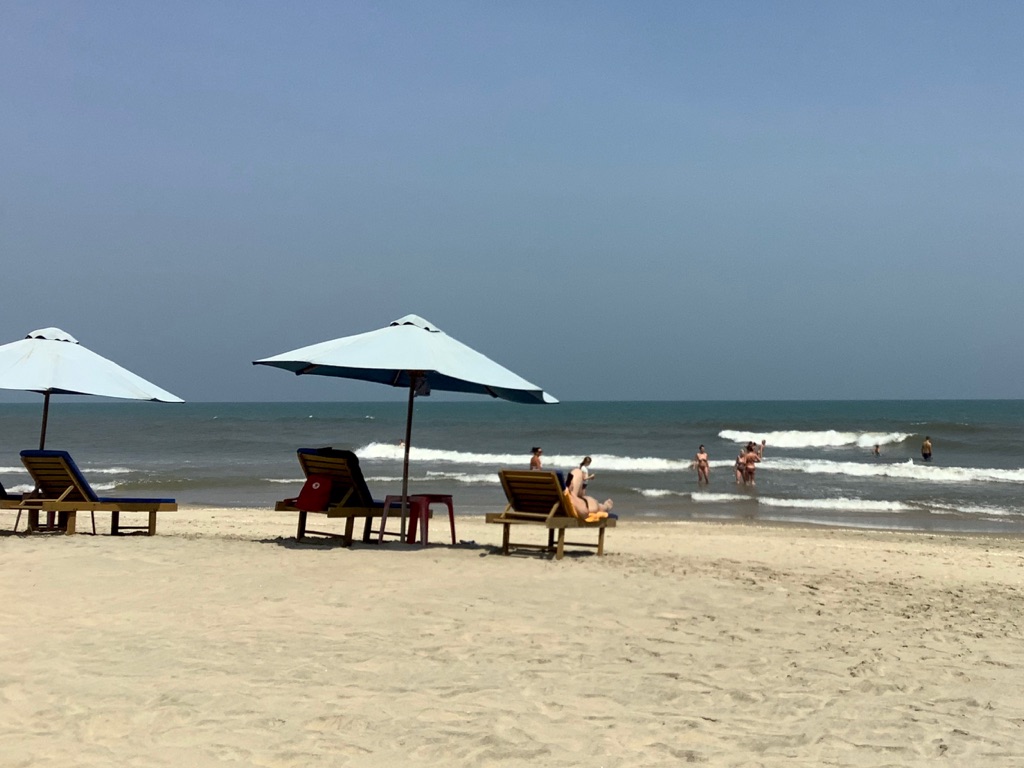
A very friendly beach vendor...
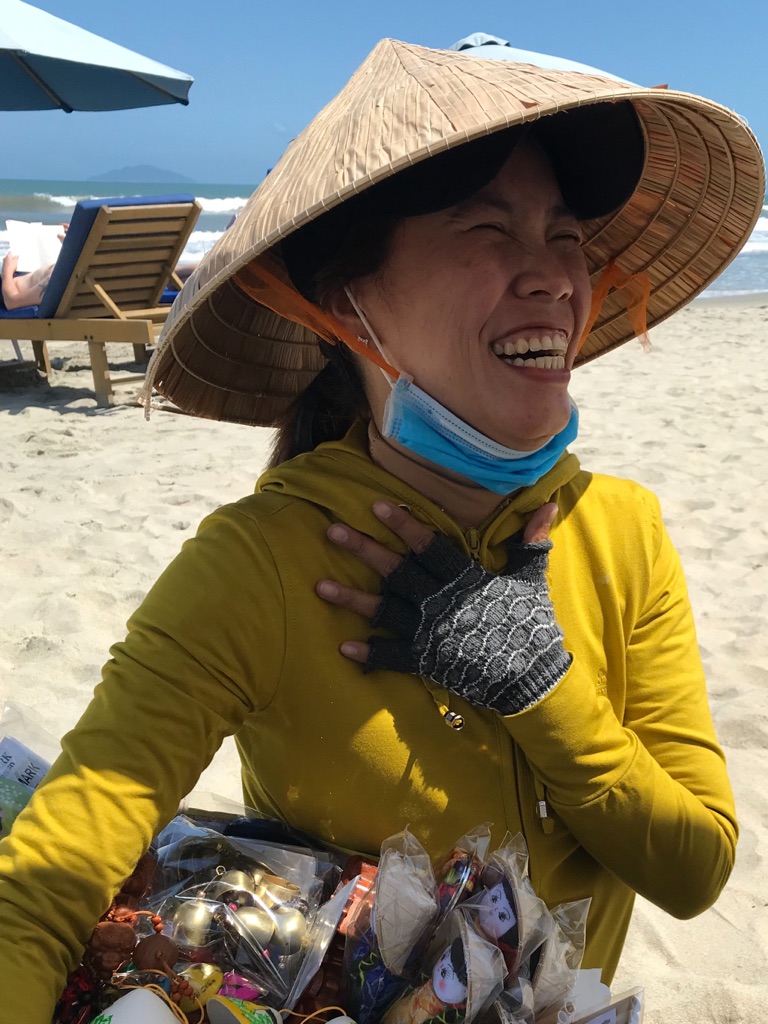
Perfect parasailing weather...
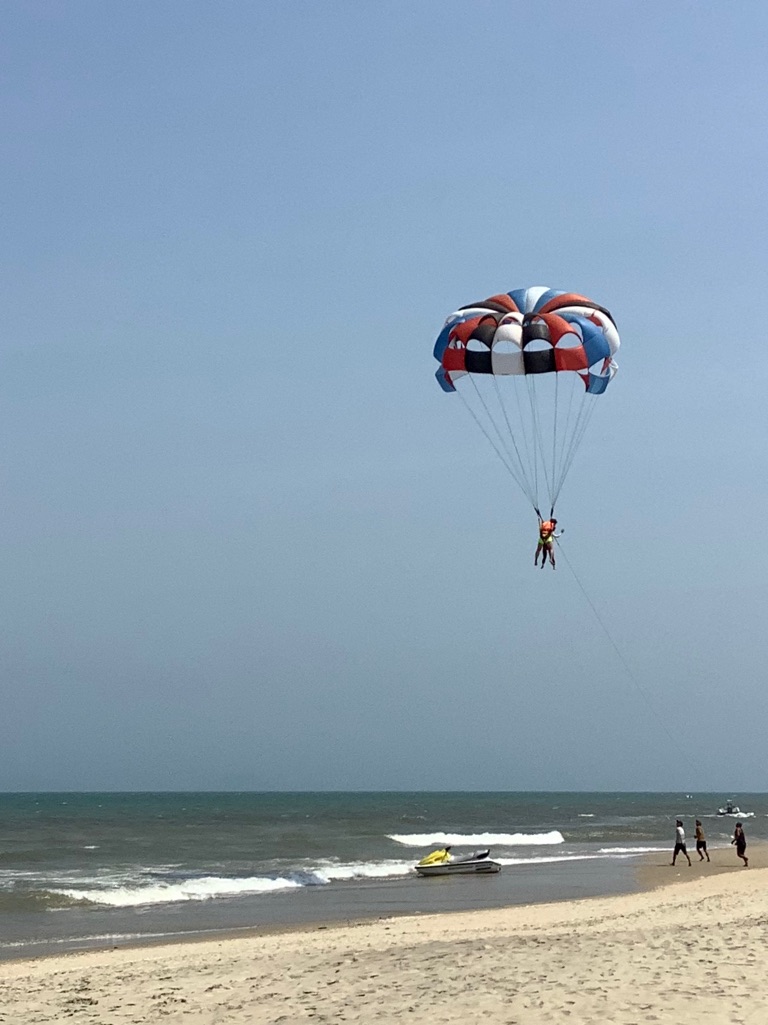
And, sadly, this is our last day on the beach...and our last day in Hoi An. \240Tomorrow, we travel by bus to Hue (pronounced Hway) - the bus is always an exciting prospect...
Hue - the Imperial City
Bus ride to Hue was completely uneventful - prompt, good driver and no drama on the bus at all. We saw beautiful views of the ocean on one side and rice fields, mountains and villages life on the other side.
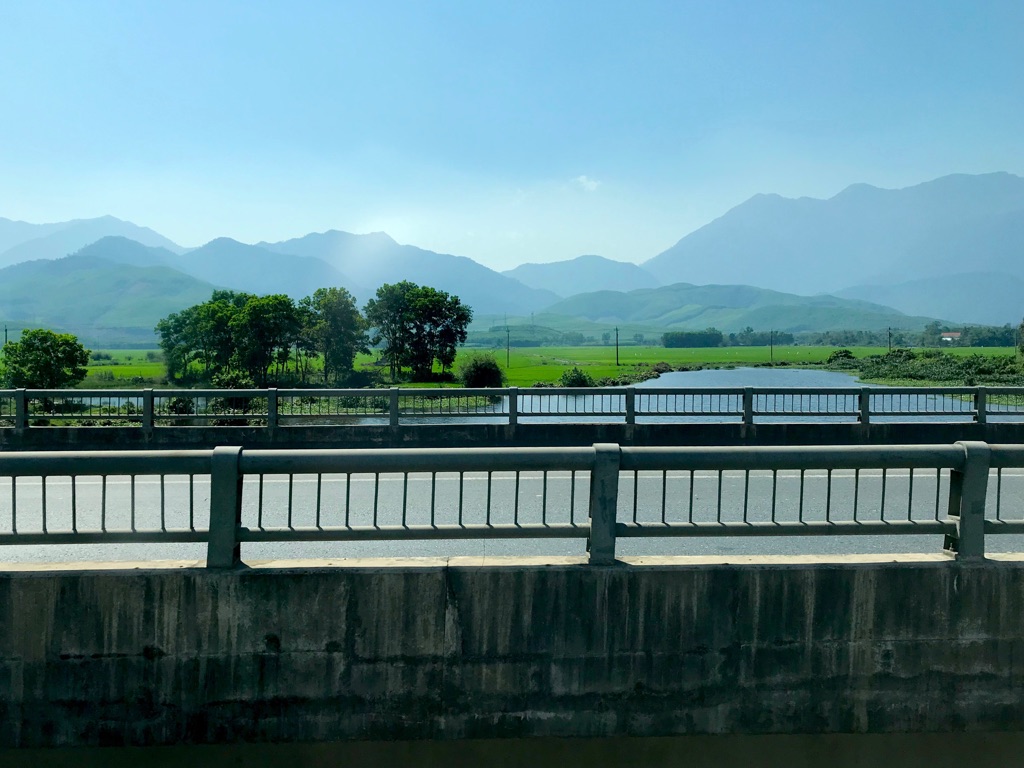
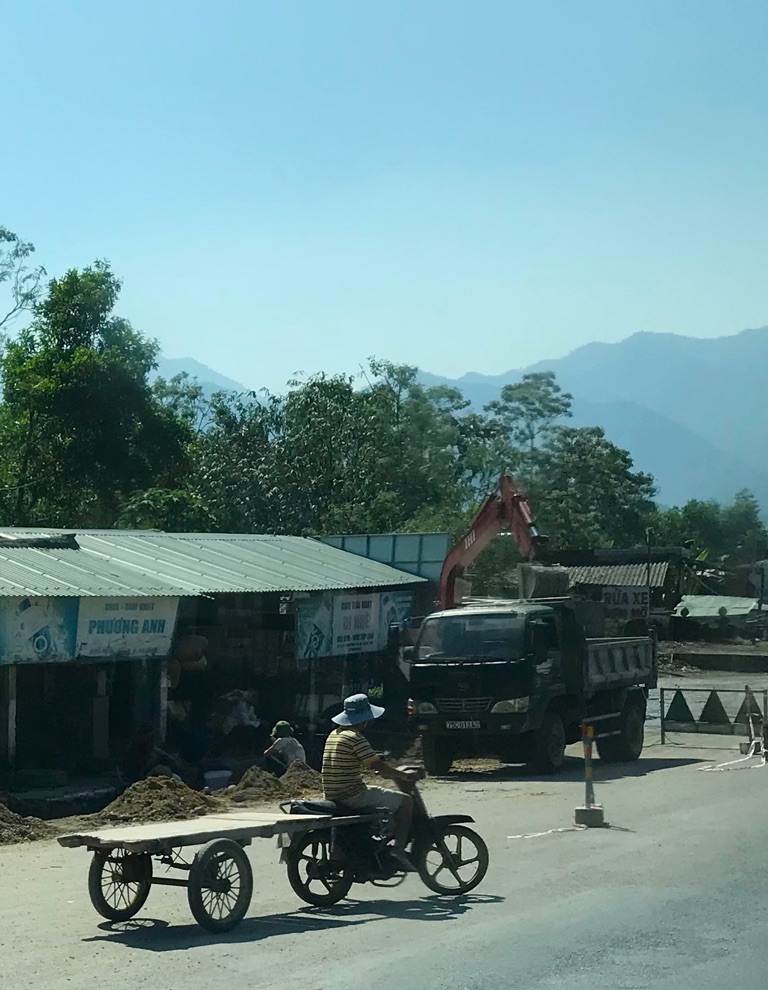
We arrived at our new digs, the Alba Spa Hotel, where we stay for 5 nights.
Our room has a balcony with a view, bathrobes and slippers, lots of storage and a bathtub - I have died and gone to heaven! The hotel has a great restaurant and tonight is Saturday sushi buffet - we reserved a table!
Went our for our usual explore the town walk and here’s what we saw:
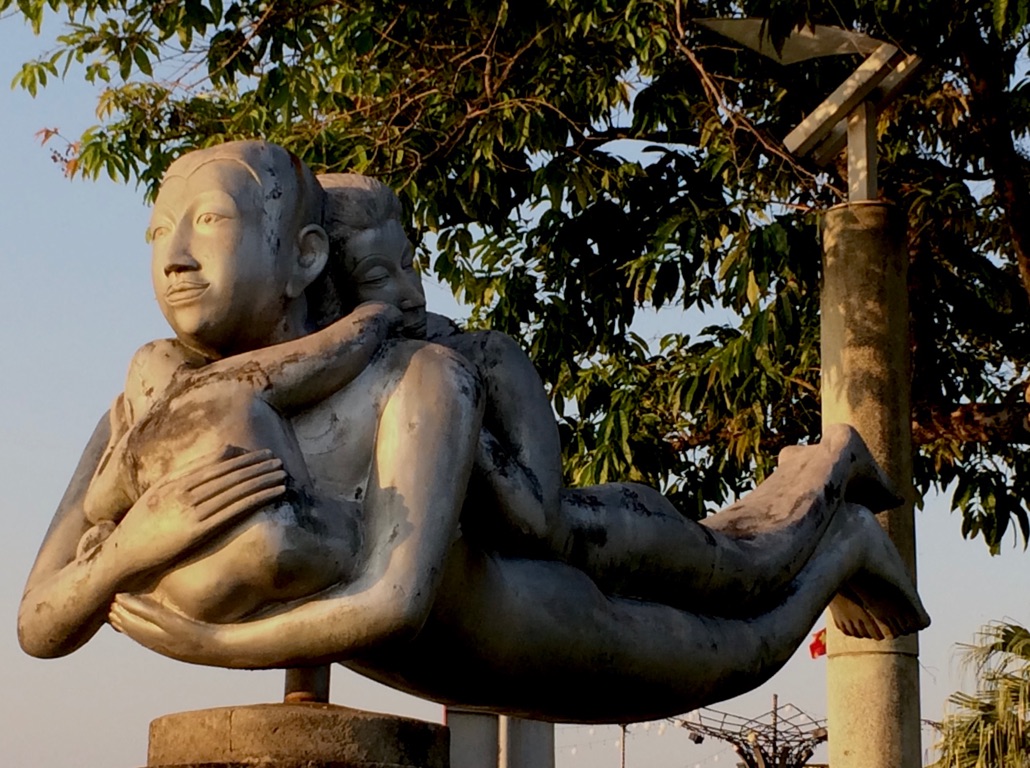
Public art...
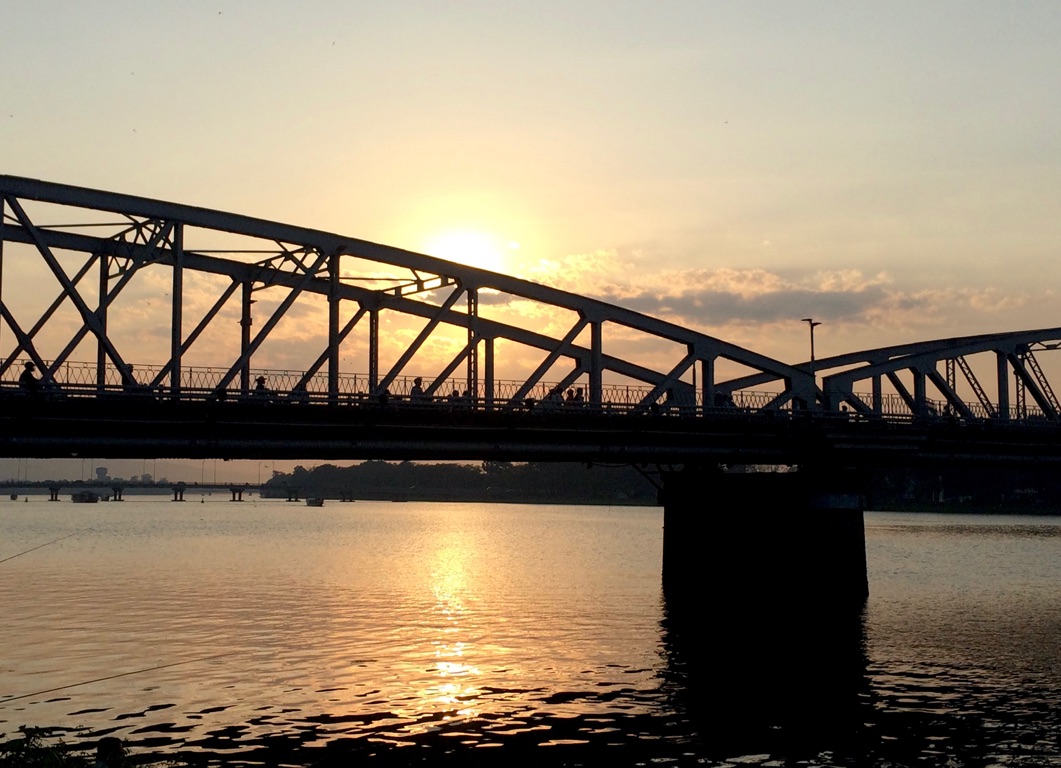
We walked along the boardwalk of the lovely Perfume River, so named because of the scent from the flowers and shrubbery along \240the banks. And, of course, we watched the sunset - along with many of the inhabitants of Hue.
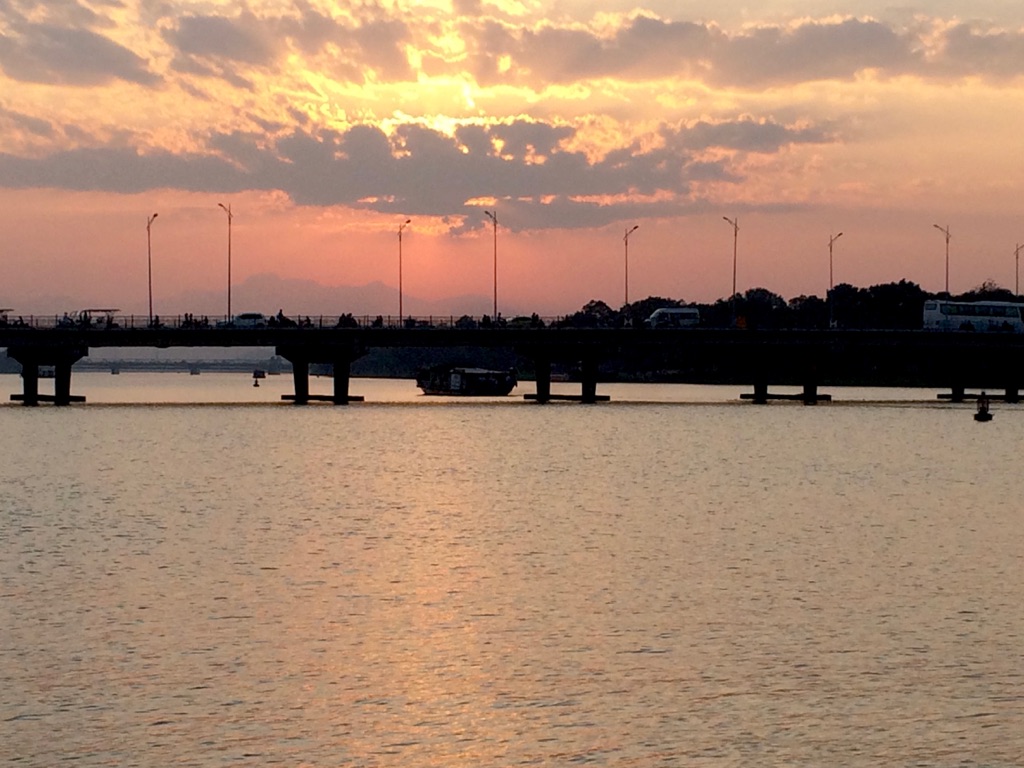
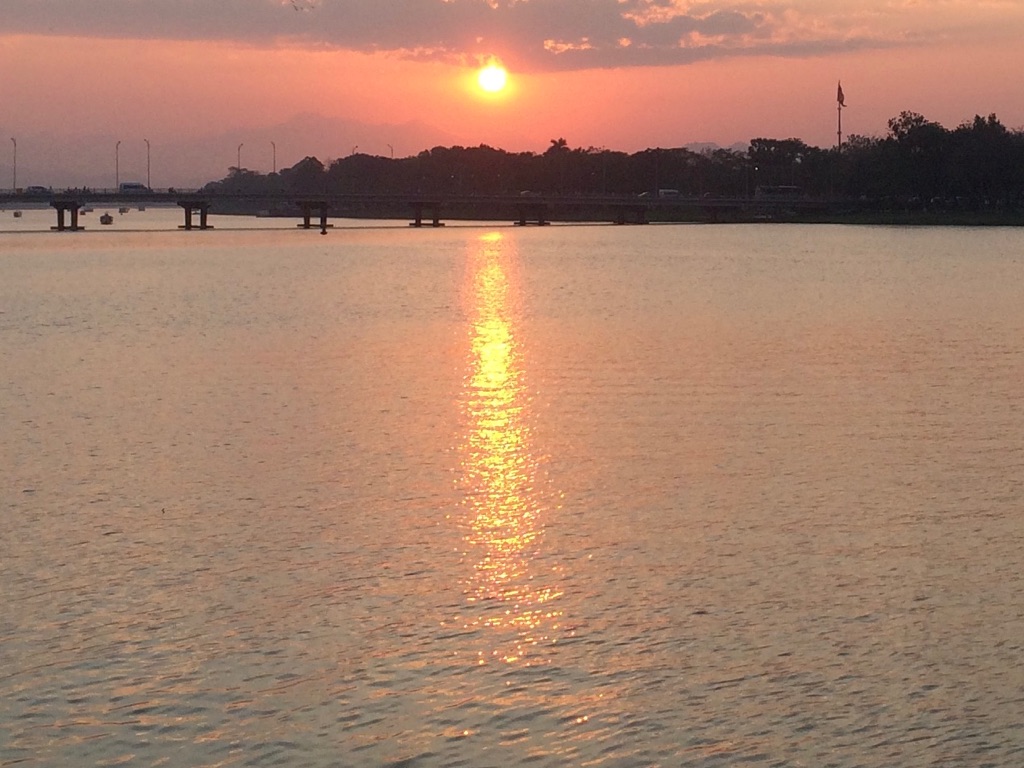
And back to the hotel...
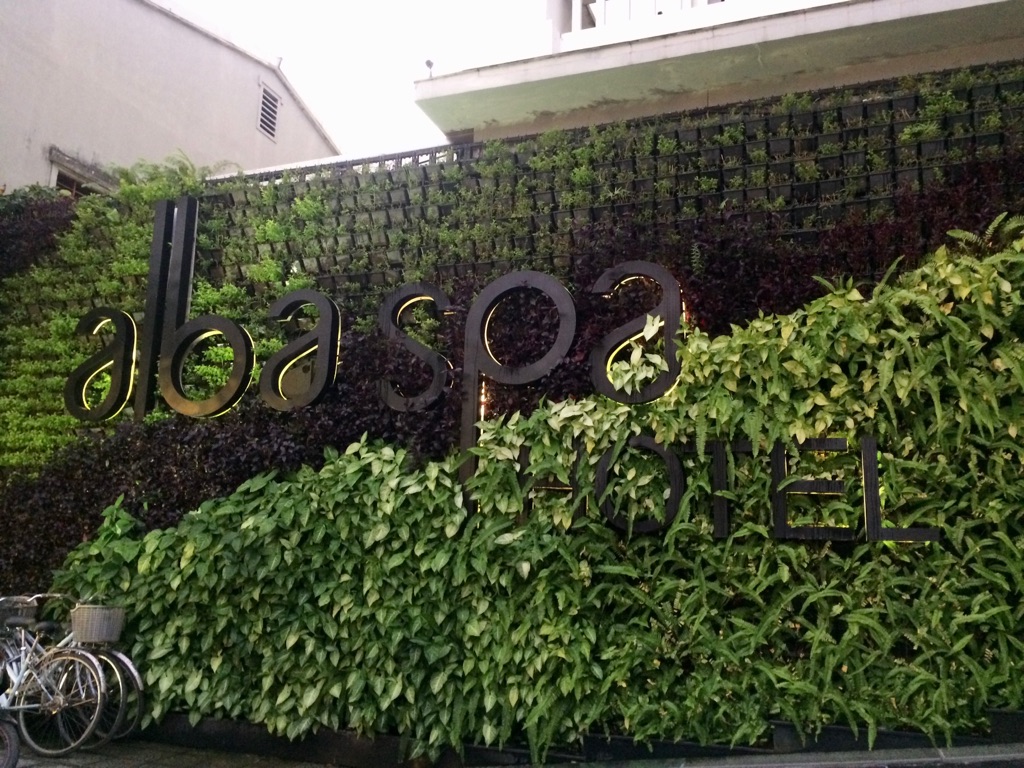
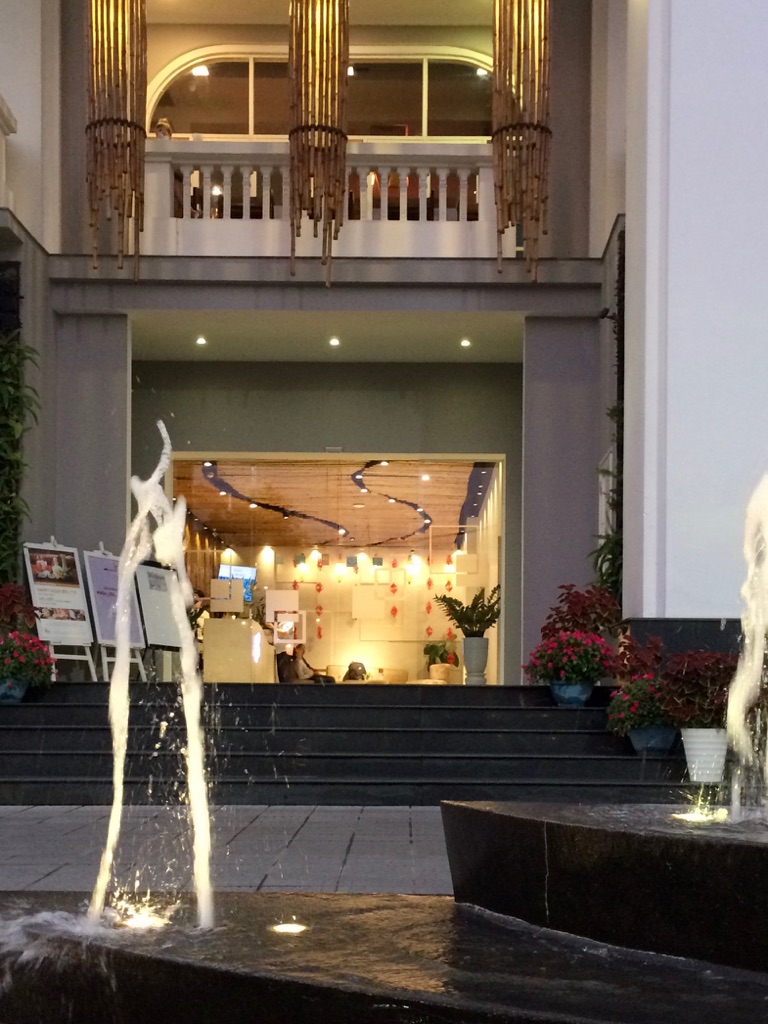
To clean up and go for our sushi buffet...
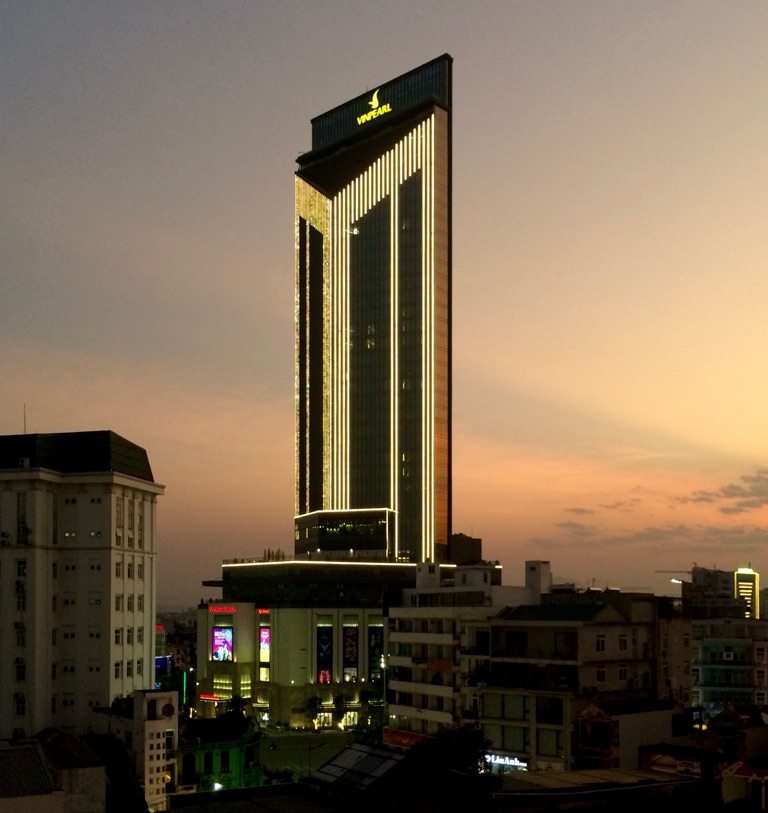
And then peruse the view from our balcony...
A tour of the Imperial City
Today we joined a day tour of Hue’s most important sites \240- the Thien Mu Pagoda, (the Pagoda of the Celestial Lady), the Citadel, which is the Imperial Palace, the Dong Ba market (large indoor market which sells absolutely everything), the tombs of 2 kings from the Nguyên dynasty and an incense-making workshop.
There were only 6 people on the tour so we were fortunate to have the full attention of our very knowledgeable guide, Danny.
Here is our day:
The Pagoda of the Celestial Lady...
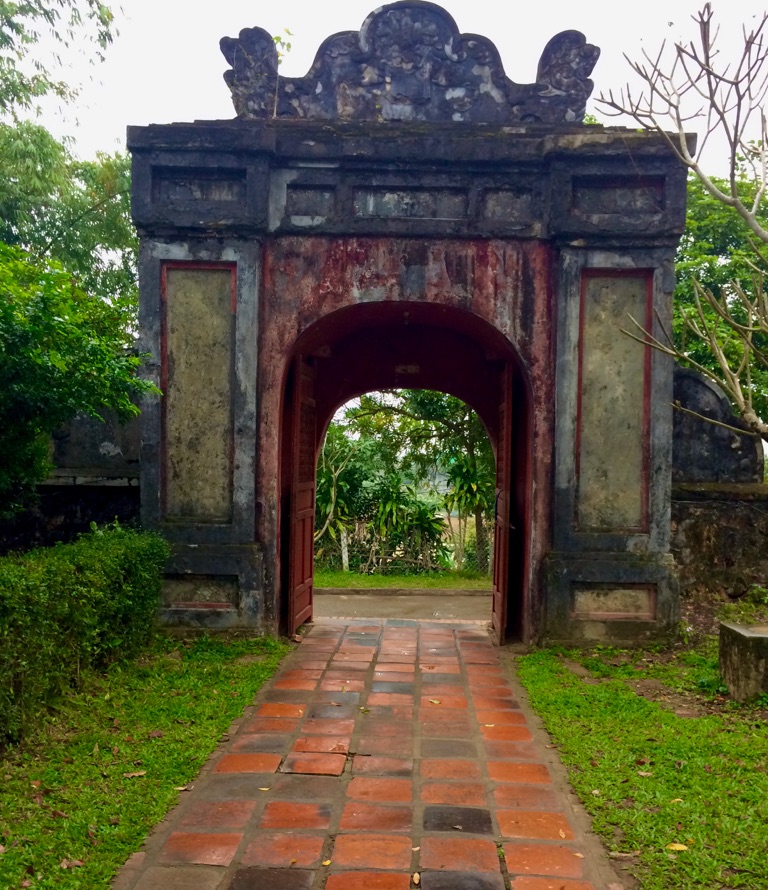
The pagoda, built in 1601, is named for a mythical old lady who predicted a temple would be built on the site - and then vanished. So....the pagoda was built!
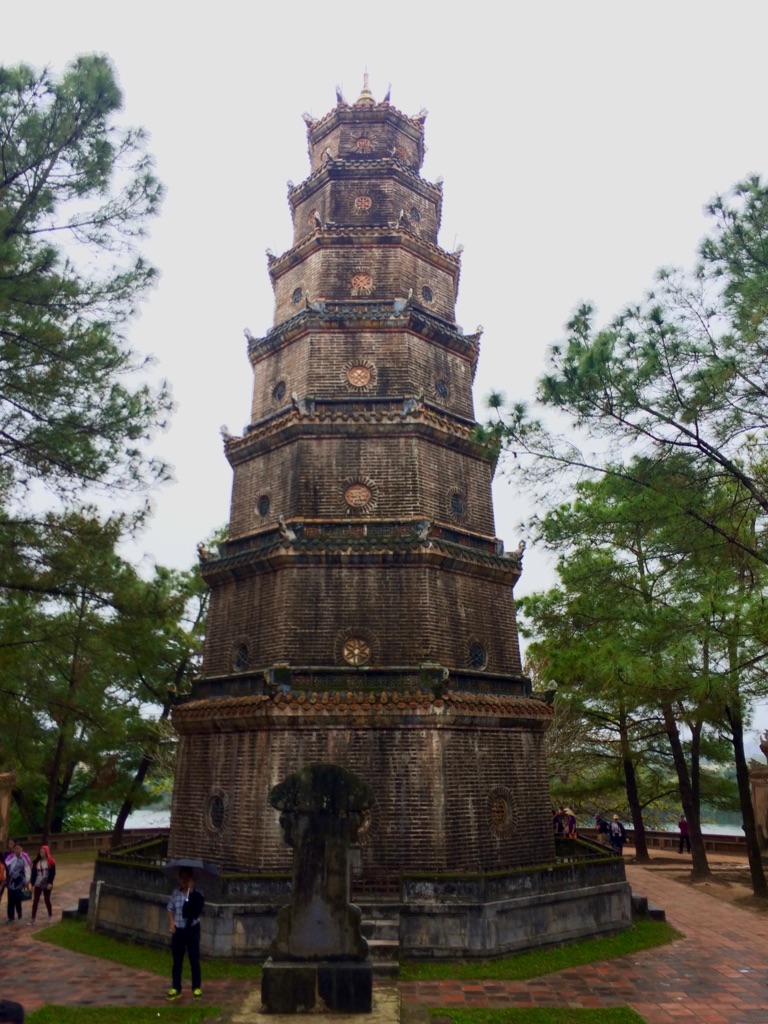

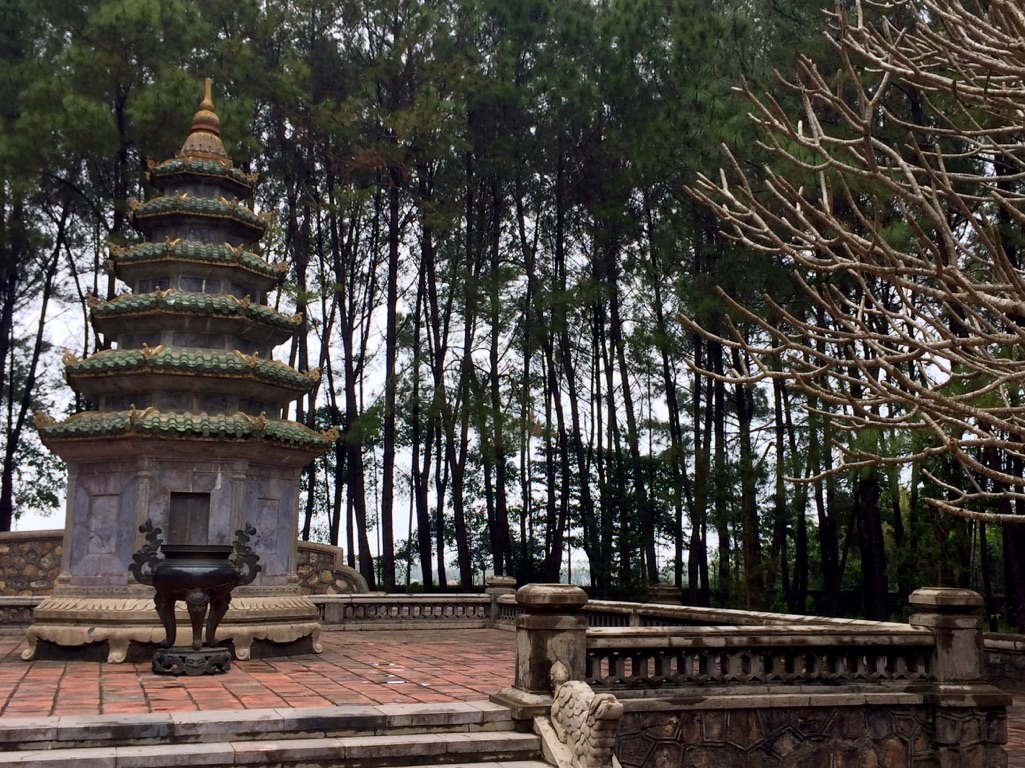
And beautiful gardens...
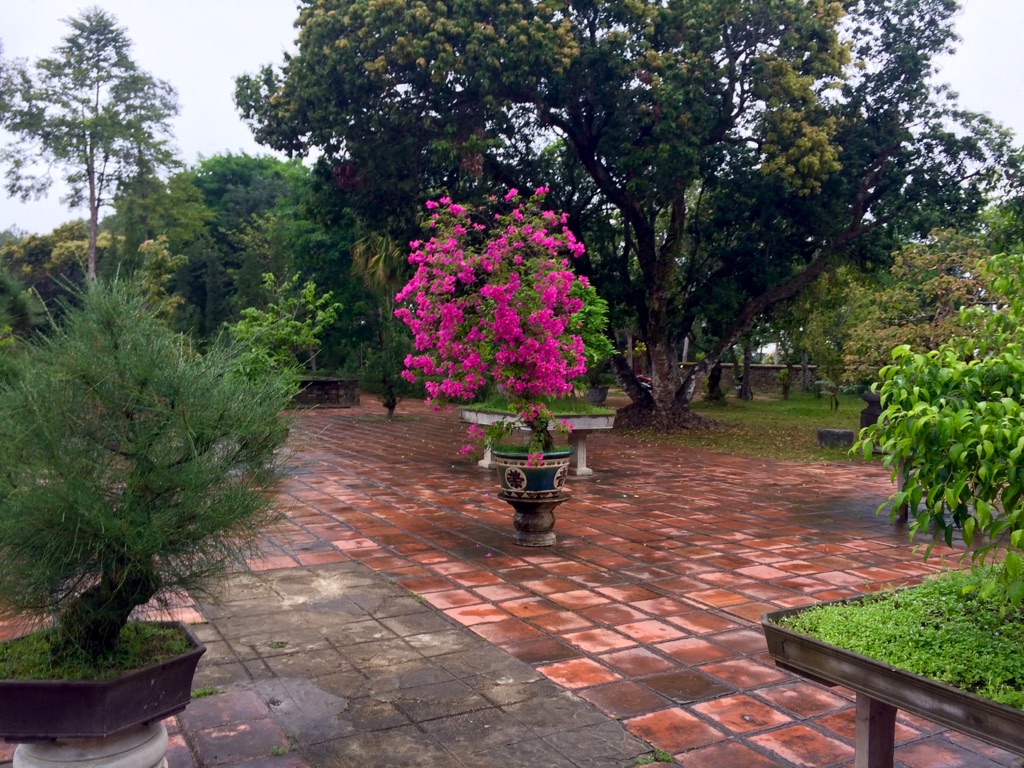
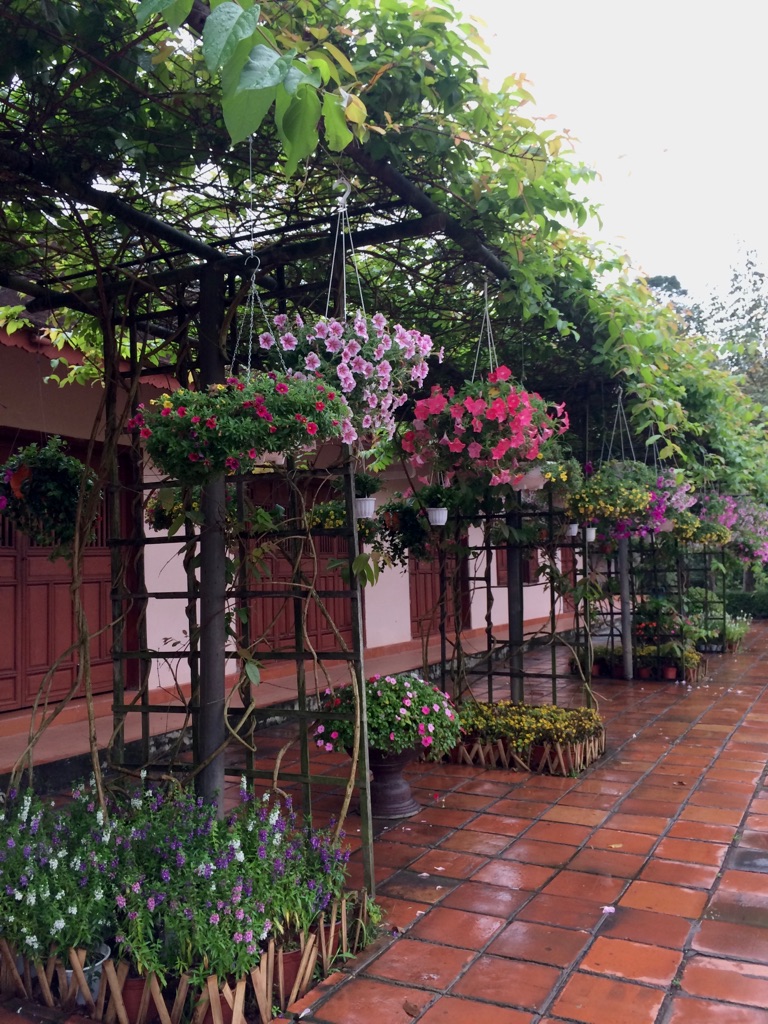
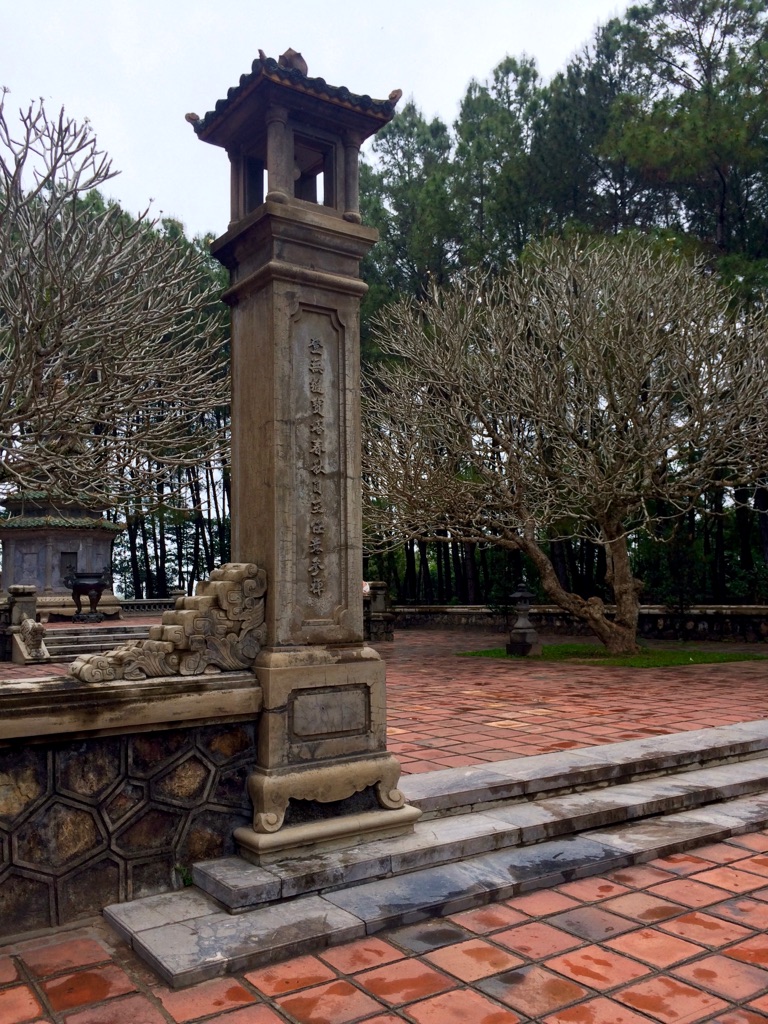

We were treated to a boat ride along the Perfume River...
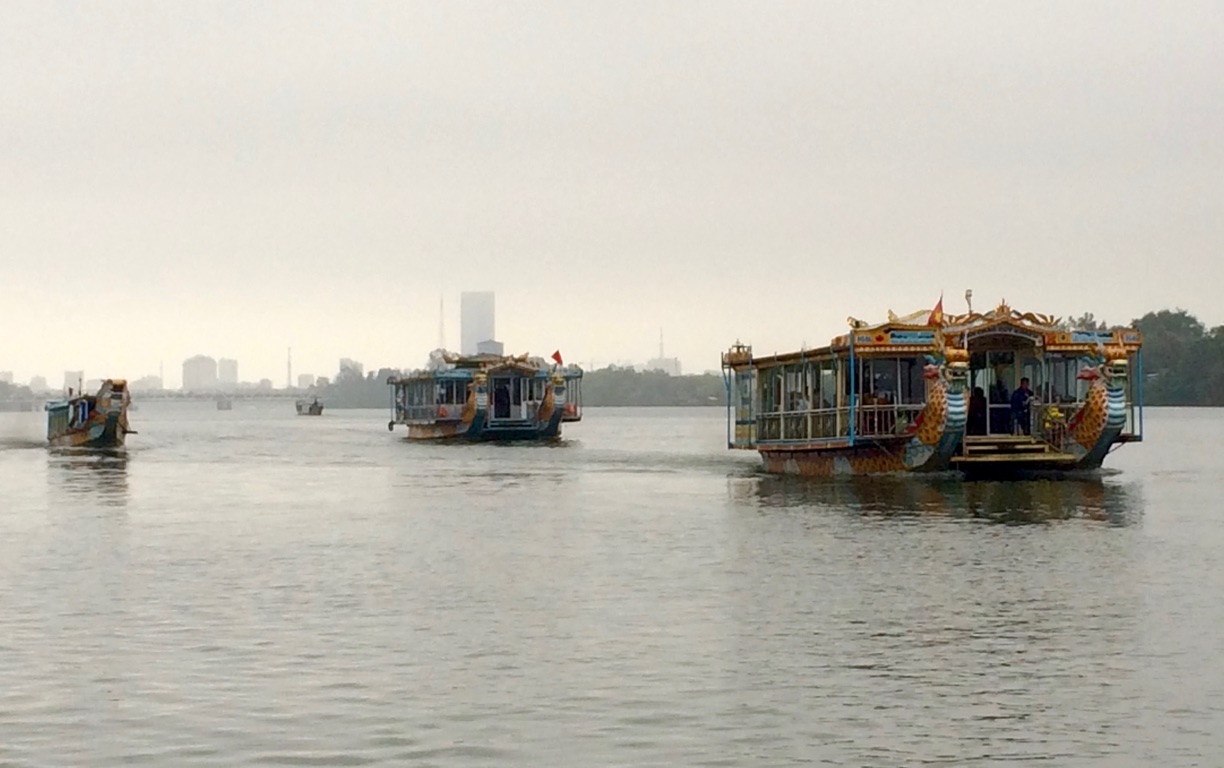
Then picked up again by our mini bus until a stop for a level crossing while a train crossed (gates are put in place manually)...

A wait for motorcycles to cross...
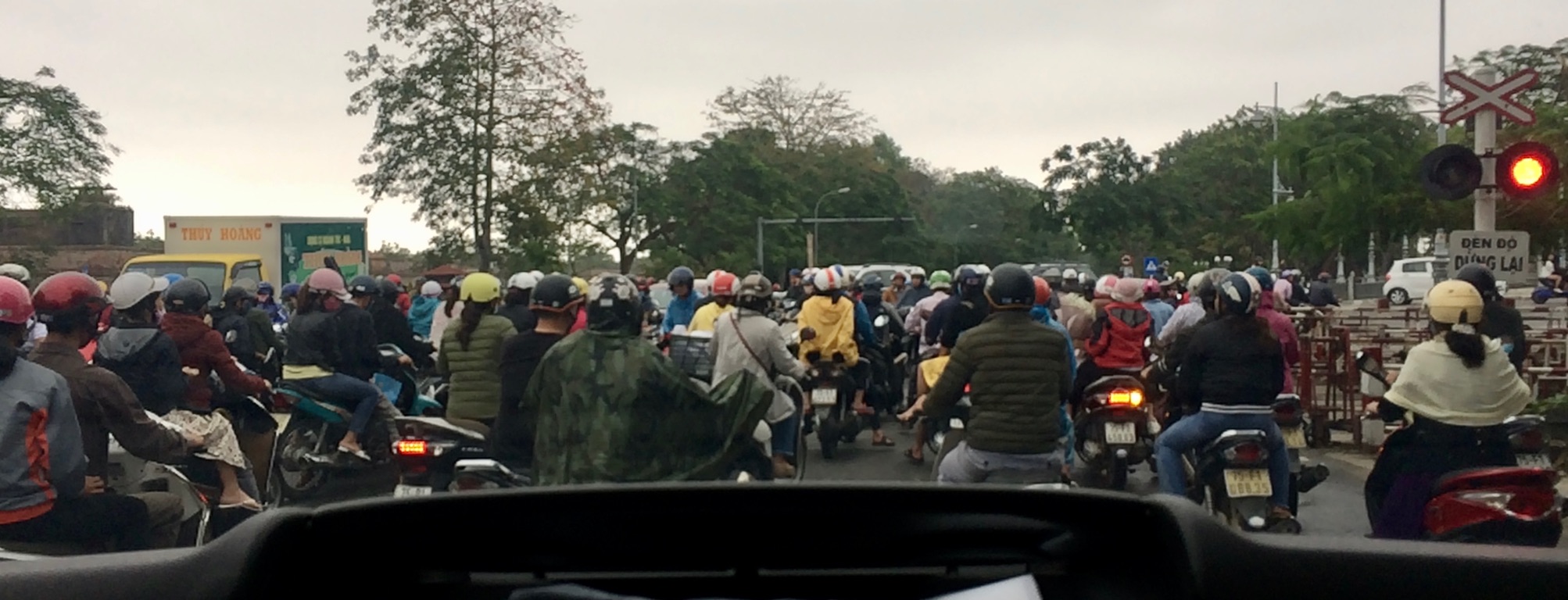
A visit to the Dong Ba market where the vendors were not happy we were not buying...
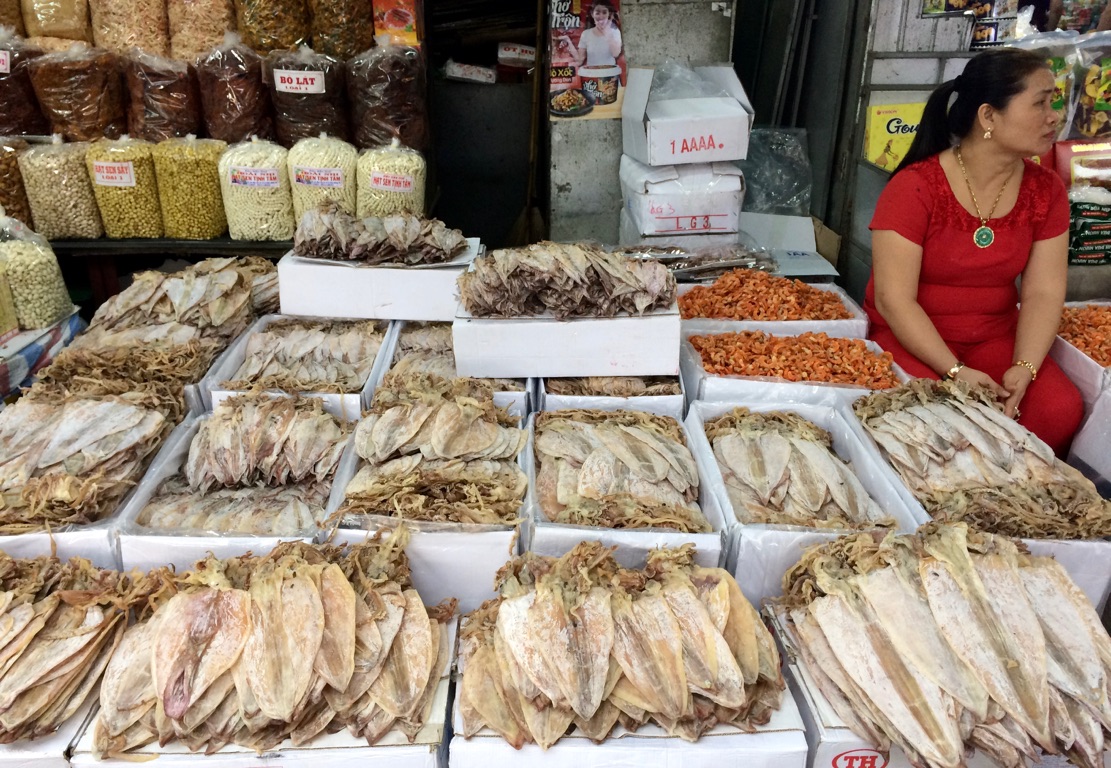
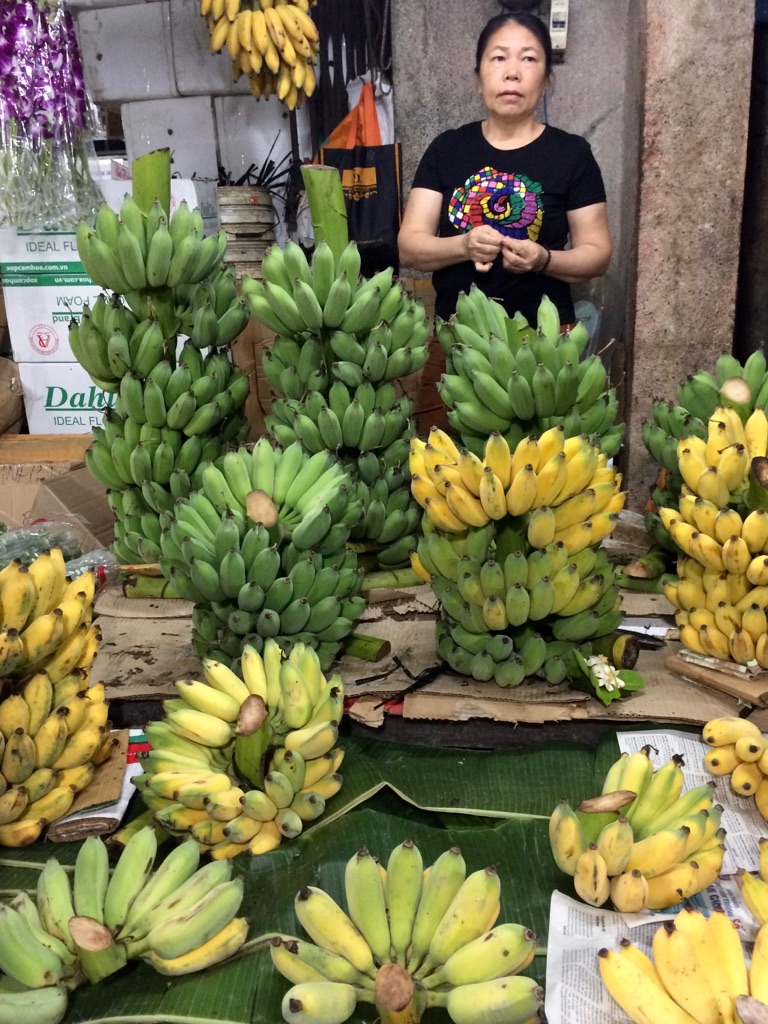
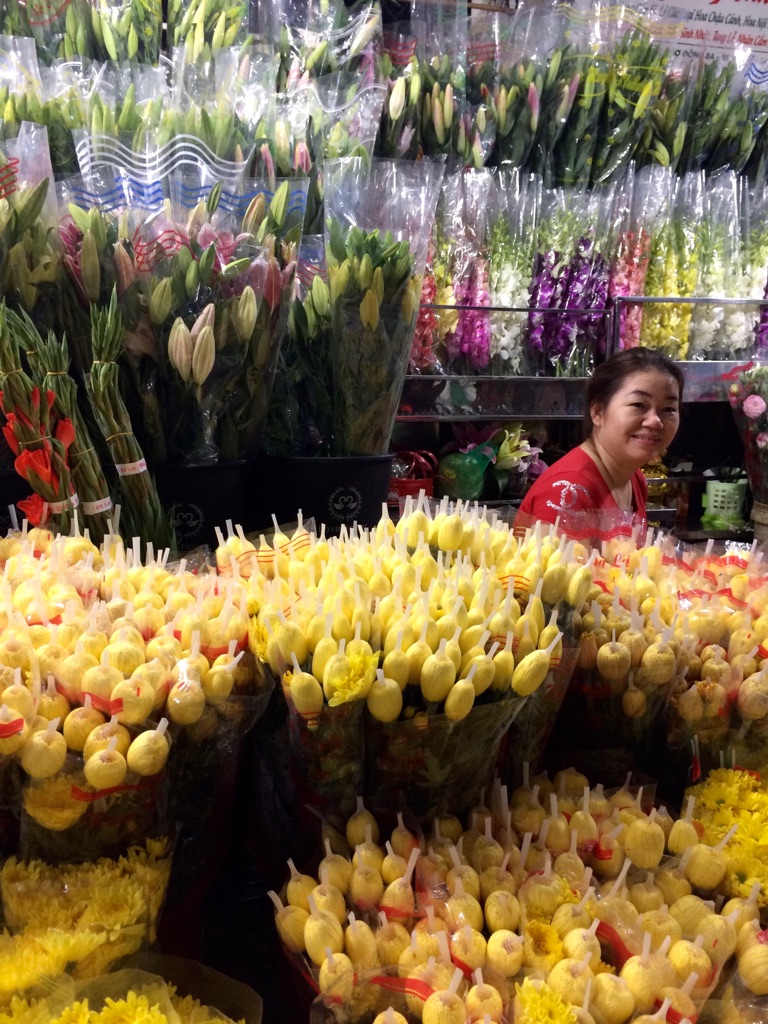
some displays of extreme bling...
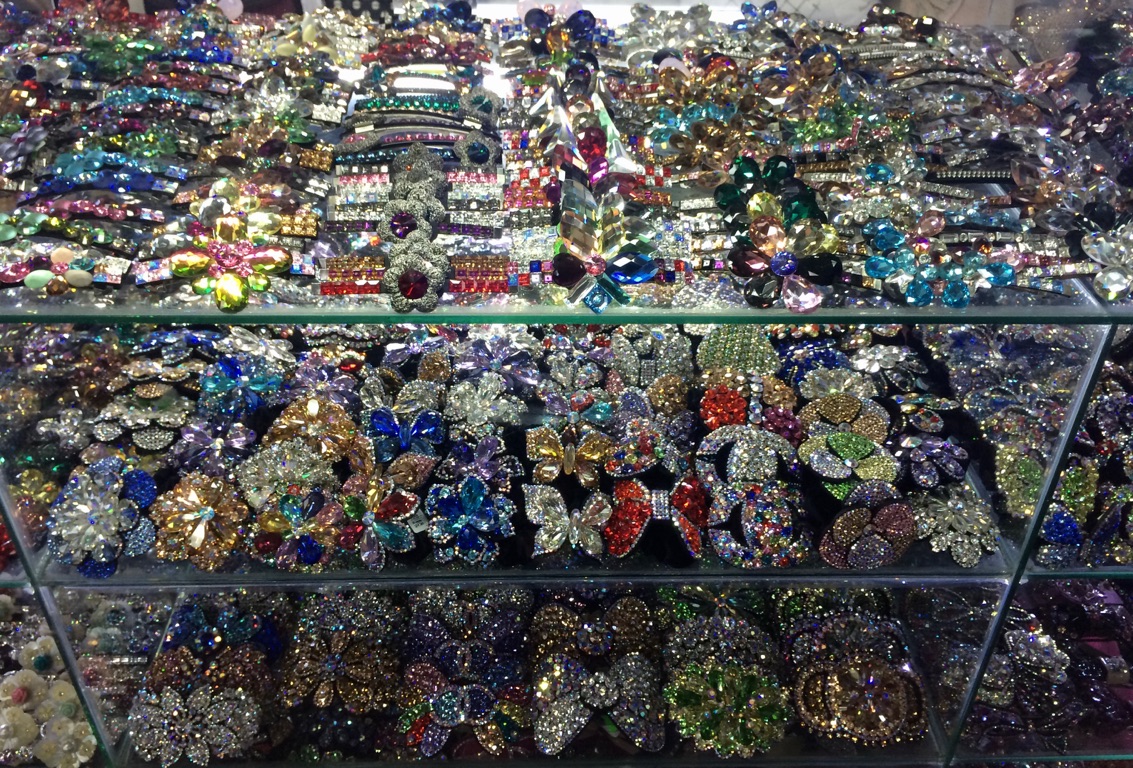
After this, we visited the Citadel and Imperial Palace.
Hue was the royal city and the seat of imperial power from 1802 (the first king of the Nguyên Dynasty) until 1945 when the last king, Bao Dai, was ‘encouraged’ to abdicate. He spent most of the rest of his life living in France until his death in 1997.
Saigon (at the time South Vietnam) became the capital in 1945 until the official reunification of the 2 Vietnam’s in 1975. From 1975, Hanoi became, and has remained, the capital city.
But back to Hue...
The Imperial Palace was nearly 80% destroyed in military conflicts, first in 1947 in battles between the Viet Minh (communist North) and colonial French forces - and again, in 1968, during the Tet Offensive battles between the communist North and the South Vietnamese Army and U.S. forces.
Intensive rebuilding and reconstruction of the entire site began over 10 years ago, funded by UNESCO, French, American and Japanese organizations. The Citadel is now a World Heritage Site and a source of great pride to the people of Hue.
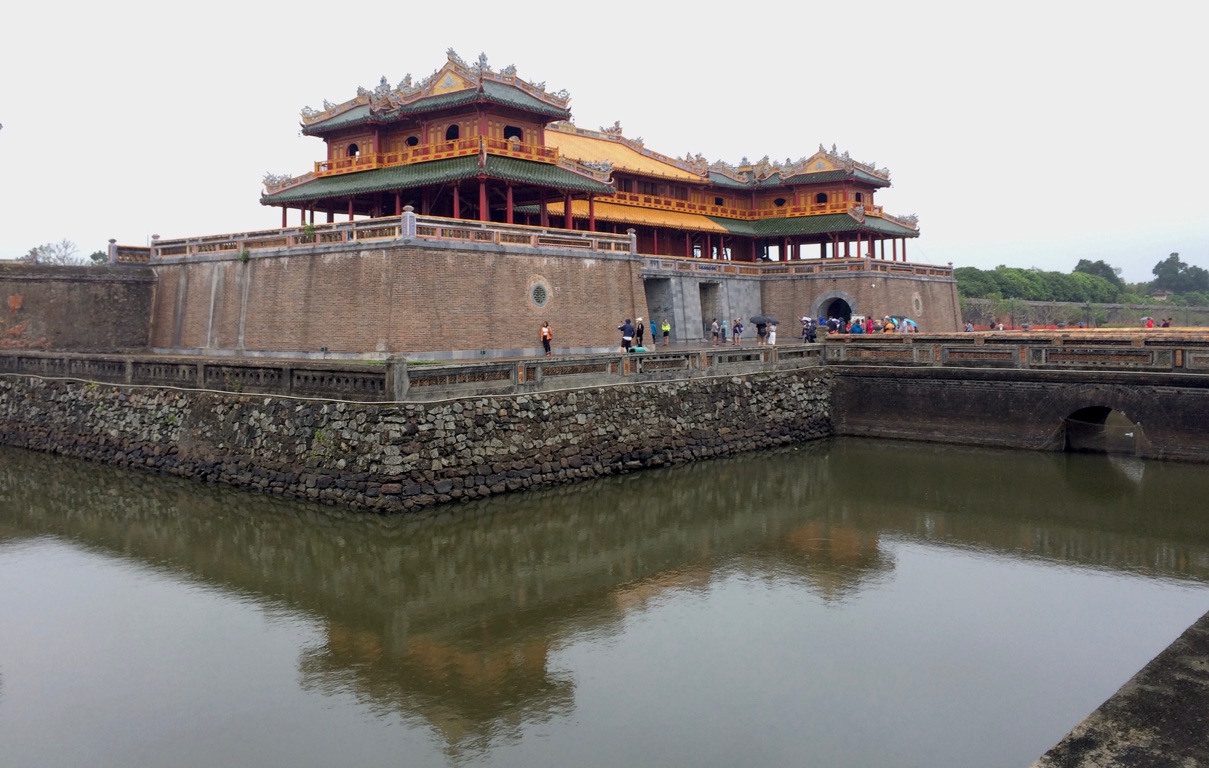
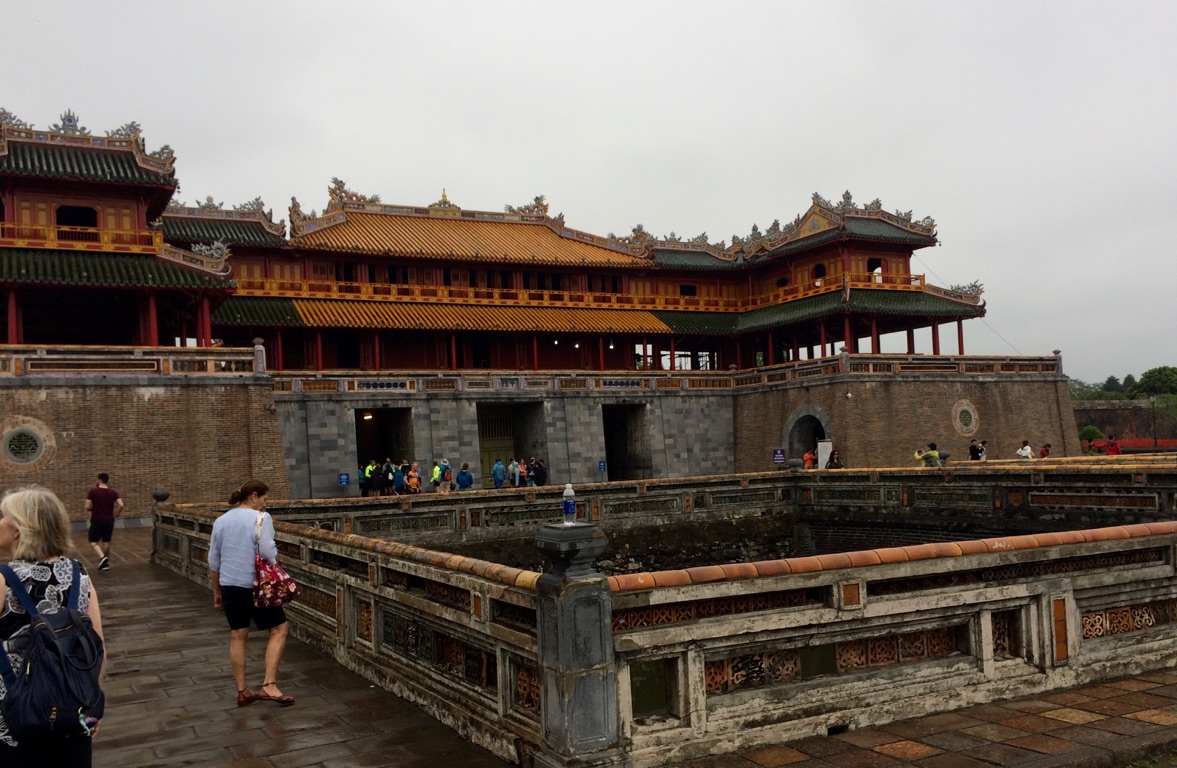
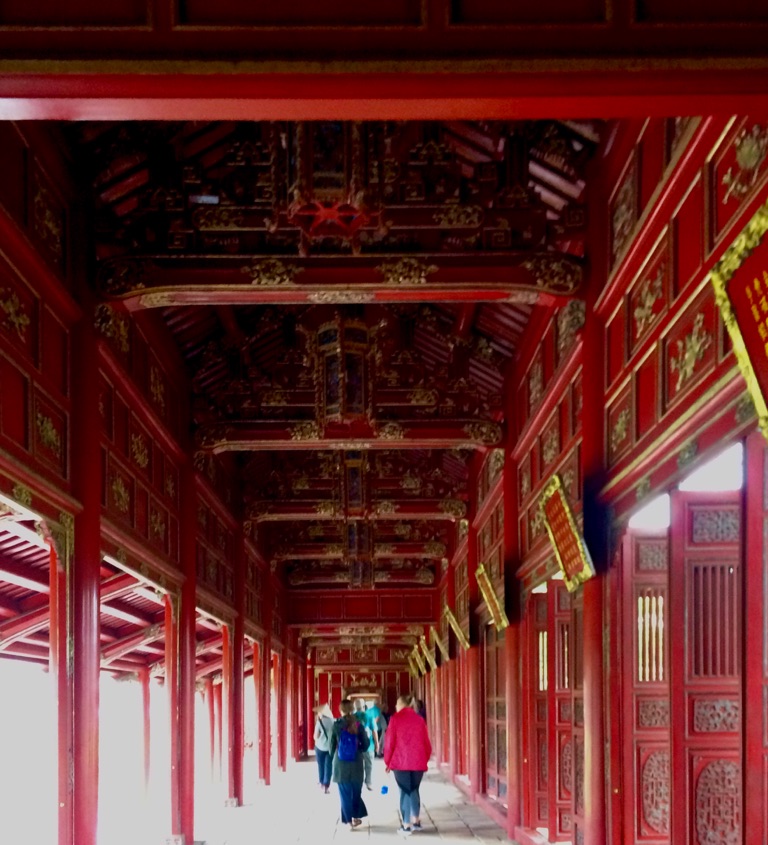
The purple ‘forbidden city’ was where the kings lived with their hundreds of wives and young children. No other men were allowed in the forbidden city and male children were forced to leave once they reached maturity.

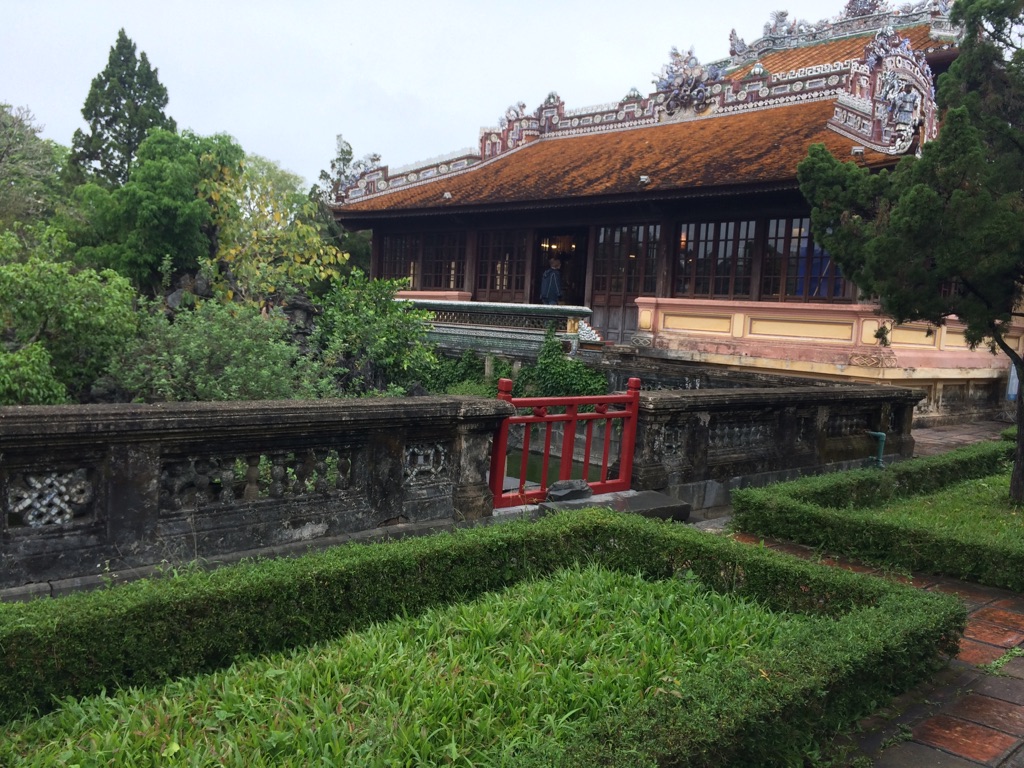
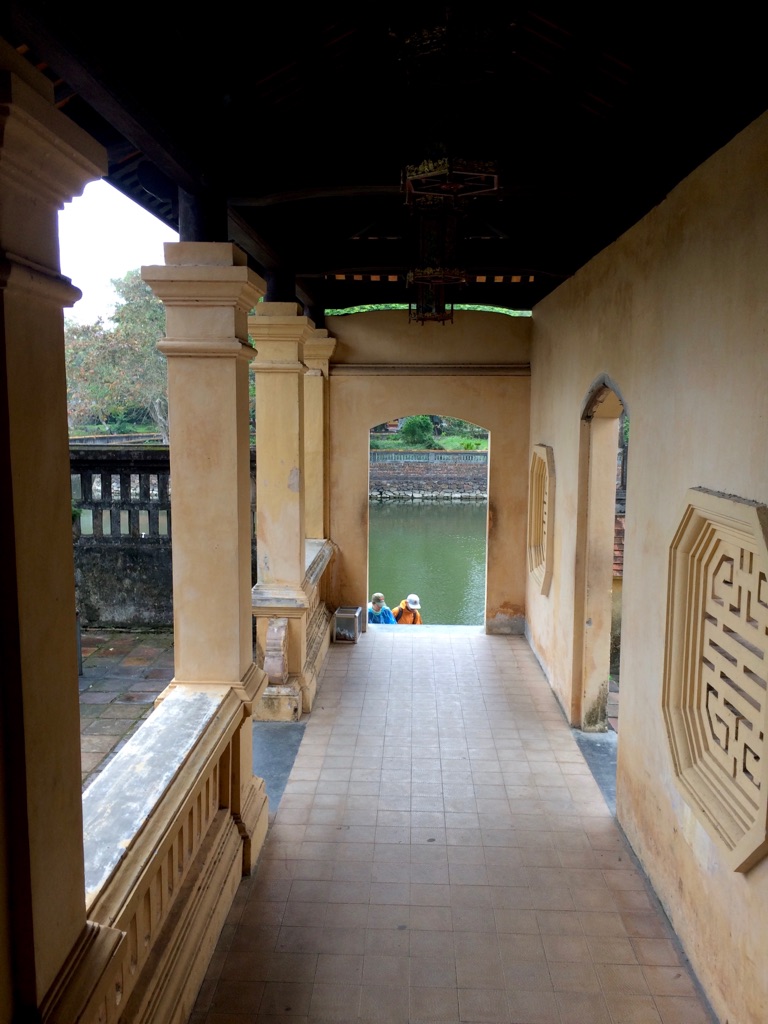
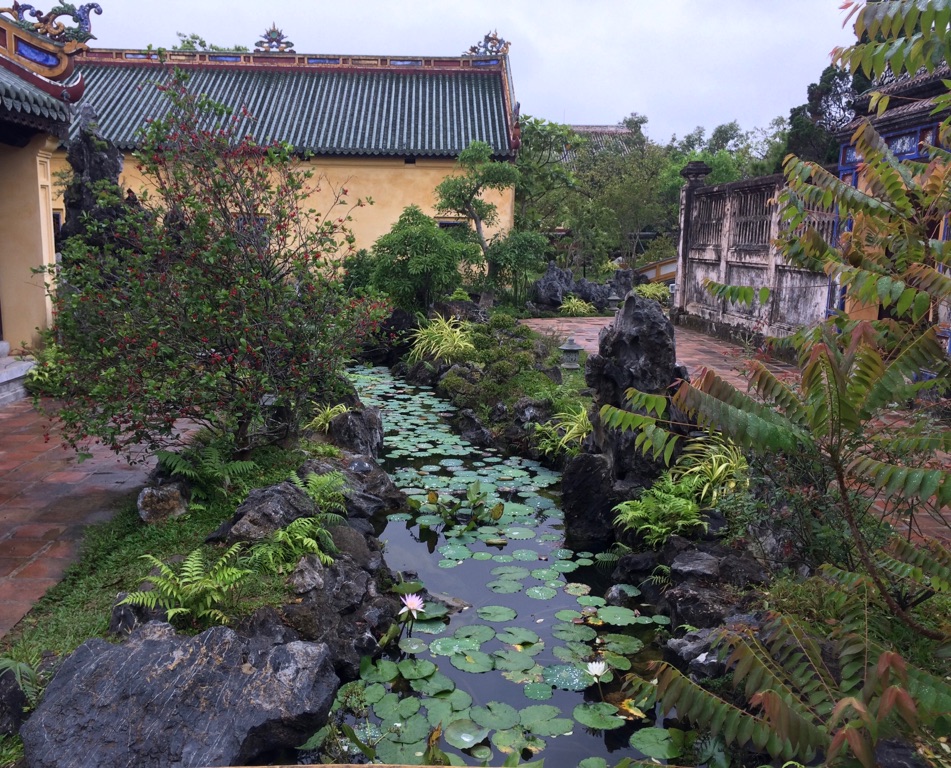

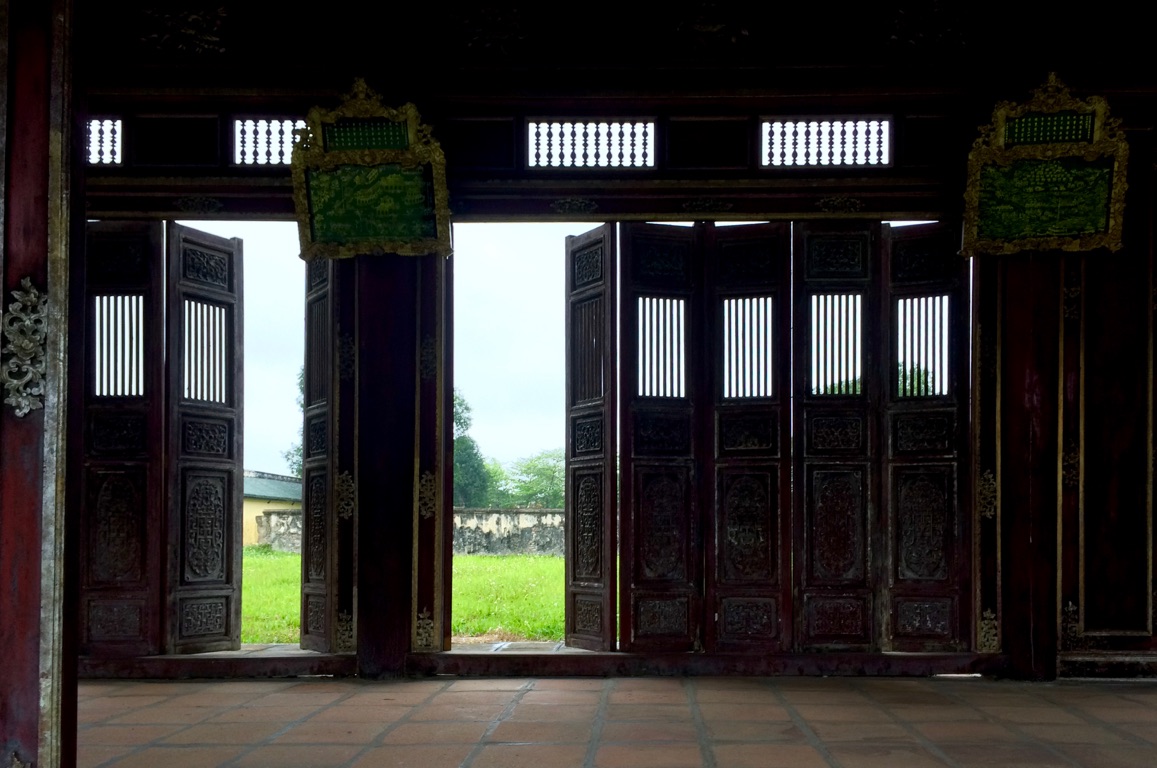
This took us to lunchtime.
The afternoon tour continues in the February 17 entry because:
1. This entry is far too long, and
2. We did nothing at all on February 17 except go shopping and eat - so would make for a boring read - and it rained all day!
Raining and 19 degrees!
This is different than what we are used to but I suppose it will help us acclimatize to Vancouver! Actually - I do love this weather.
Back to yesterday’s wonderful tour of Hue.
After lunch, we visited 2 royal tombs - of the 2nd and 12th (2nd last) kings of the Nguyên Dynasty. The tombs were actually my favourite sites on the tour - beautifully landscaped and the architecture and design is very reflective of the very different nature’s of the 2 monarchs.
The 2nd king, Minh Mang, reigned from 1820-1841. The buildings and tomb were beautiful and a tribute to his reign.
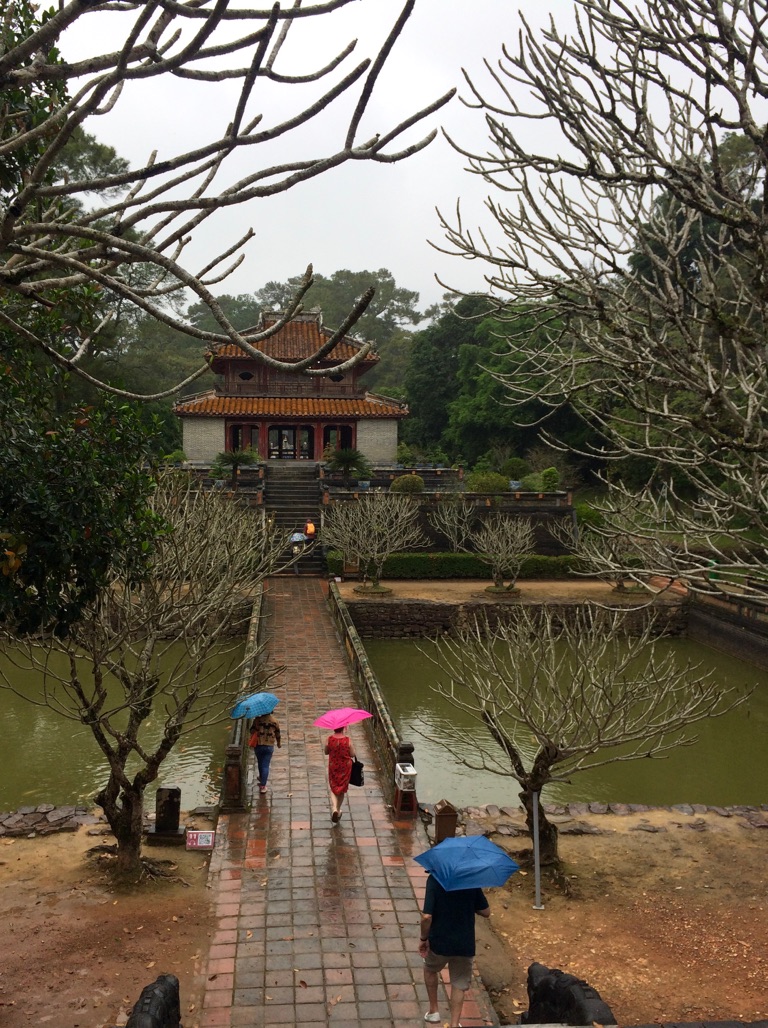

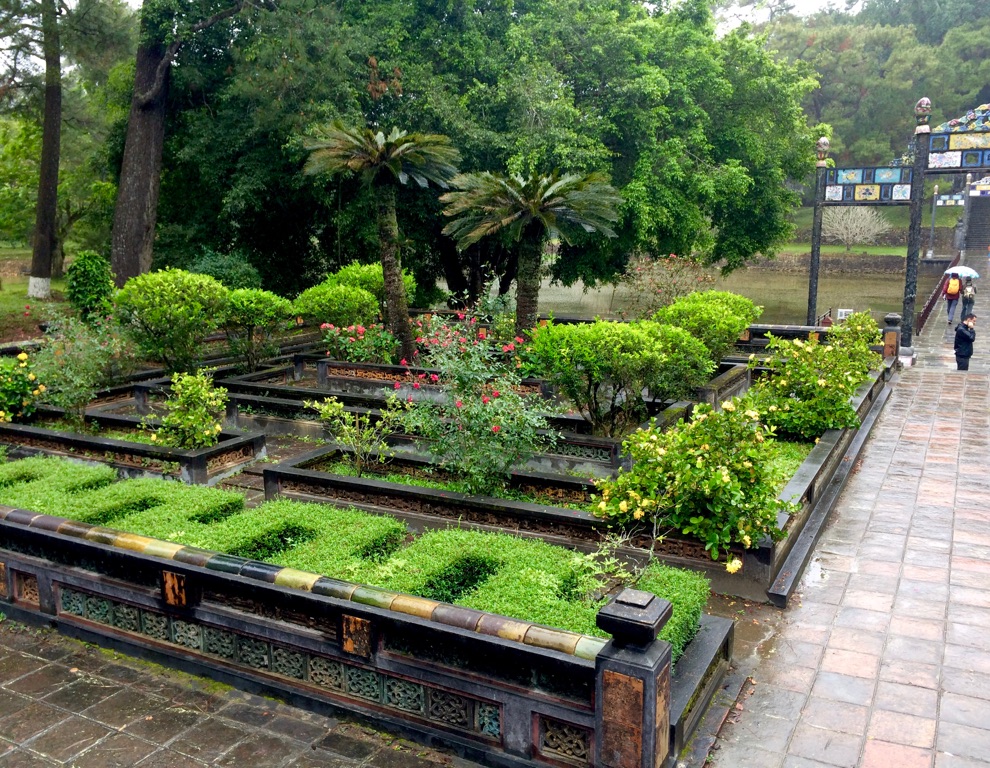
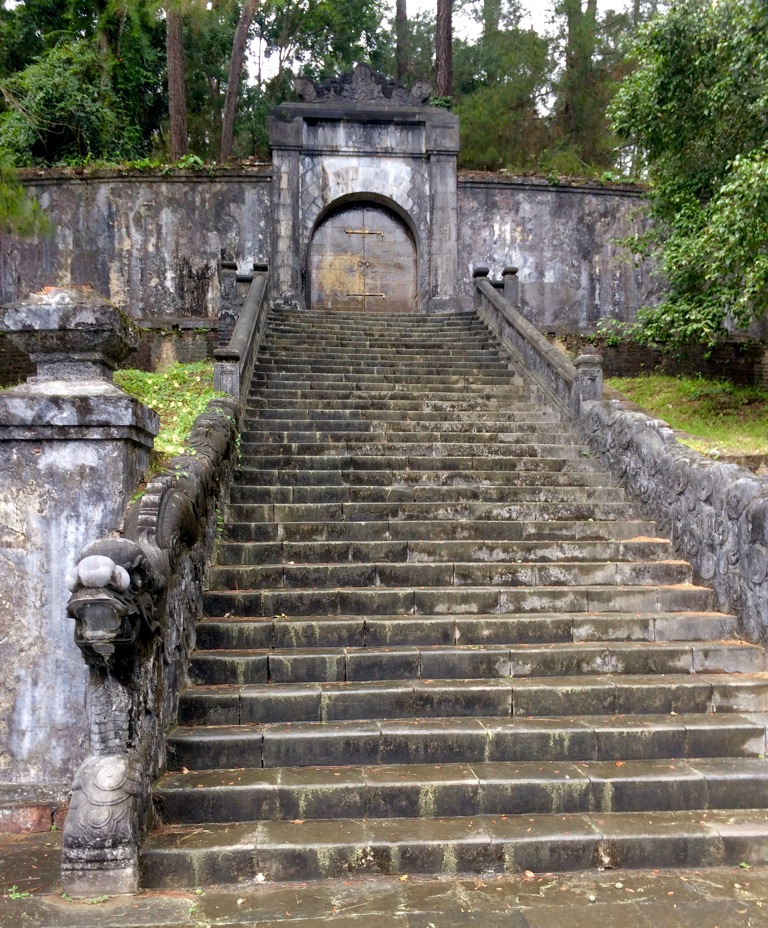
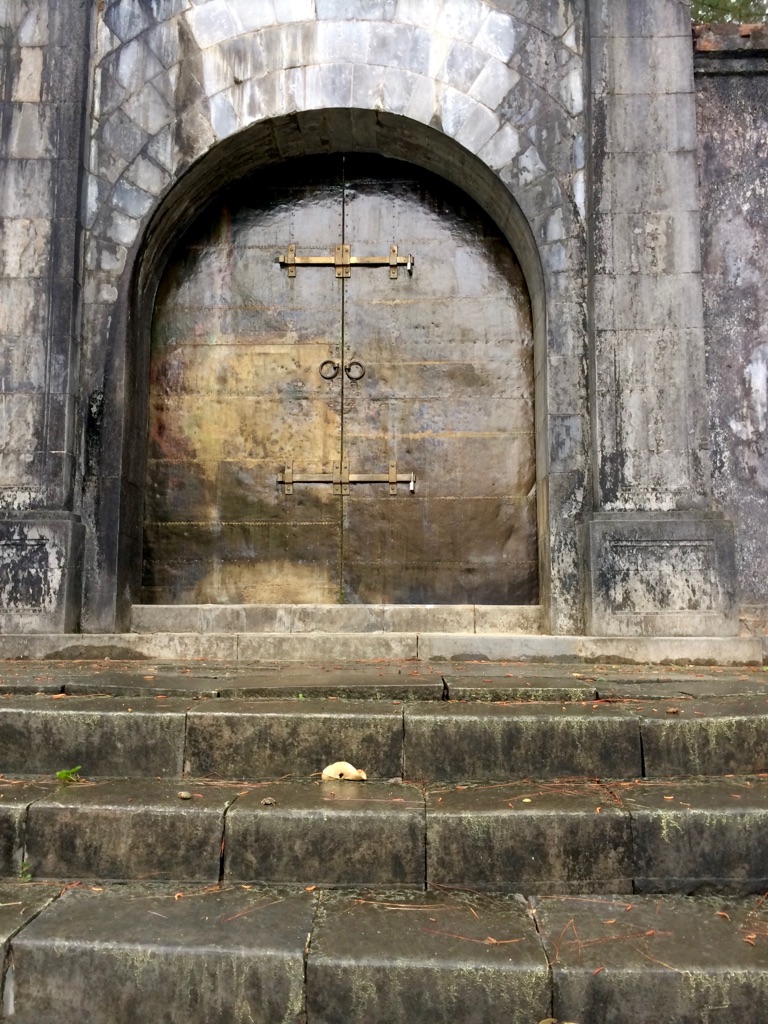
In contrast, the tomb of the 12th emperor of the Nguyen dynasty, Khai Dinh, (built between 1920 and 1931) was quite ostentatious and modelled \240the tone of the Palace at Versailles in France. It was beautiful as well, but obviously built to be a spectacle to over the top power and wealth. \240We much preferred the beauty of the tomb of the 2nd emperor.
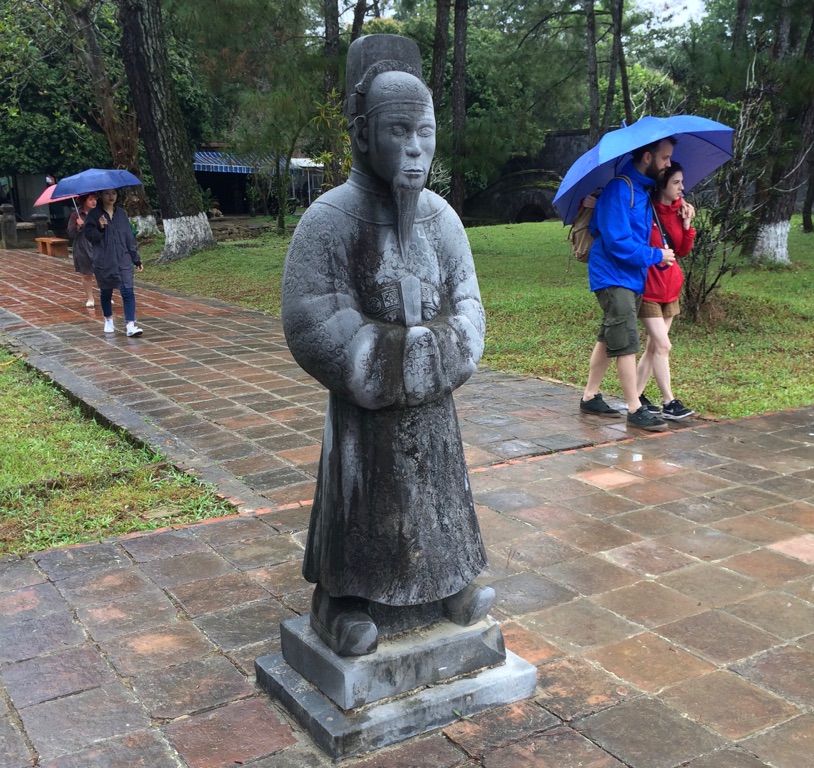
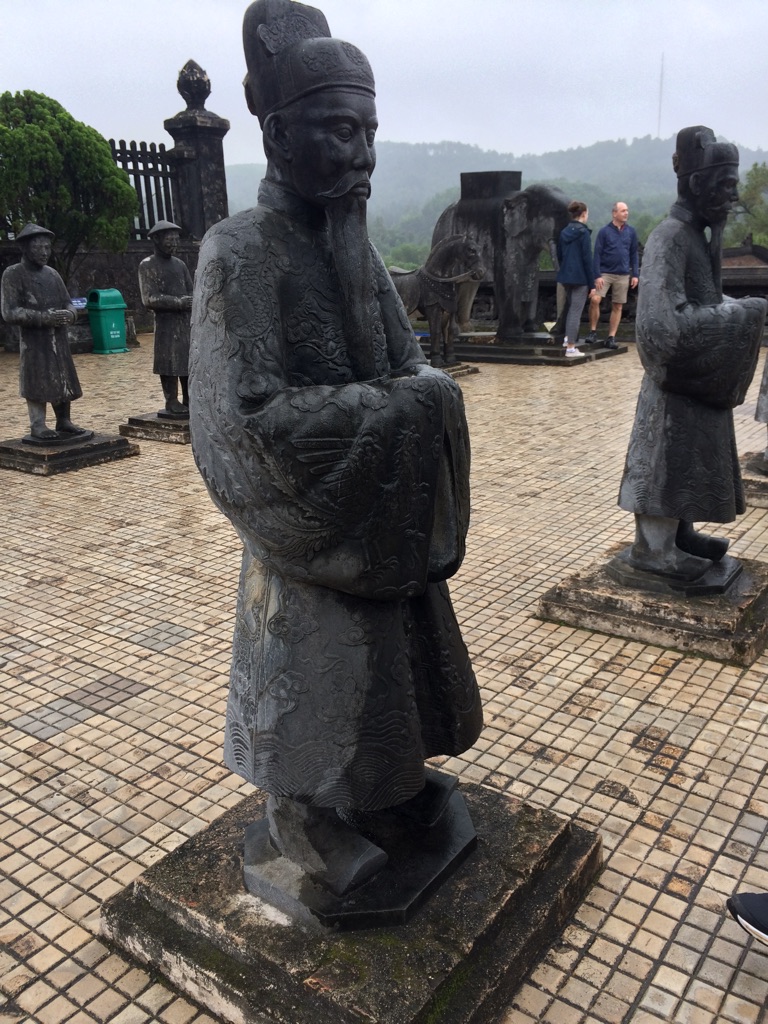
However, I loved these full size soldier statues. \240They could almost be chess pieces.
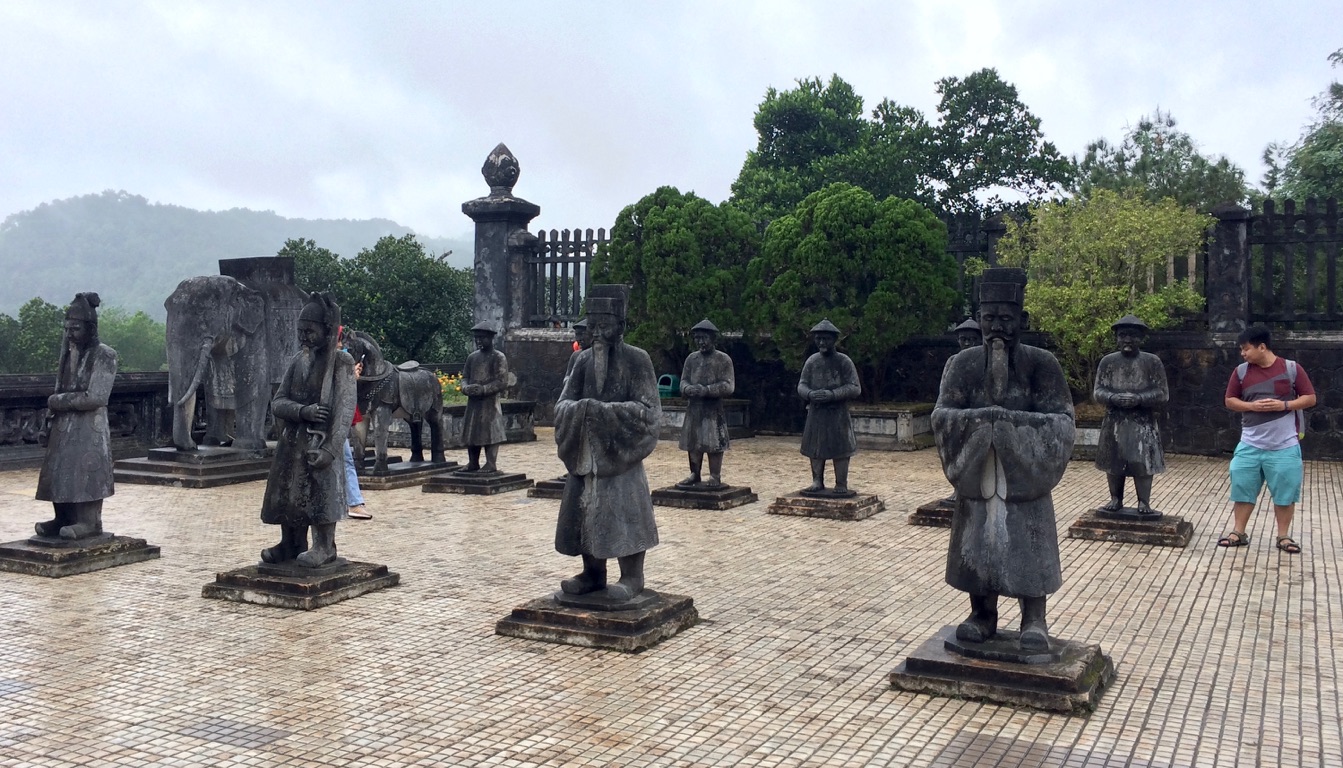
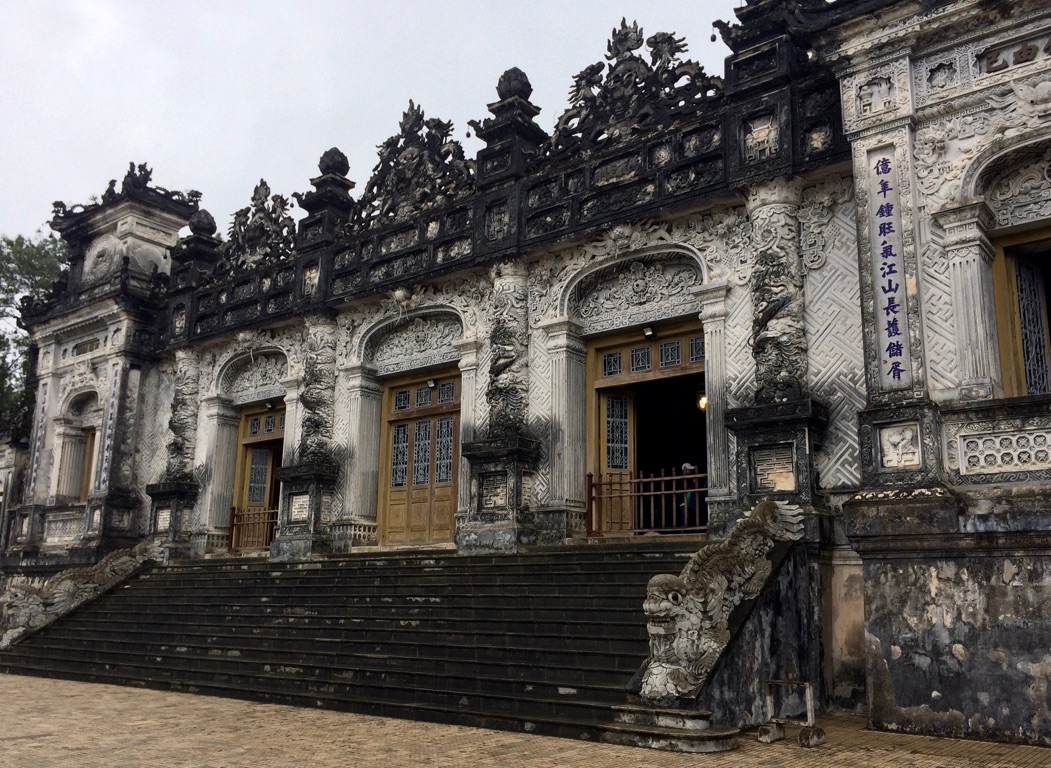
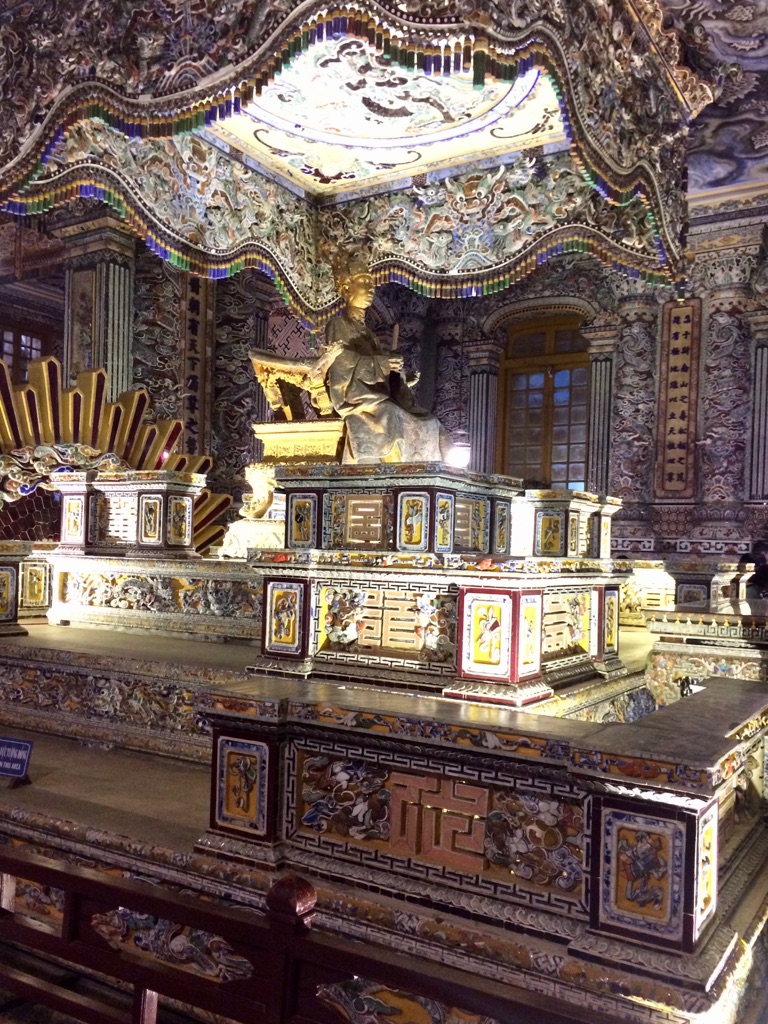
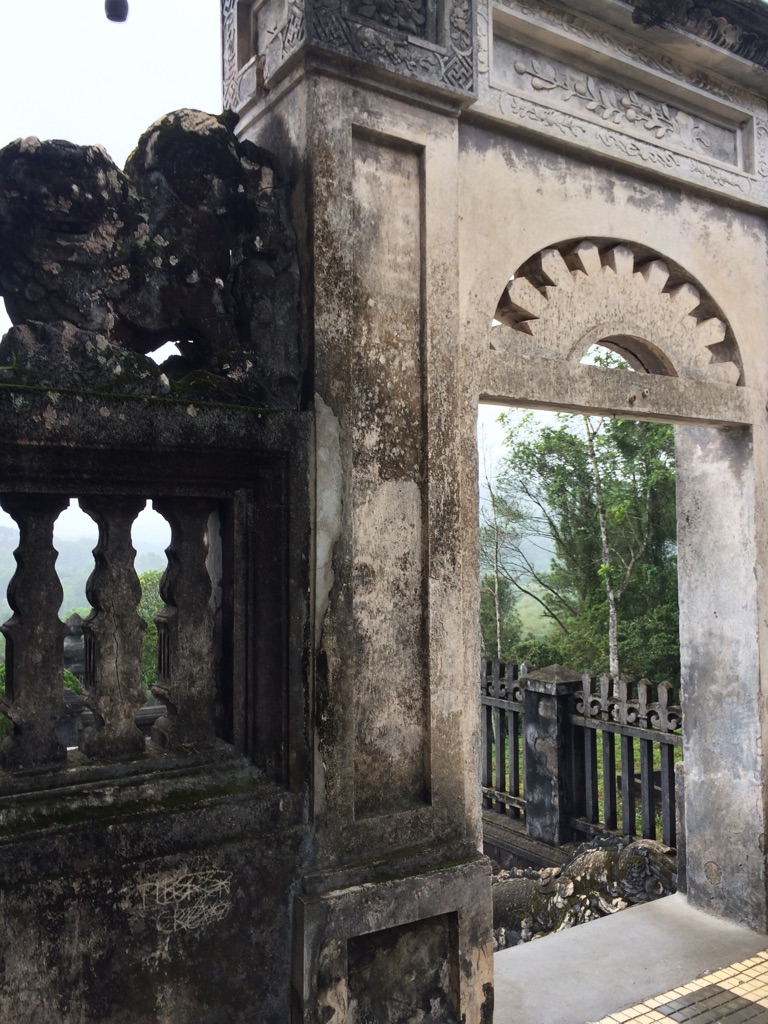
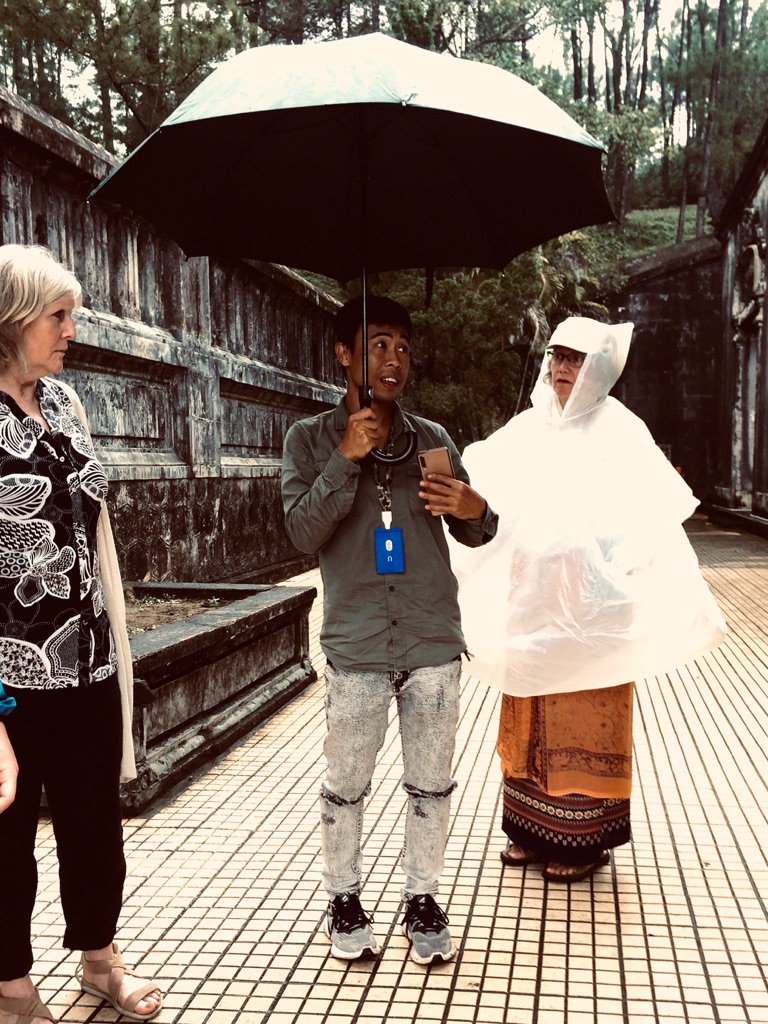
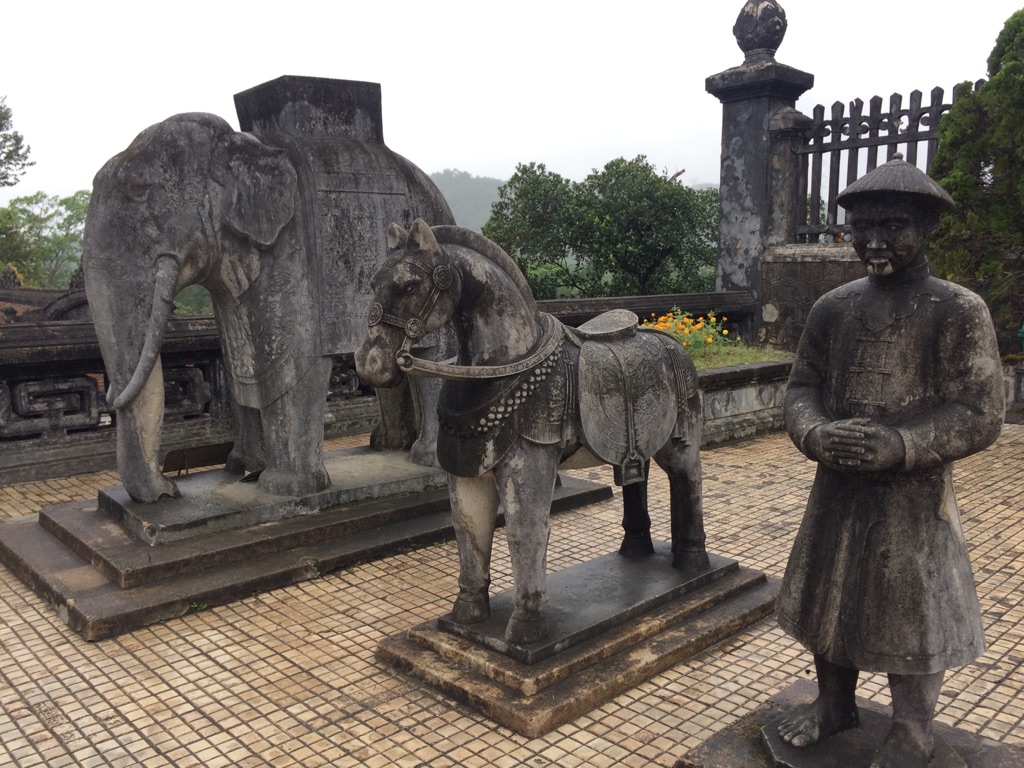
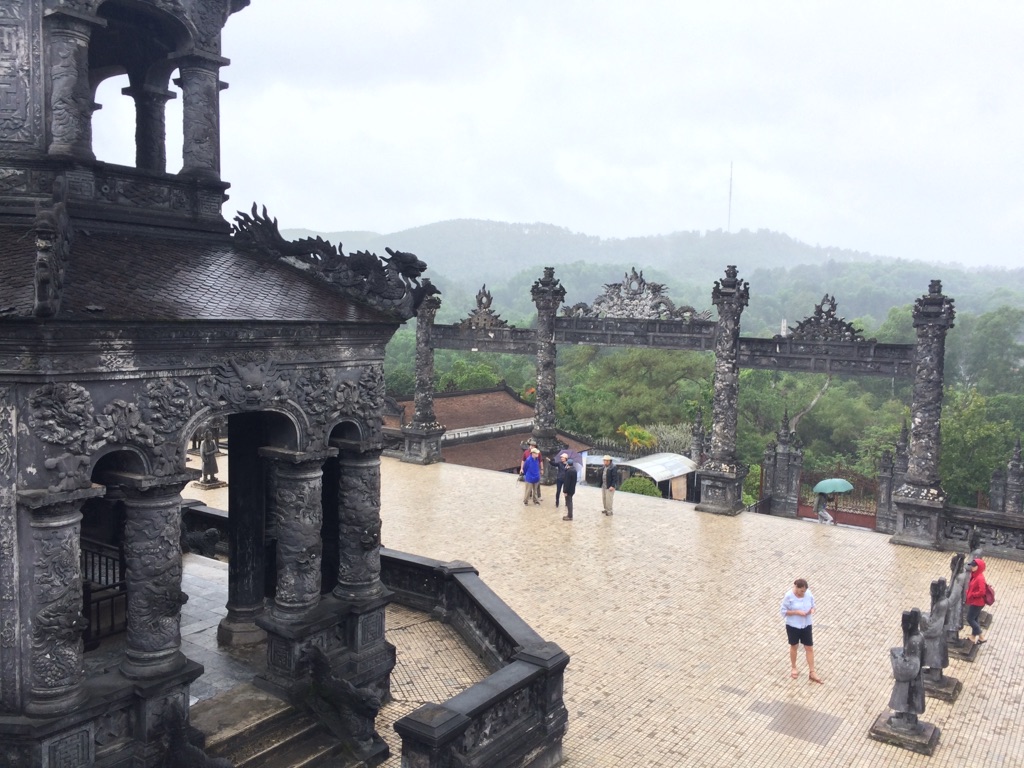
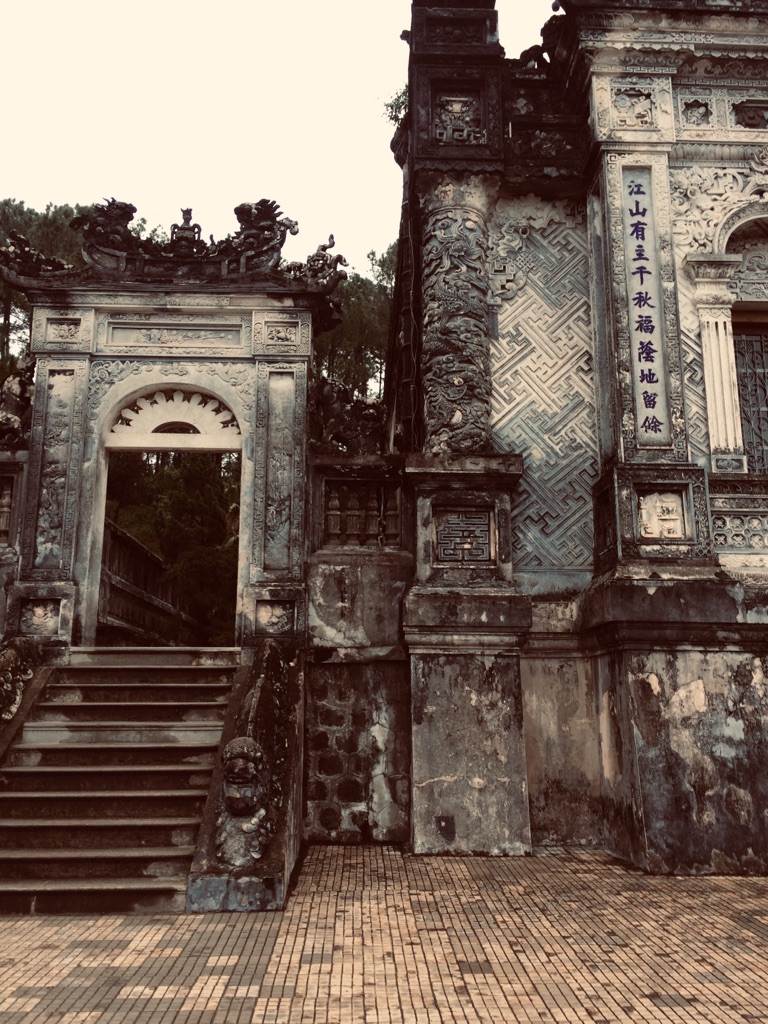
And our last stop on the tour to visit an incense shop, watch house the sticks are made and admire the creative displays.

Of course, I needed to purchase a Vietnamese cone hat - an ubiquitous icon of Vietnam.

Still raining...coffee and a massage...
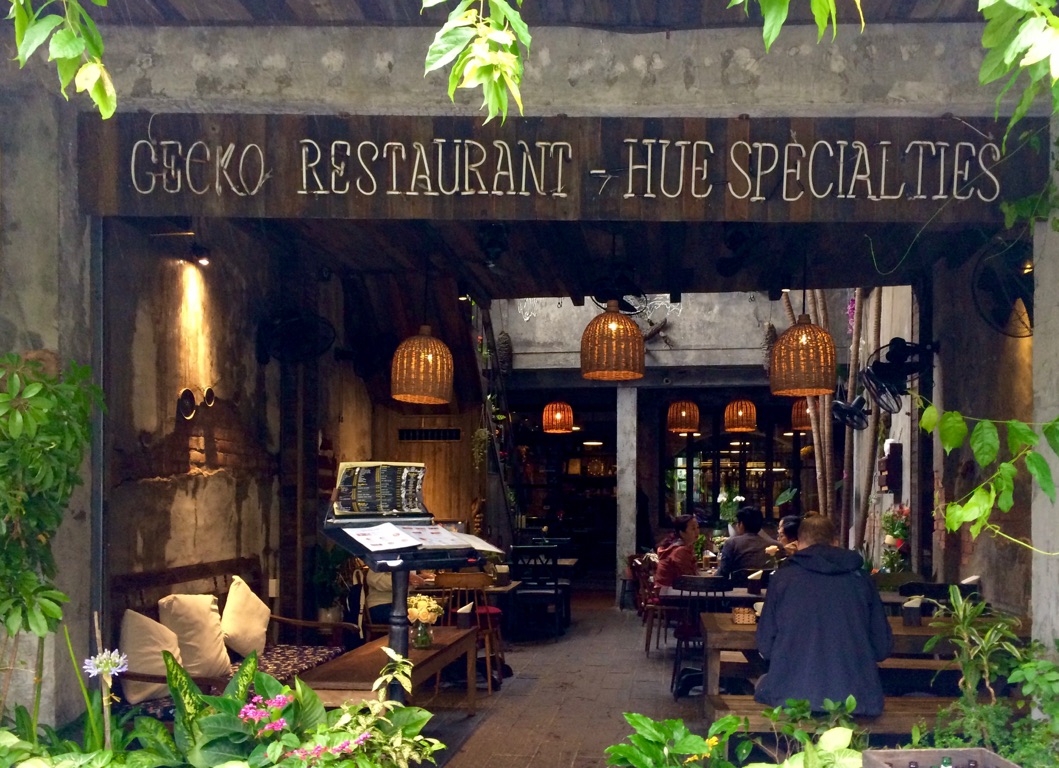
We found a fabulous place for coffee - and to sit and watch the rain. \240We have had no rain in the 2 1/2 months we have been in SE Asia and now it has solidly drizzled for 3 days.
We returned to the hotel health spa for a reflexology and foot massage. Wow! It was quite honestly the best massage I have ever had.
It was still raining at dinner time but we ventured out, back to the Gecko Restaurant which we liked so much for coffee.
And, as usual we poked into some sweet little shops on the way back home.
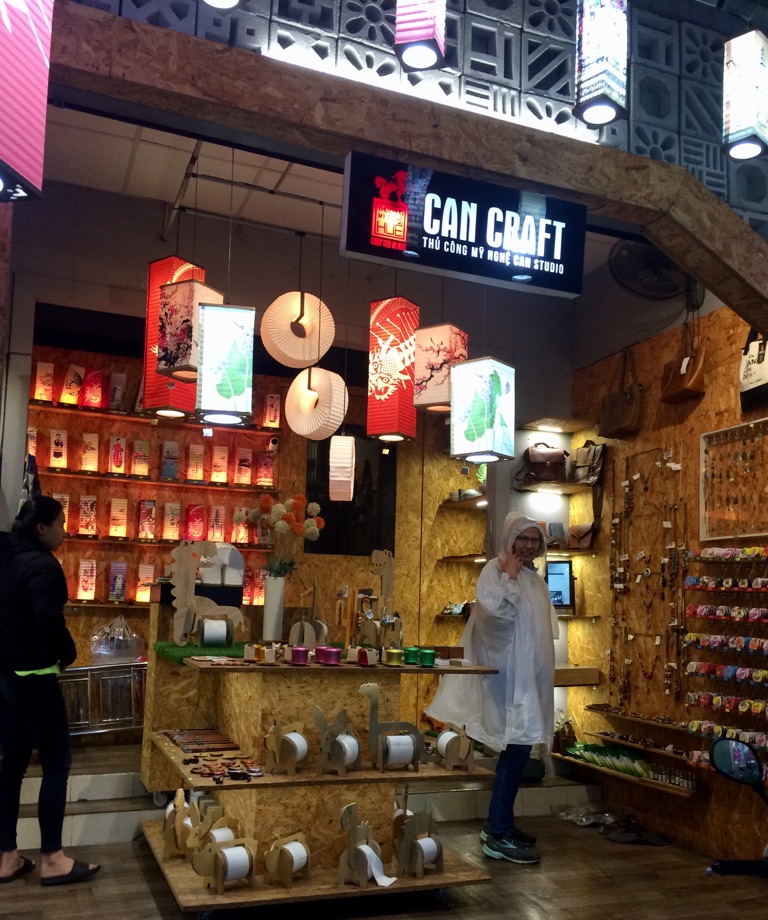
A walk along the Perfume River
Today we woke up to sun and clear skies. \240It seemed like good walking weather. As this was our last day in Hue we decided to explore the Perfume River walkway - which runs for 15 km along both river banks. It is a really well-designed public access route with beautifully landscaped green space and art installations and with several dock areas for tour boats.
Hue is making concerted efforts to encourage tourism and beautify the city. \240They are definitely succeeding - we have loved our time here!
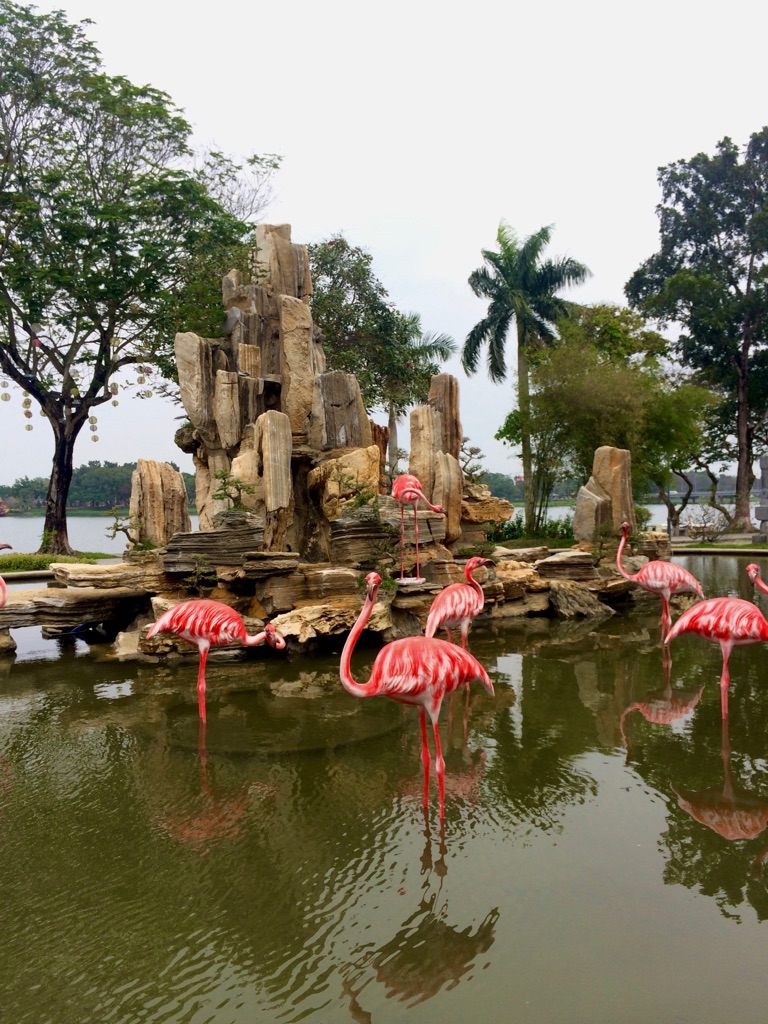


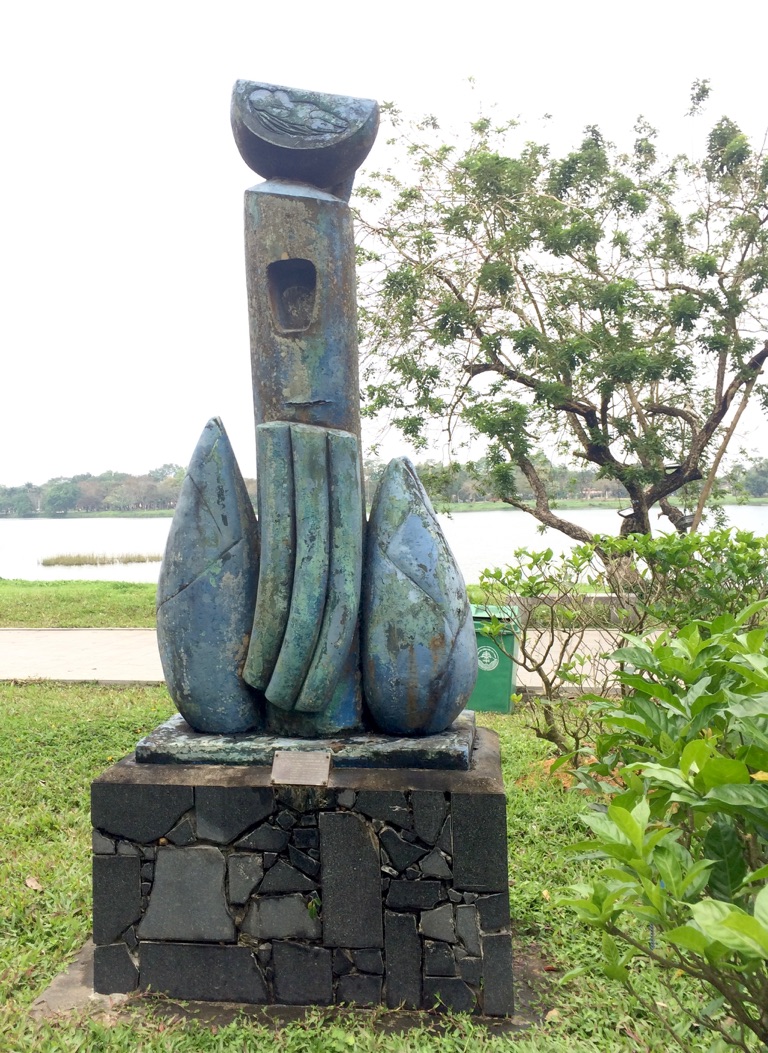
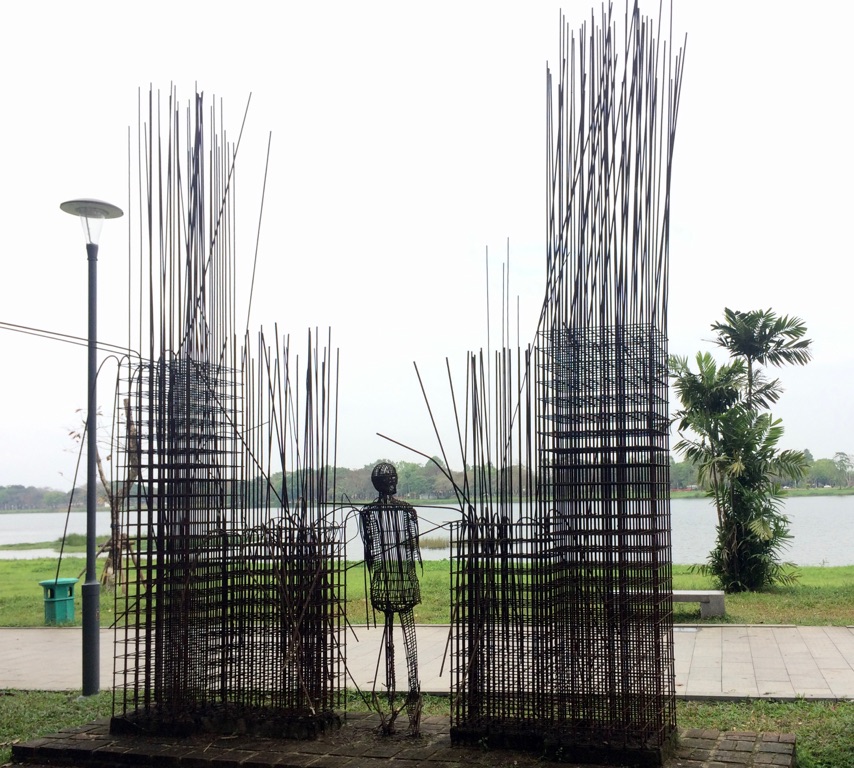

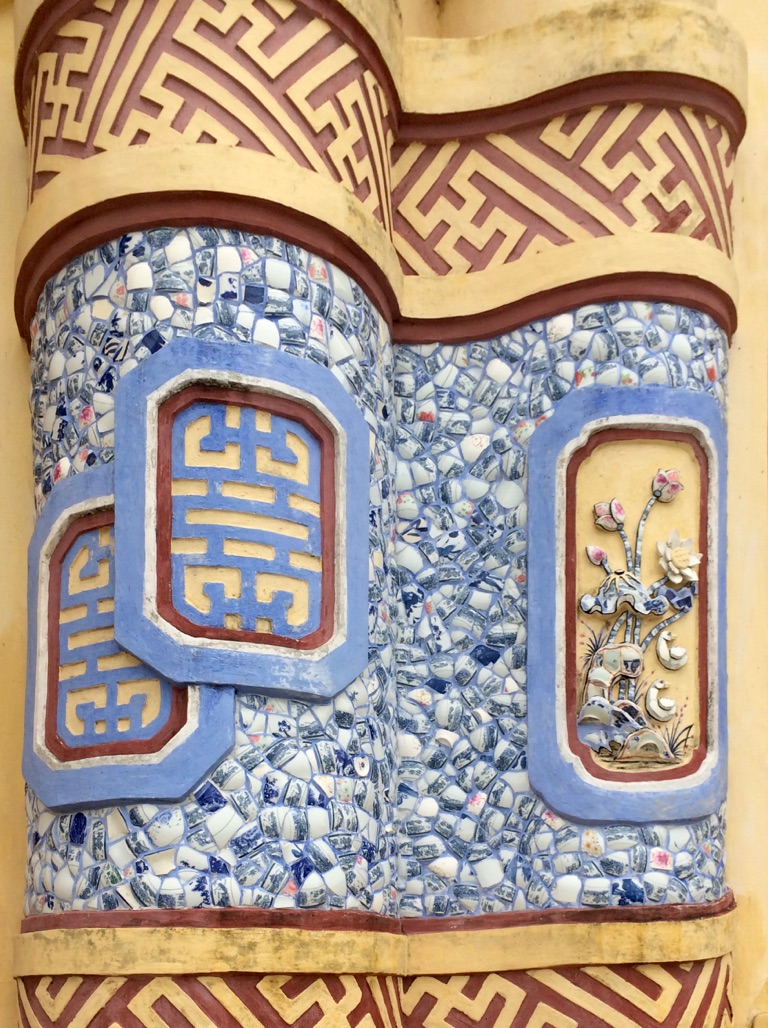
Flower installation for Valentine’s Day...
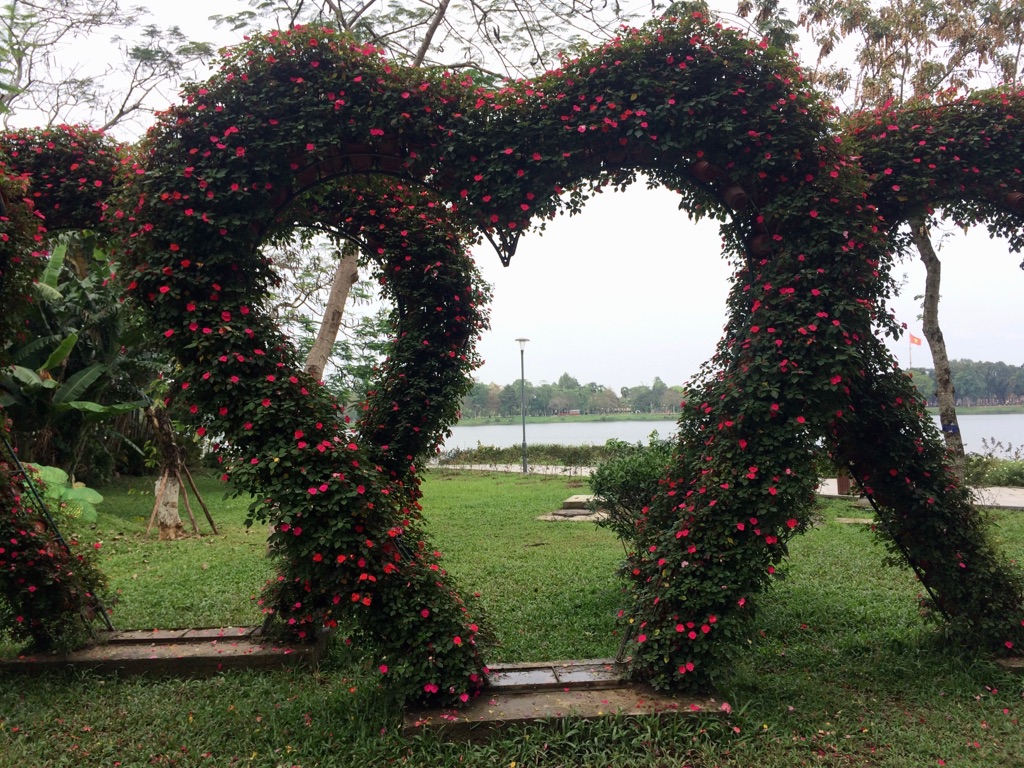
Statue of General Ho Chi Minh, the father of present-day unified Vietnam.

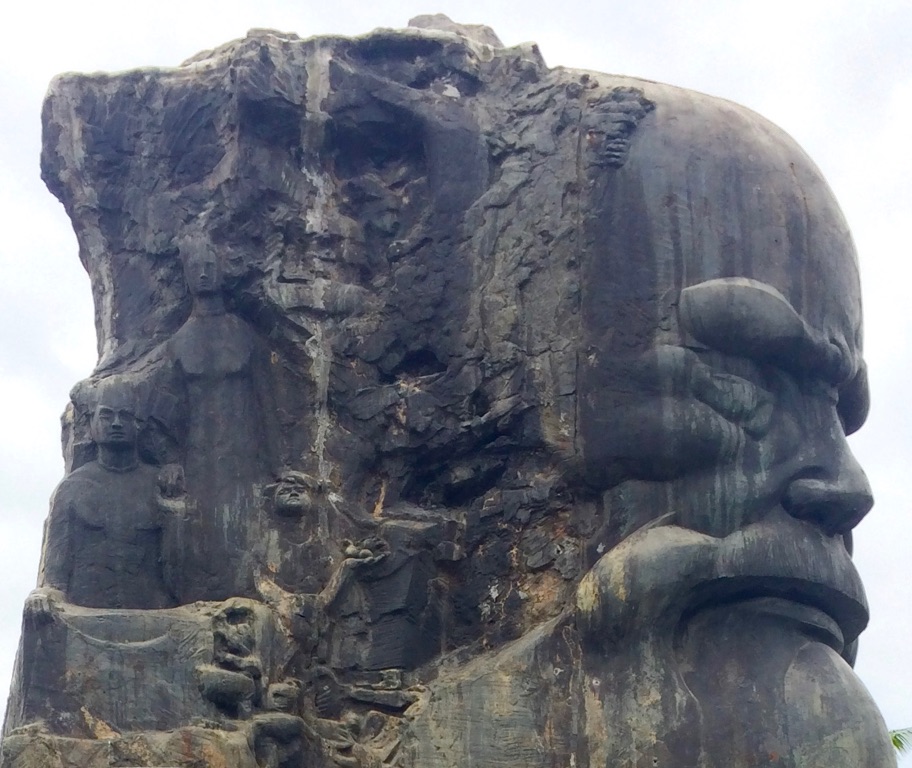
Kate and I playing around on the walkway...



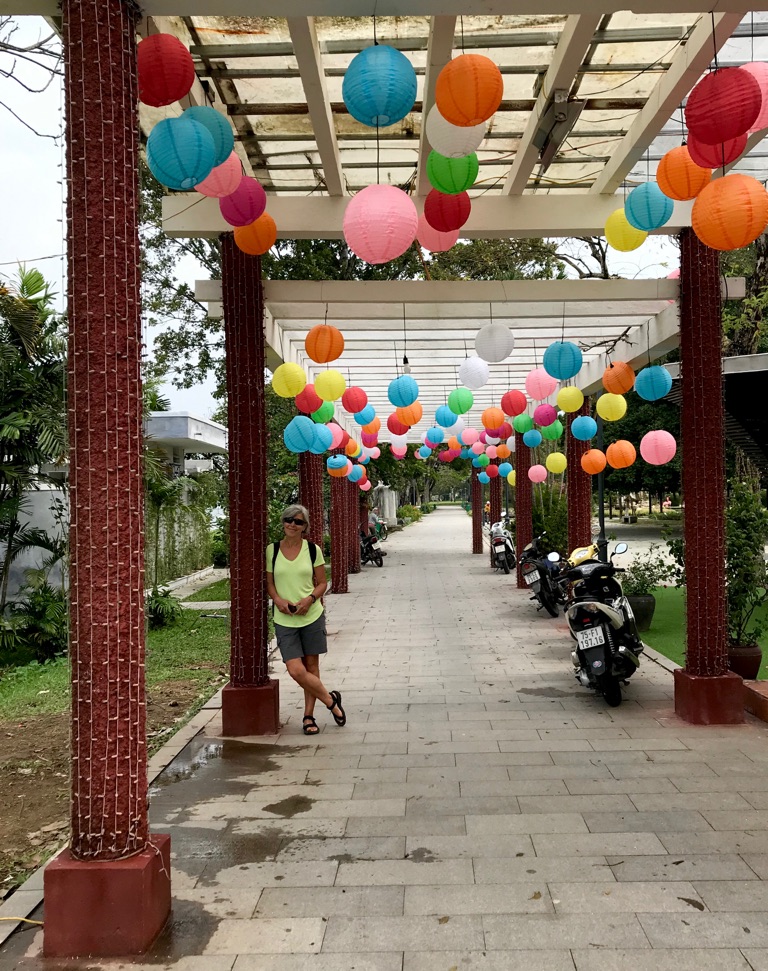
Tomorrow, we are off to Hanoi...a very large city of 8 million people and lots of ruddy motorcycles..
Hanoi - definitely better than Ho Chi Minh...
Checking into the hotel, we were given this information sheet:
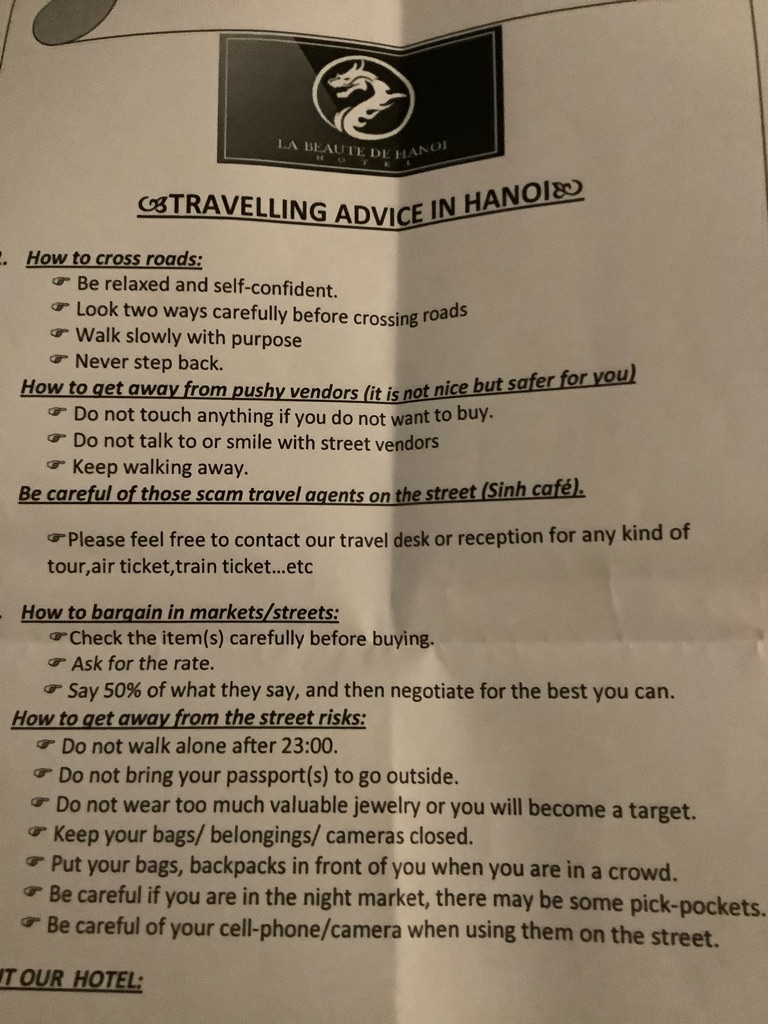
Interesting - this might have been good advice when we arrived in Ho Chi Minh but, now, we are ‘old’ hands, especially in crossing the roads! \240Traffic in Hanoi is nothing like the shock we found it to be in Ho Chi Minh - thank goodness. \240There is still no ‘never mind’ about crosswalks, and scooters still drive up onto sidewalks, pedestrians or not, but somehow it all seems so manageable.
Actually, Hanoi seems to have charm and a sophisticated air, and for a city of 8 million people there is little rubbish on the streets. There are many French colonial influences and architecture and we are lucky to be staying in a hotel in the ‘old’ city - on a very quiet alleyway, adjacent to the ‘French Quarter’.
For dinner, we found a lovely, charming restaurant which looks straight out of 1920’s Paris. It has 4 storeys with small dining rooms, patios and sunrooms on each. \240We loved it so much, we decided to make it our ‘go to’ place while we are in Hanoi. The restaurant is named ‘Bancong’, which means ‘balcony’ in French - a nod to the heritage of the building. In its former life the whole house was a private residence, with multiple generations under one roof.
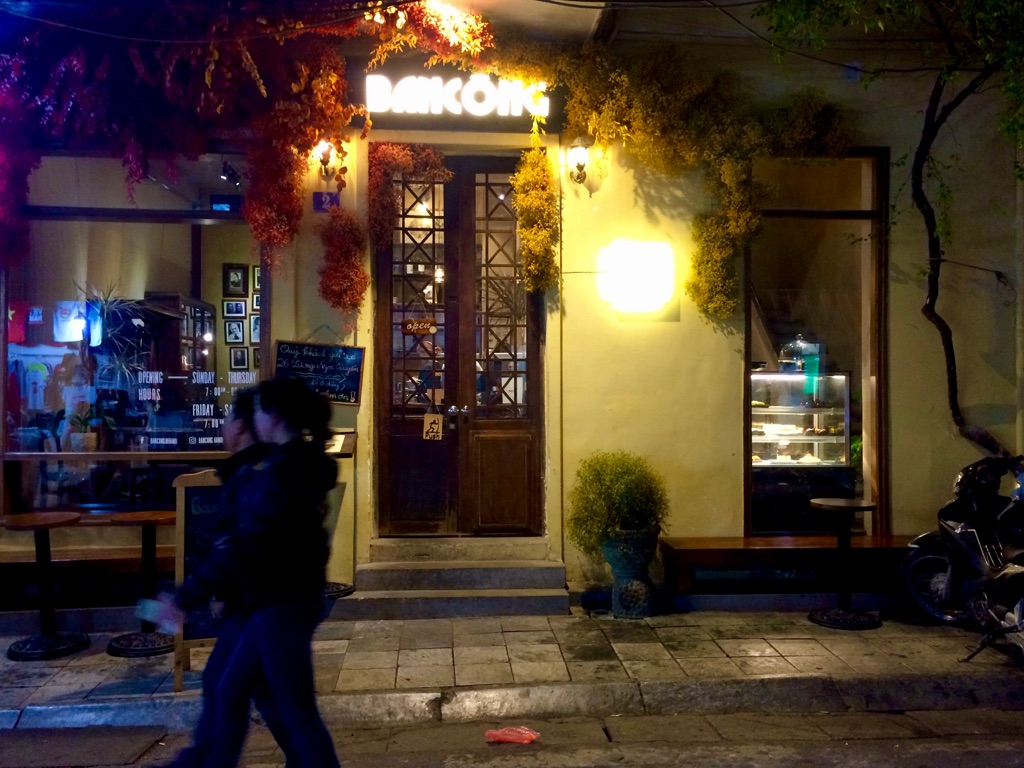
One of the small dining rooms...
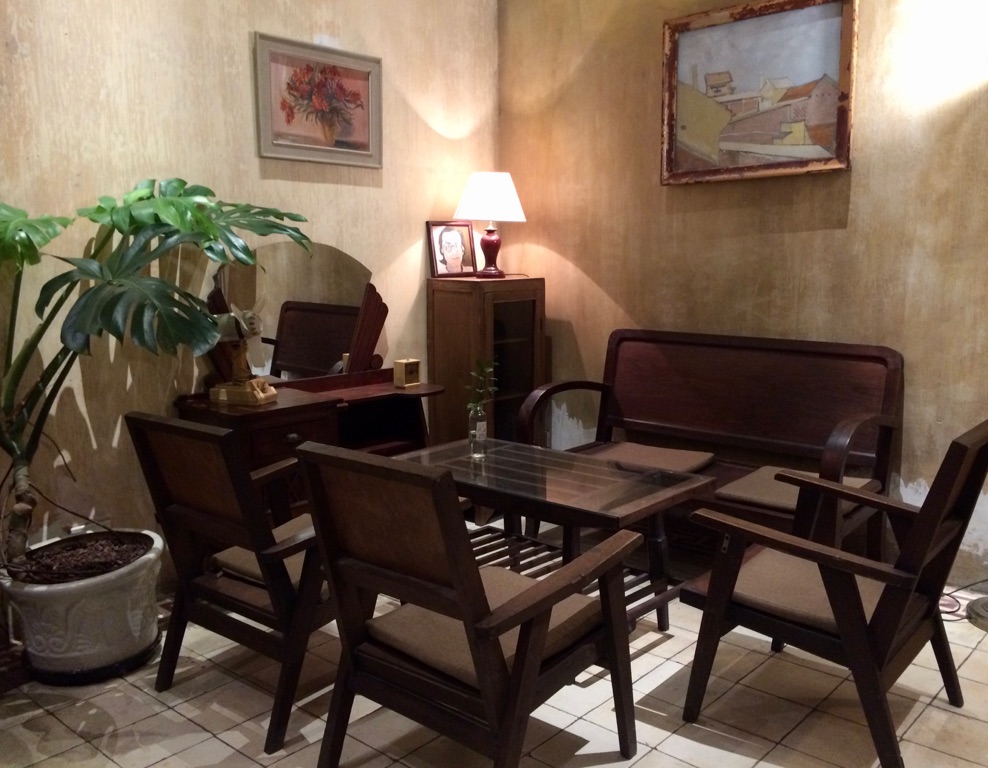
2nd floor patio...
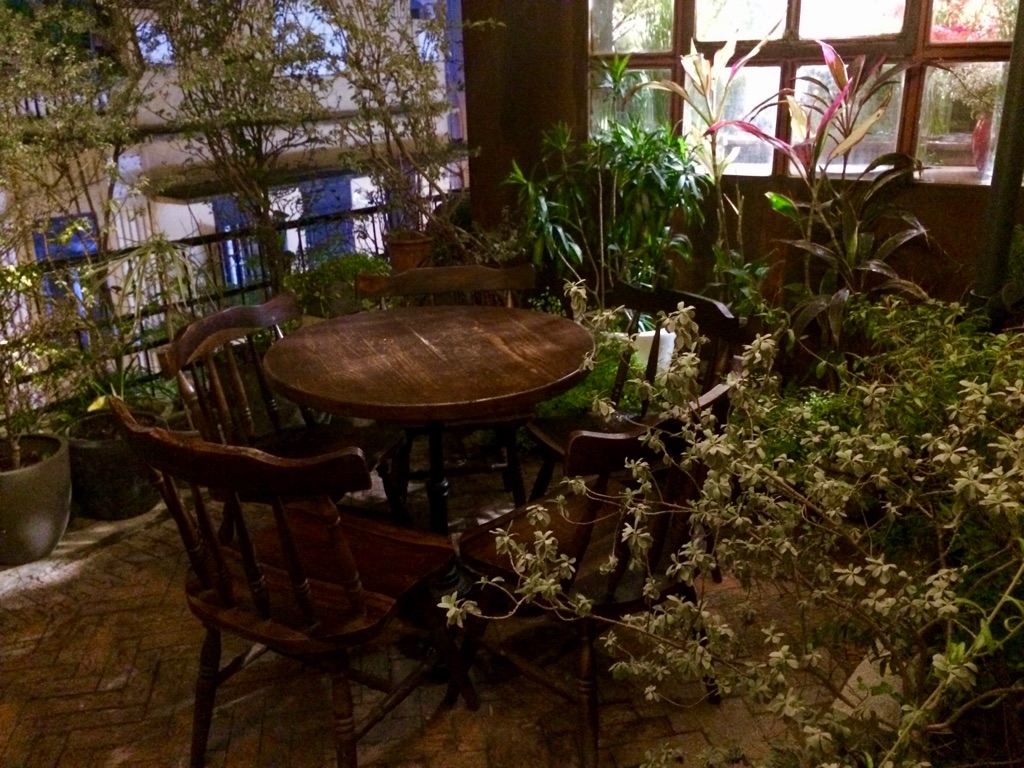
And the reception counter...
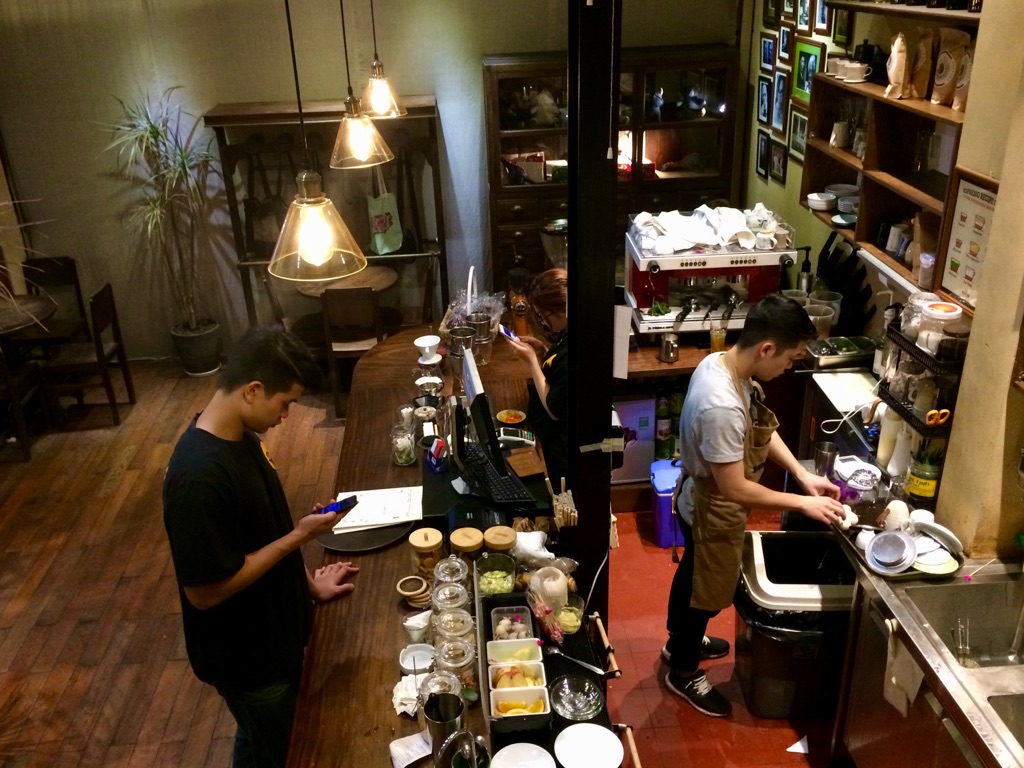
I almost thought I might see Ernest Hemingway, deep in conversation, just around the next doorway!
The food was fabulous - and our waiter, who is Vietnamese, told us his name is ‘Steve’!
Walkabout in Hanoi
After breakfast we explored the area around the hotel and walked to the French Quarter.

The alleyway of our hotel...
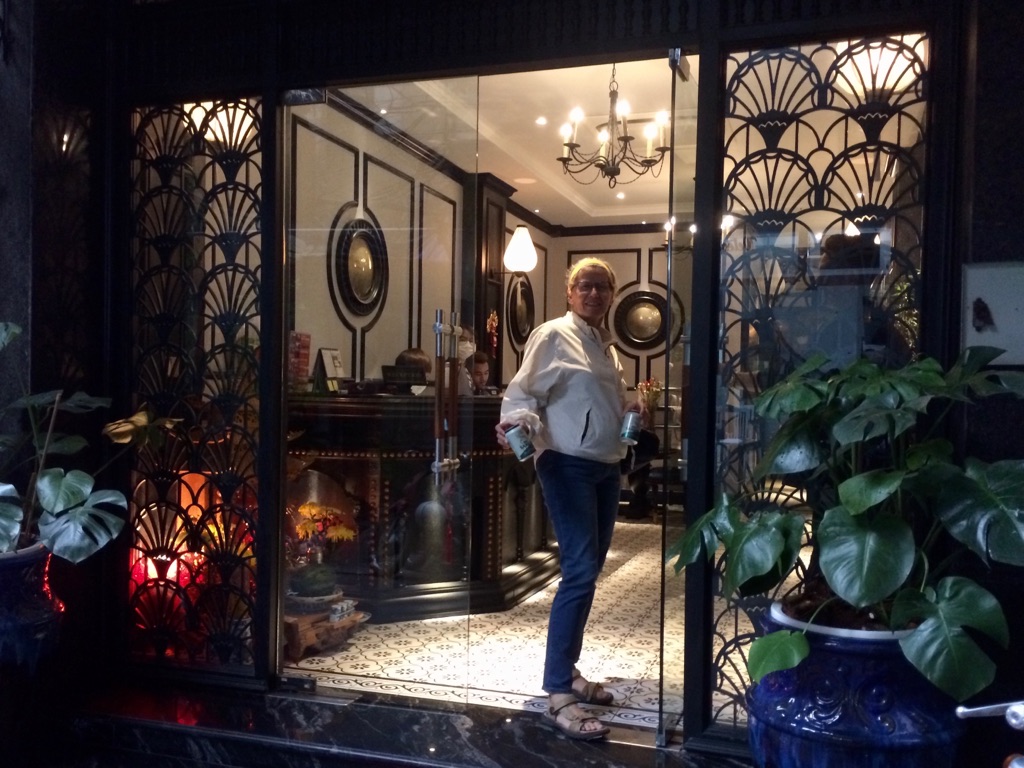
Kate in our elegant hotel reception doorway...
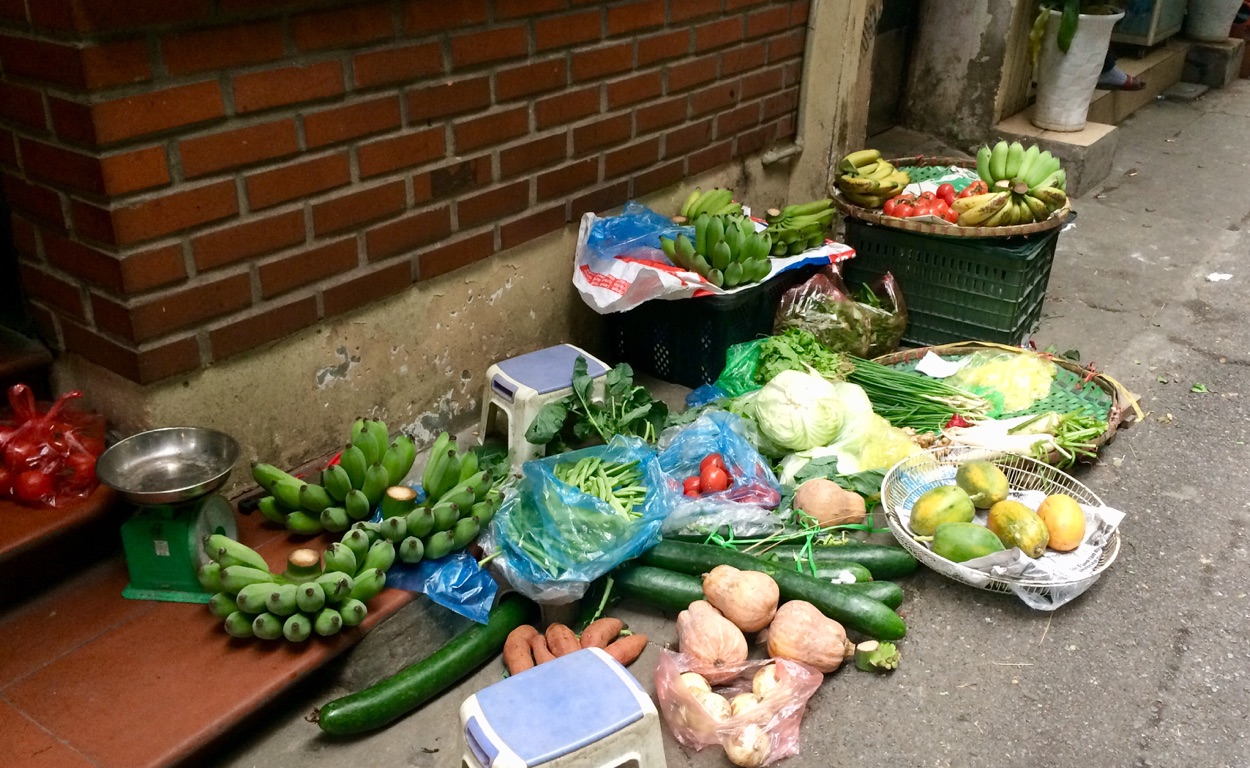
Fruit and vegetables for sale in the alley...
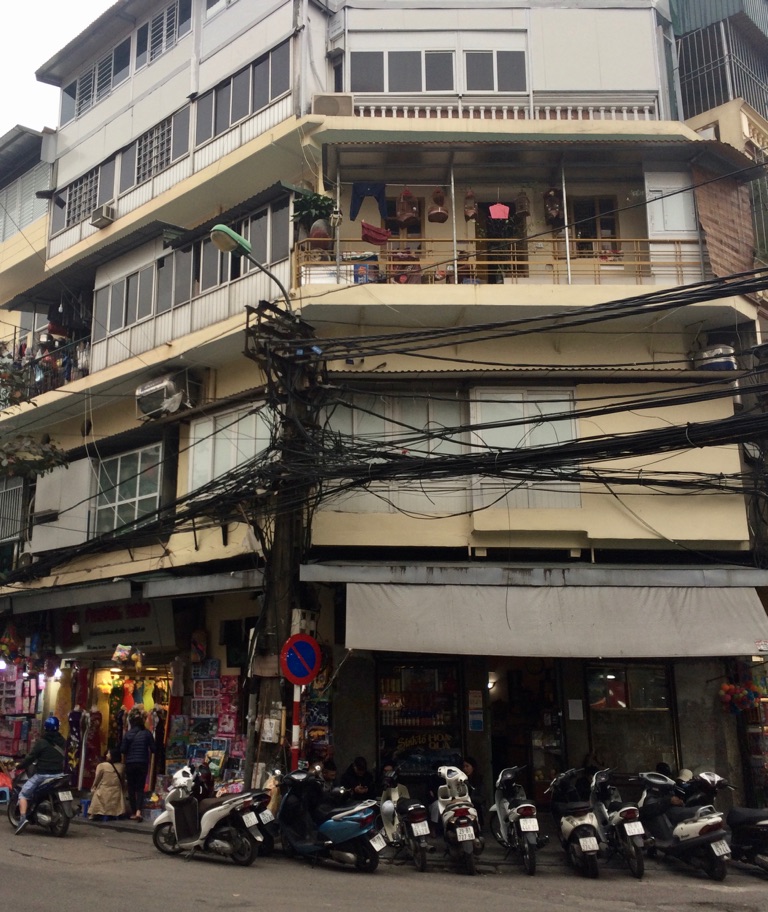
Street scenes at the end of our alleyway...

Entering the French Quarter
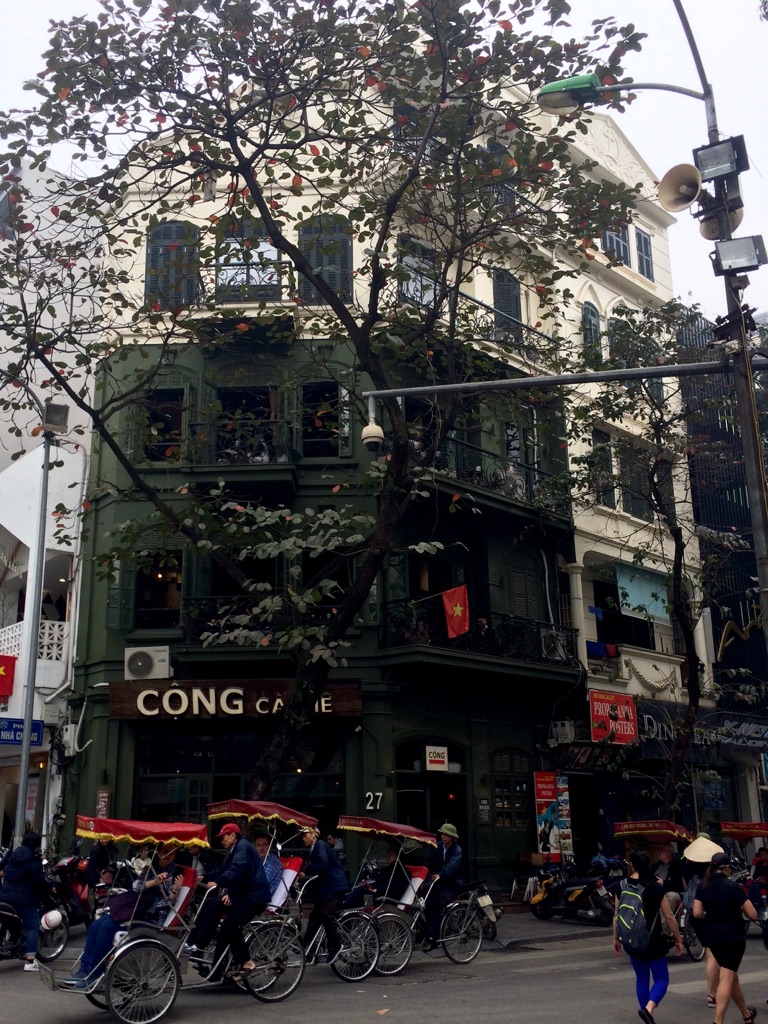

Beautiful St. Joseph’s Cathedral, built in the 1880’s during French colonial times to mimic the character of Notre Dame Cathedral in Paris. \240It was closed for many years by the communist government but re-opened in 1990. \240Unfortunately, we could not go inside as it is closed due to the corona virus fear. \240Not quite sure why, however, as the streets are certainly crowded with people always.
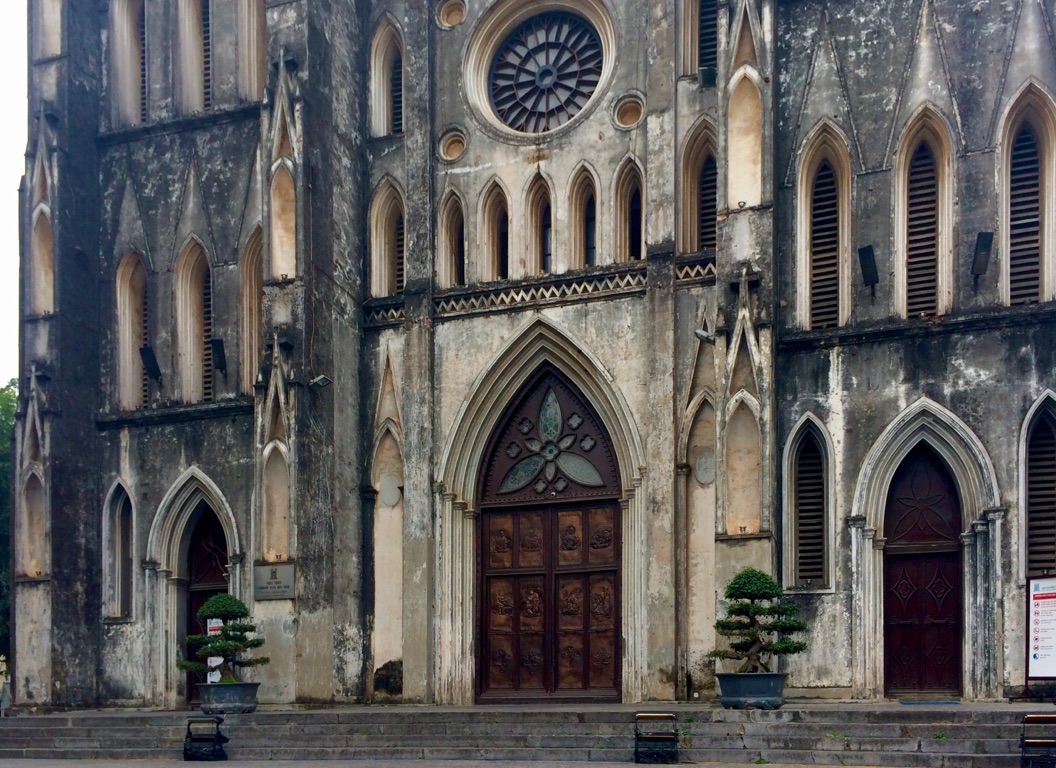
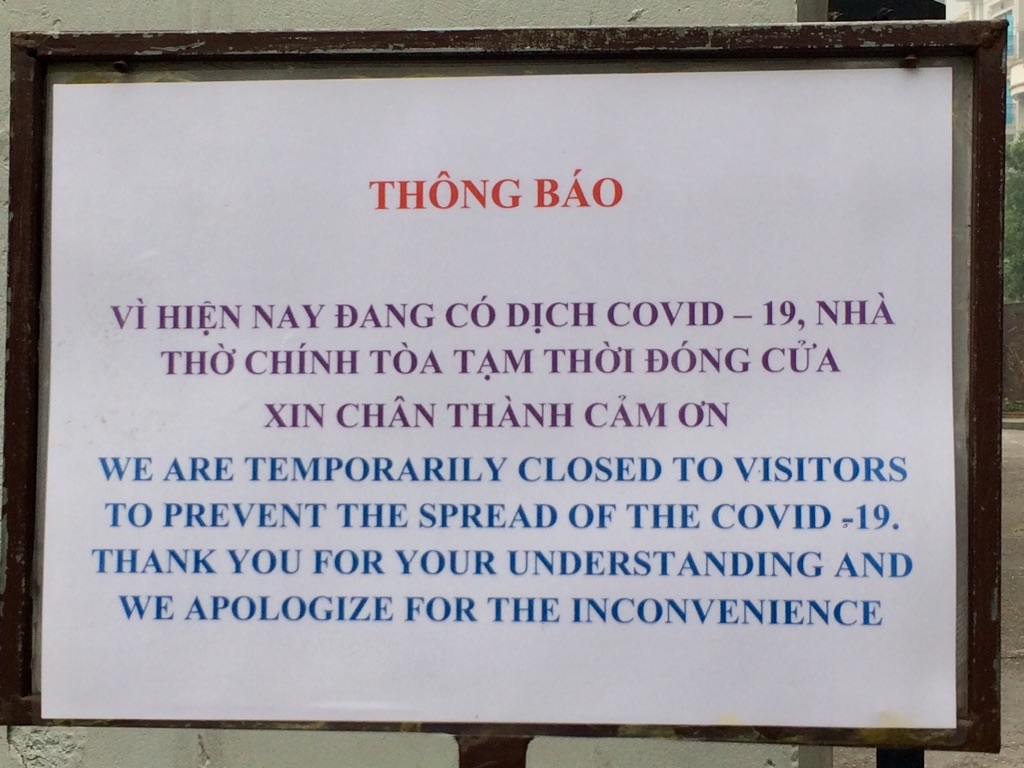
Some other sights from our walkabout:

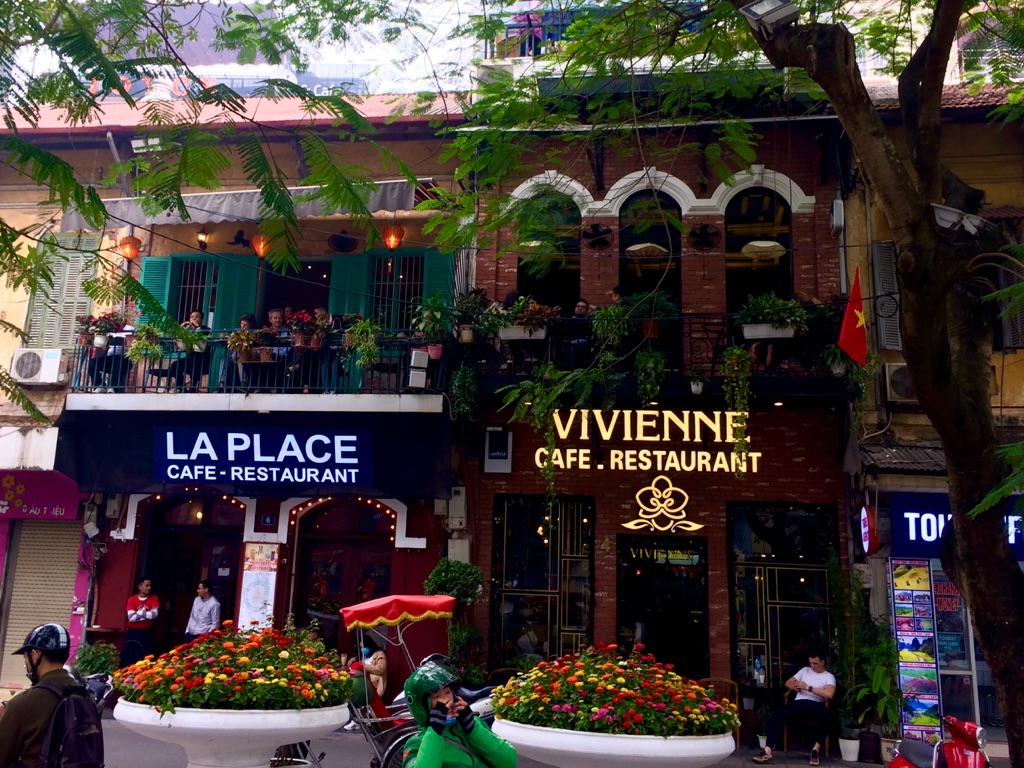
We had lunch on a 3rd floor balcony looking down on this scene...

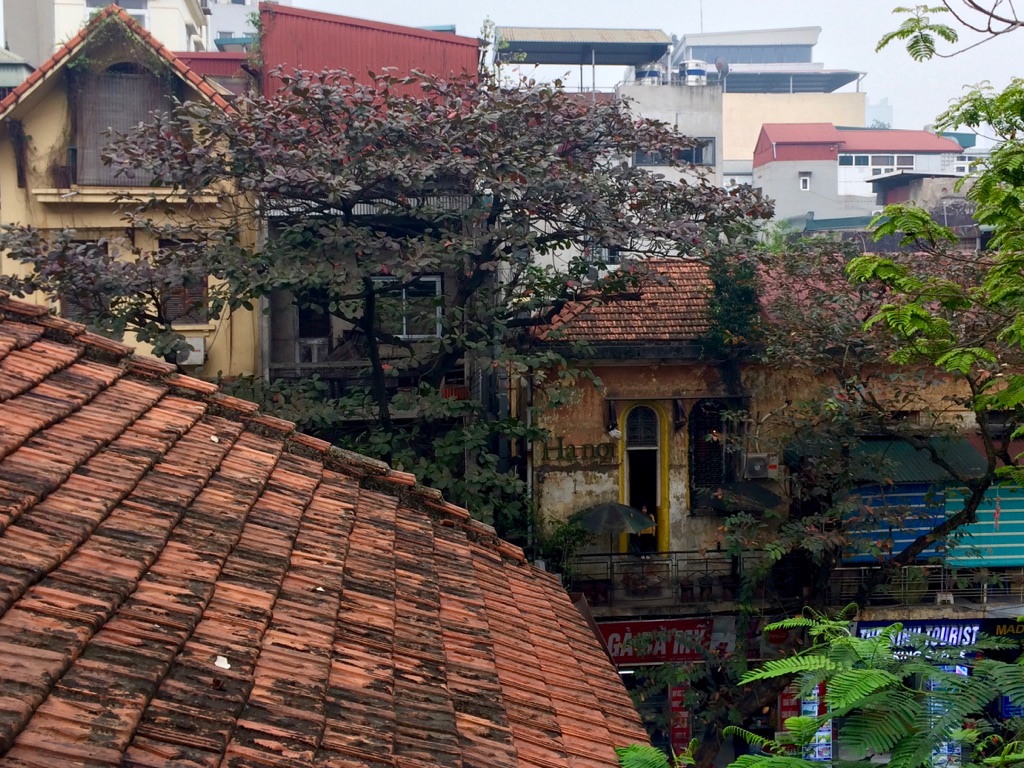
Going sailing...
We were picked up from our hotel by a shuttle van to transport us to the town of Ha Long (about 3 hours) to board the ‘Dragon Pearl’ for a 3-day/2 night cruise on Baie Tu Long Bay. Along the way we were mesmerized by the views of rice paddies and waterways.
Rice paddies along the road...
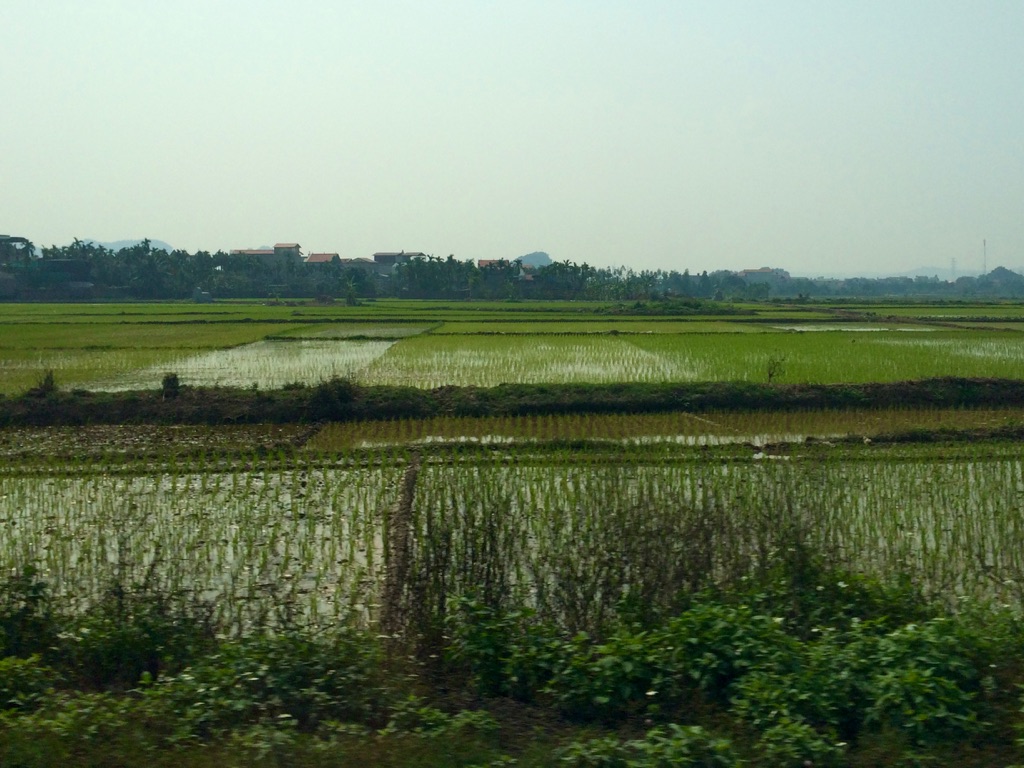
Rice fields under misty grey skies...
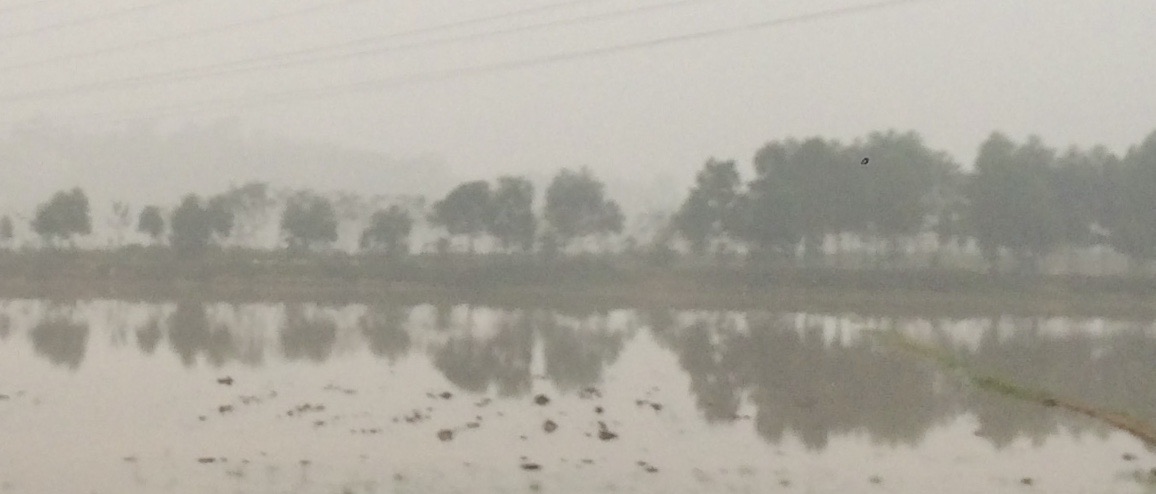
The company with whom we booked was Indochina Junk Tours - and I recommend them most highly. They delivered a fabulous trip in every way and at a reasonable cost. \240They offer a variety of cruises with passenger capacity between 6 and 100.
We were on a smallish boat with 12 passengers in all - and - 10 staff including our guide. Cruise capacity is 20 guests - 10 cabins; this was the first tangible sign that the number of tourists was drastically shrinking due to the Coronavirus threat. But, how pleasant and relaxing it was with fewer people.
We boarded, had our orientation and were given the key to our cabin on the lower deck. \240This is my first cruise of any kind and I was pleasantly surprised by the spaciousness, particularly the near full-size shower!

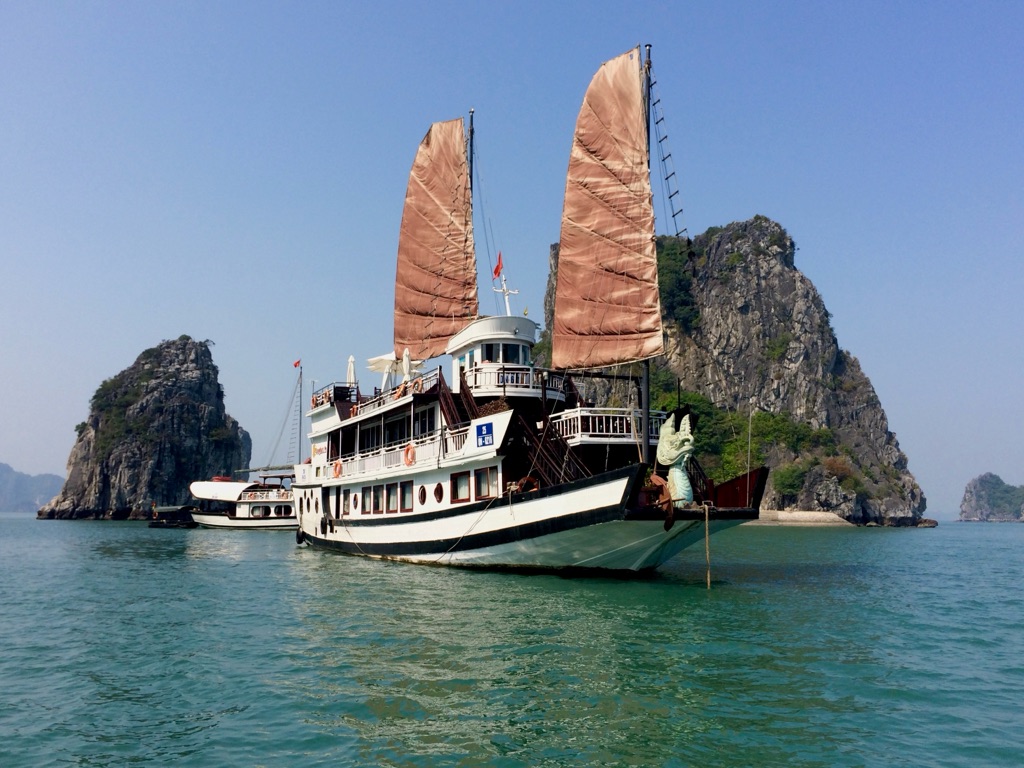
Our boat with sails...
Once settled in to our cabins we sat on deck (with beers in hand) to take in the views. Nobody spoke...we were stunned and in awe...left without words to describe.
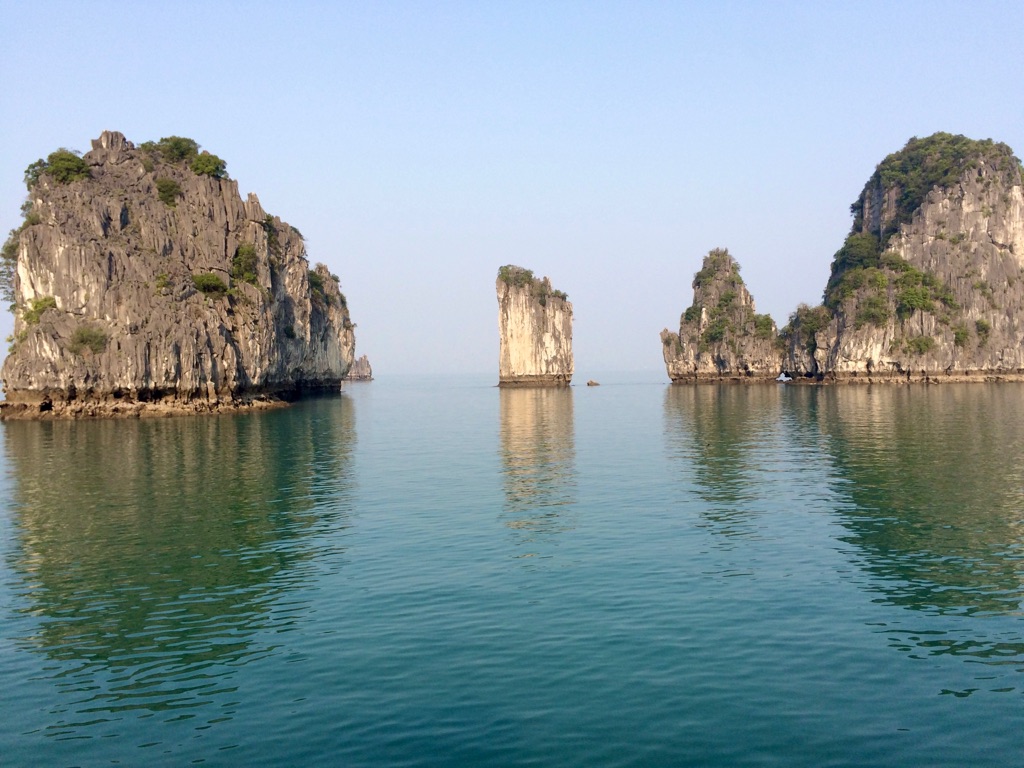
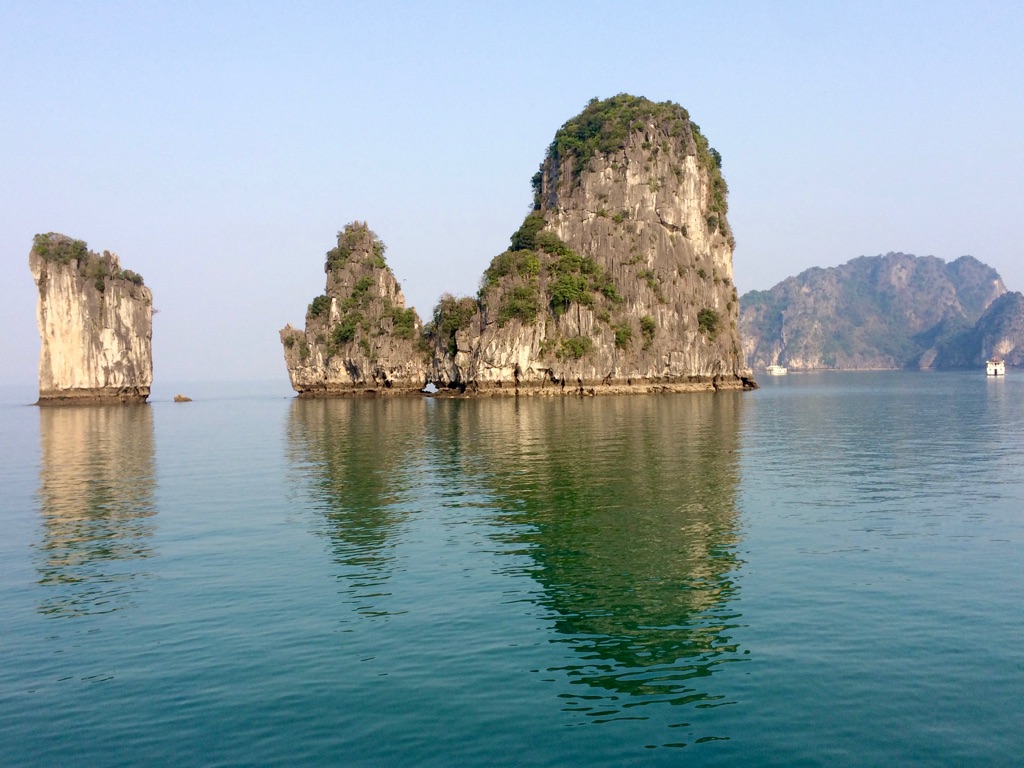
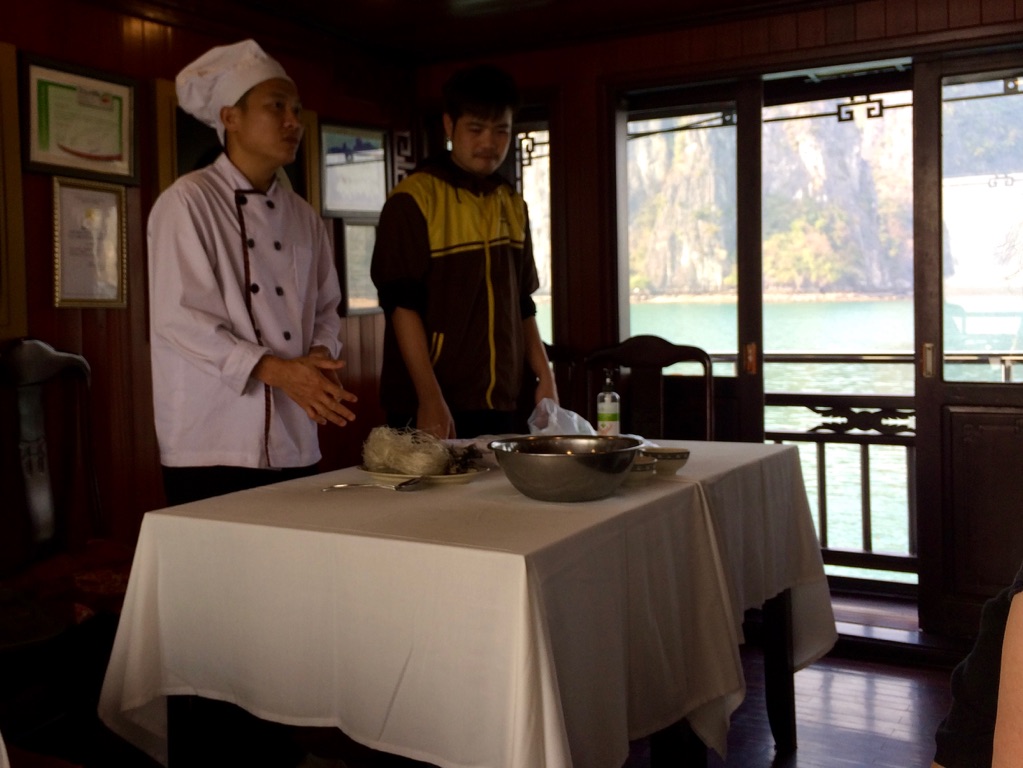
Later in the afternoon, our chef gave a cooking lesson on how to create and properly roll up spring rolls; we enjoyed them out on deck along with another beer - yum!
As evening approached there was kayaking in the bay for those who wished; Kate kayaked and I sat up on deck, enjoying my book, the views, the sunset and some solitude.
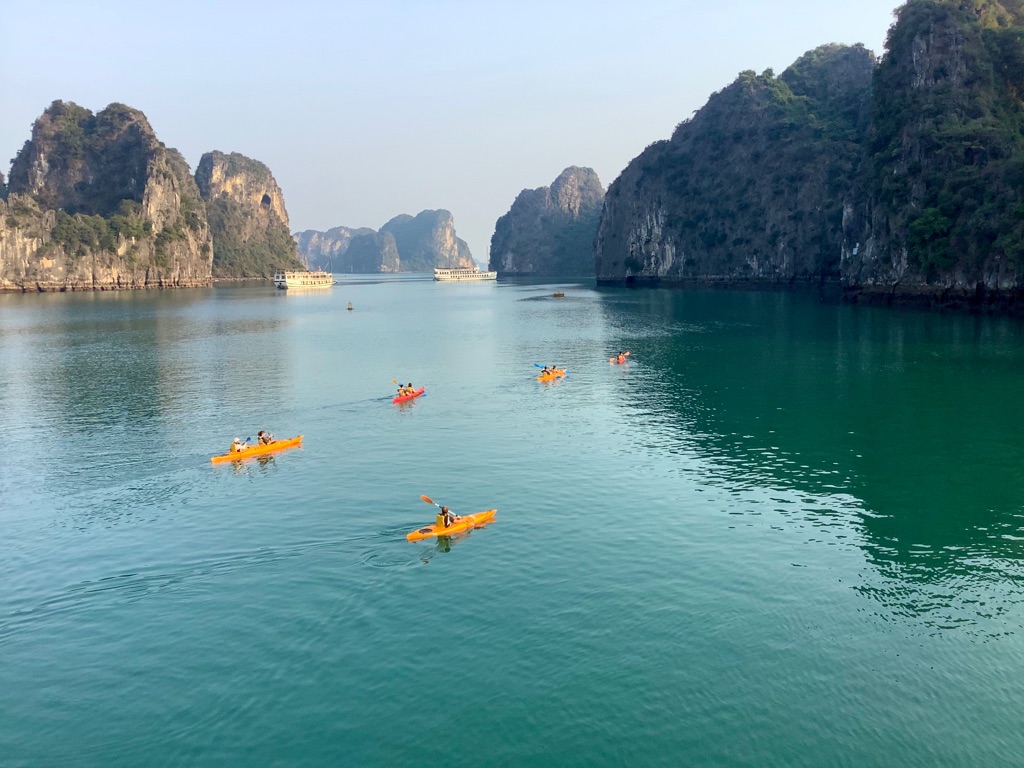
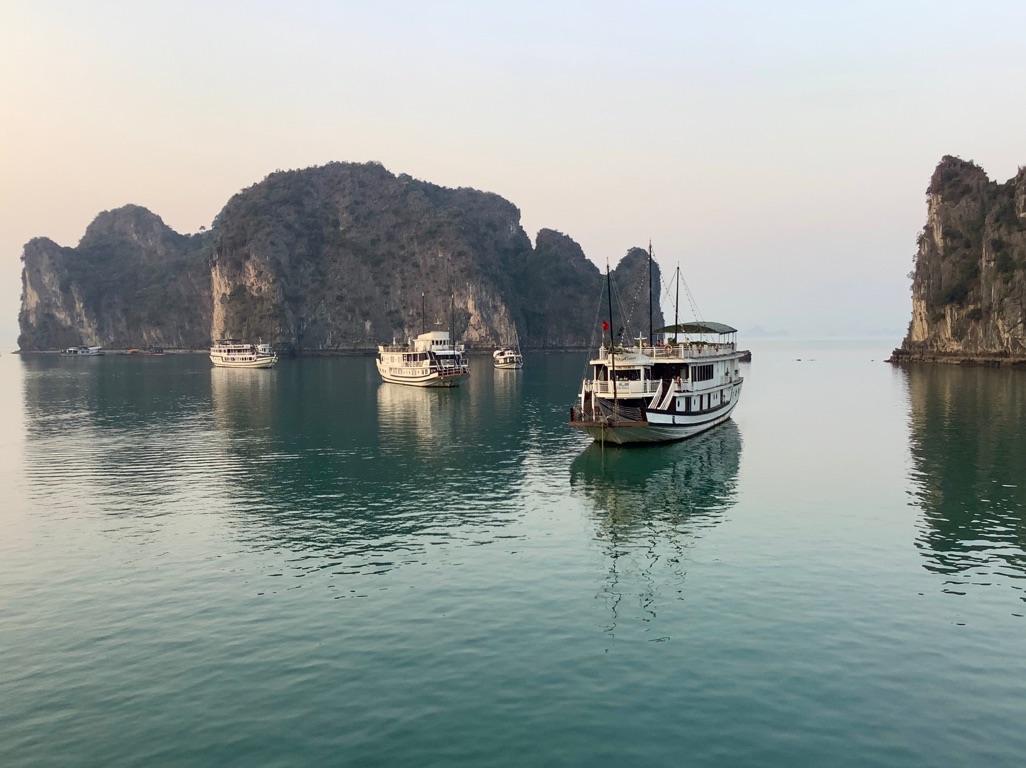
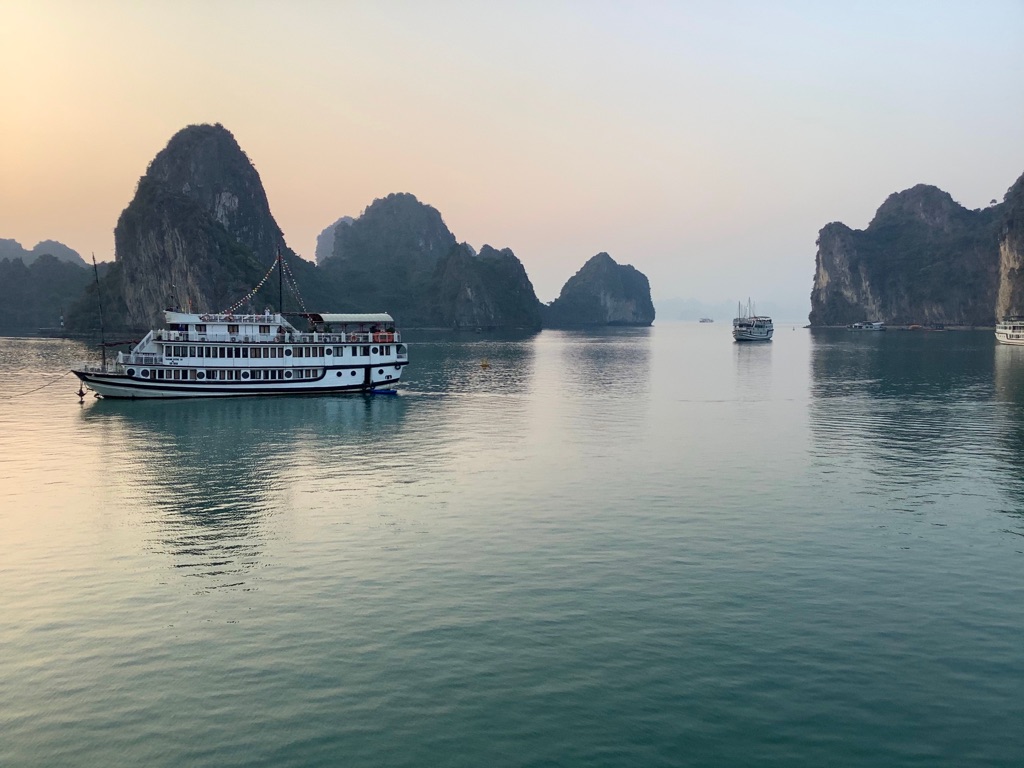
Dinner was served in the dining room, 3 tables of 4 - with 5 courses of magnificent food and lively conversation while we got to know each other. We sat with 2 women, Fran and Elaine, who are retired sociology professors from Edinburgh University, one of them a transplanted New Yorker. At the second table, sat a mother and daughter from France (the daughter teaches languages in Phnom Penh); and a couple from Maple Ridge, B.C. Two young couples sat at the 3rd table, one couple from Boston, the other couple from York, U.K.
We tucked into our cabin for the night, no noise, no ambient light - just listening to faint water noises in the very quiet bay... I think I just might stay here for ever...
Still sailing...
Imagine waking up to this view from our cabin porthole?
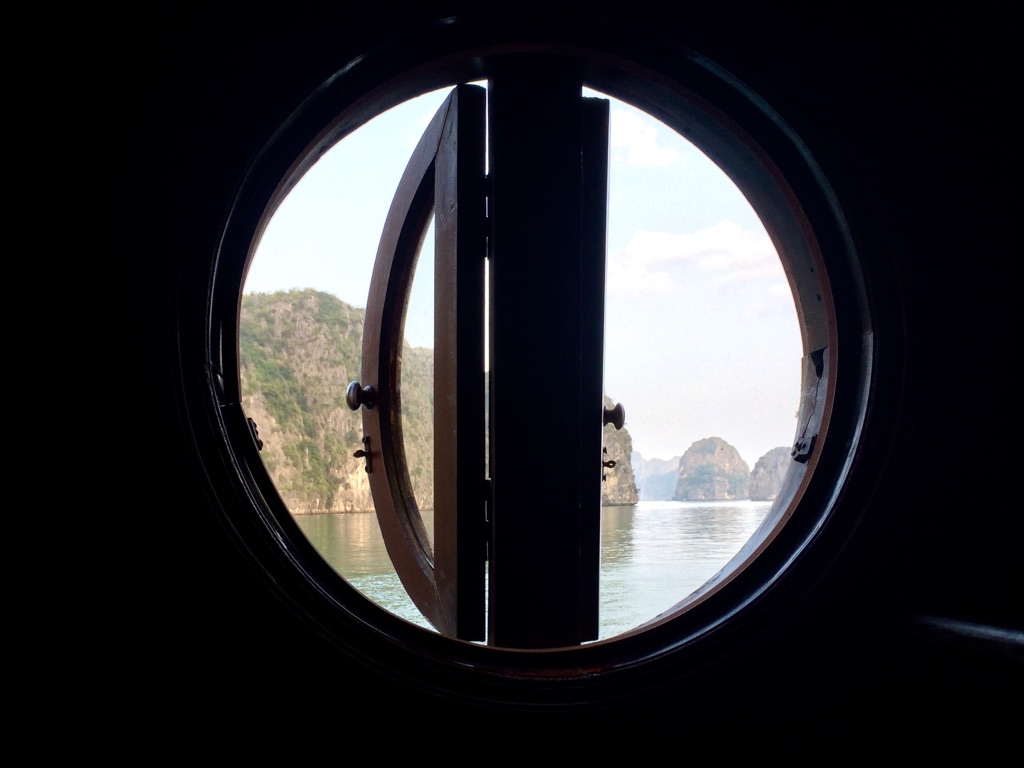
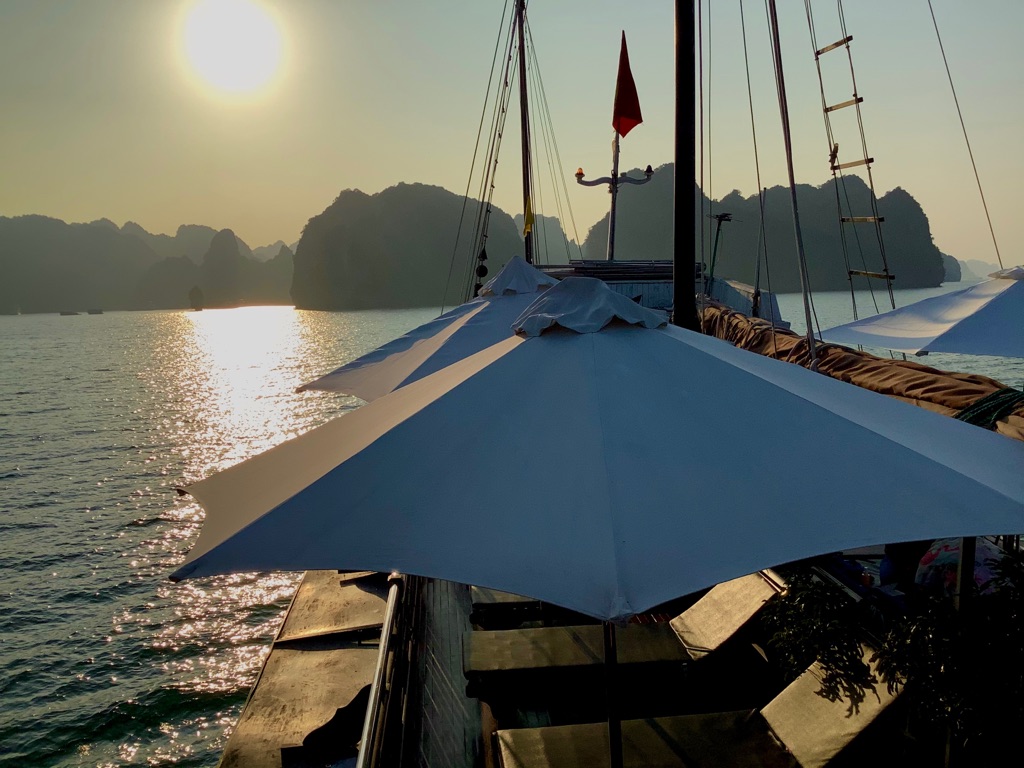
And then this...

And this...
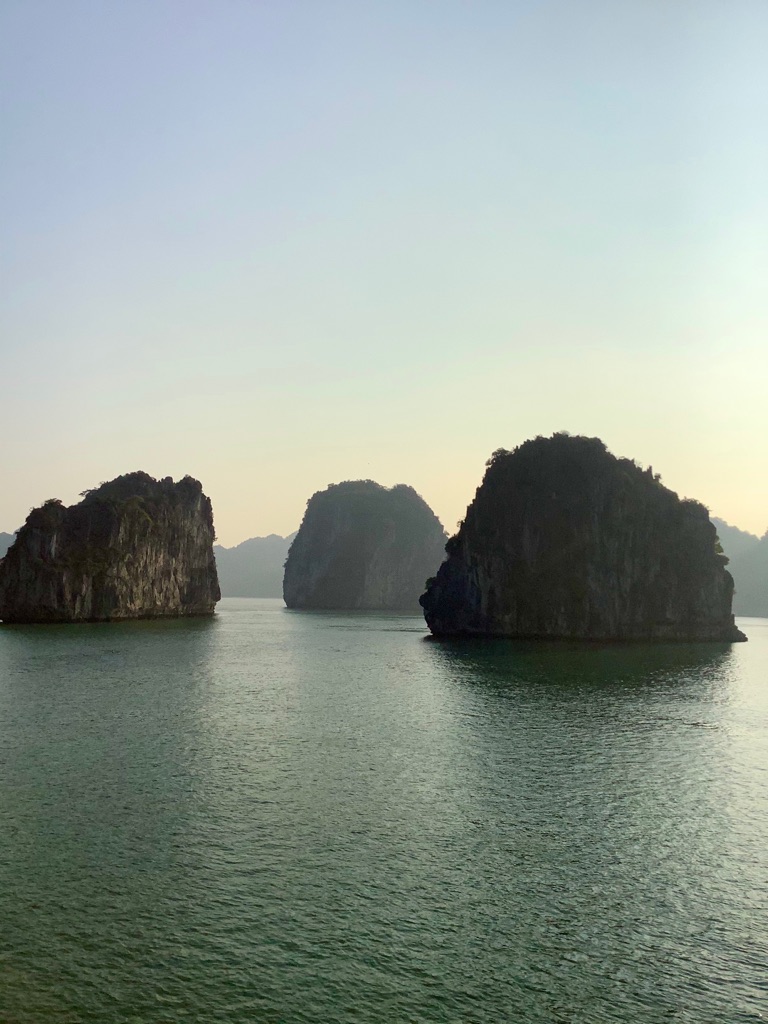
The agenda for the day was to sail further into the bay and explore some caves, go kayaking, and dock at a swimming beach for the afternoon - for a barbecue lunch. Honestly, this is the most glorious couple of days ever - wonder if they might hire me?
First the caves:
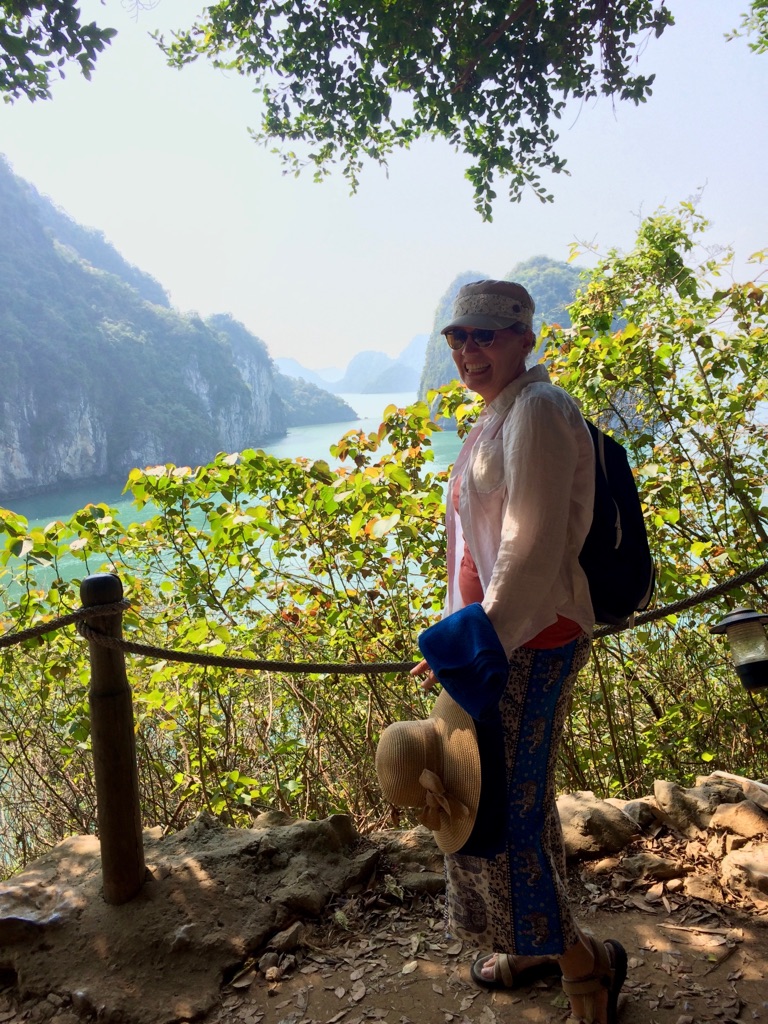
Kate admiring the gorgeous view...
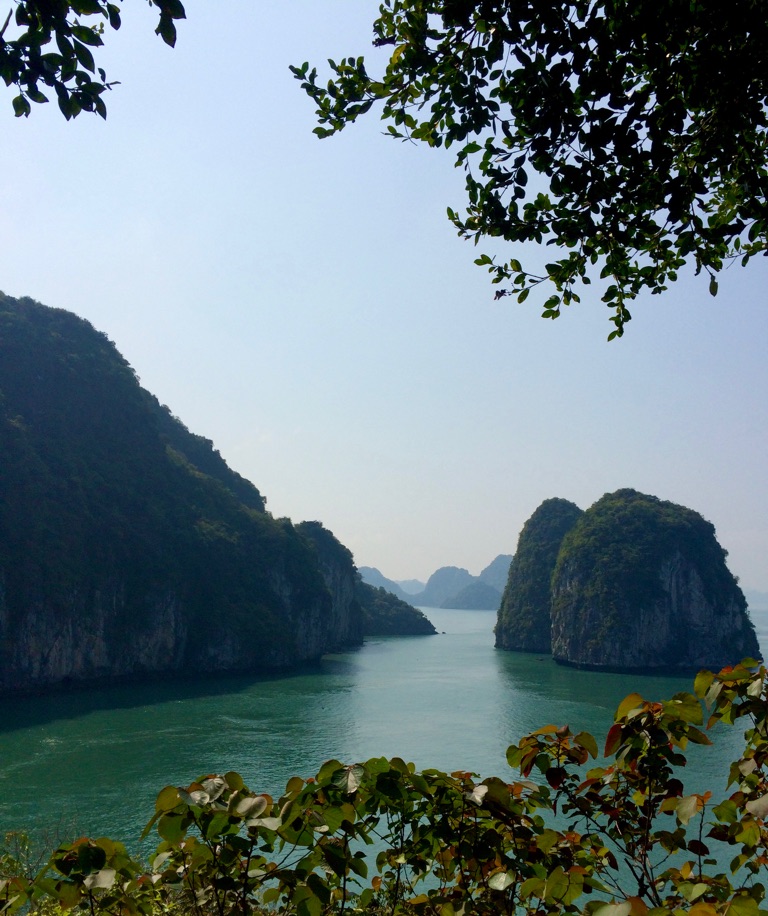
A steep hike up...and into the cave...
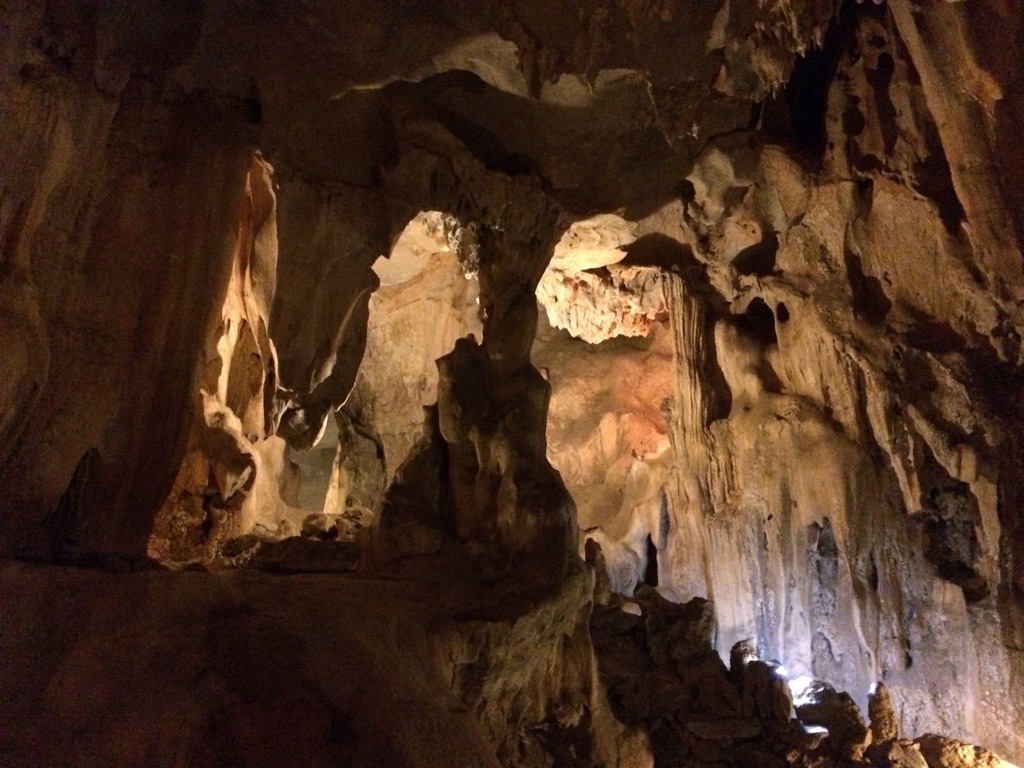
Stalagmites rise up from the floor, stalagtites from the roof of the cave. \240Amazing how they form, over millions of years inside the karsts. More amazing is that fishermen have lived in these caves for centuries - perfect protection during big storms.

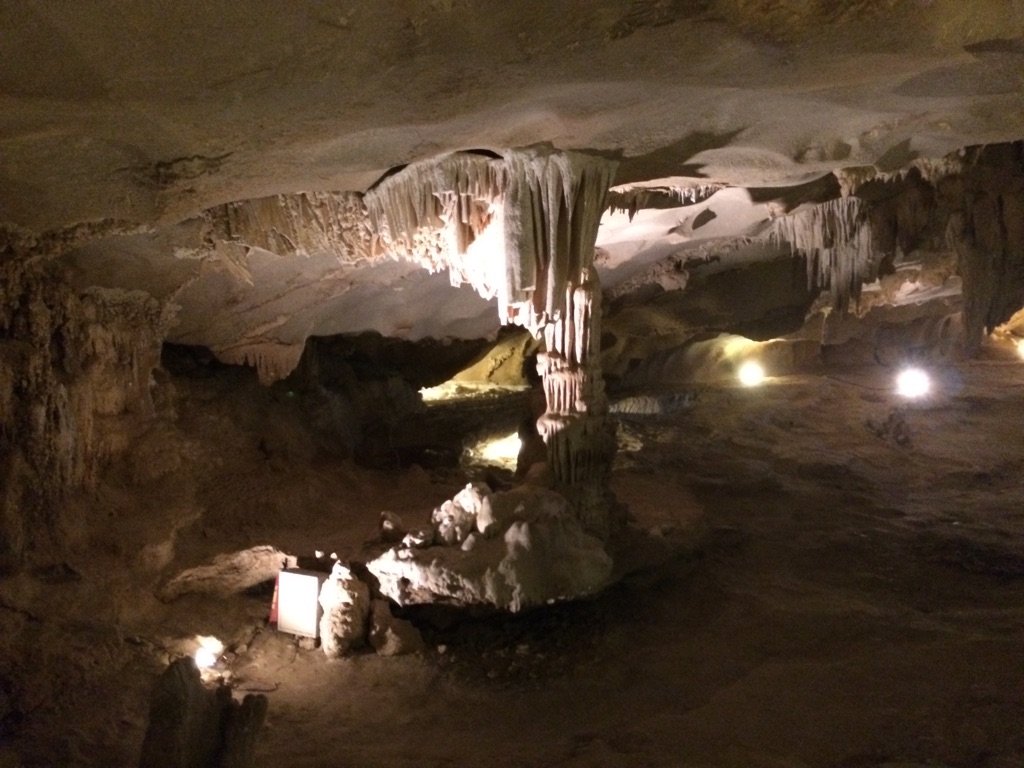
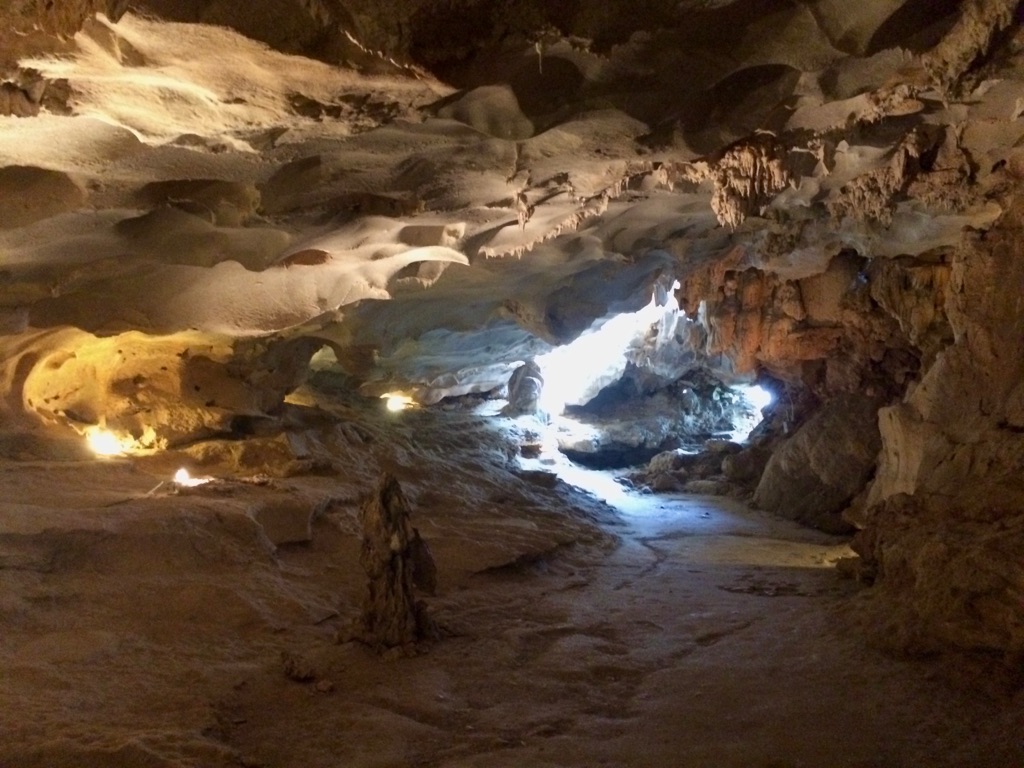
And the daylight shows the way out...
Next activity- kayaking...
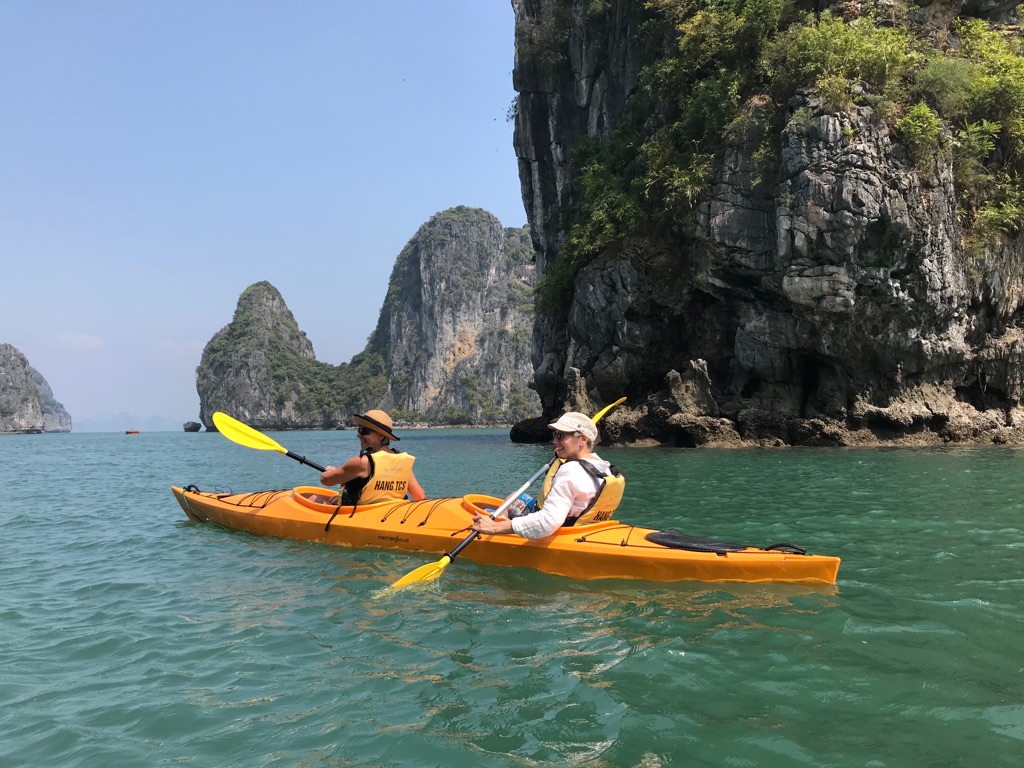
Kate and me...pondering how we could be so lucky as we head for the promised beach...
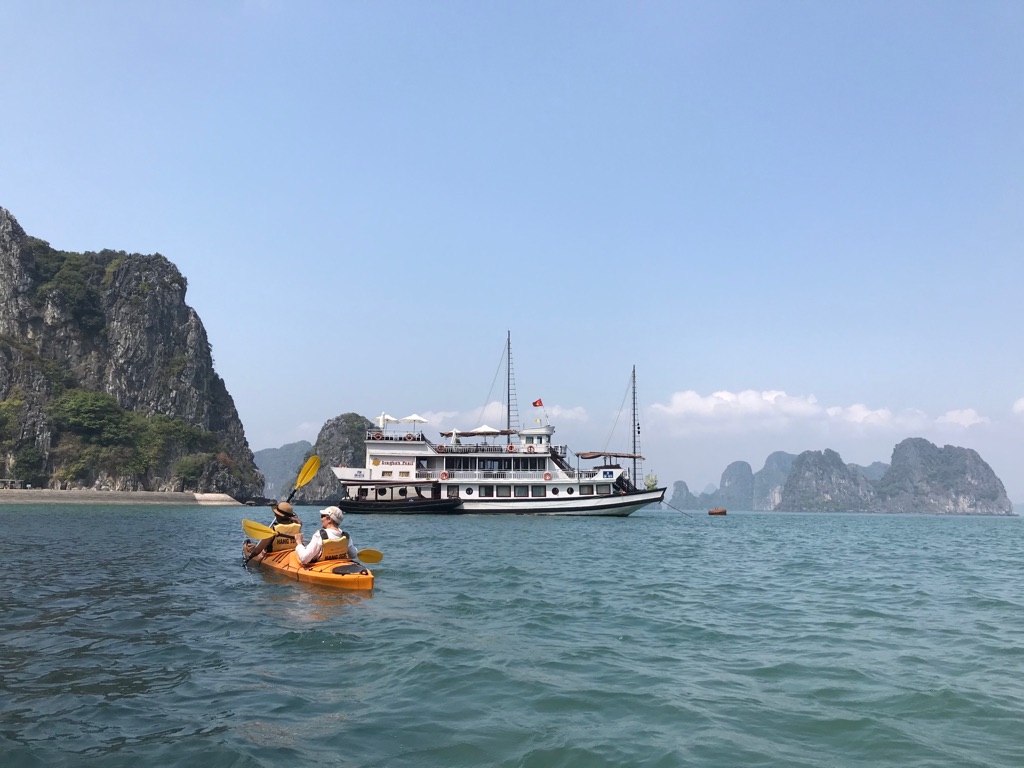


Lunch being prepared...
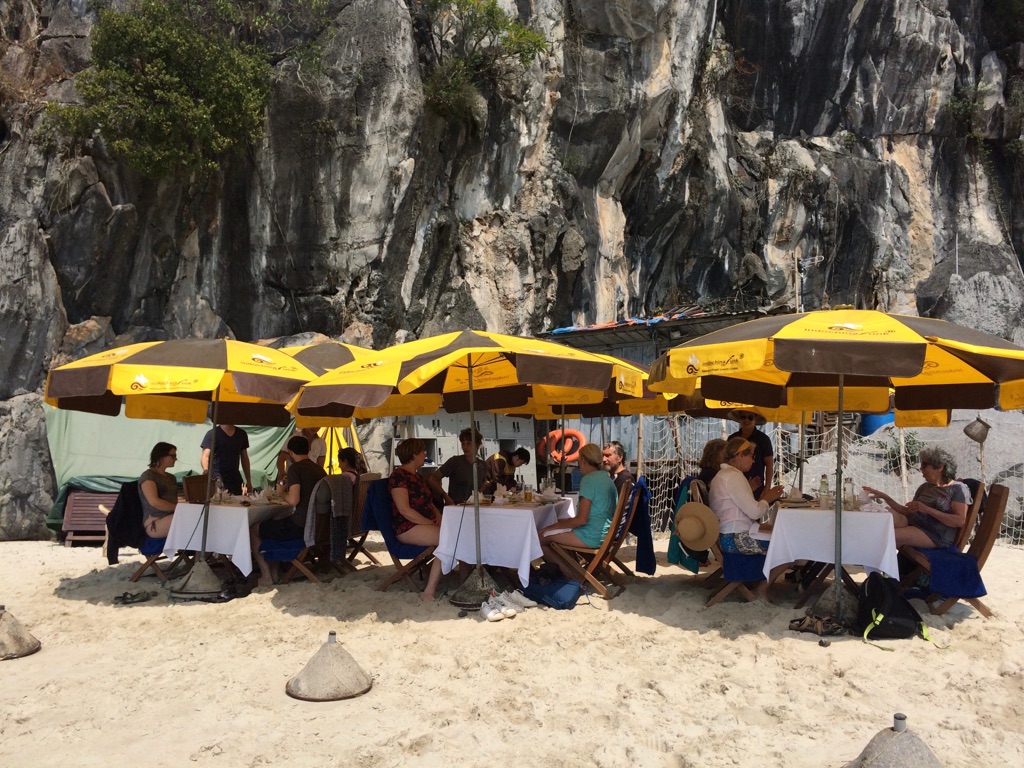
Lunch being enjoyed...
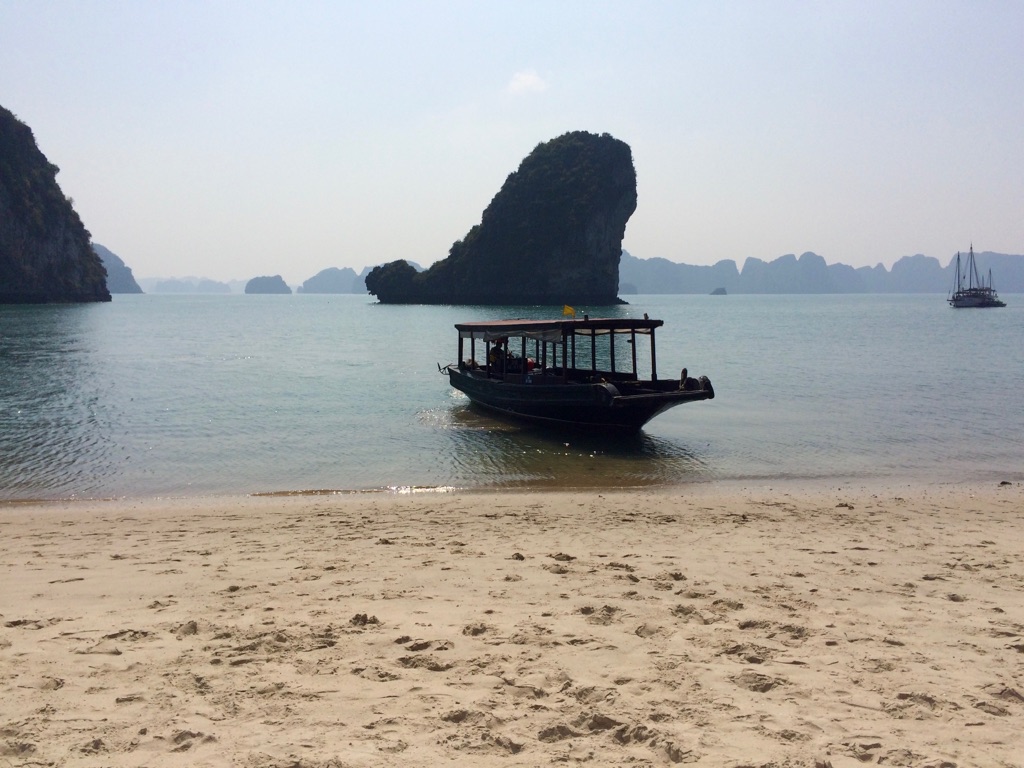
Alas, the crew is back to take us home to the ‘mother’ ship... and for a bit more relaxing on the deck - with beer - before the beautiful sunset!
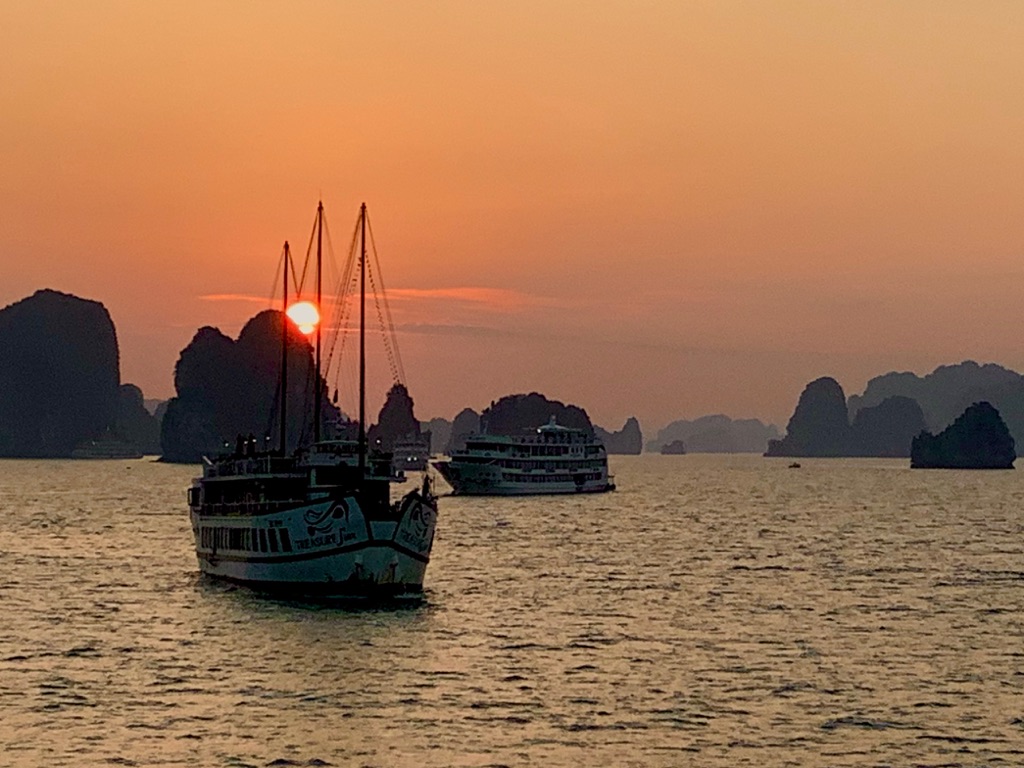
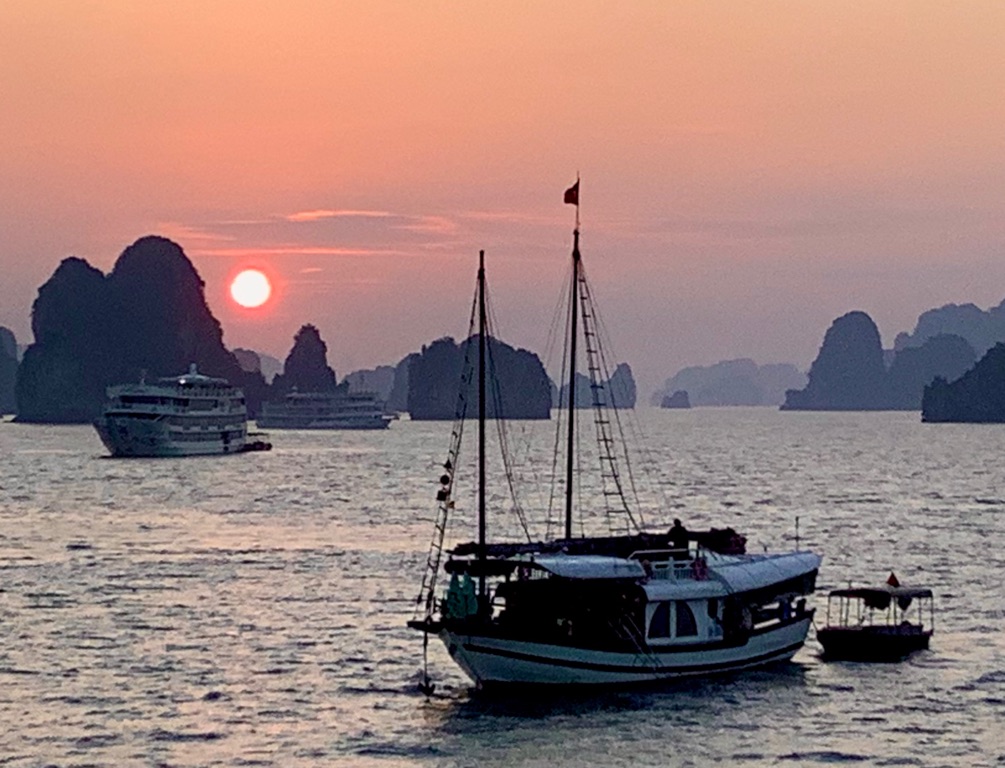
Our dinner companions tonight were Ann and Vic, fellow Canadians from Maple Ridge, B.C. and we shared fabulous food and conversation. One of the best things about travel is the people we meet along the way who share the same memorable experiences and with whom we want to stay in contact.
Once more we repaired to our cabin for a relaxing sleep in this beautiful bay.
Legends, eating and sailing...
Interesting information we learned from our guide about Tu Long Bay:
Ha Long Bay means ‘mother dragon’ - named for a legend where the ‘gods’ sent a dragon to fight off invaders and defend the ancient land of Vietnam. Once defeat was accomplished the mother dragon descended into the bay for ever.
Tu Long Bay means ‘baby dragon’, and is named for the children of the mother dragon. \240The limestone outcrops - which create such beauty in the bay - are called karsts and are estimated, geologically, to be approximately 500 million years old. \240These karsts, according to legend, represent the teeth of the dragons and remain behind to provide walls of defense against future enemies.
Tu Long Bay is not yet as busy with tourism, allows far fewer cruising boats and, as a result, is much quieter and less polluted than Ha Long Bay; but equally beautiful.
There are 1969 karsts in Ha Long and Tu Long Bay. Our guide told us that he remembers the number because it is the year of Ho Chi Minh’s death! And, here I thought I was being clever by connecting it in my memory with the Bryan Adams song!!
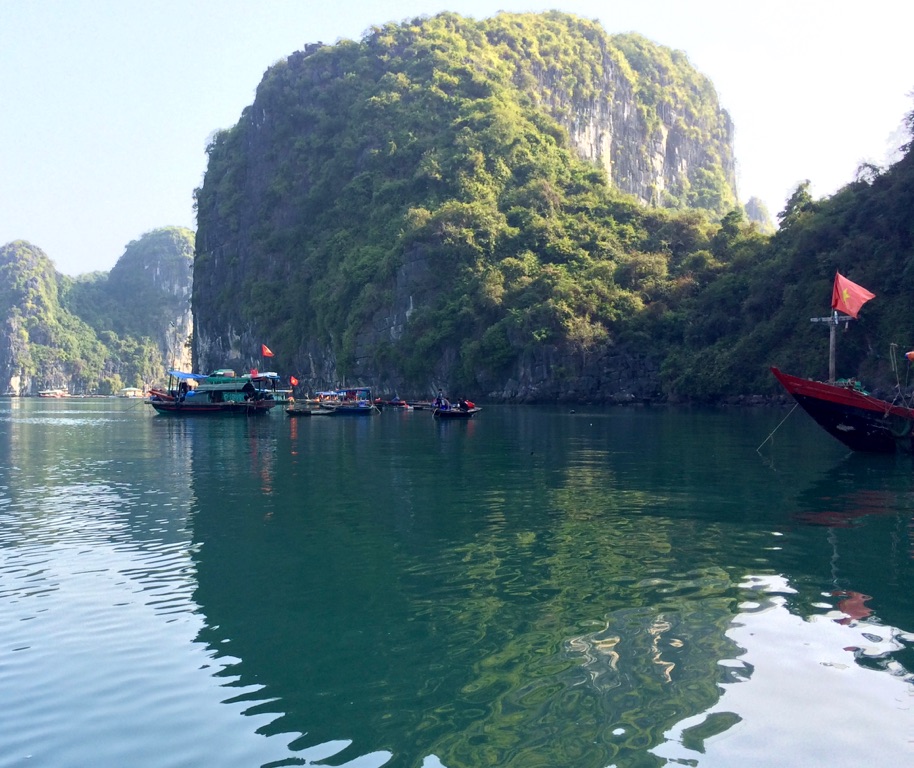
Breakfast served on the deck. \240Wow, we were blessed with perfect weather!
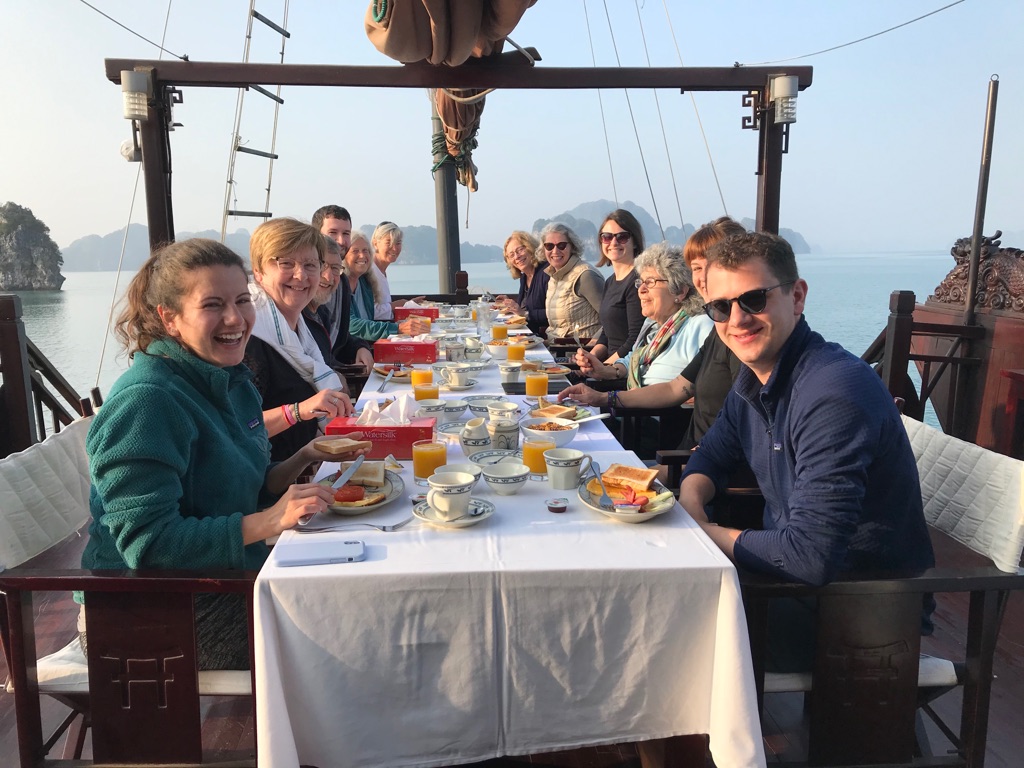
A trip by rowboat to a local fishermen’s village...

No sound, except for the rhythmic slap of the rowboat oars...the oarsmen (oarswomen) were from the fishing village.

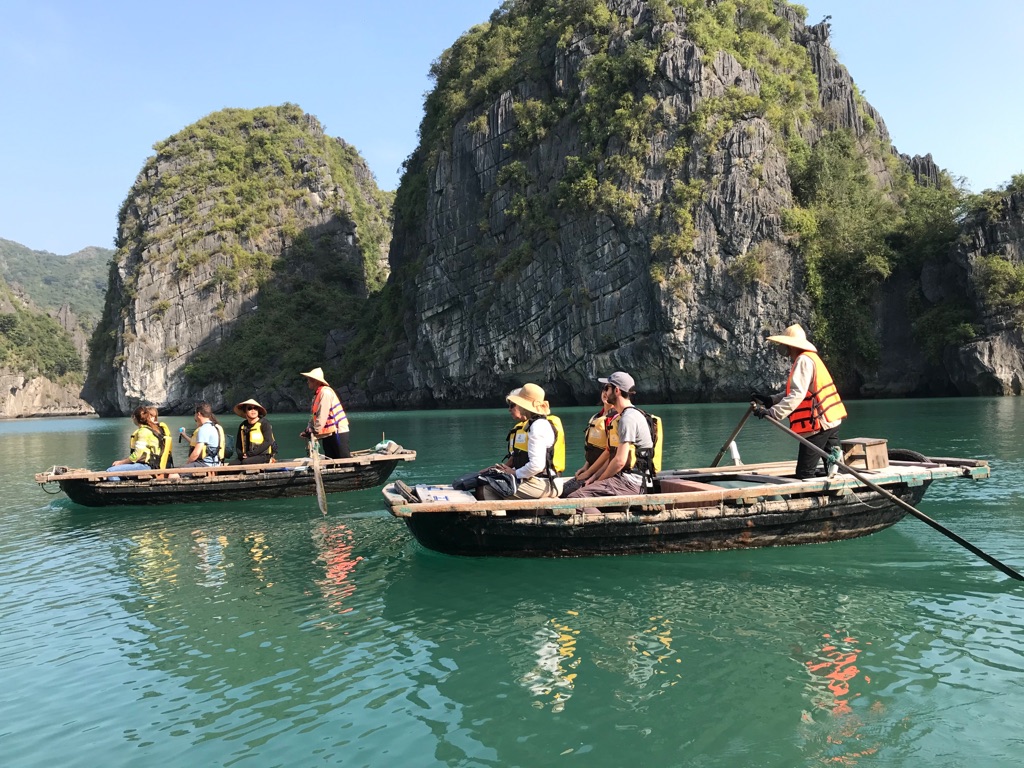
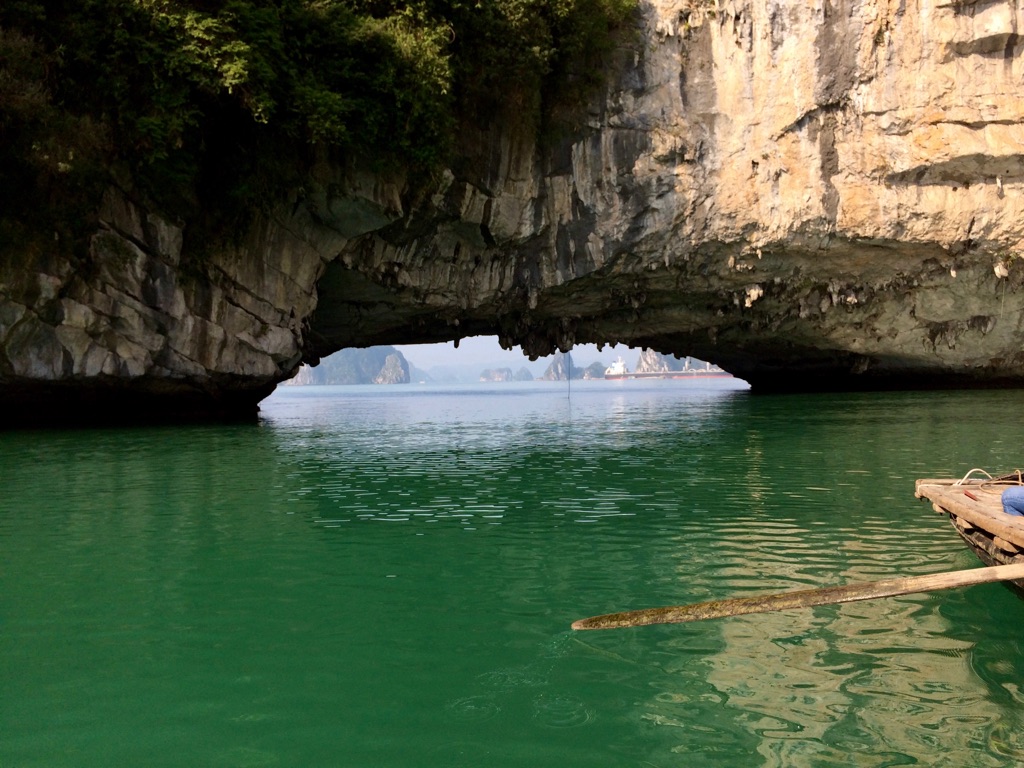
Erosion of limestone over millions of years has created beautiful rock sculptures and archways...
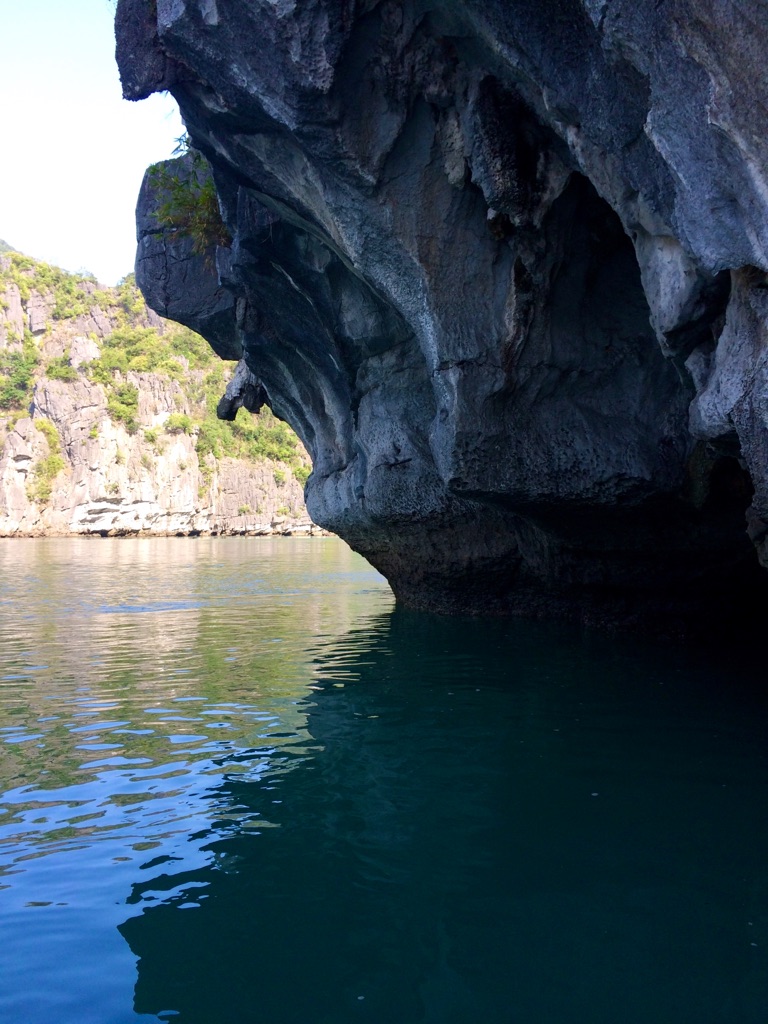
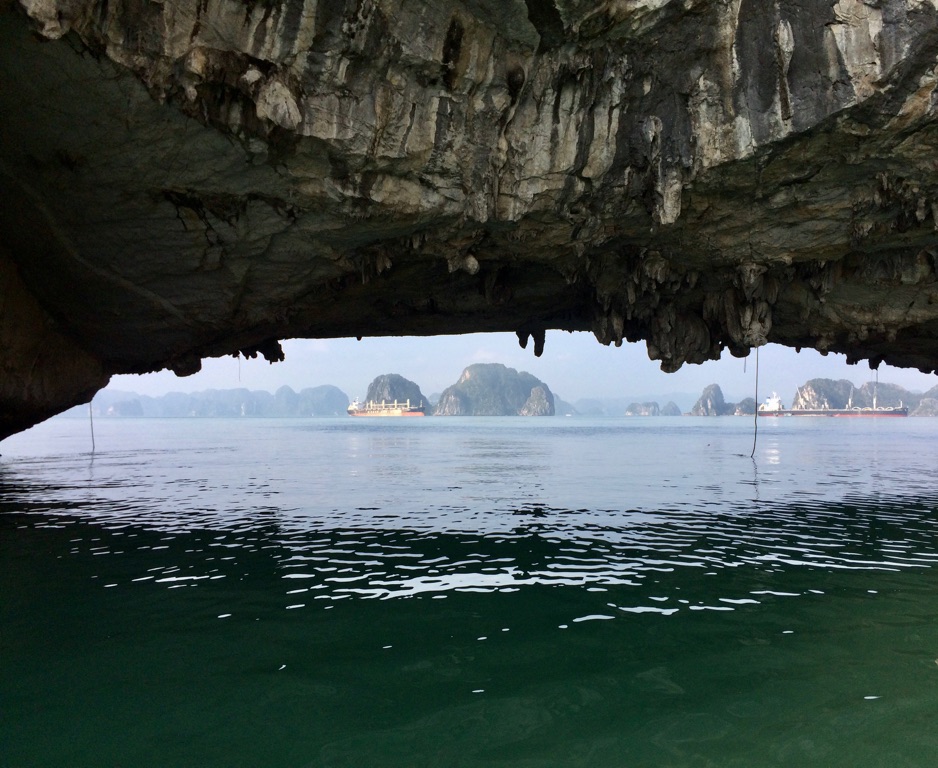
Reluctantly, oh so reluctantly, we said goodbye to the views, our fellow travellers and this lovely journey on Tu Long Bay. \240If I ever have the opportunity to return to Vietnam I will do this again!
A final view of the beautiful shadows and colours of the water and the karsts...
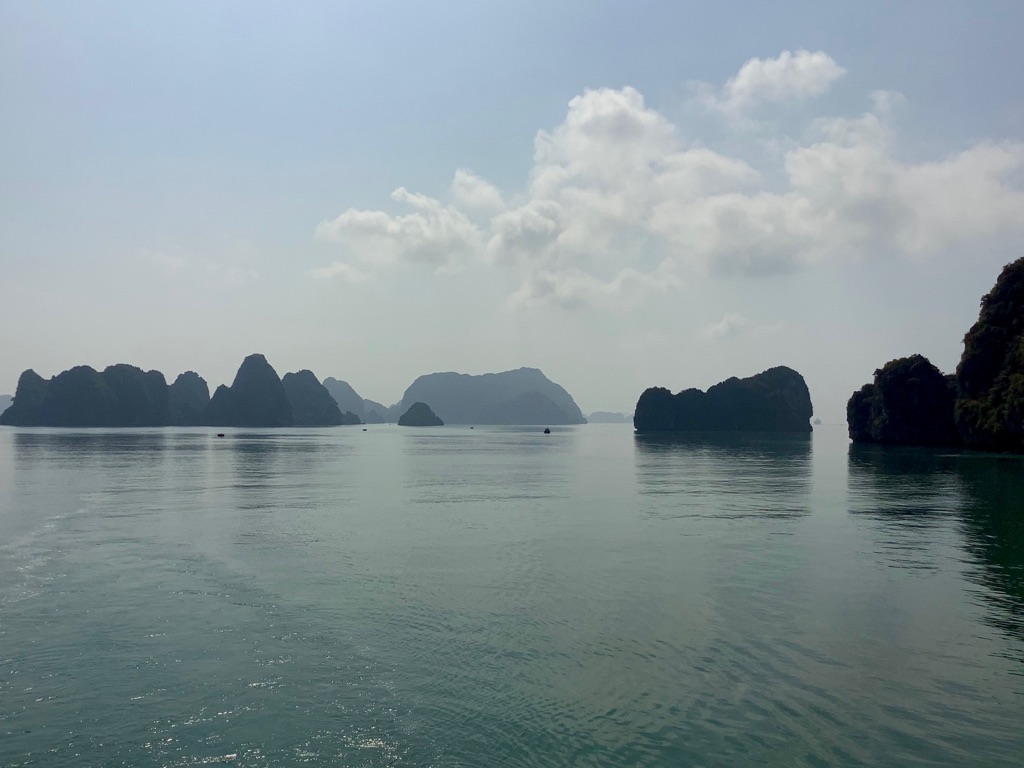
And a last look out...
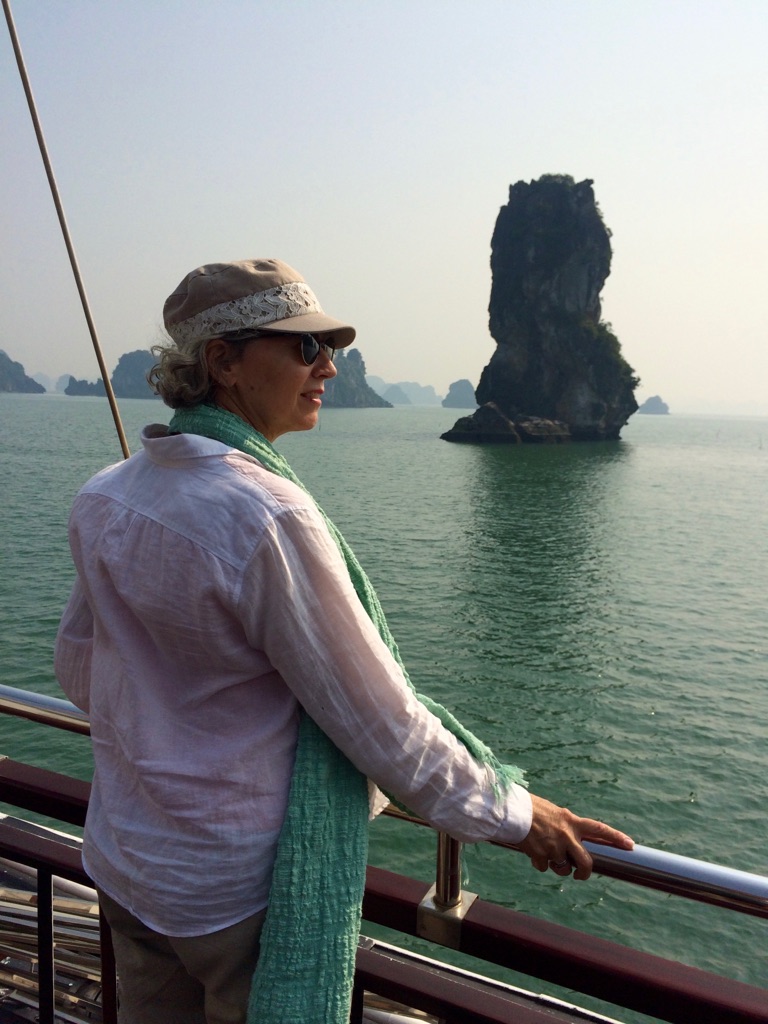
We returned to Hanoi and back to our hotel, La Beaute de Hanoi, for the last leg of our trip.
Hop on-hop off bus touring in Hanoi
Hop on-hop off buses are a brilliant way to gain a bird’s eye view of a city. \240From the top of a bus, and with an English audio guide, we saw the sights, beautiful buildings and, very important for me, we didn’t get lost! \240The bus pass allowed us 48 hours of unlimited riding and enabled us to make a solid plan for places we wanted to visit on foot.
We both loved Hanoi - what a livable city with great atmosphere, quite clean and likely the most interesting city we visited.
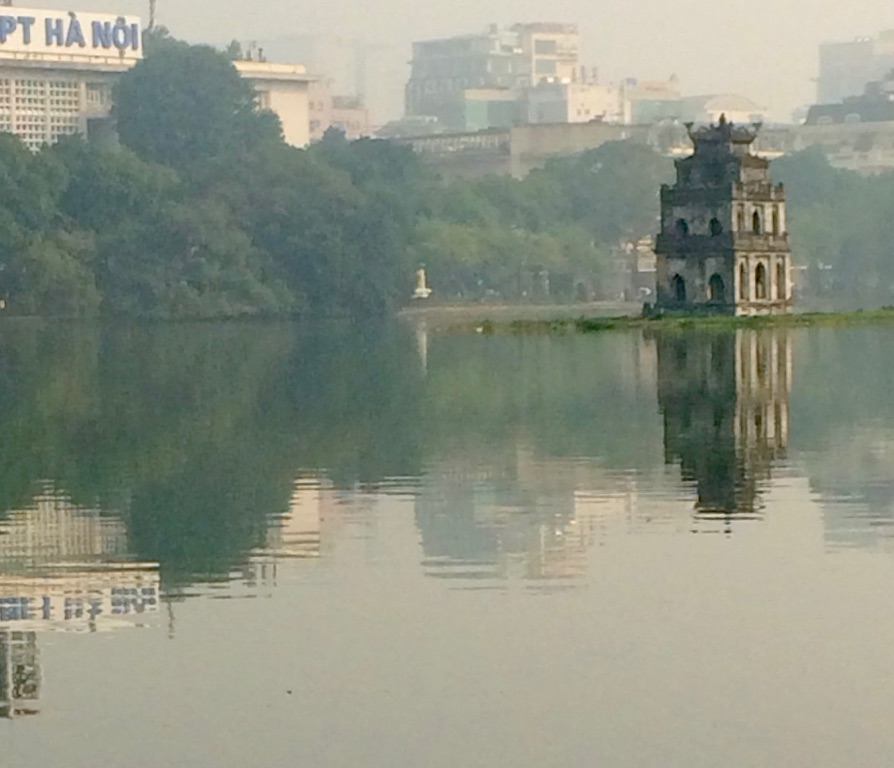

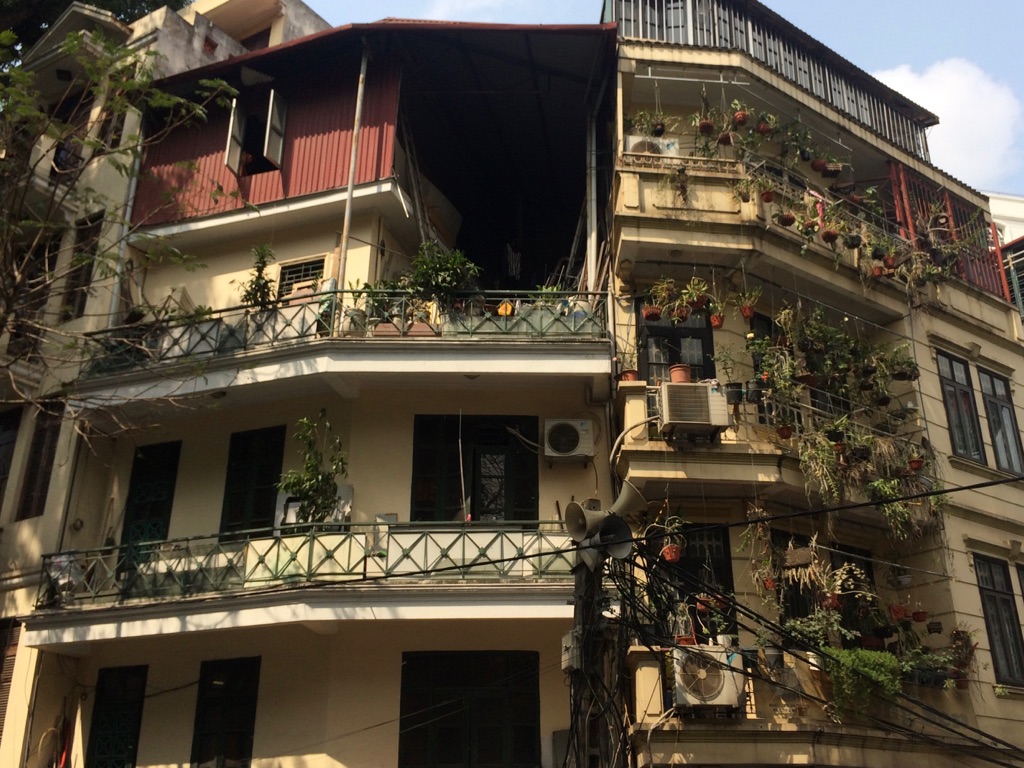
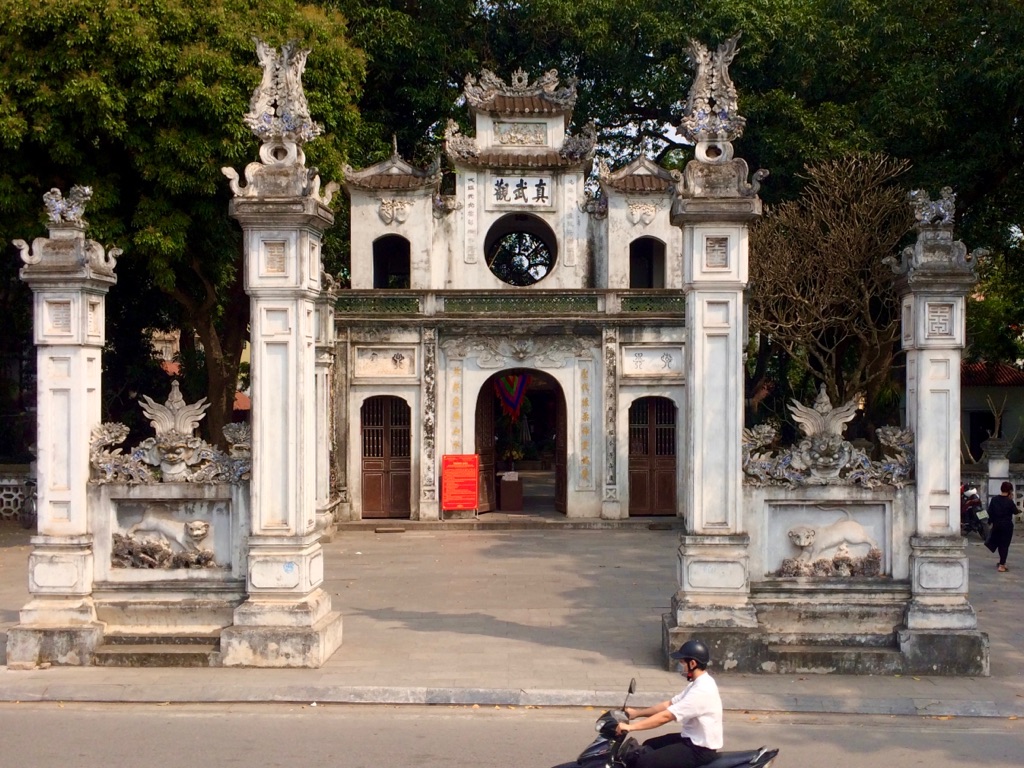
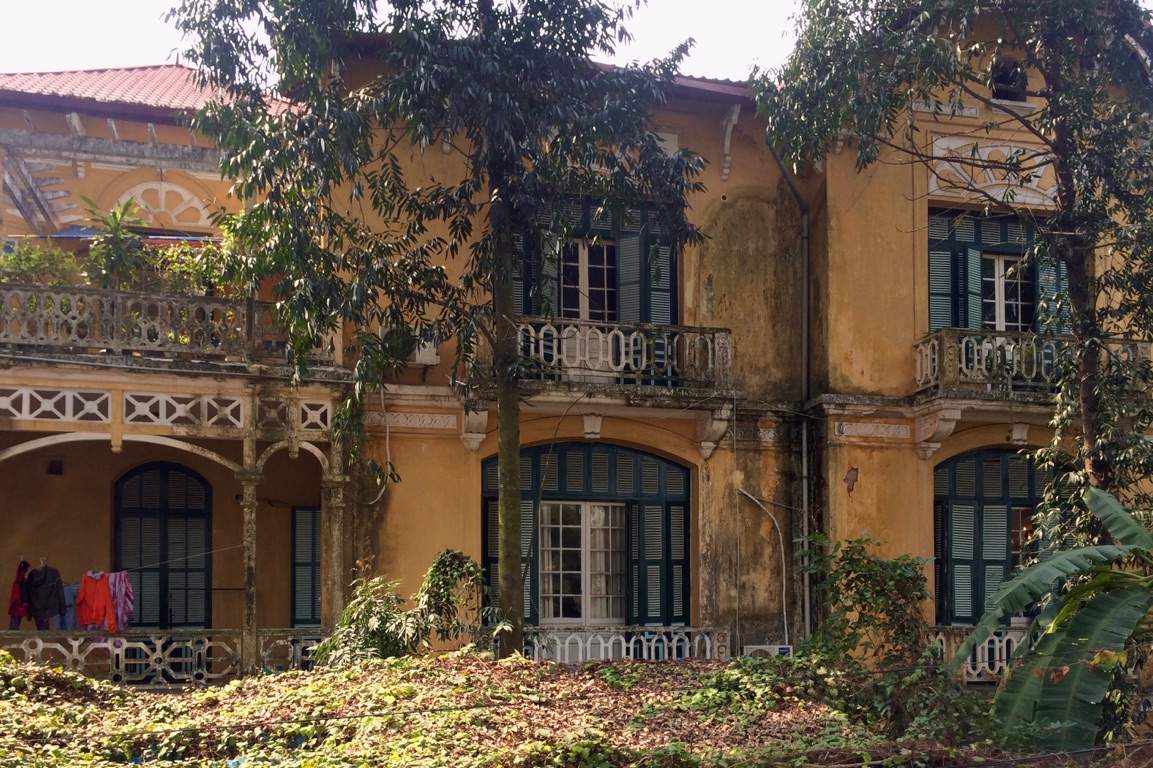
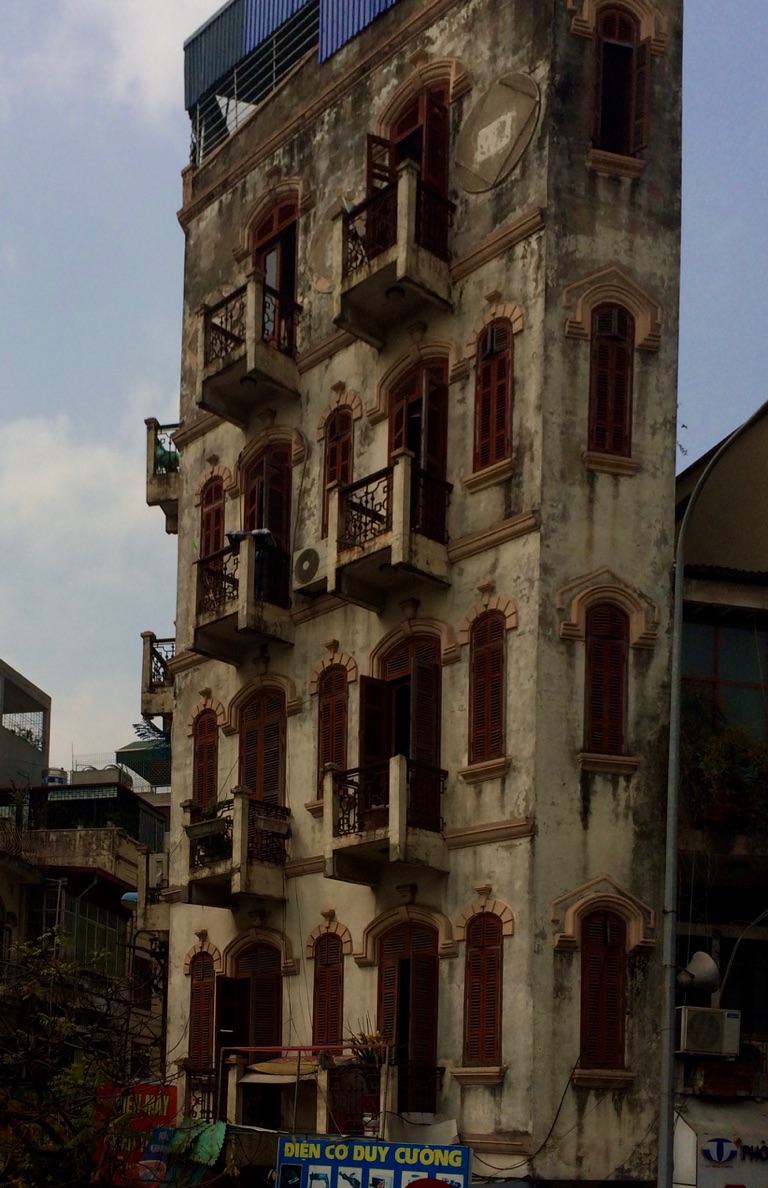
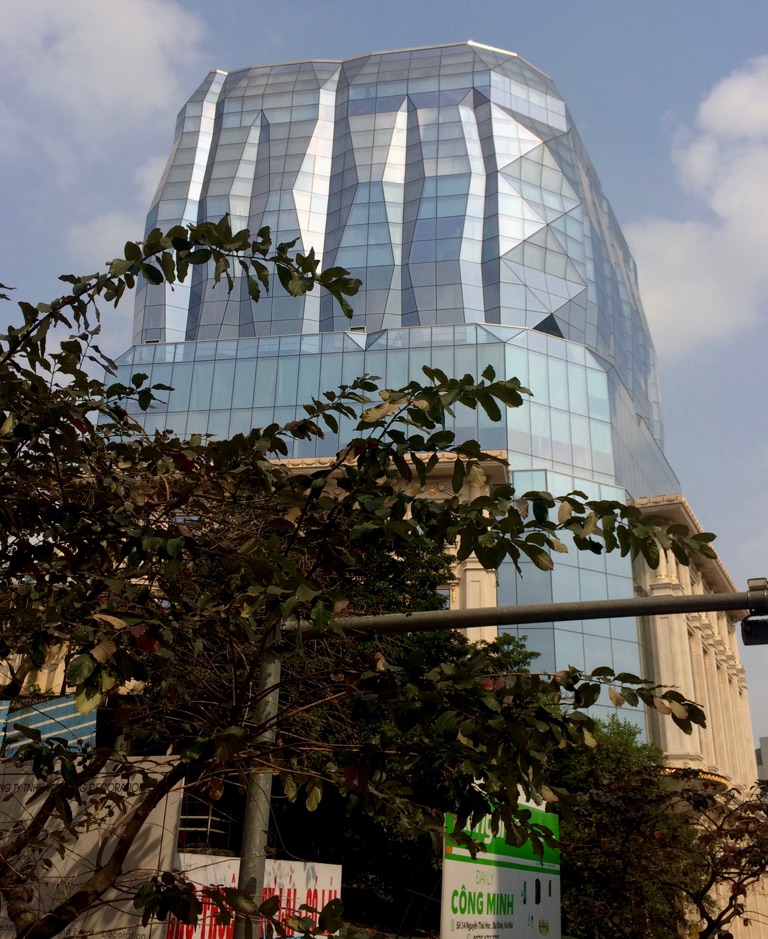
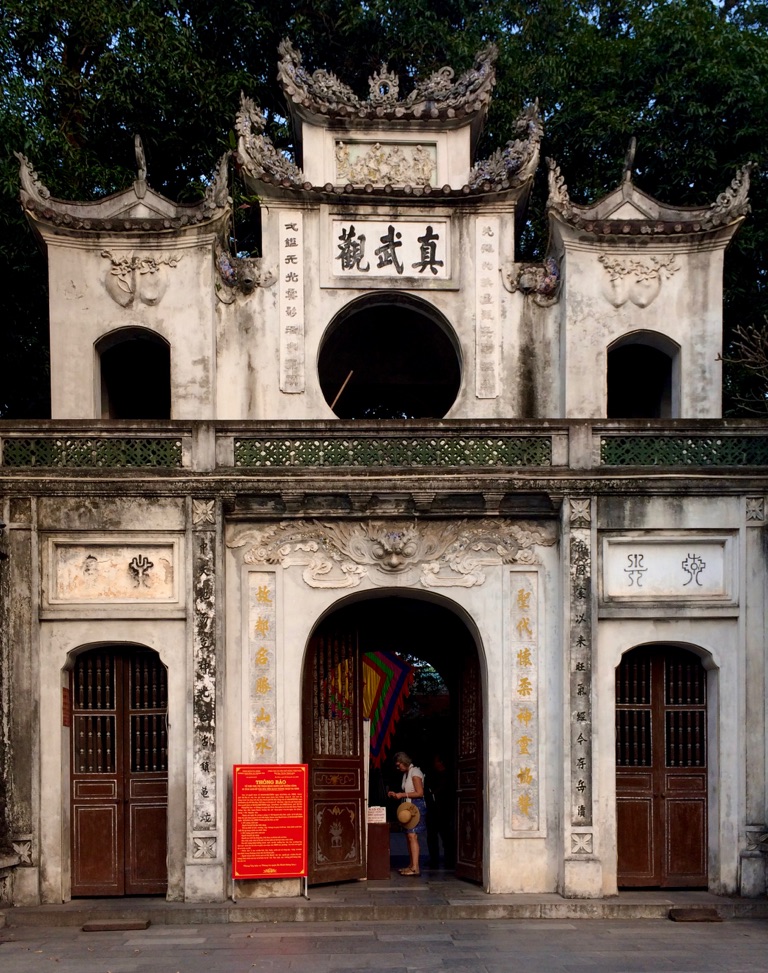

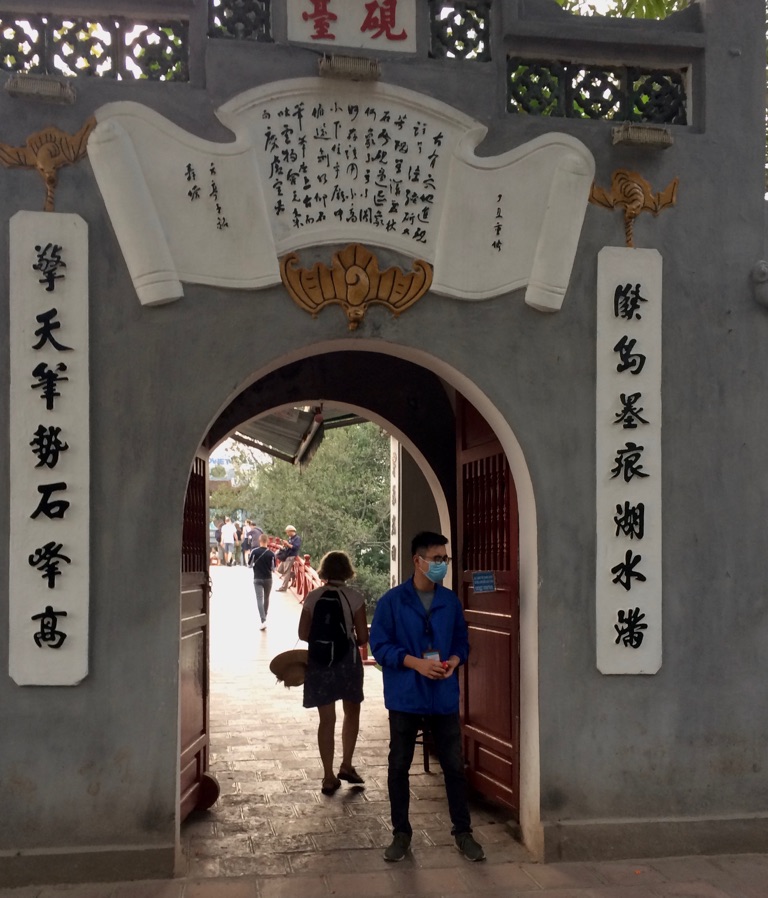
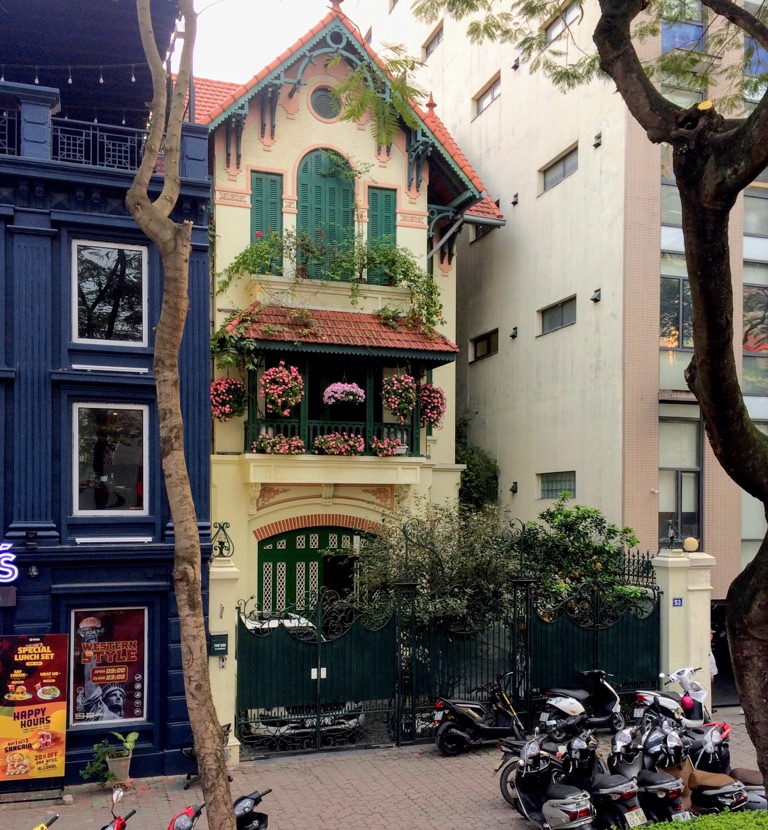
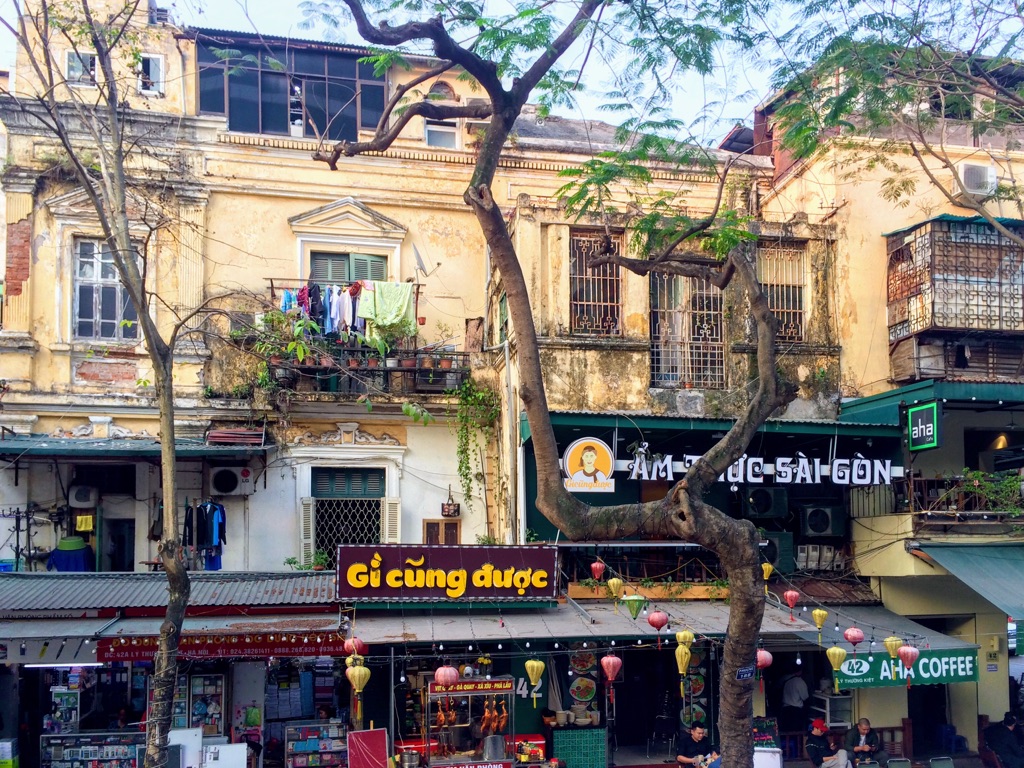
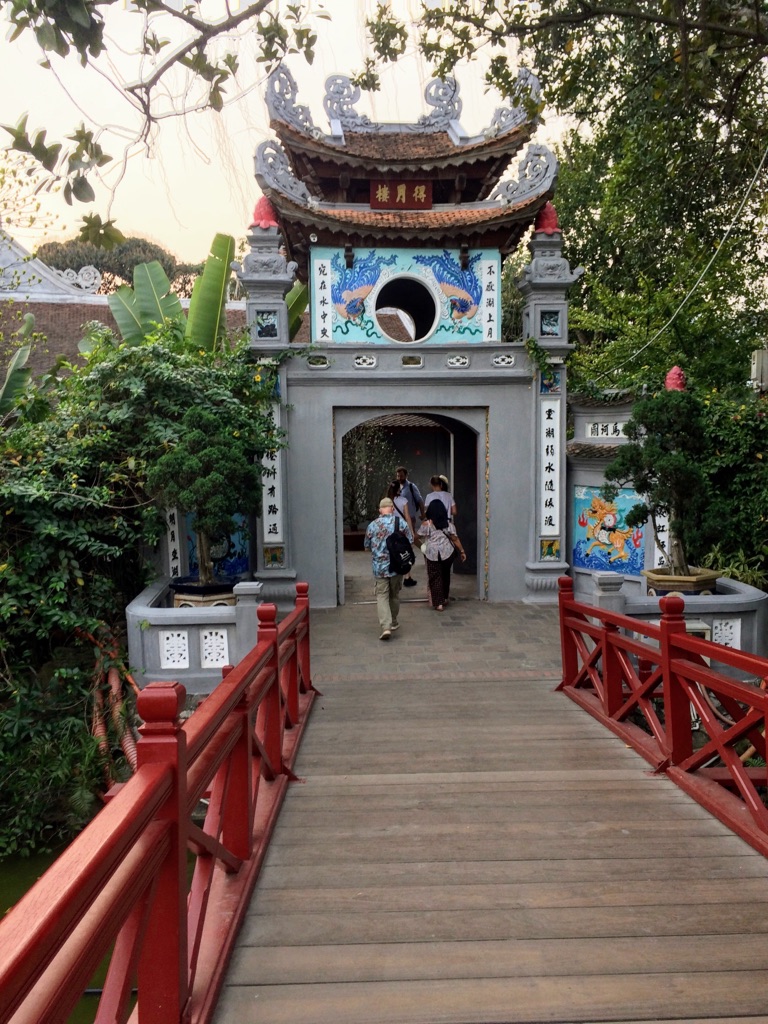
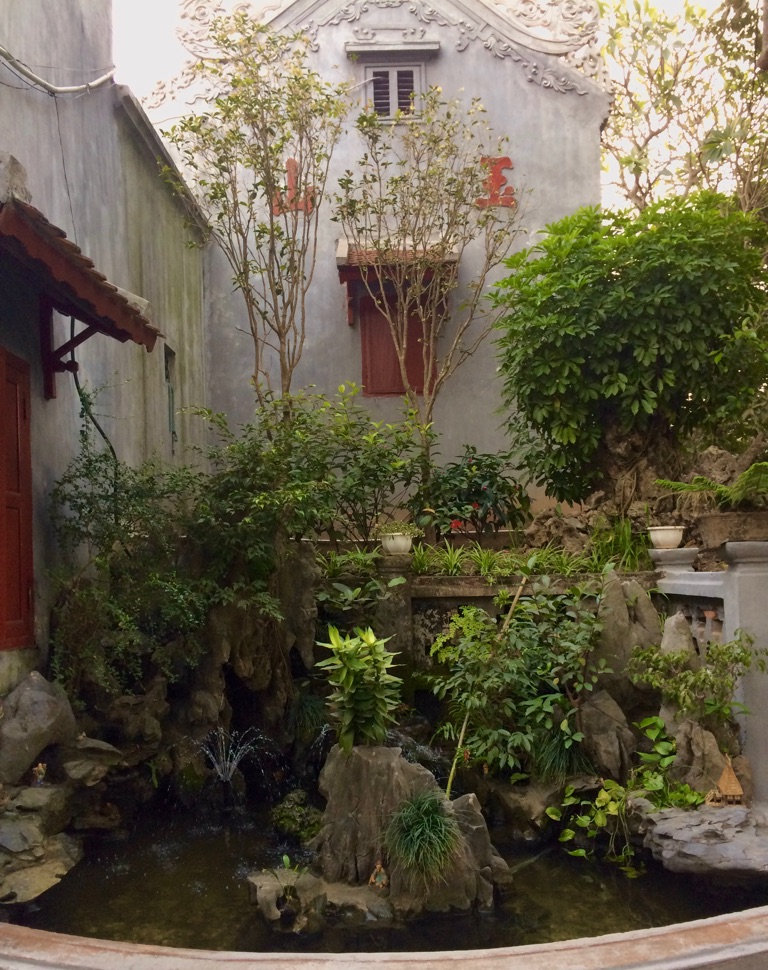
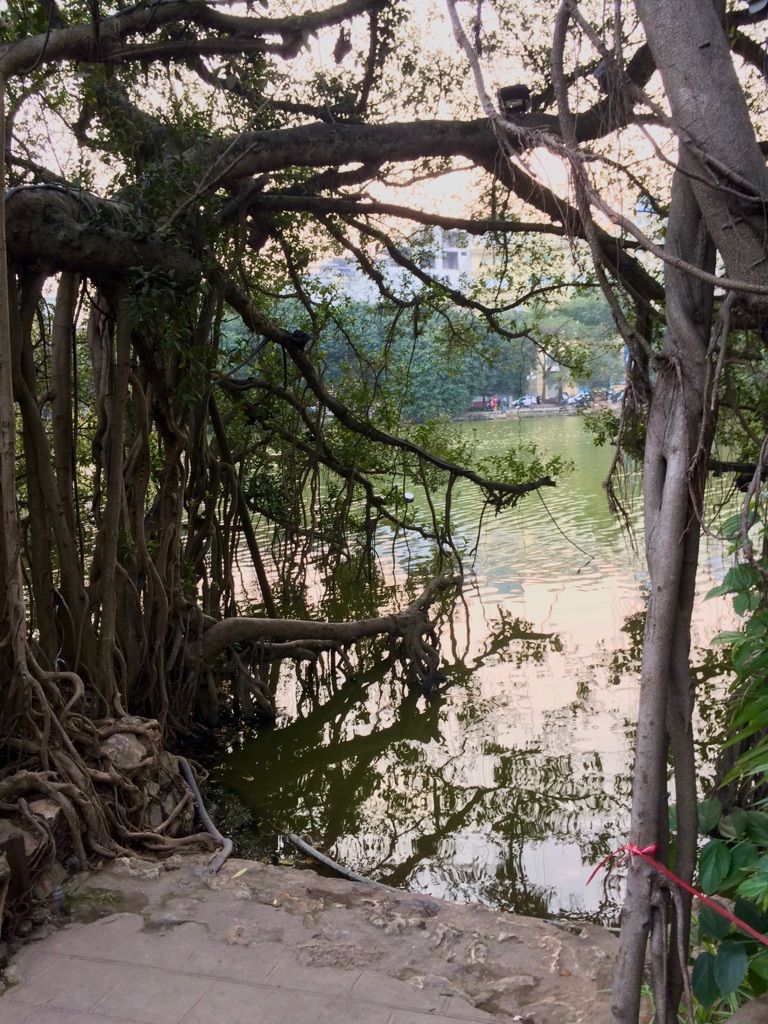

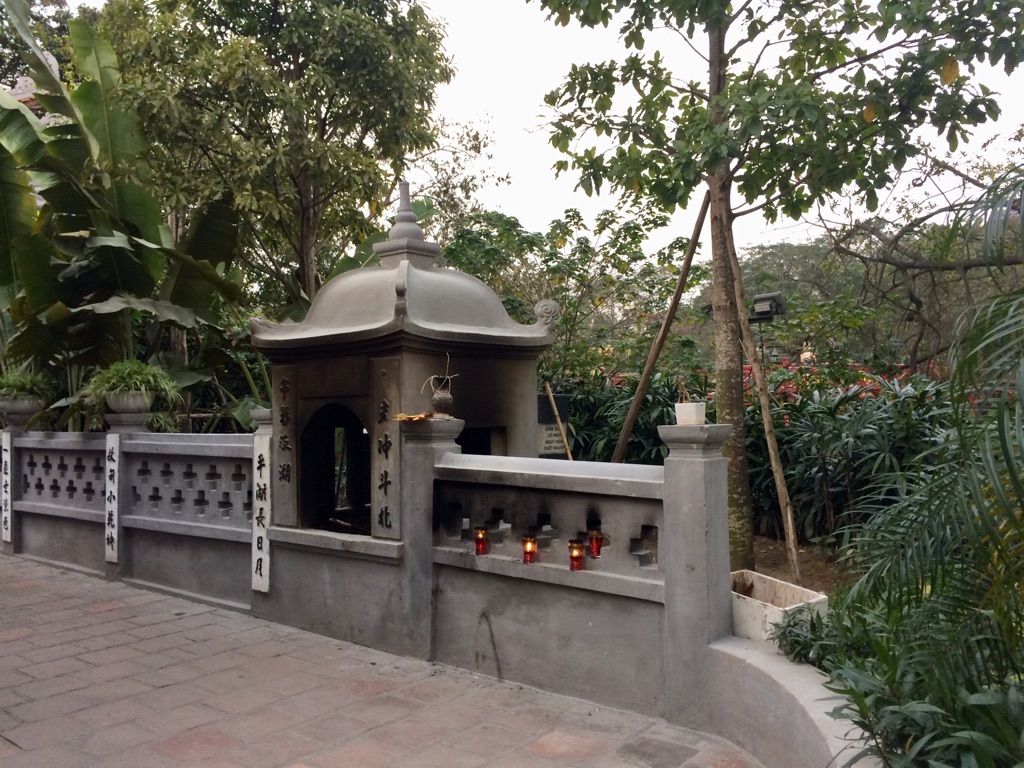
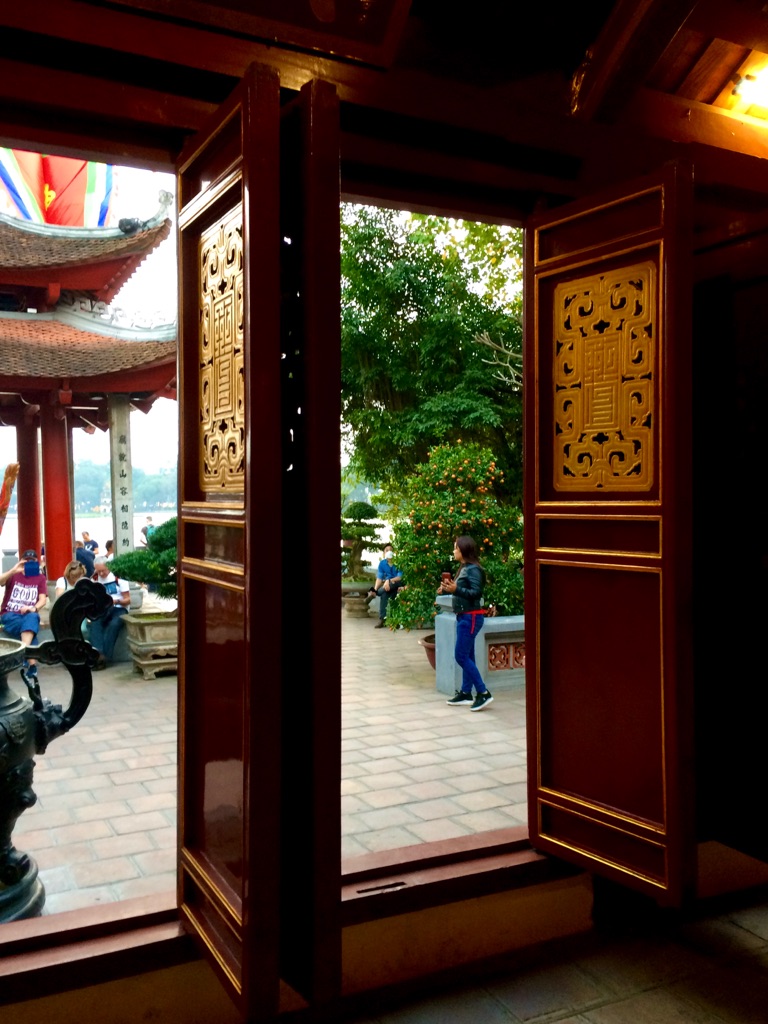
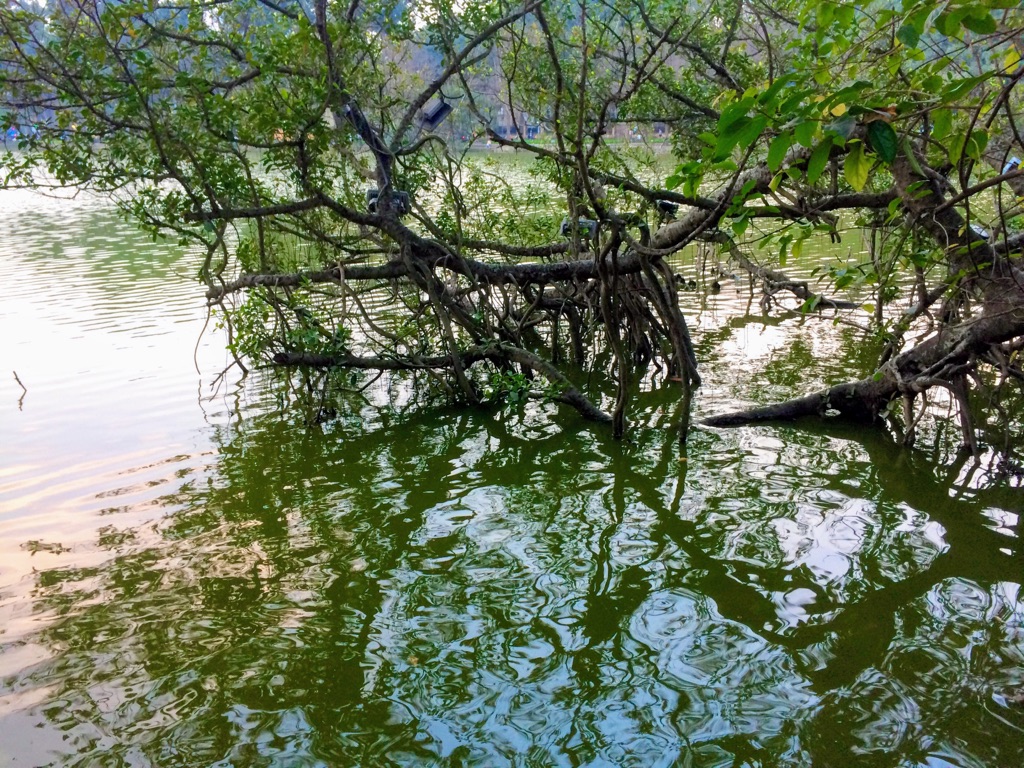
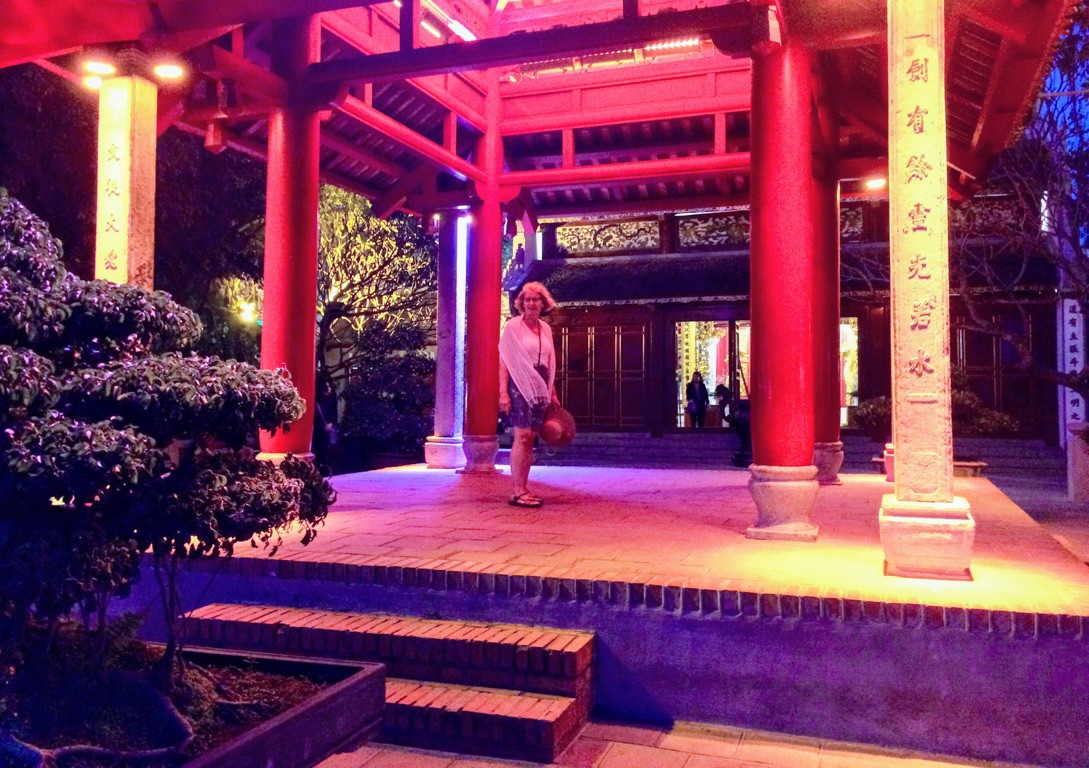
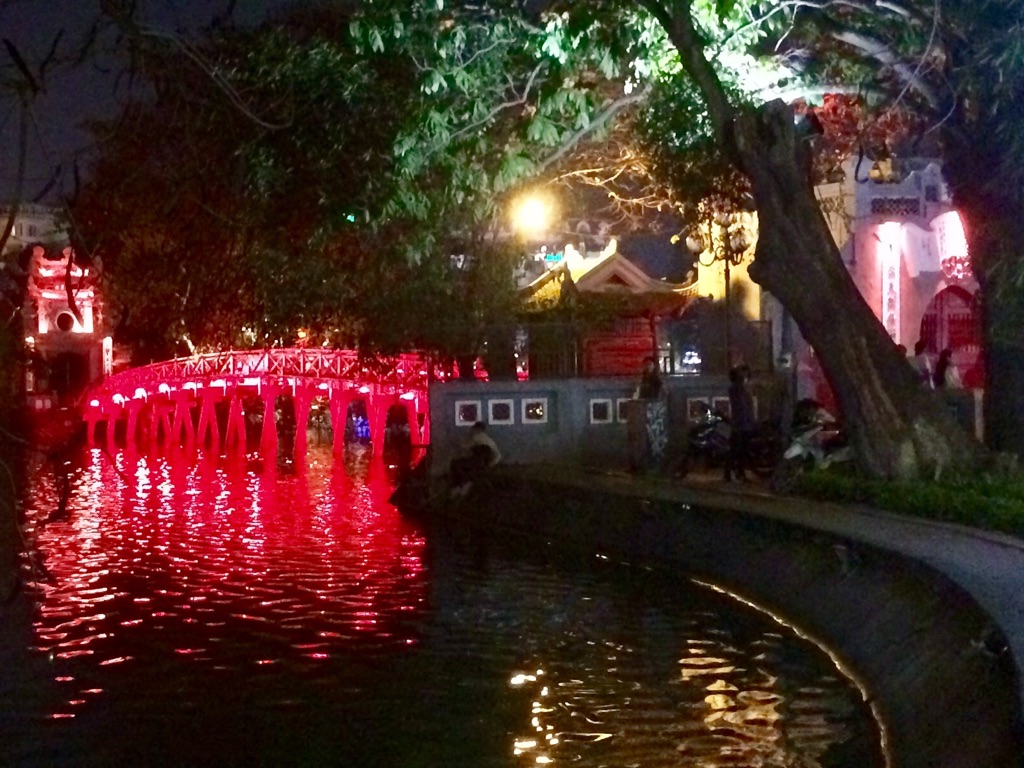
Last day in Vietnam - last day in S.E. Asia
Oh no! \240This is the last day of our holiday.
However, we made the most of it and took another walkabout to see the Hanoi Women’s Museum situated in the old French Quarter of town.
This museum was likely the most enjoyable one of our whole trip and the museum shop was fantastic and, also, proved an effective way to blow our budget on the last full day of vacation.
The museum was divided across 4 floors: the 1st being modern day women’s fashions and the gift shop; the 2nd displayed items, customs and stories of traditional Vietnamese women, such as courtship, betrothal and marriage, childbirth and family; the 3rd floor was the most interesting for us, dedicated to women’s roles during the colonial rebellions and wars with the French and during the American (Vietnam) War; and the 4th floor showcased traditional, historical and ethnic clothing of Vietnam.
Women were on the front-lines during both wars, active in combat, strategic policy-making and medical roles. They were truly impressive. Some were captured, tortured and even executed. We found ourselves completely immersed in the personal stories of these women and in awe of their courage and strength.
Then we discovered the gift shop. One hour later, we emerged, shopping bags in hand.
Next stop was to the balcony at ‘Bancong’ (our favourite restaurant) for an afternoon Saigon beer and, our favourite pastime while in Hanoi, people-watching on the street from our high vantage point. It beats reality television any day of the week! A 2nd Saigon beer became absolutely necessary!
Then, back to the hotel and final organization of packing and repacking - checking and re-checking.
We ended the evening by walking back to the French Quarter for dinner, walking along Hoan Kiem lake, one more time. We stopped at a roller-skating outdoor park, just opposite the lake, where many families with children and young adults were enjoying the warm evening and the public space.
Hanoi is a lovely city, bustling with energy and definitely the large city we have enjoyed the most. It combines, seamlessly, an old colonial style, a sense of history, and a modern sophistication along with traditional Vietnamese culture.
A perfect place to end our fabulous S.E. Asian adventure! It’s been wonderful and a trip of a lifetime. We leave feeling so fortunate to have had the opportunity to see and experience all that we have. I can’t wait, though, to eat decent cheese....
Tomorrow is the long haul - Hanoi to Hong Kong; Hong Kong to Vancouver.
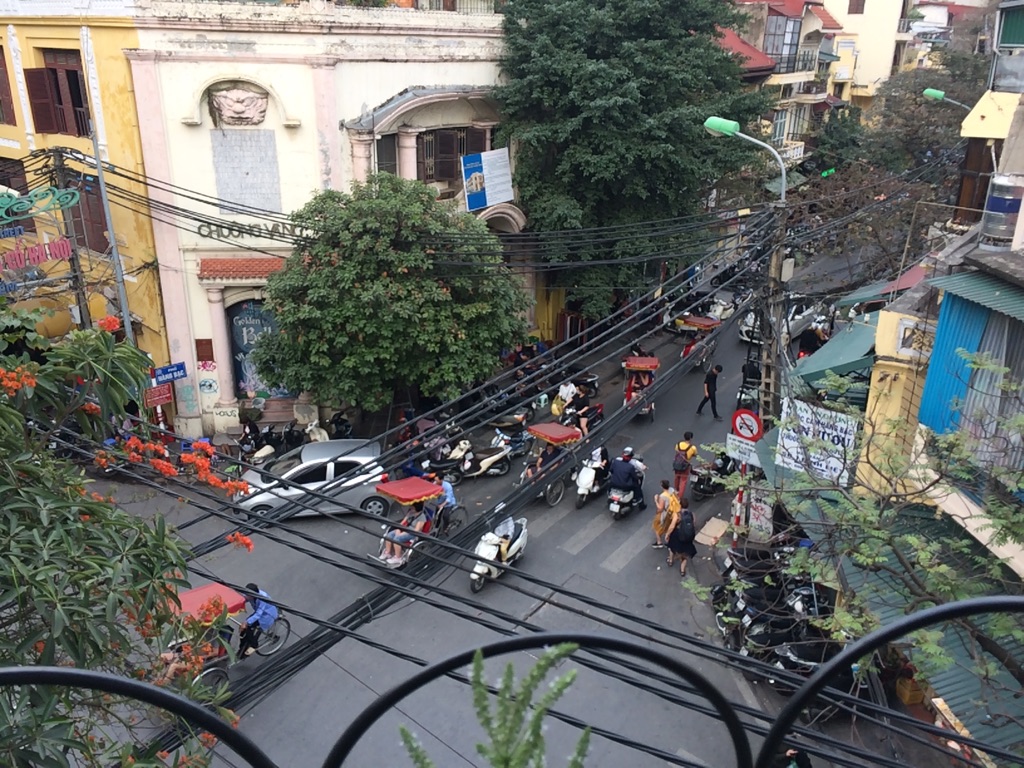
Street scene below from our favourite ‘Bancong’ balcony...
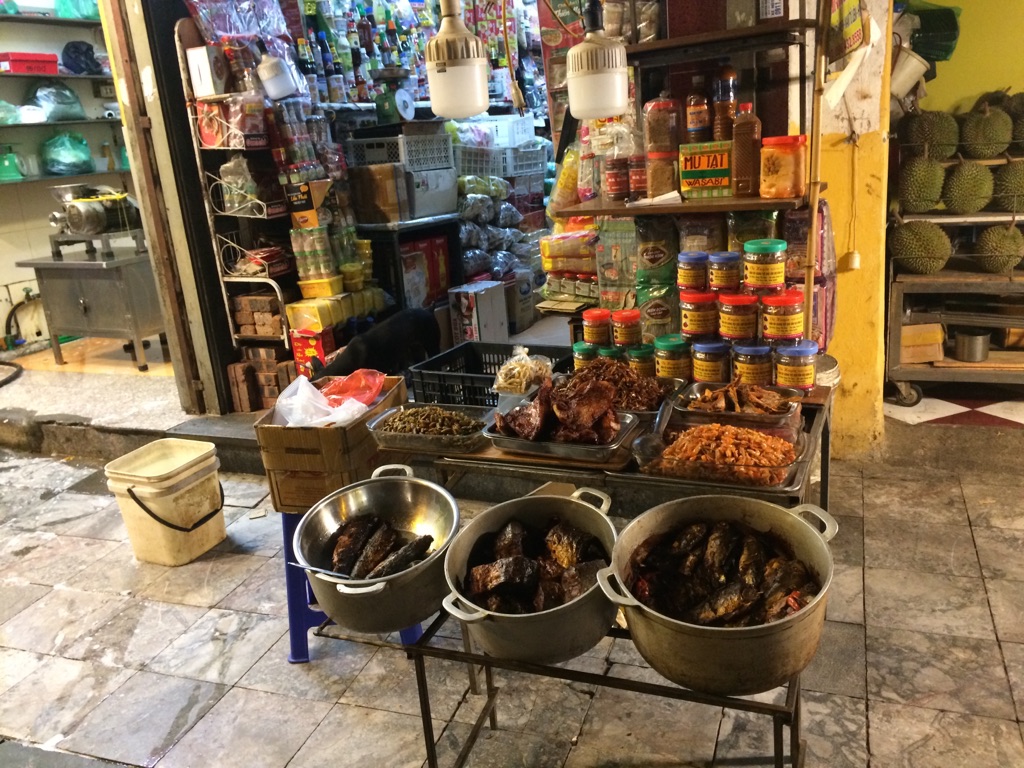
For sale out on the street...

Interesting sights everywhere...
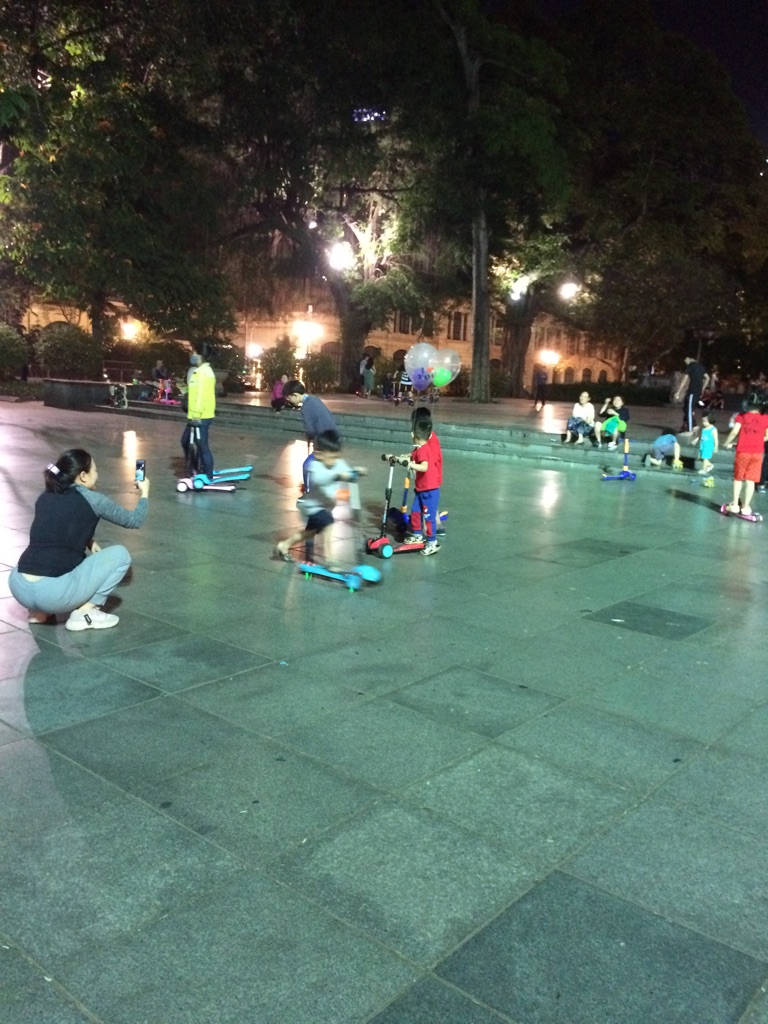
Children playing in the public square at night...
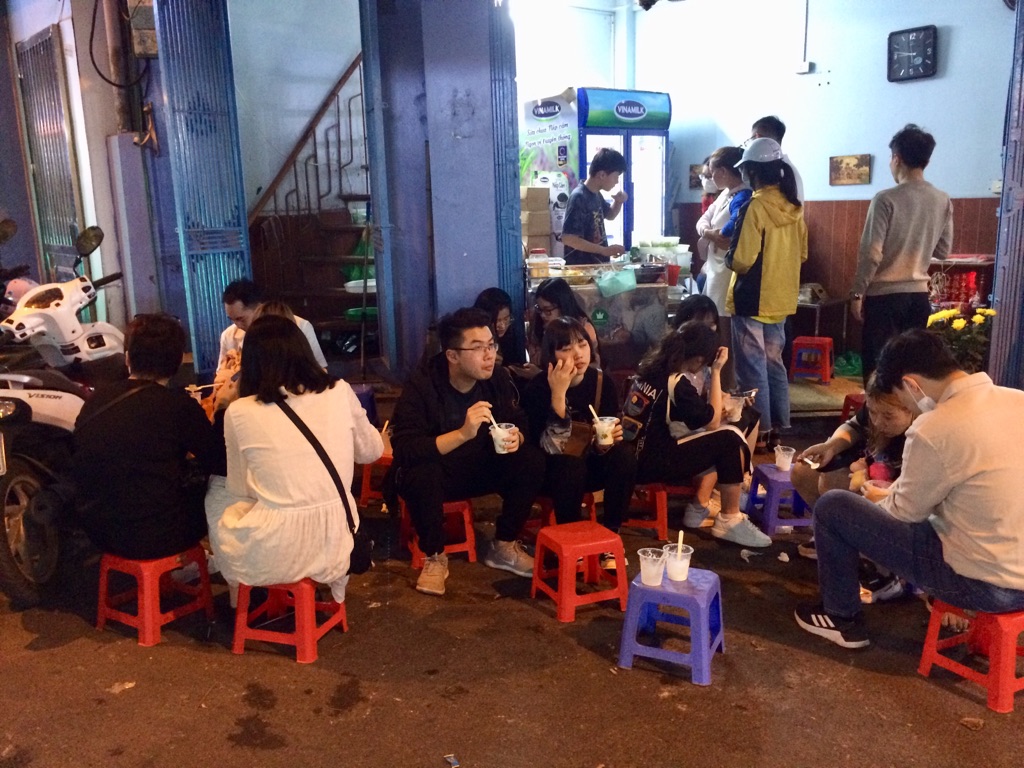
Typical restaurant where the locals eat - few western tourists here...
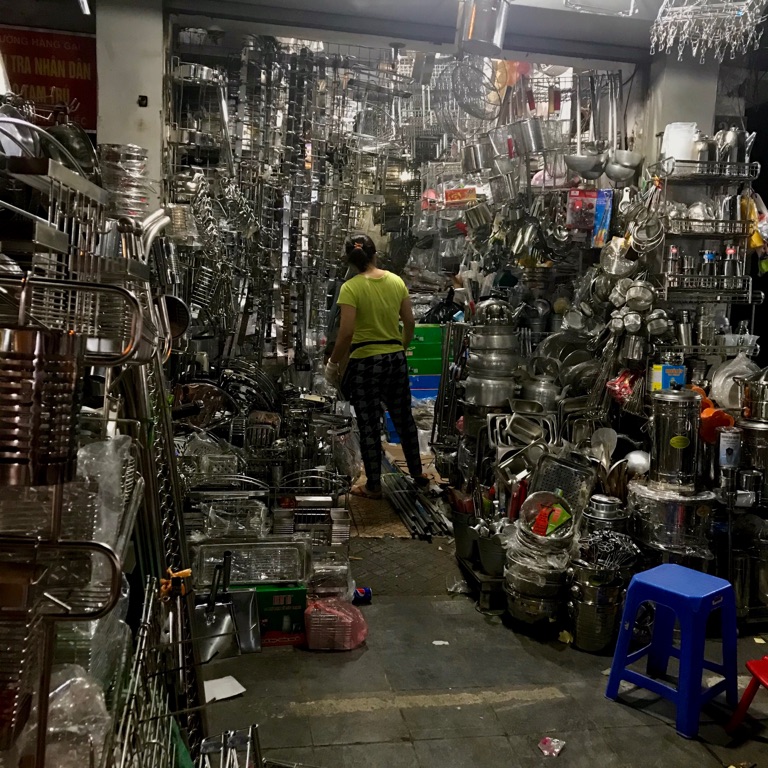
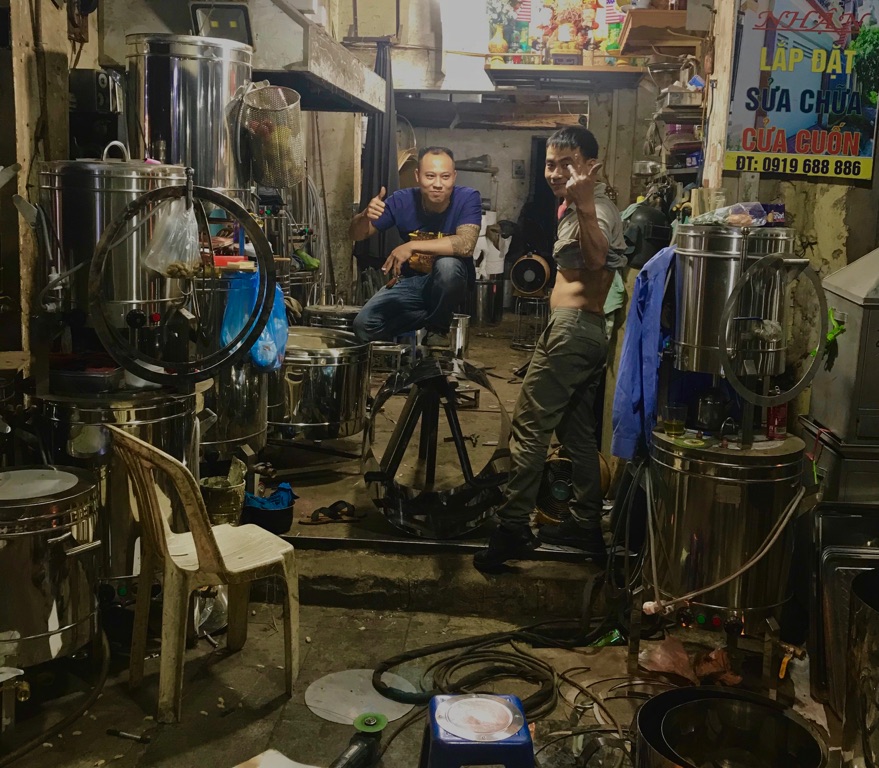
The journey home...
Leaving for the airport this morning, we certainly wondered what the journey back to Canada held in store for us, especially with regards to public health precautions and the Coronavirus. \240Surprisingly, all was smooth going. The flight from Hanoi to Hong Kong was on time - and \240border control in Hong Kong was easy, streamlined and more straightforward as one of the two terminals has been closed to accommodate health measures. \240Few restaurants were open in the terminal and they were certainly not busy. Apparently, 80% of Cathay Pacific flights have been grounded due to border closures and fears about spread of the virus.
But, now, here we are - on the flight from Hong Kong to Vancouver; 11 hours of travel - and I still feel wonder about the ability to transport people half-way across the world to a different dimension and reality. A “beam me up Scotty” moment!
We might as well just enjoy it.

For the next 9 days I am in Vancouver, to visit my family and to recover from jet lag.
And, then, back to ‘normal’ life again...until the next time...
A quintessential memory of our S.E. Asia journey...

Back to Winnipeg (via 9 days in Vancouver) after 95 days of the most fantastic experiences in South-East Asia. \240A rude awakening to see that winter is still very much present.
We were so fortunate with timing - 10 days later and we would have had serious problems with return flights. So, we are definitely thankful to be back and to have been able to complete our journey as planned. \240But...at least fifty percent of me is still half-way round the world seeing, in my minds’s eye, all the sights, smells, sensations and people...
A summary of our best, worst and most memorable:
We experienced 18 air flights, 30 hotel rooms; a myriad of local buses, tour buses and mini buses; multiple cars with drivers; metro trains; motorized and bicycle tuk tuks; boats, a tour ship, a lot of walking and road bikes. NO motorcycles or scooters!!!
Most ‘interesting sleep’? \240Without a doubt, the monastery at the top of a mountain in Myanmar.
‘Worst’ hotel? \240Without a doubt, the homestay in Dalat.
Best hotels? We stayed in really lovely places with wonderful staff but the most memorable for me are the Blue Vanda Hotel in Inle Lake, Myanmar; the M Hotel in Chiang Mai, Thailand; the Night Hotel in Siem Reap, Cambodia and the Eco Hotel in Da Nang, Vietnam. And I must mention the Alba Spa Hotel in Hue - our most luxurious and pampering stay.
Scariest flight? Khmer Airlines from Phnom Penh to Ho Chi Minh City.
We visited 5 countries with 4 visa permits and negotiated 6 currencies - US dollar; Thai Baht; Myanmar Kyat; Laotian Kip; Cambodian Riel and Vietnamese Dong.
Between us, we lost a few items along the way: notably a credit card, a fitness tracker and various items of clothing. We stayed healthy, despite threats of COVID-19, but did experience minor colds and successive traumas to the same toe (me) and back and knee strain (Kate).
Most memorable experiences? \240In no particular order: riding in a tuk tuk; crossing streets anywhere in Vietnam; archeological sites of Angkor Wat; the ‘Killing Fields’ museums in Phnom Penh; sailing on Baie Tu Long Bay, Vietnam; boating down the Mekong River in Laos; walking along China Beach in Da Nang; eating pizza at ‘Good Morning Vietnam’ in Hoi An; Thai massages everywhere (particularly at the Women’s prison in Thailand); the Women’s museum in Hanoi and the entire 2-week tour of Myanmar. And, yes, I will always remember the border control guard in Siem Reap, Cambodia - the only nasty person I met during the entire trip (Kate phrases this as “he was having a bad day”!).
How much shopping did we do? \240We’ll never tell!
Above all, what made the trip so memorable were the people we met - fellow travellers with whom we want to stay in touch, and the wonderful people we met every day, hotel staff with their smiling faces who so wanted to practice their English language skills, the people on the street, in restaurants, in shops - just everywhere!
What would we do differently? \240Nothing. \240We would do it all again in a heart beat!
Where shall we go next...